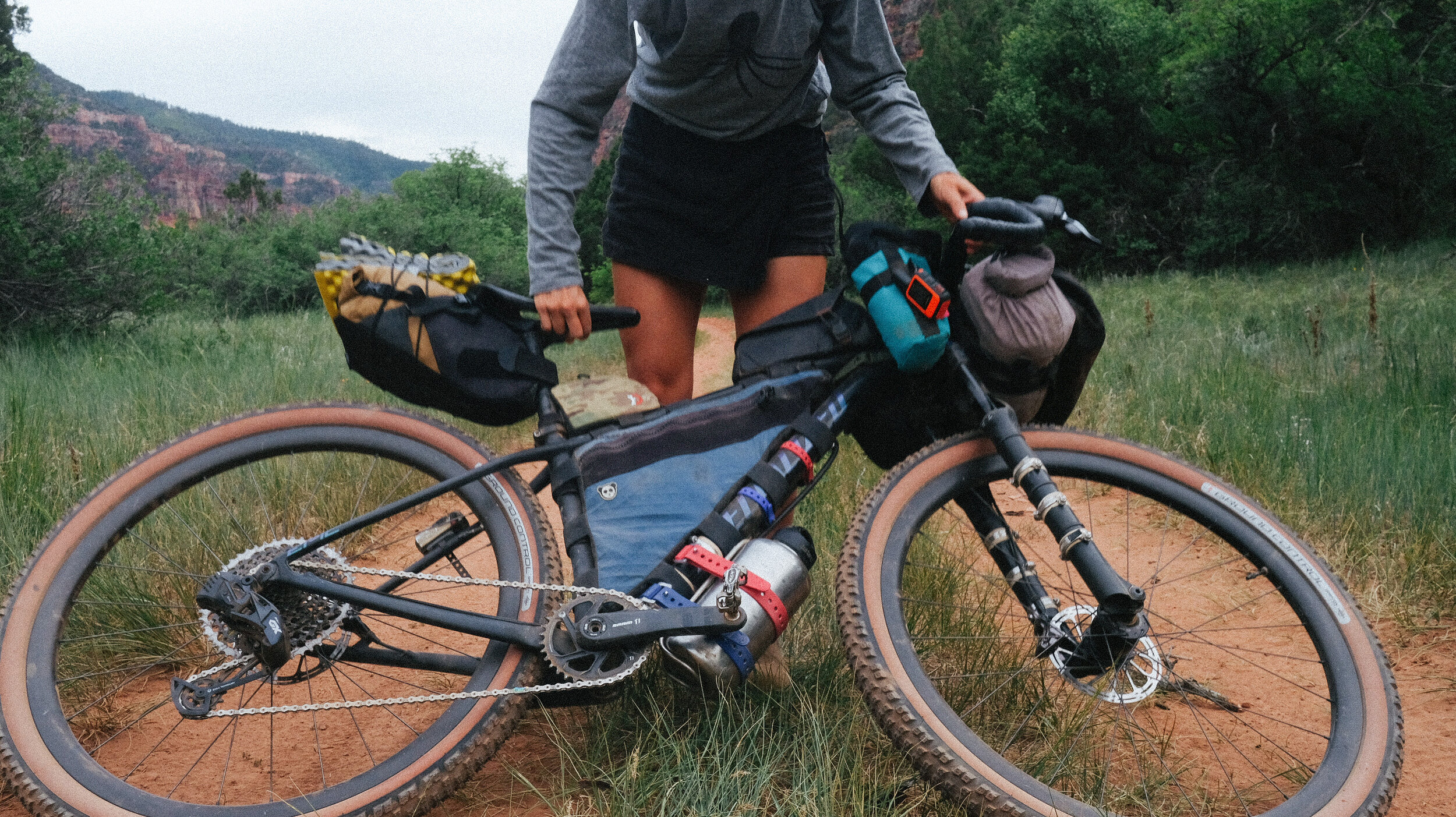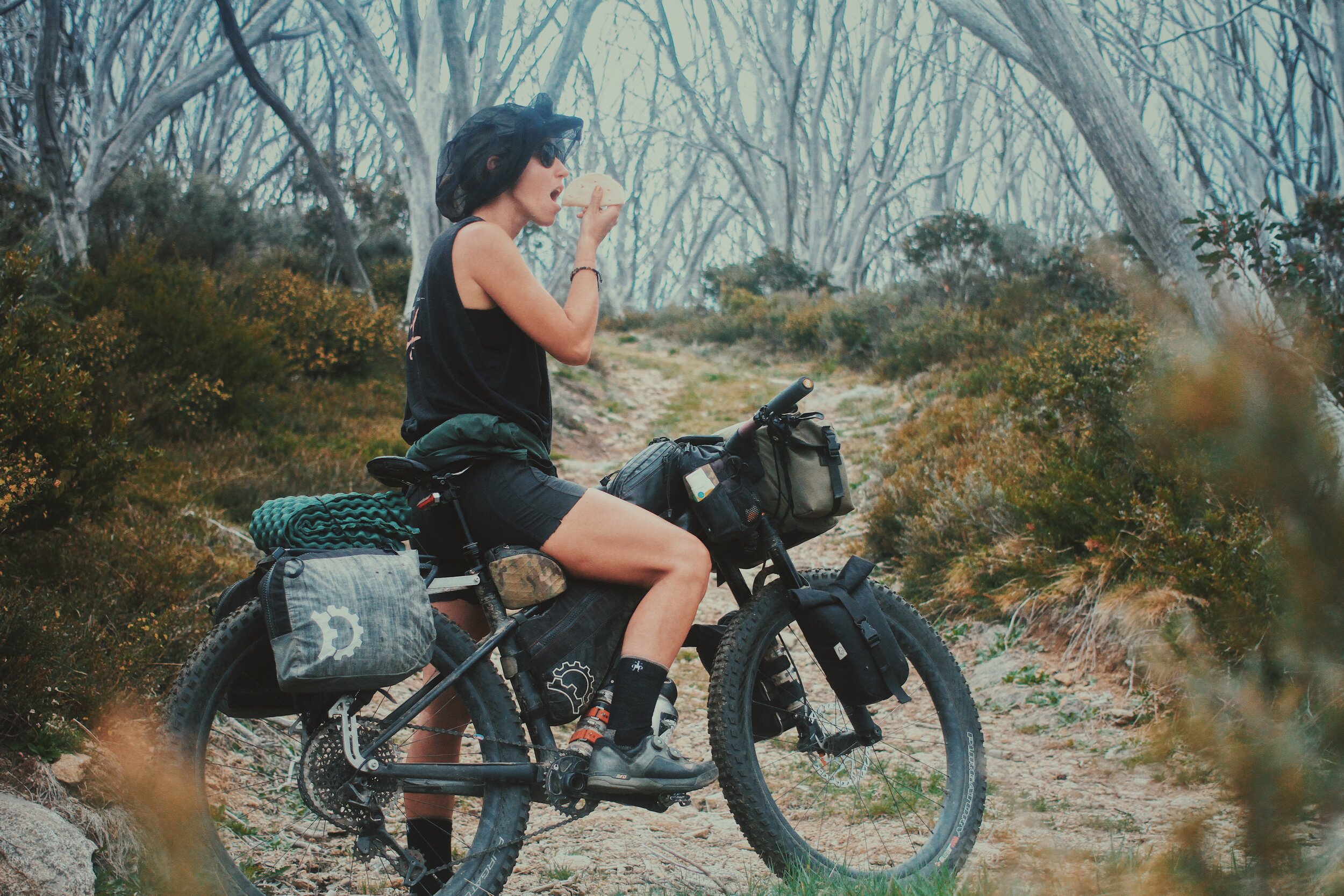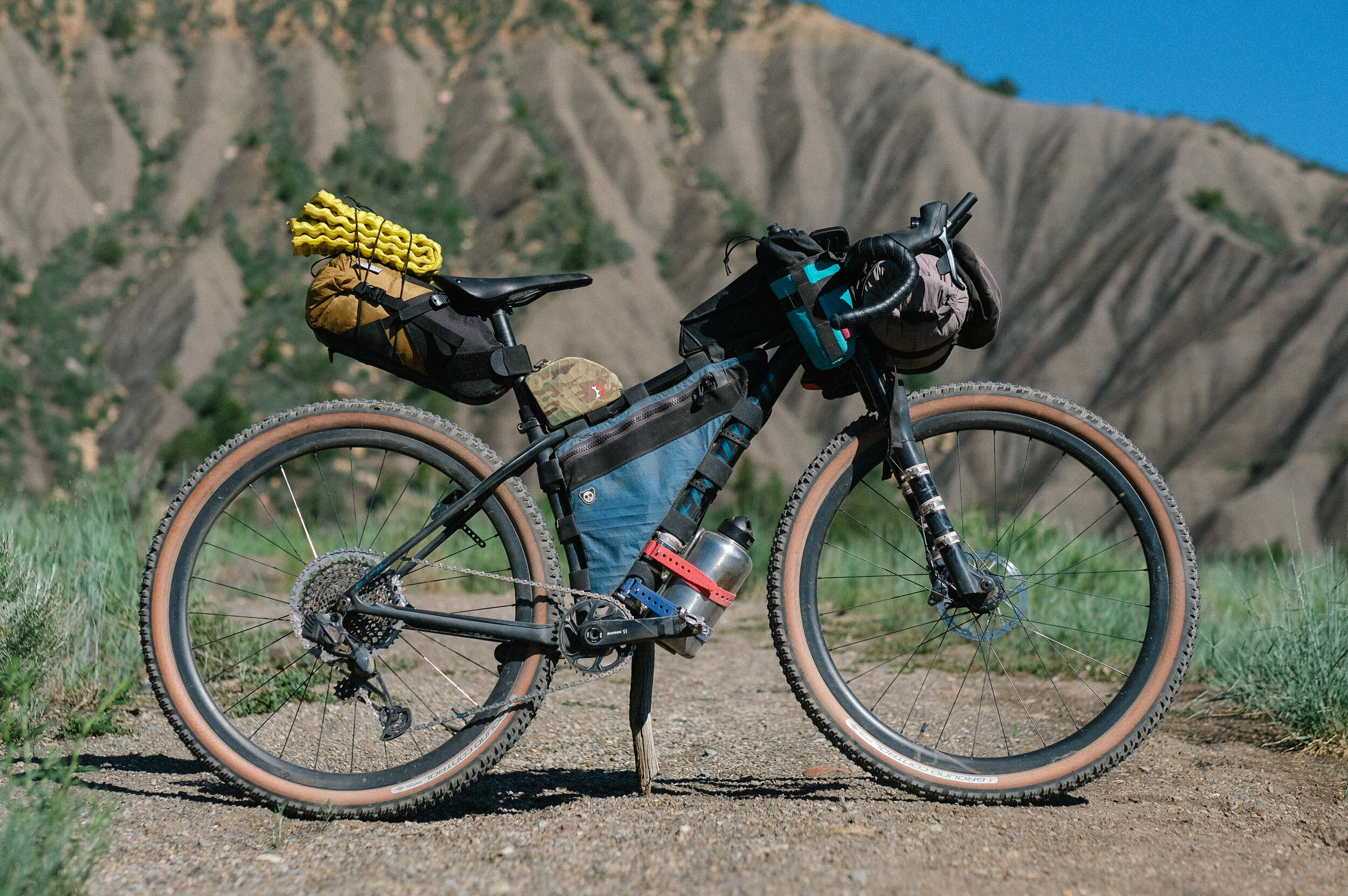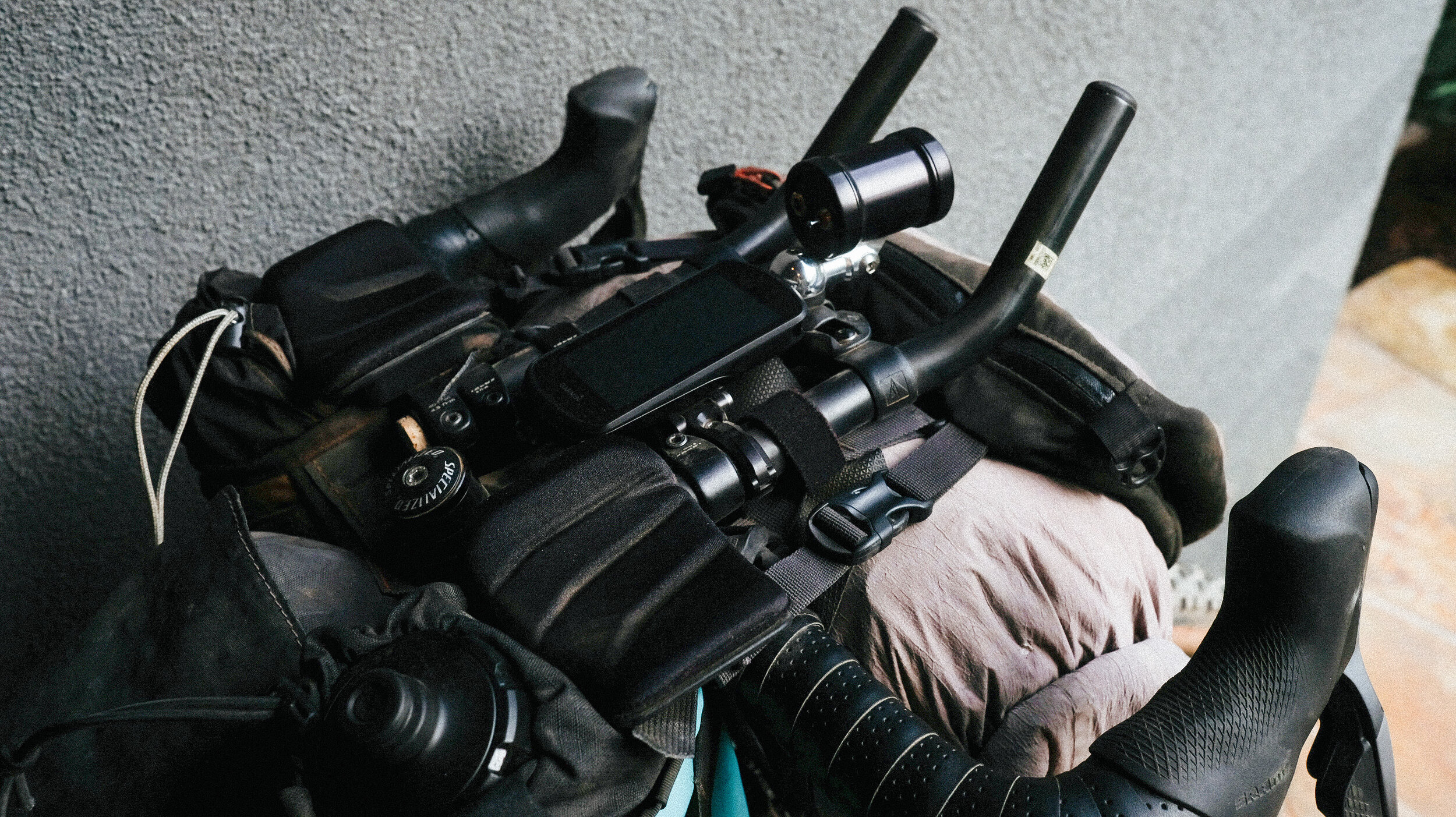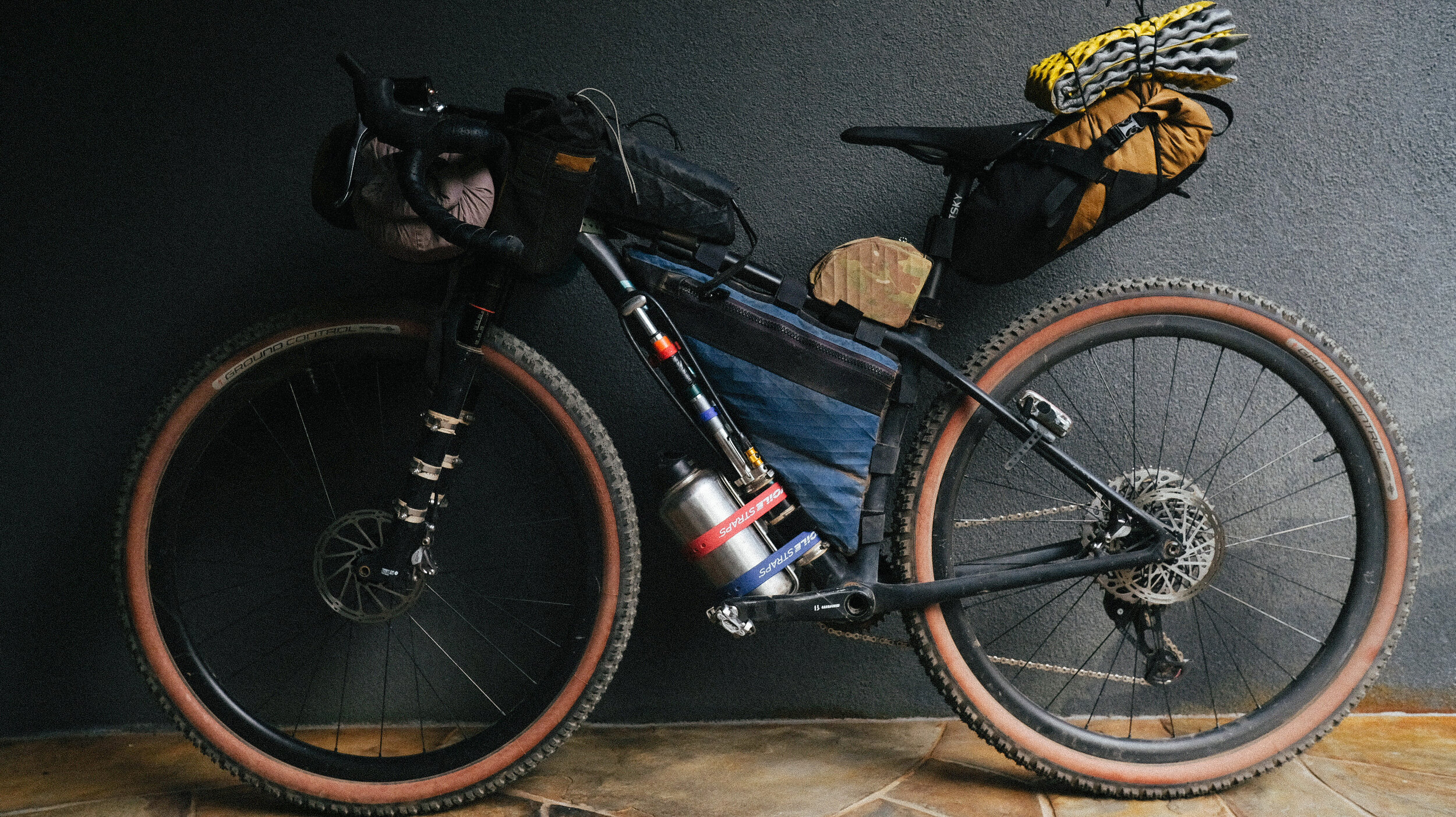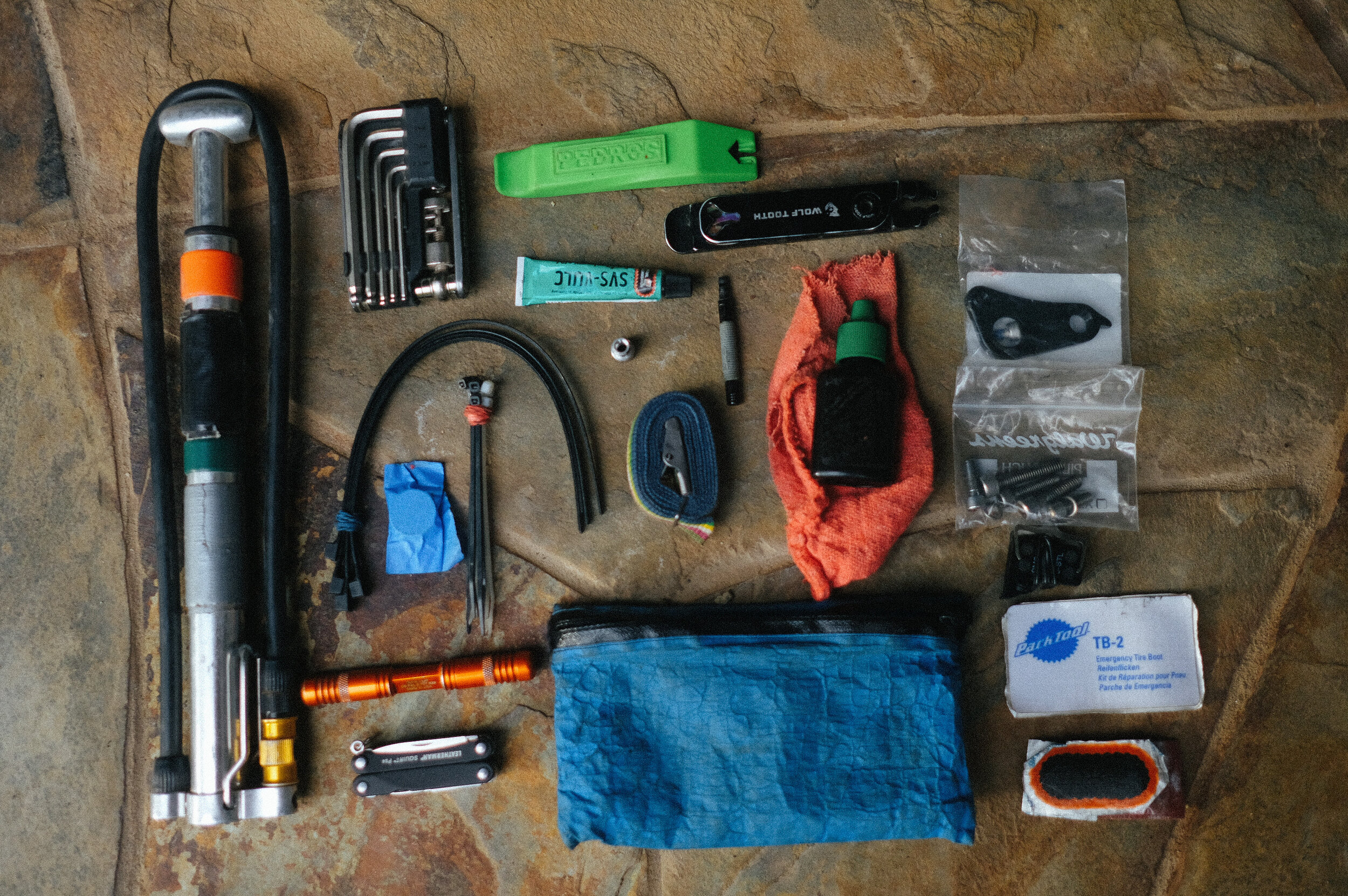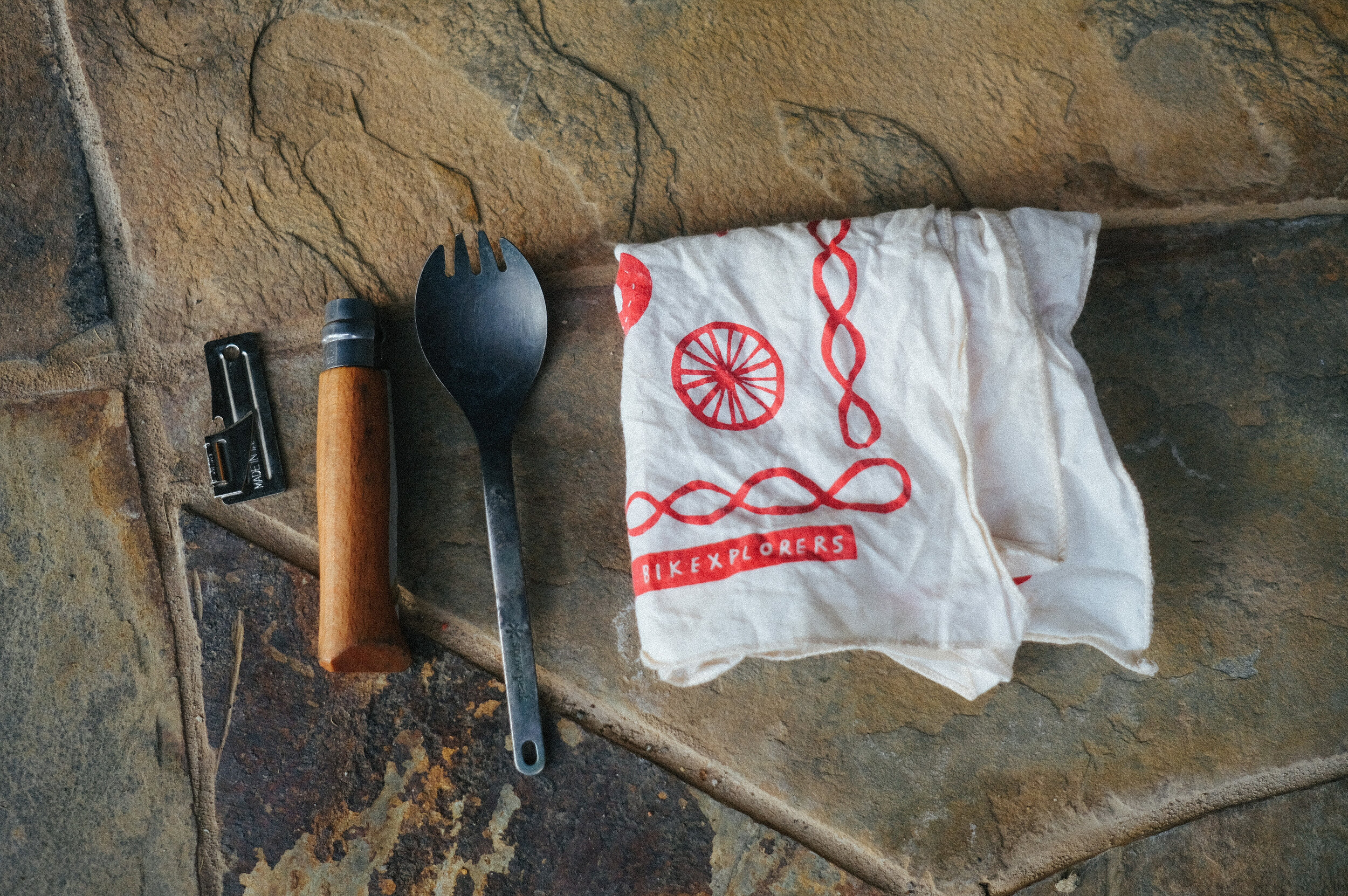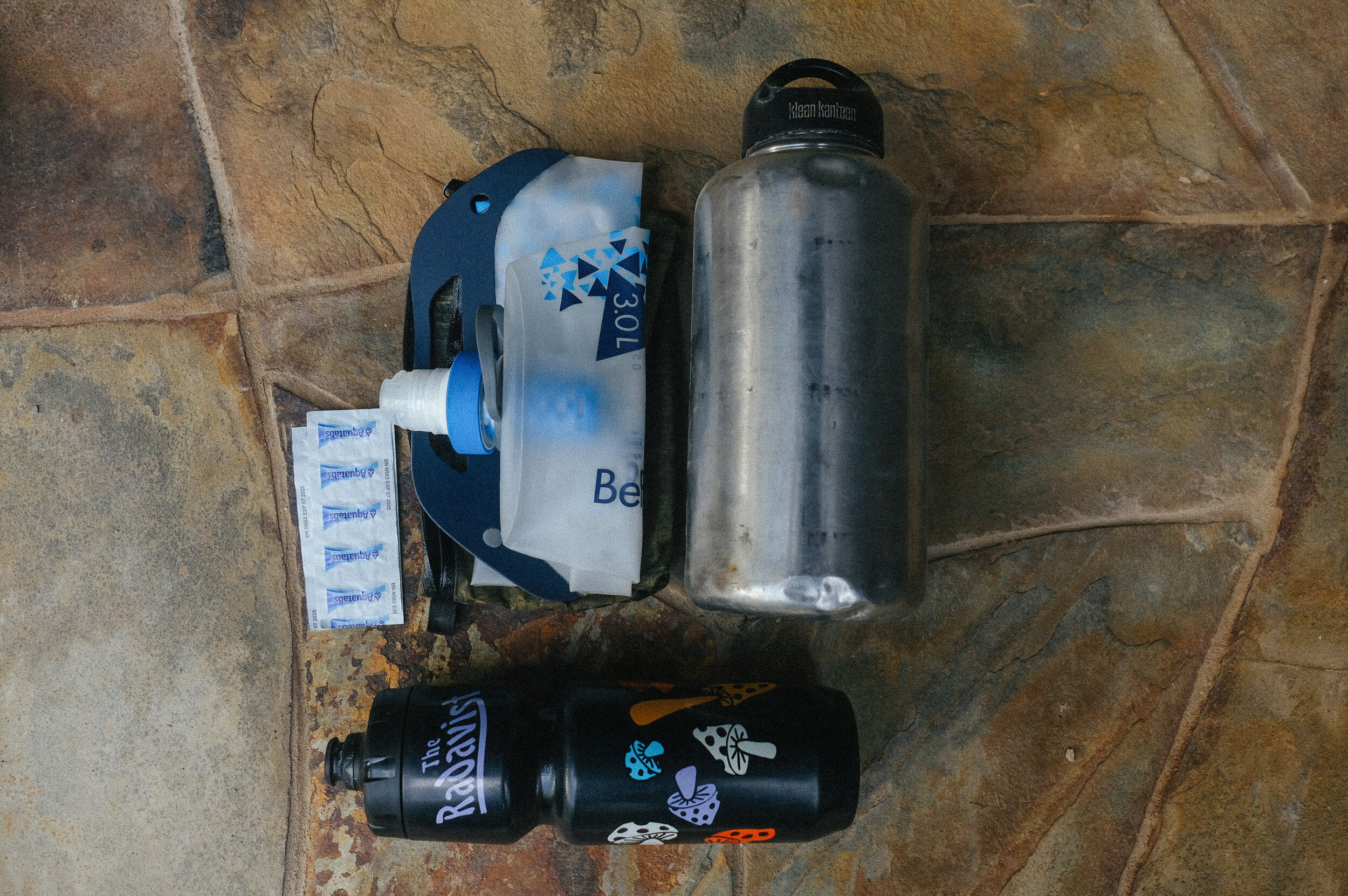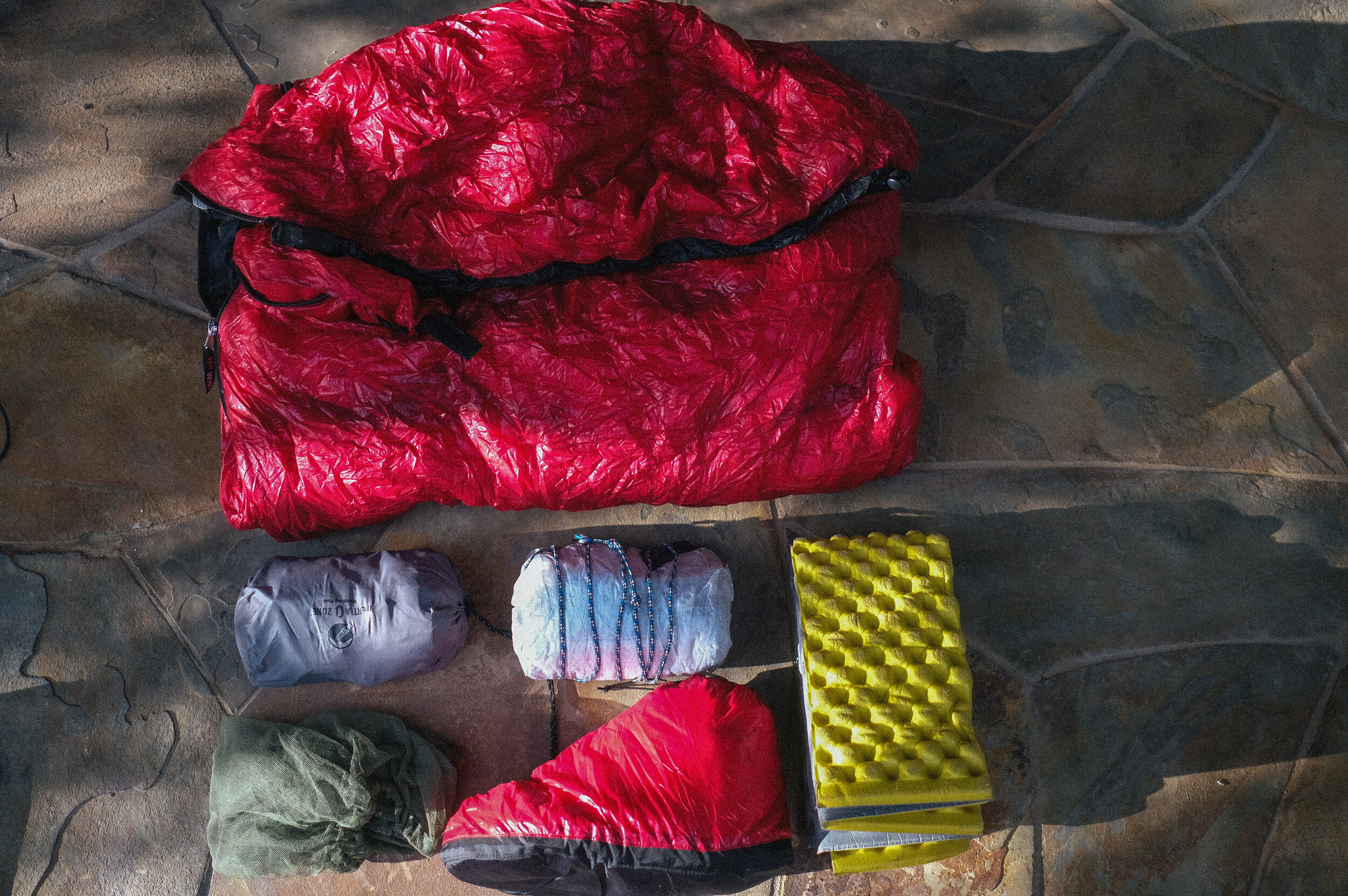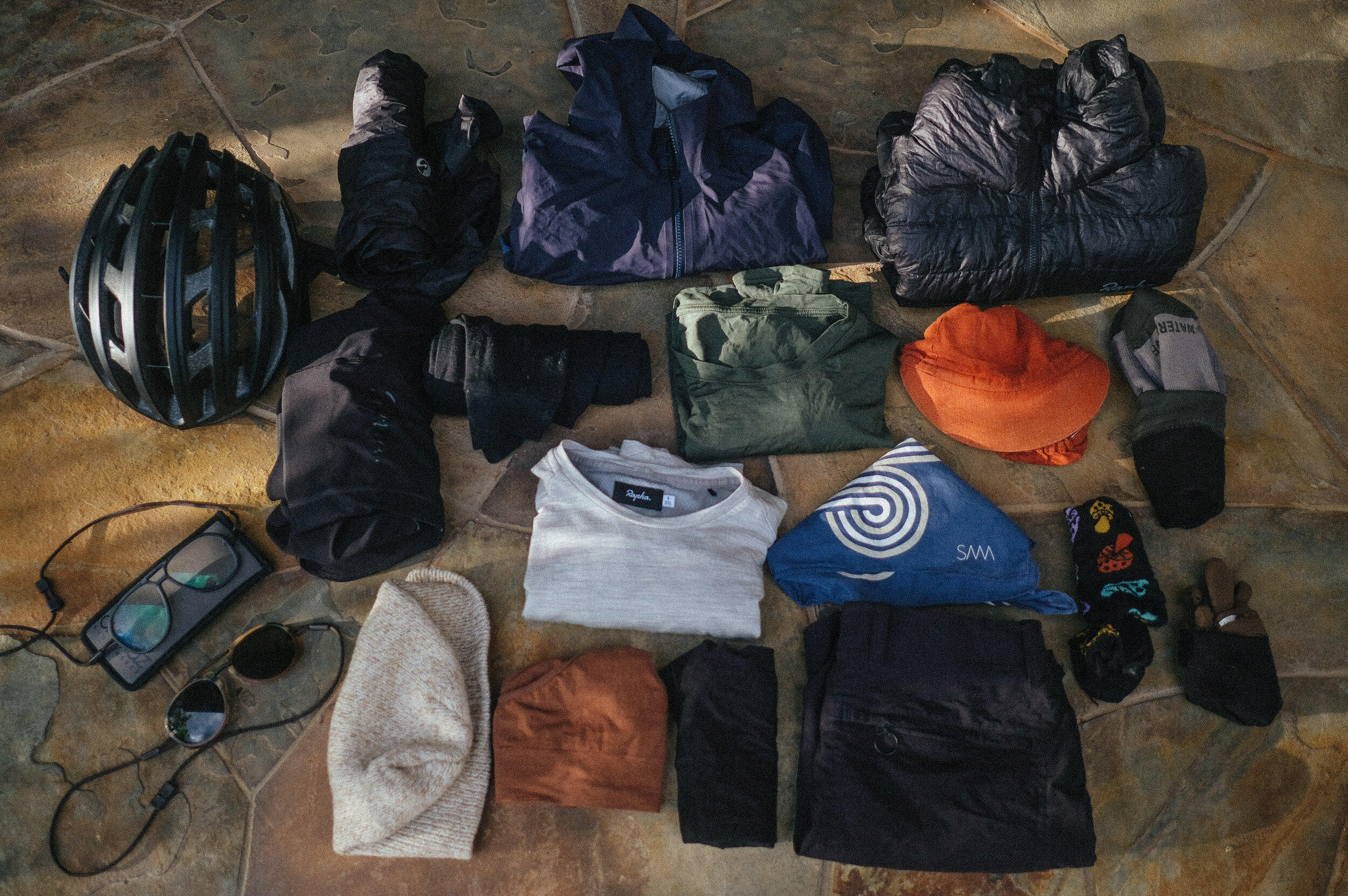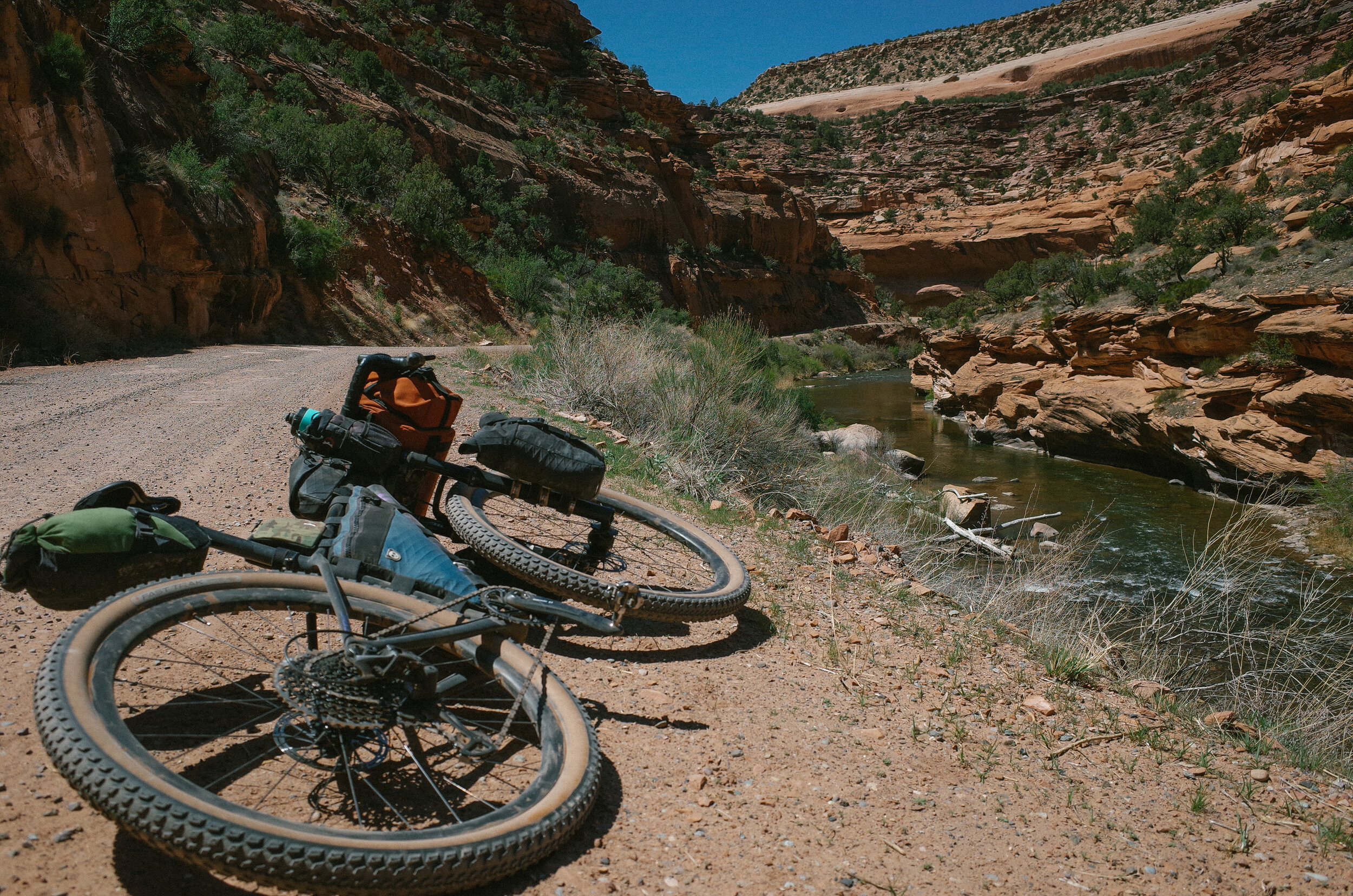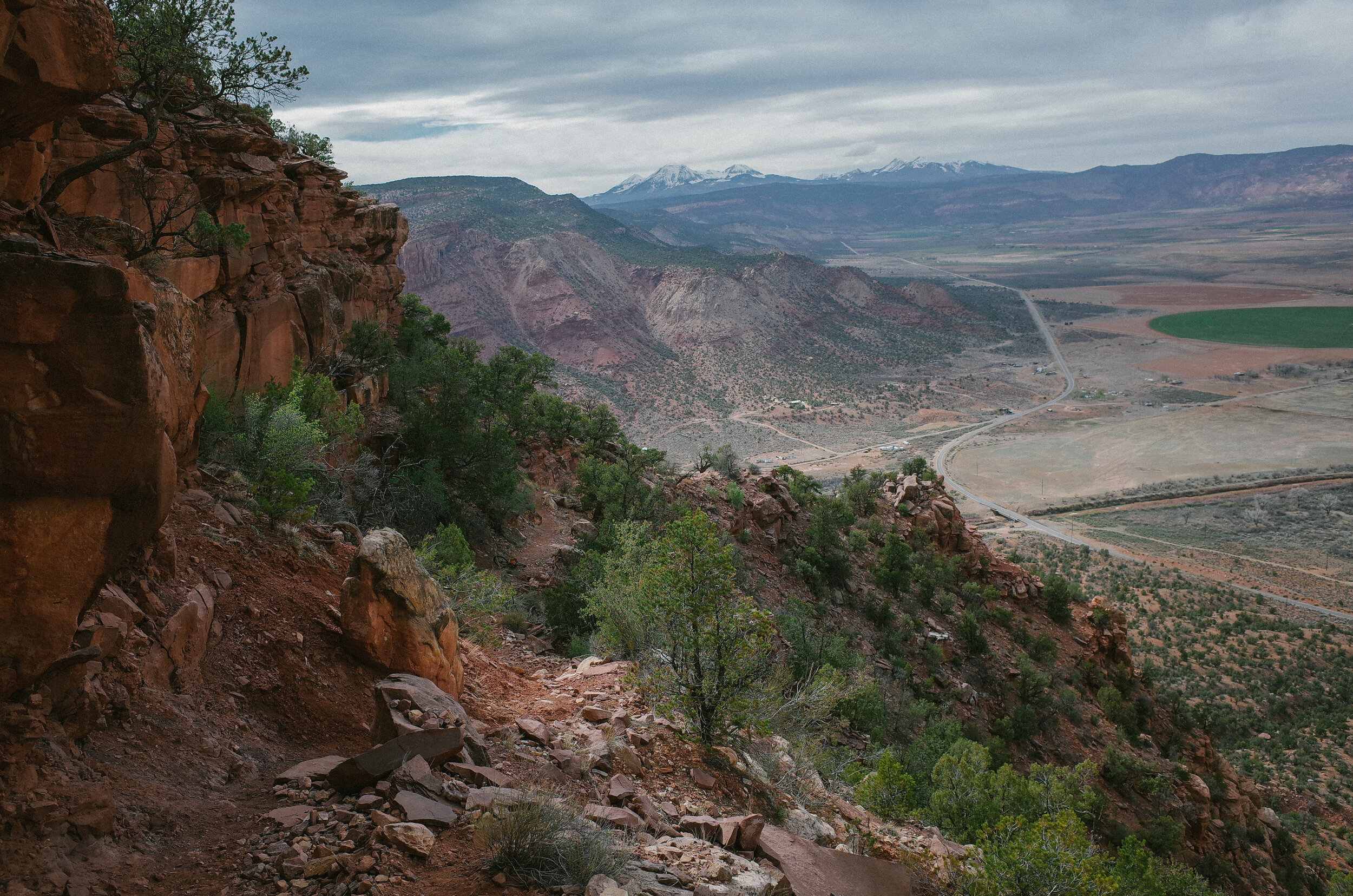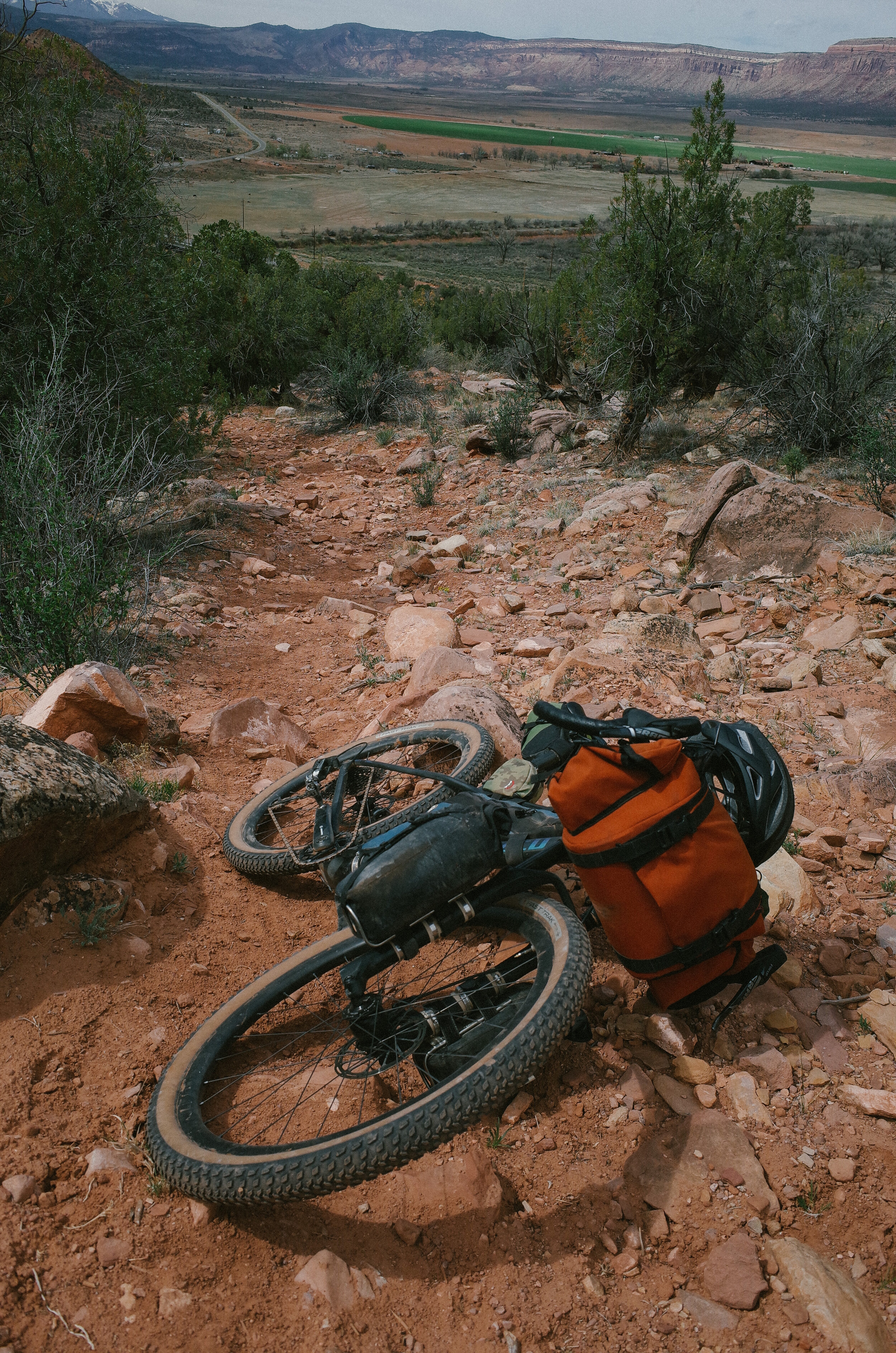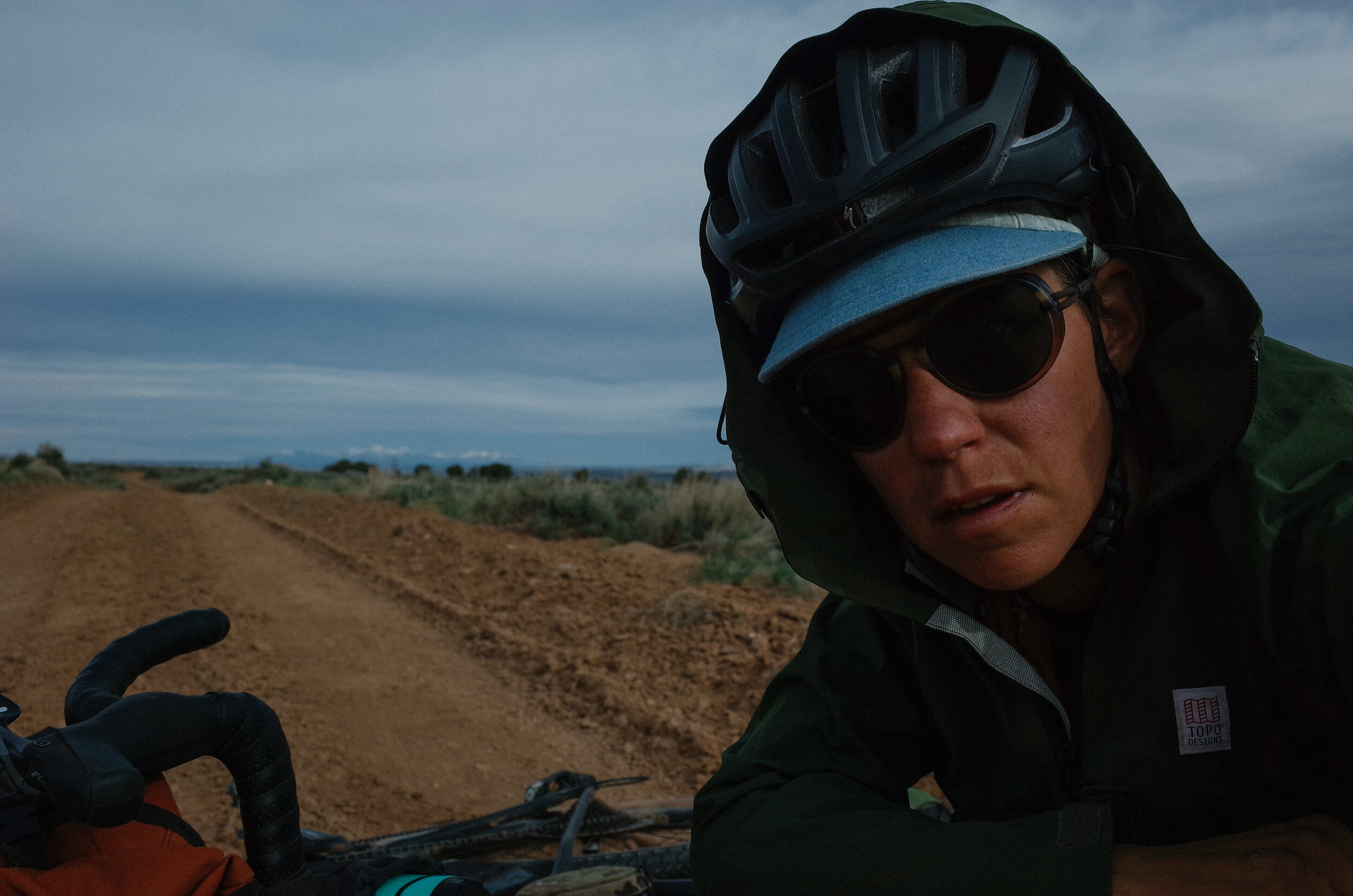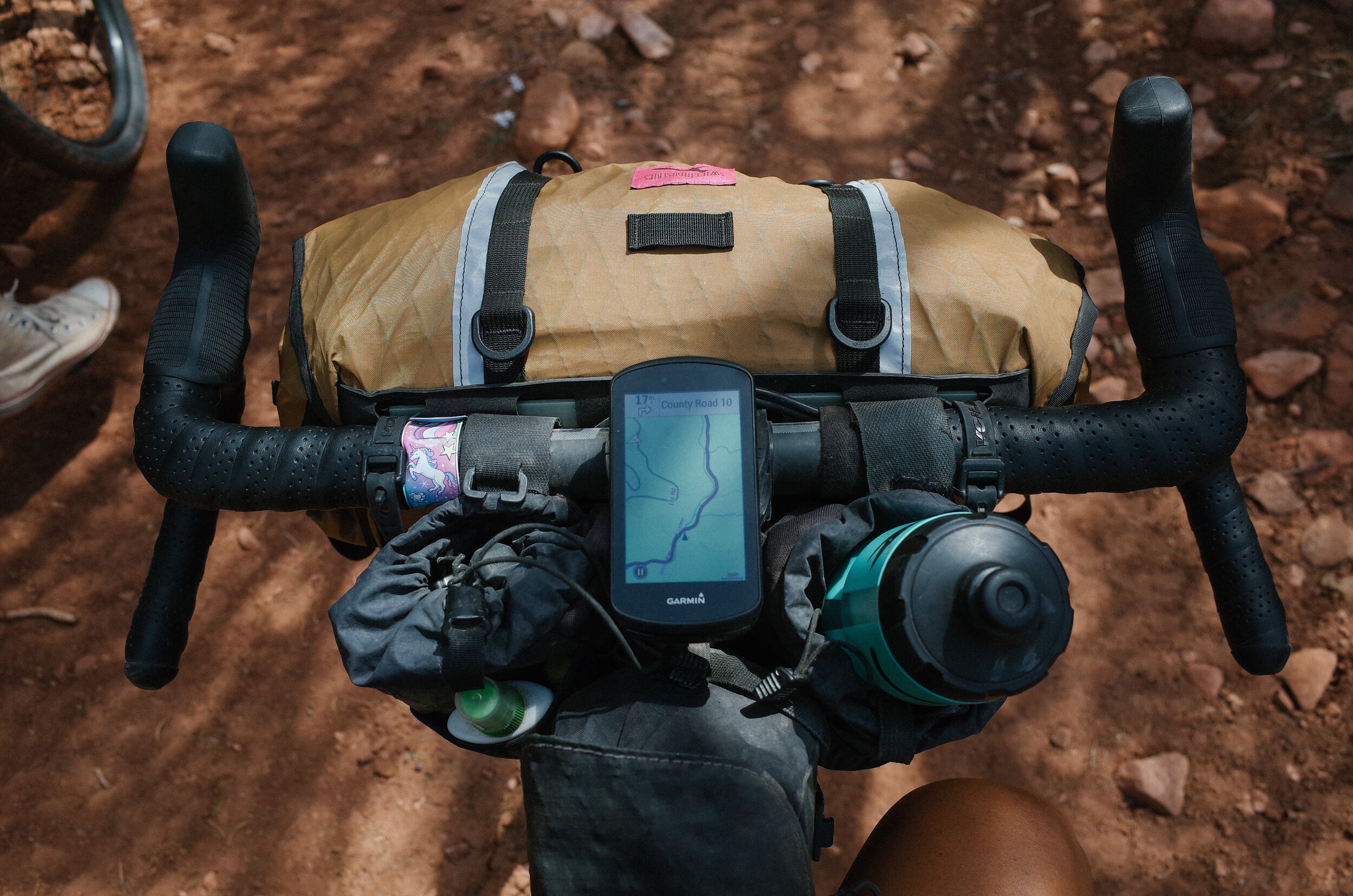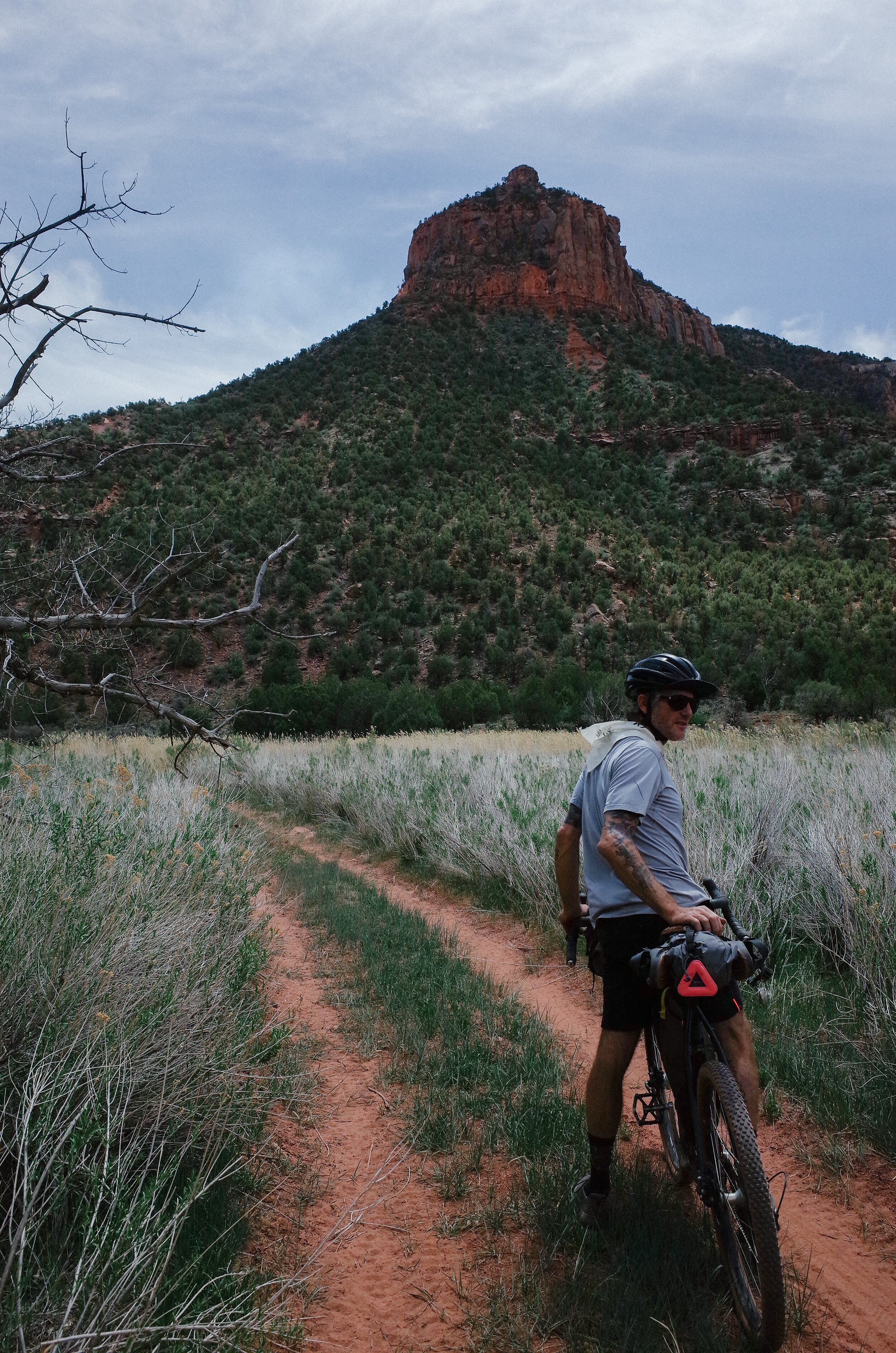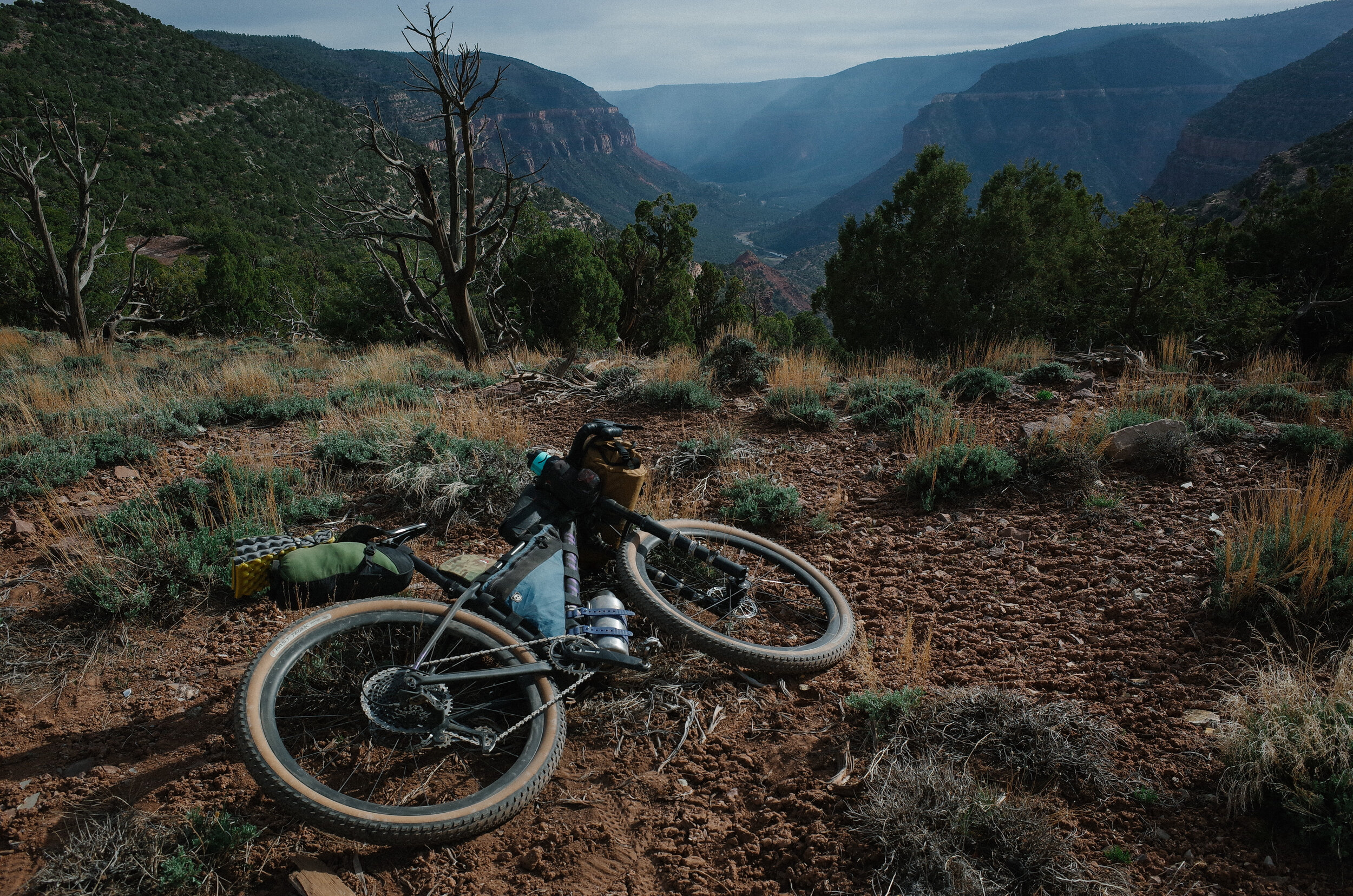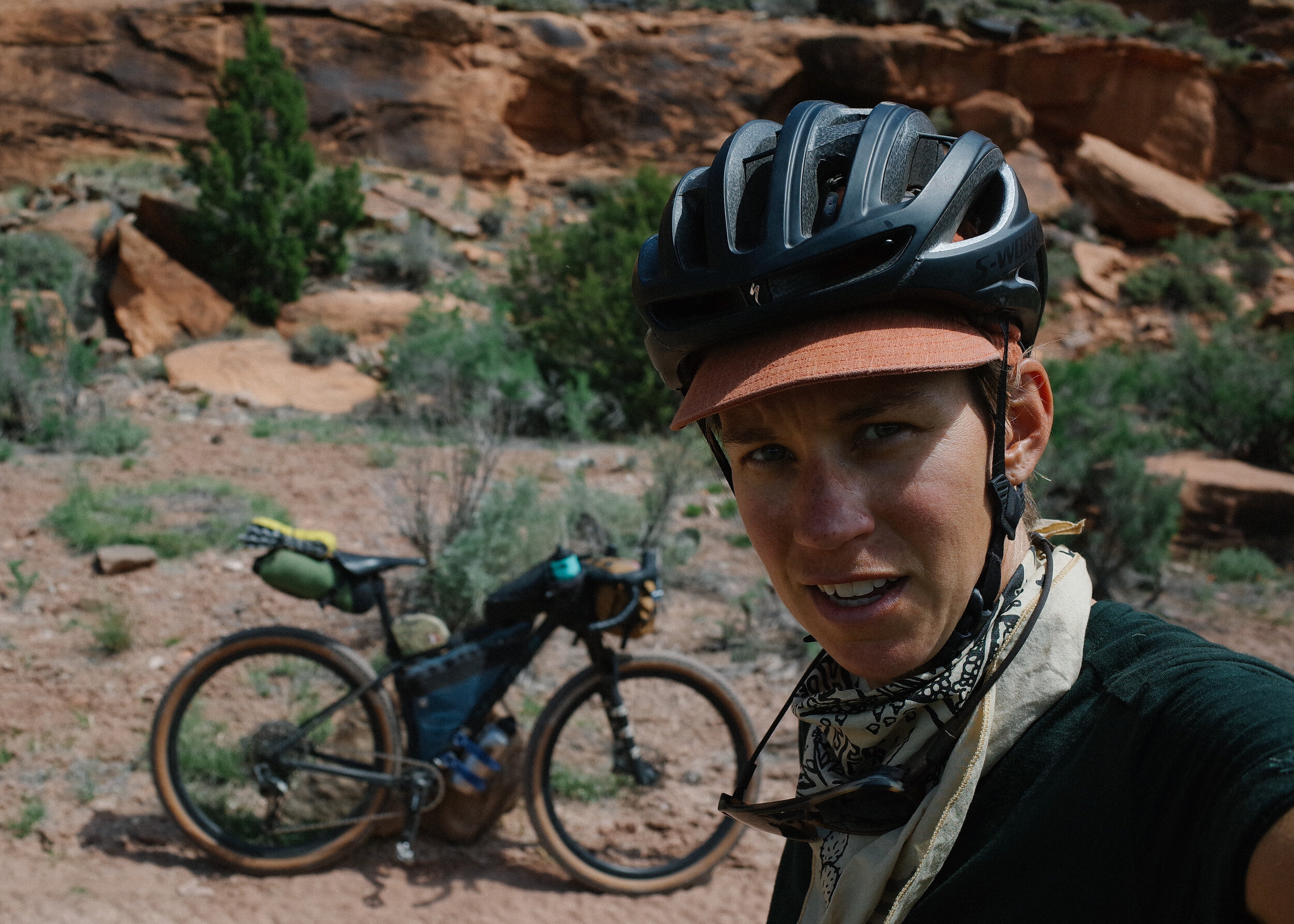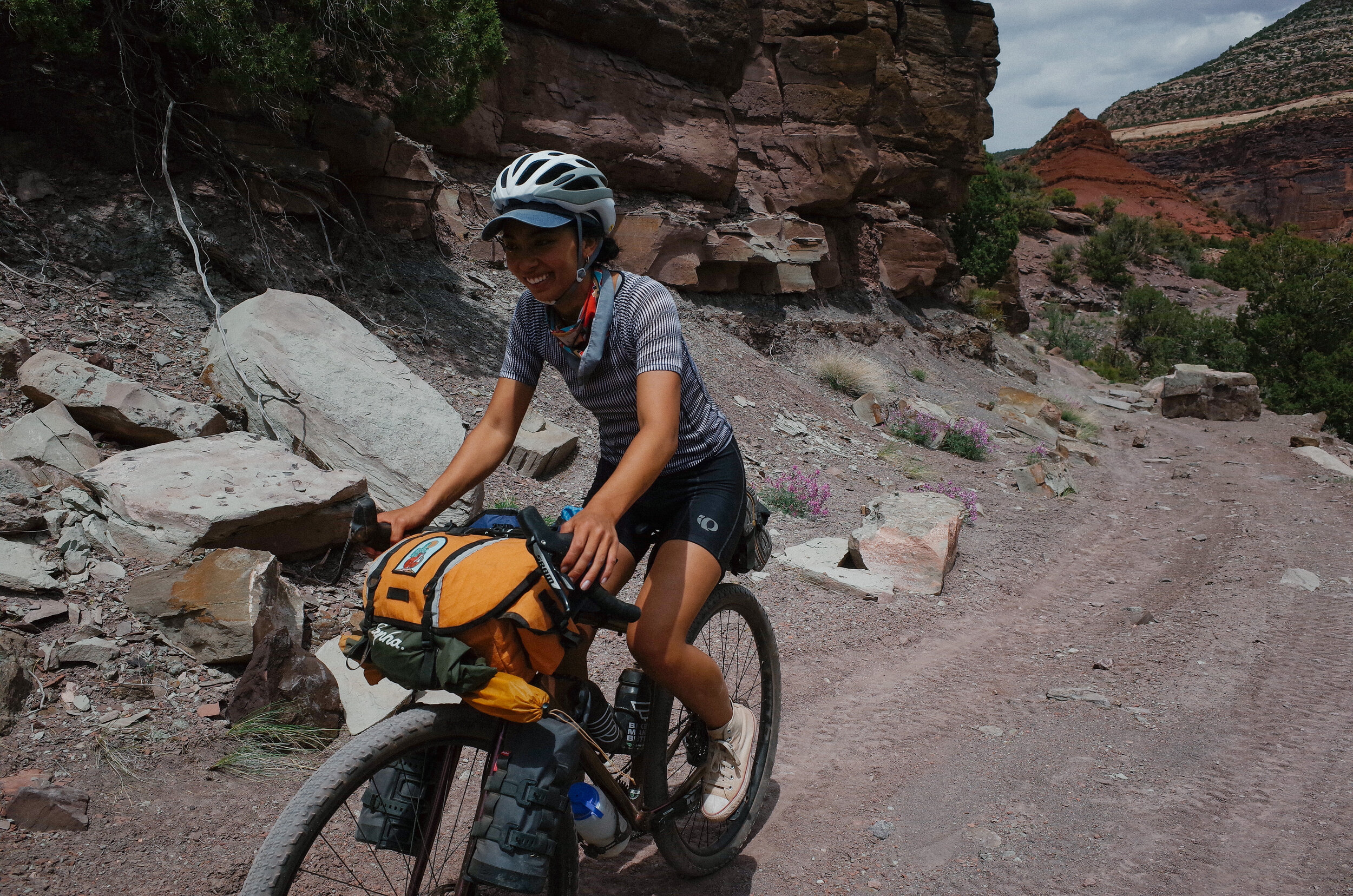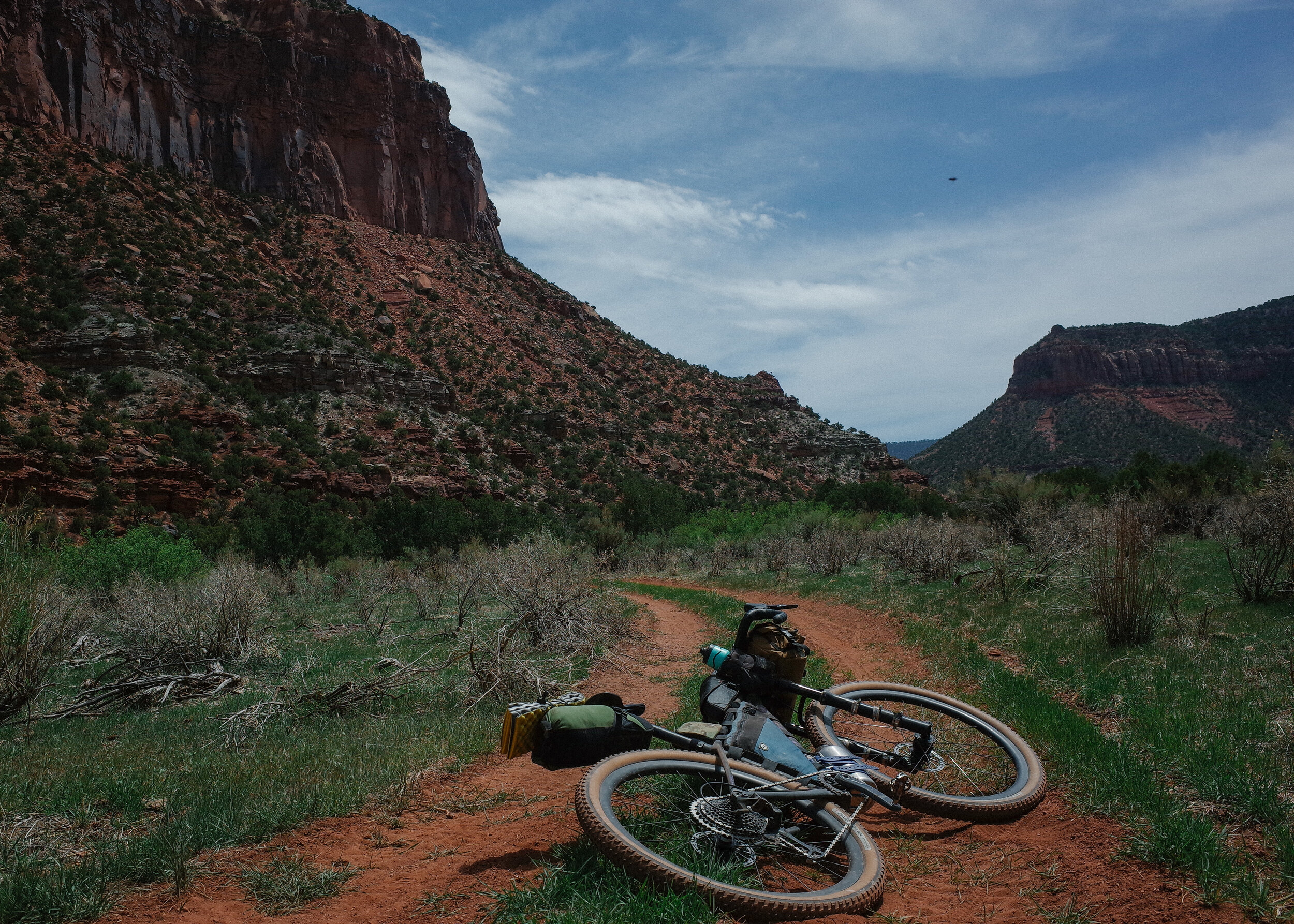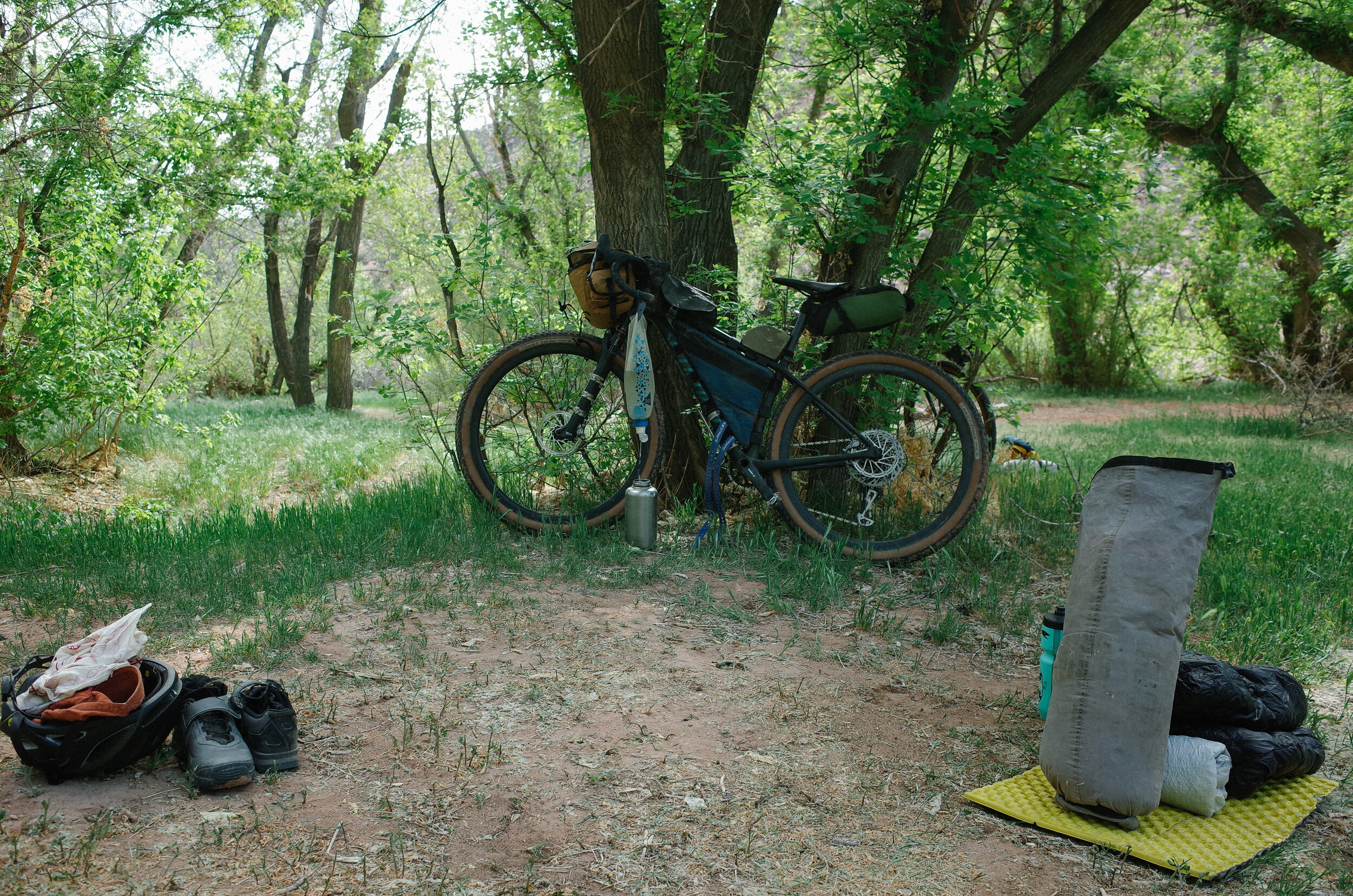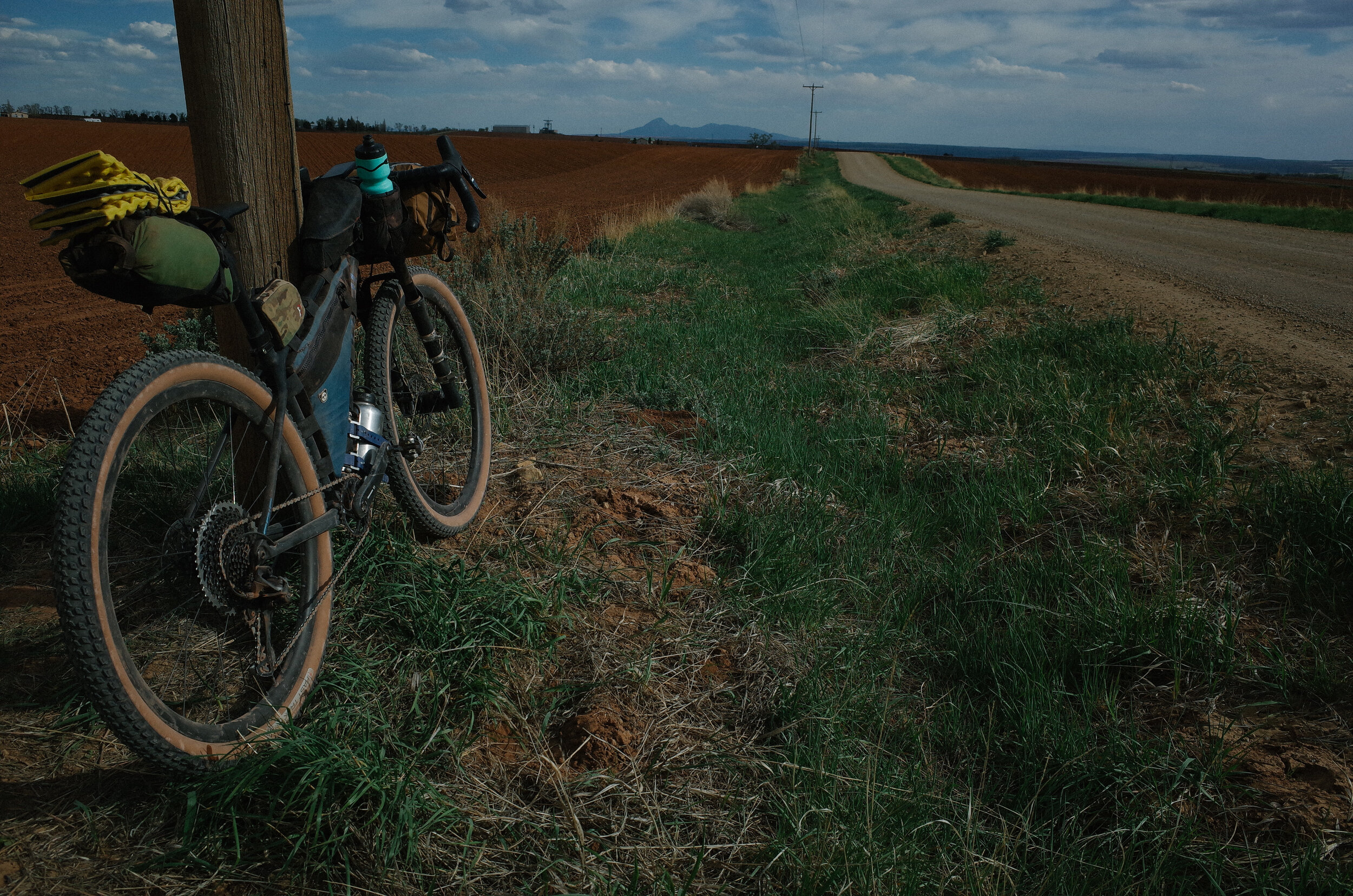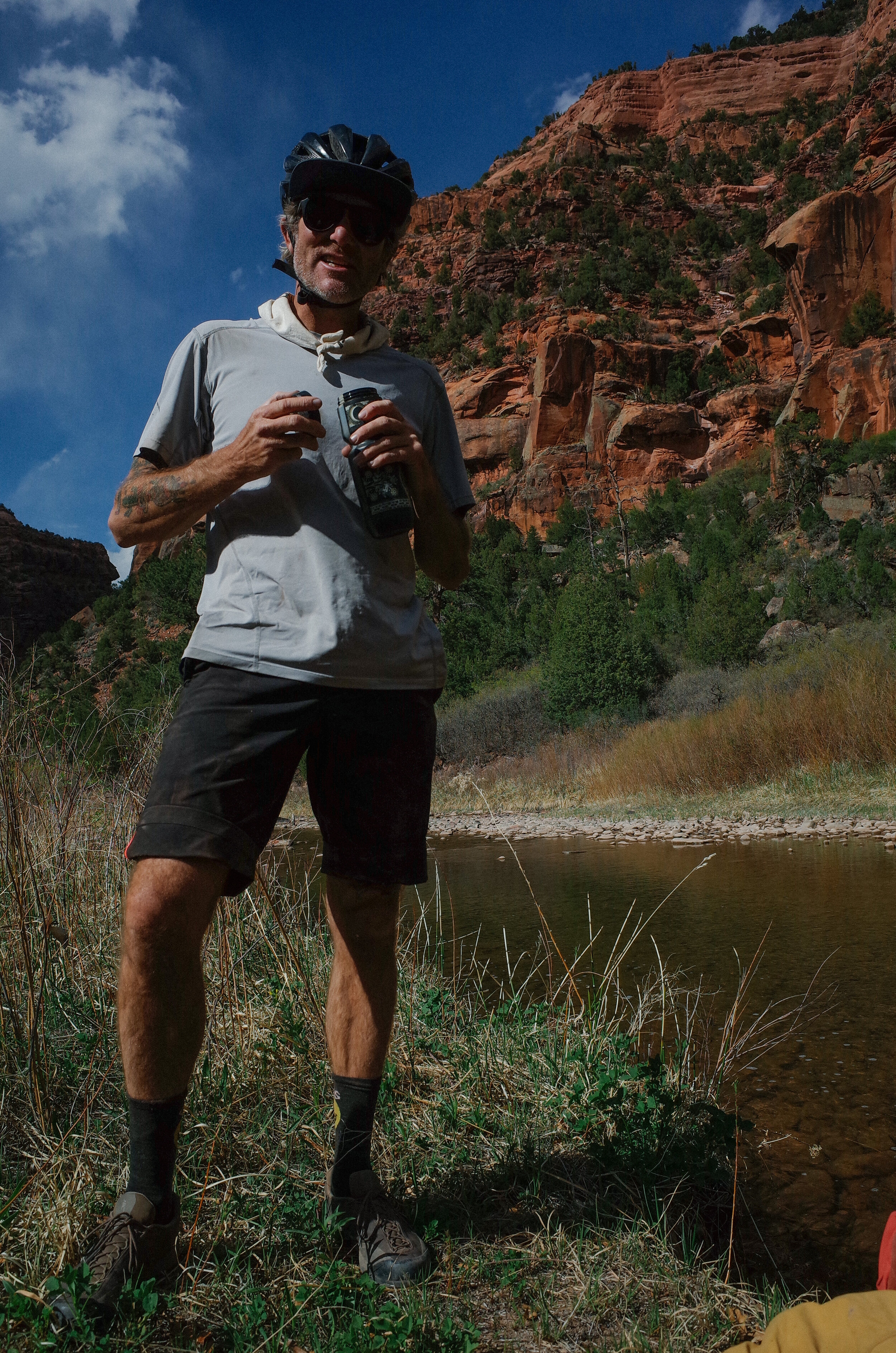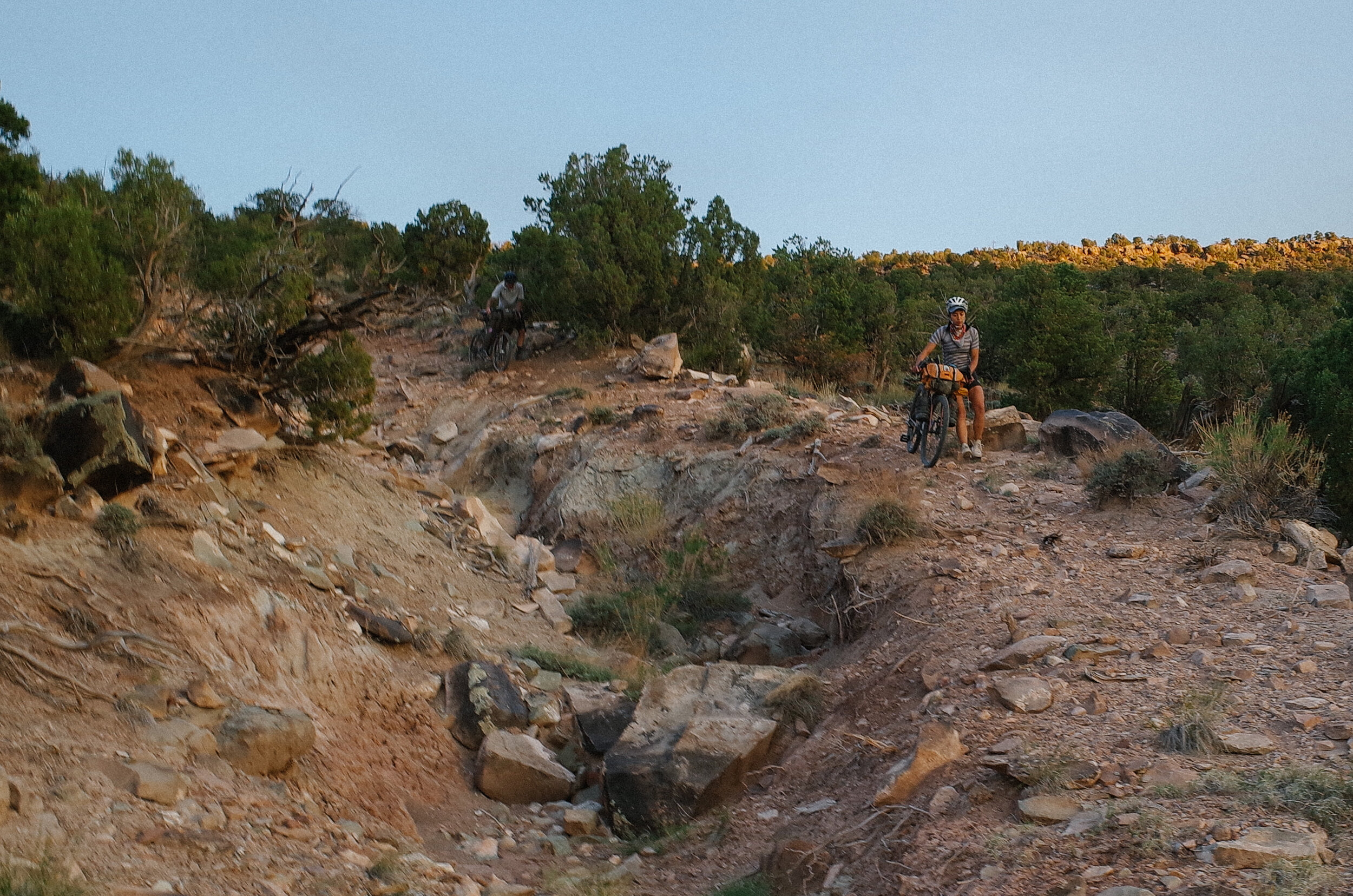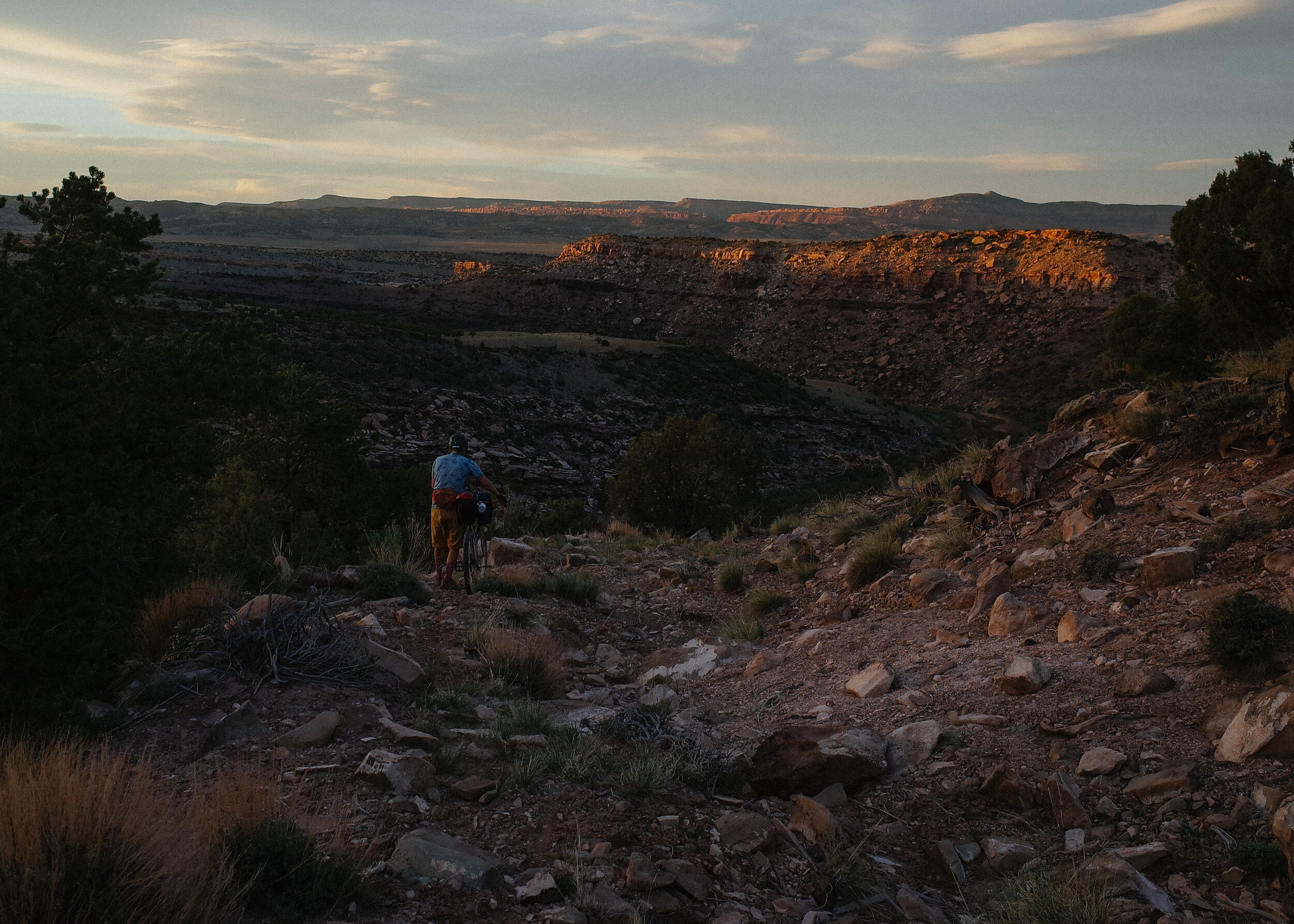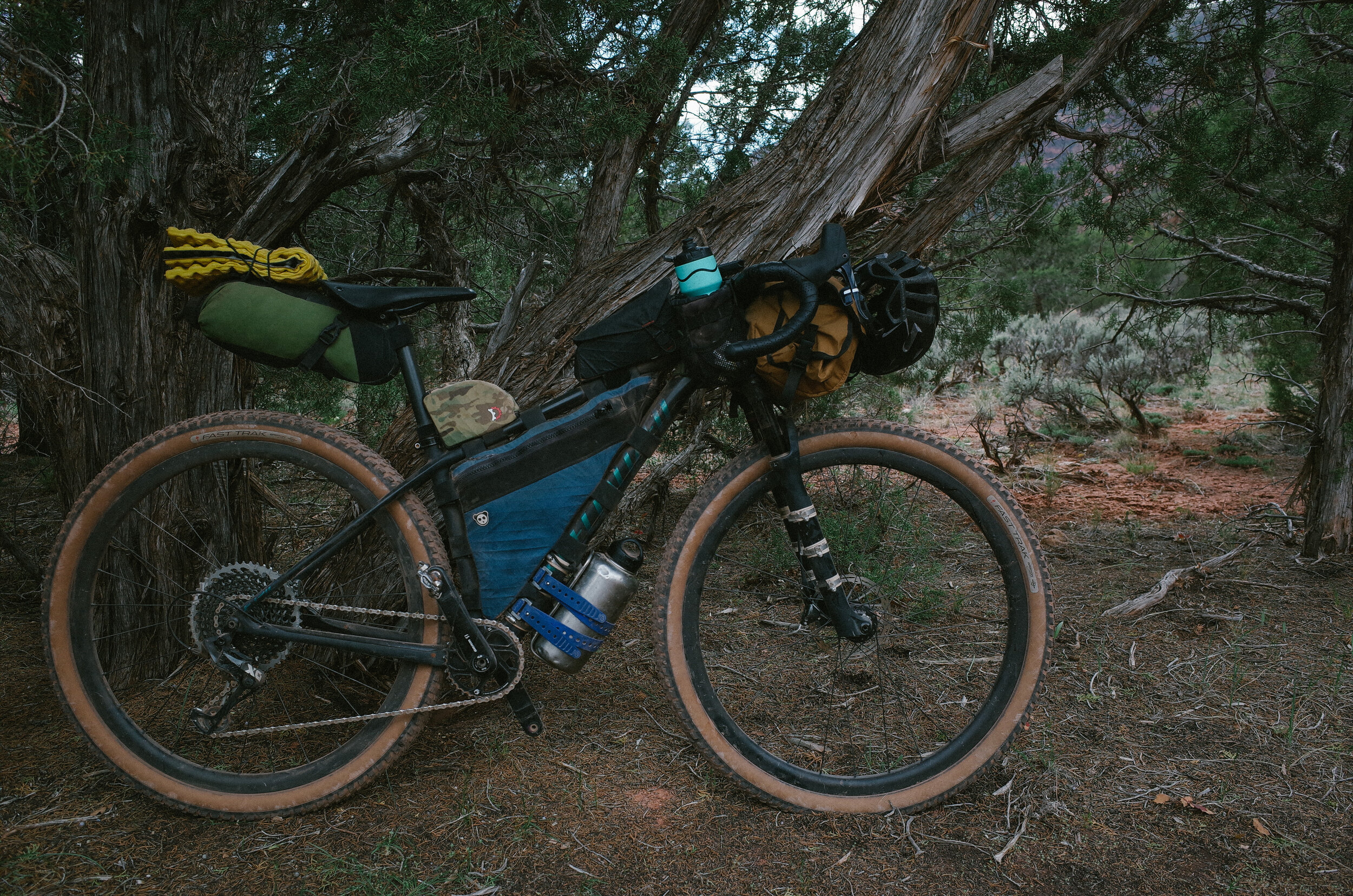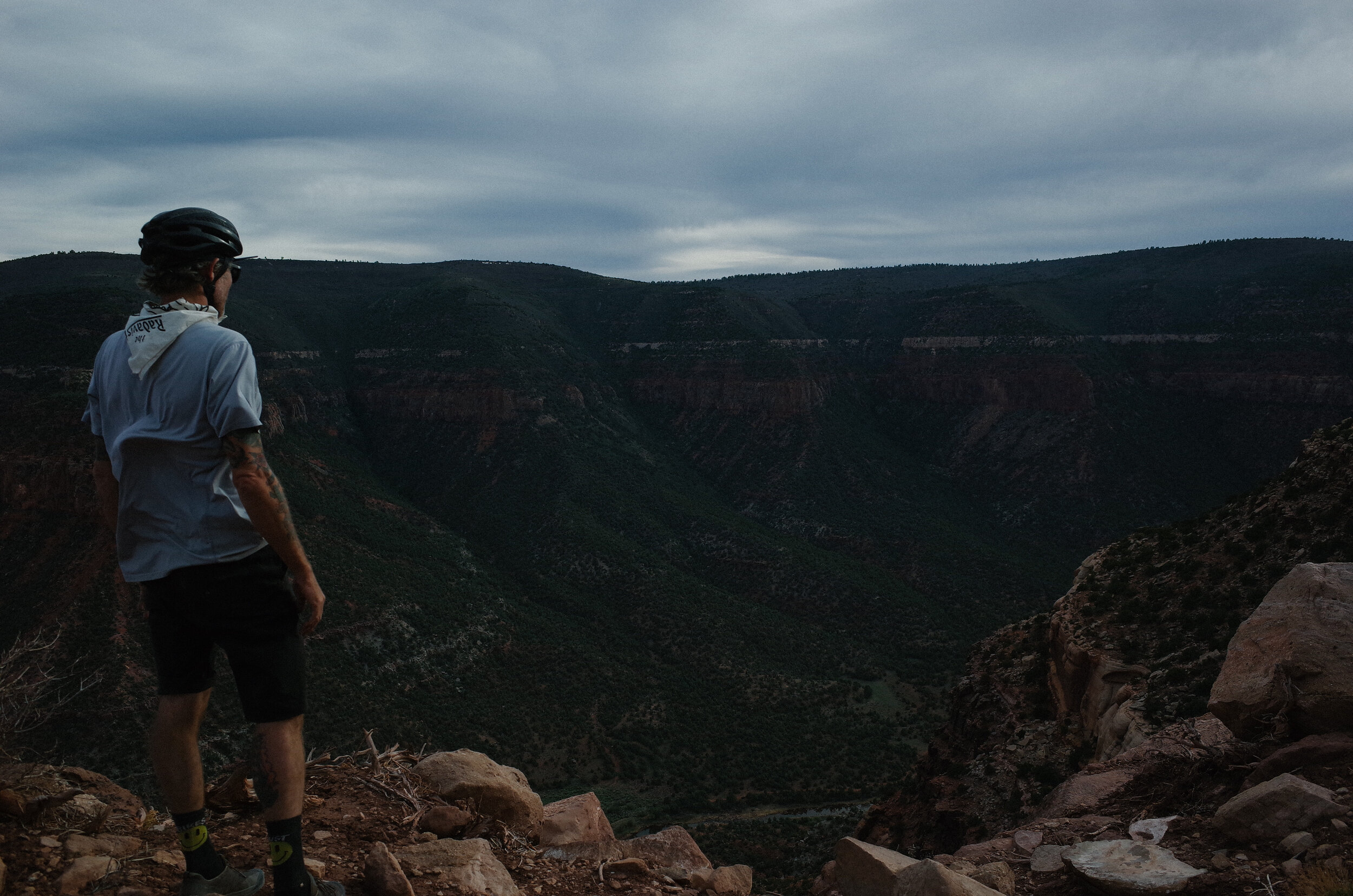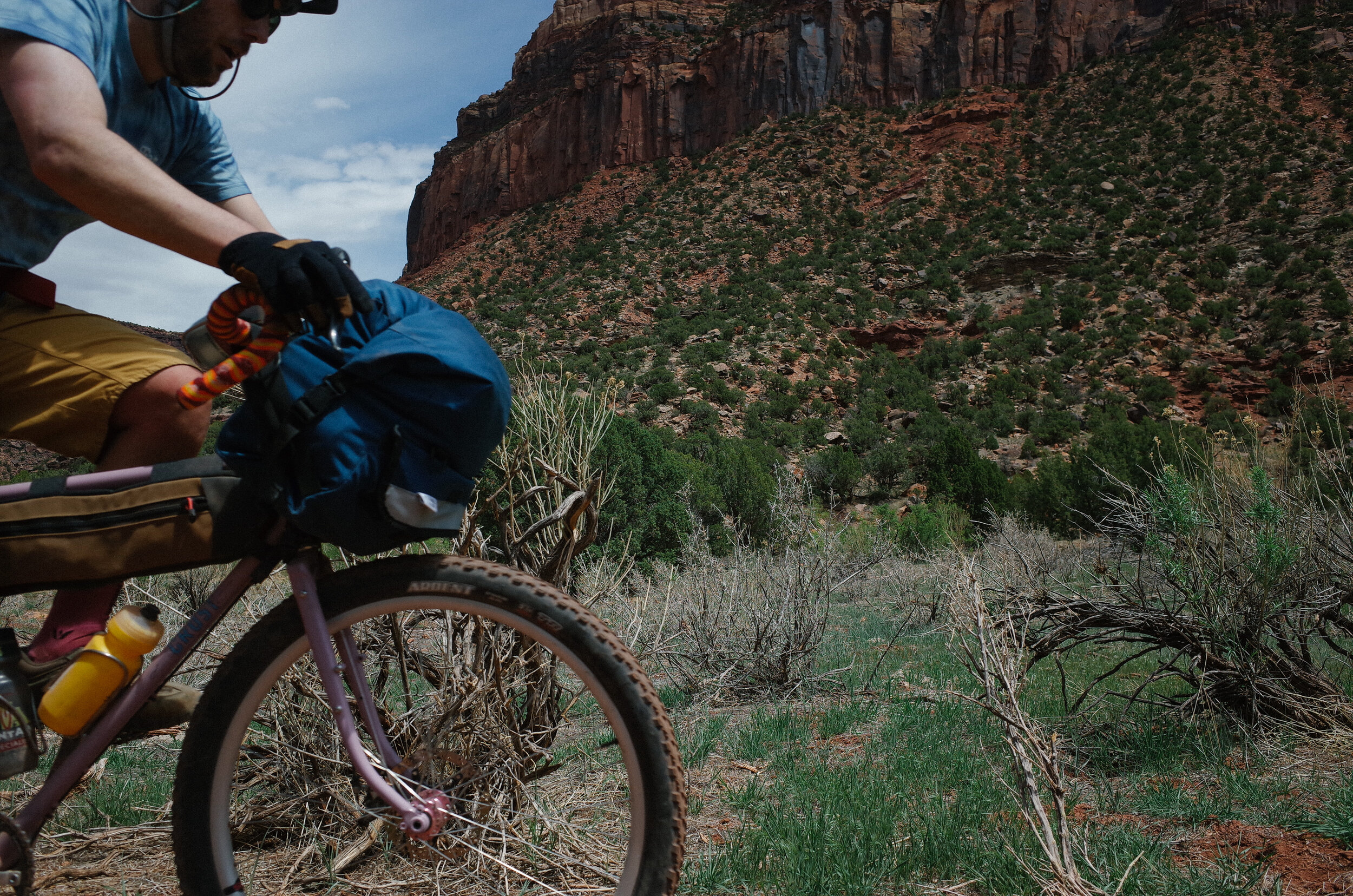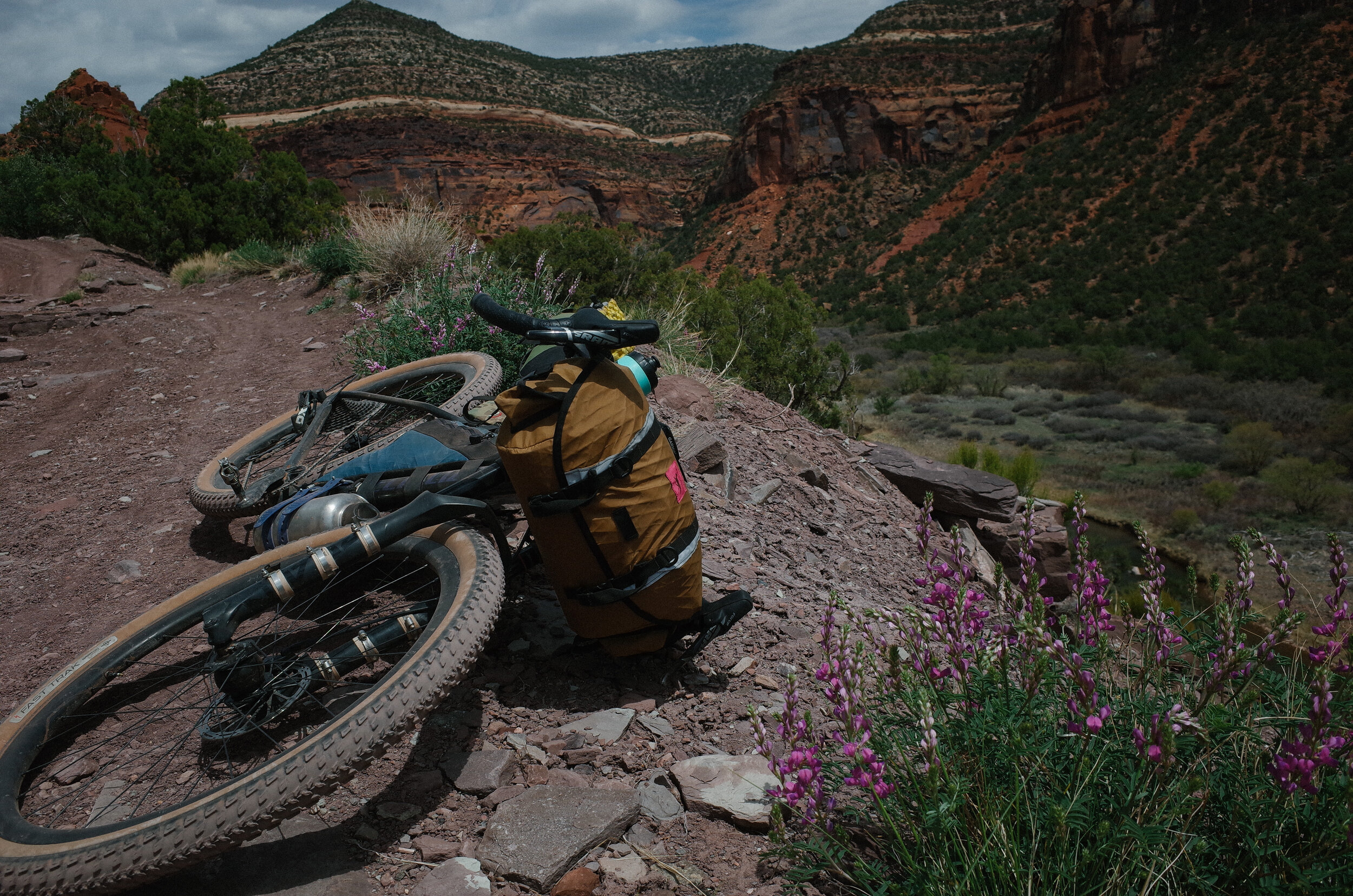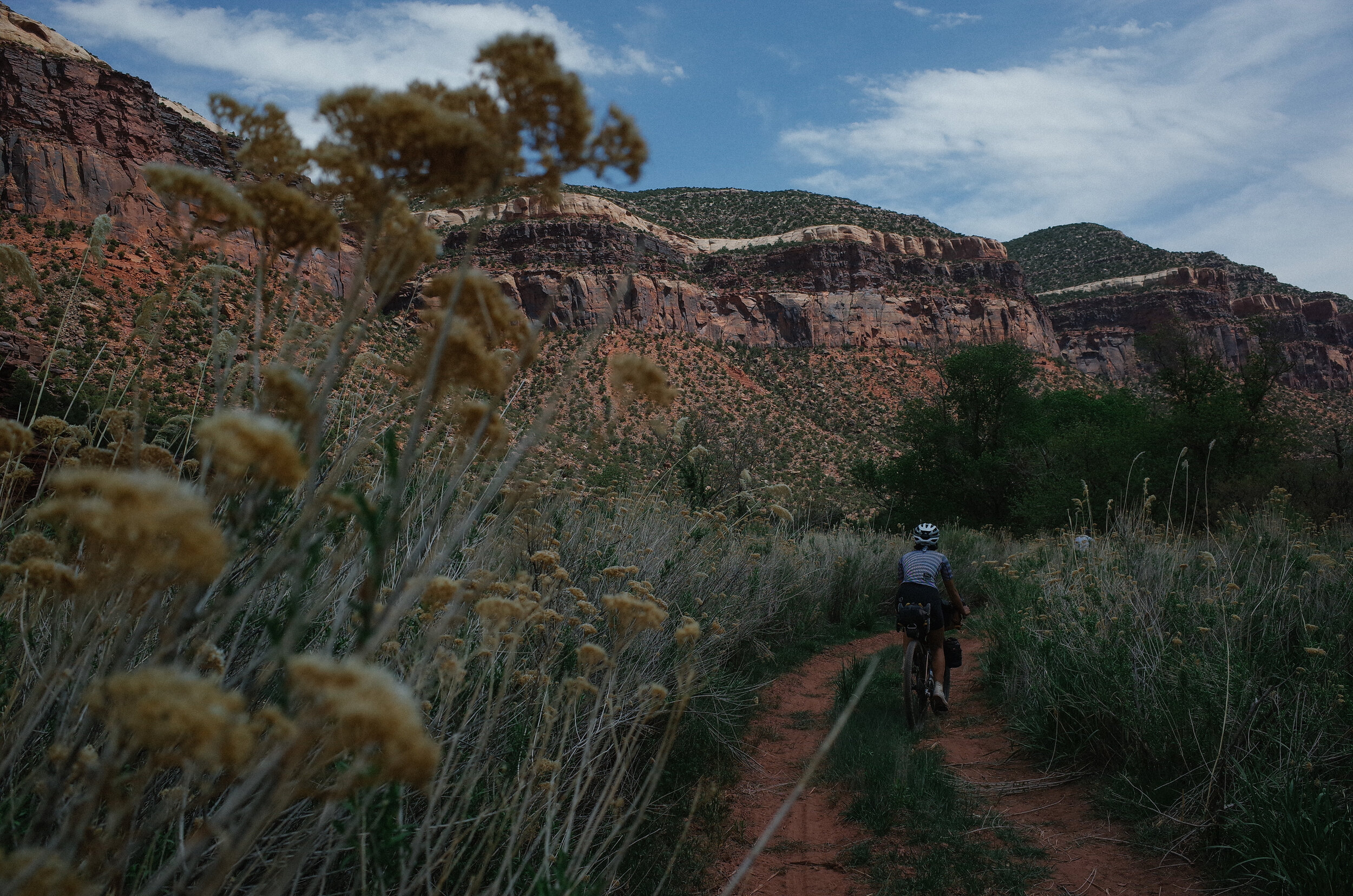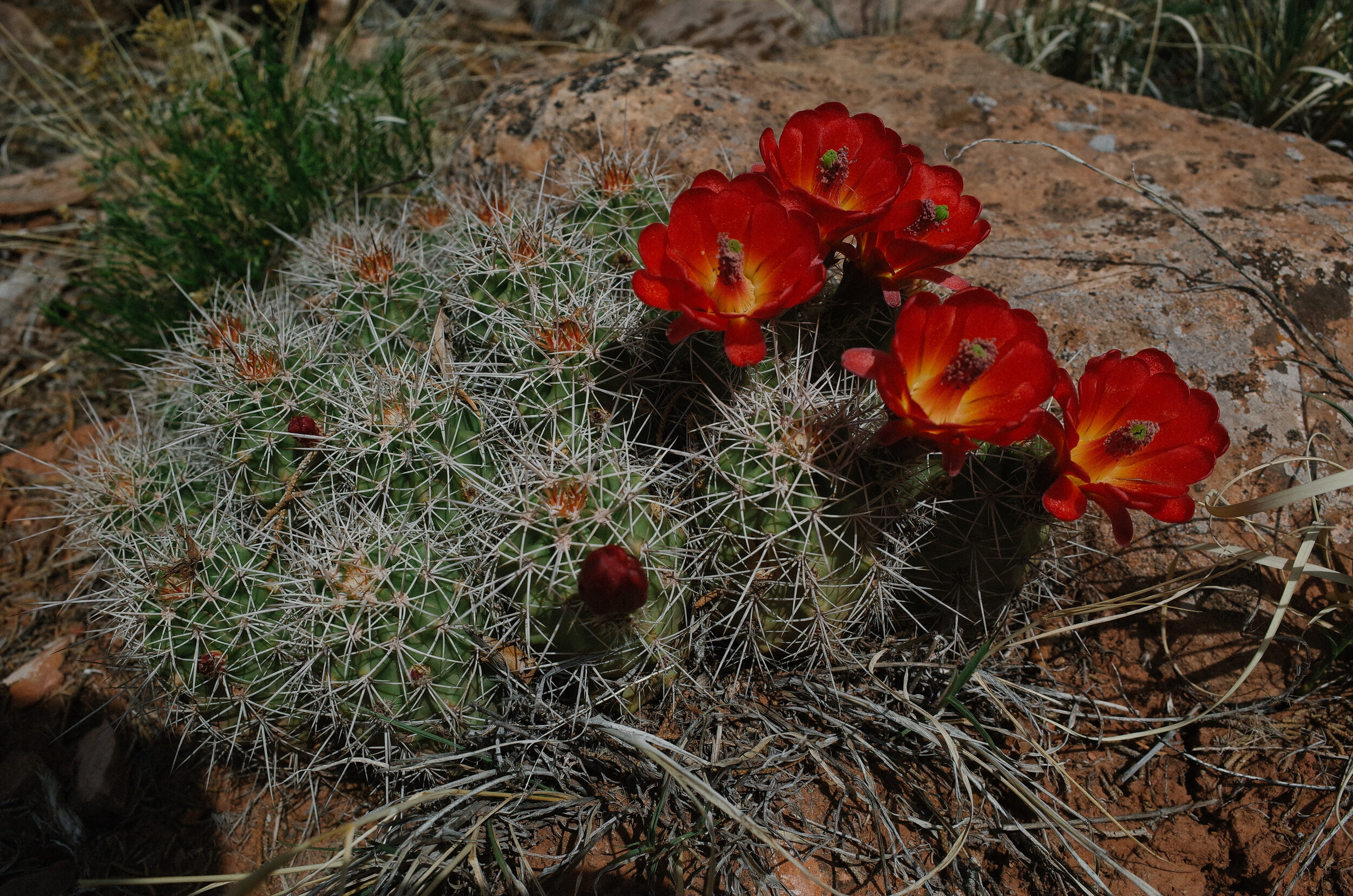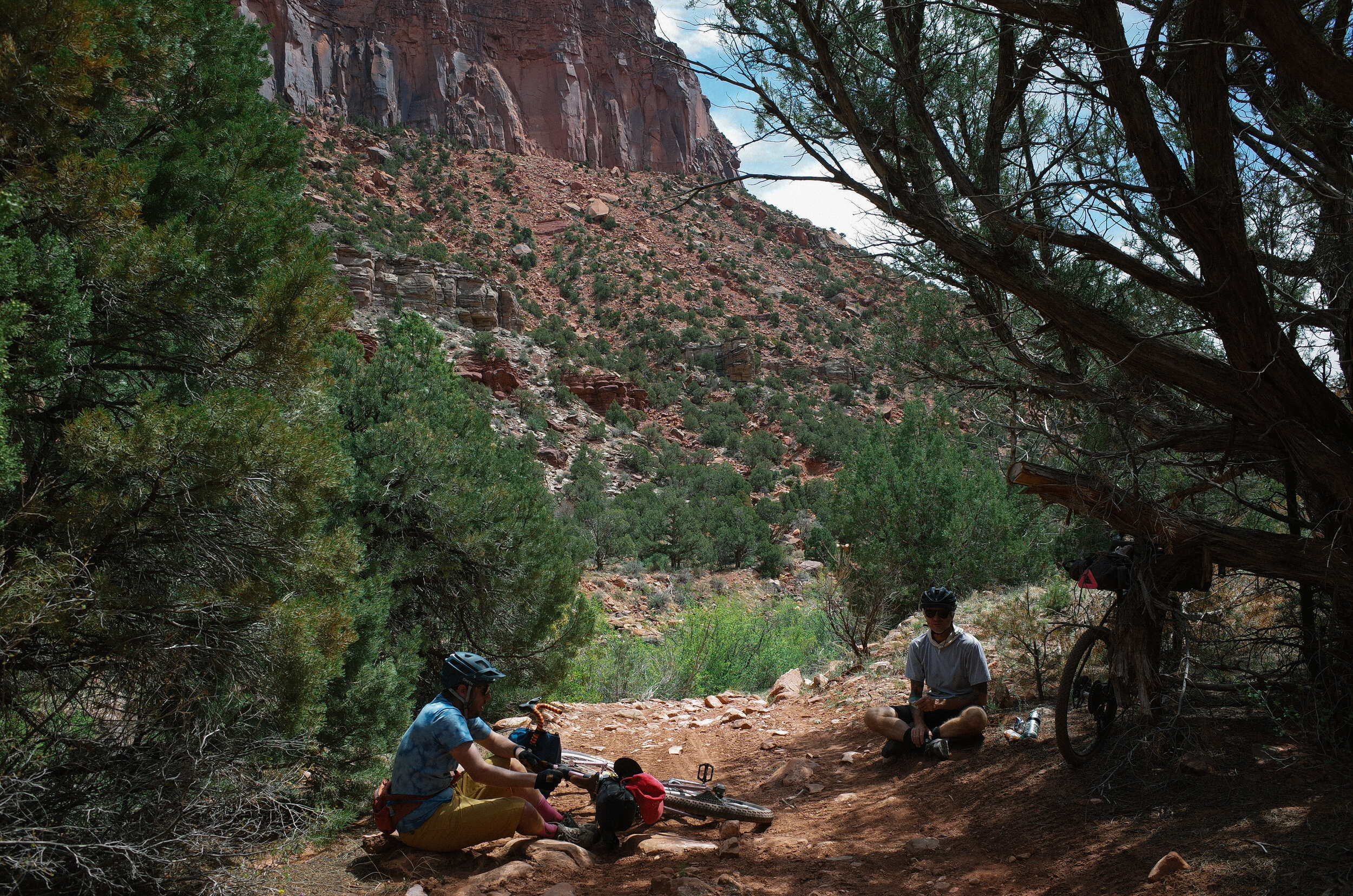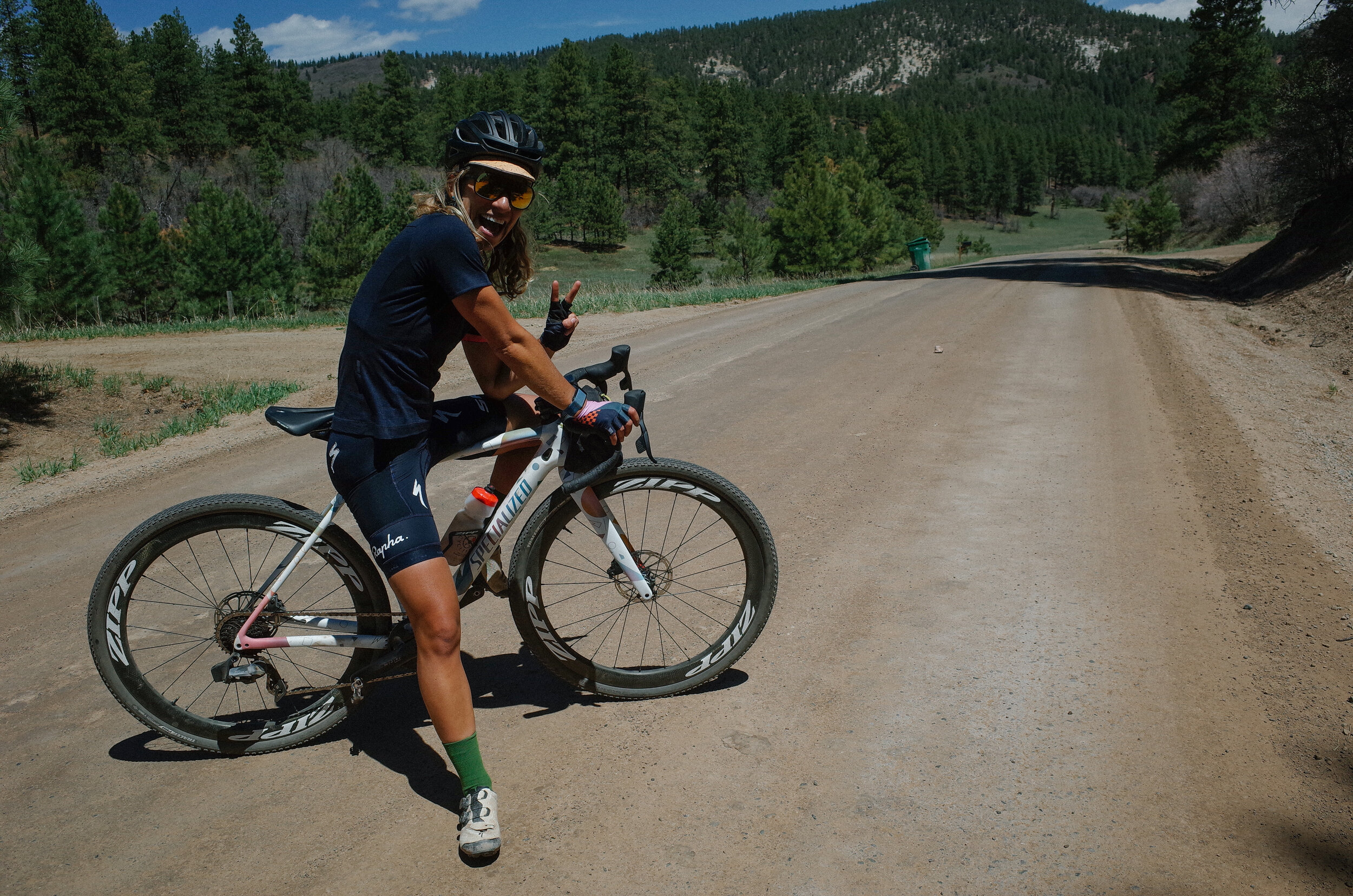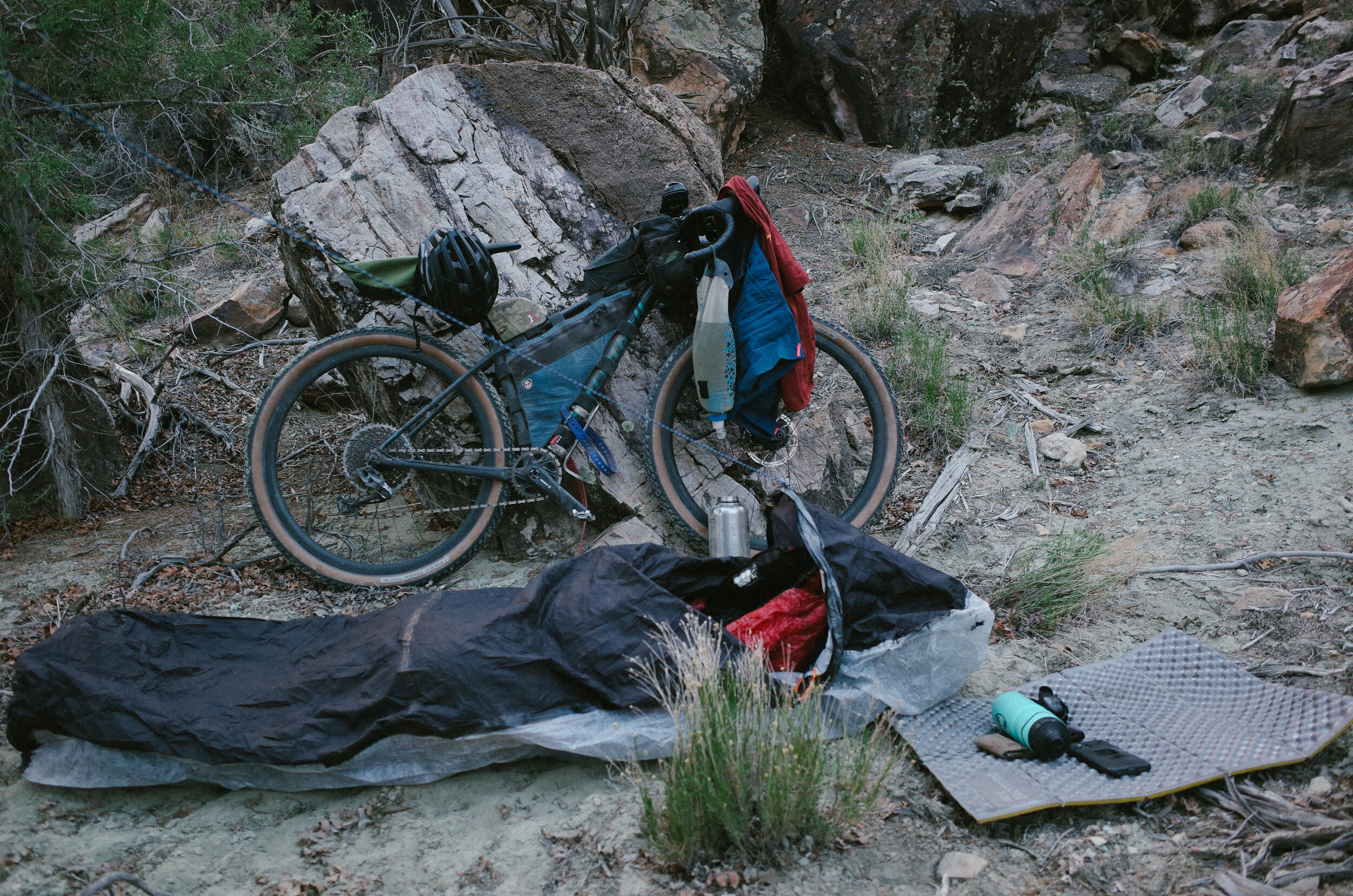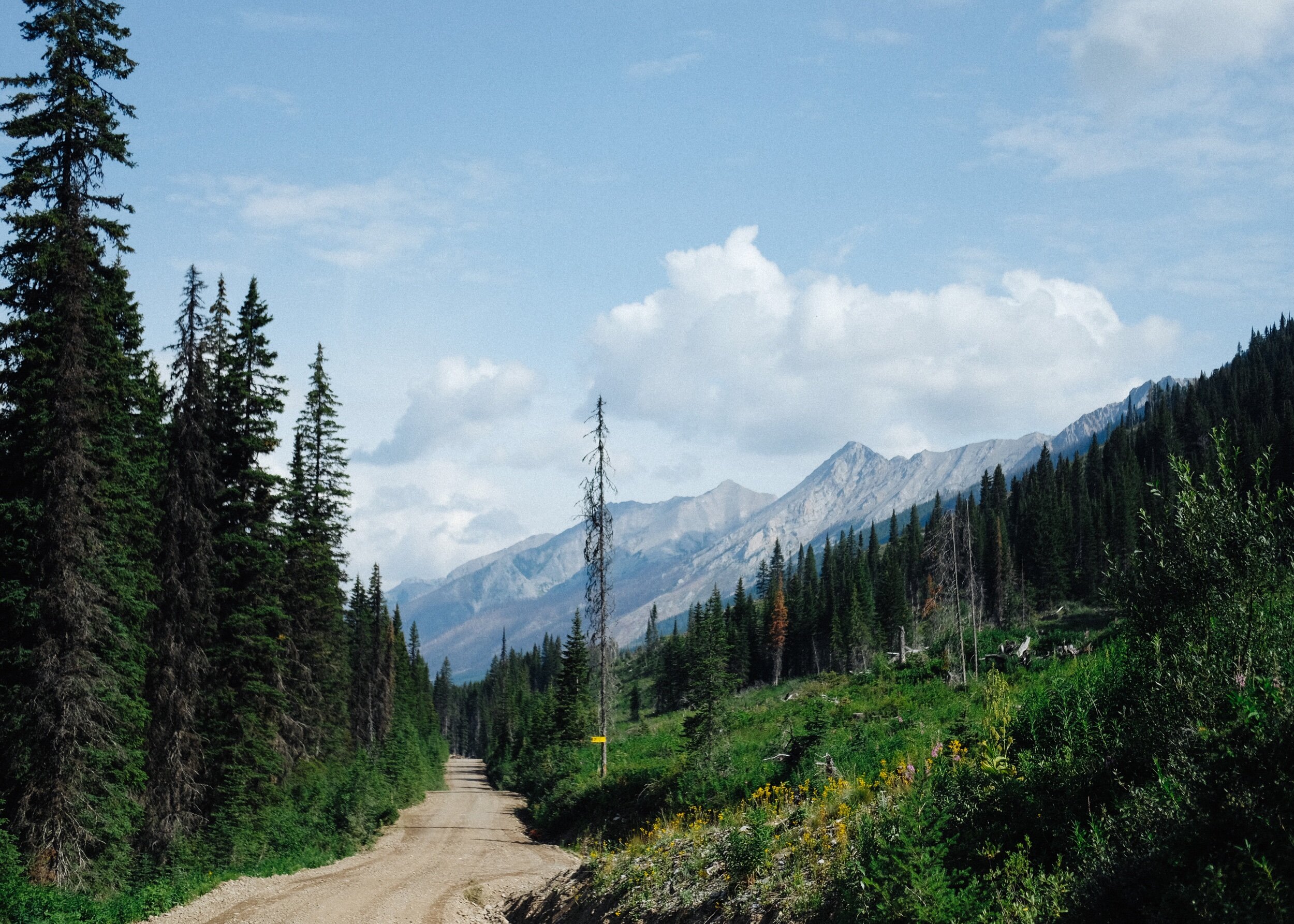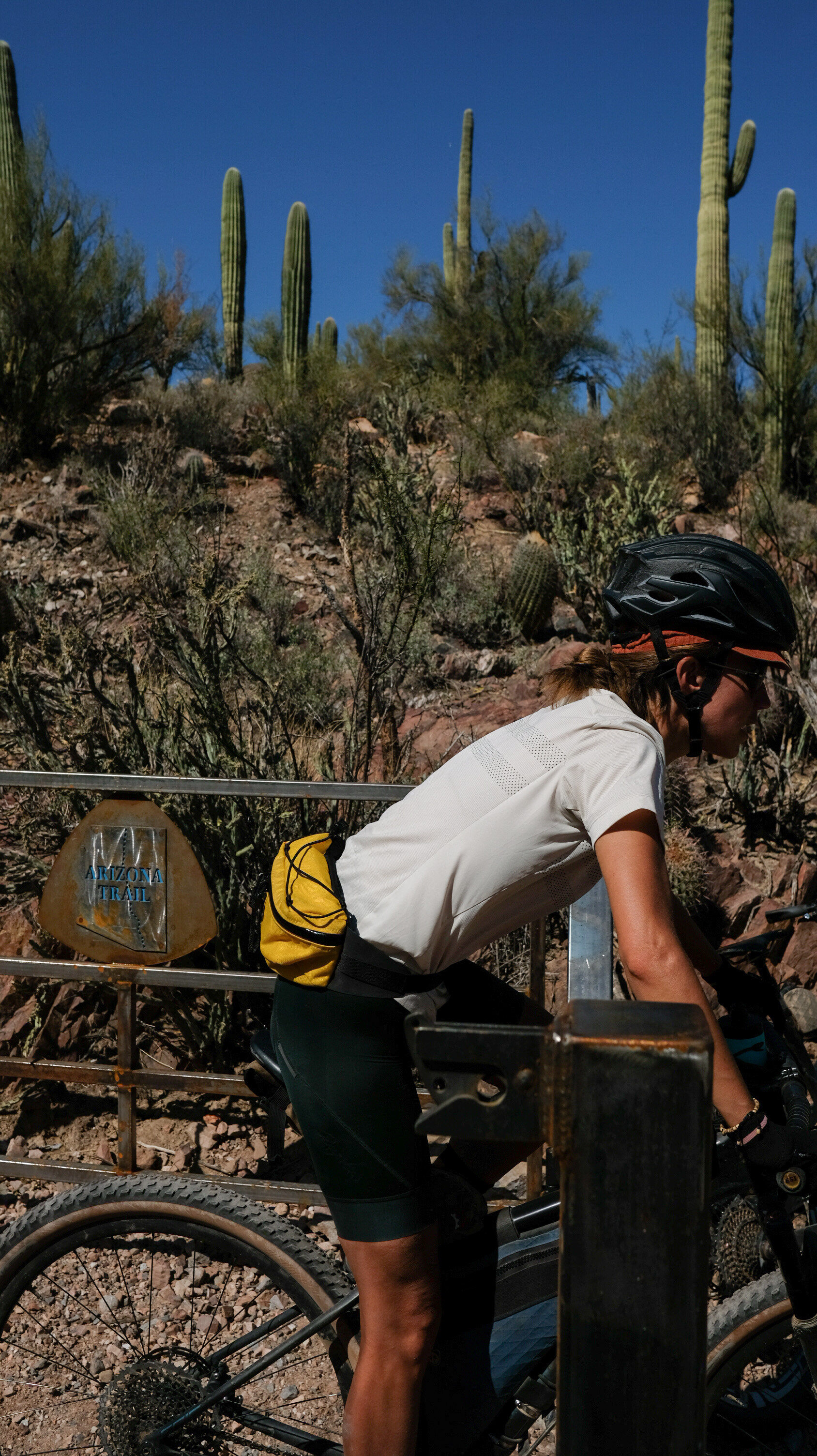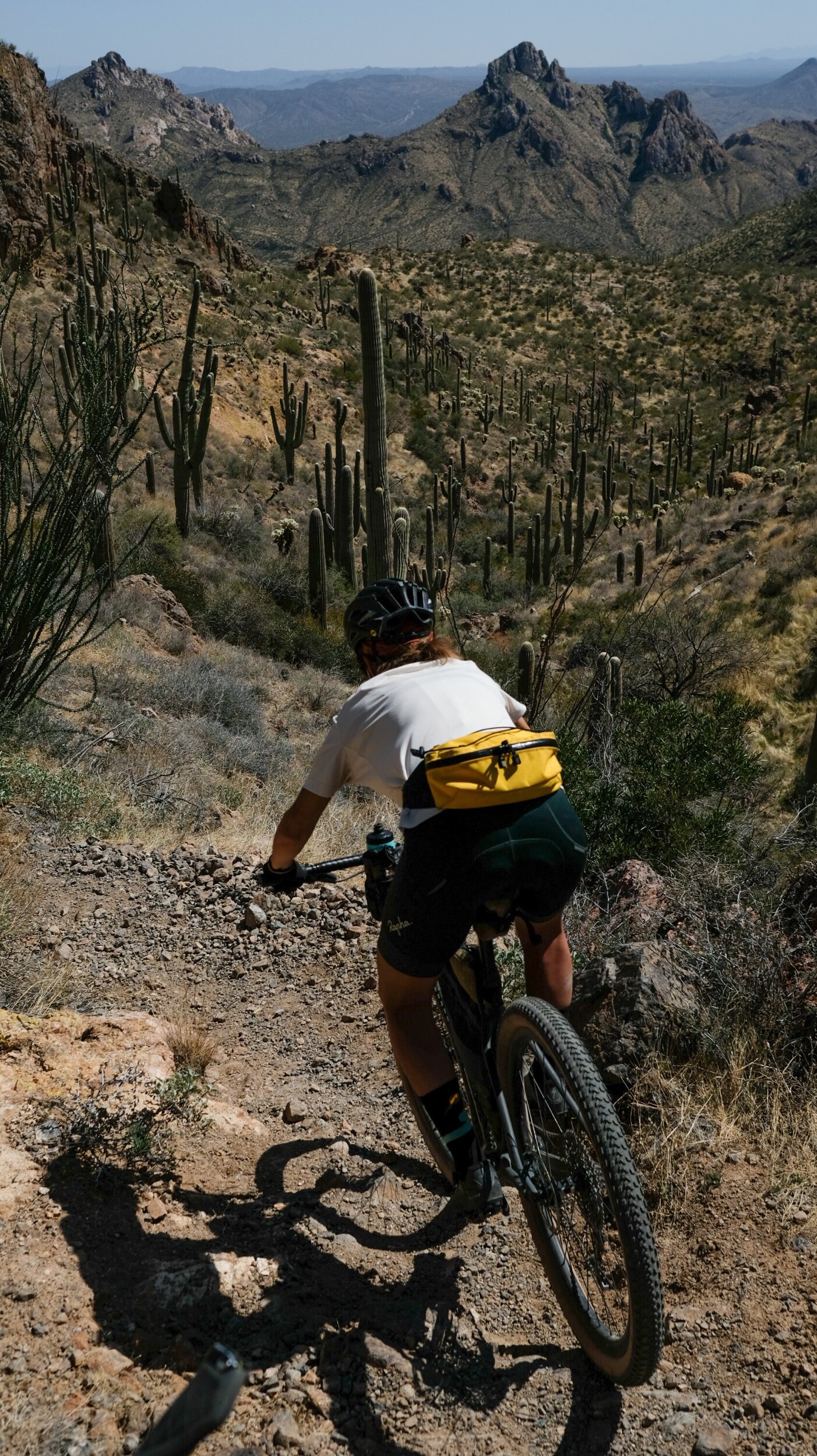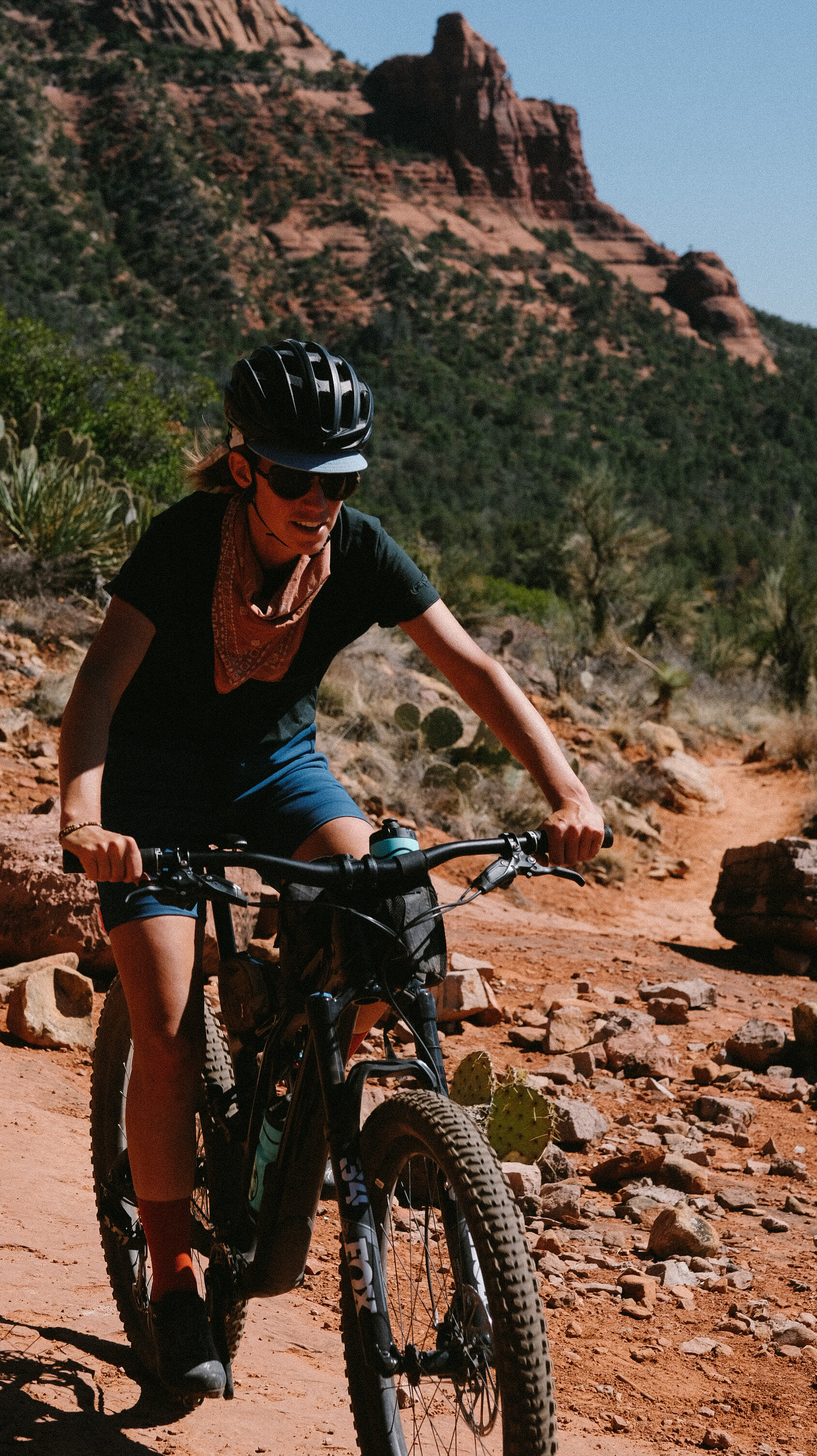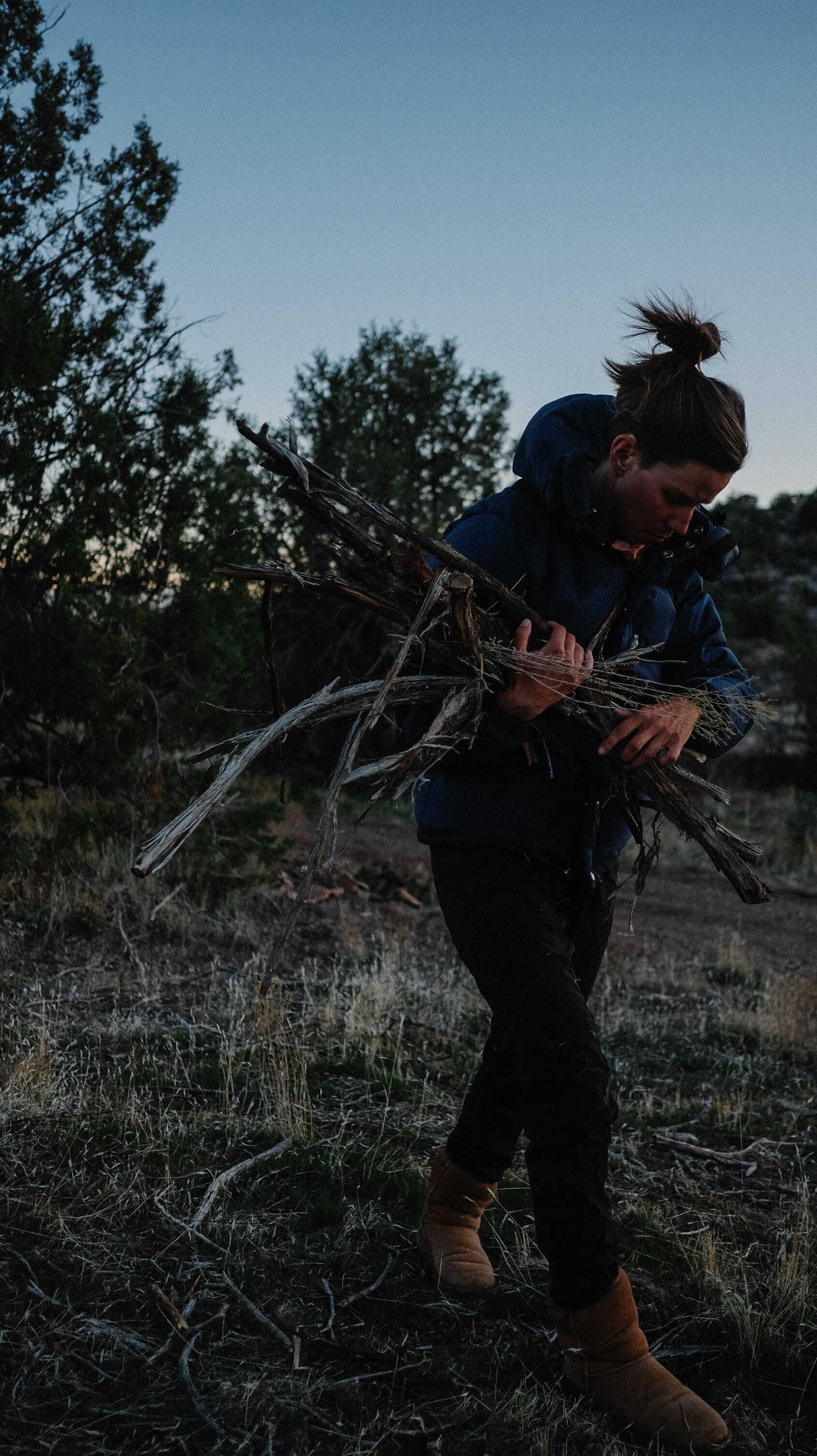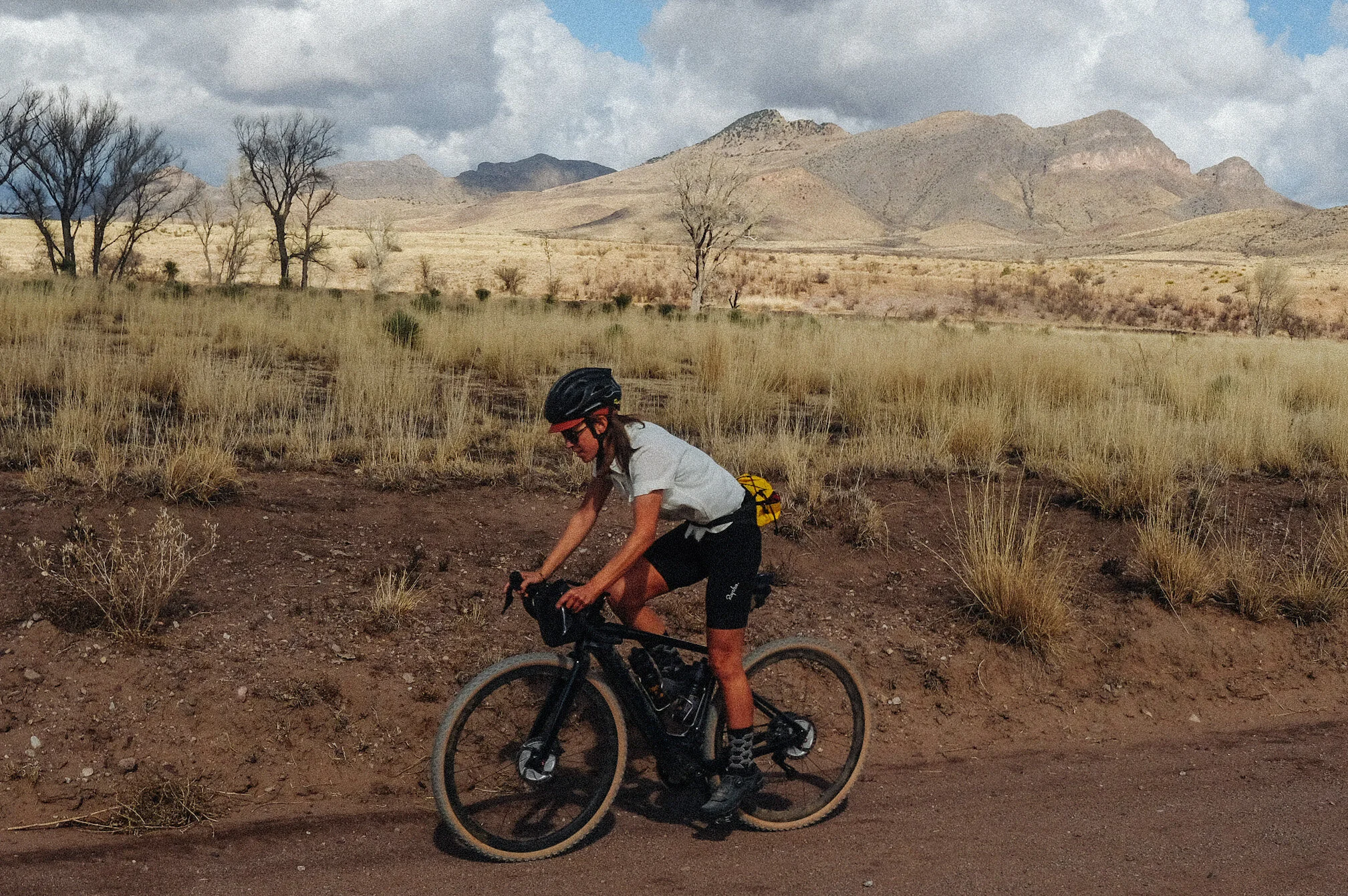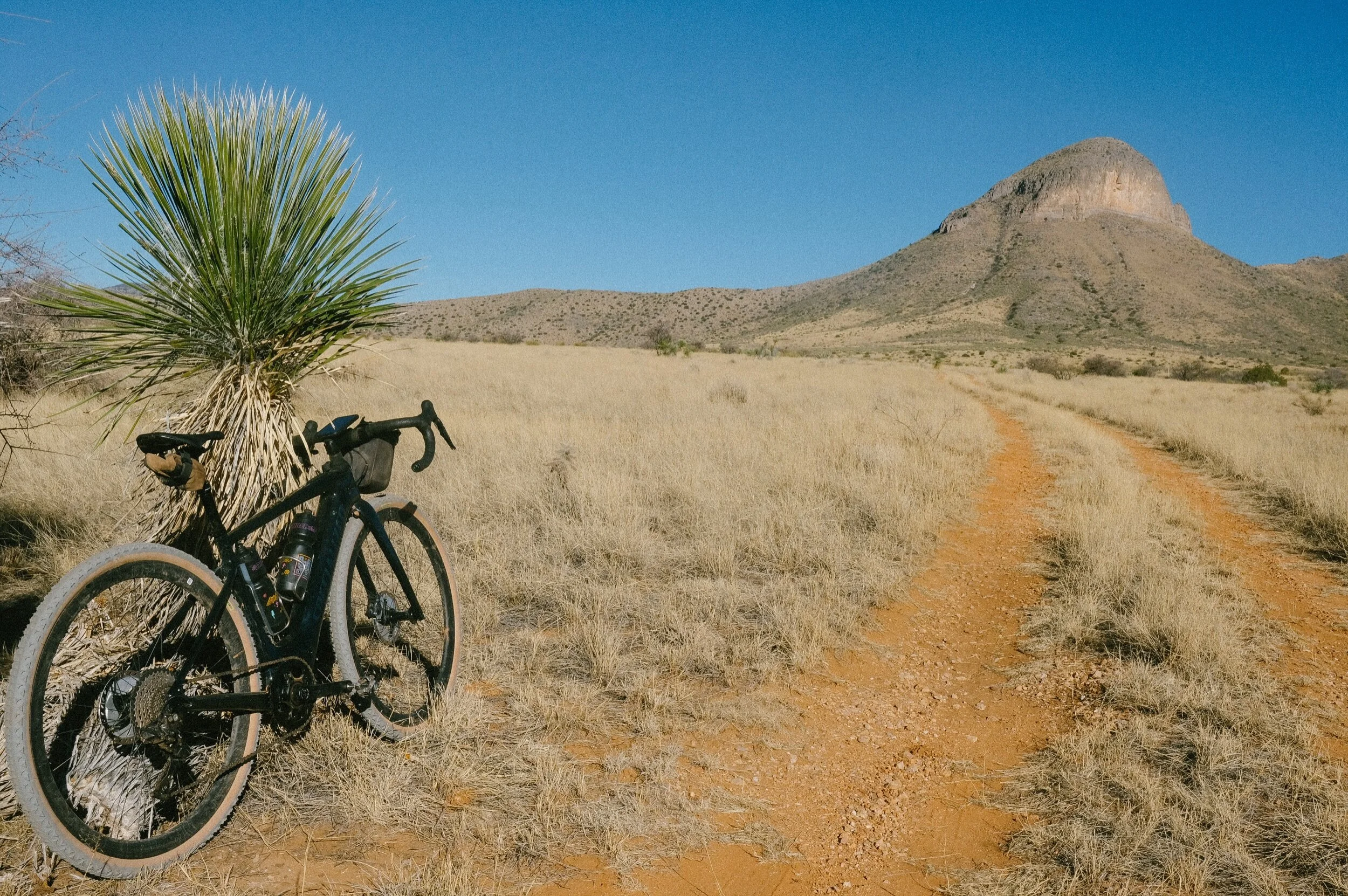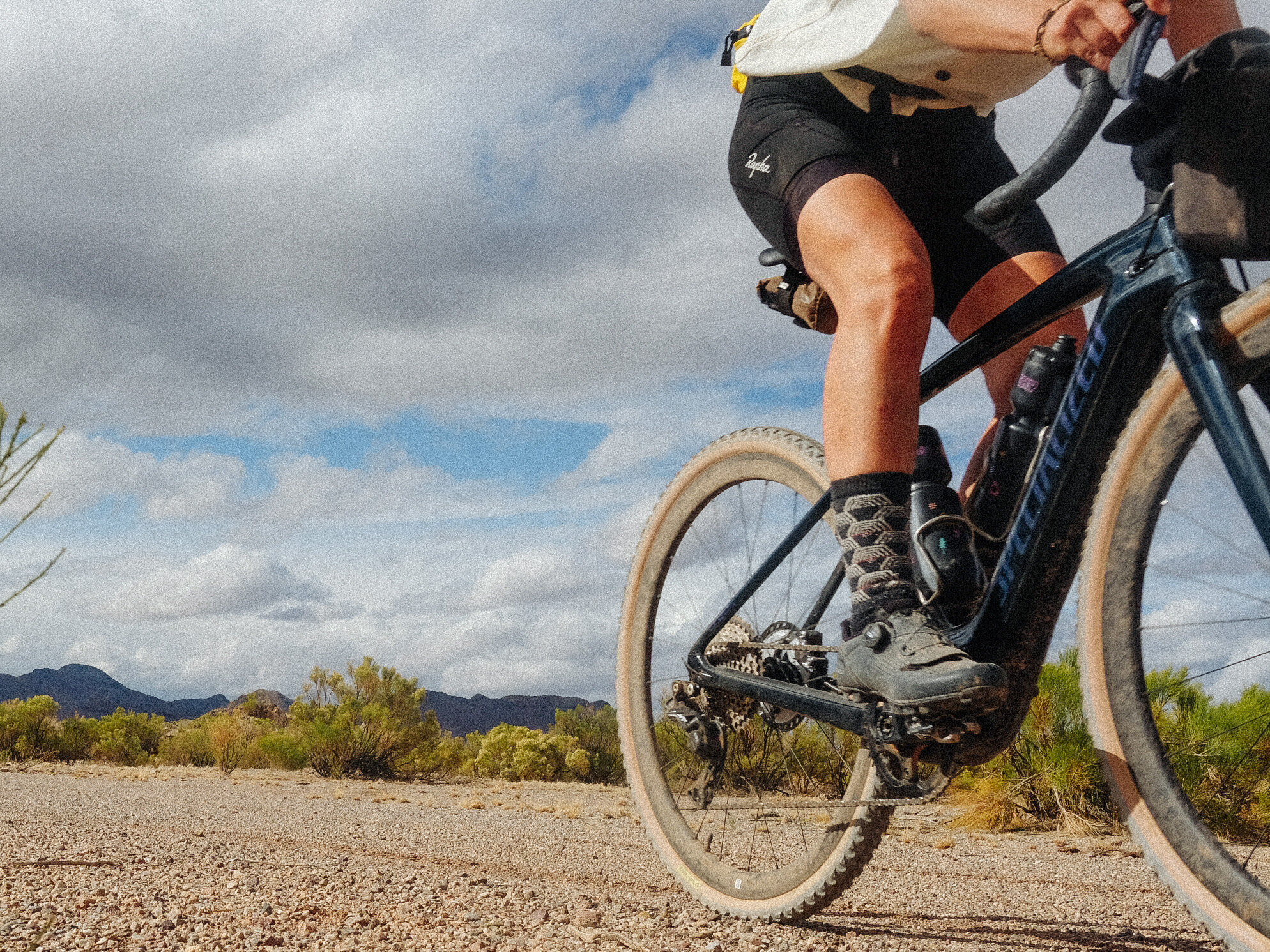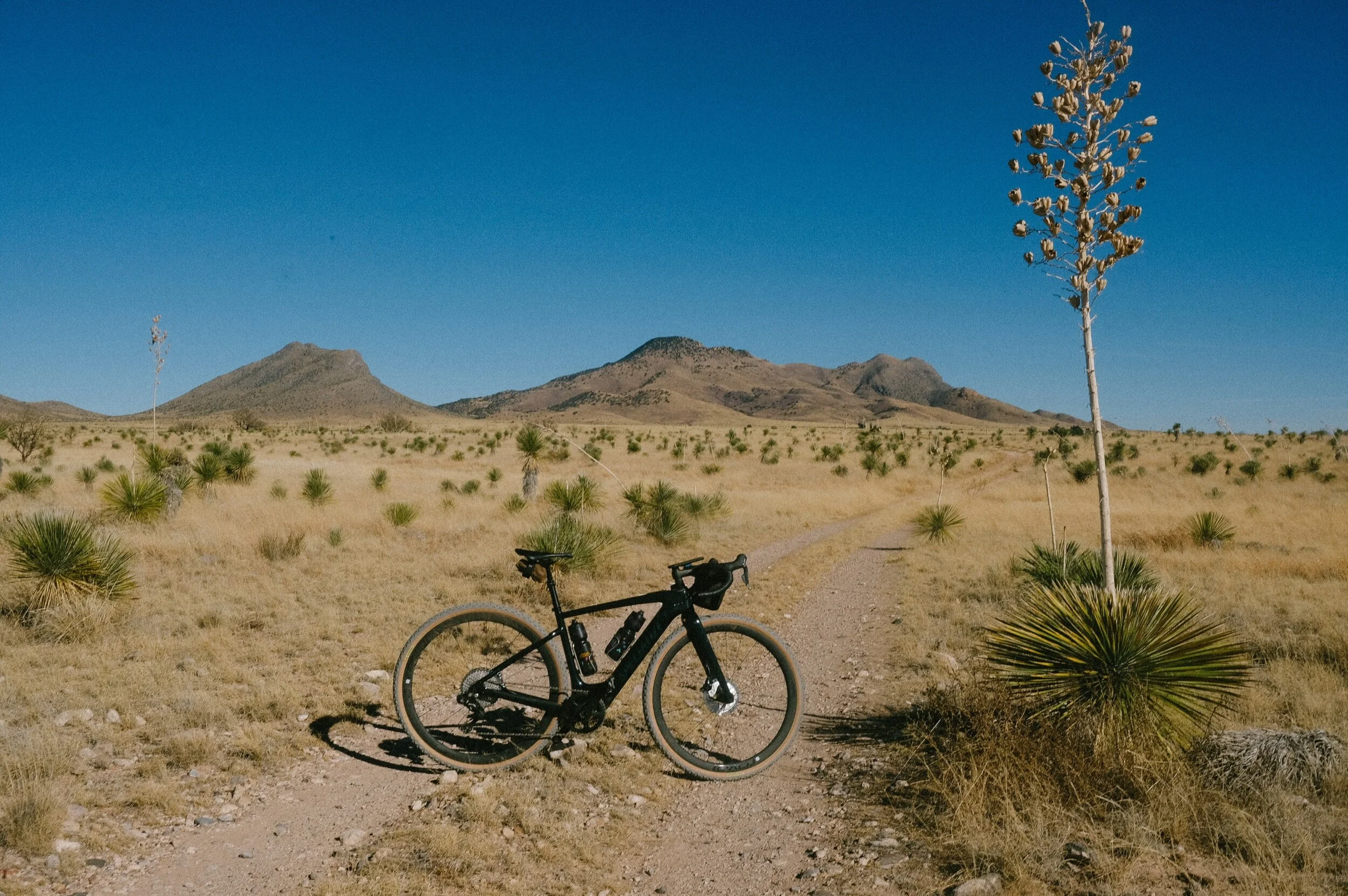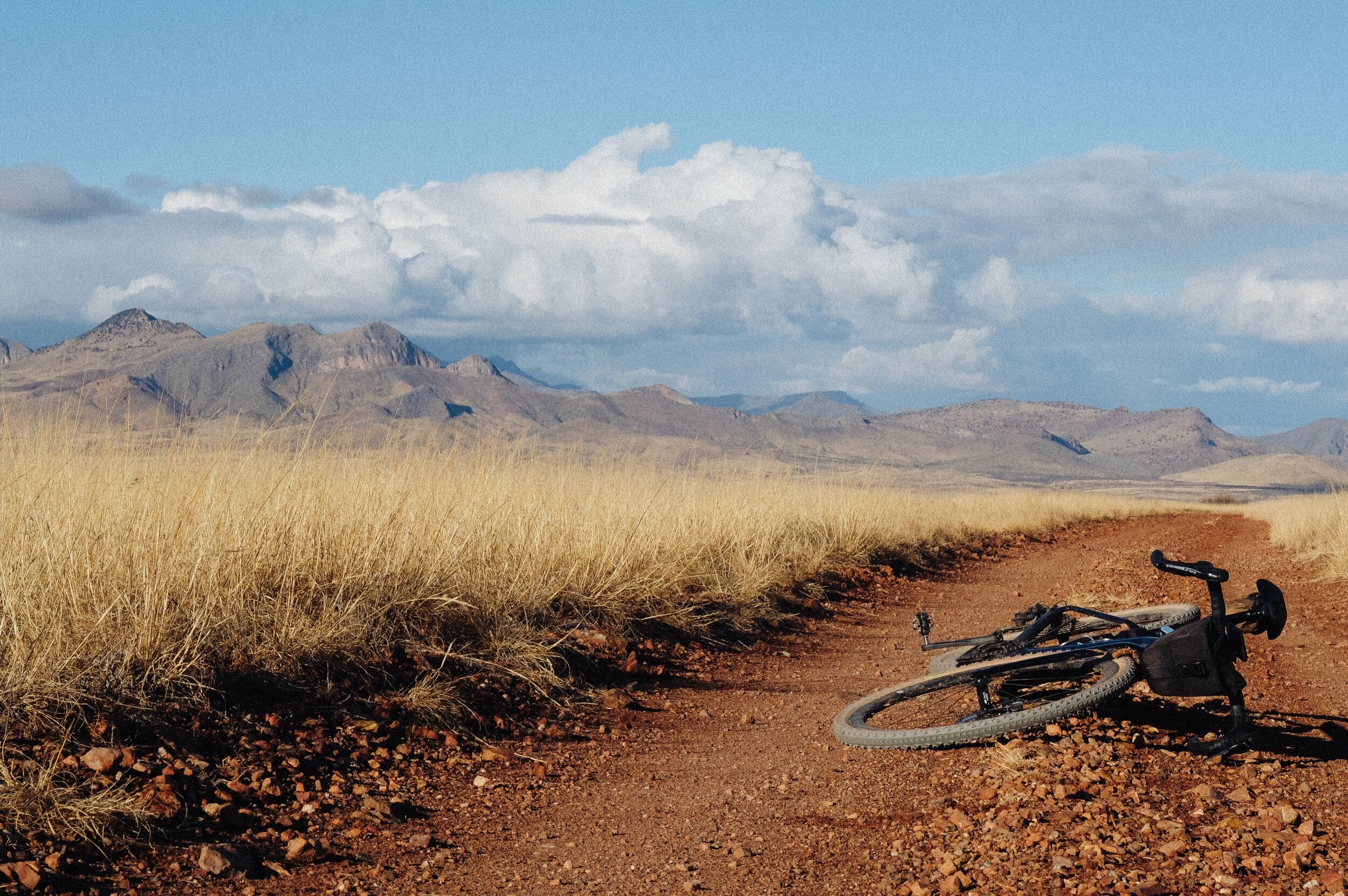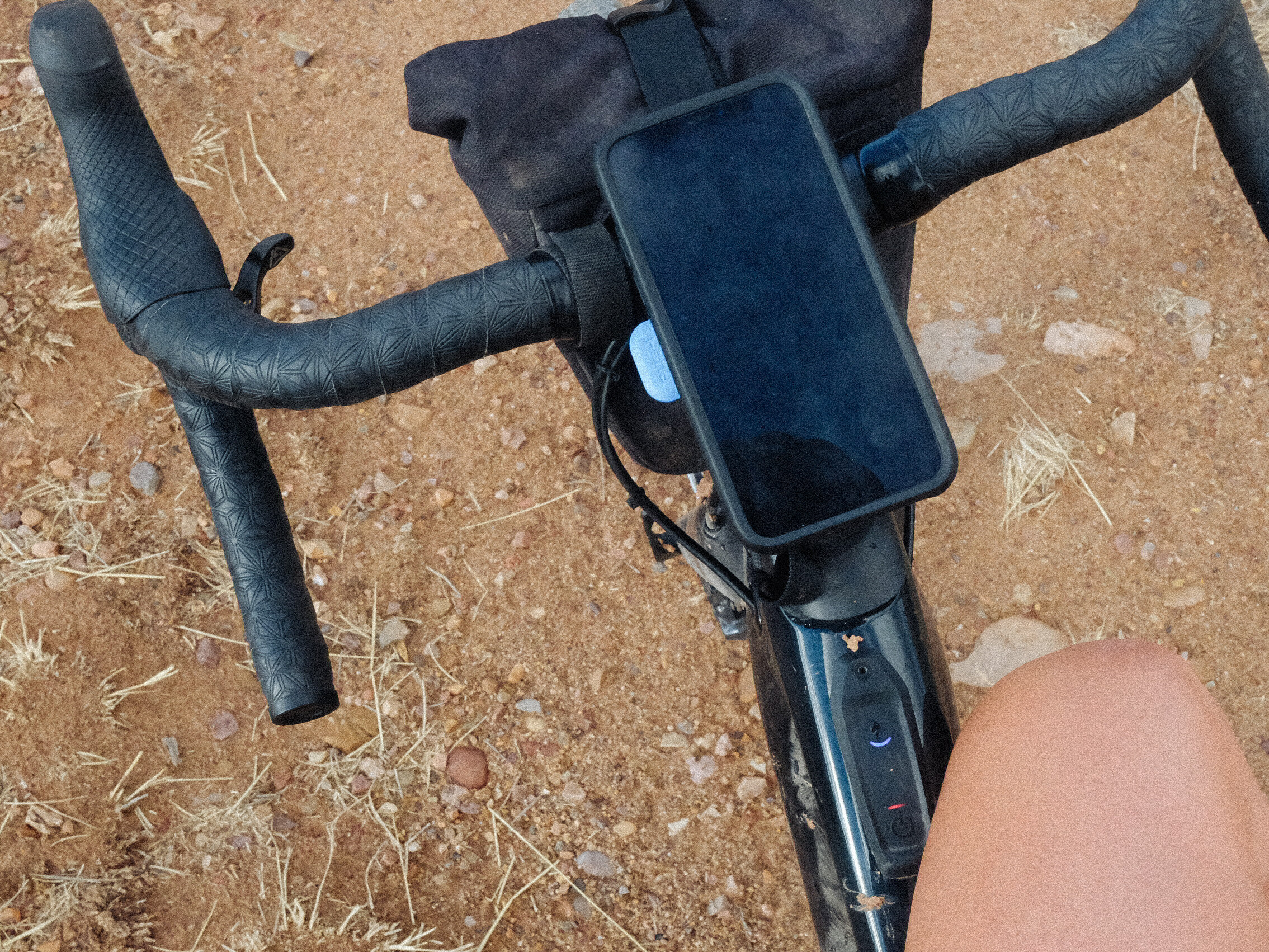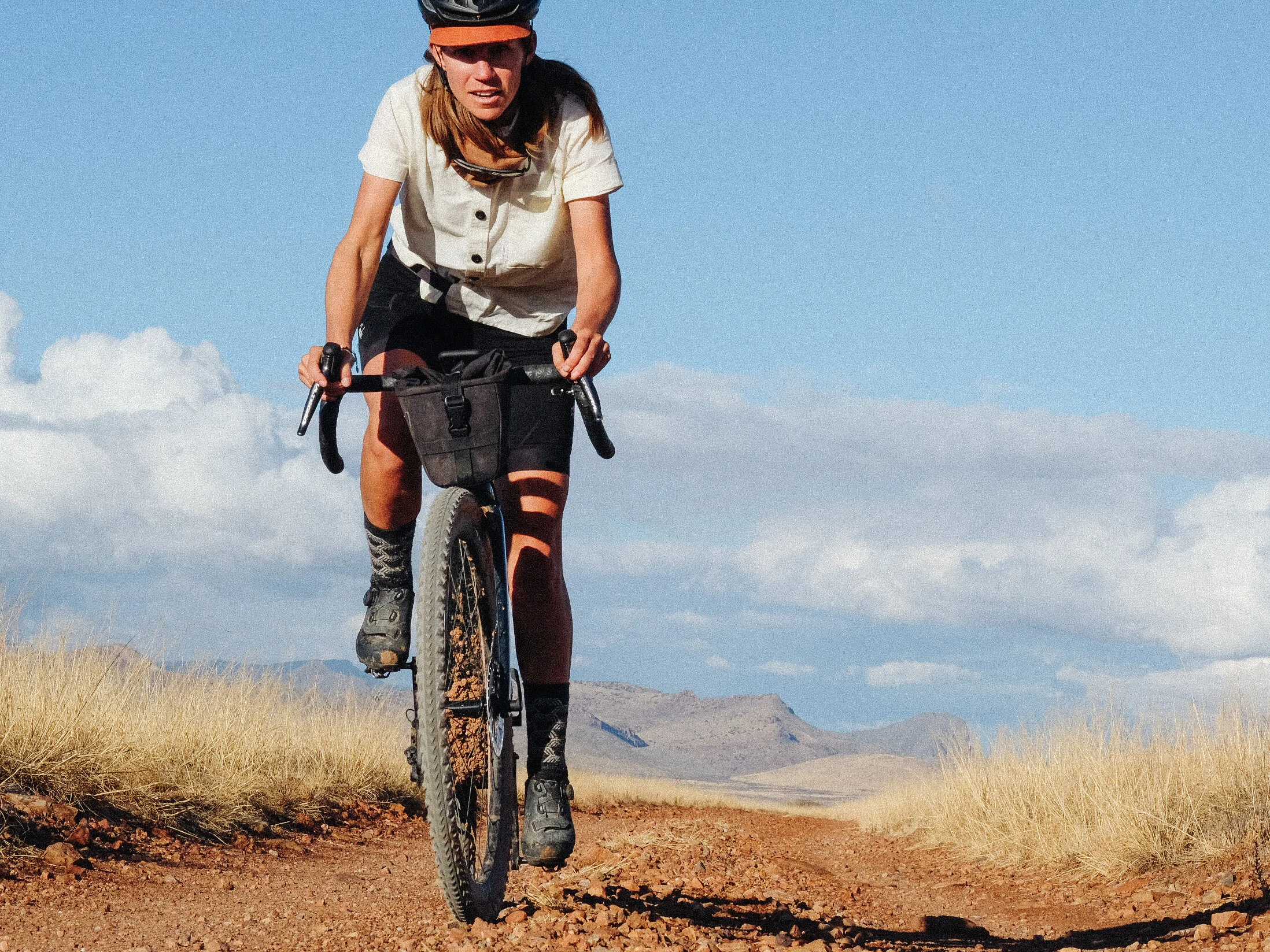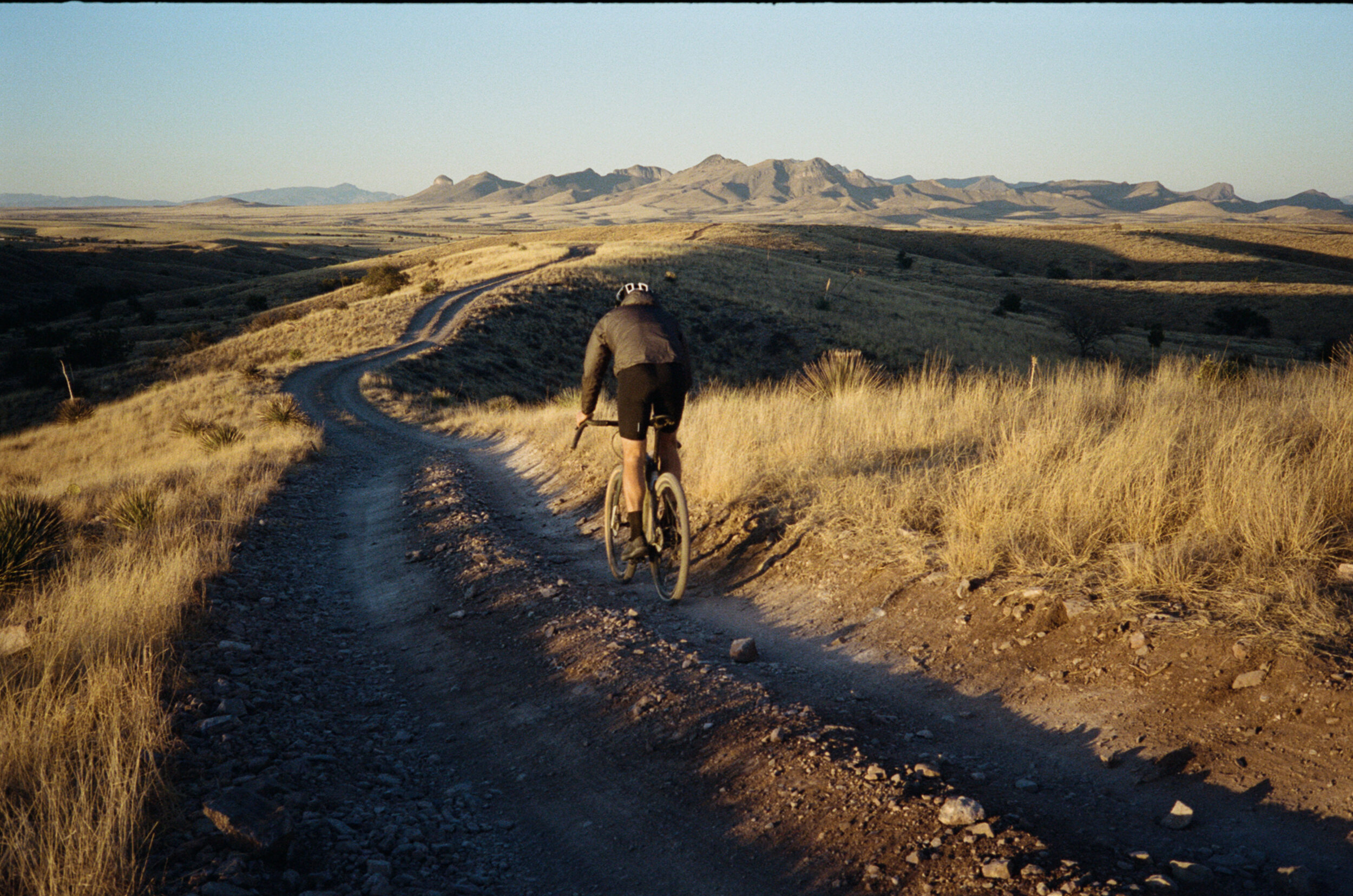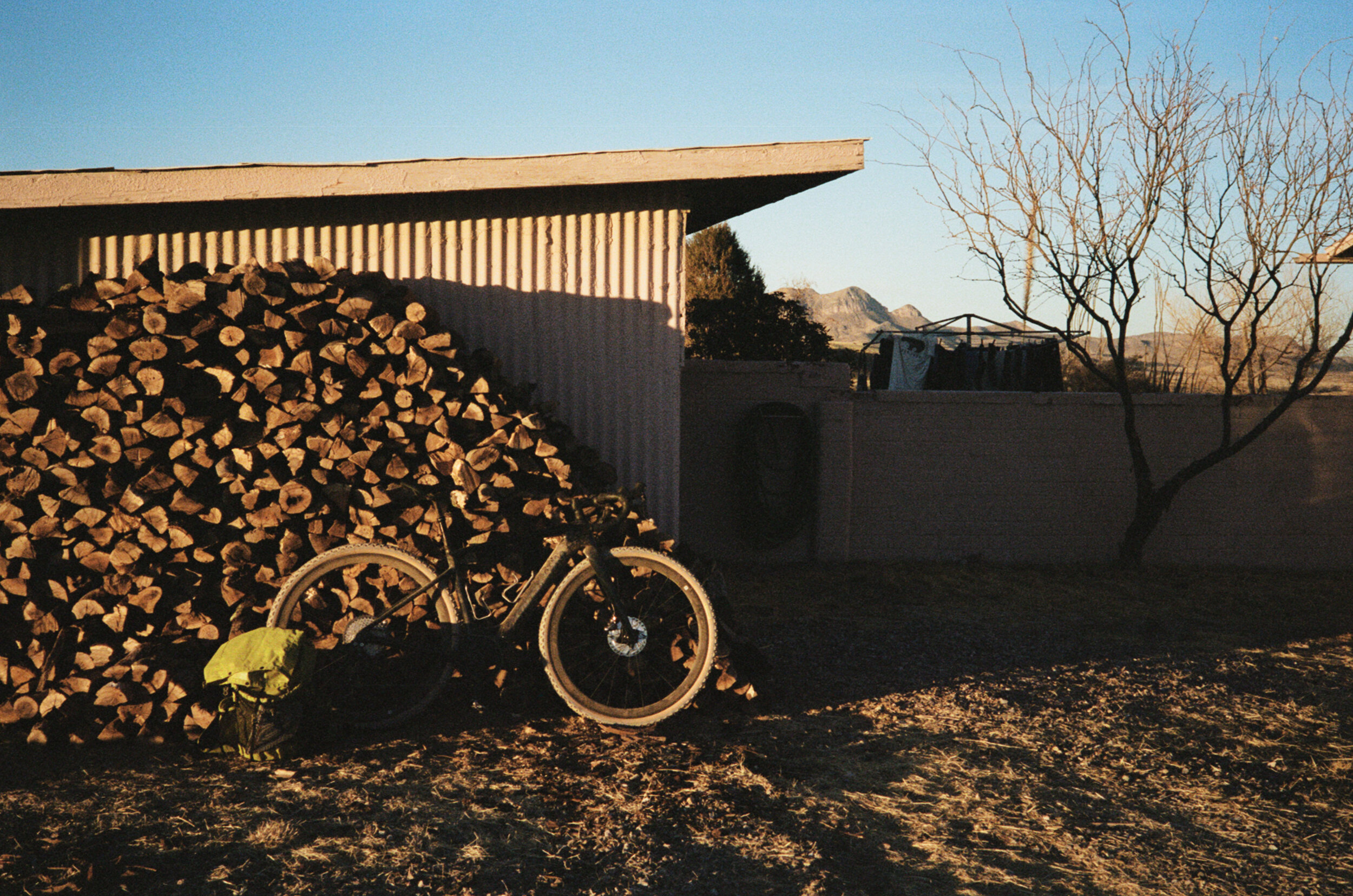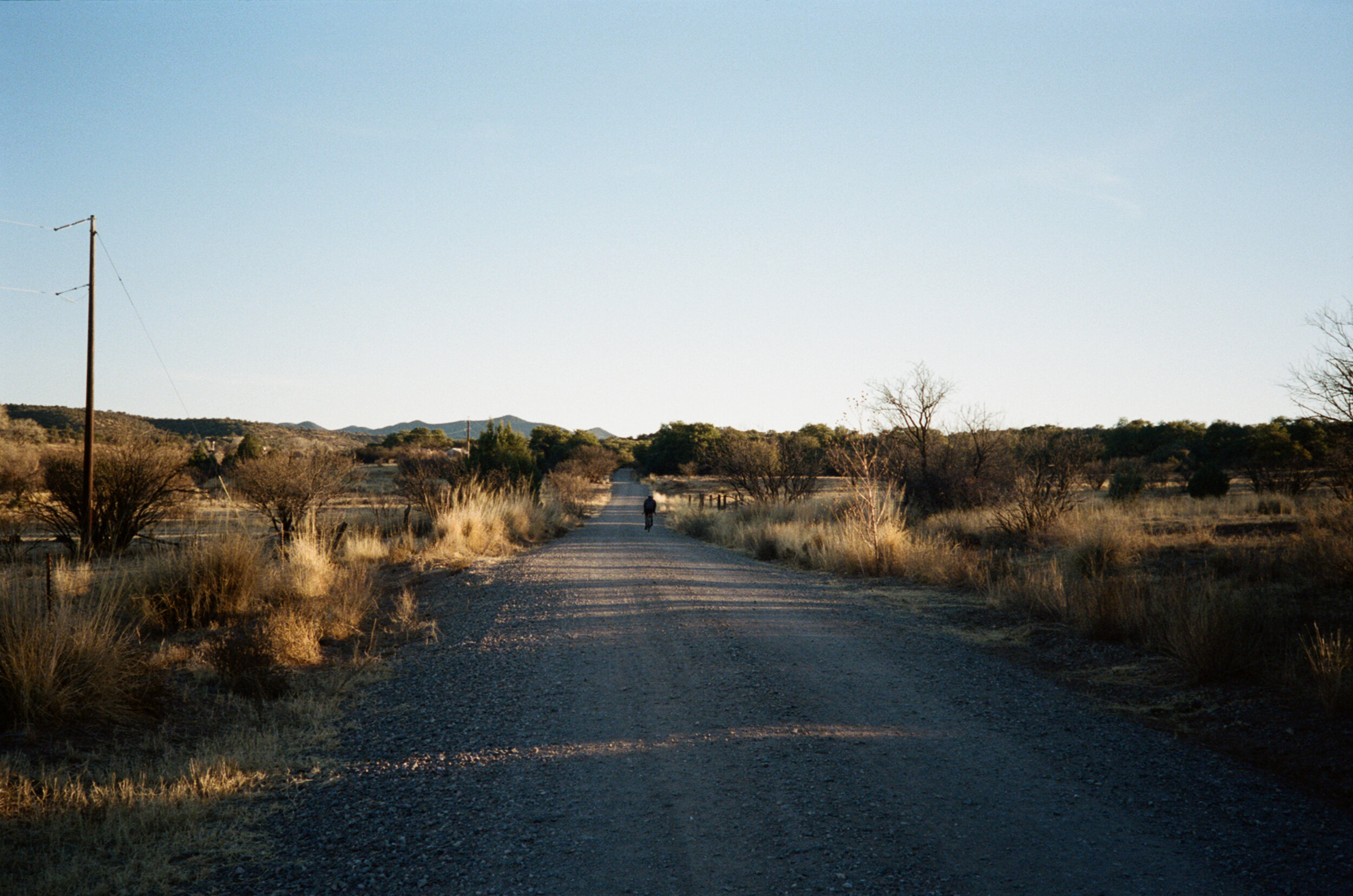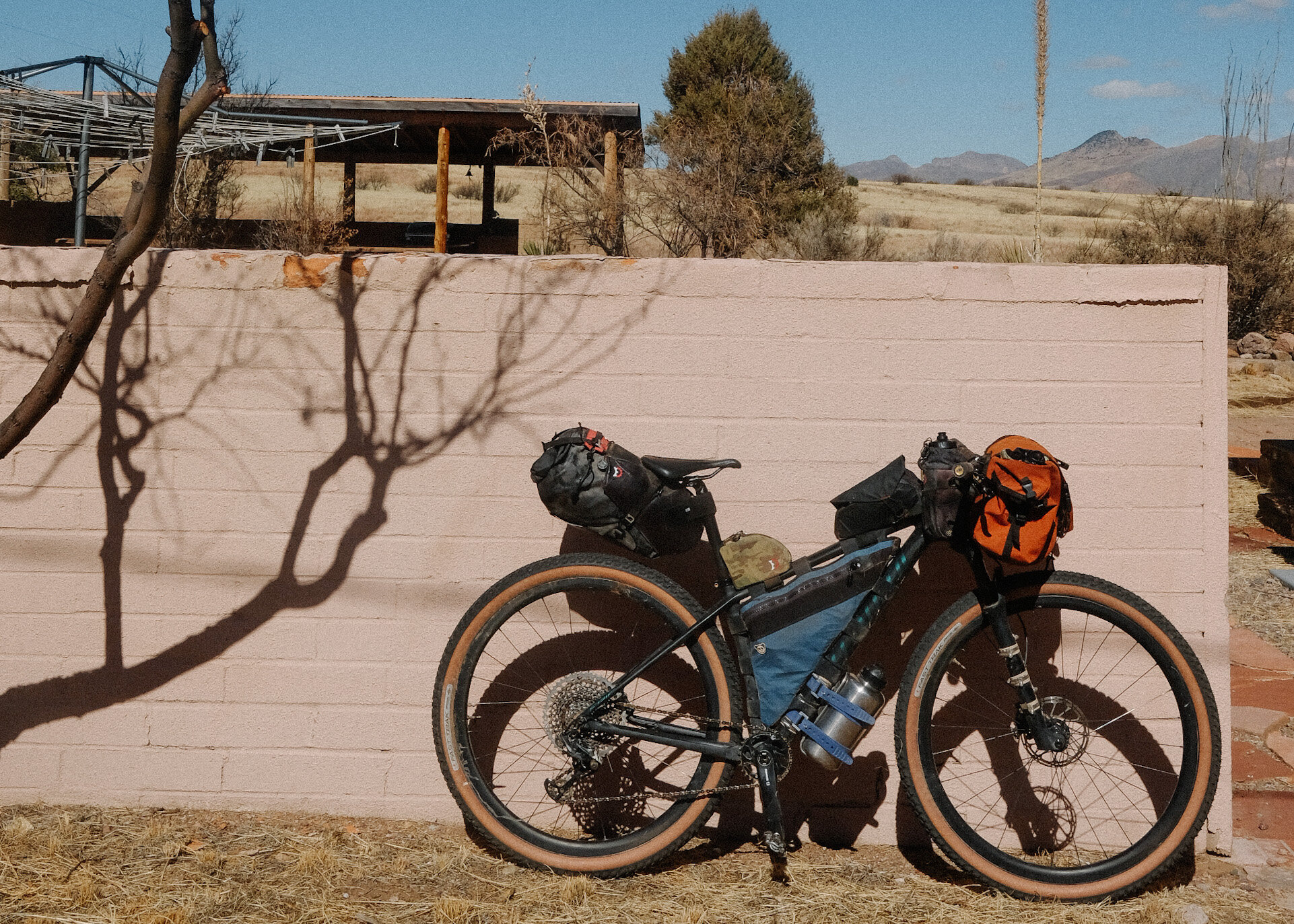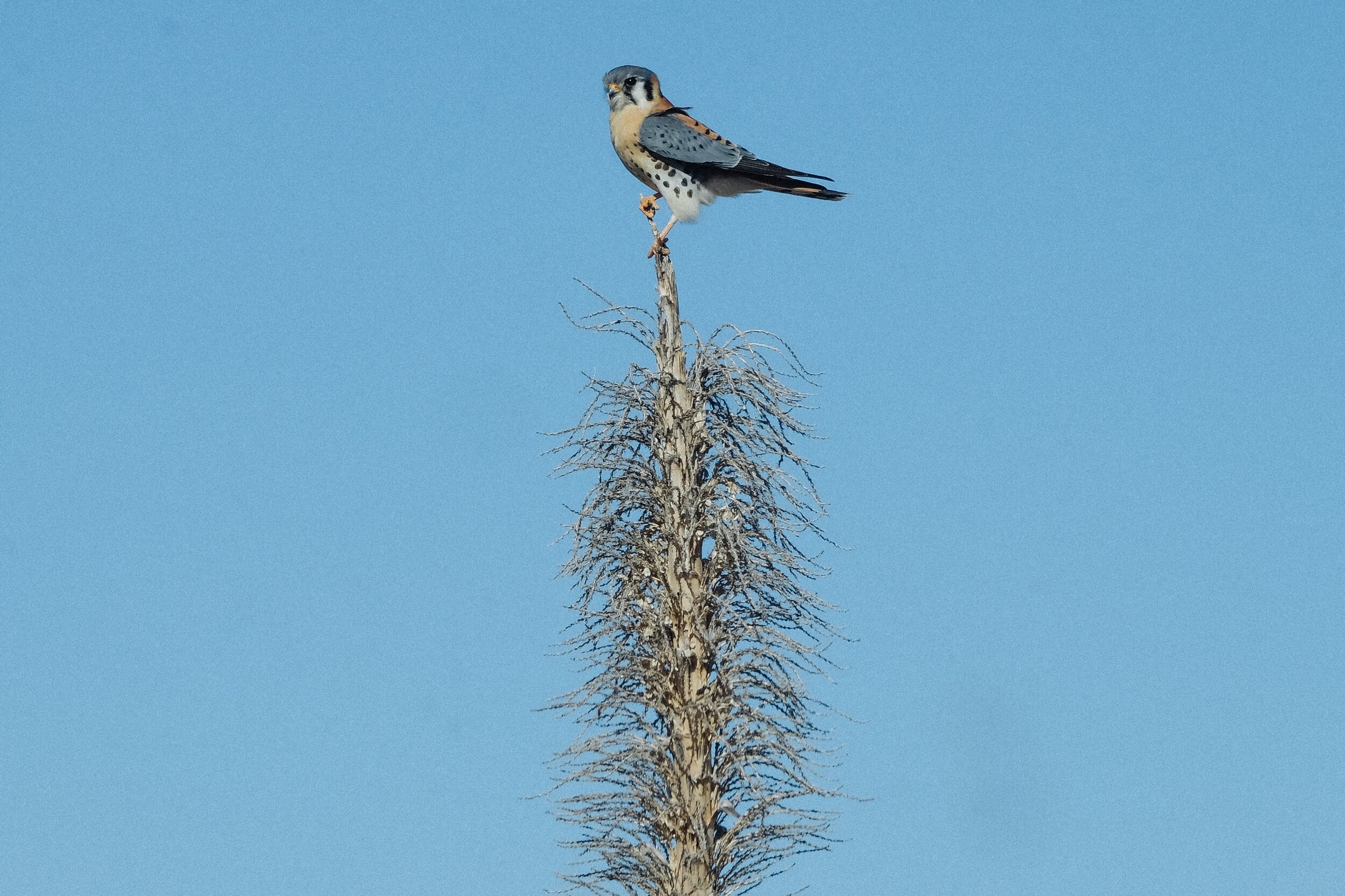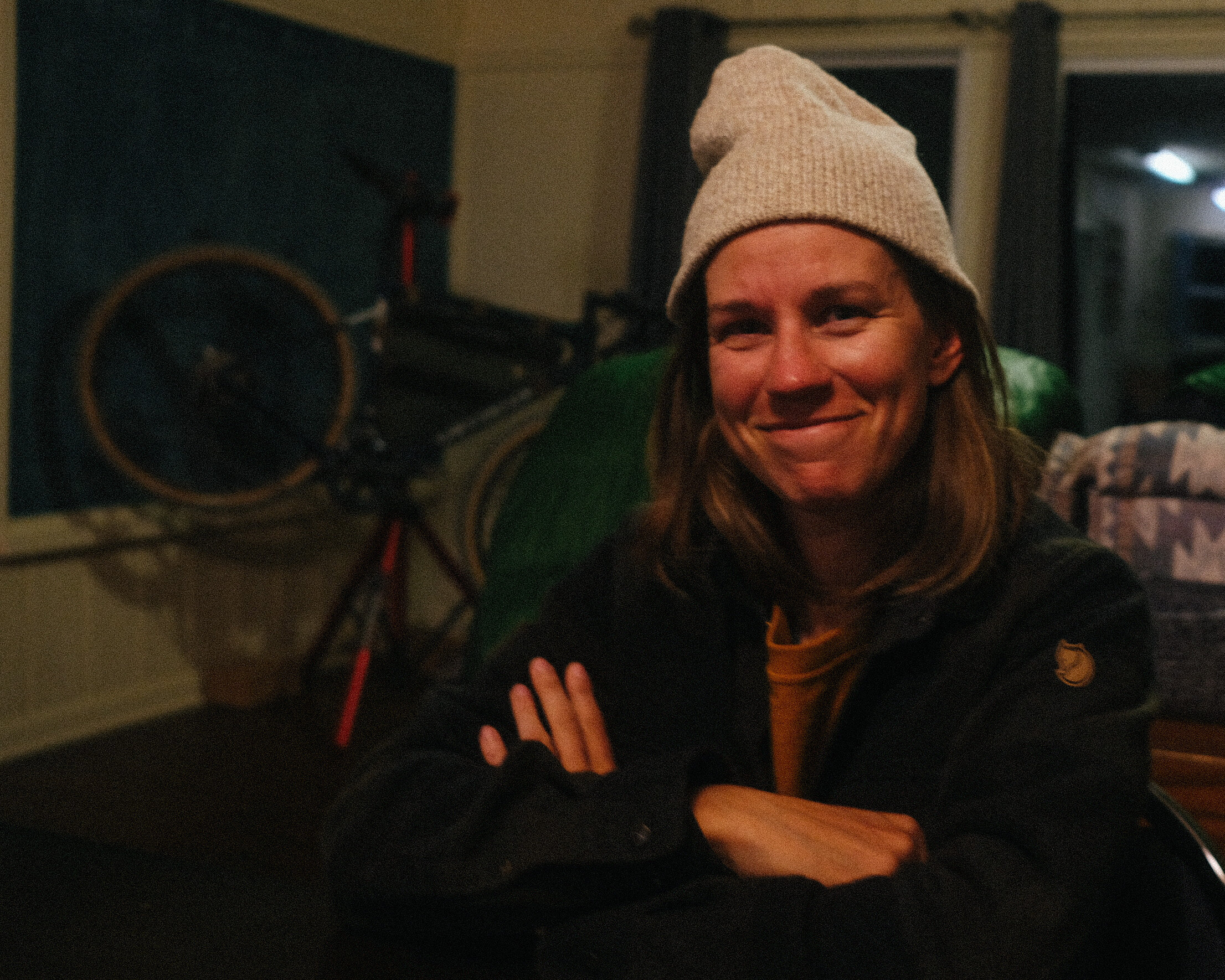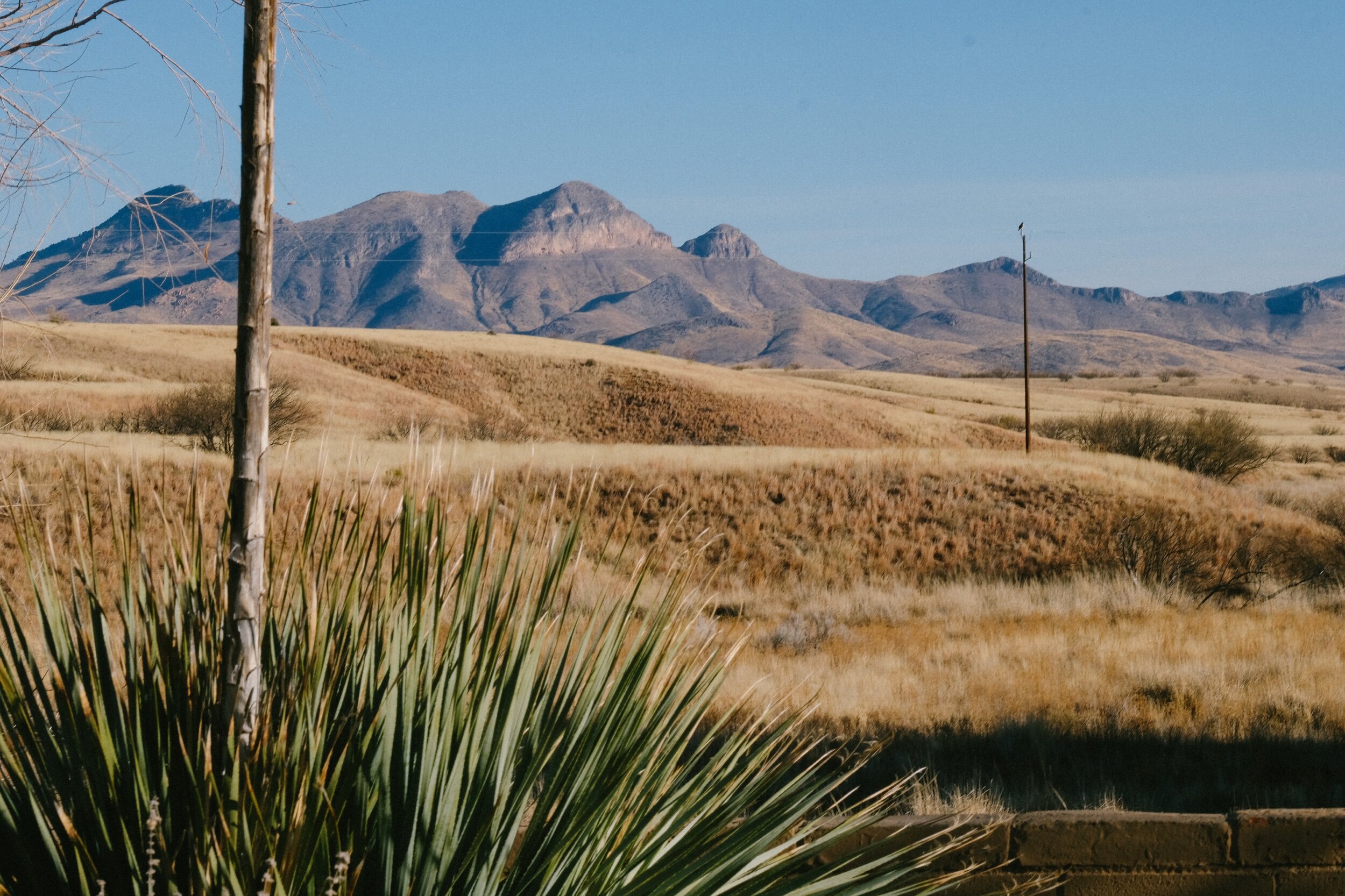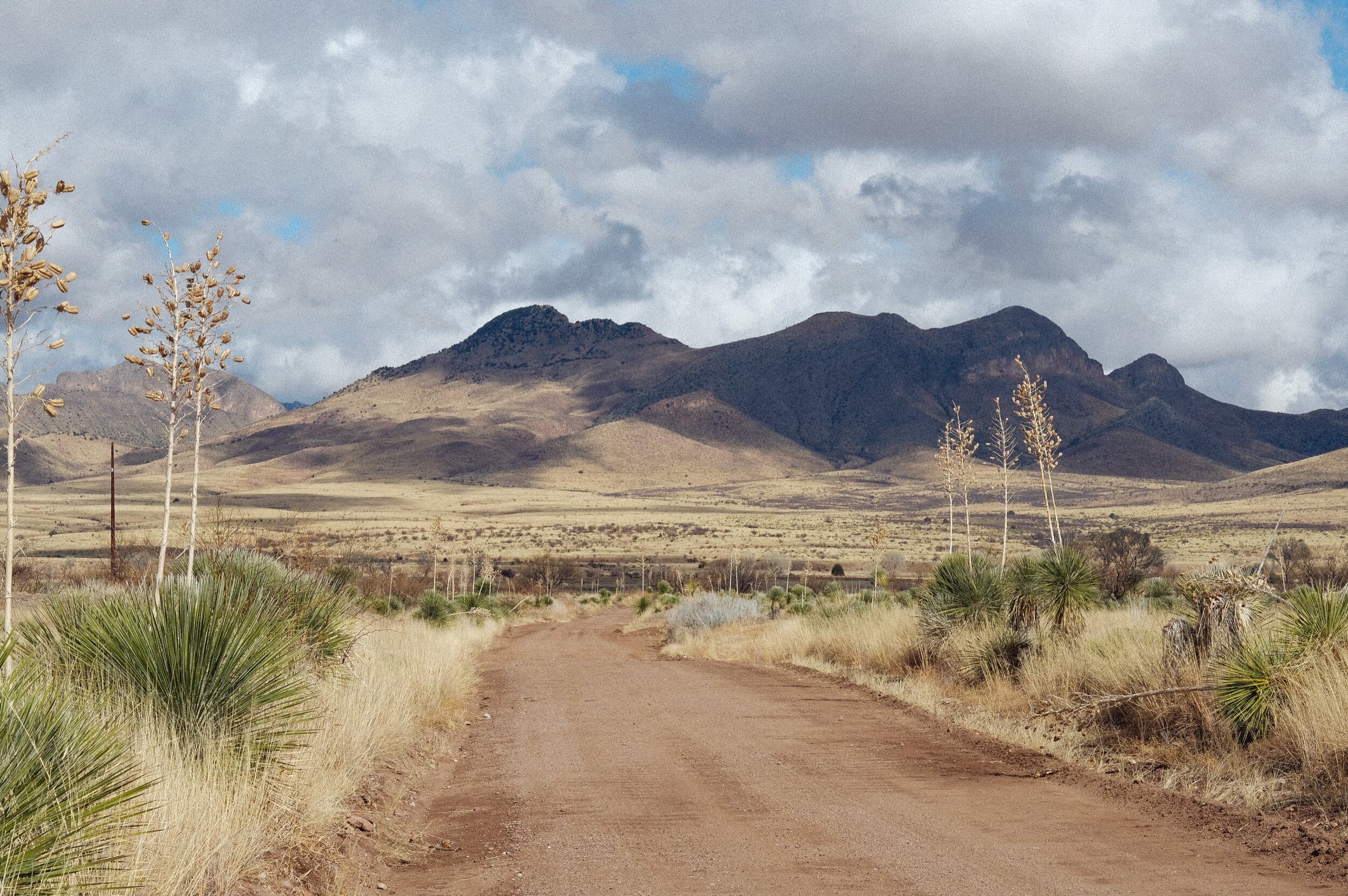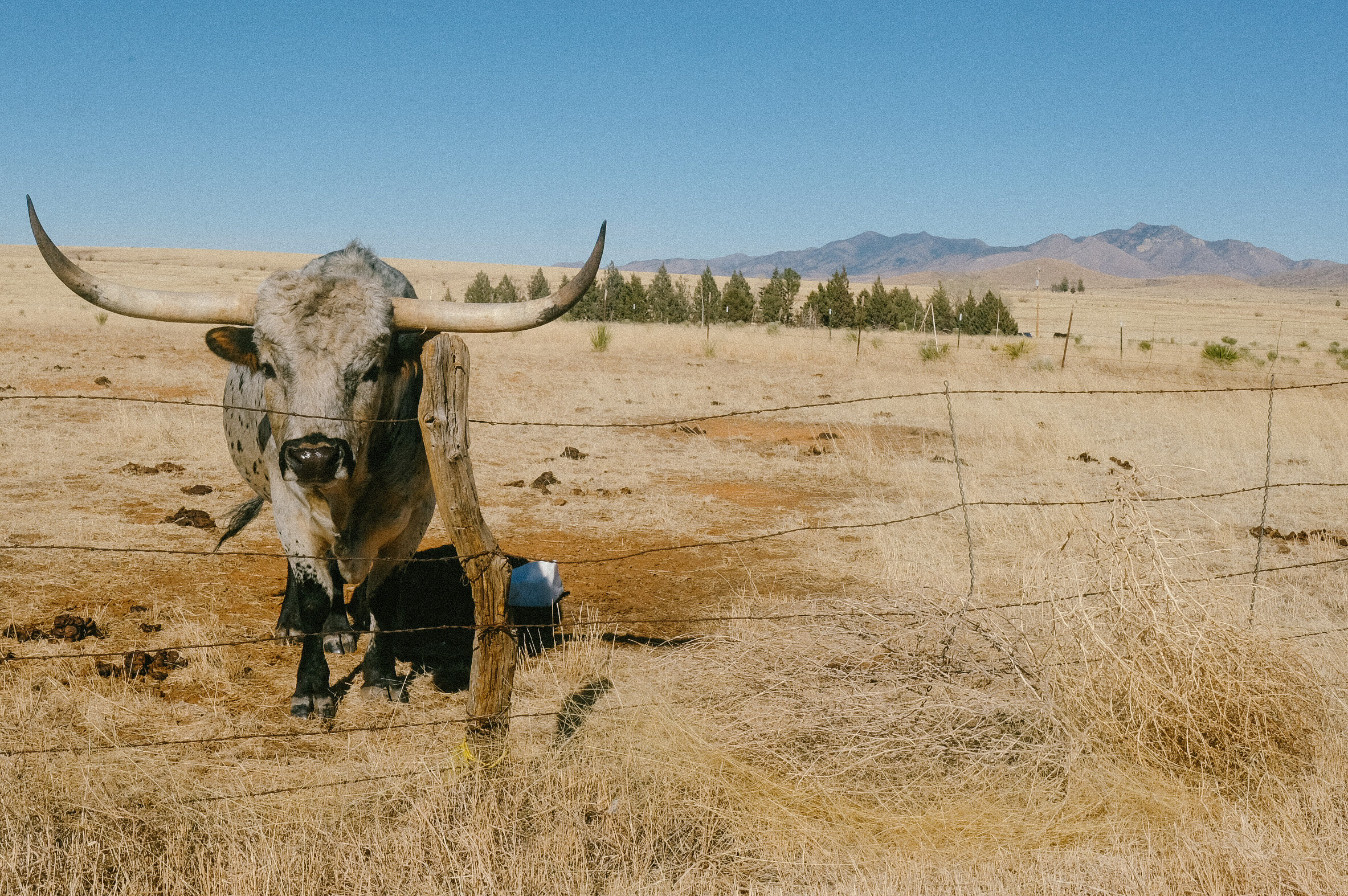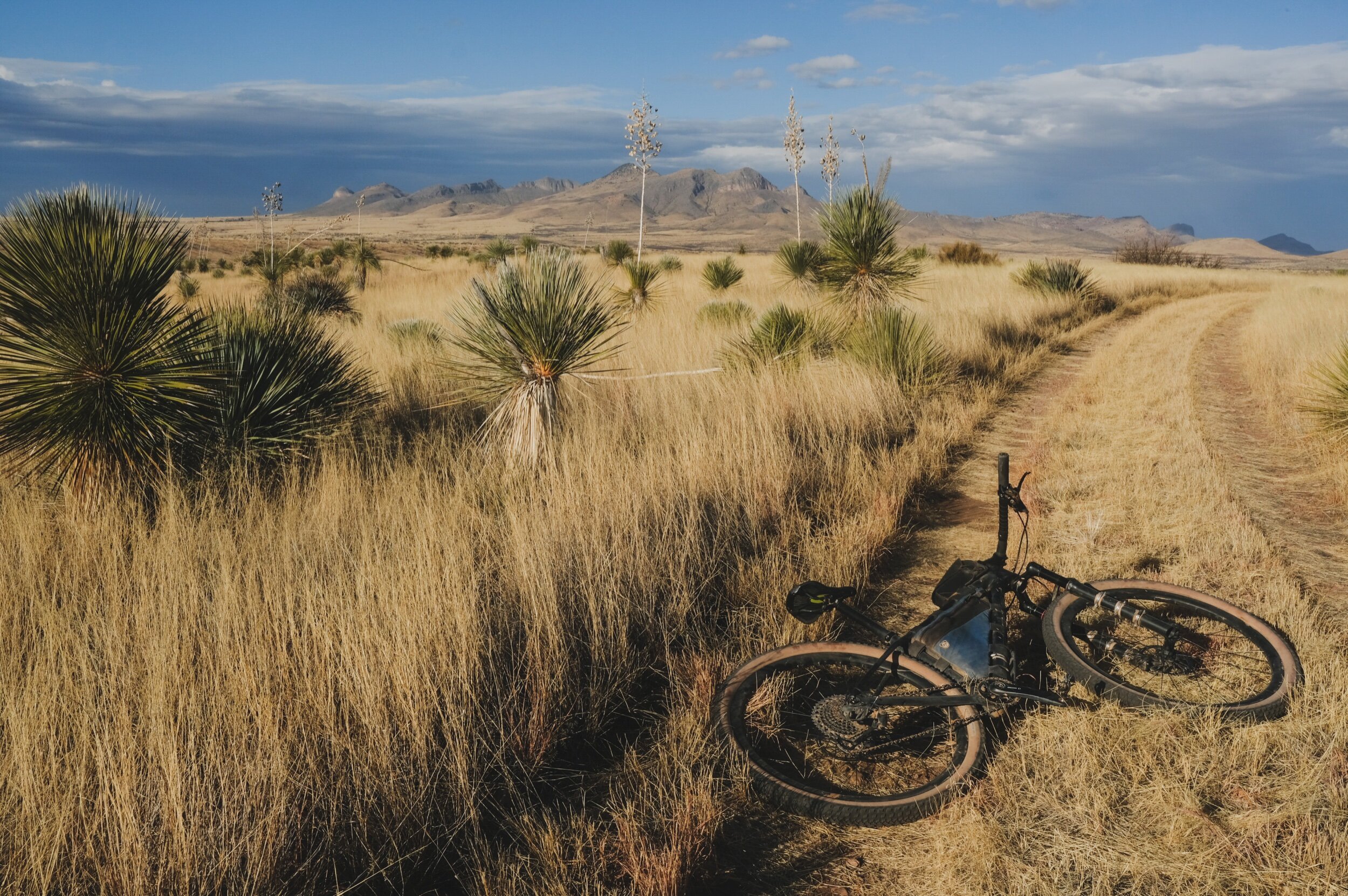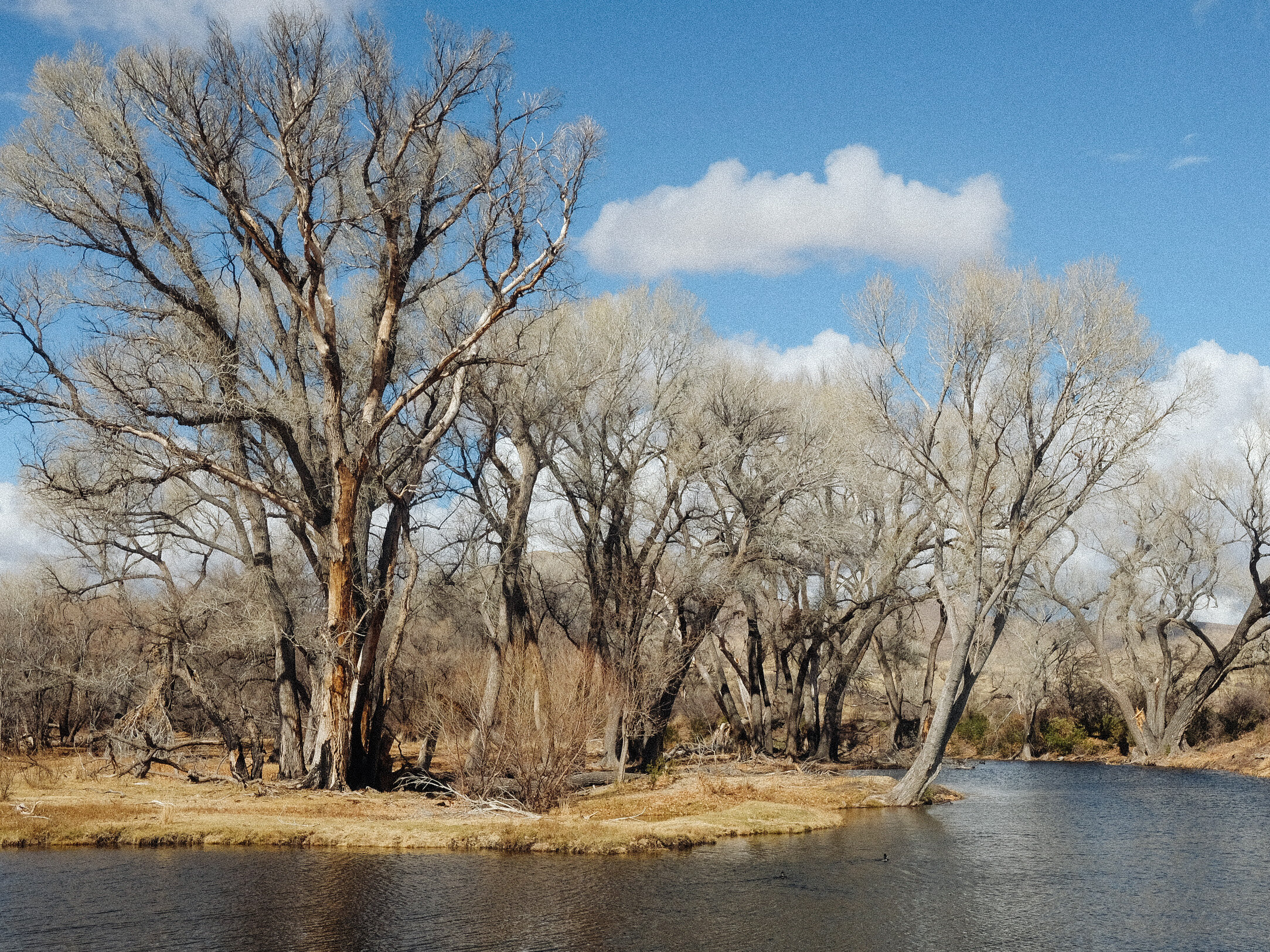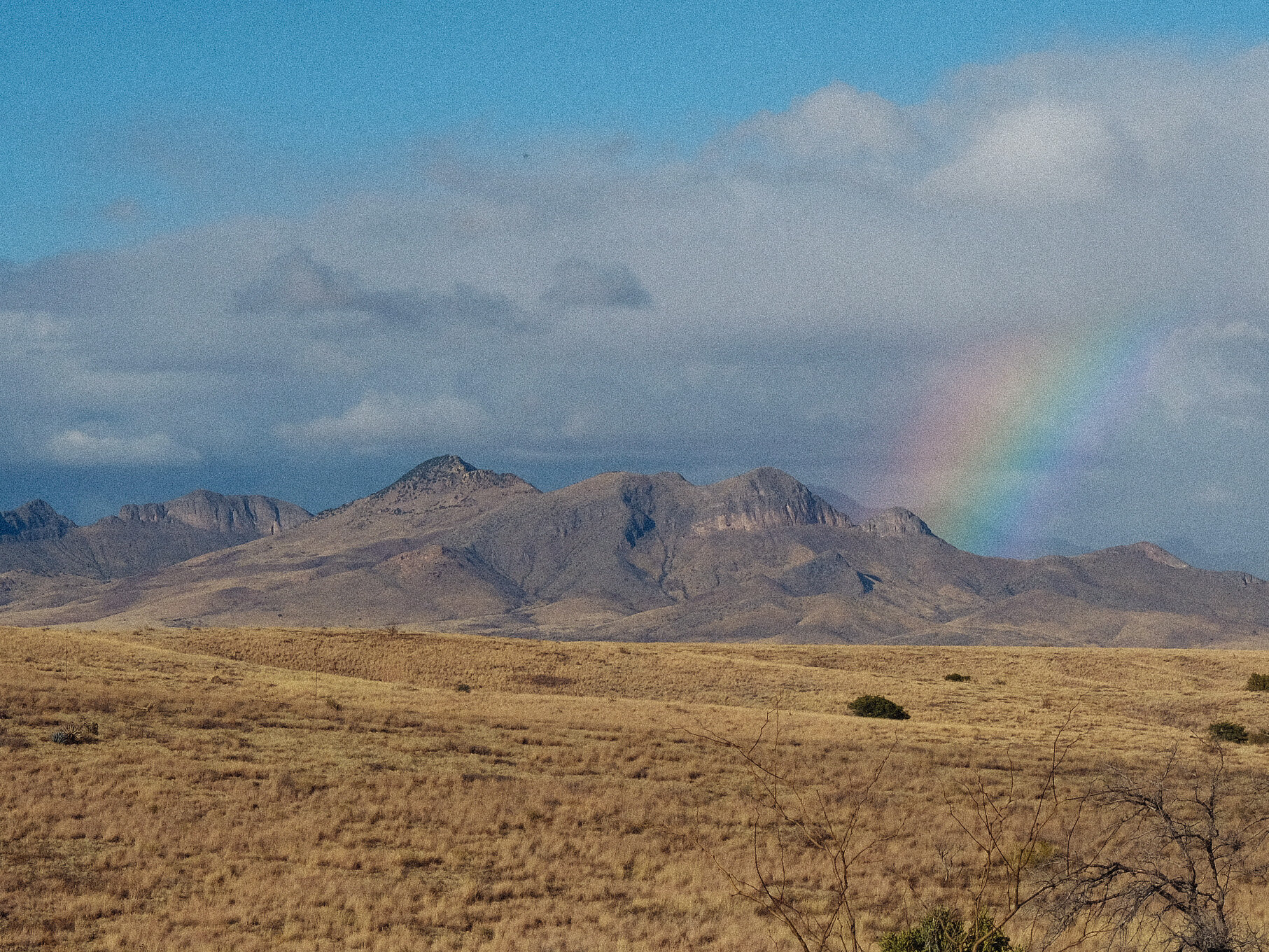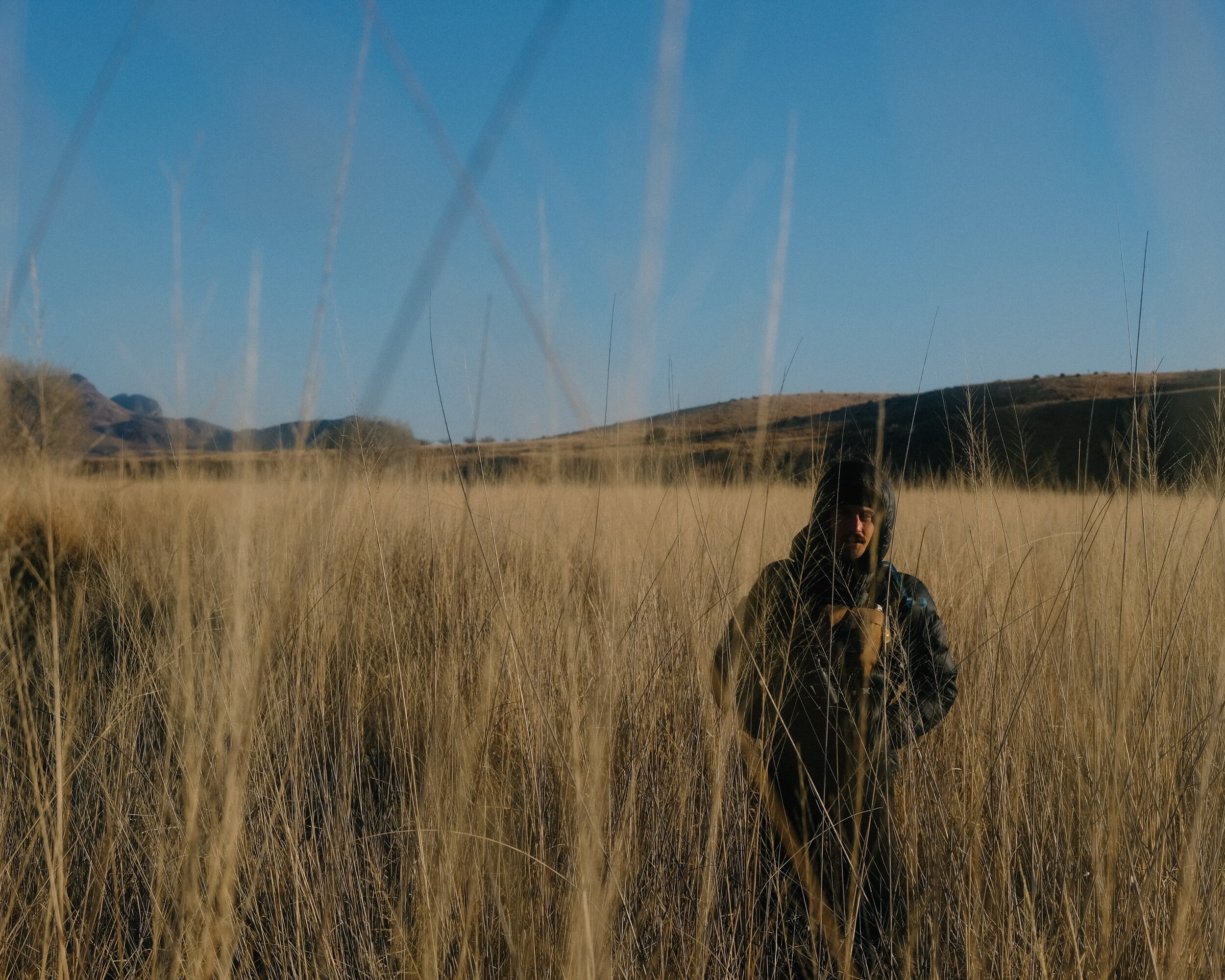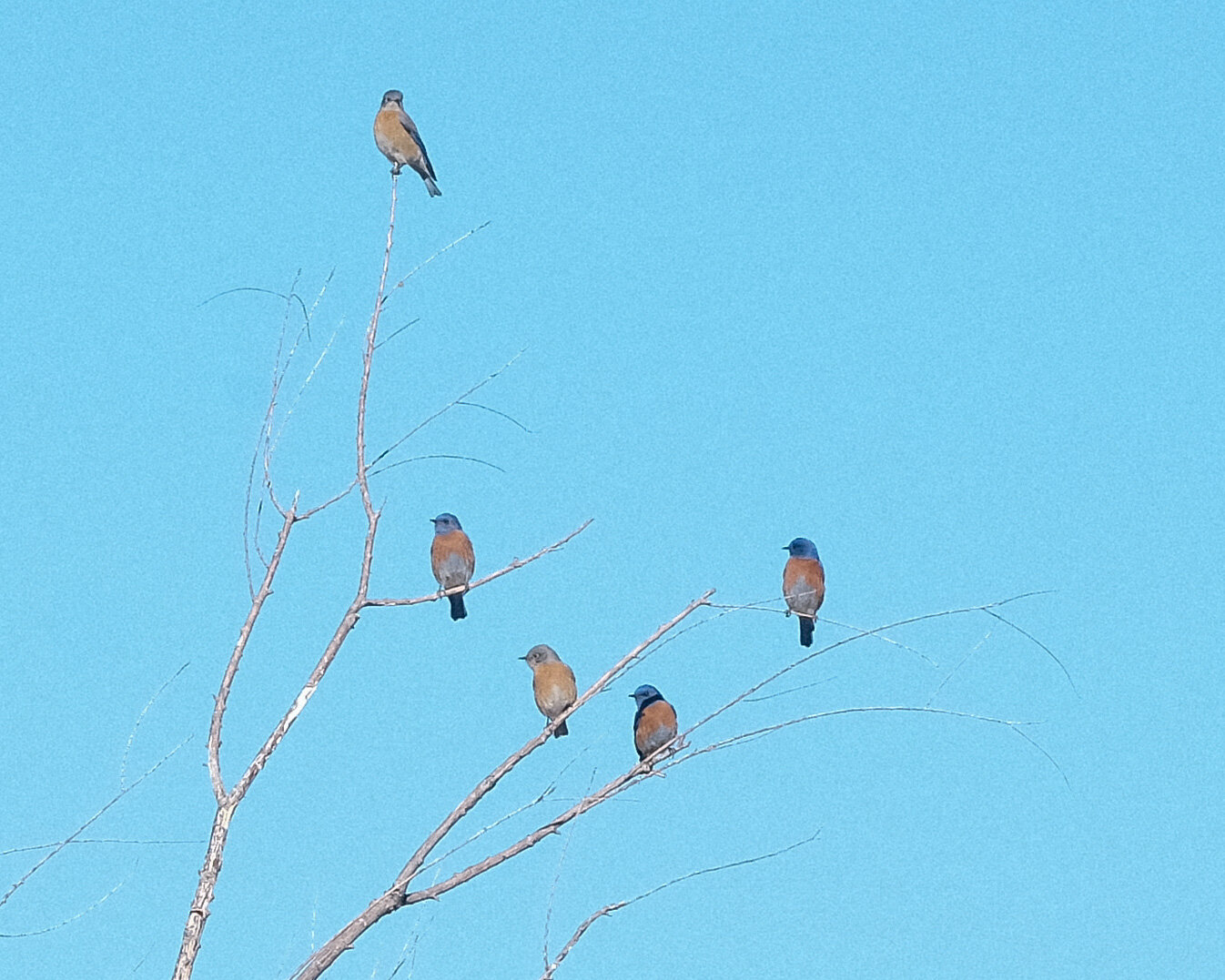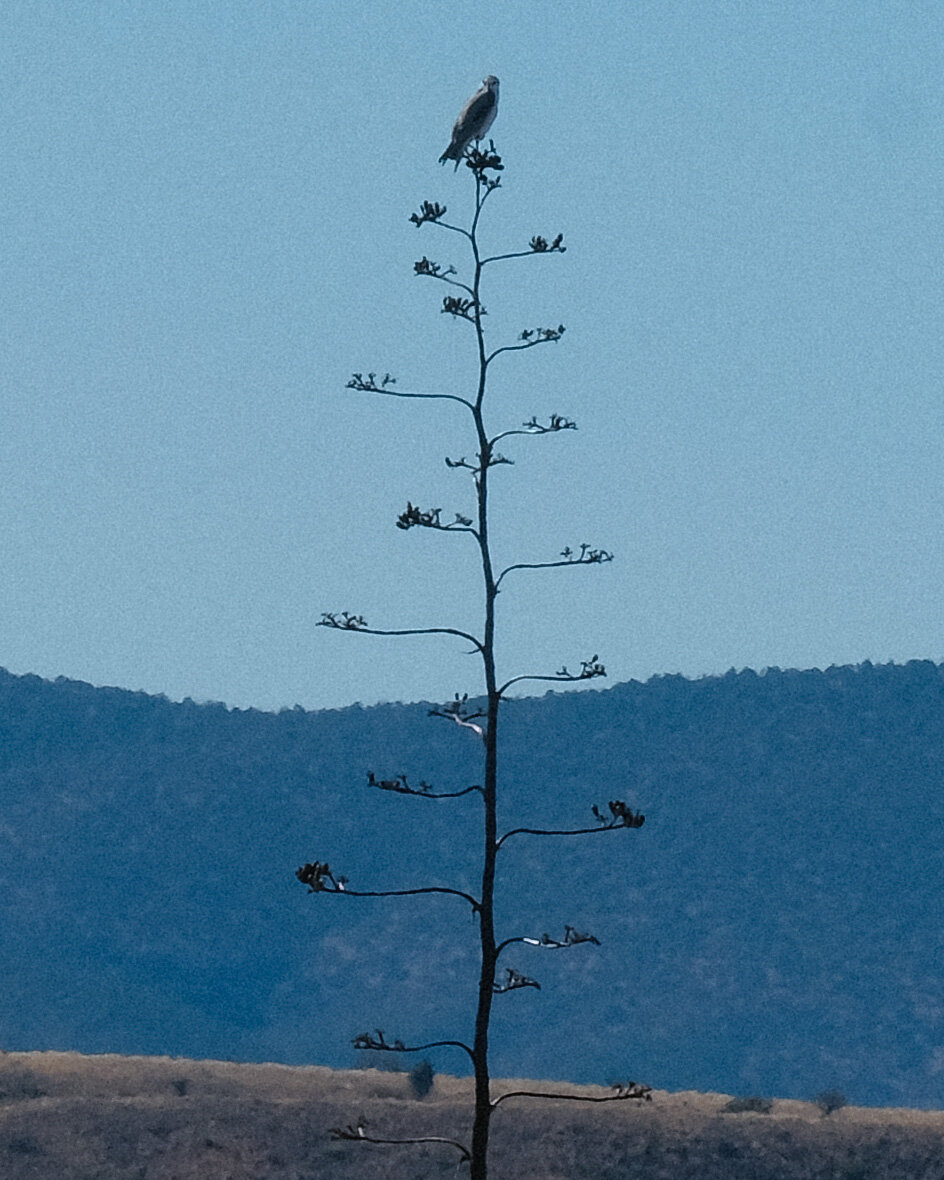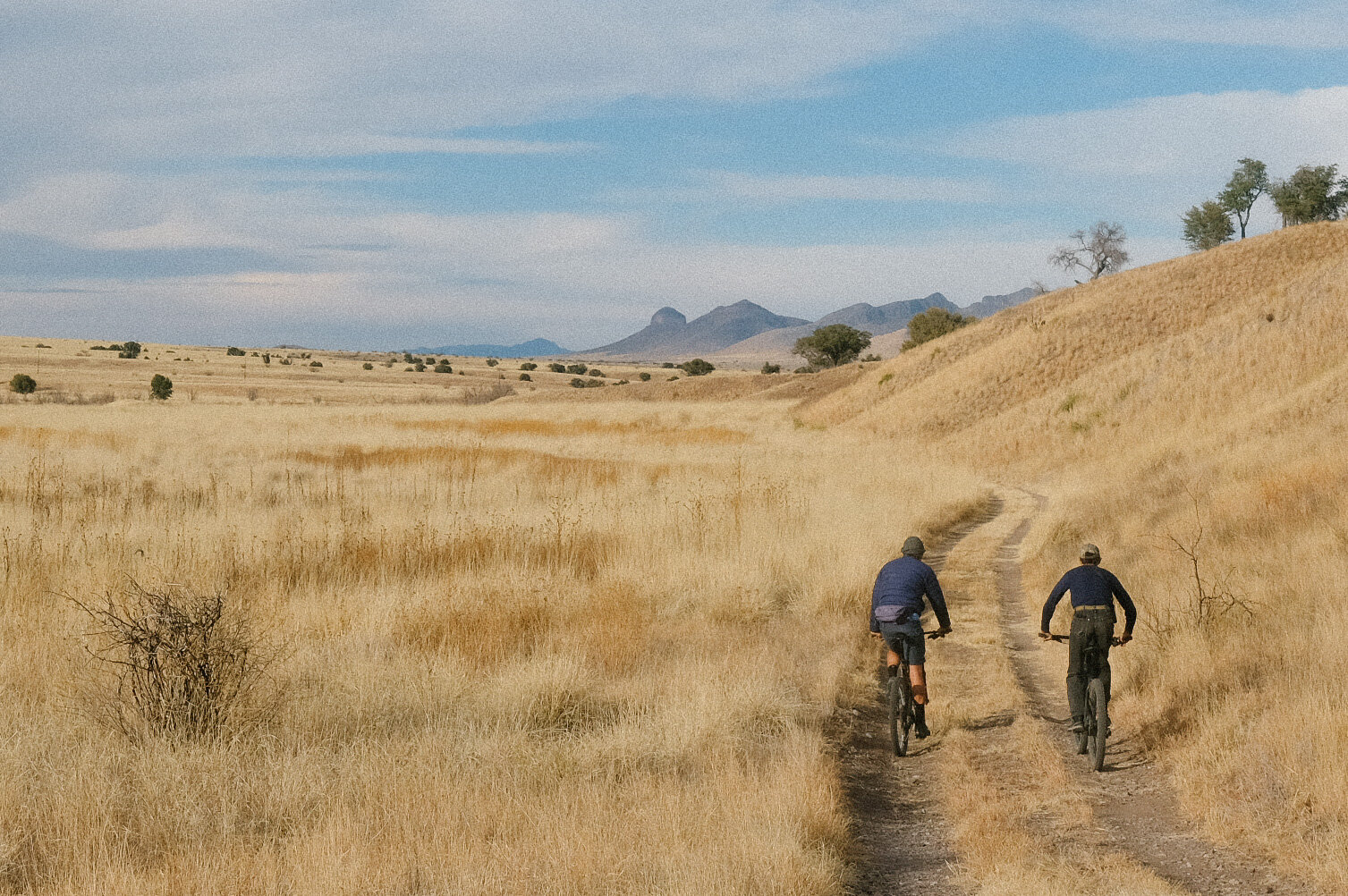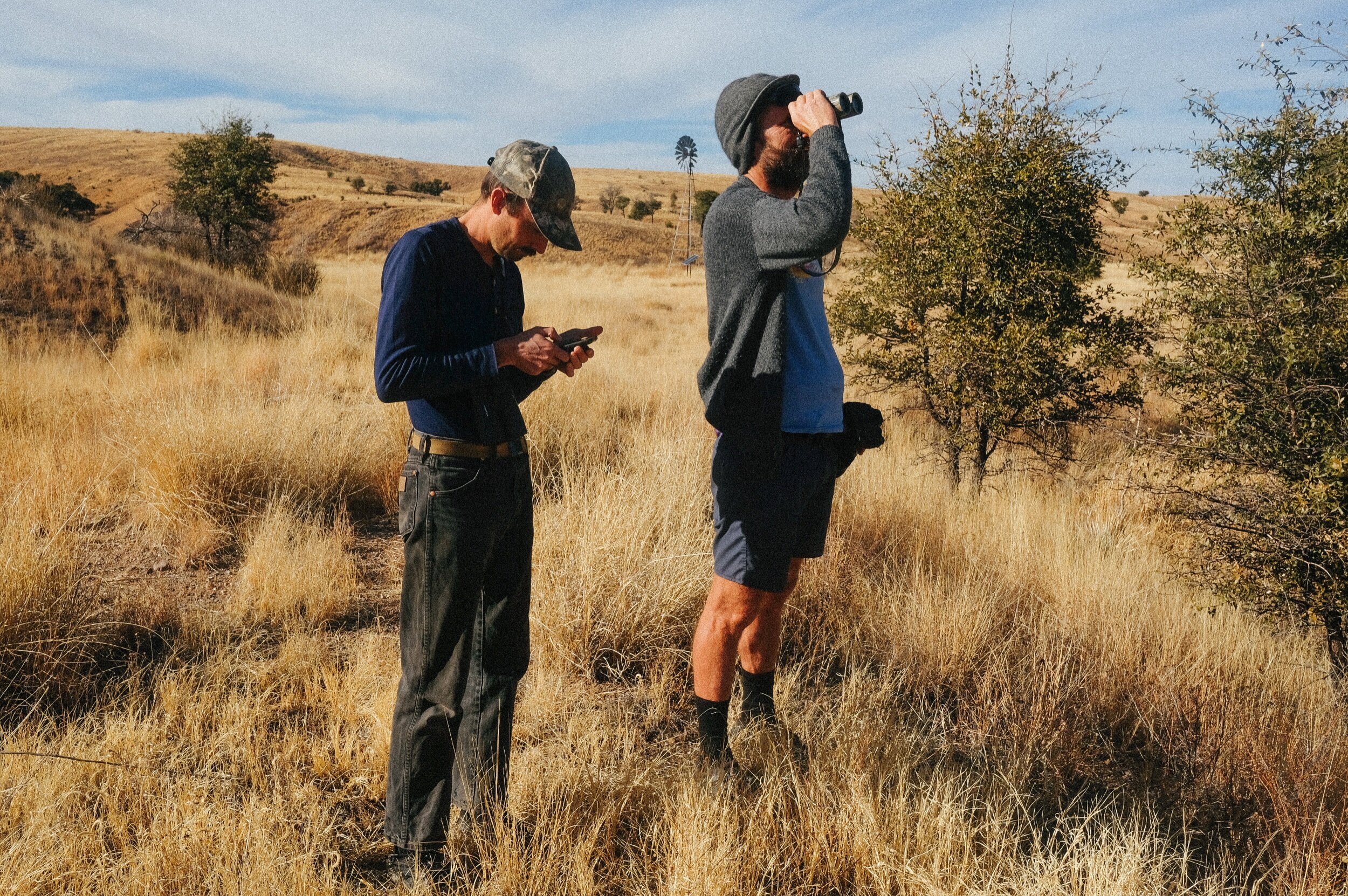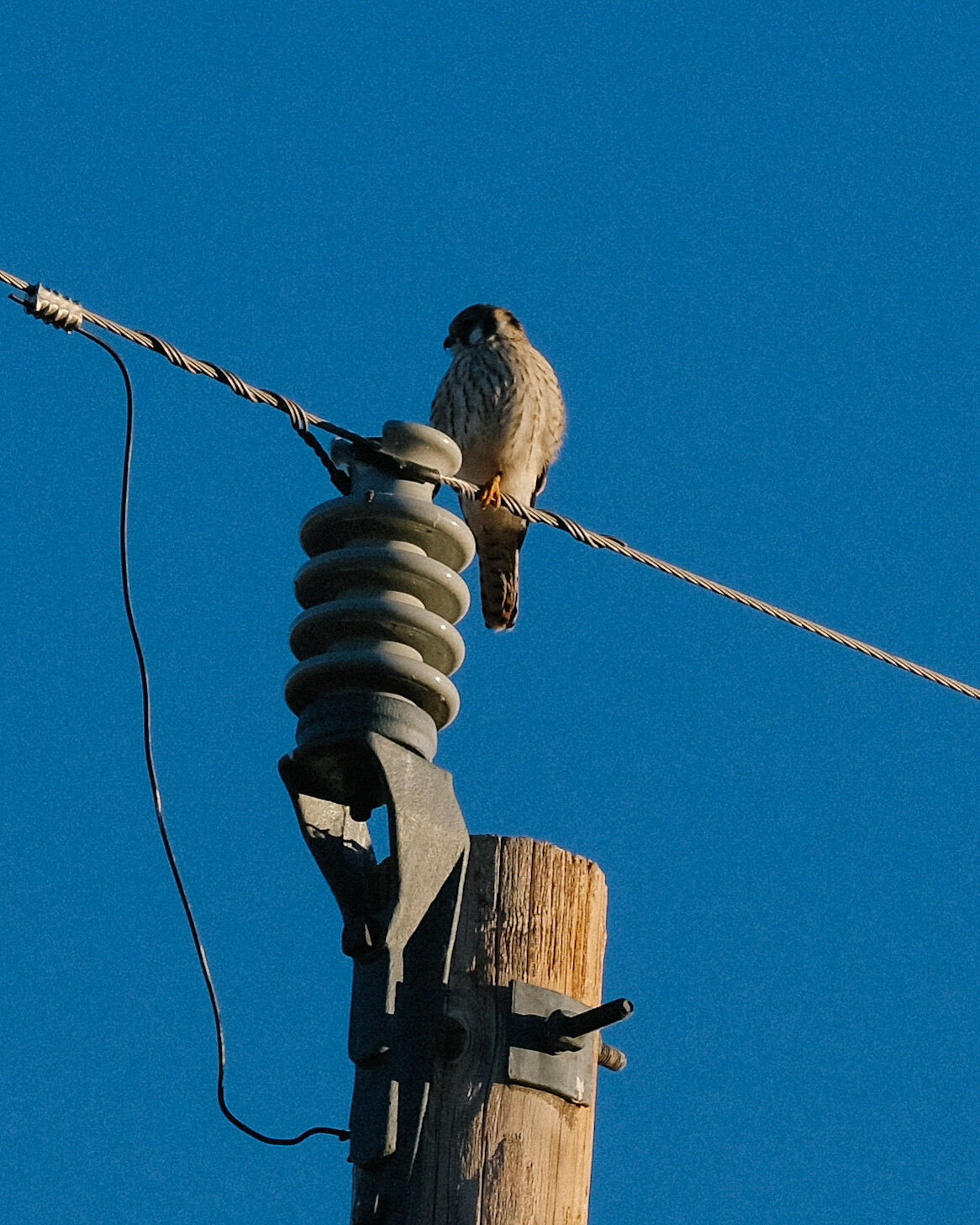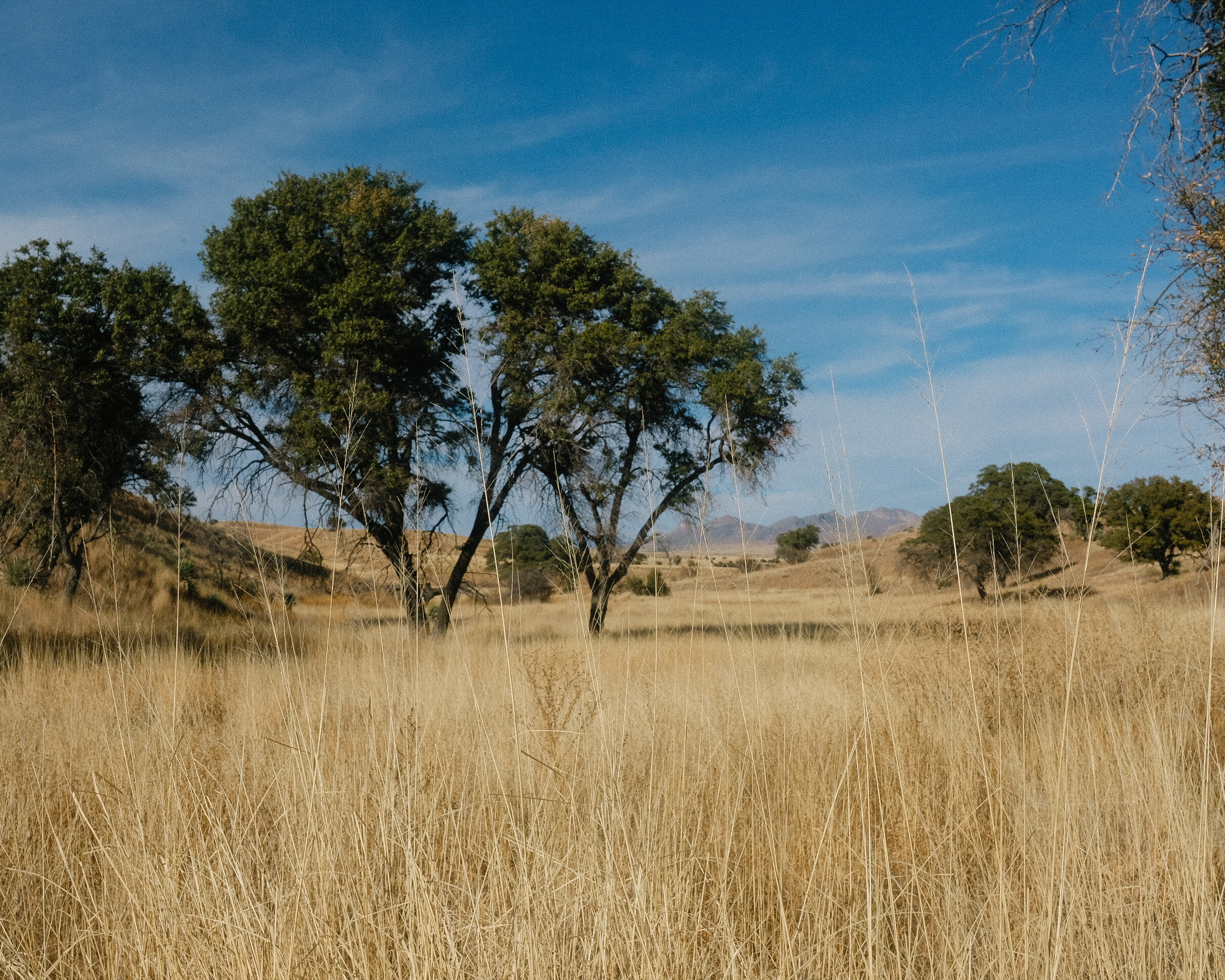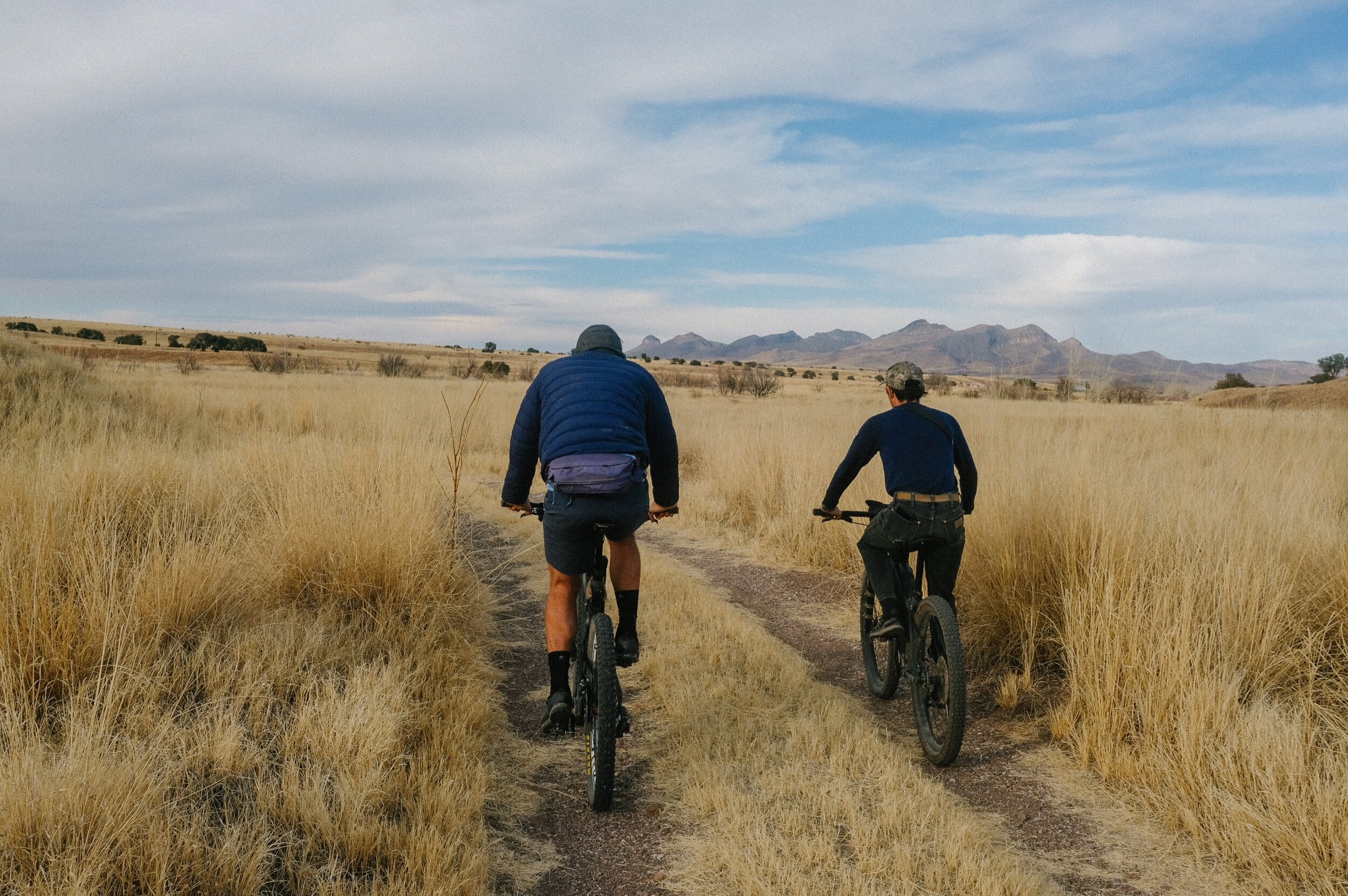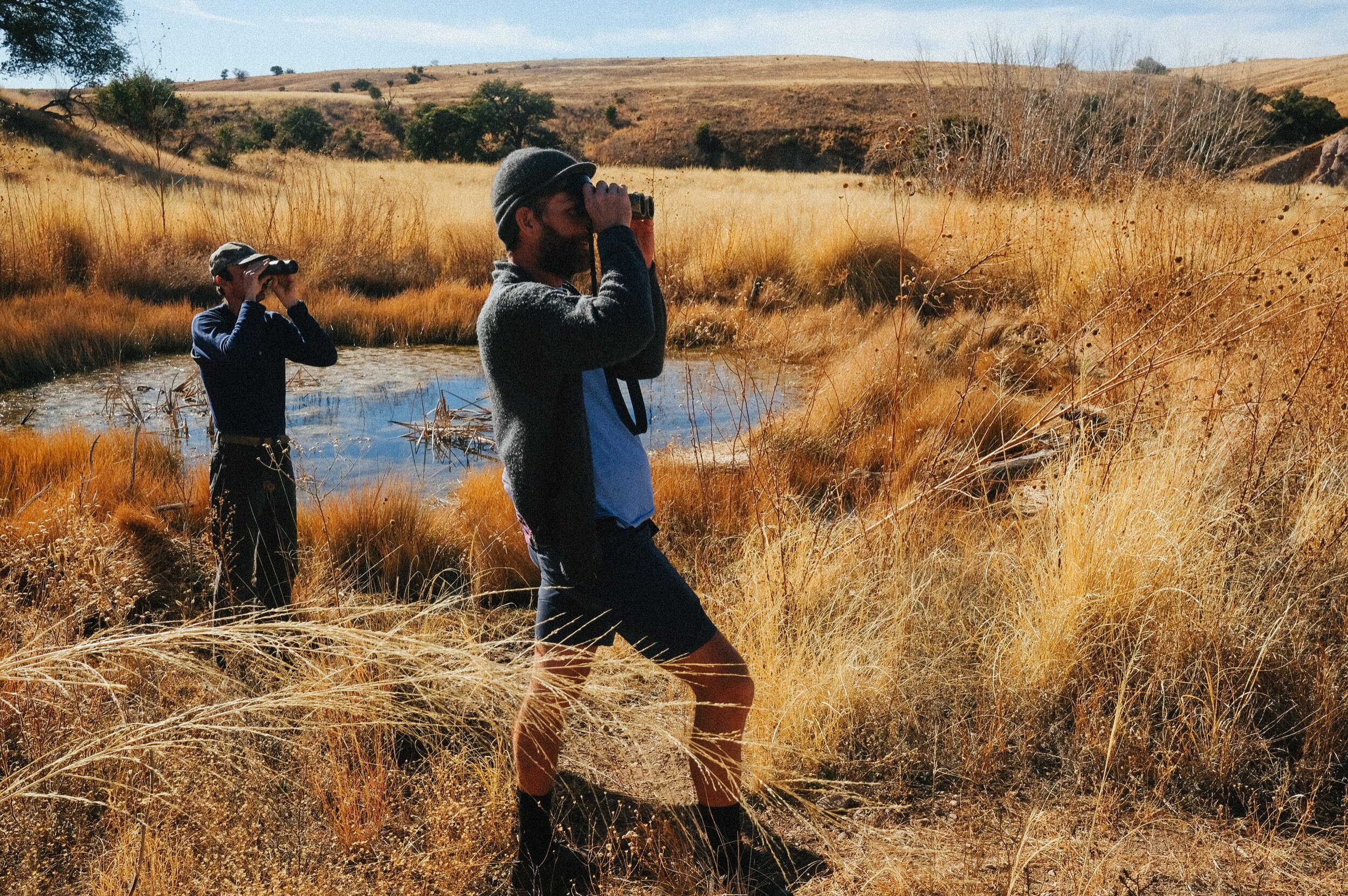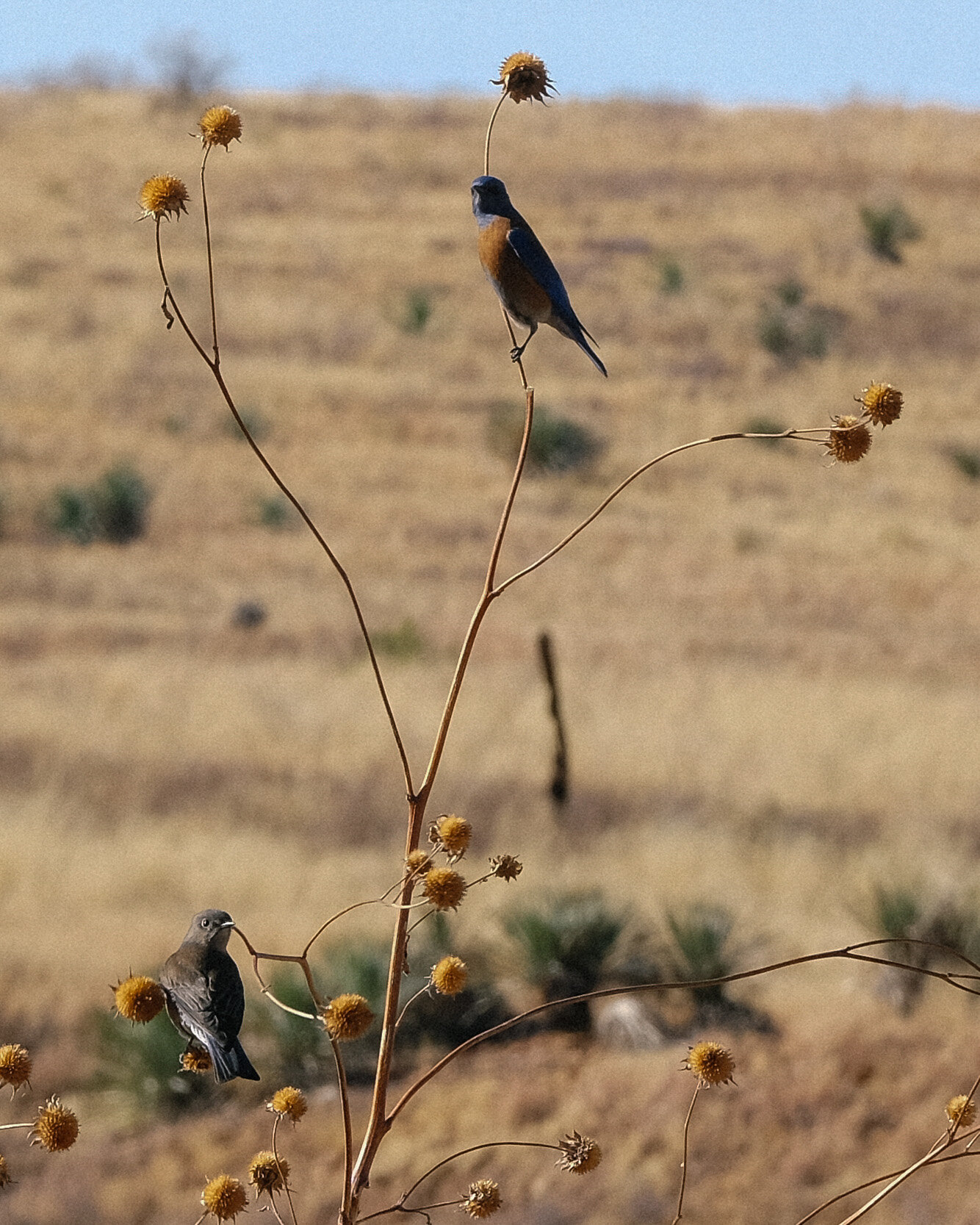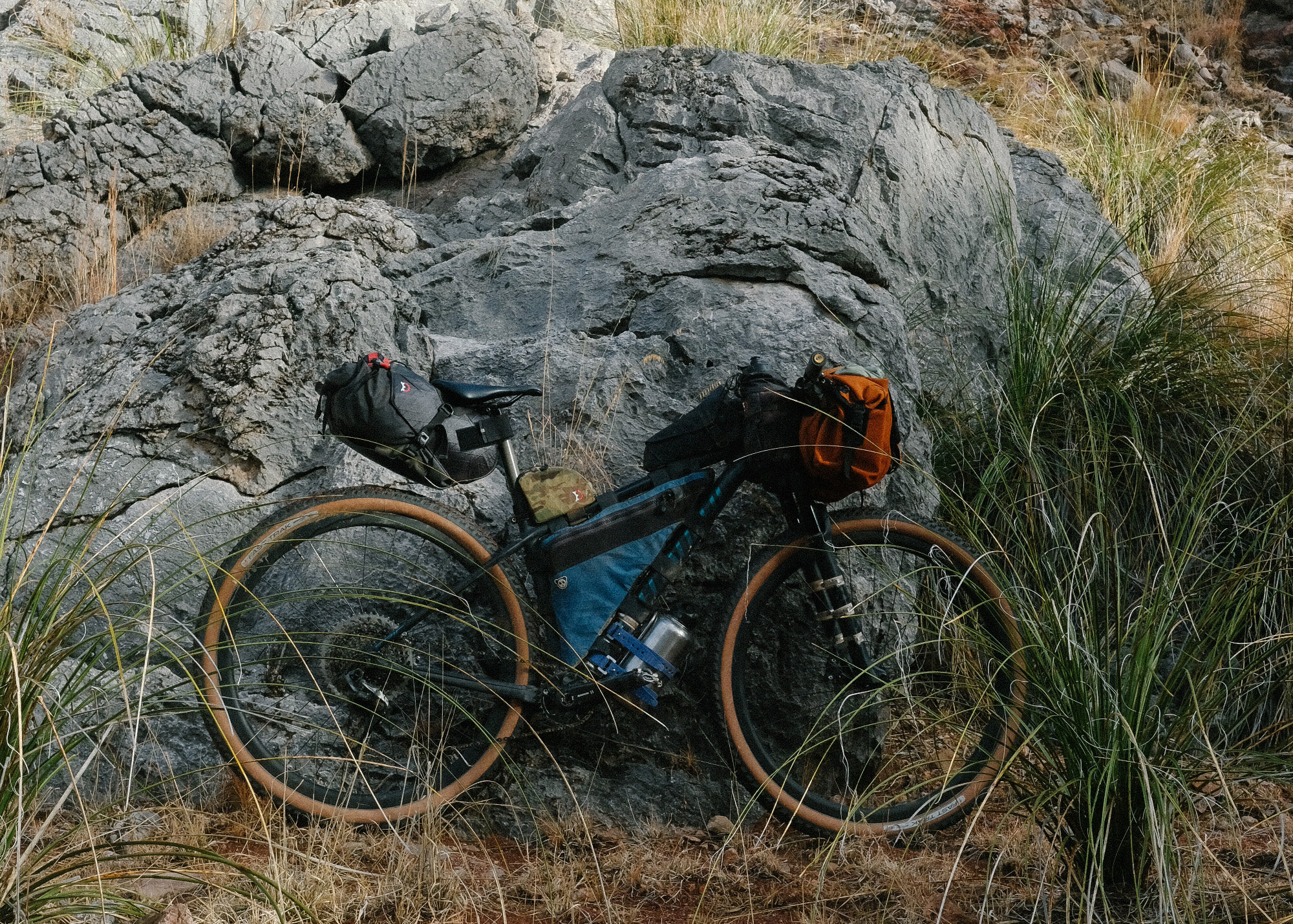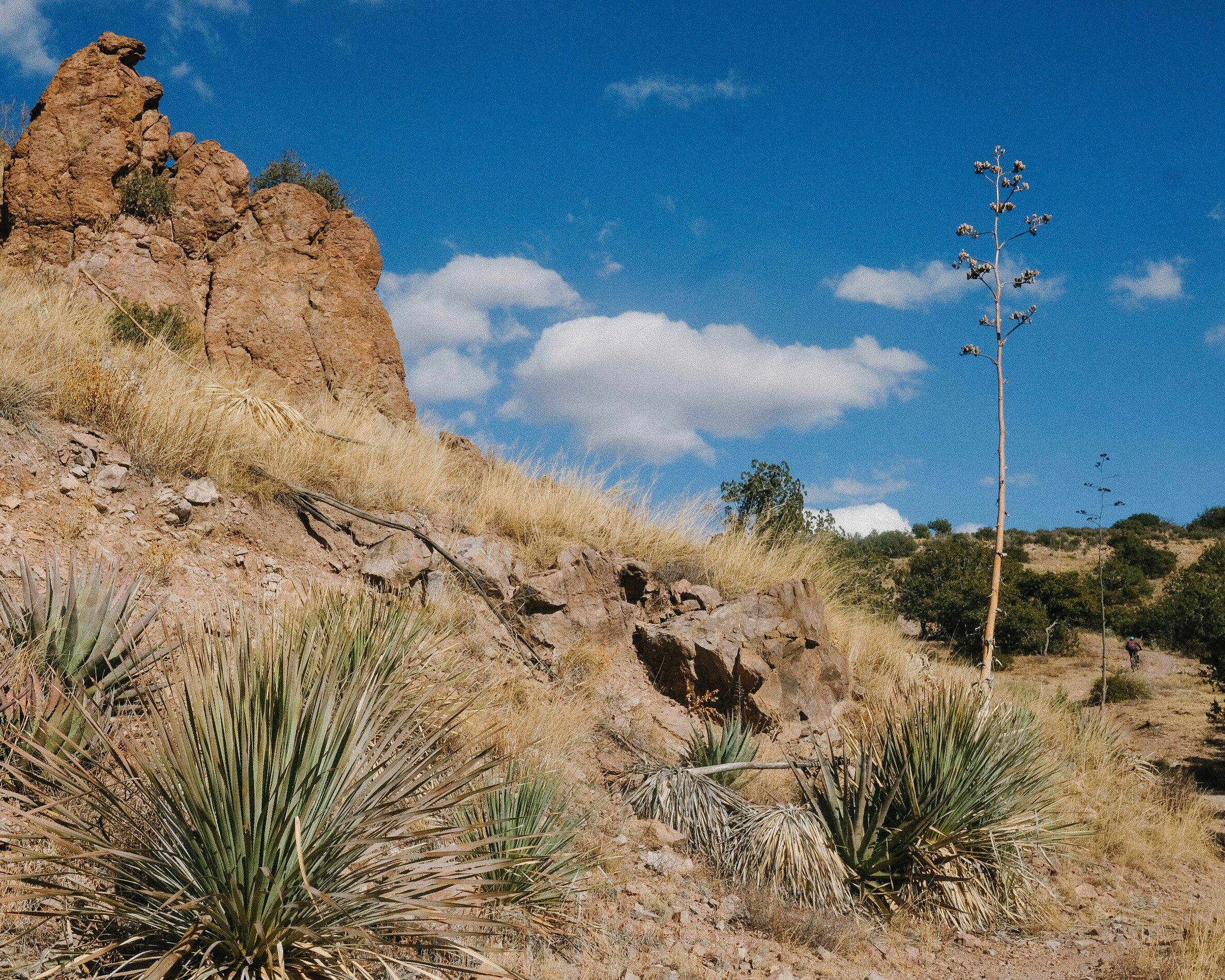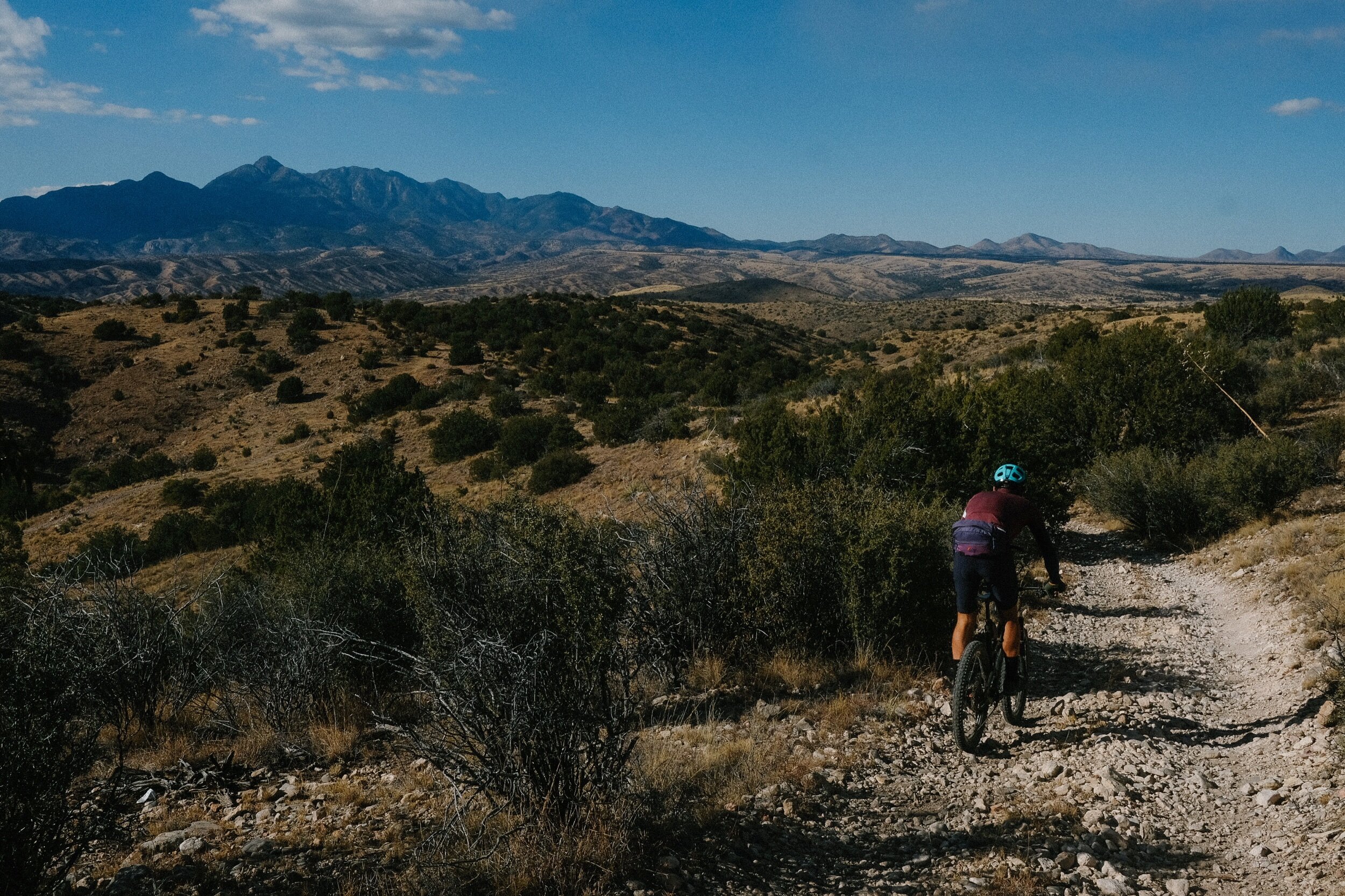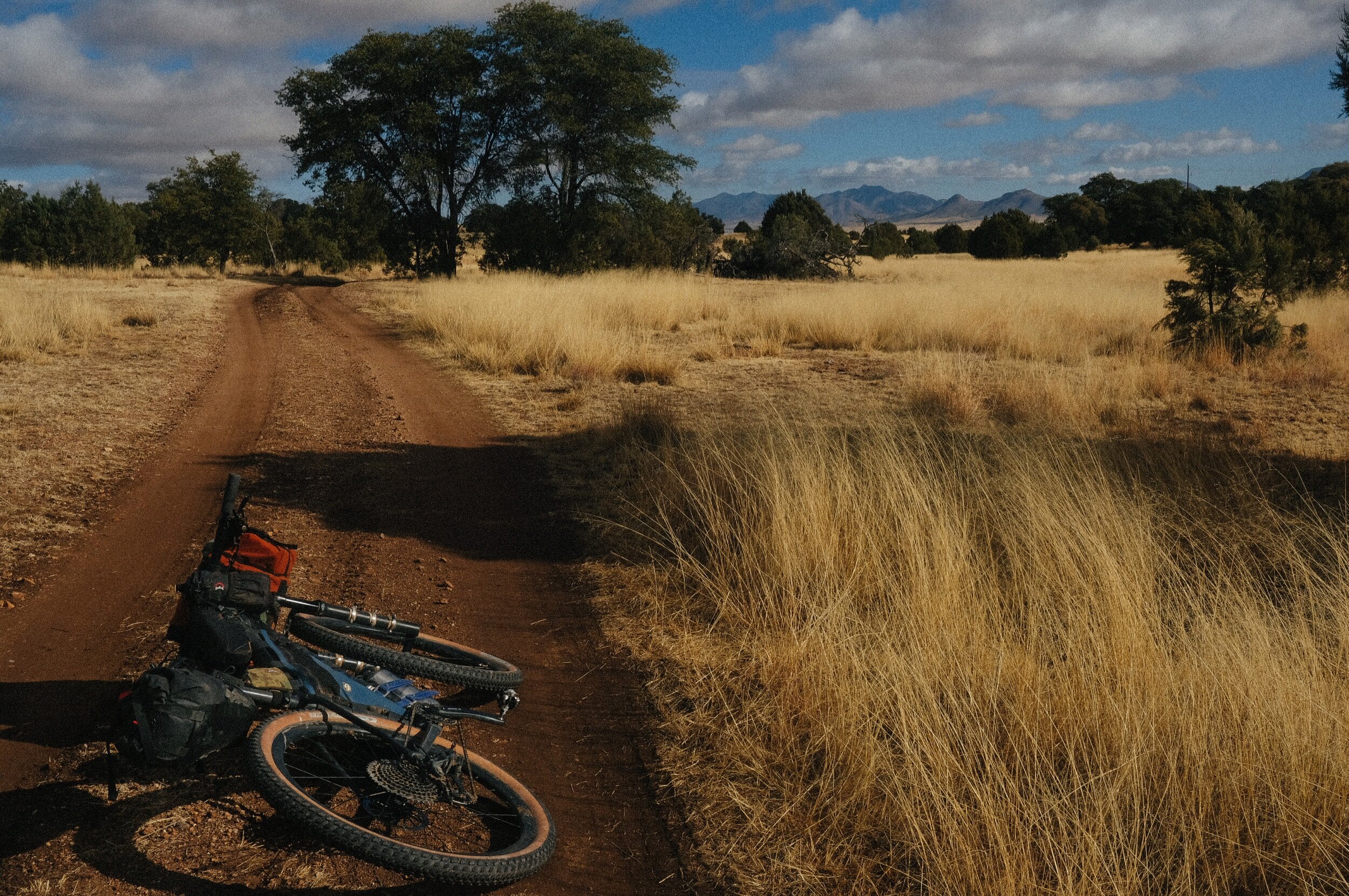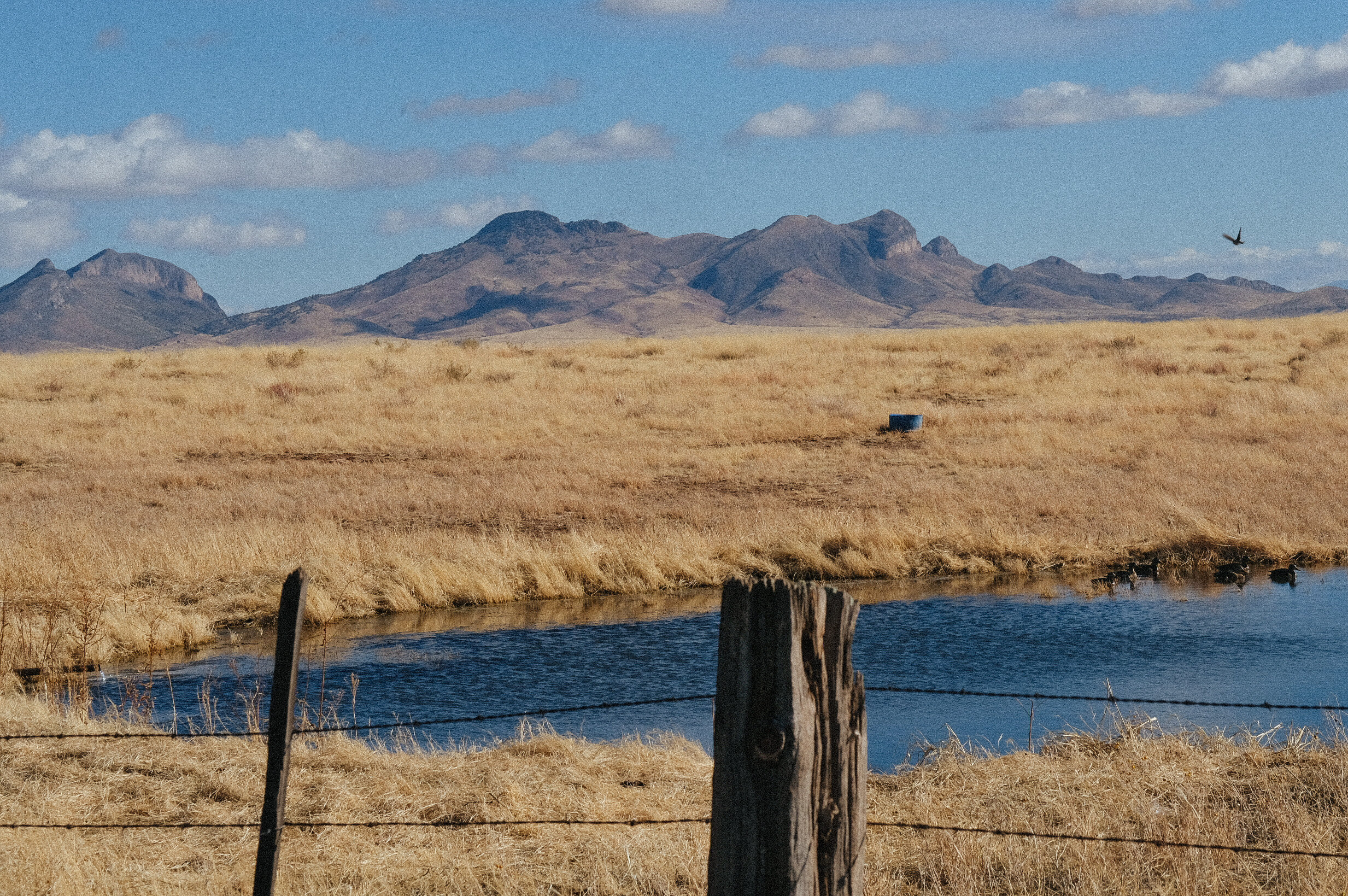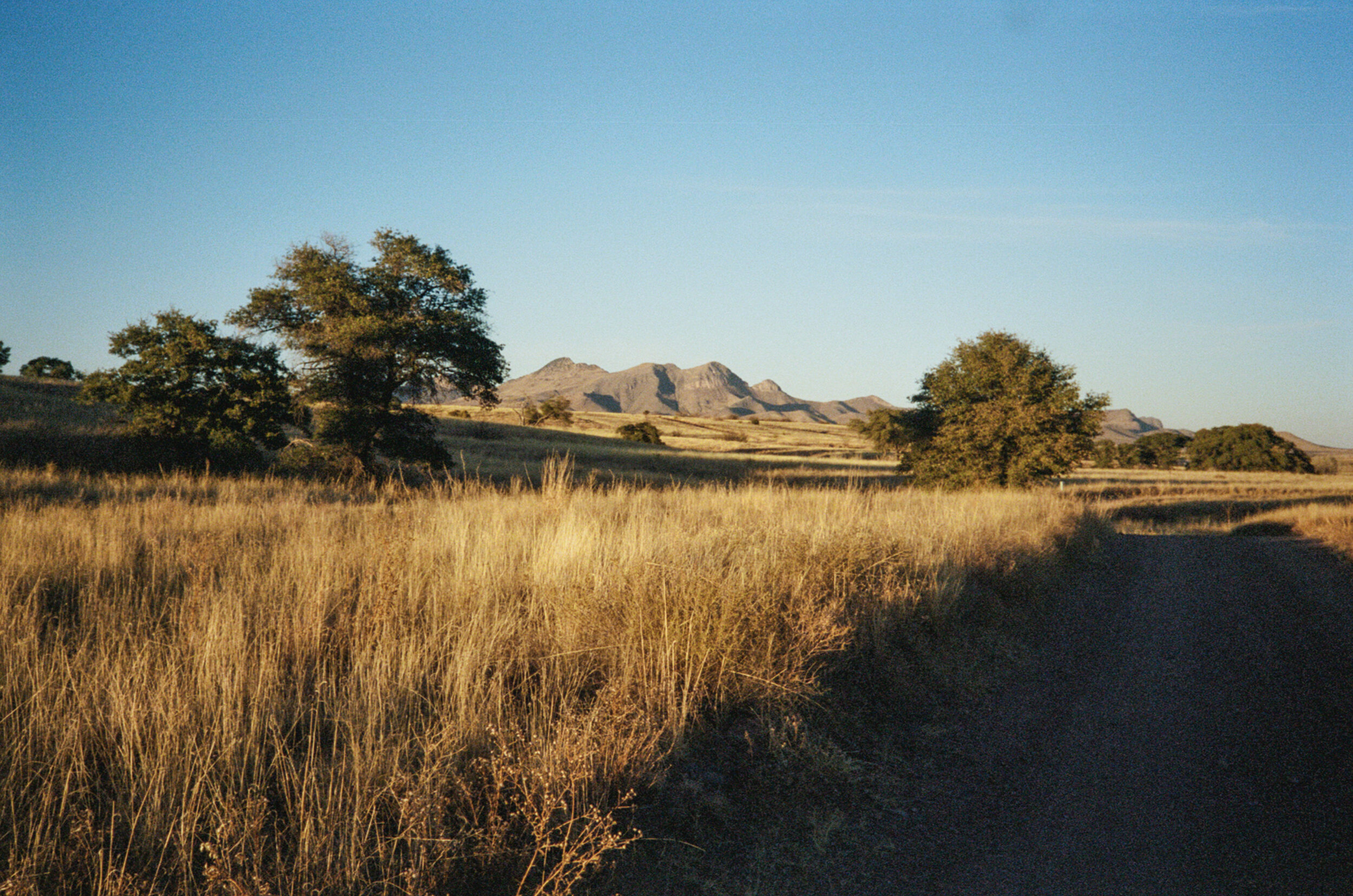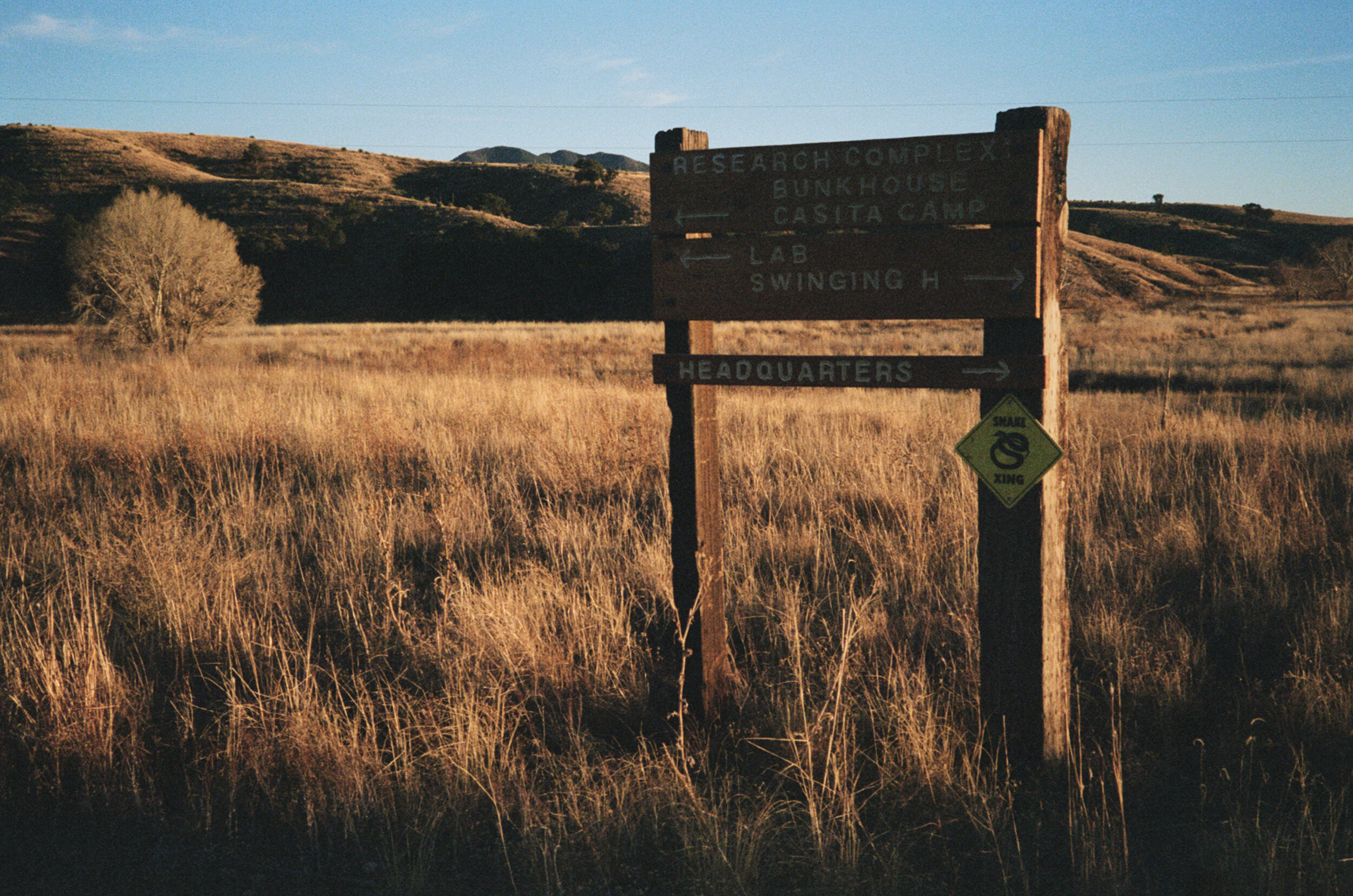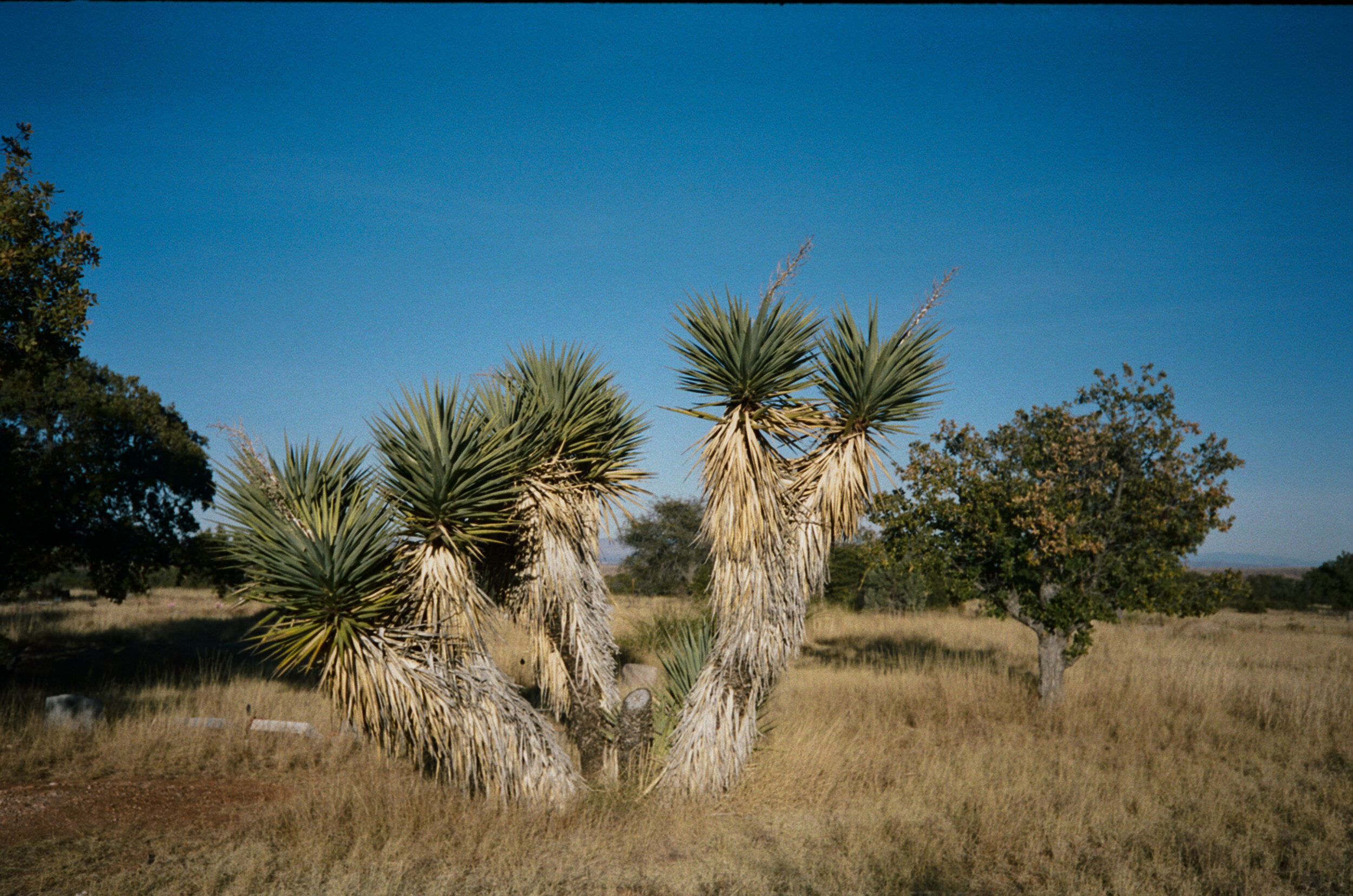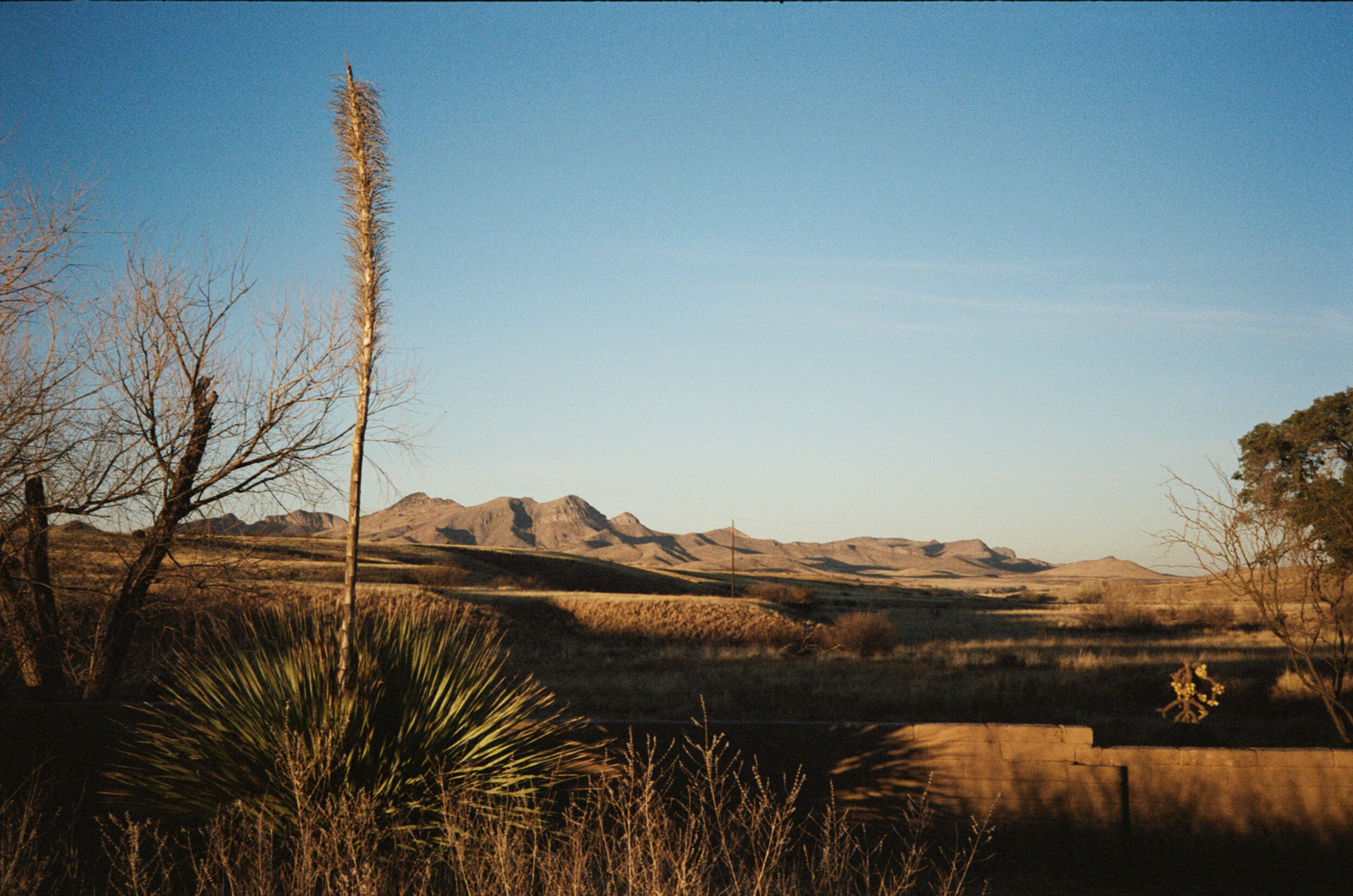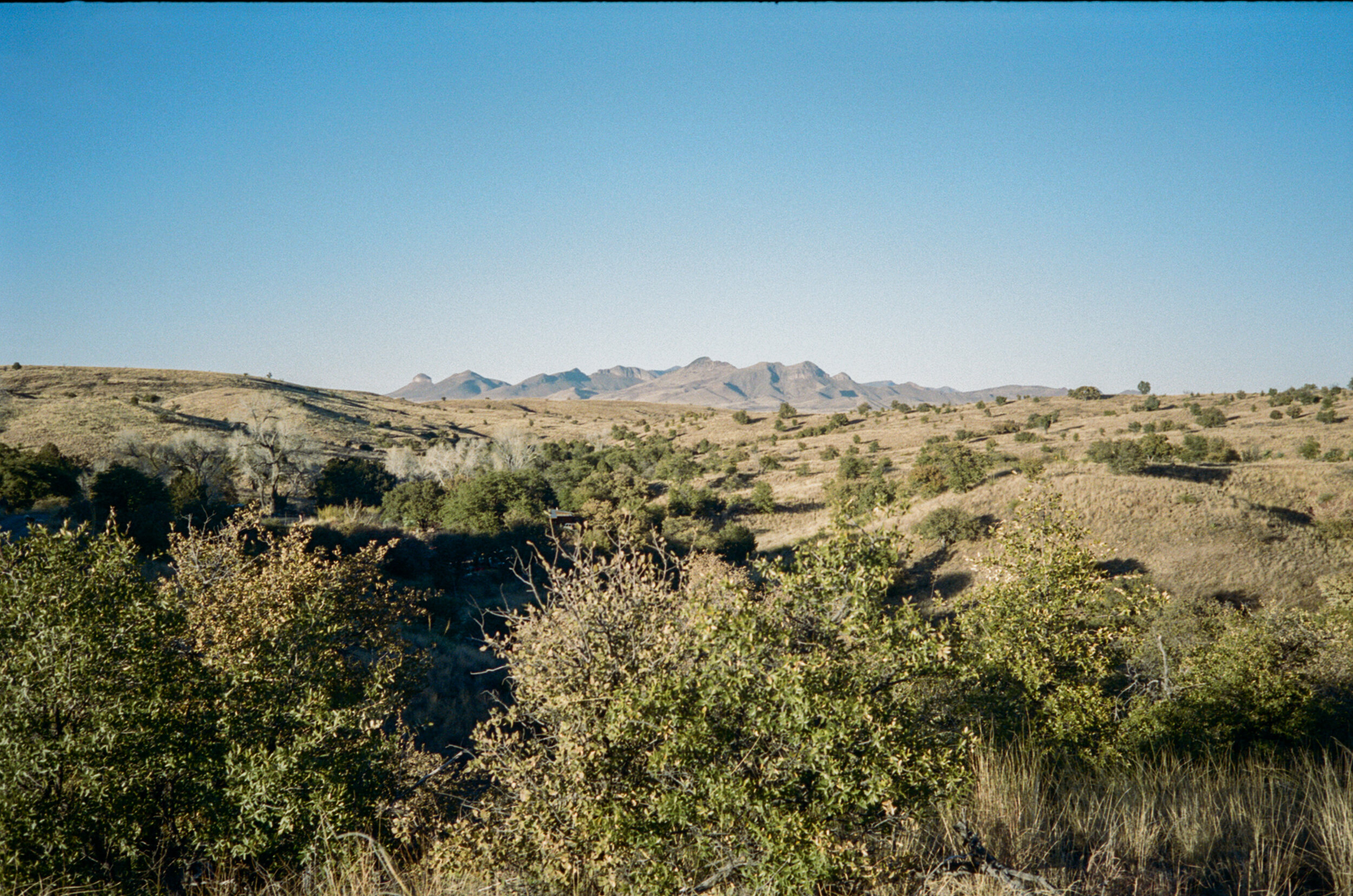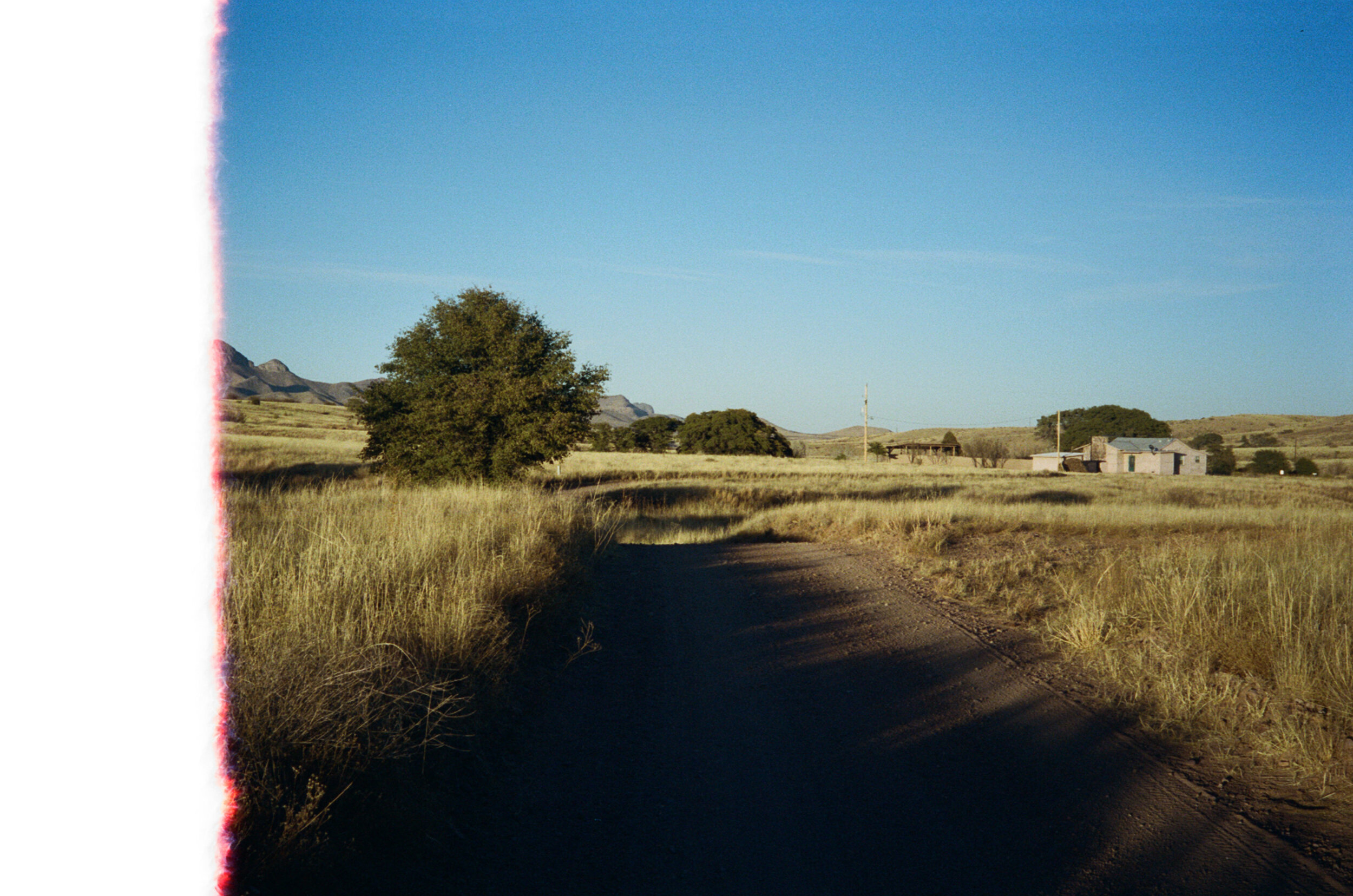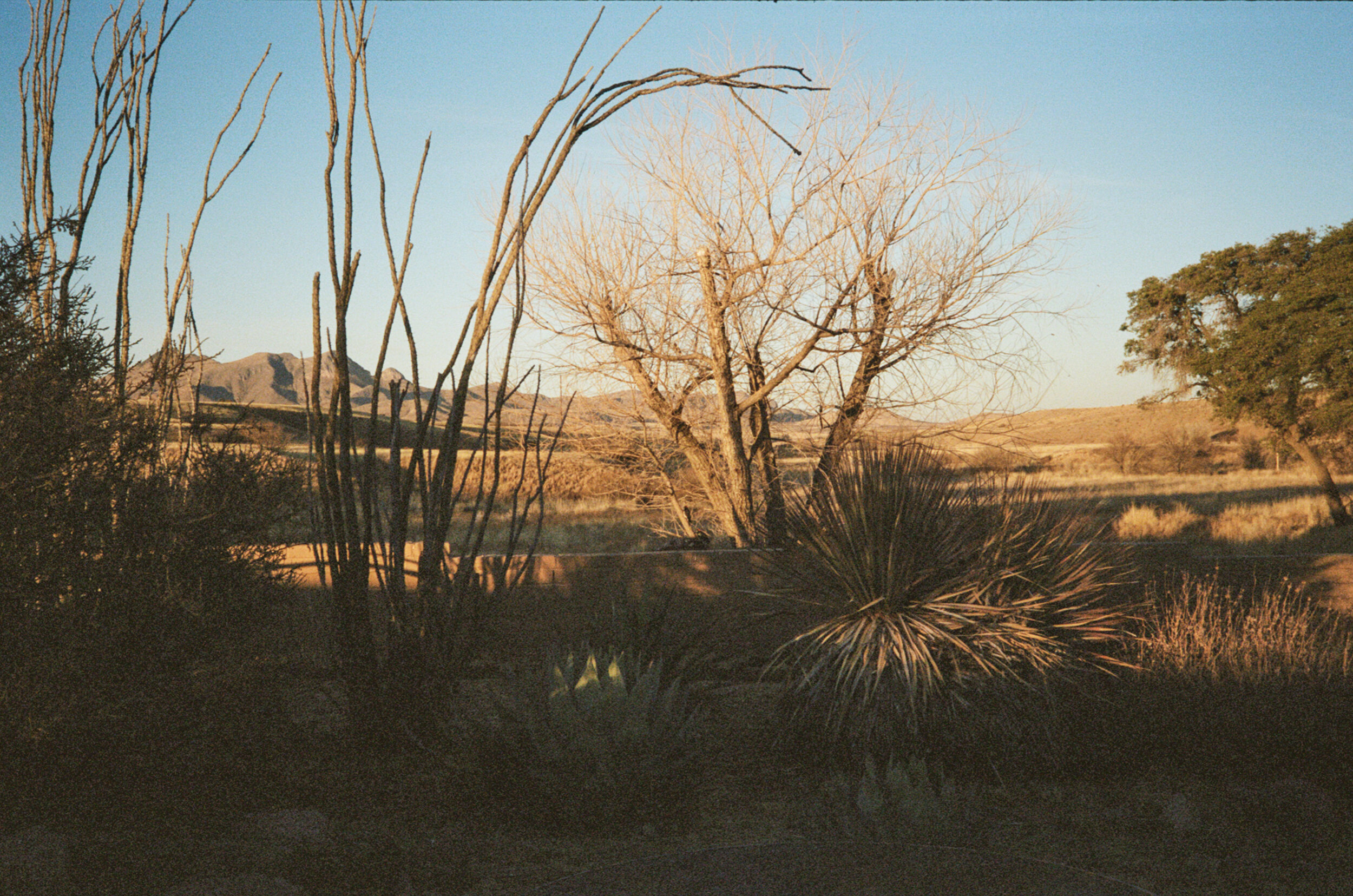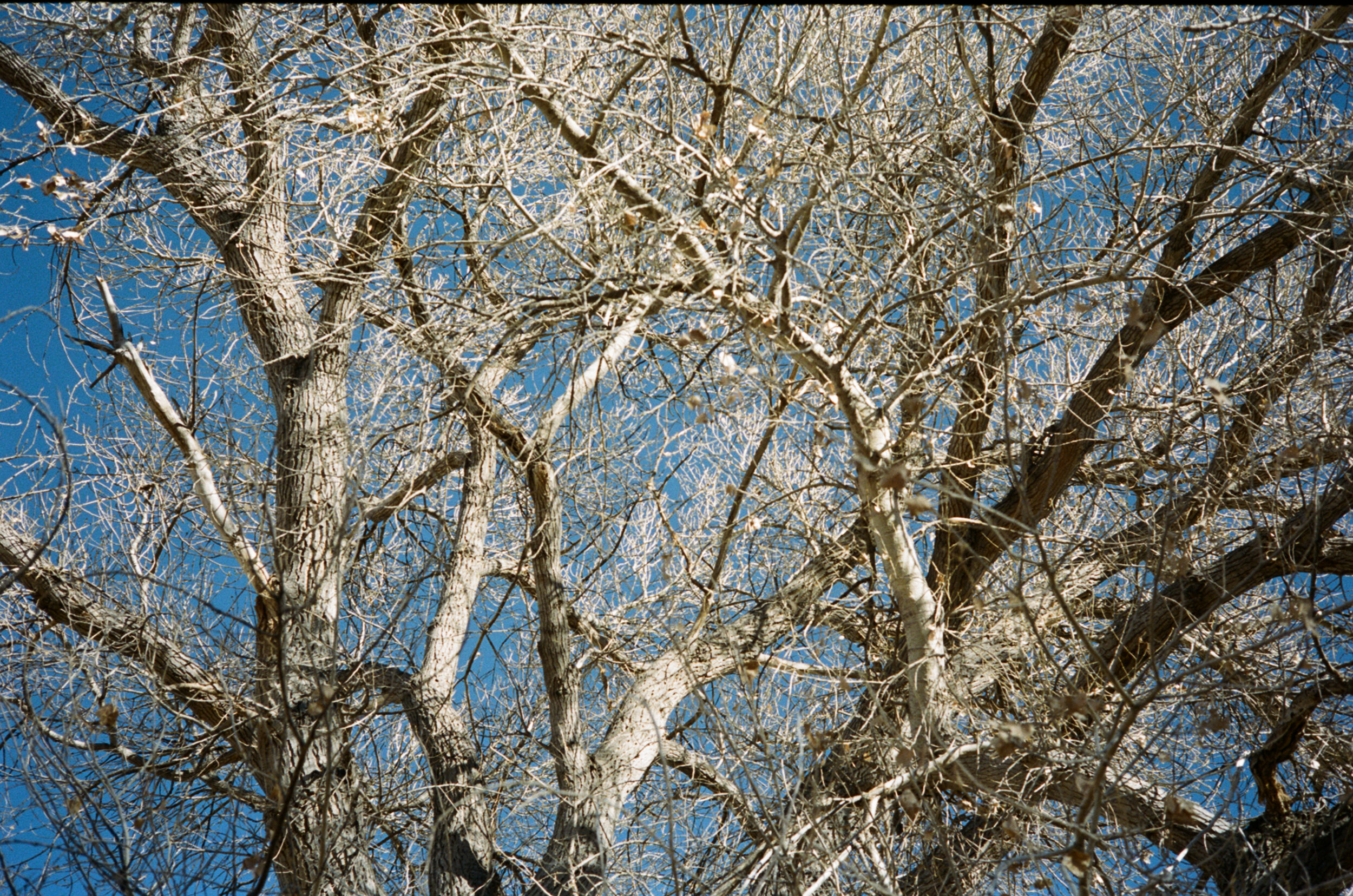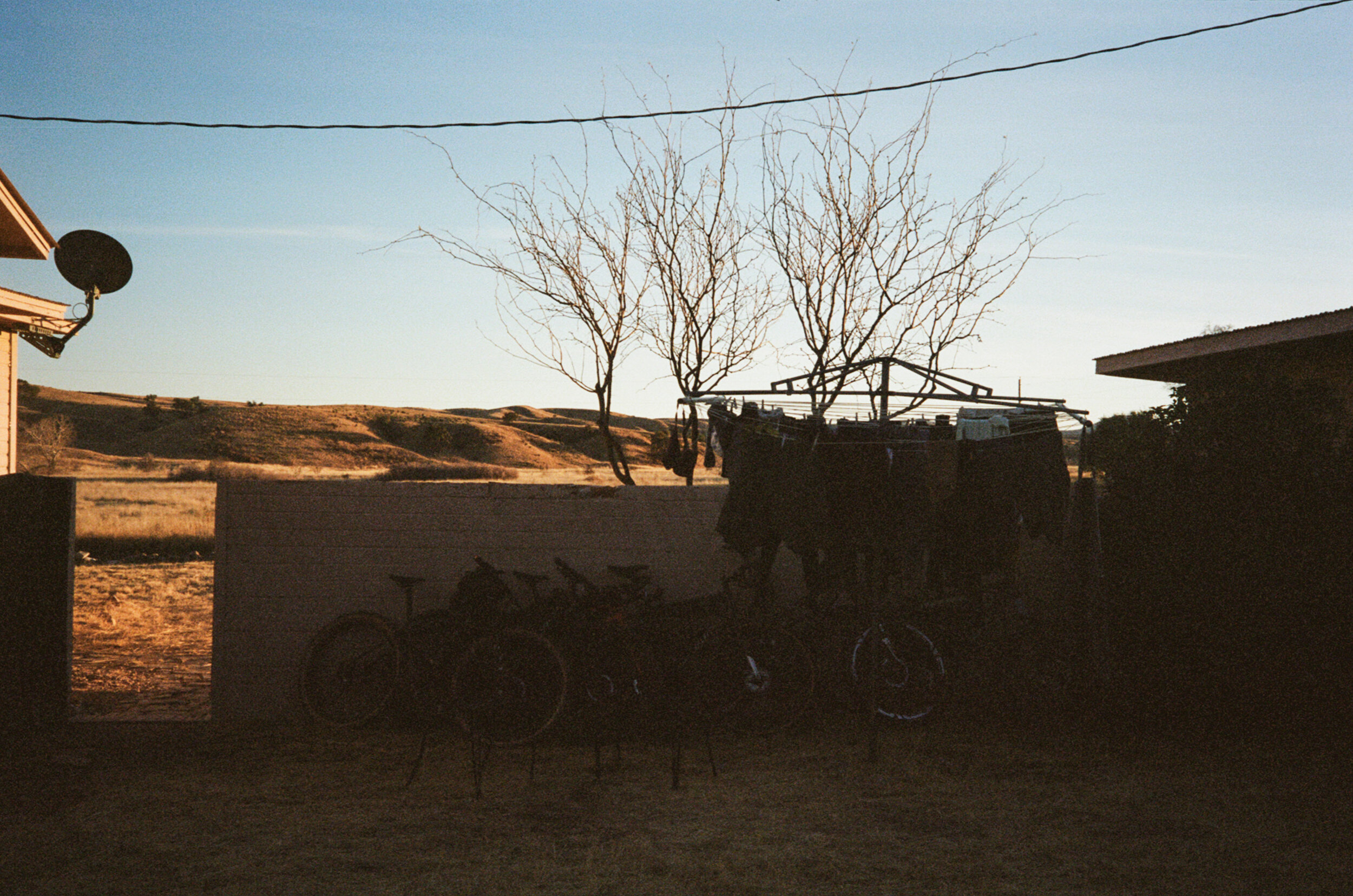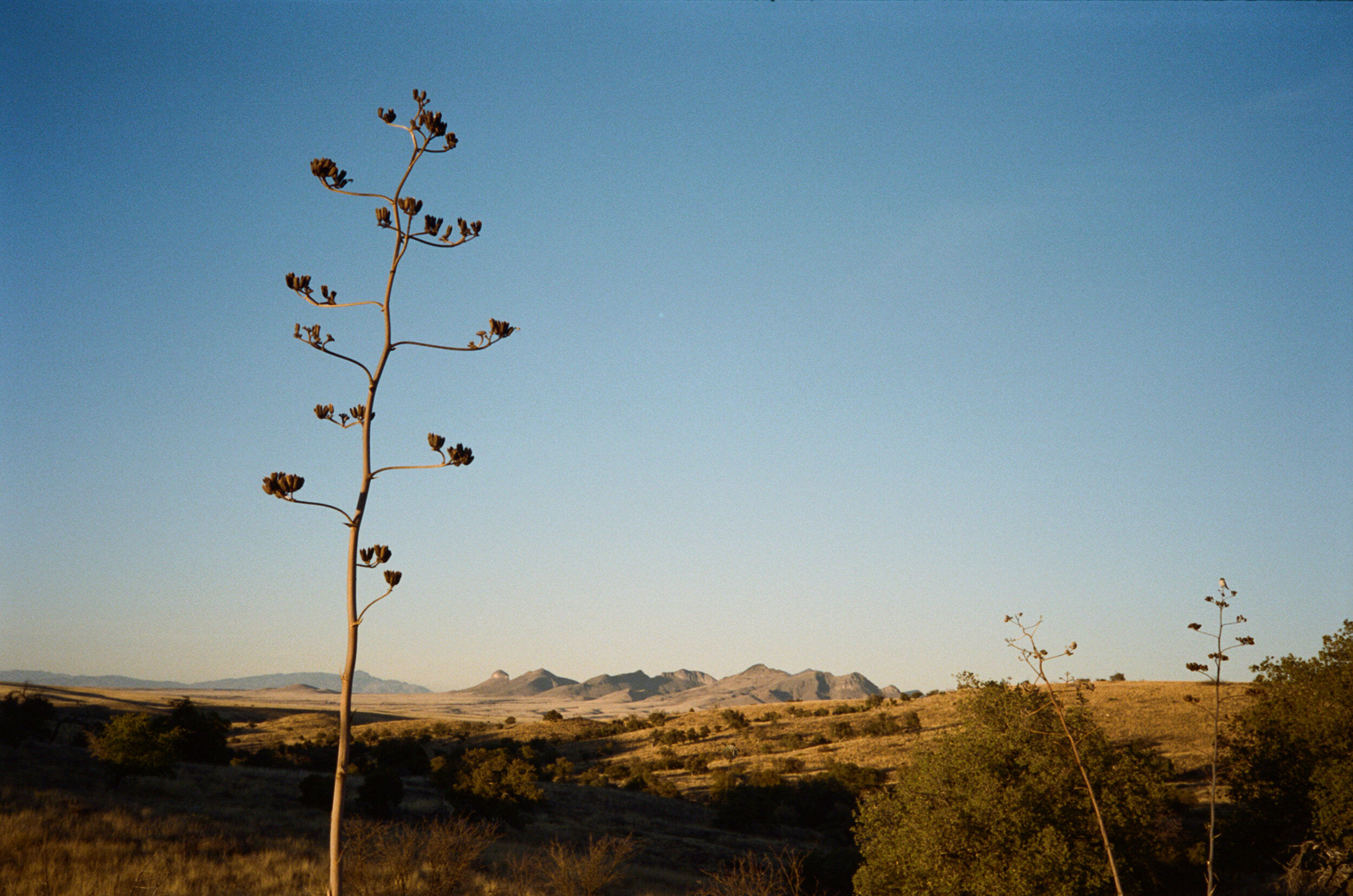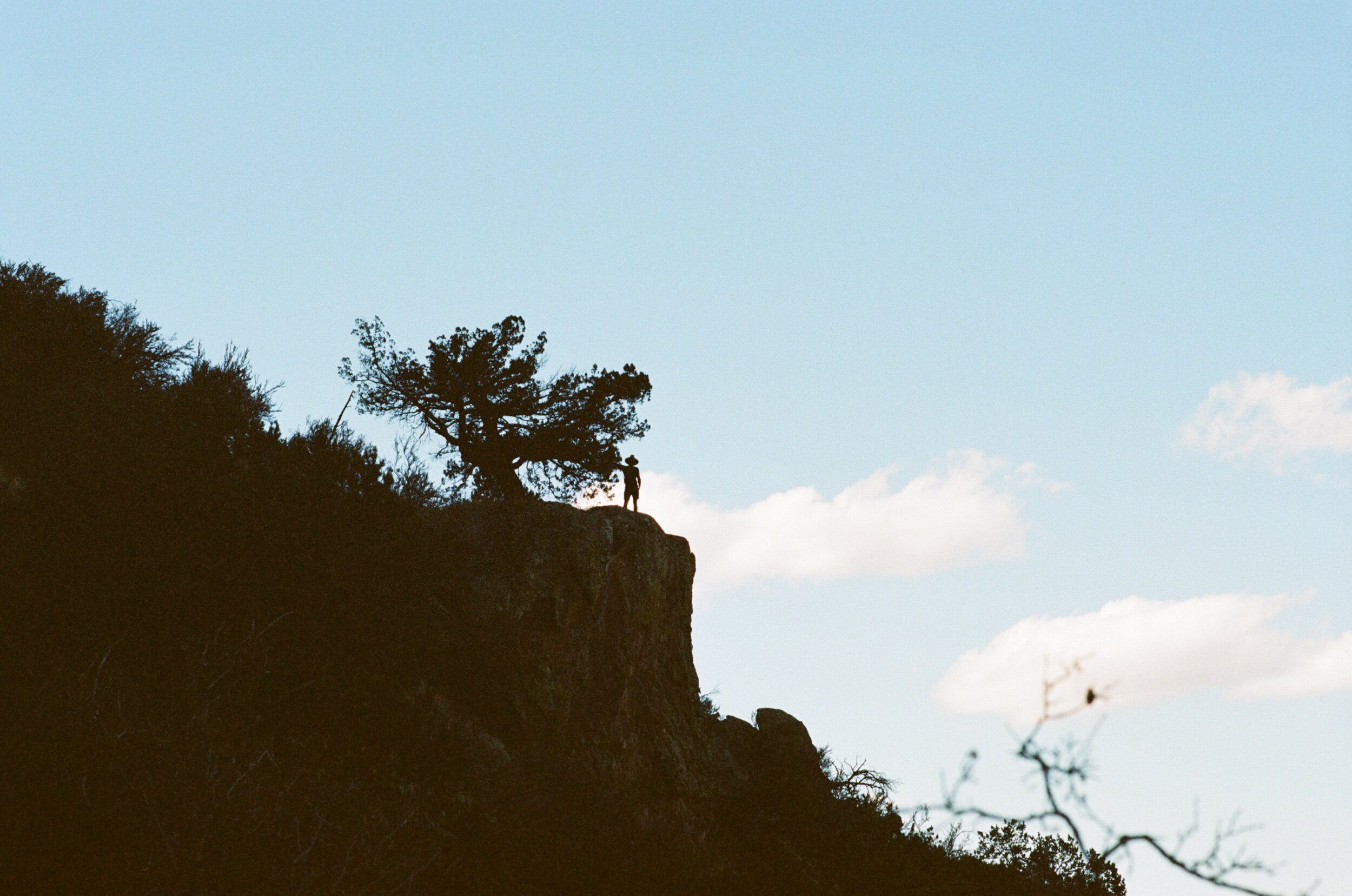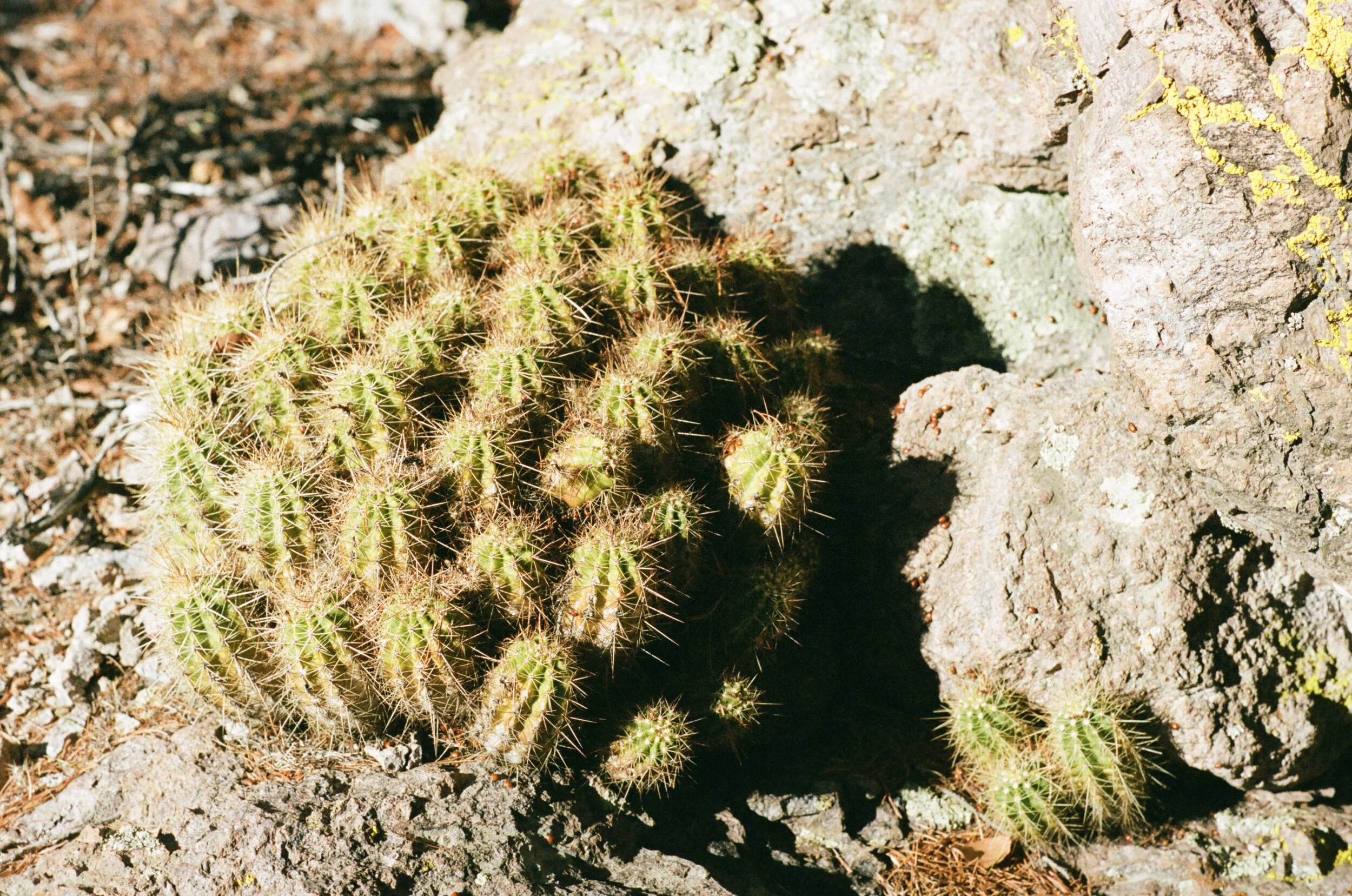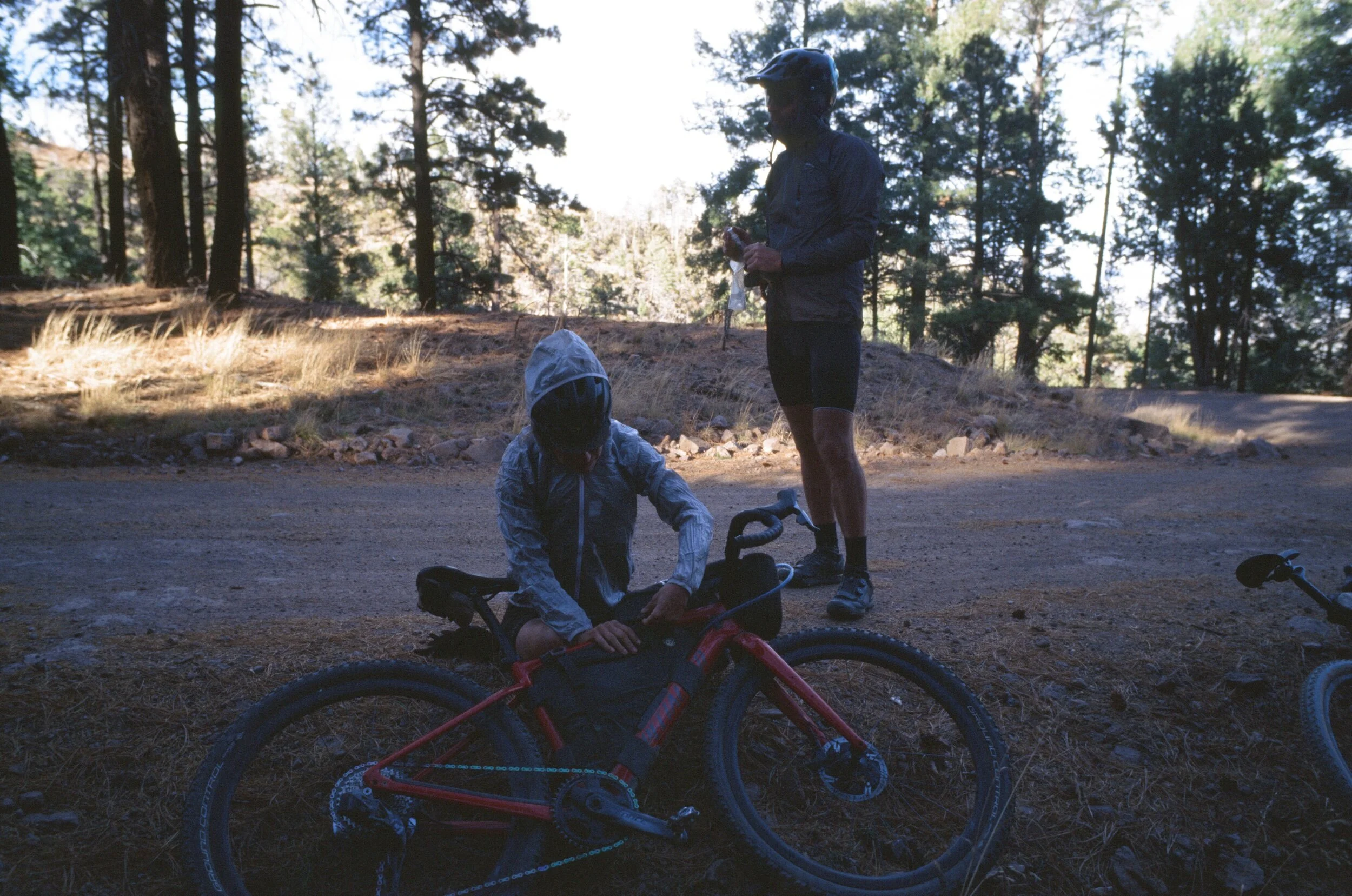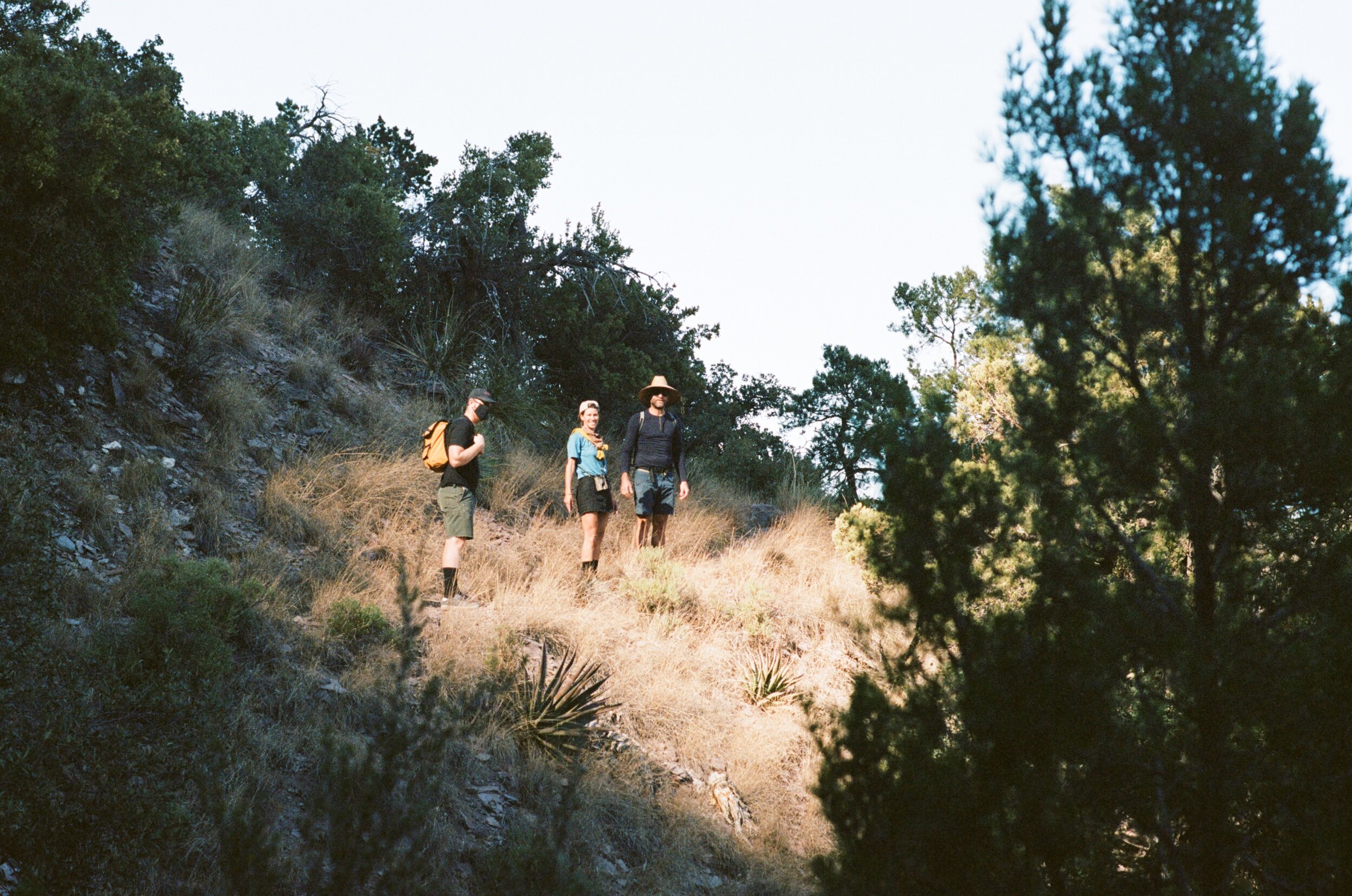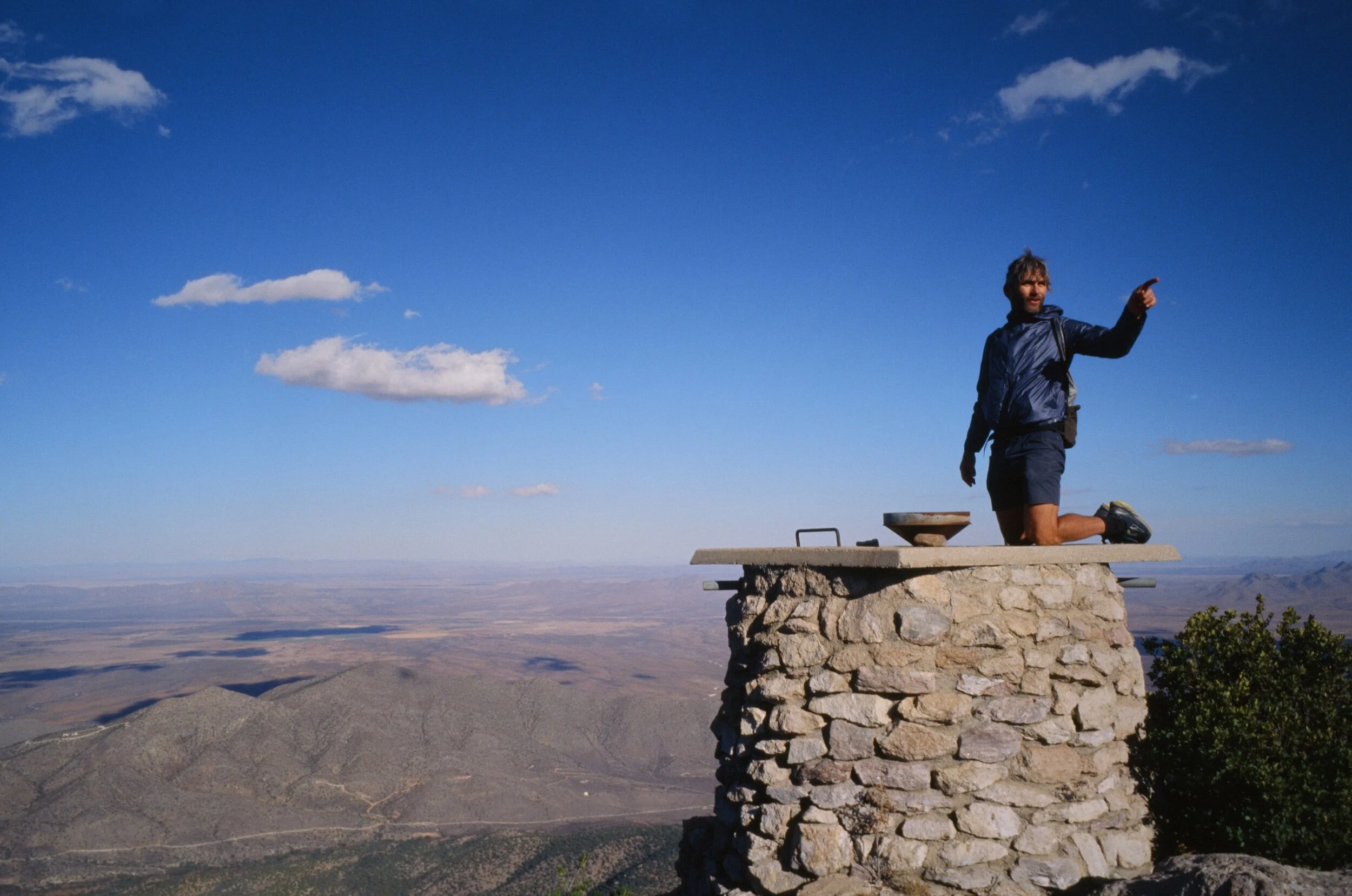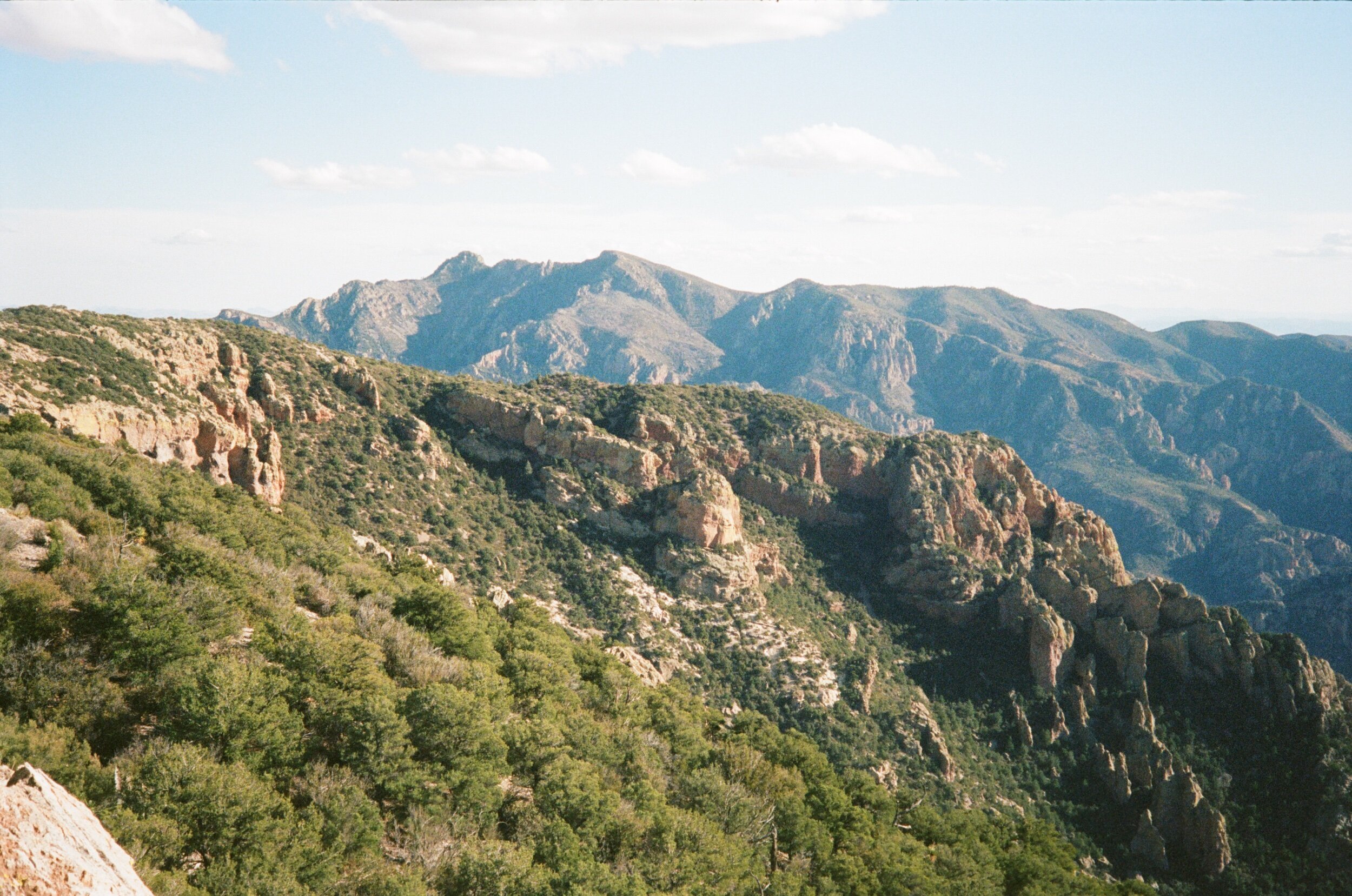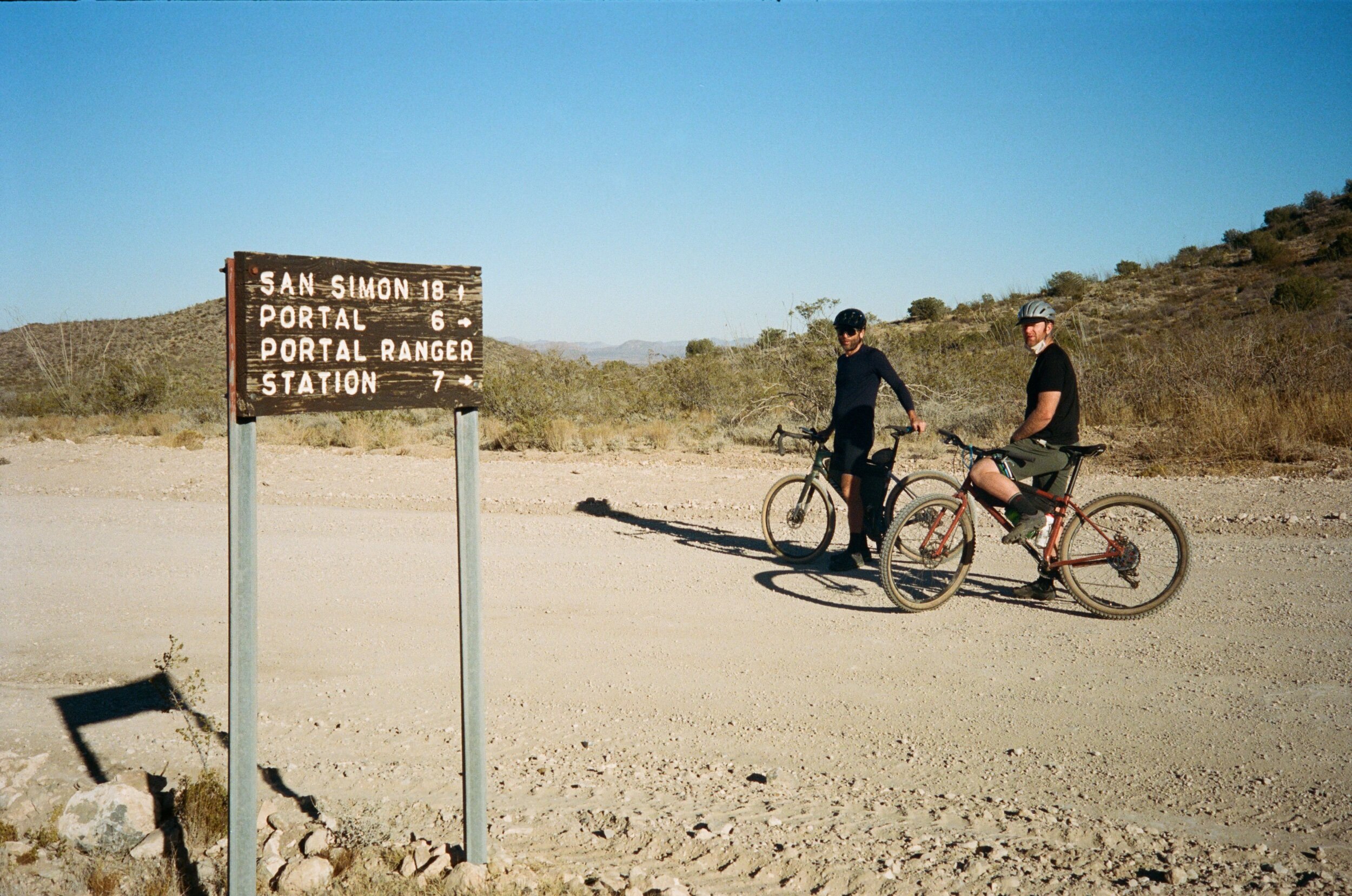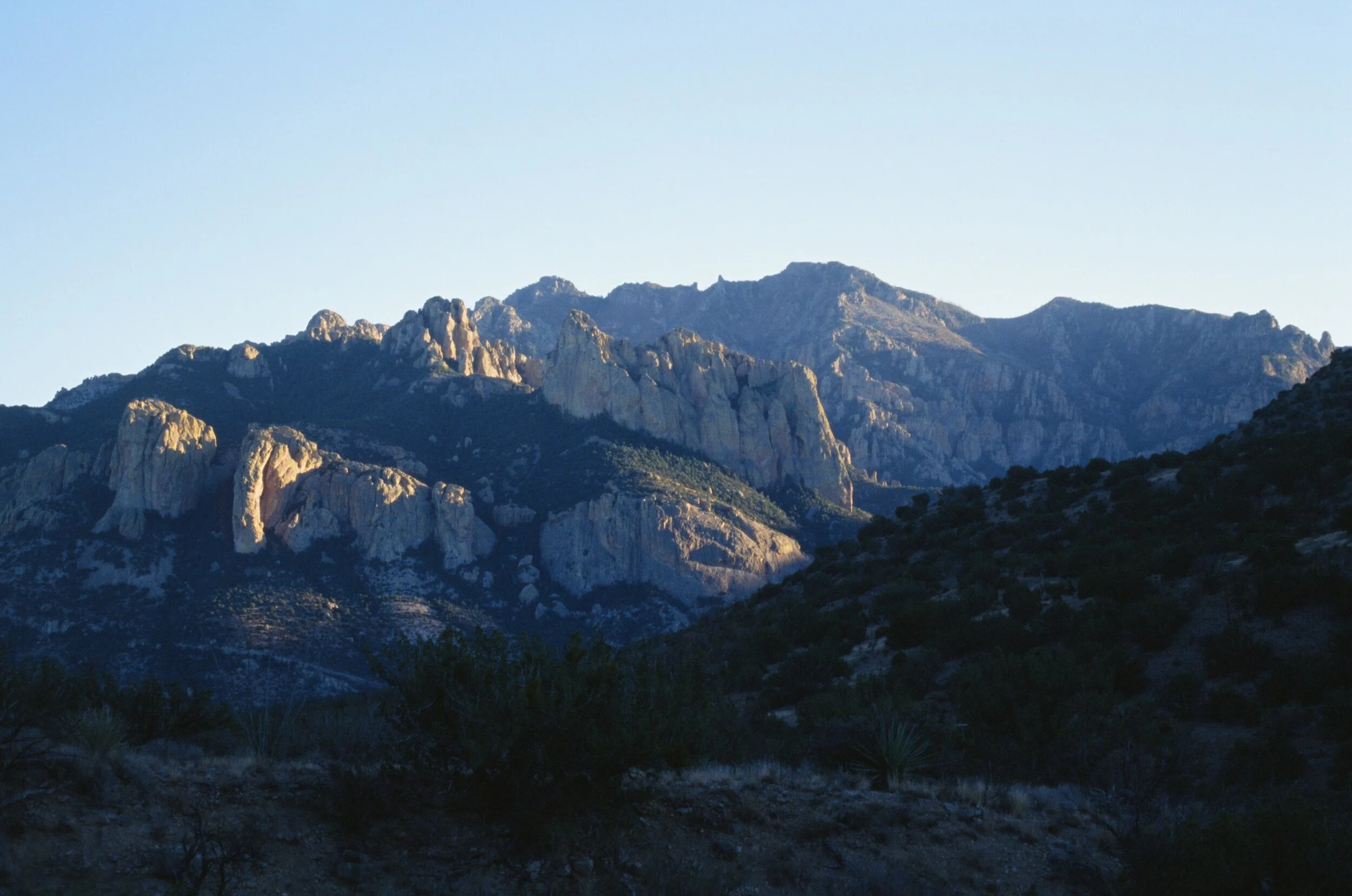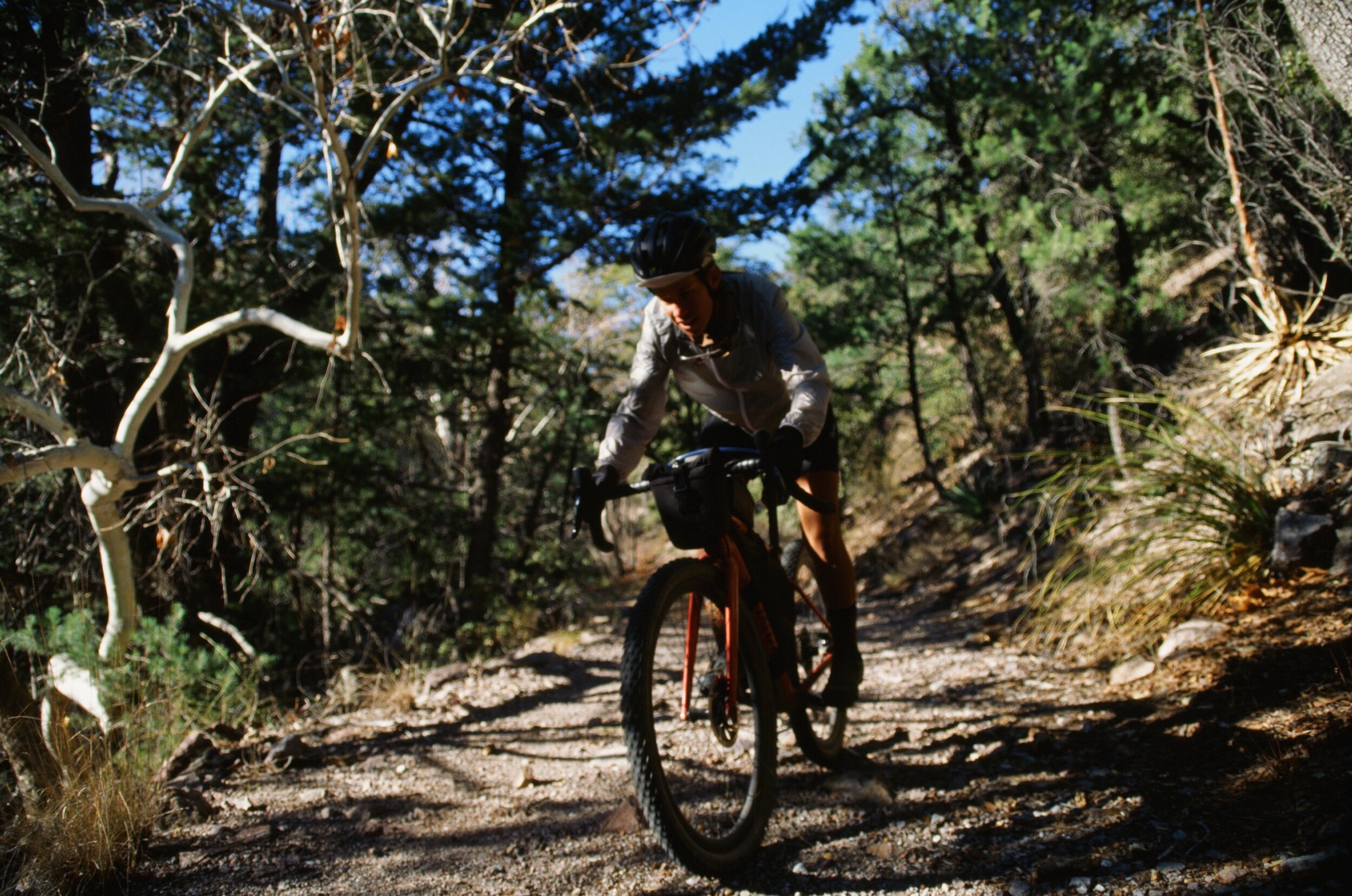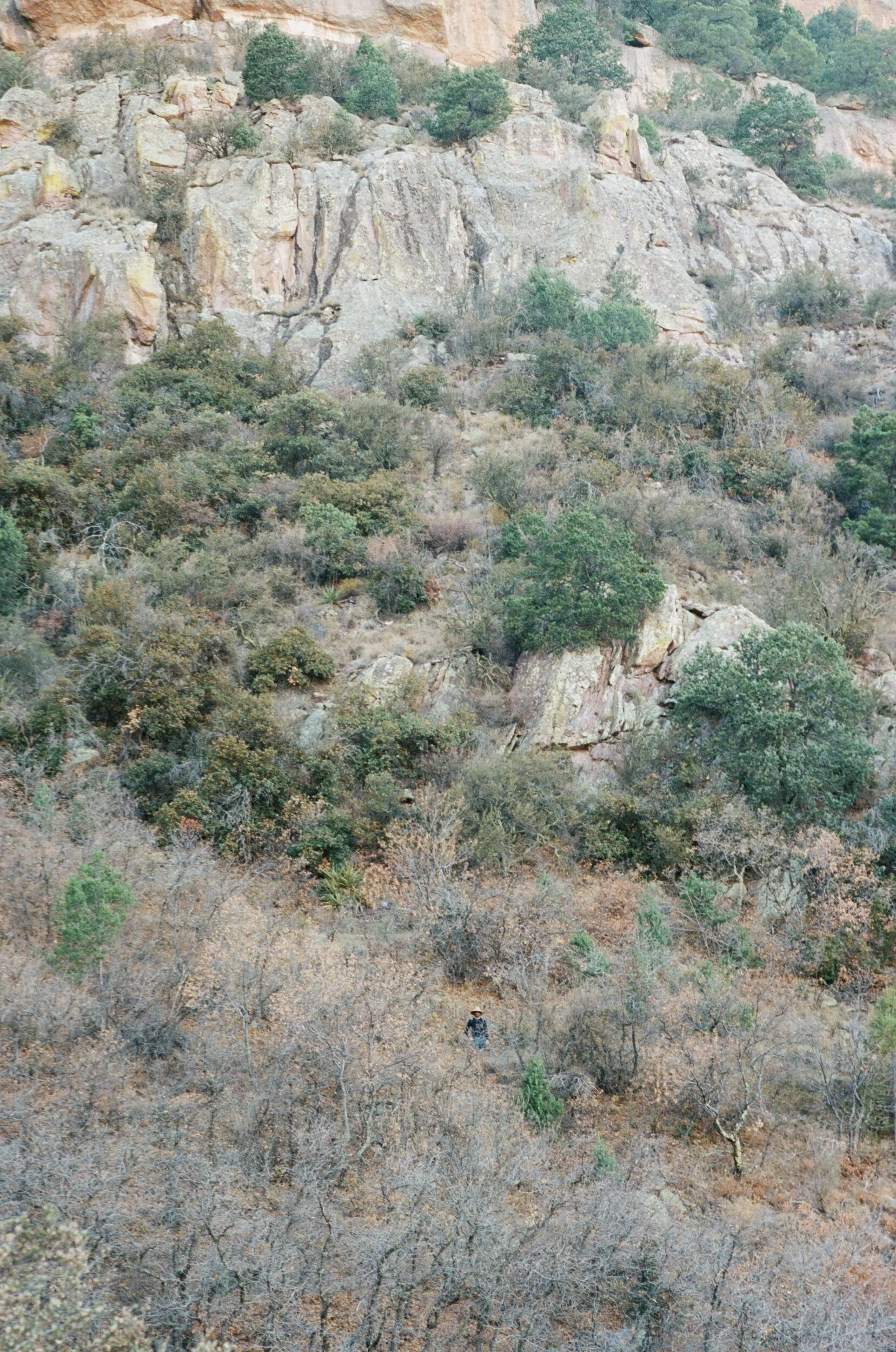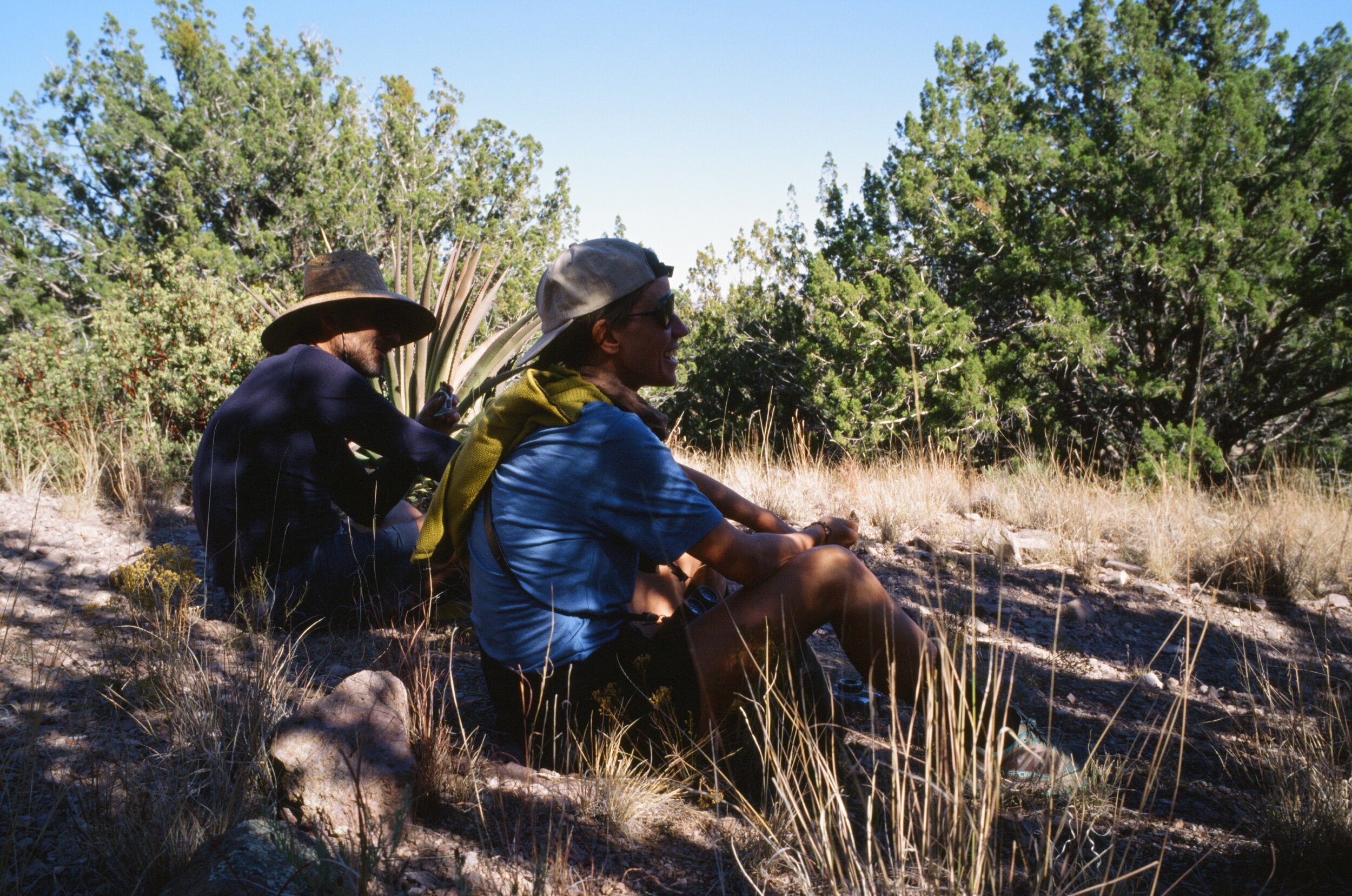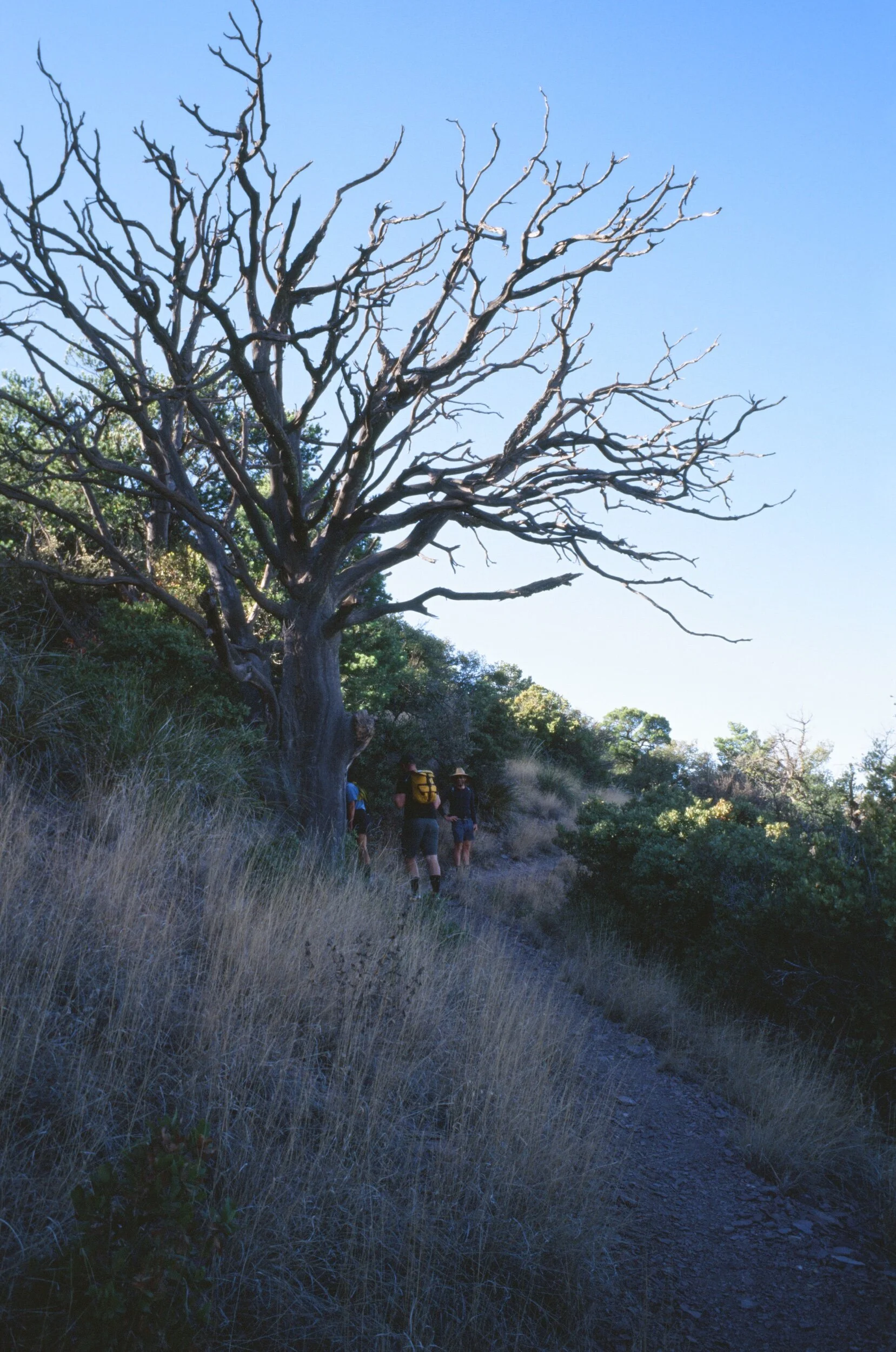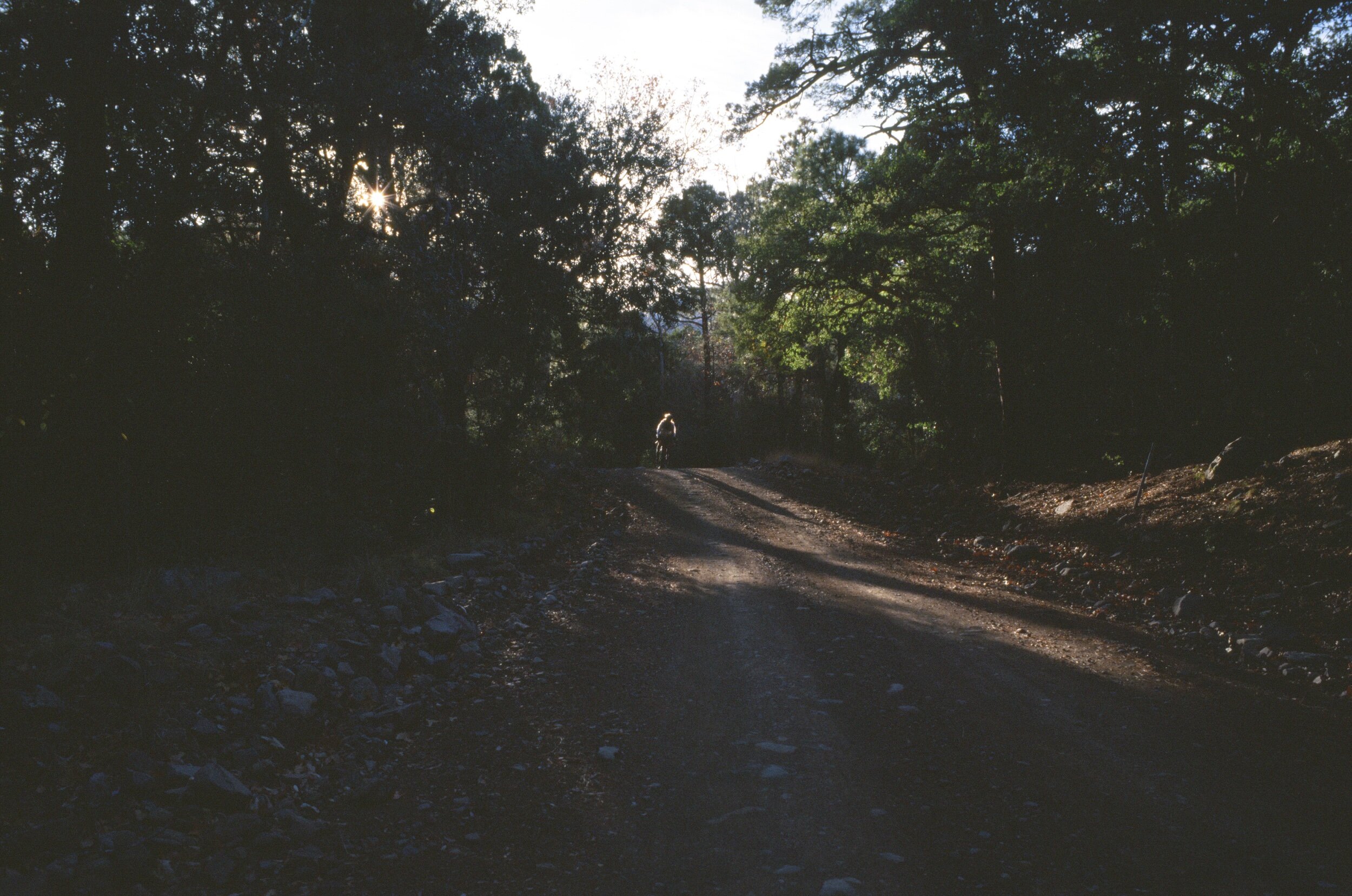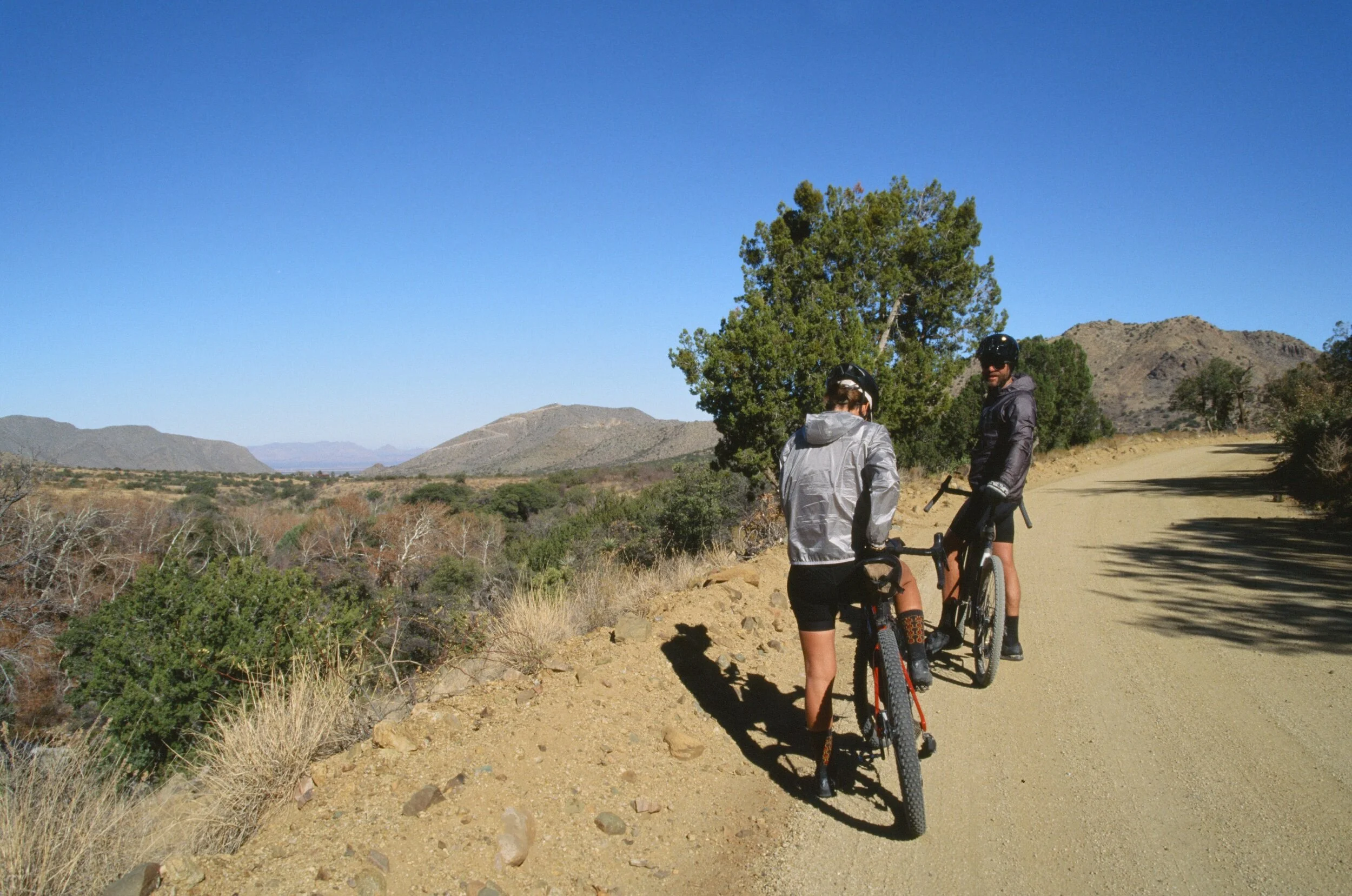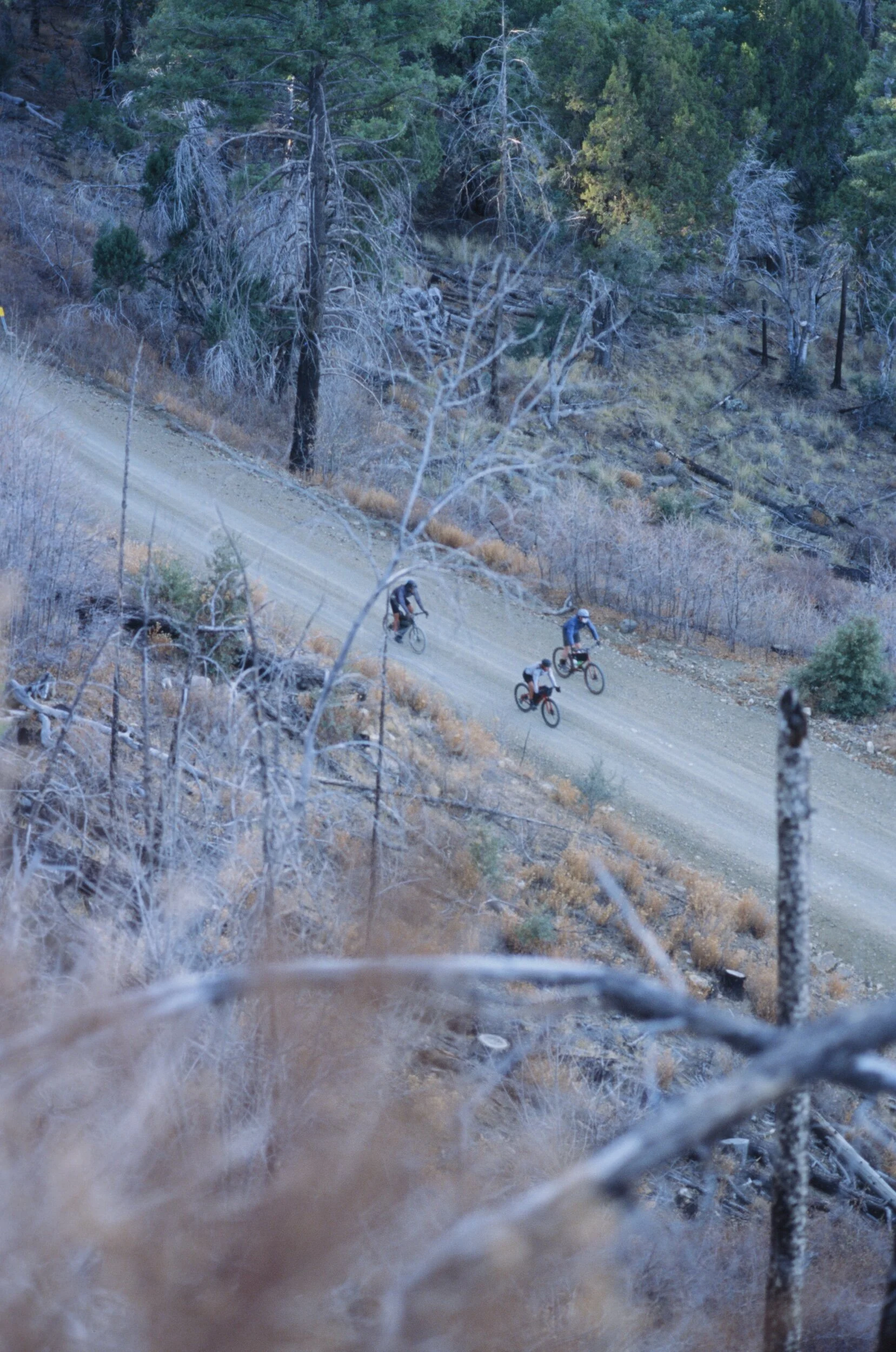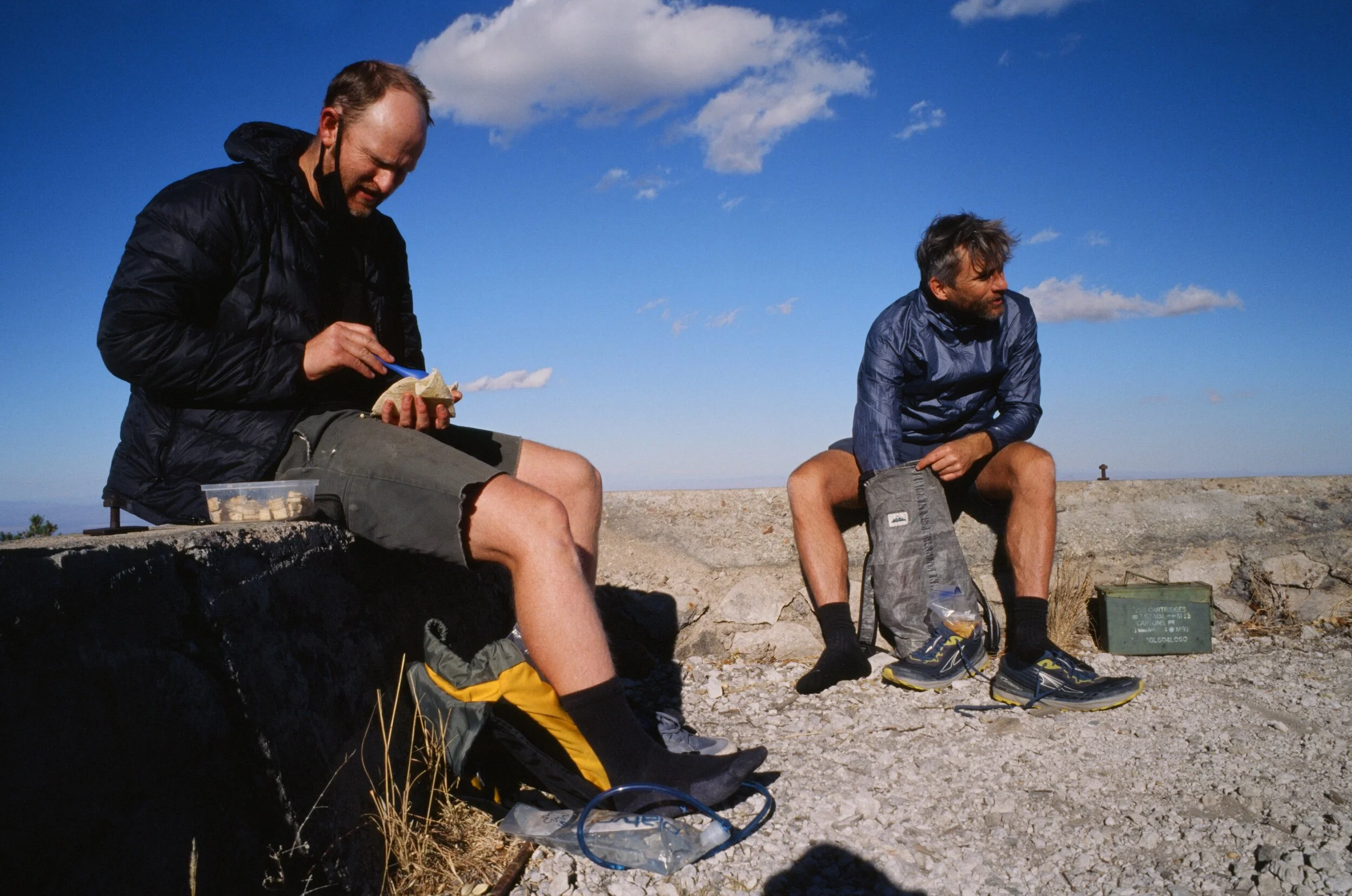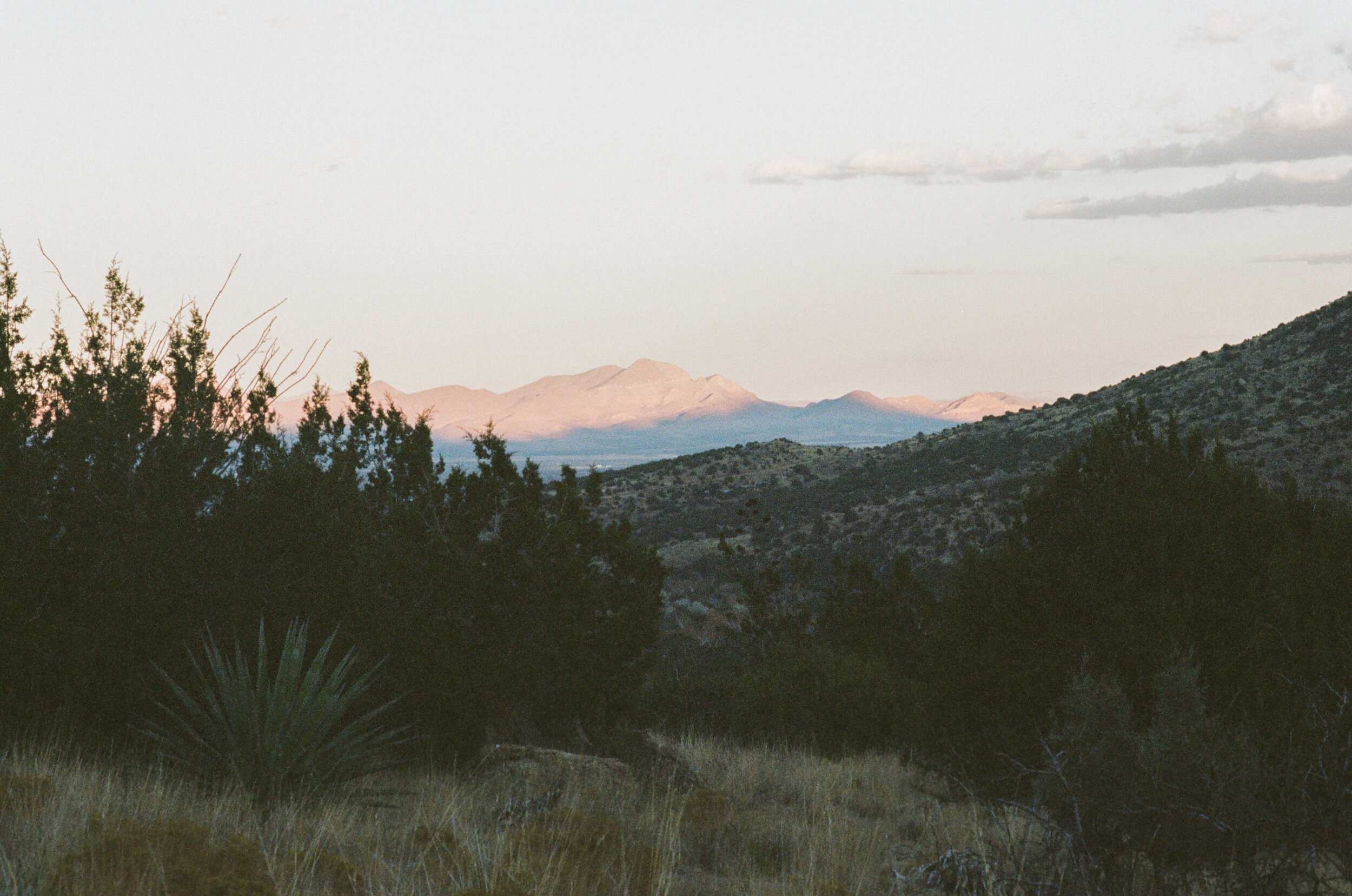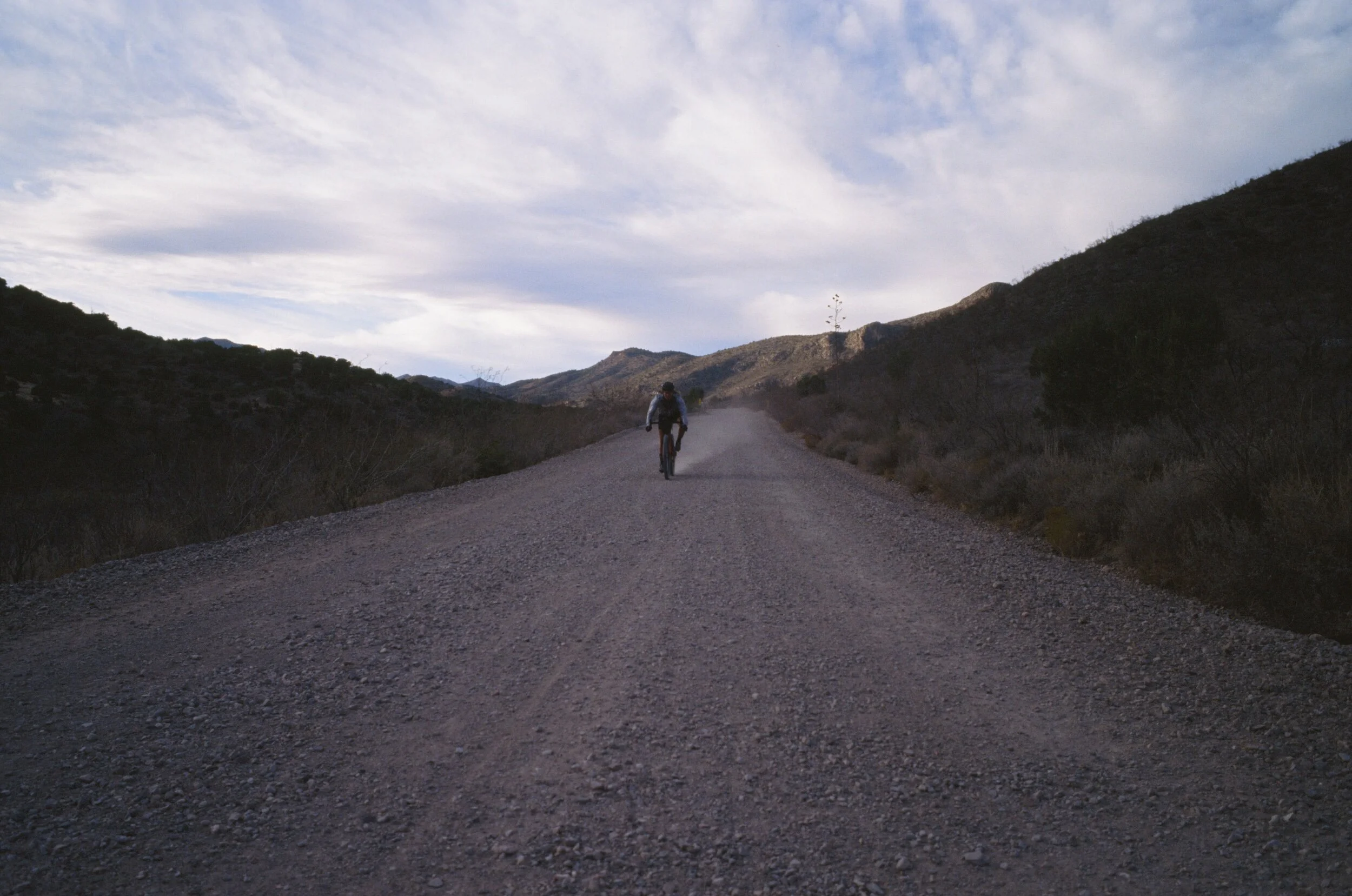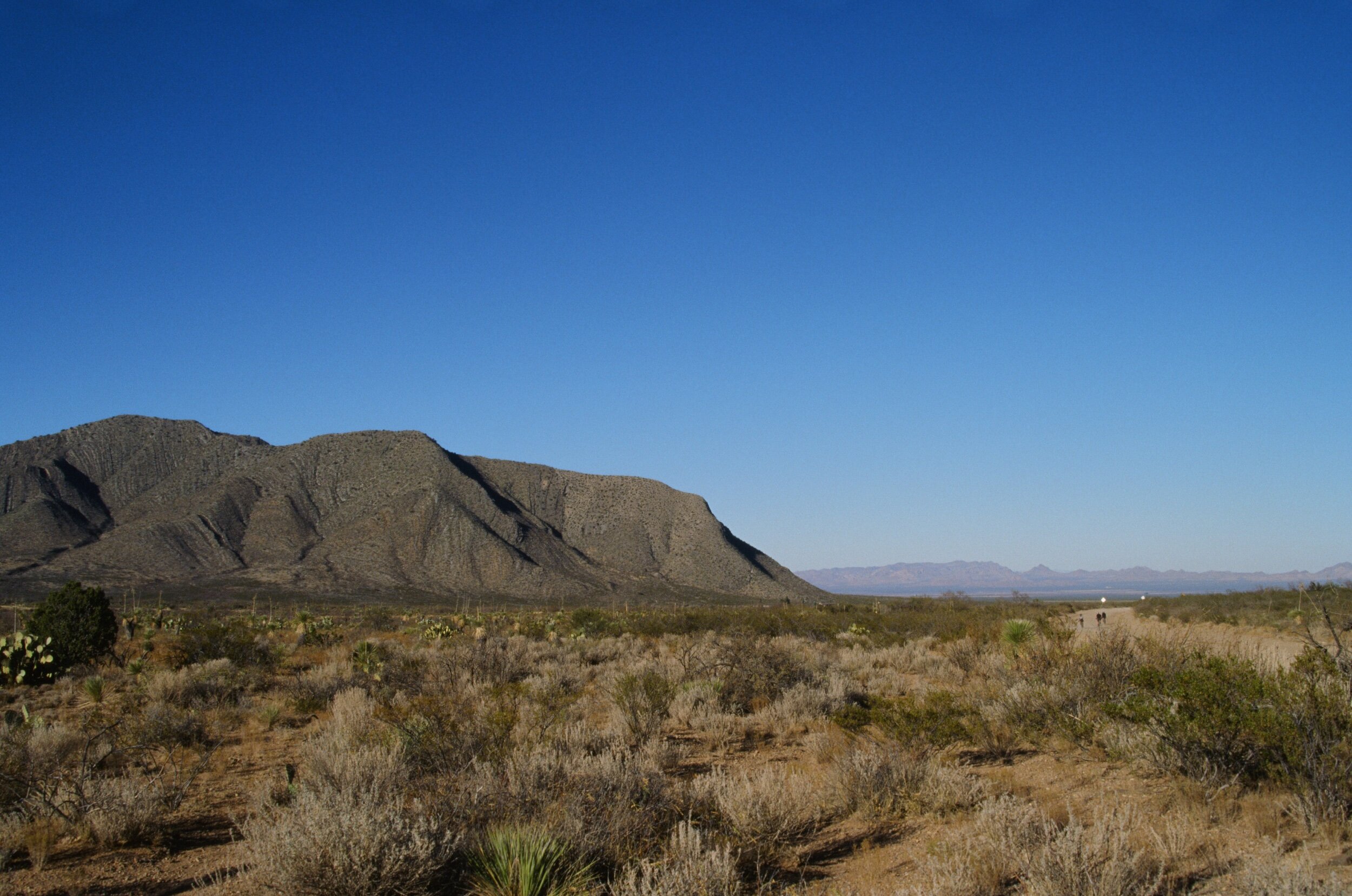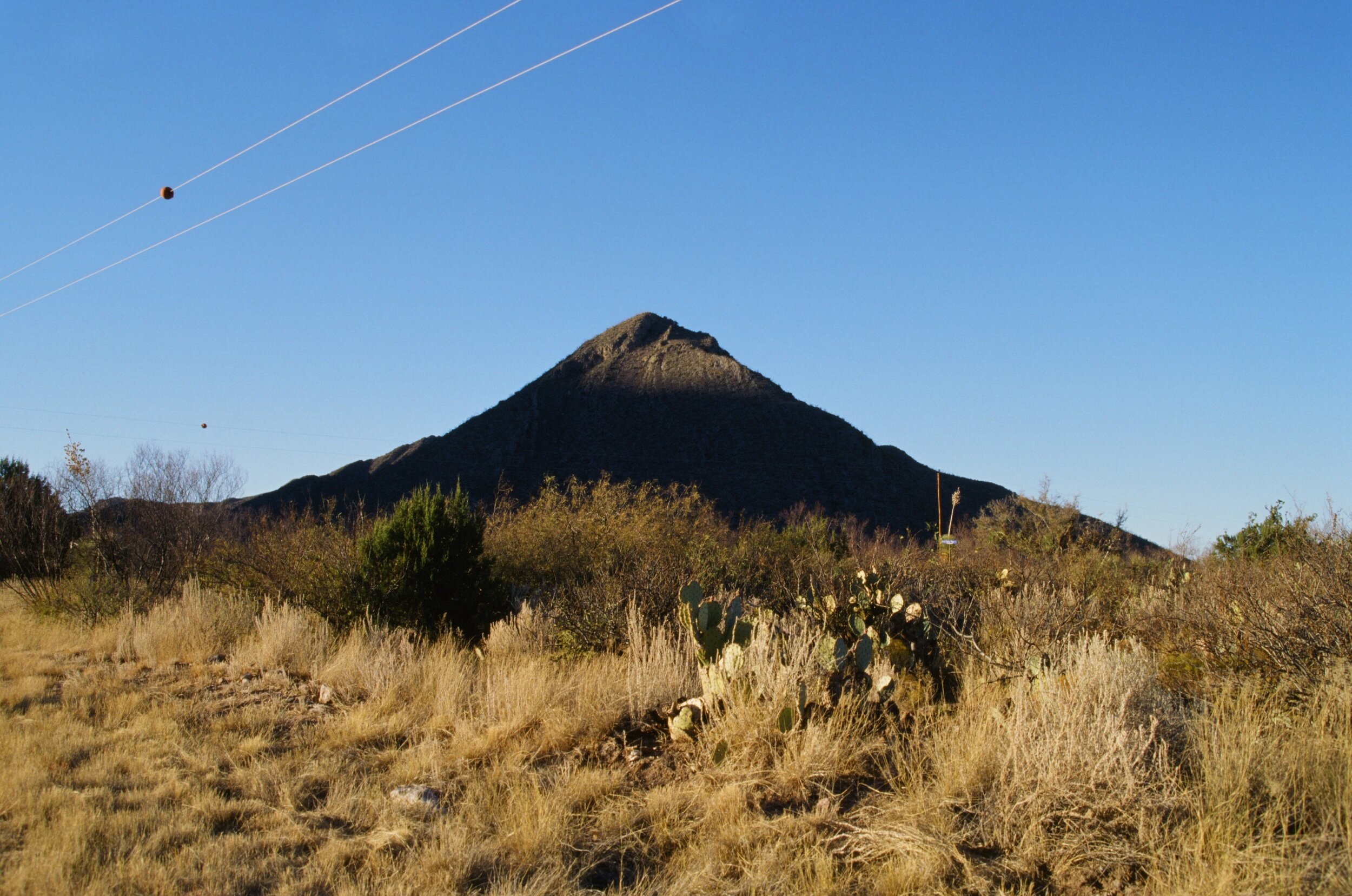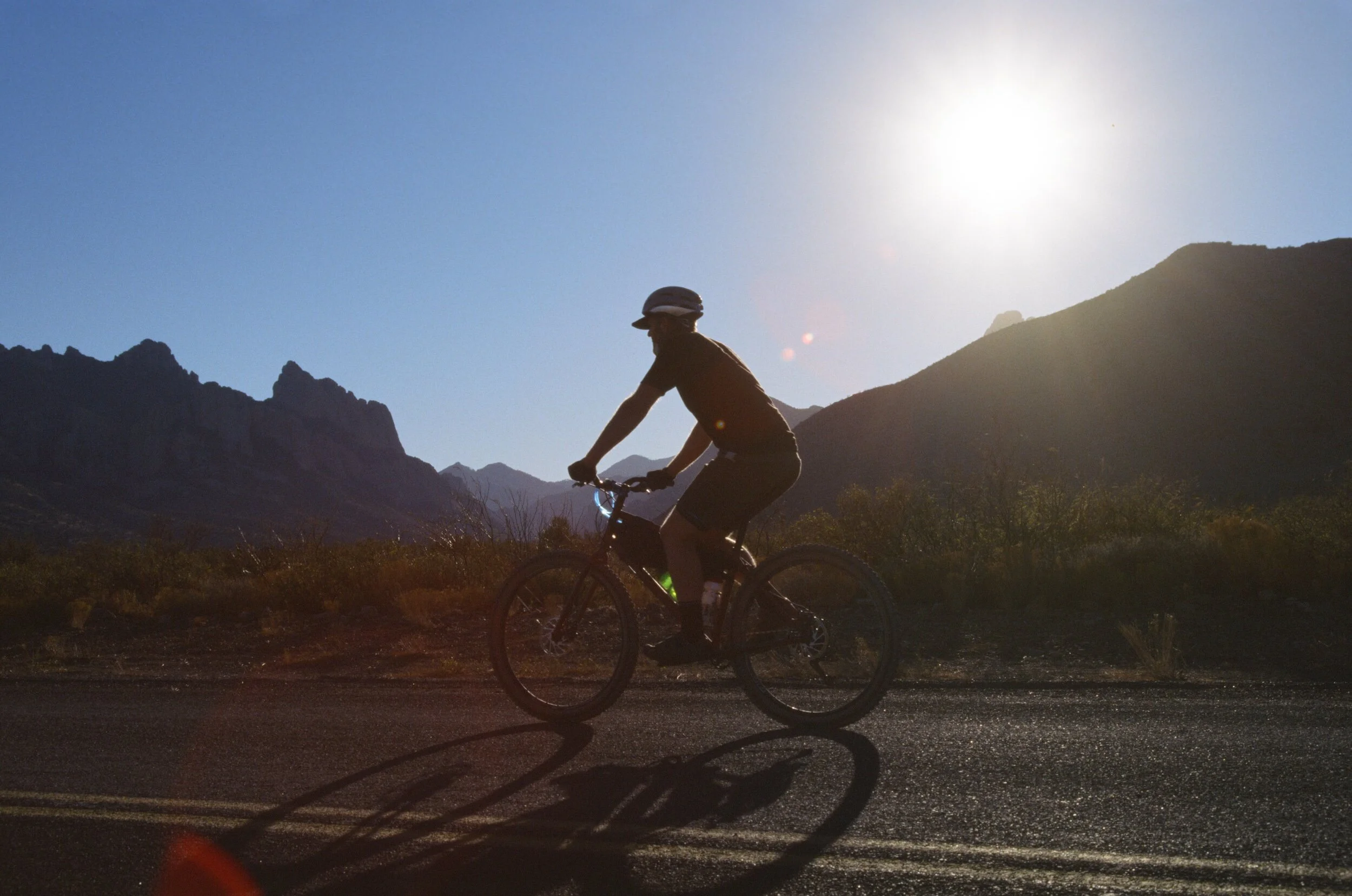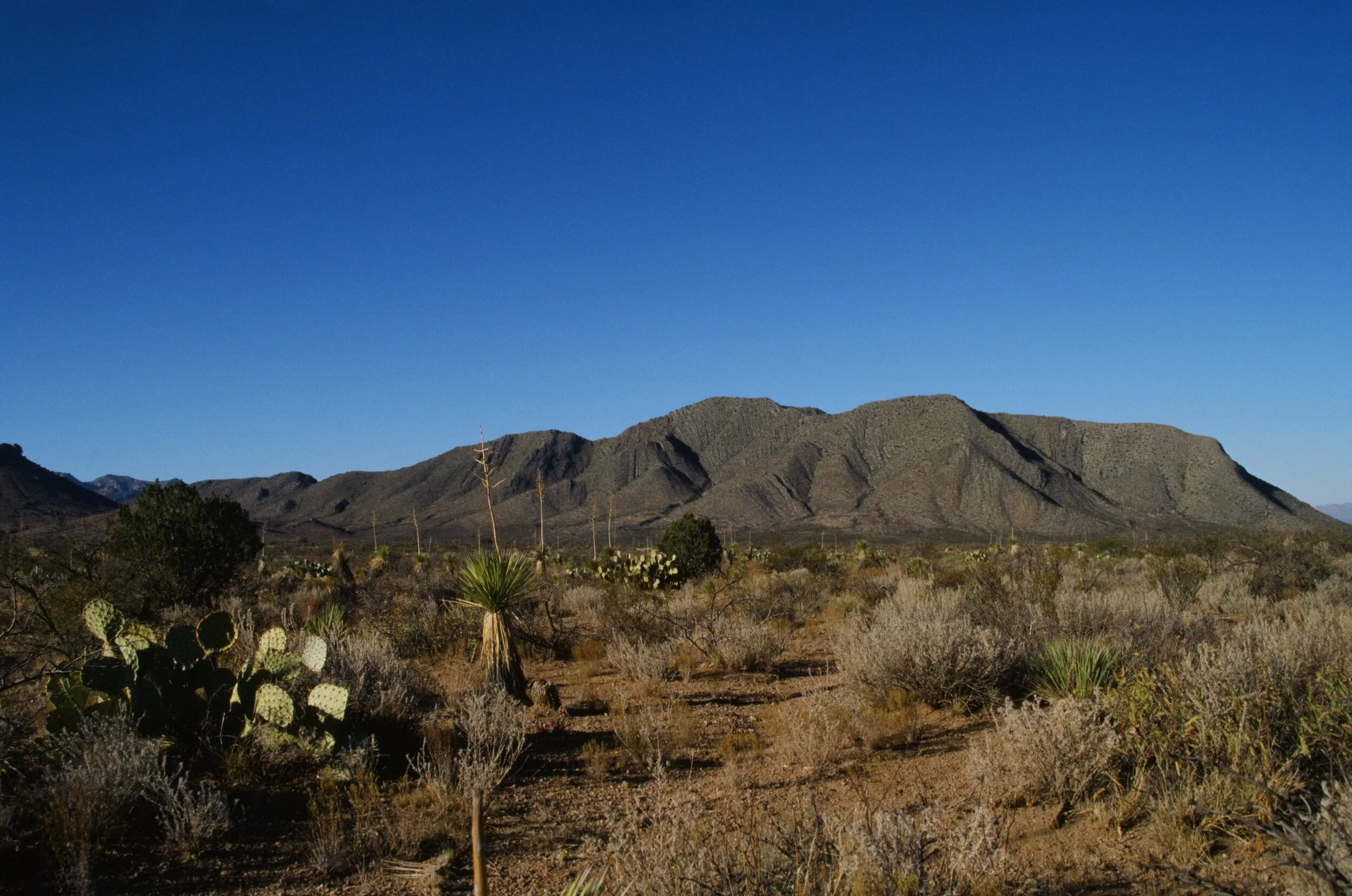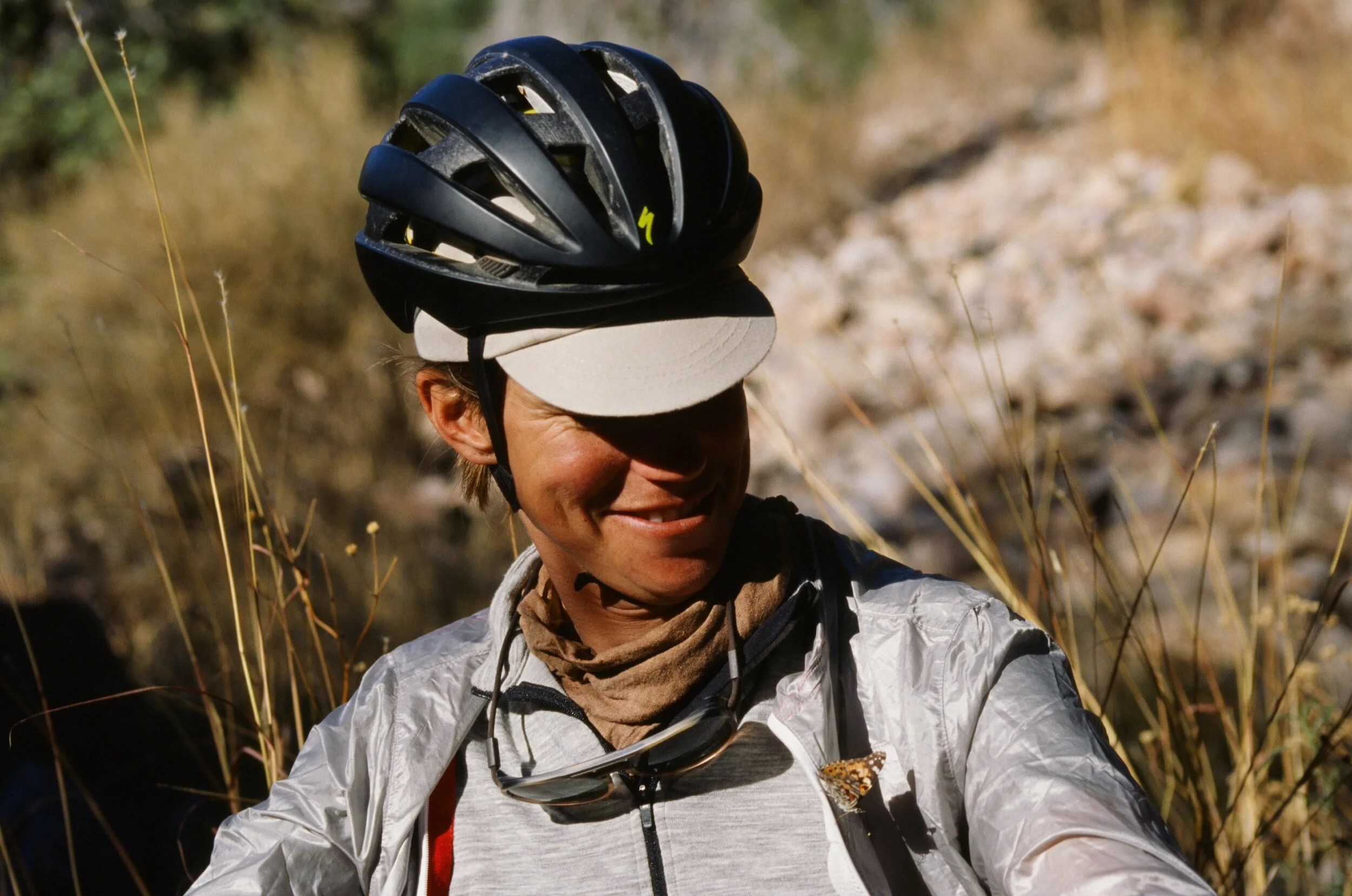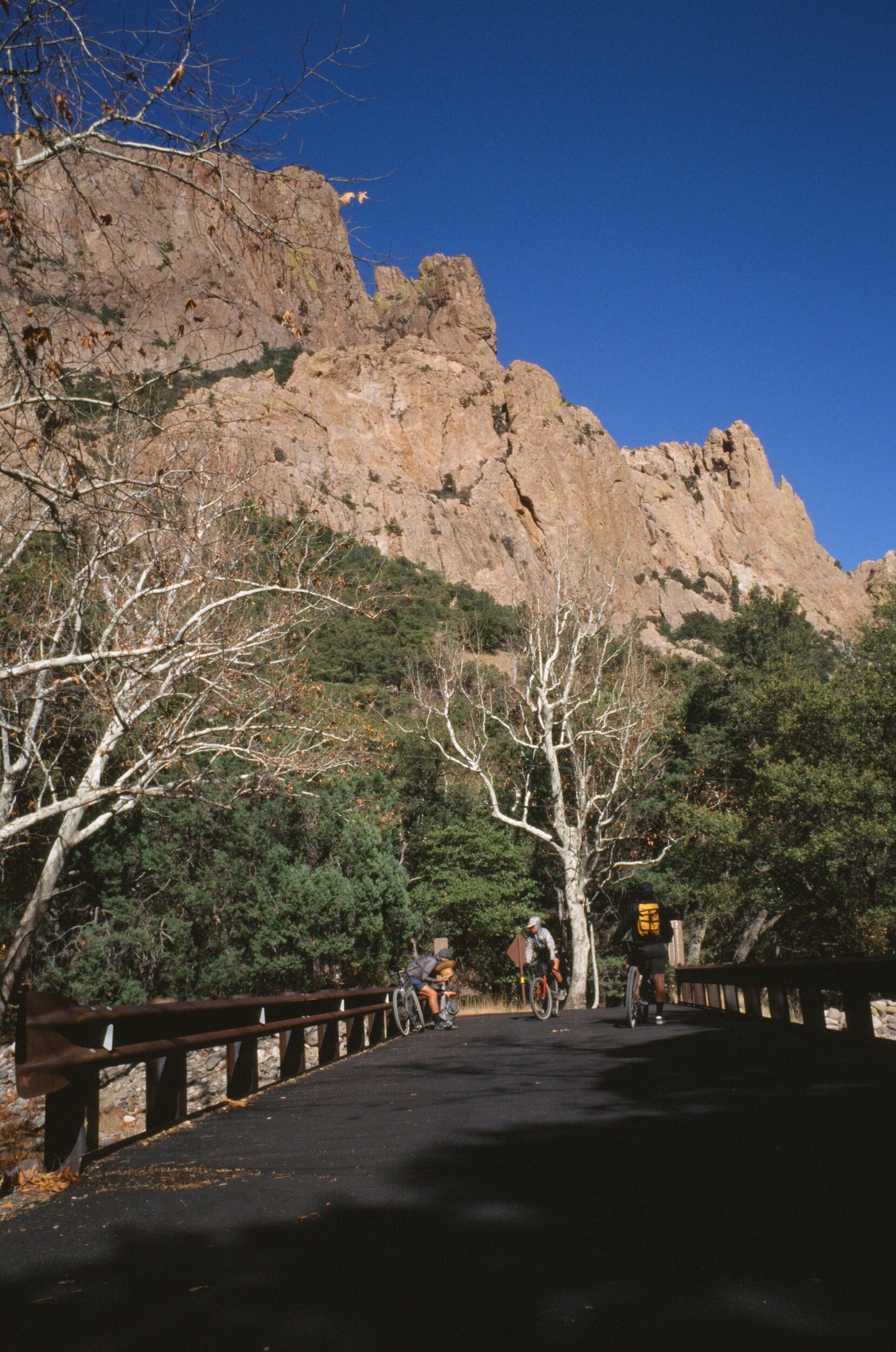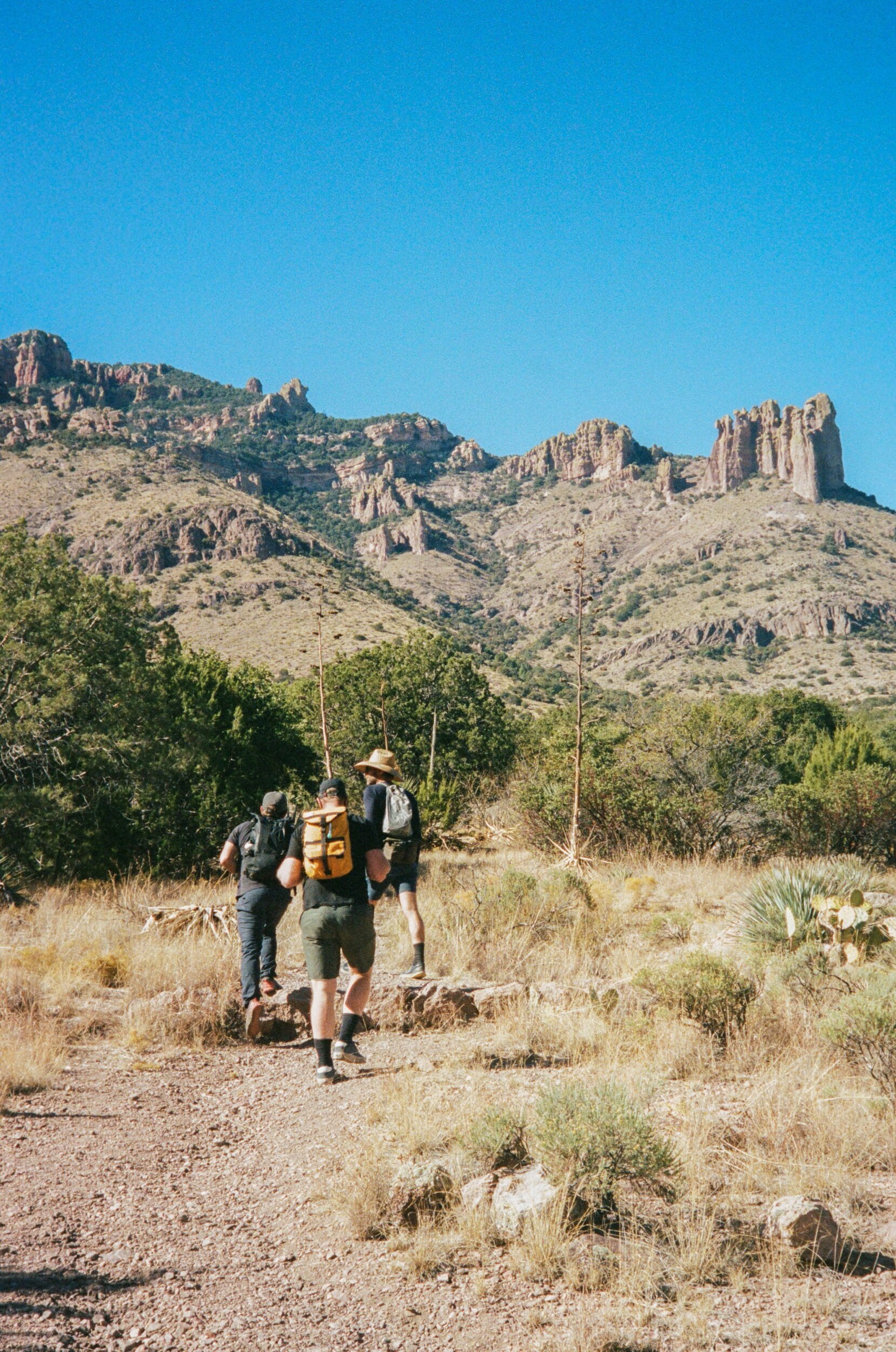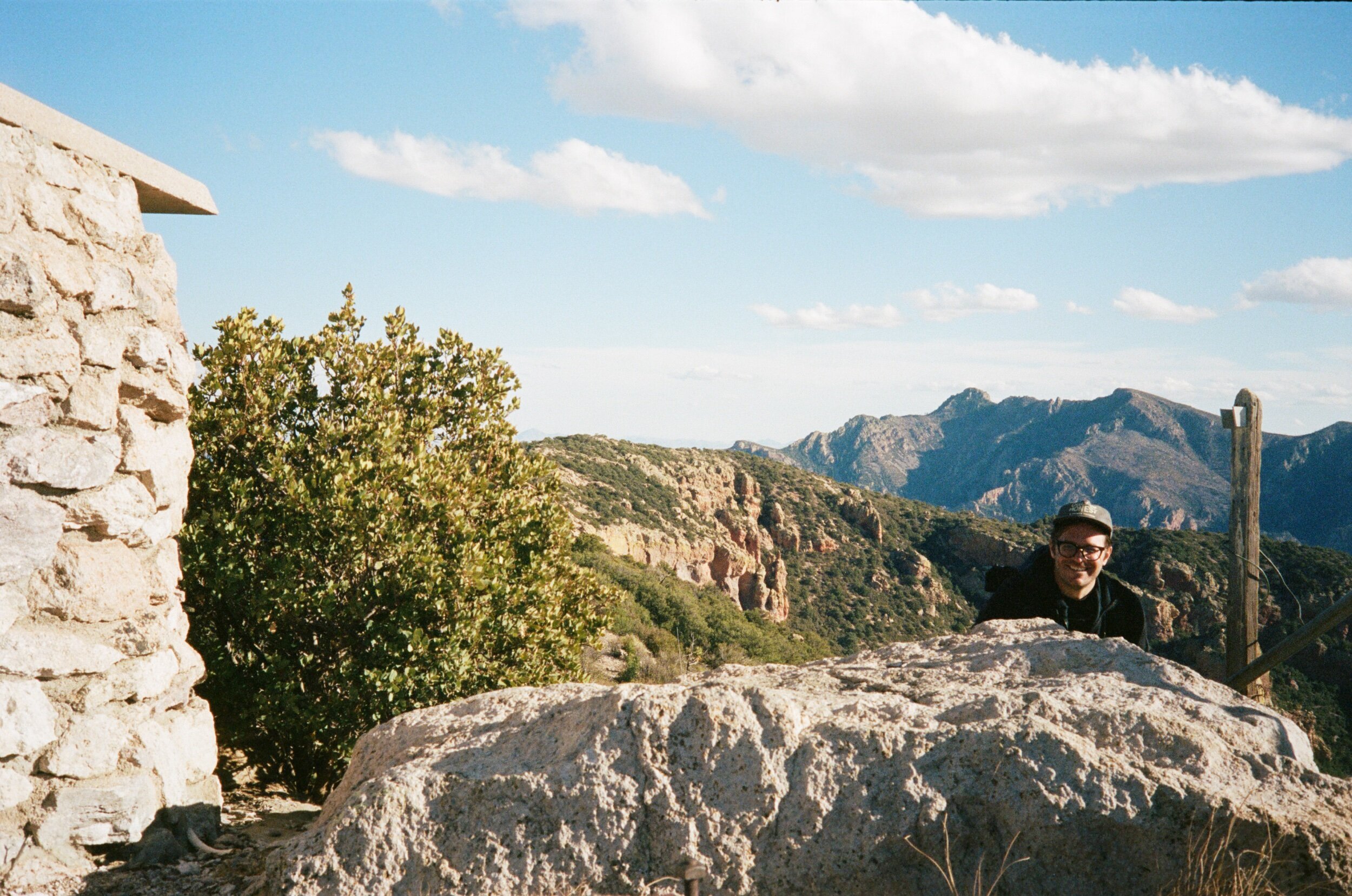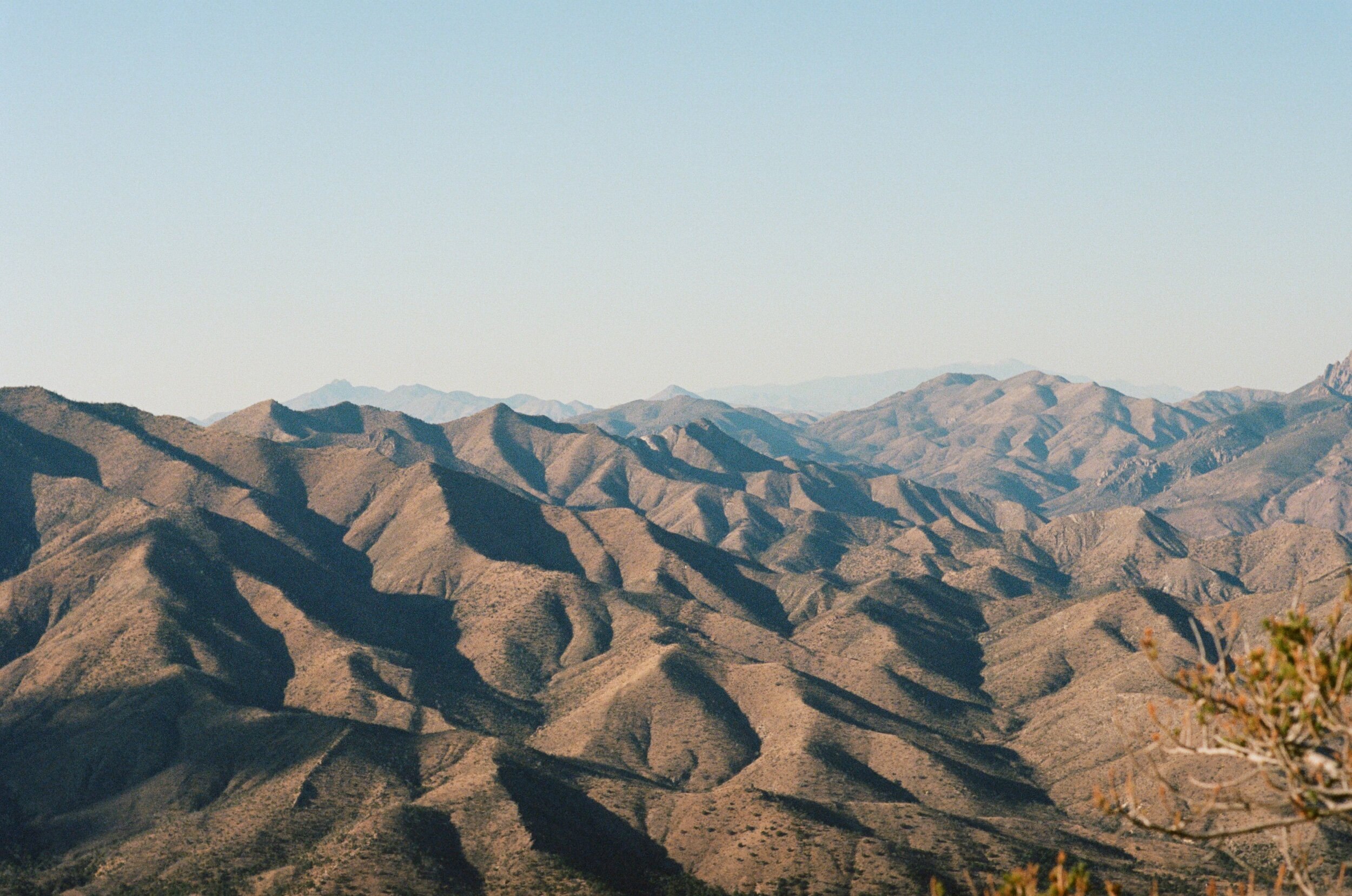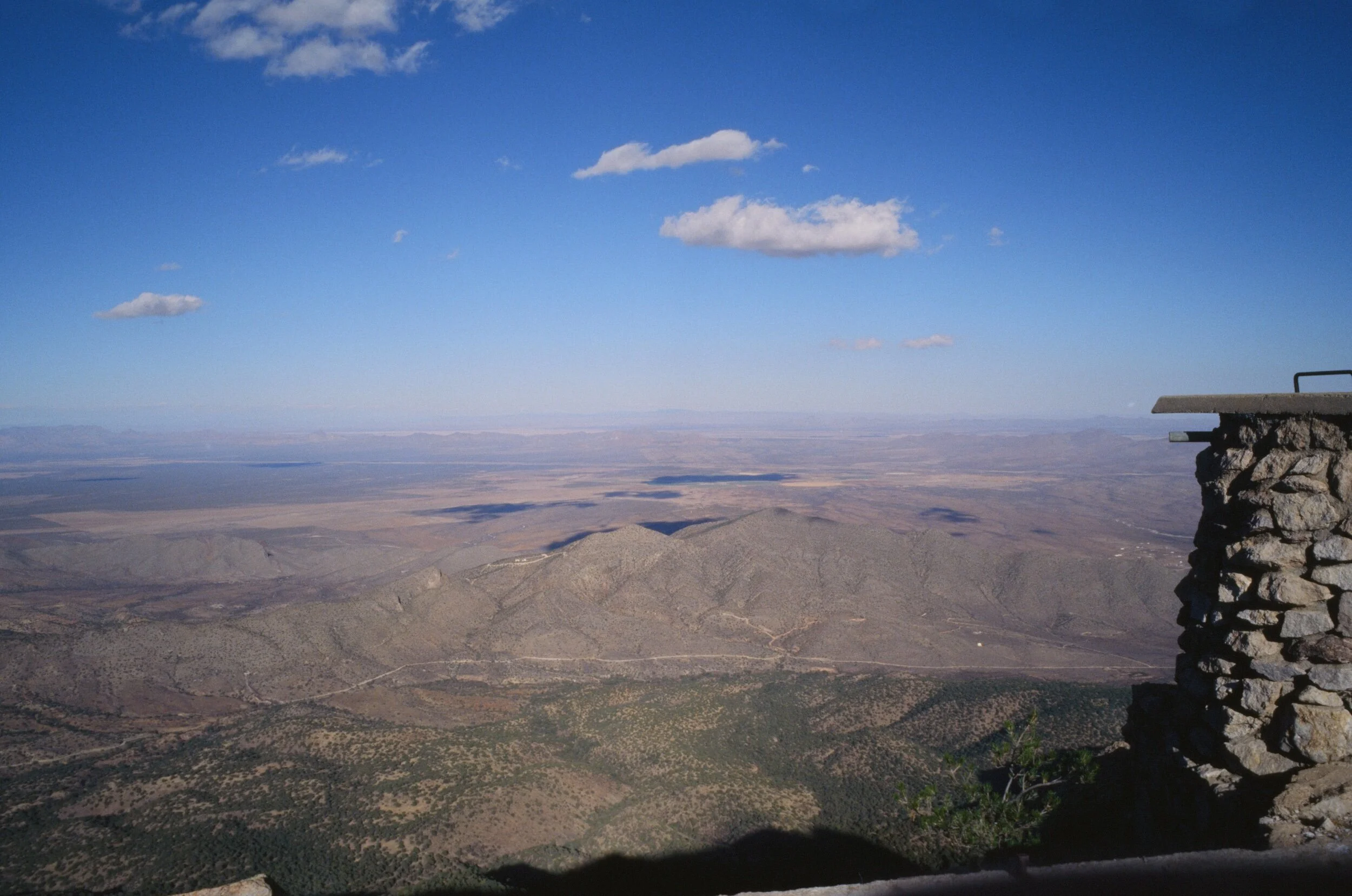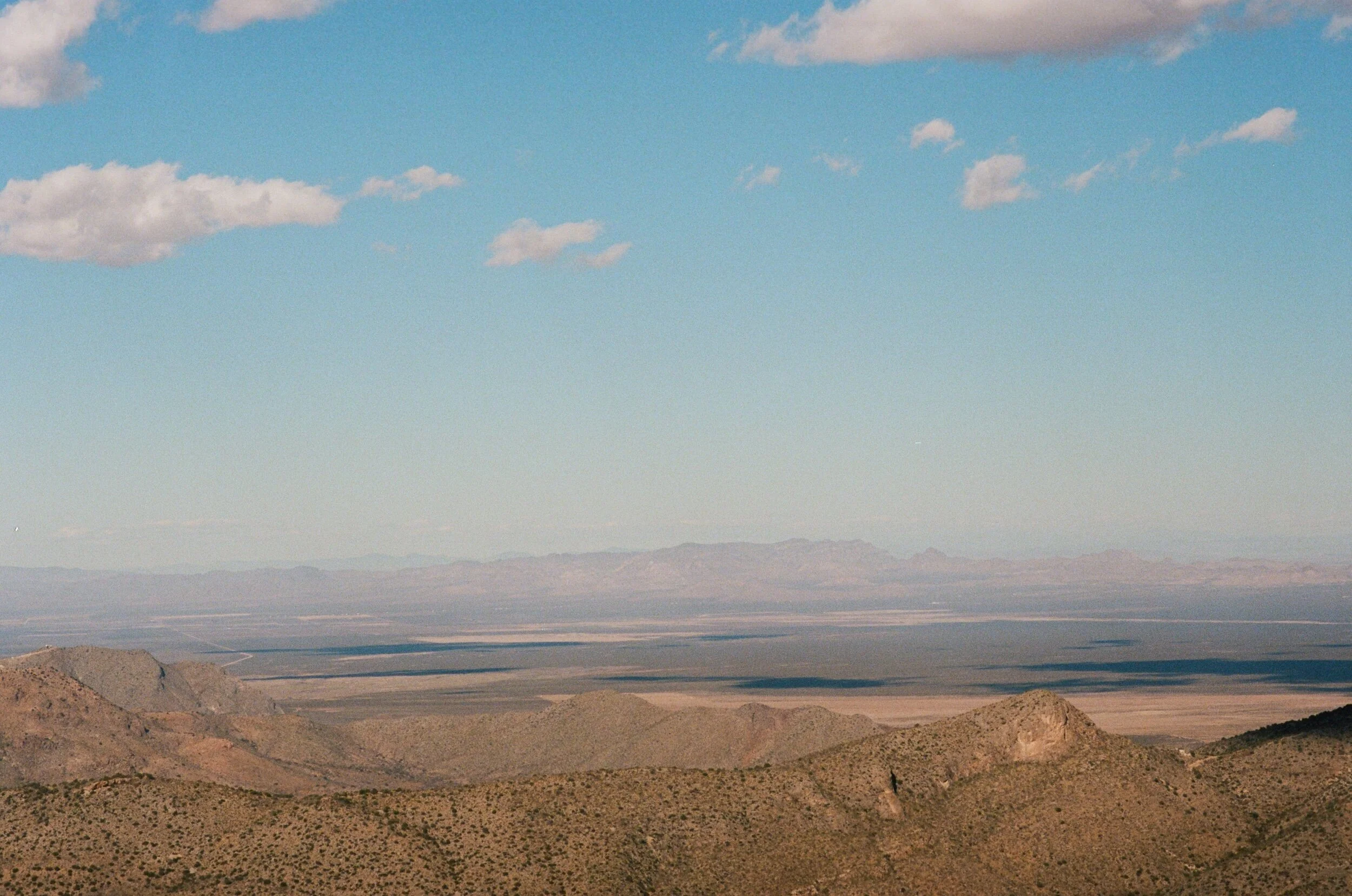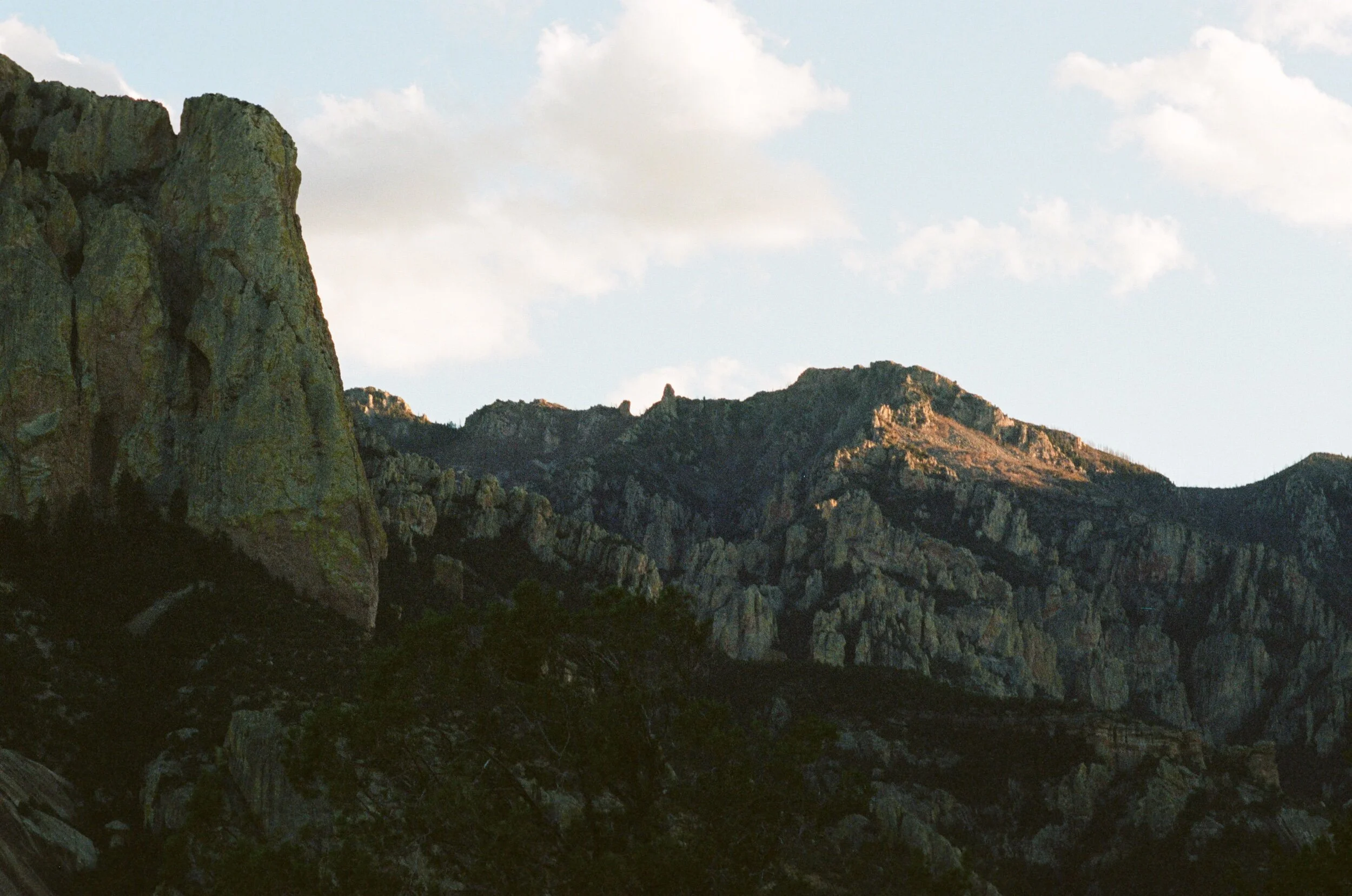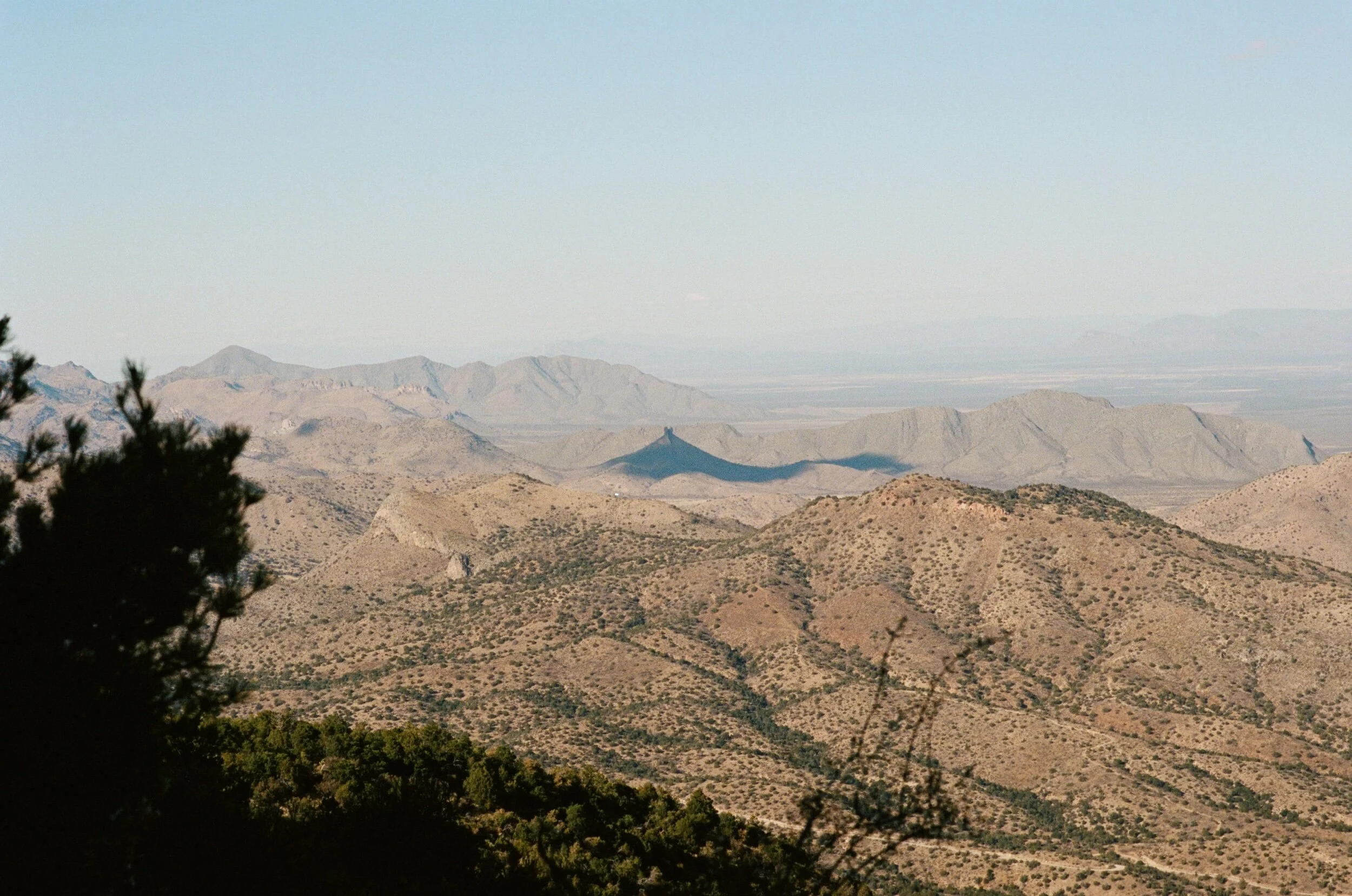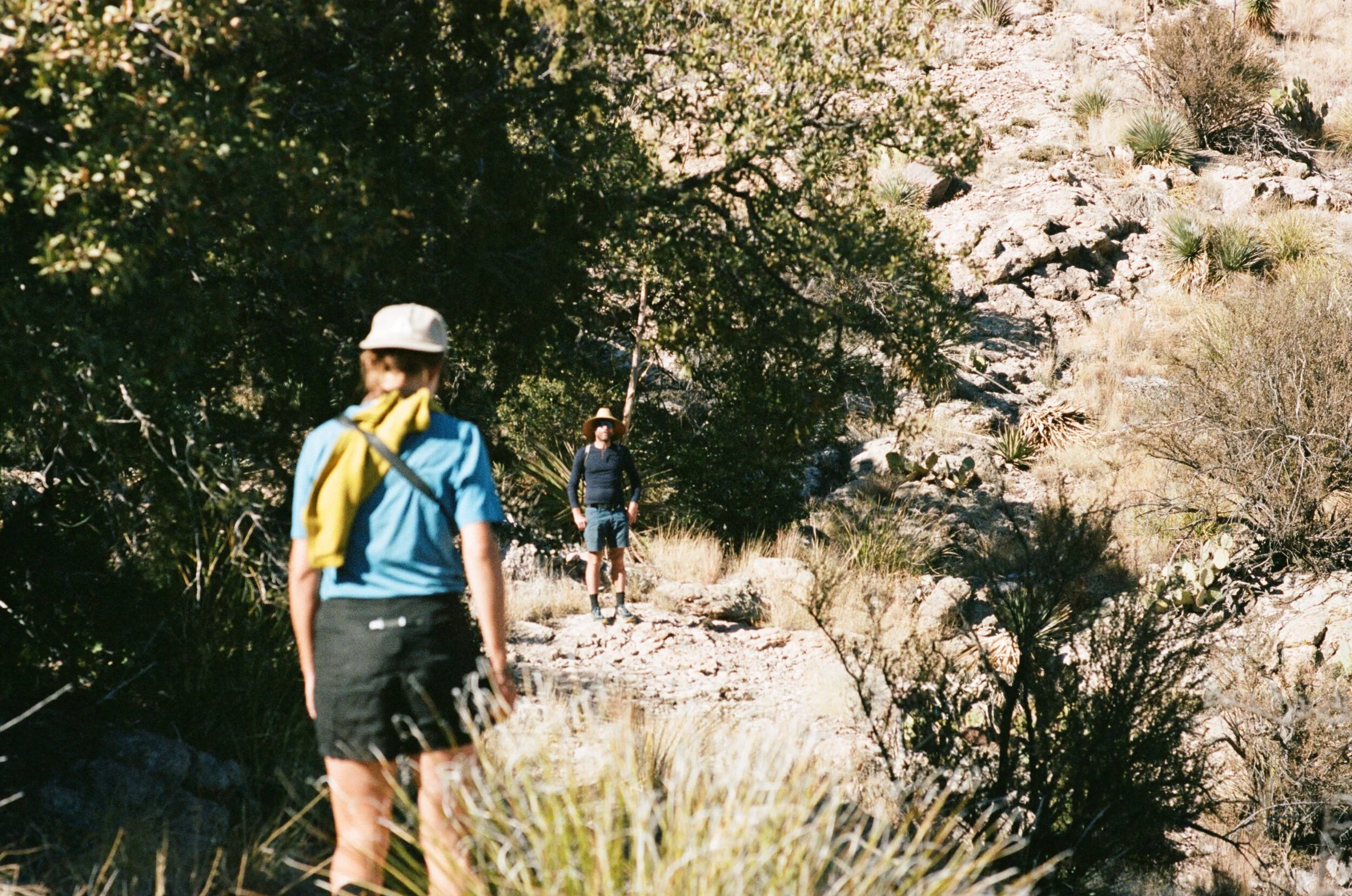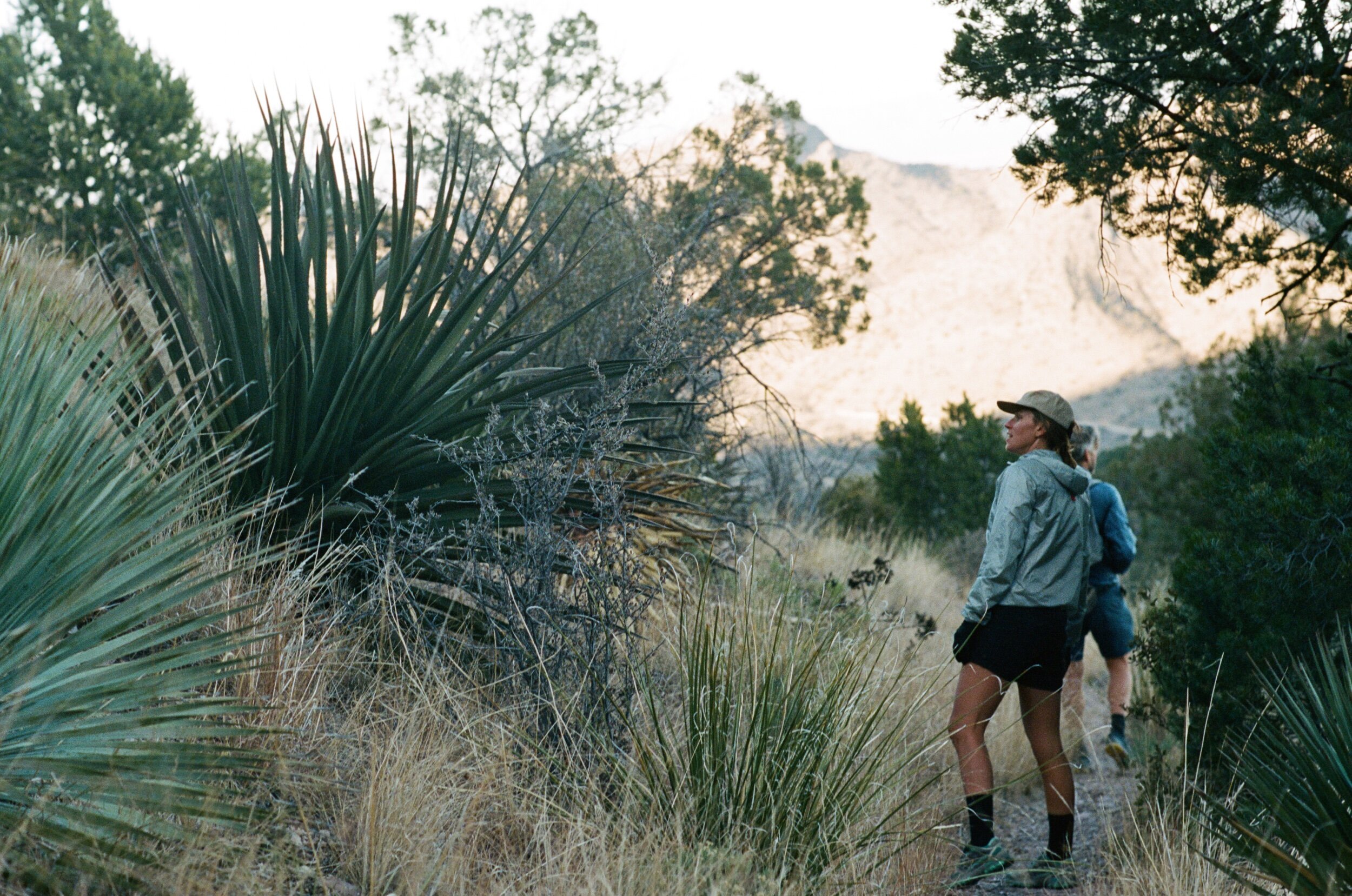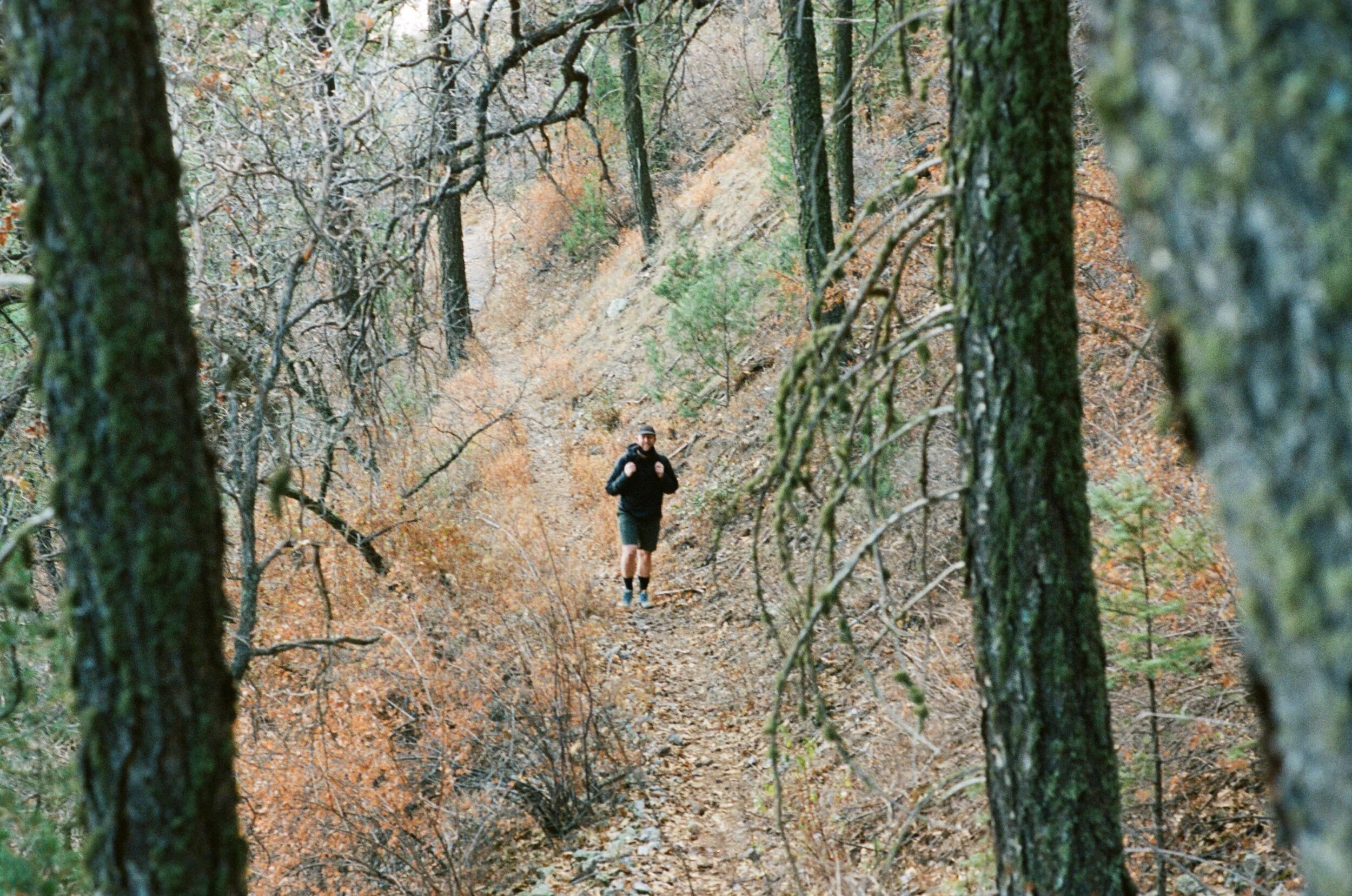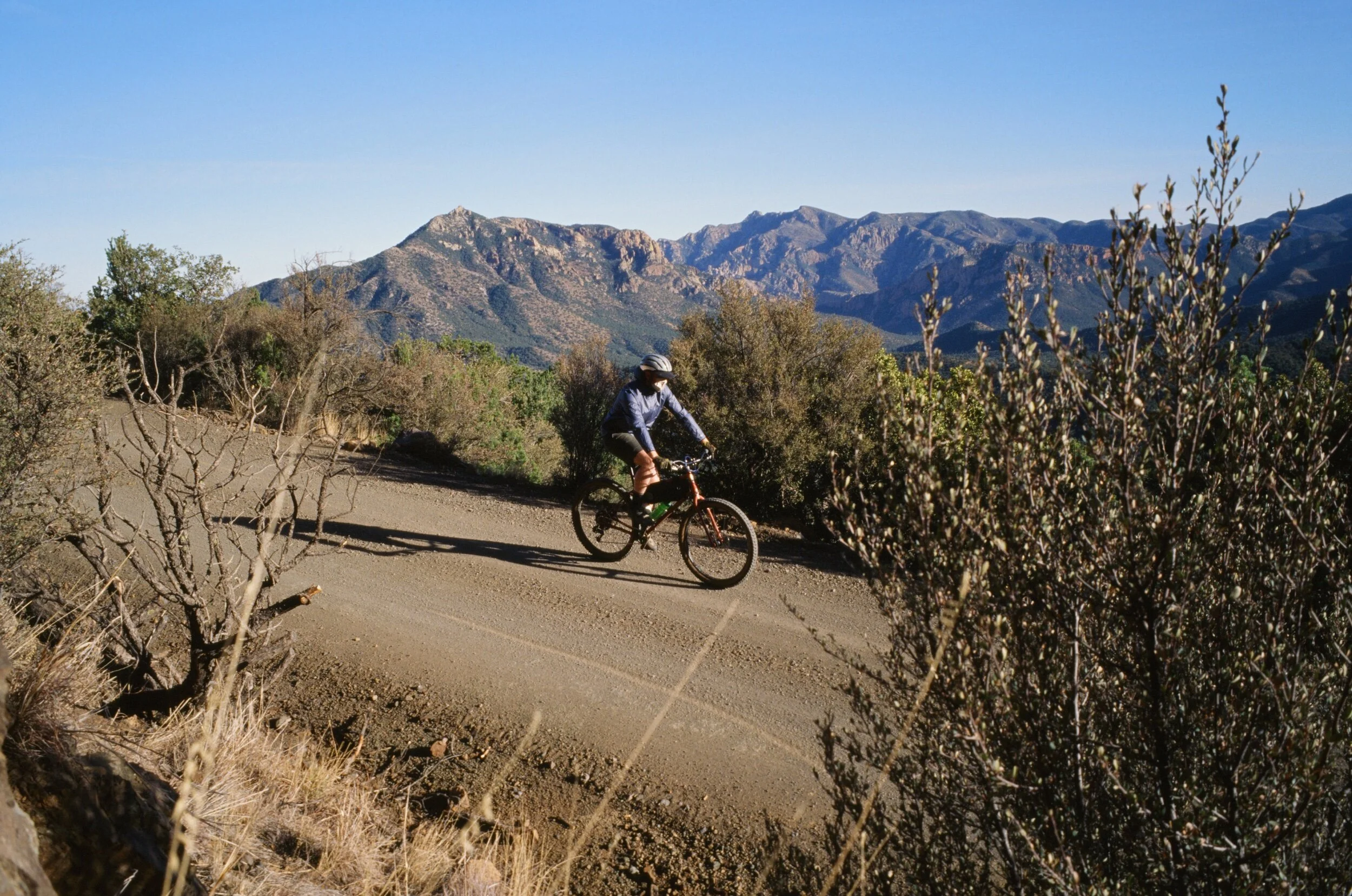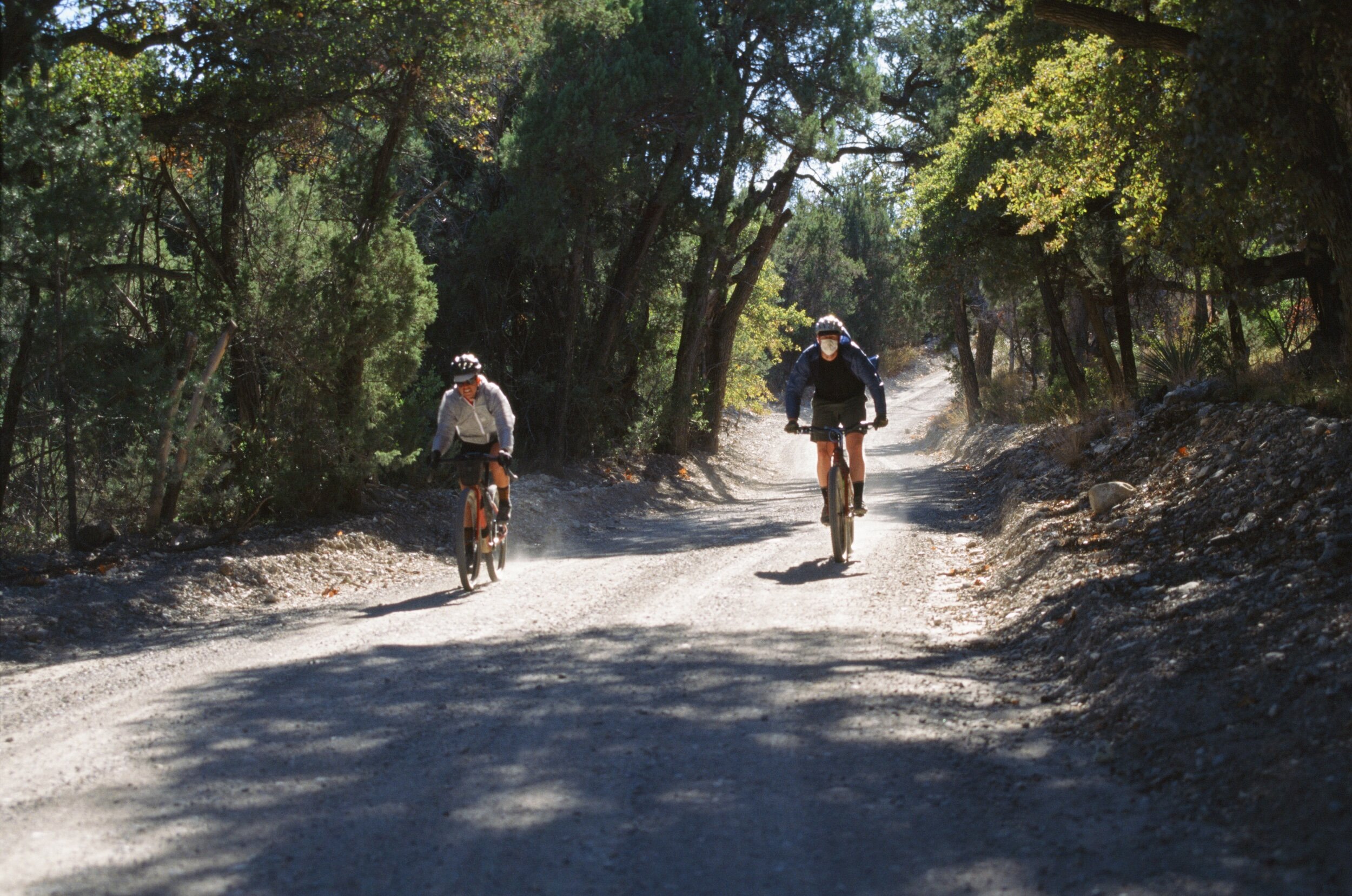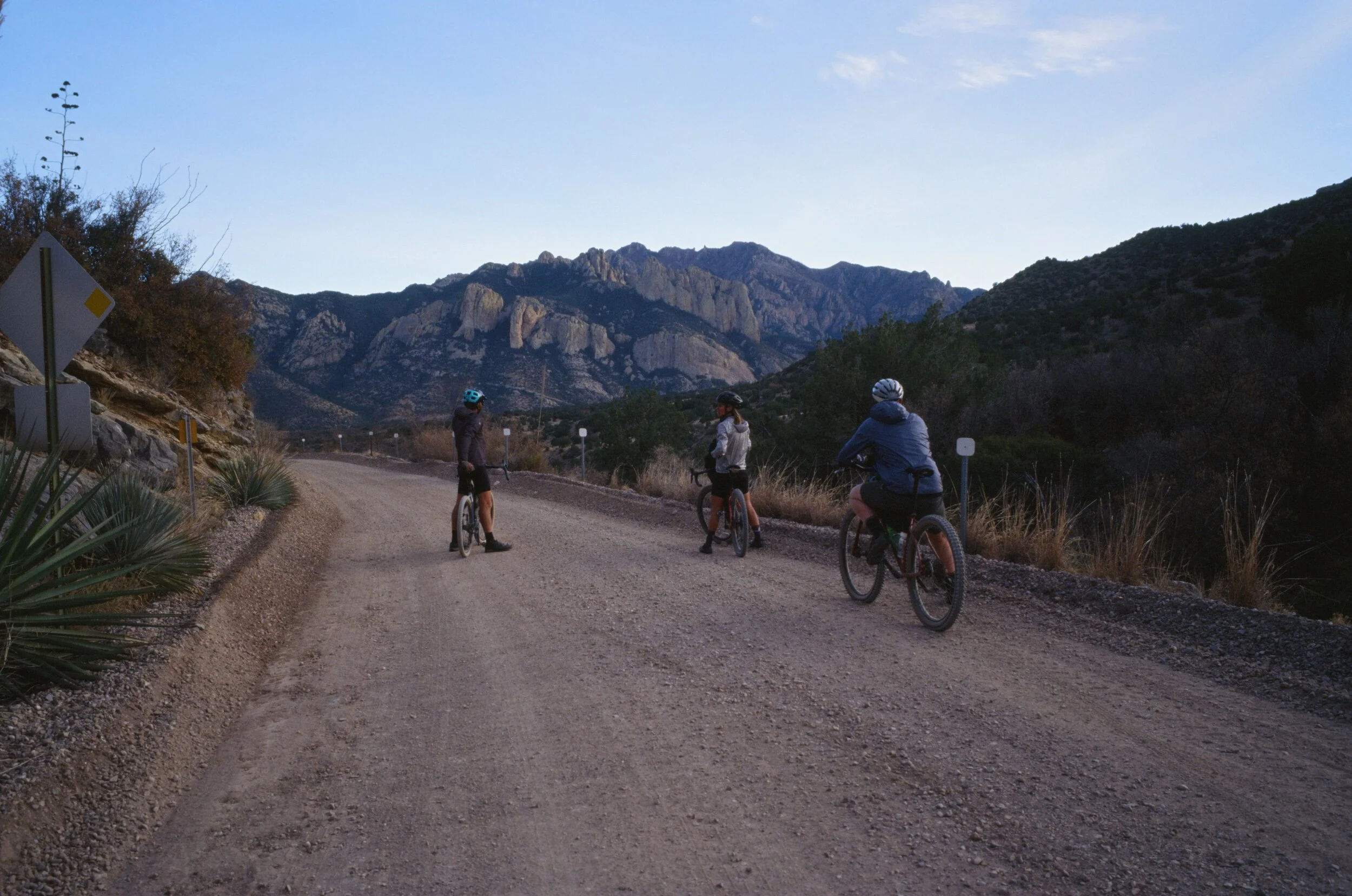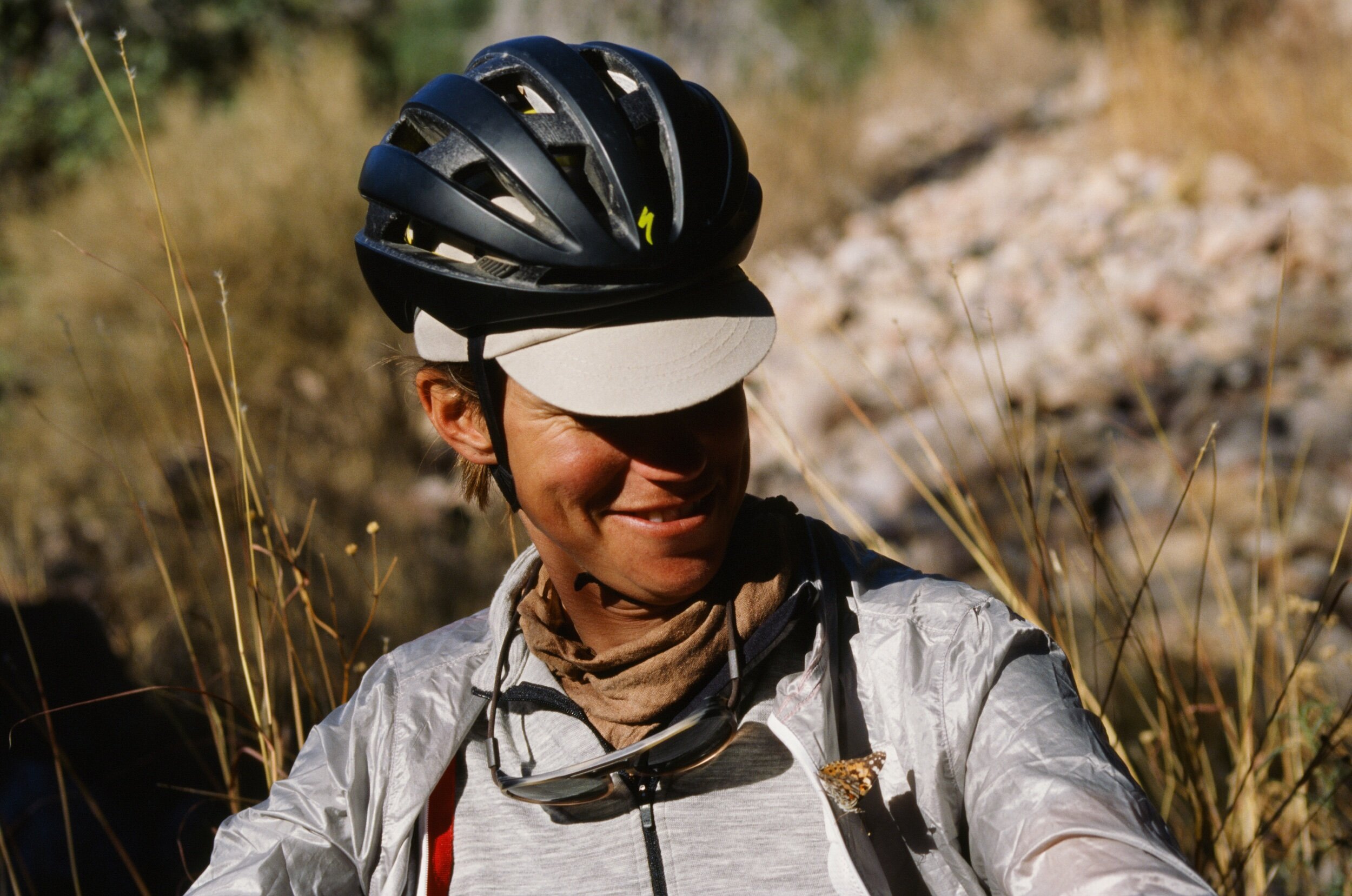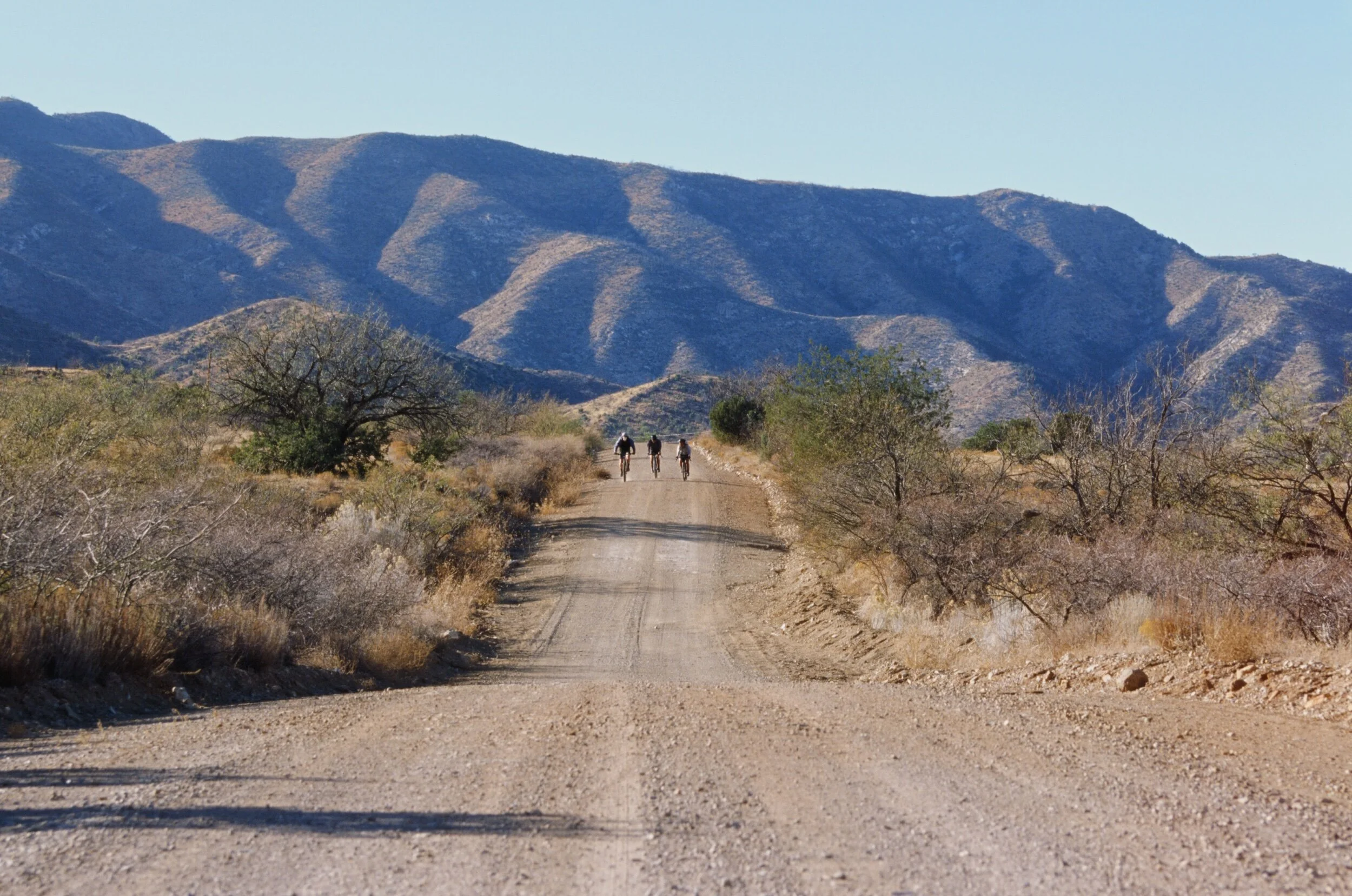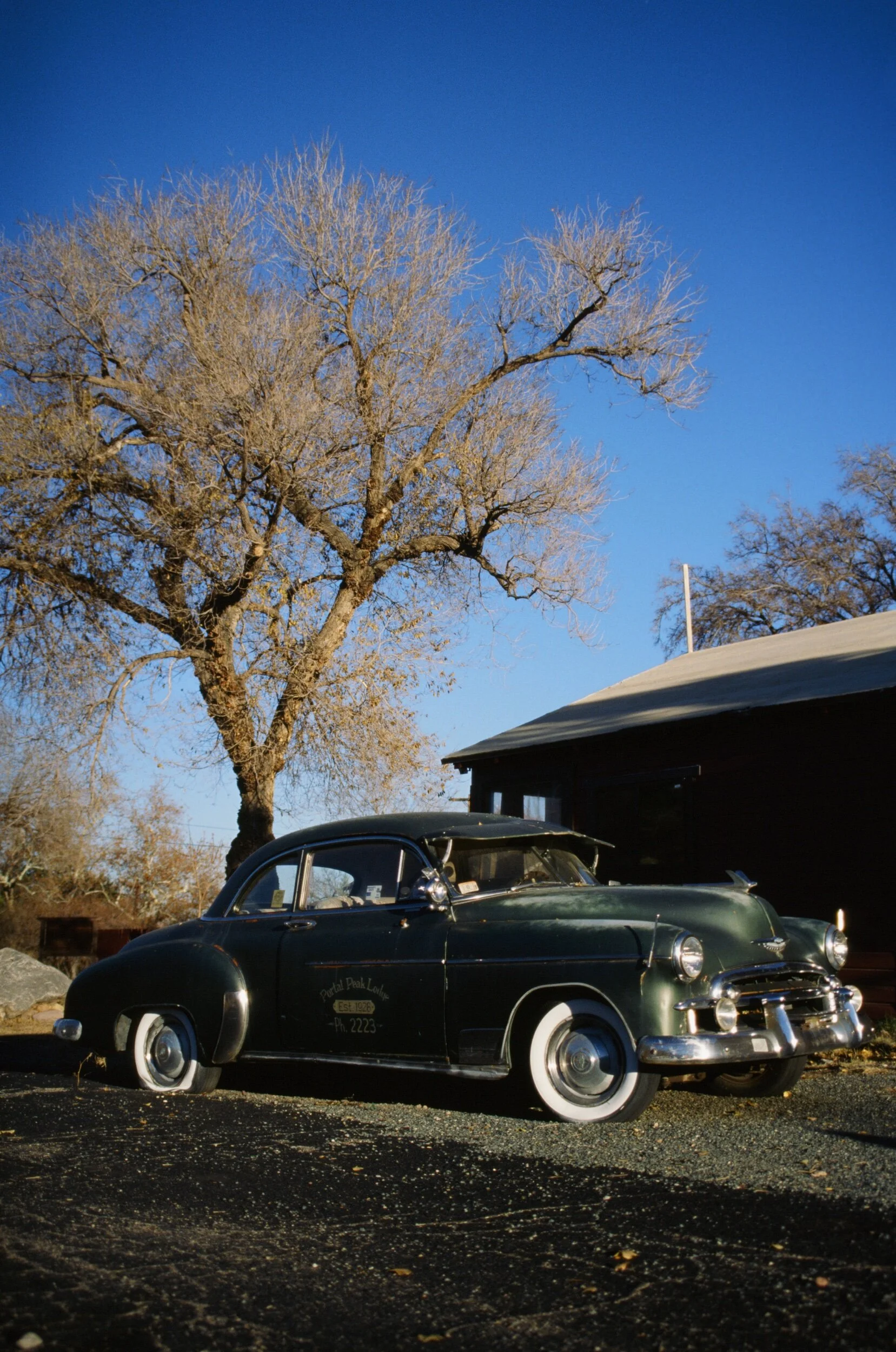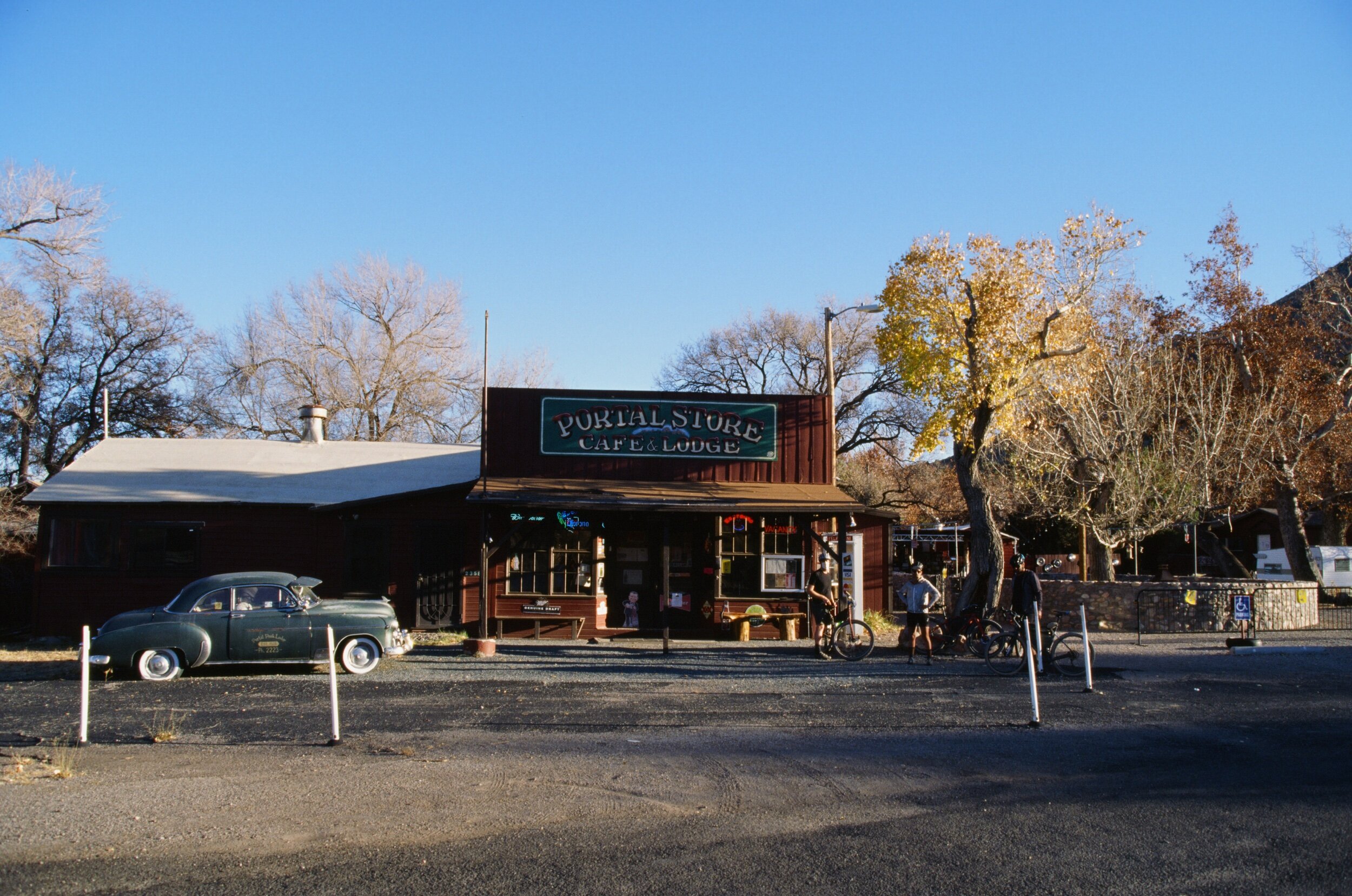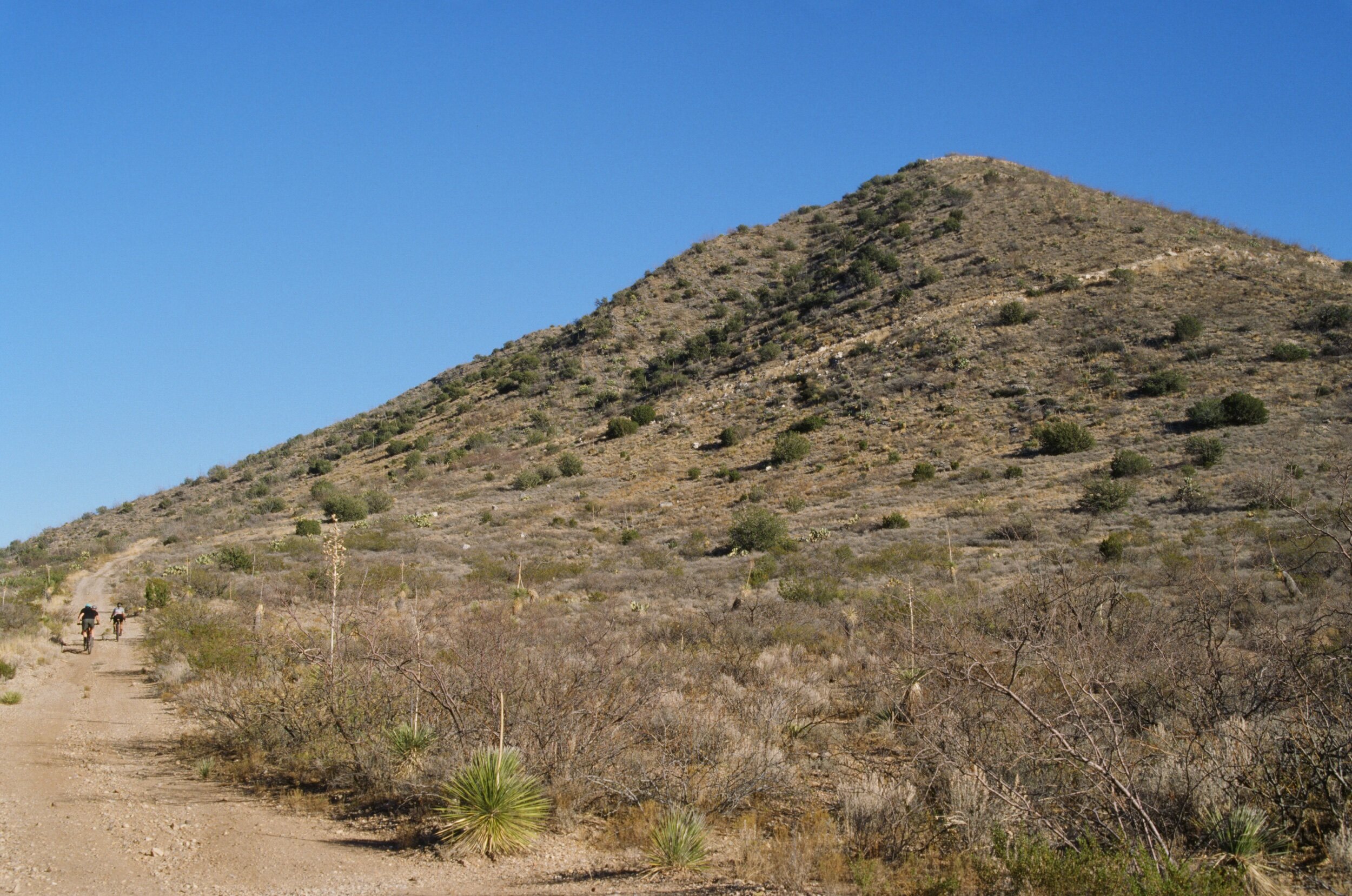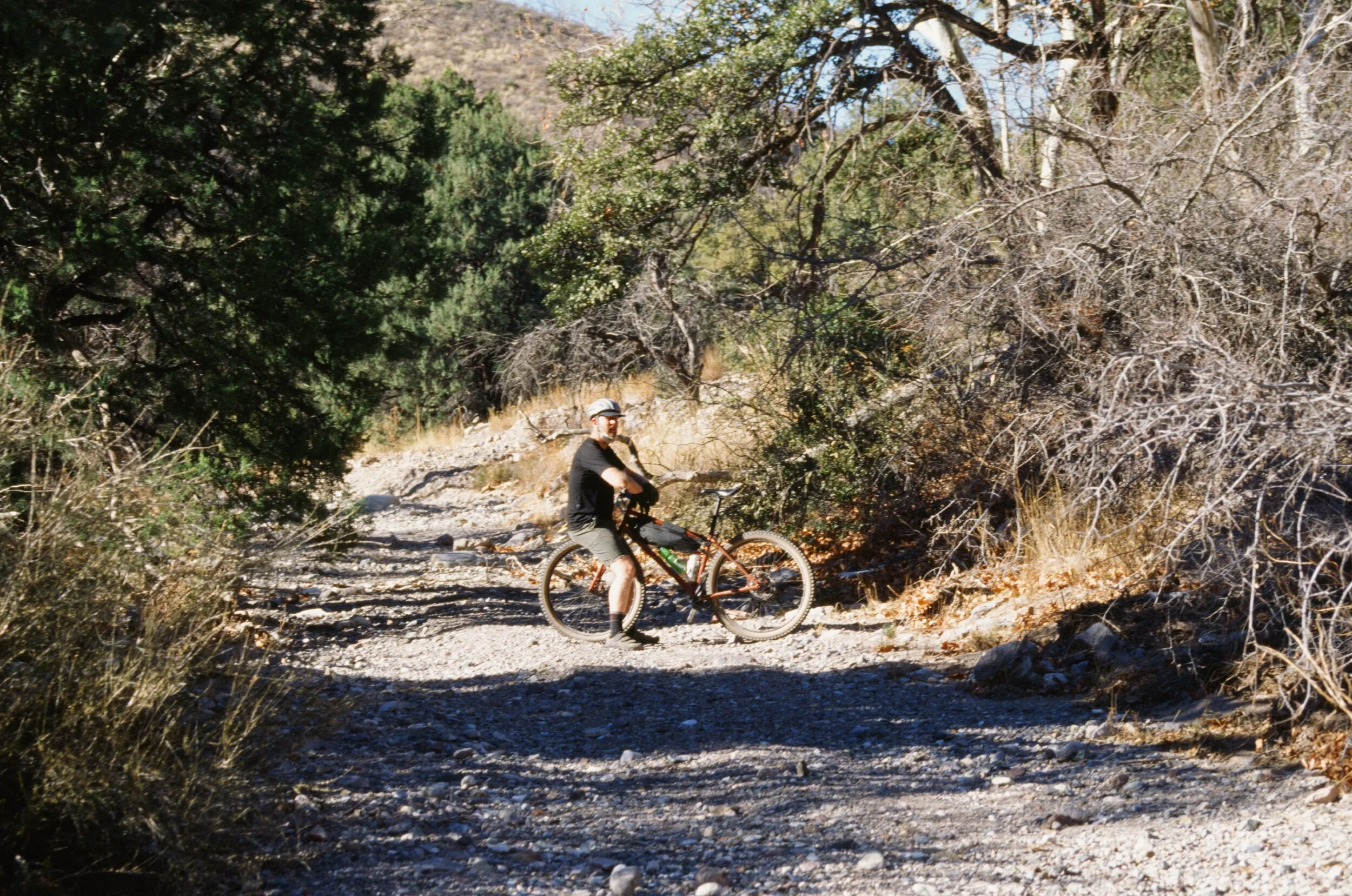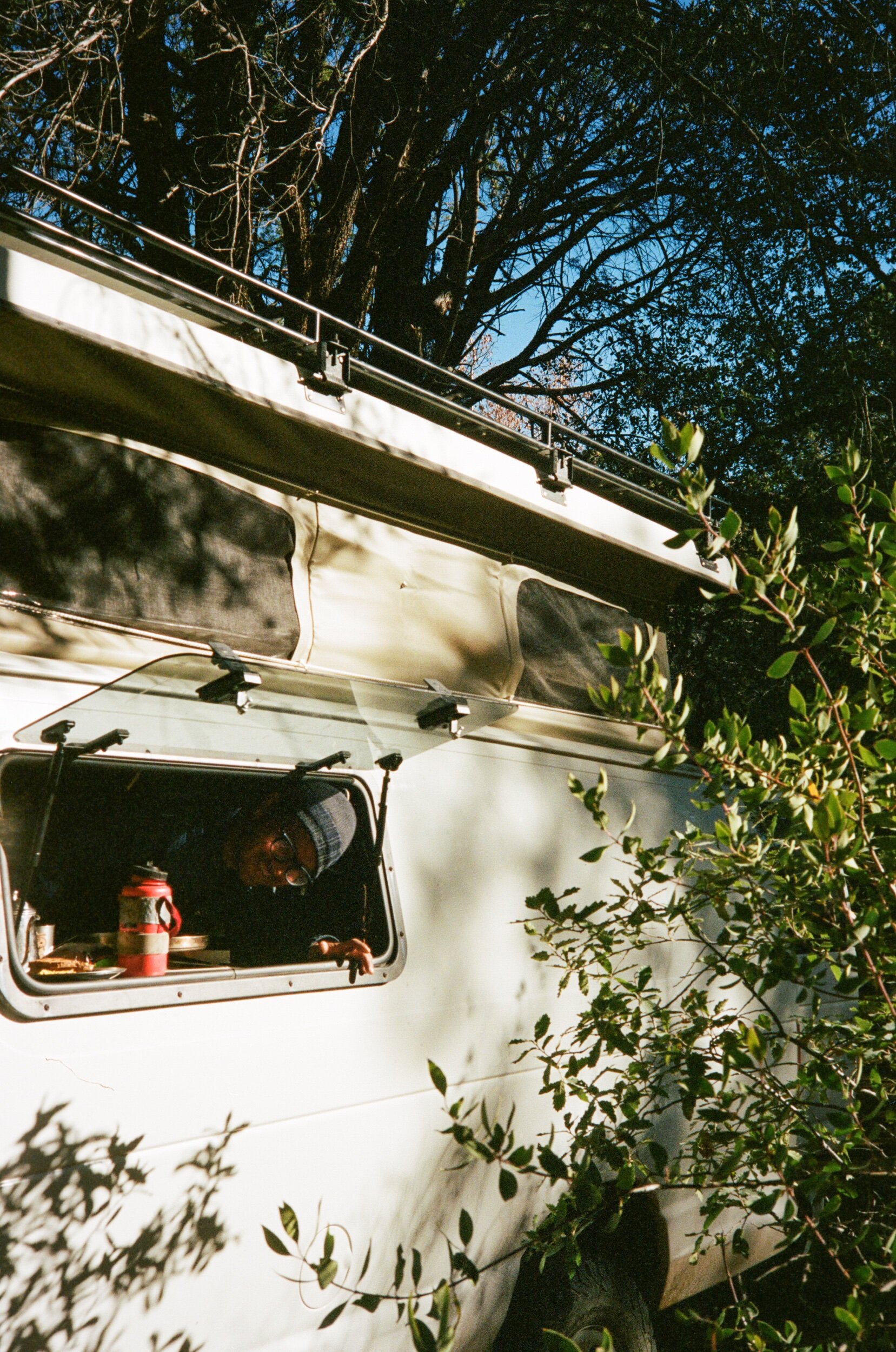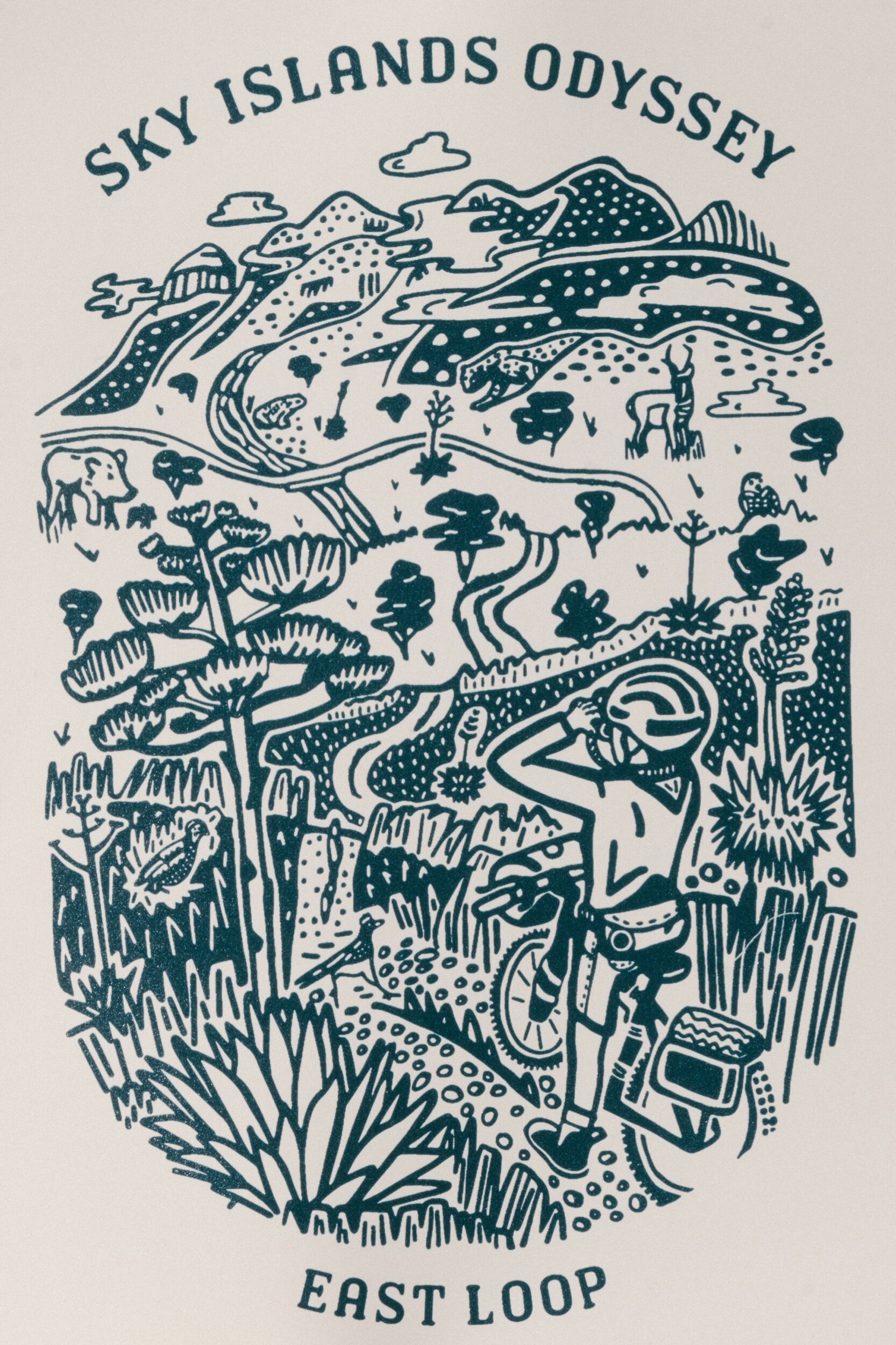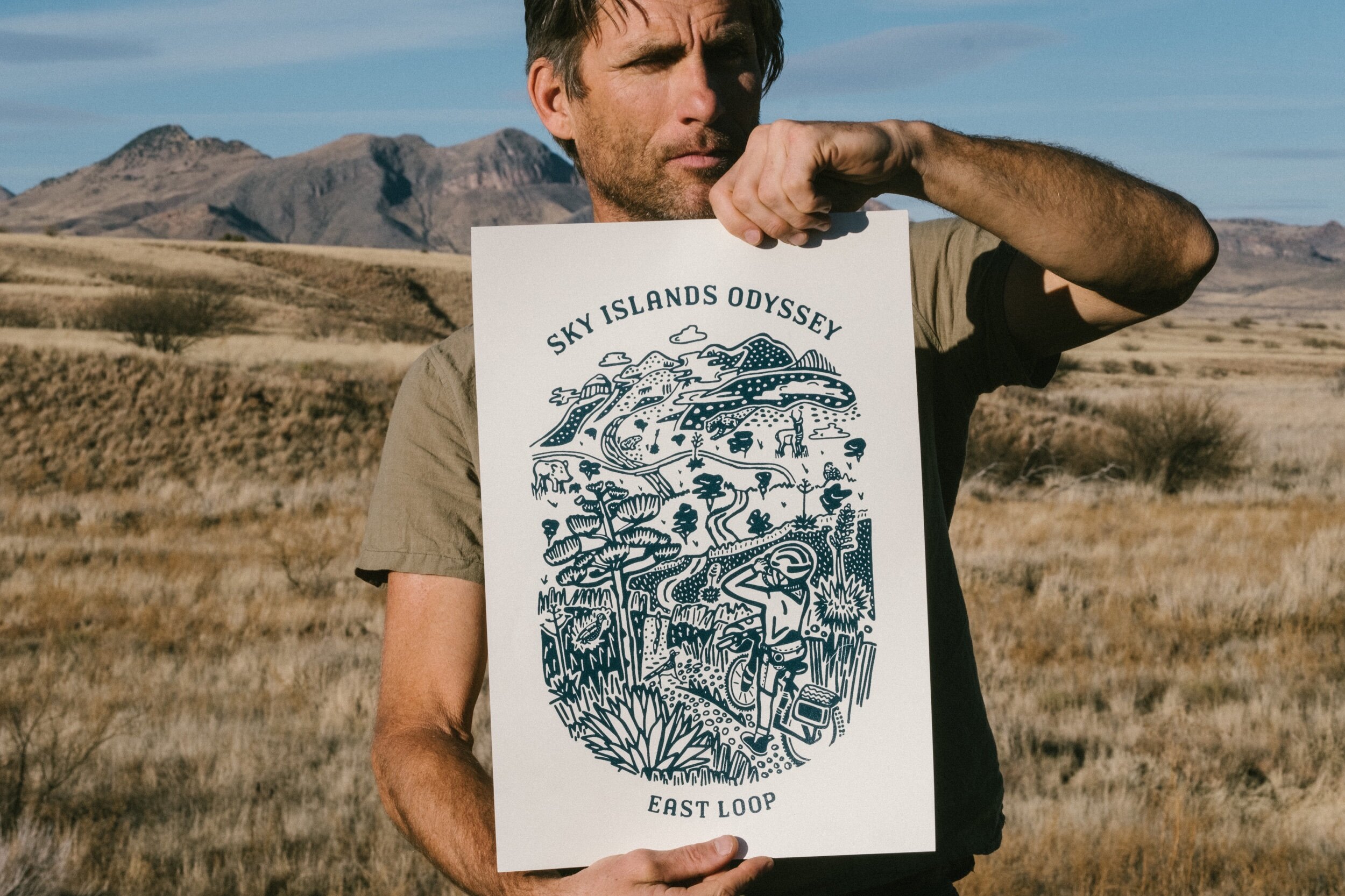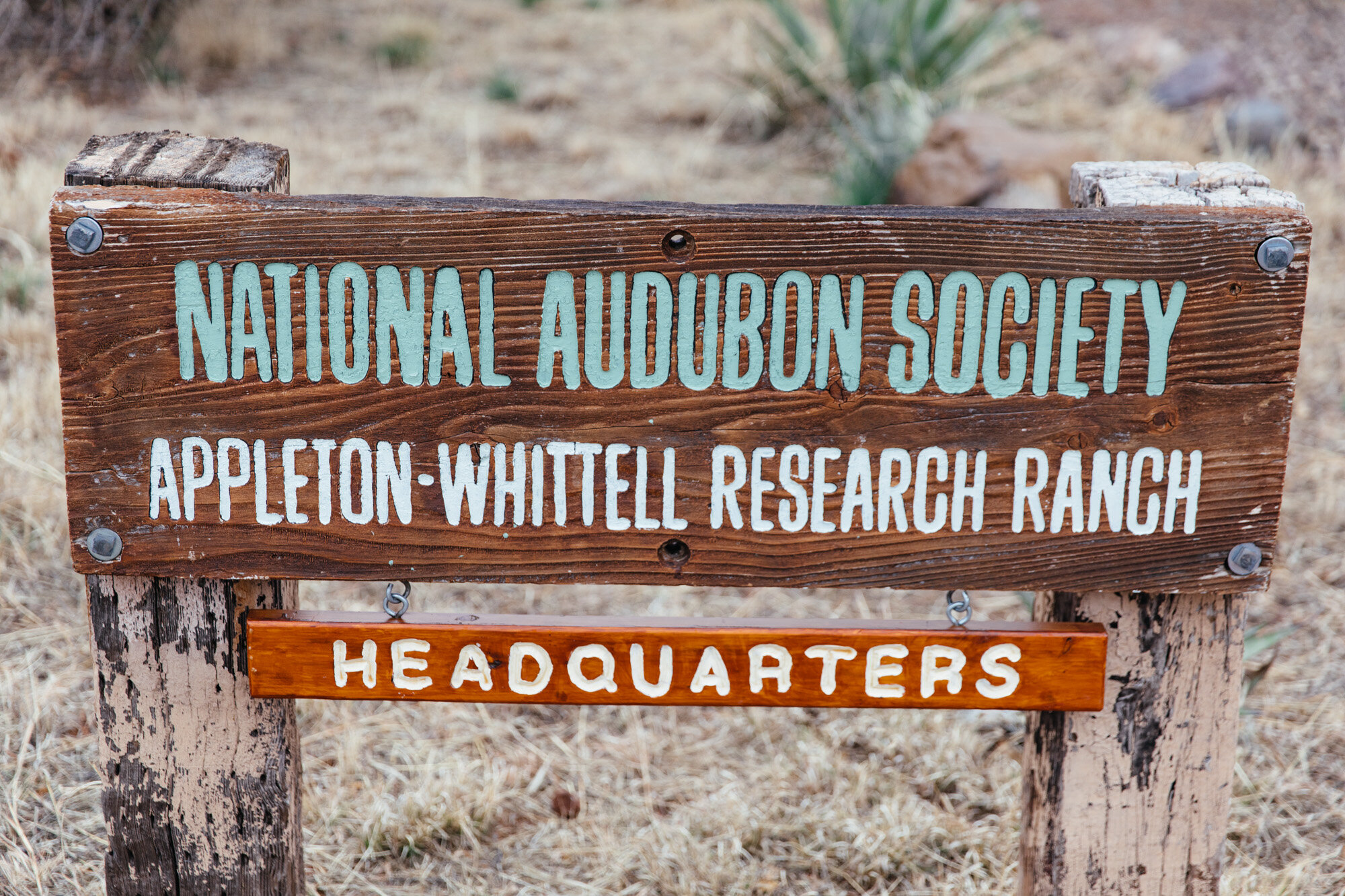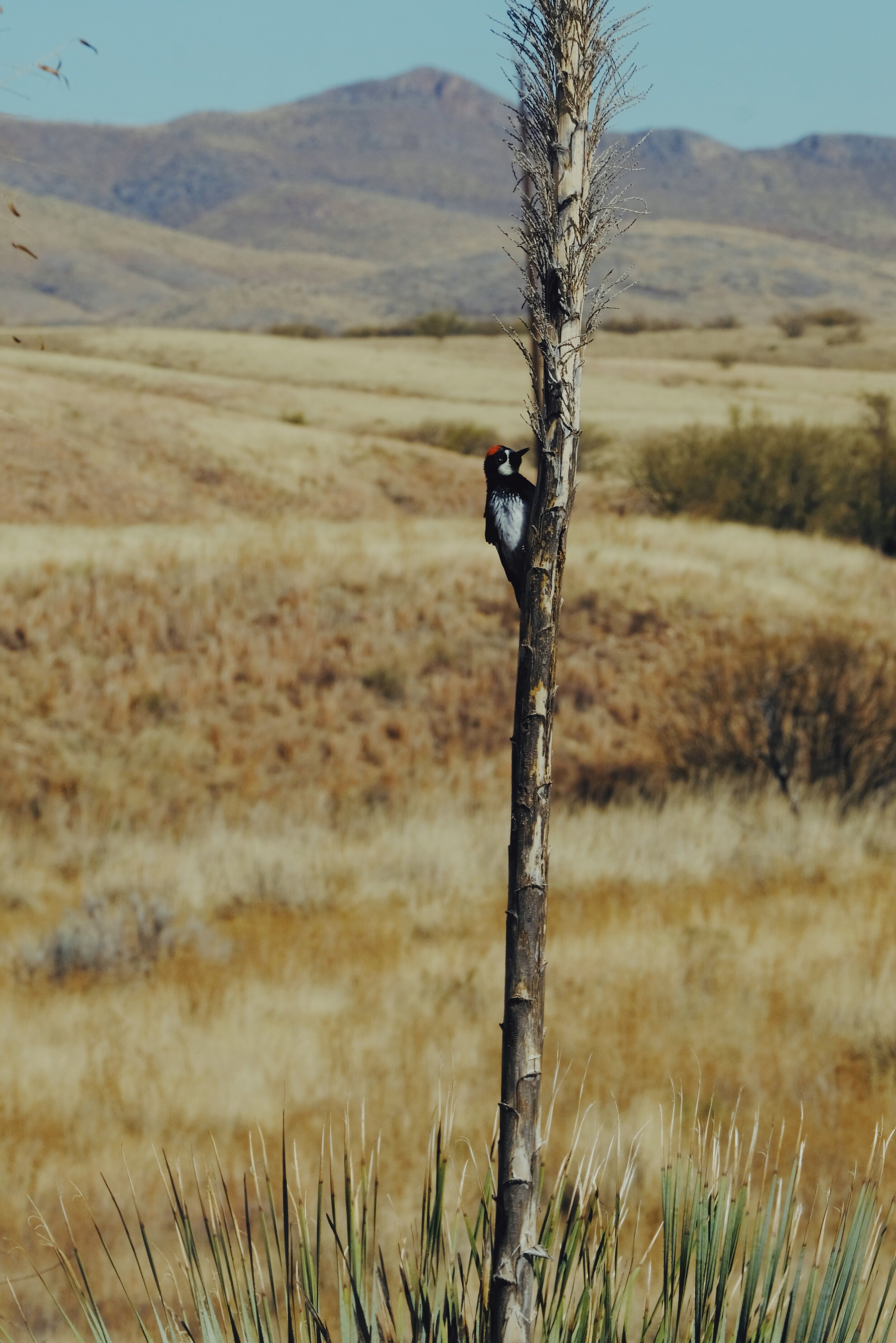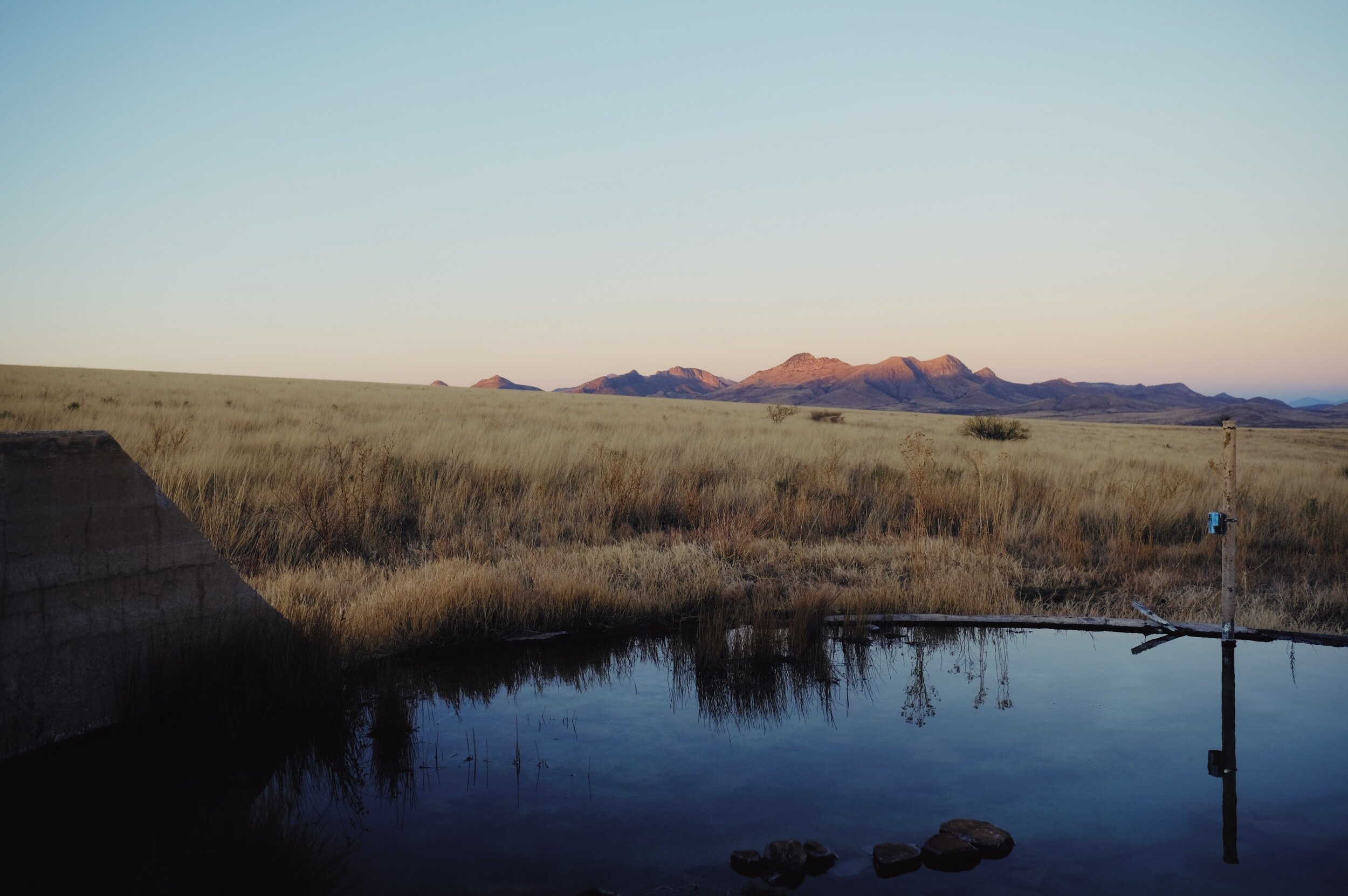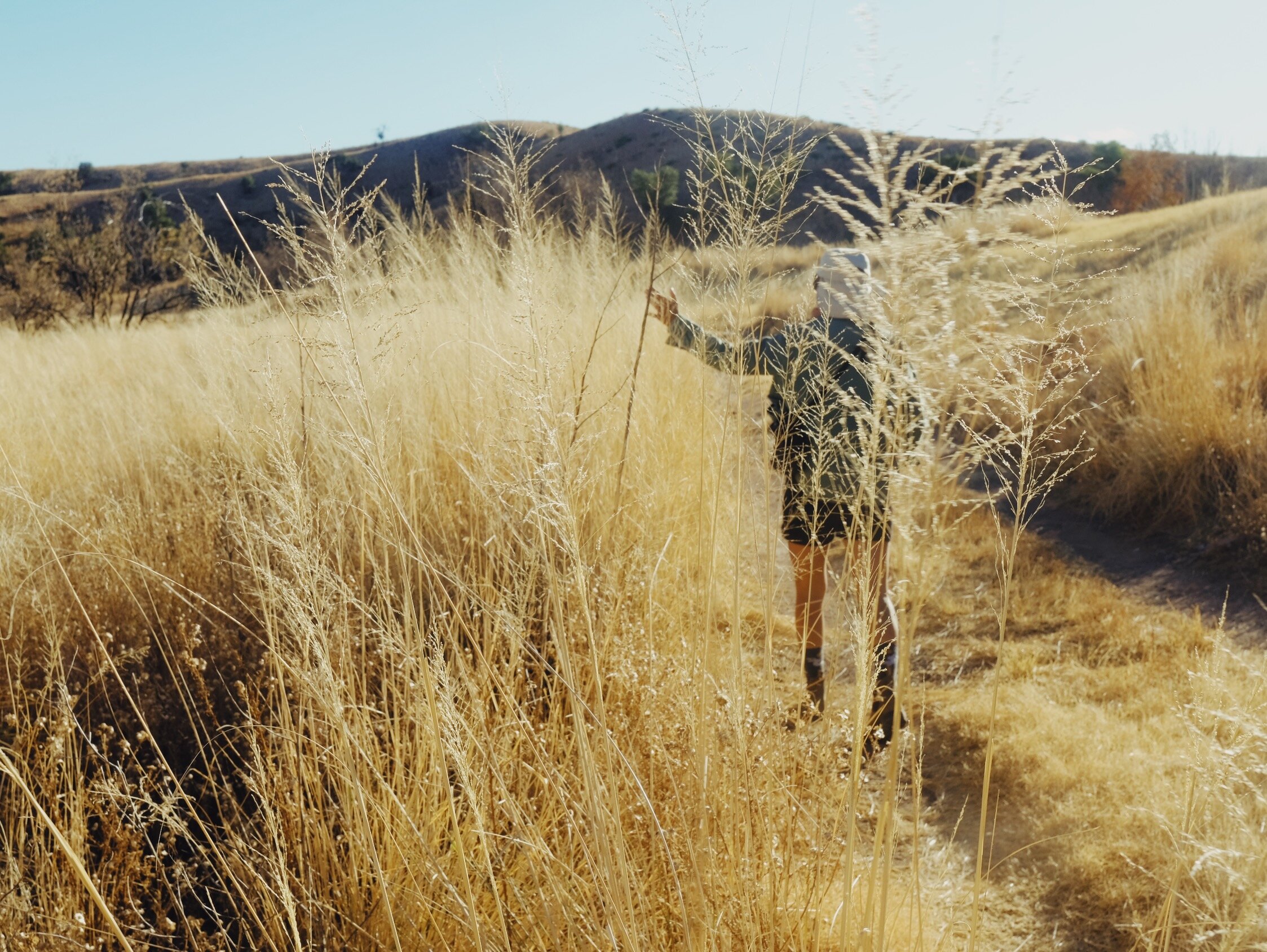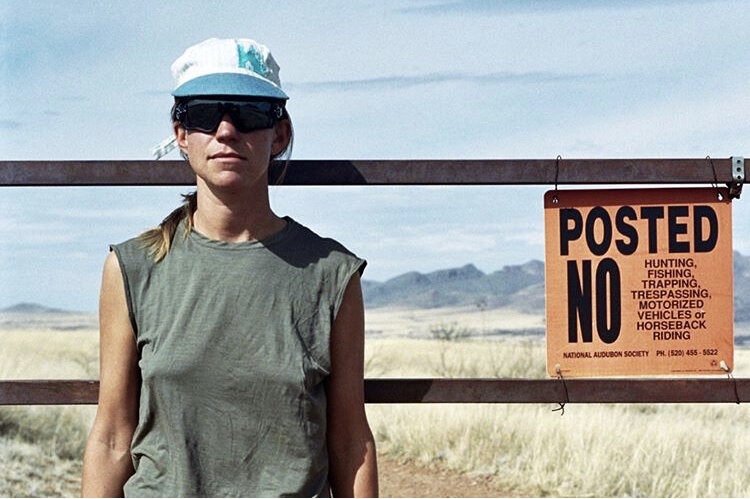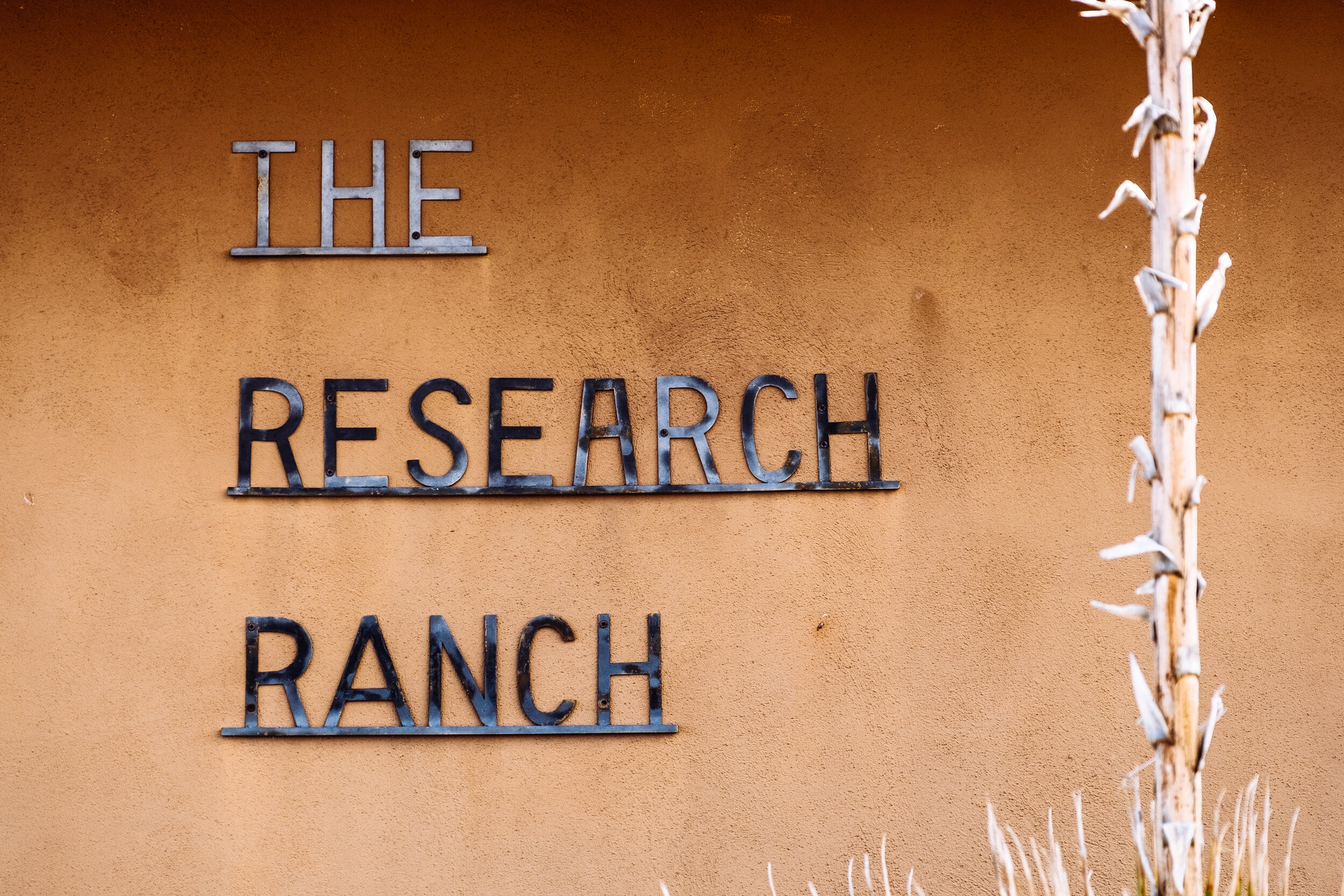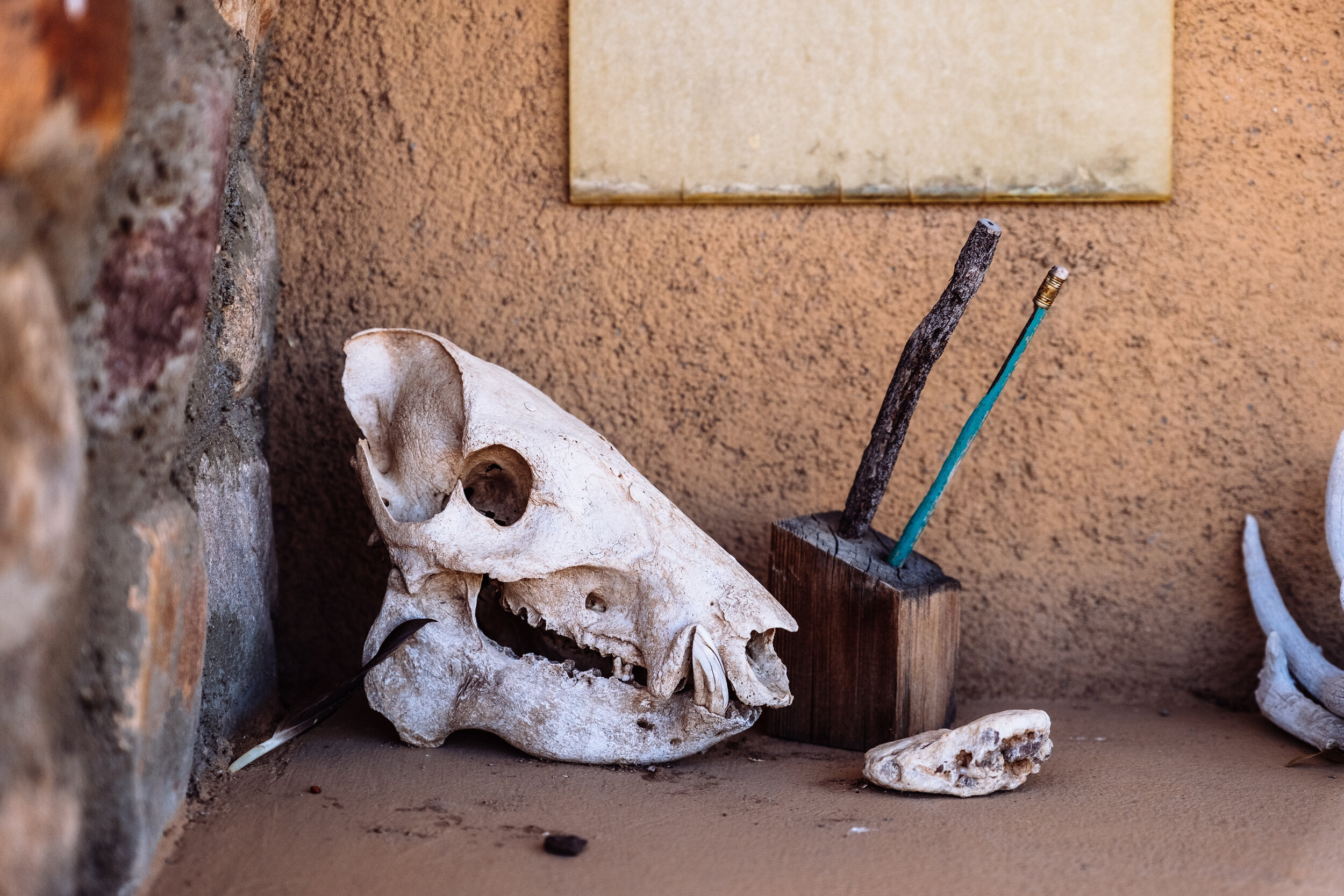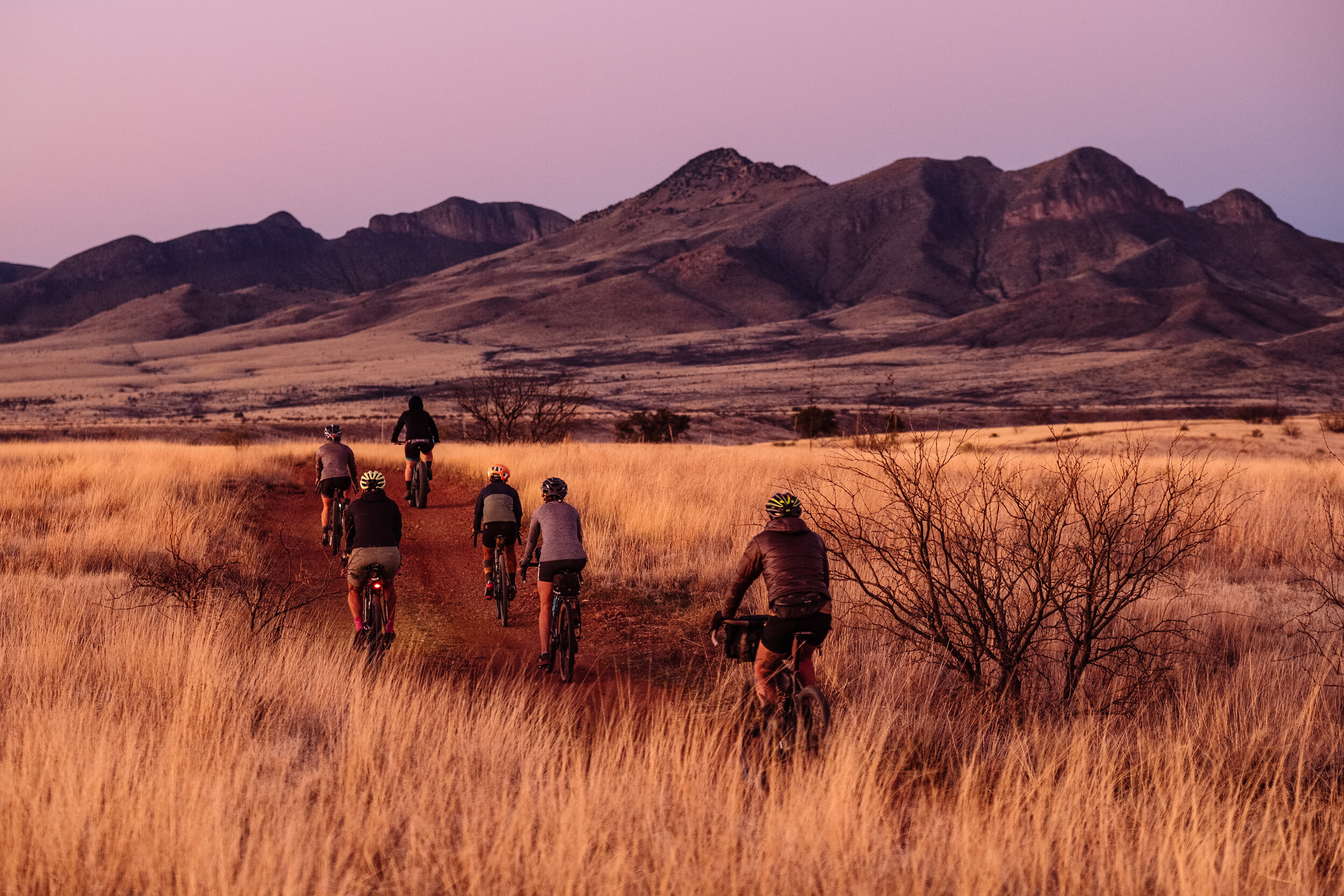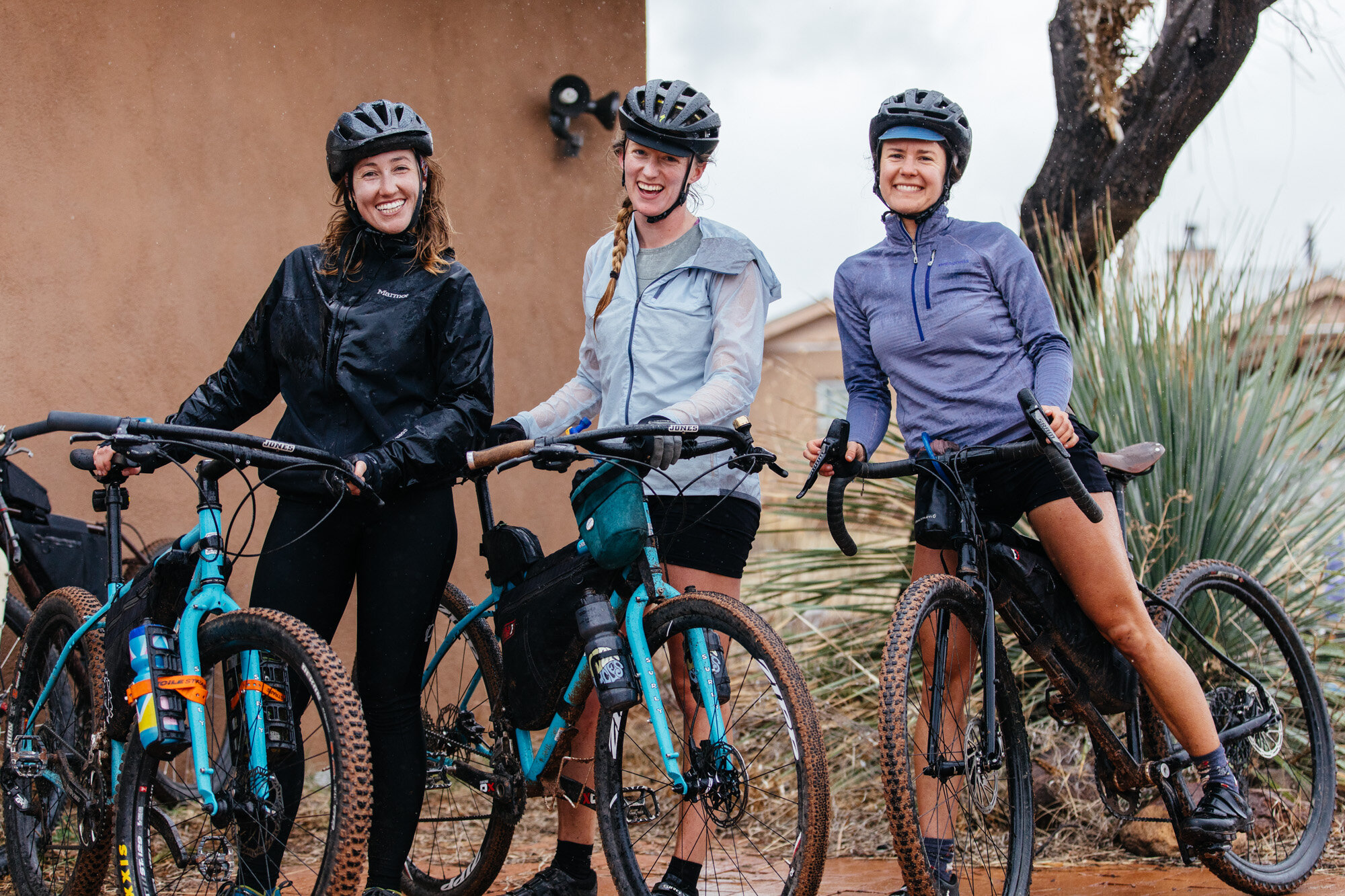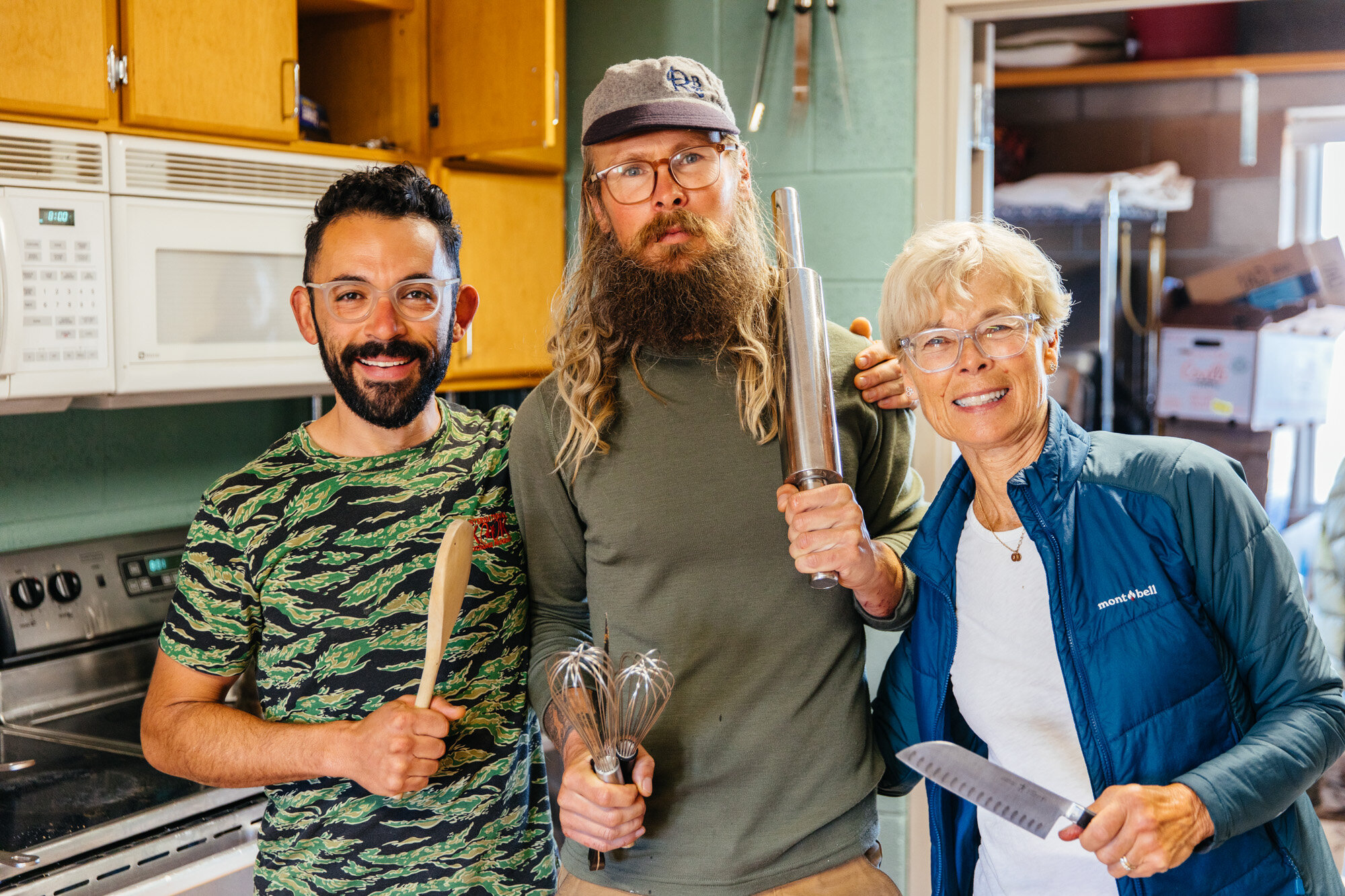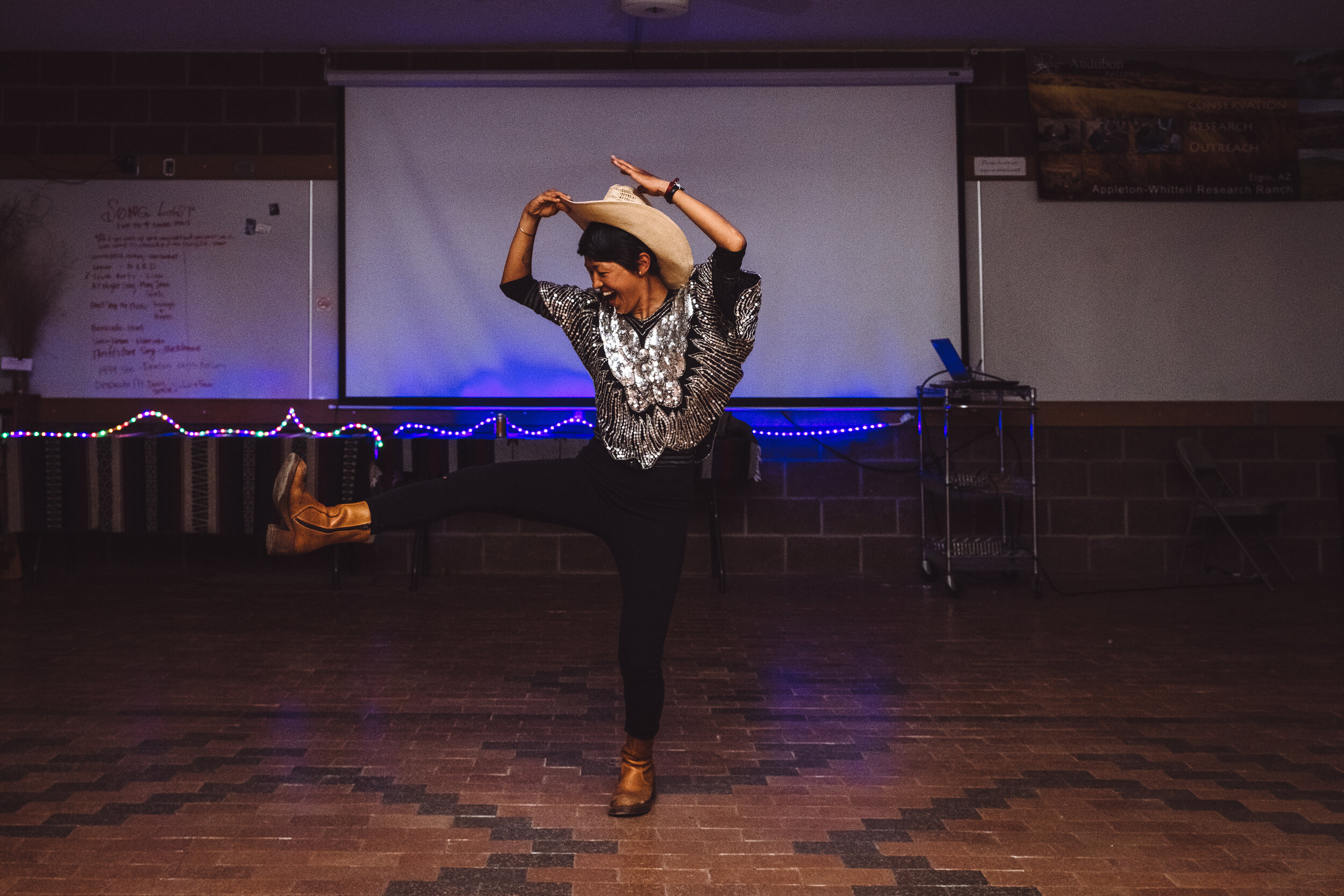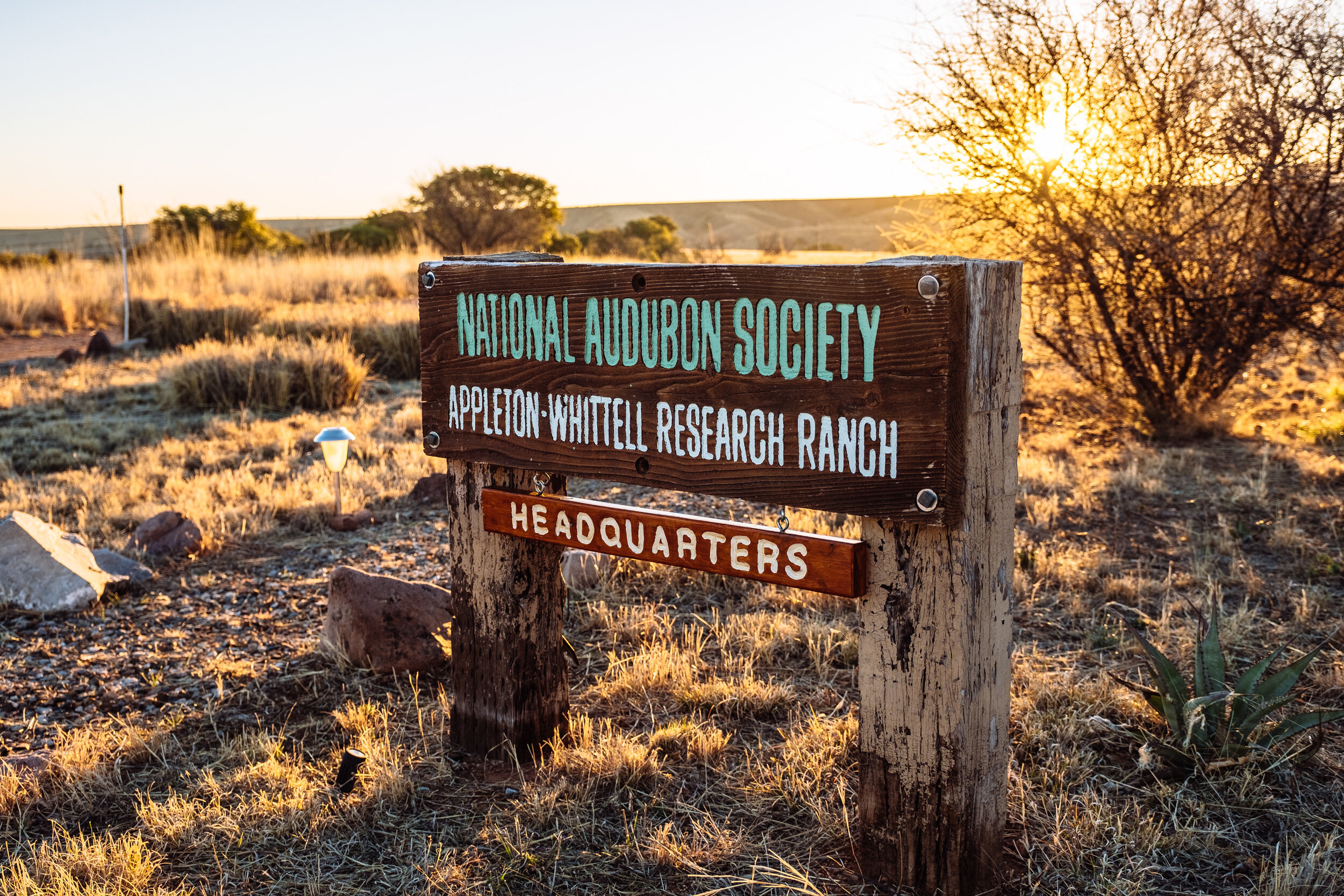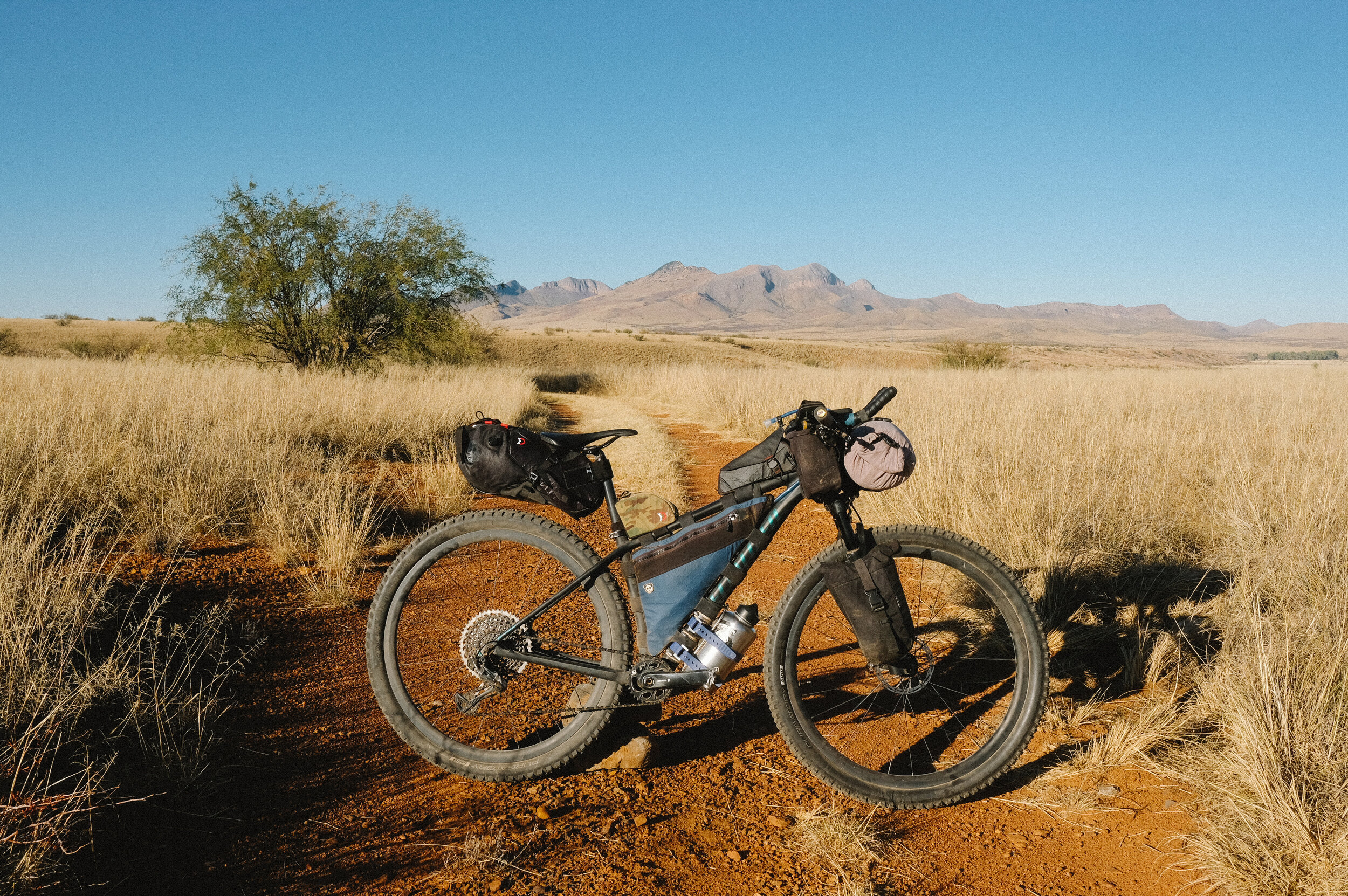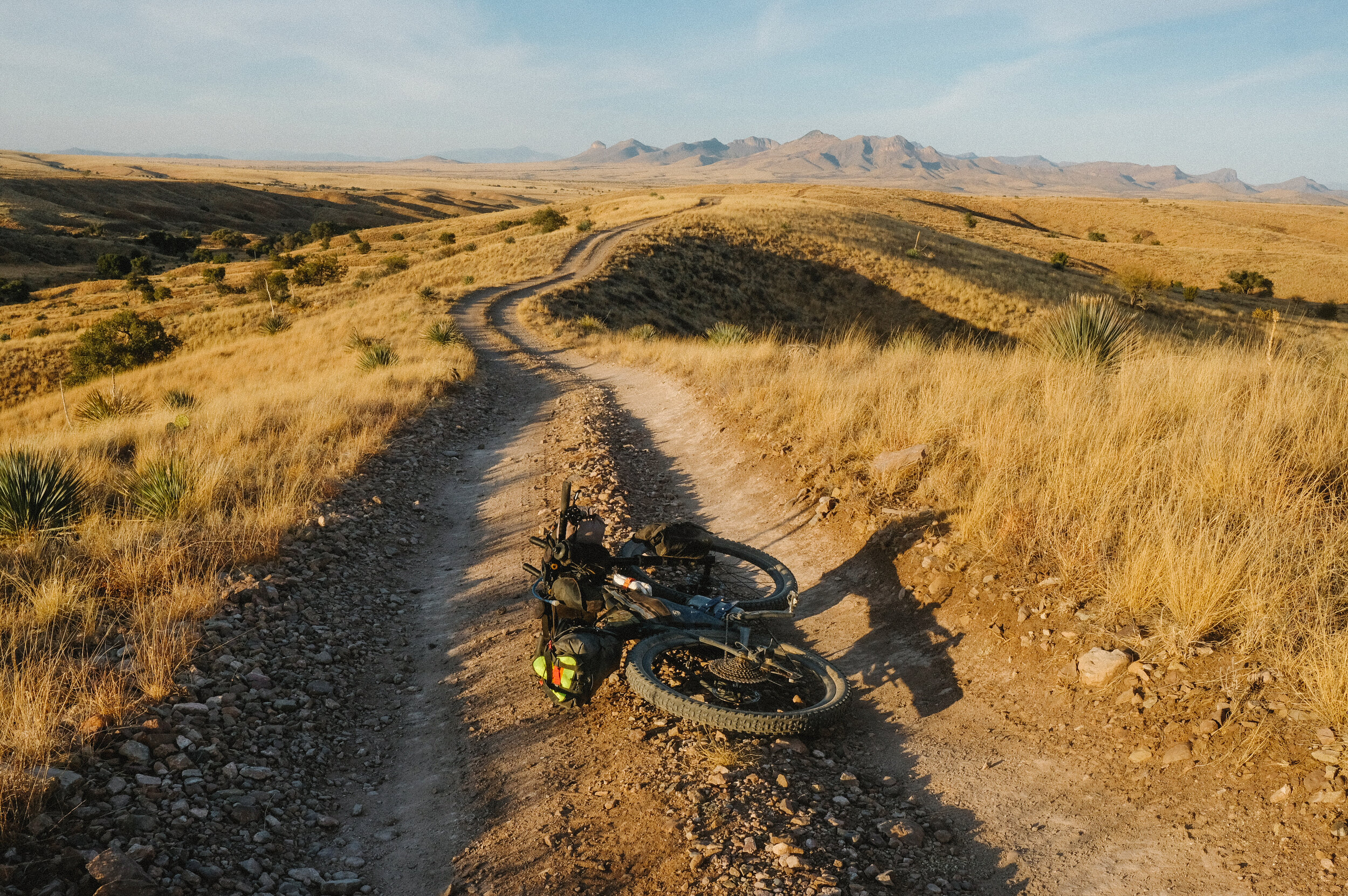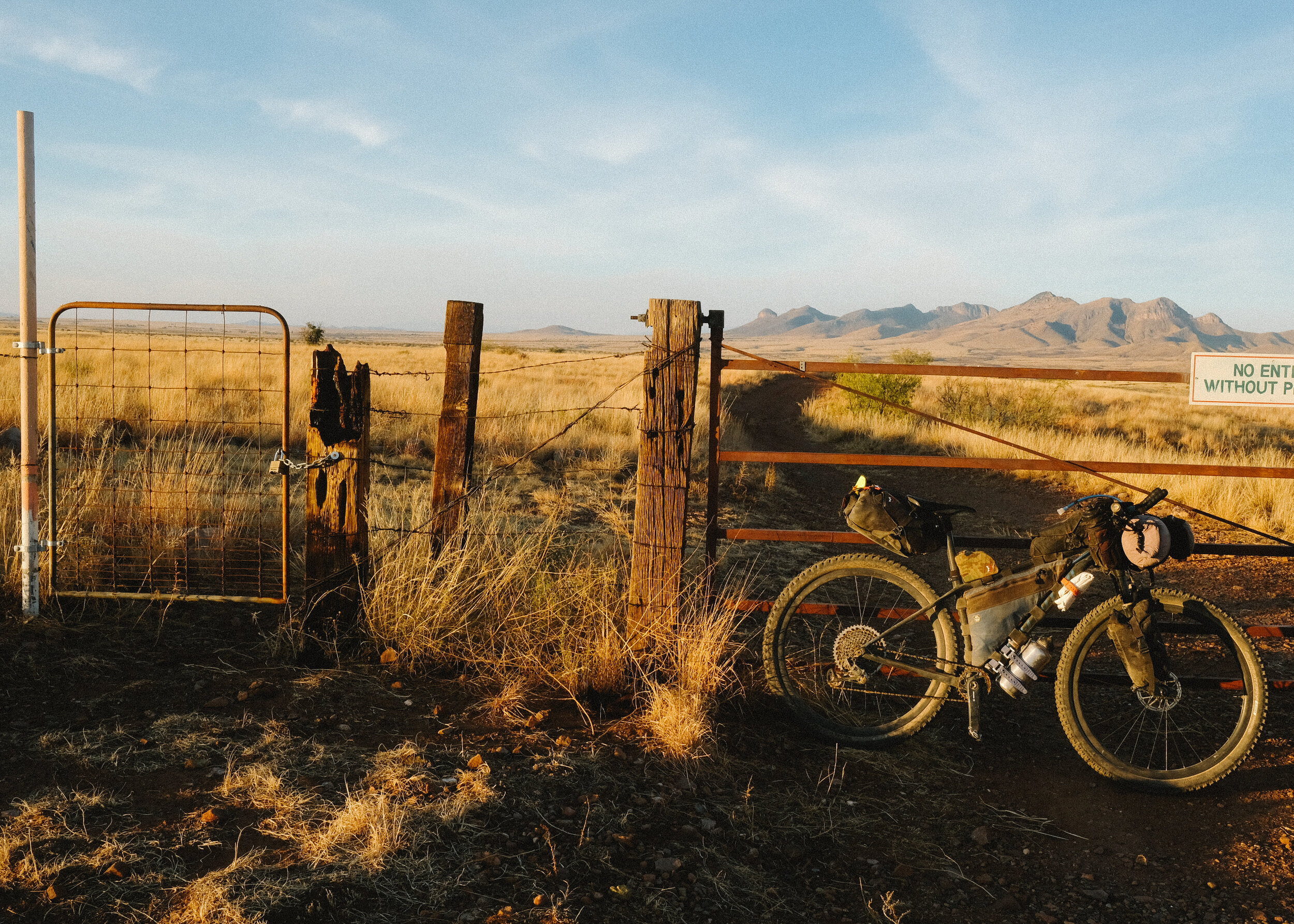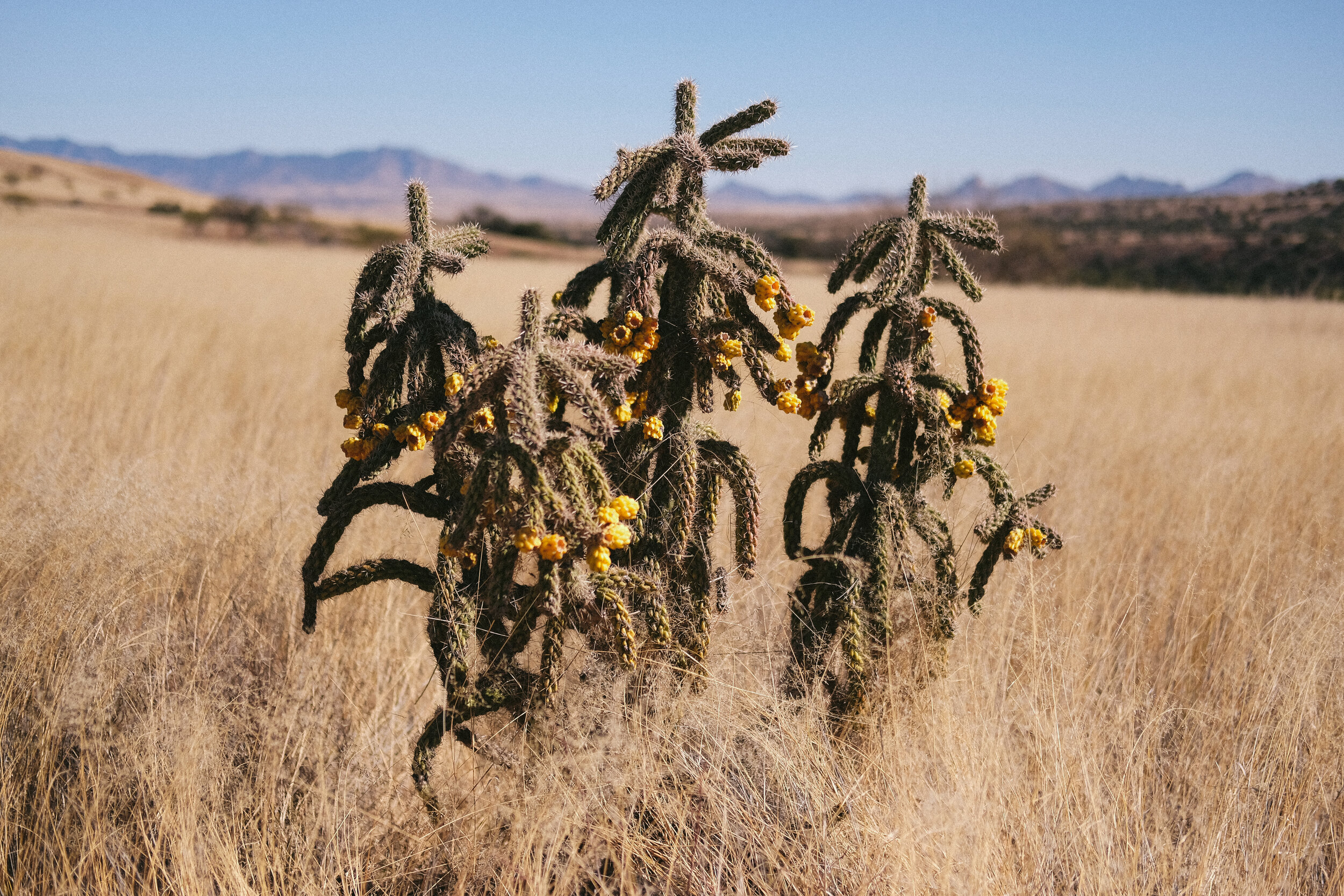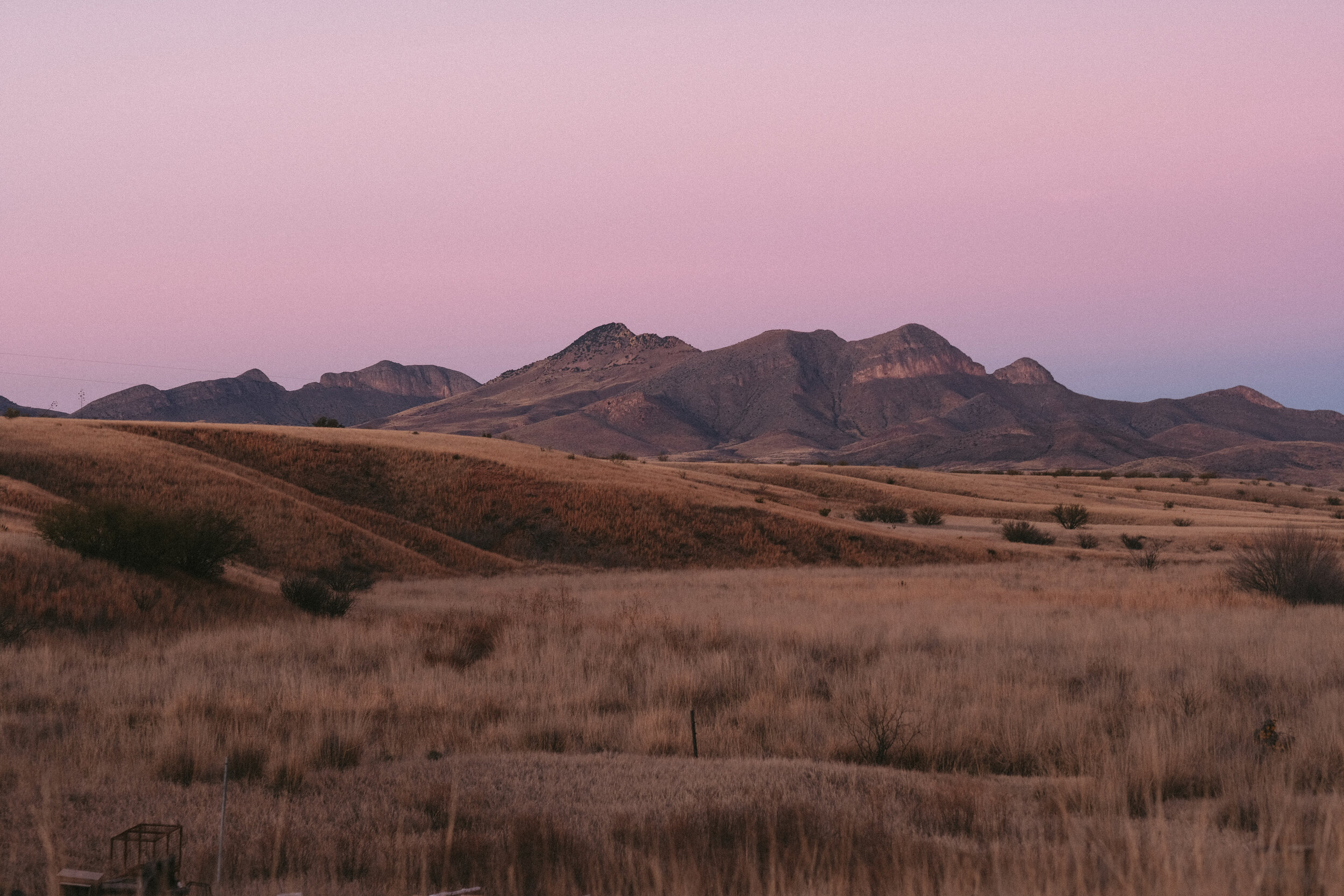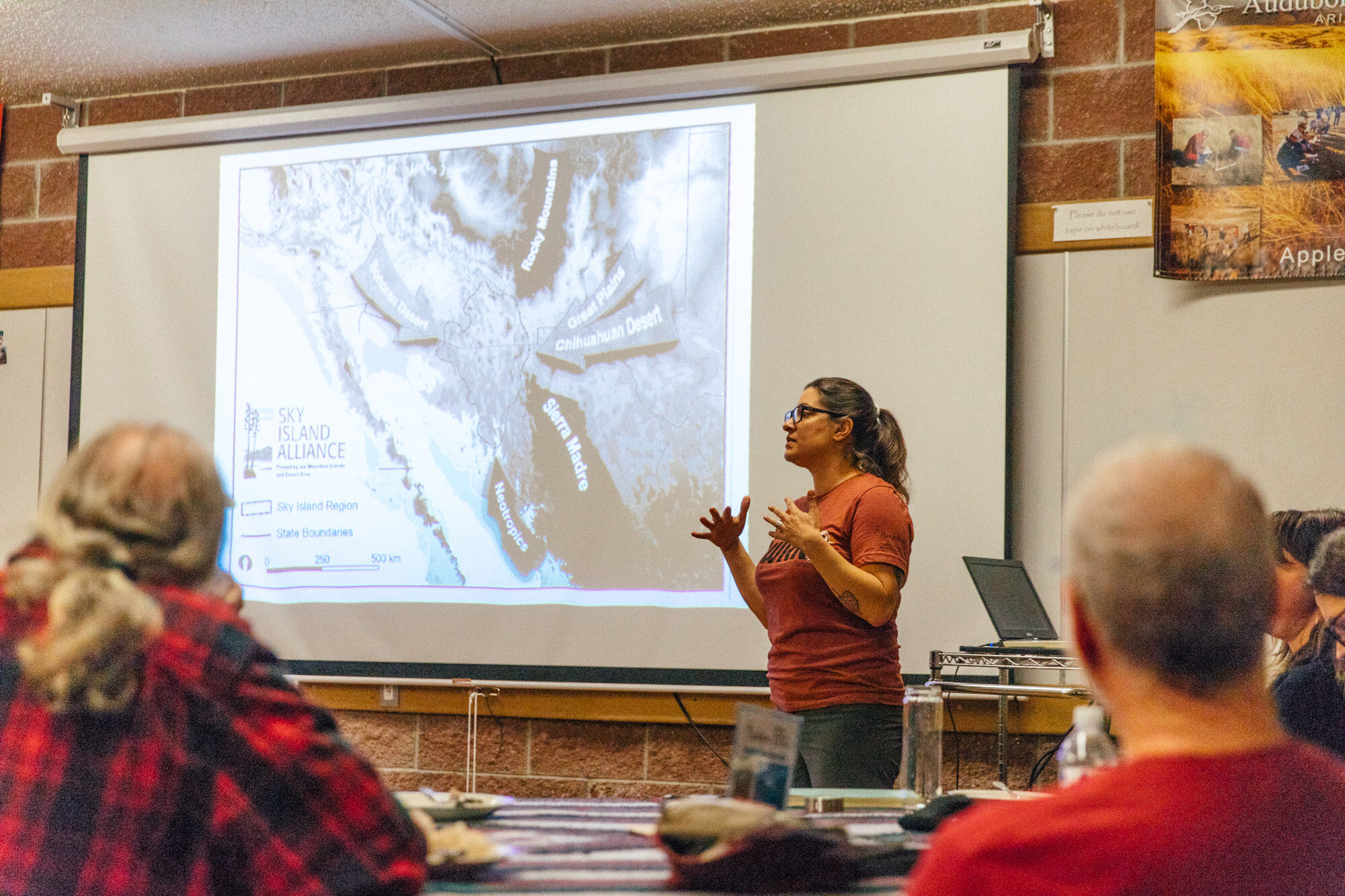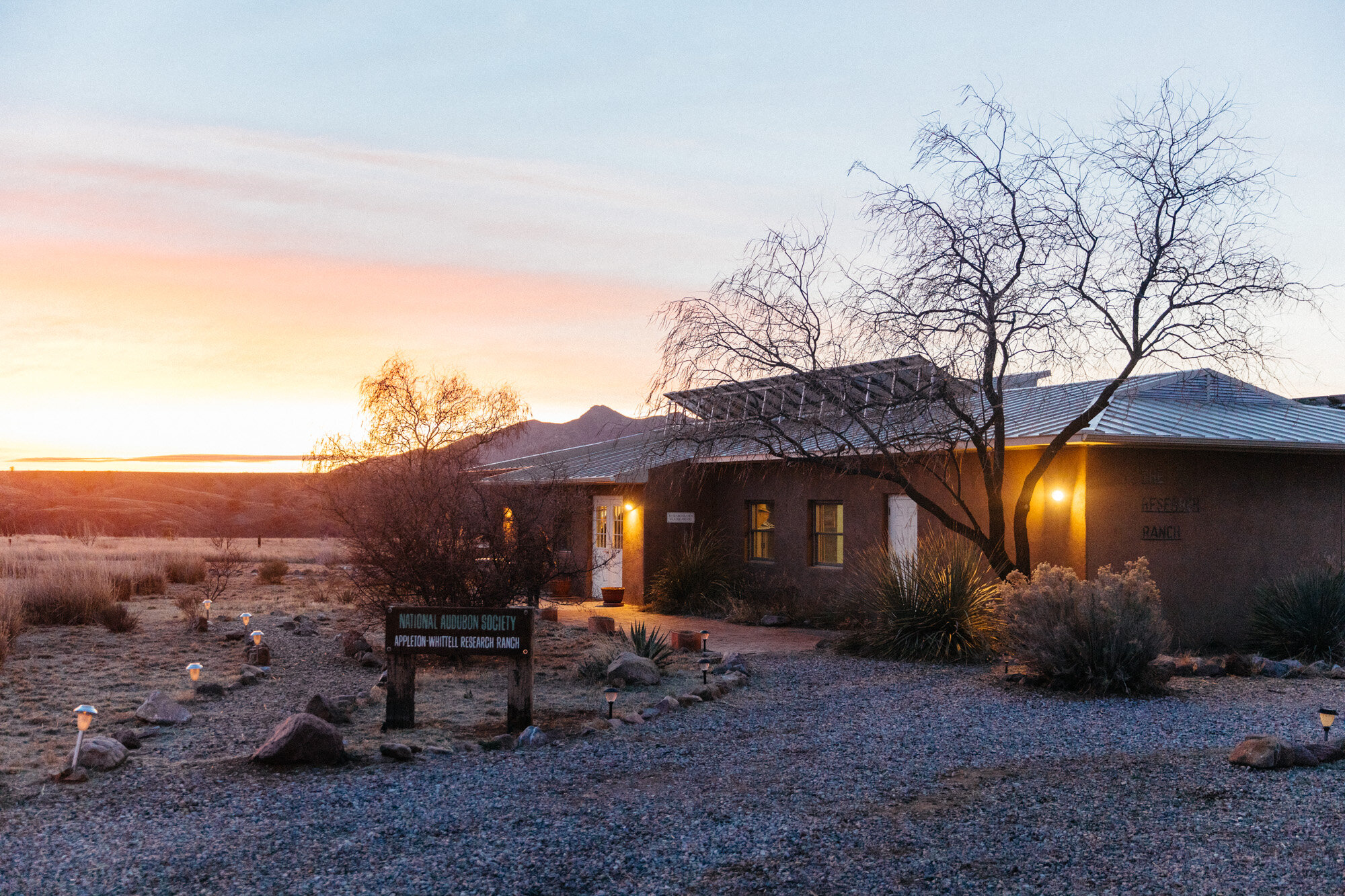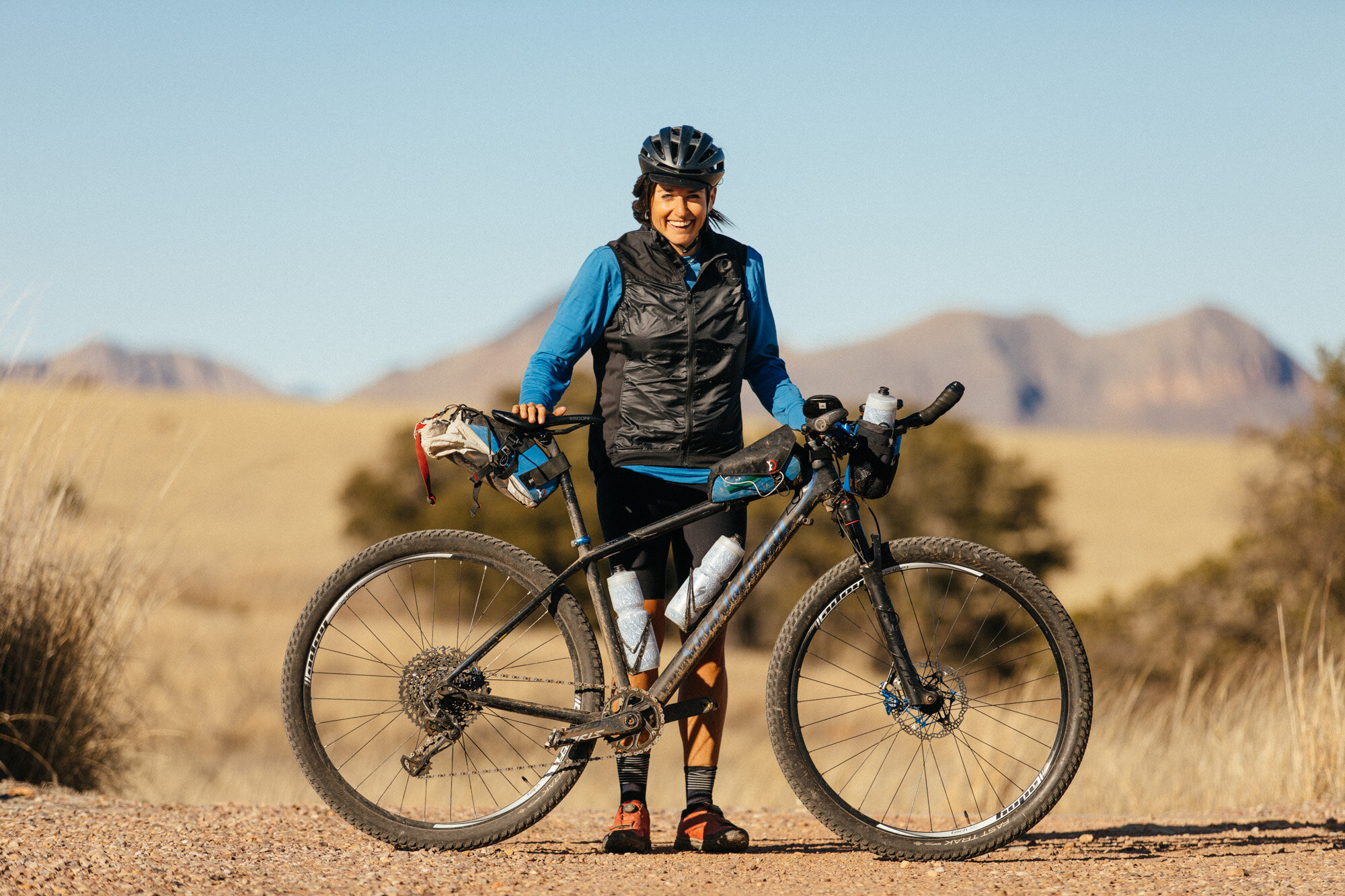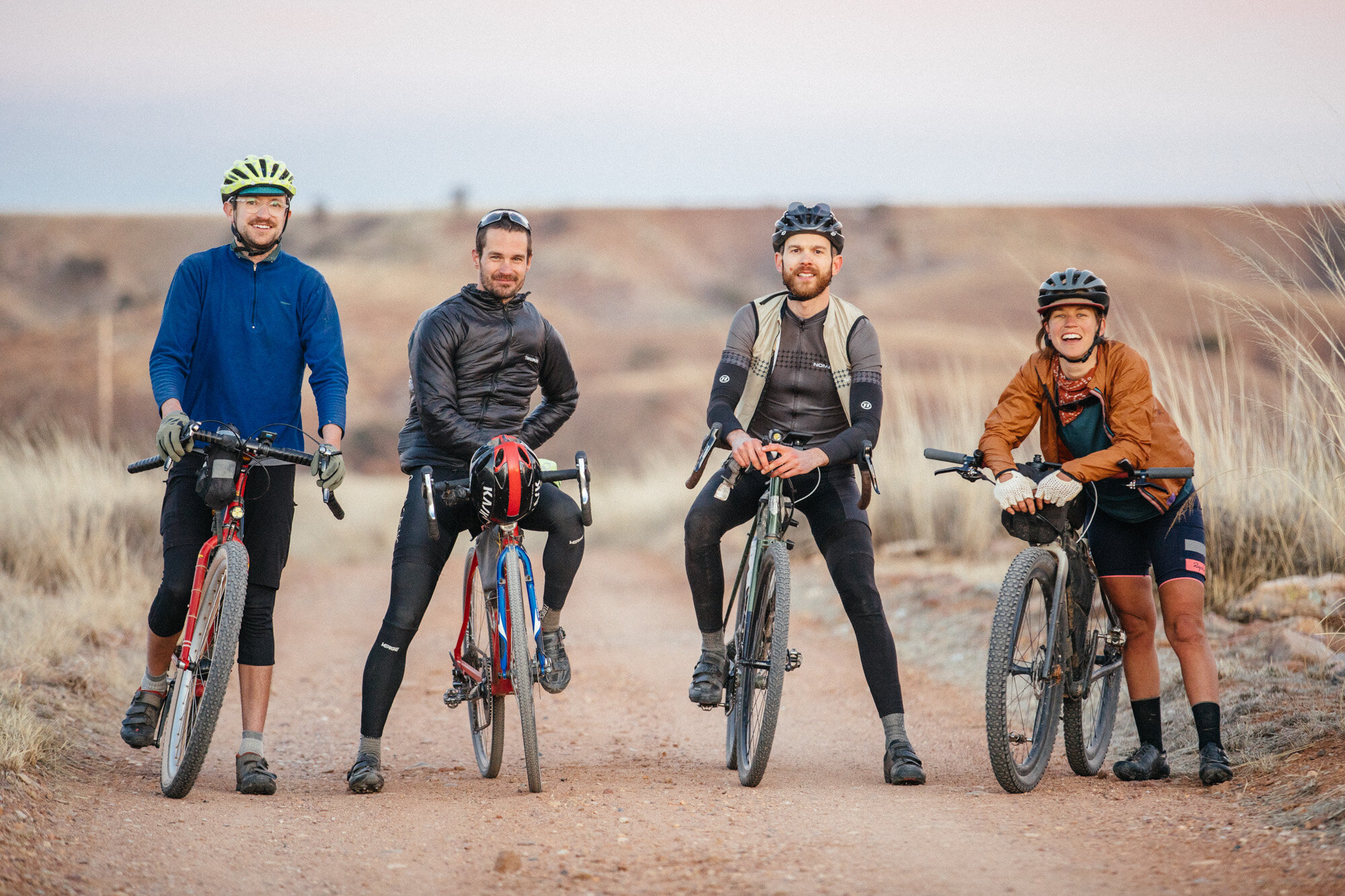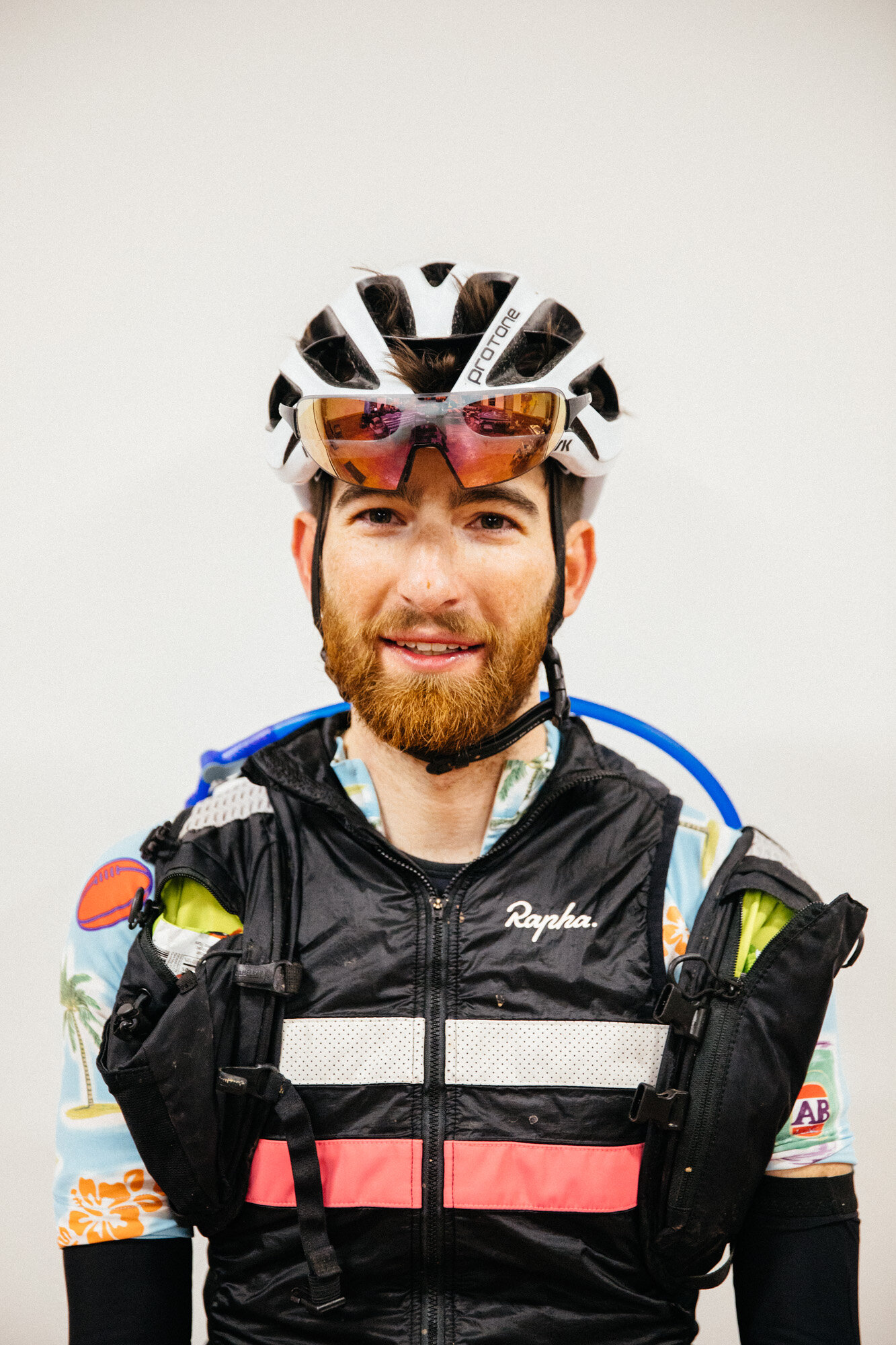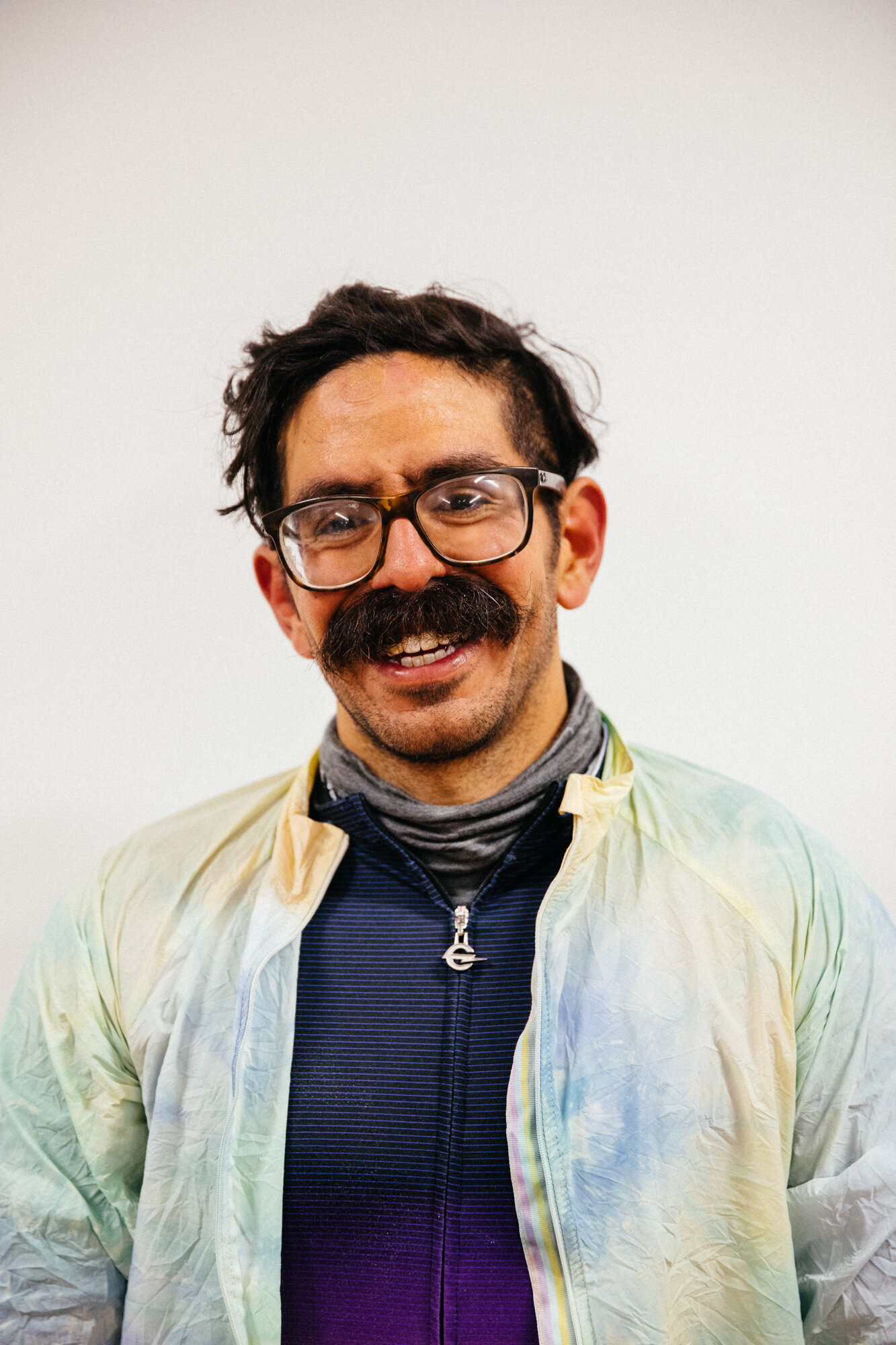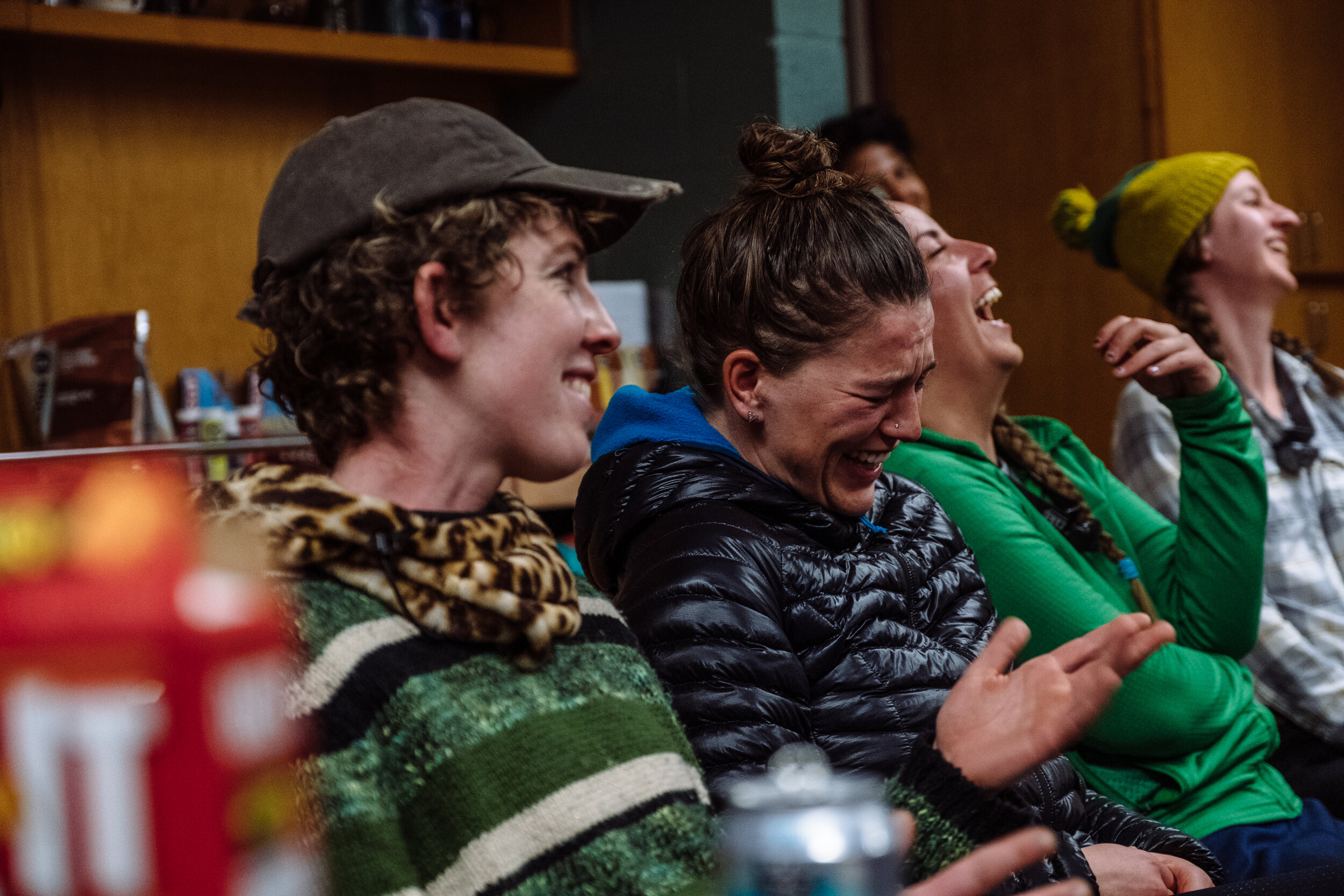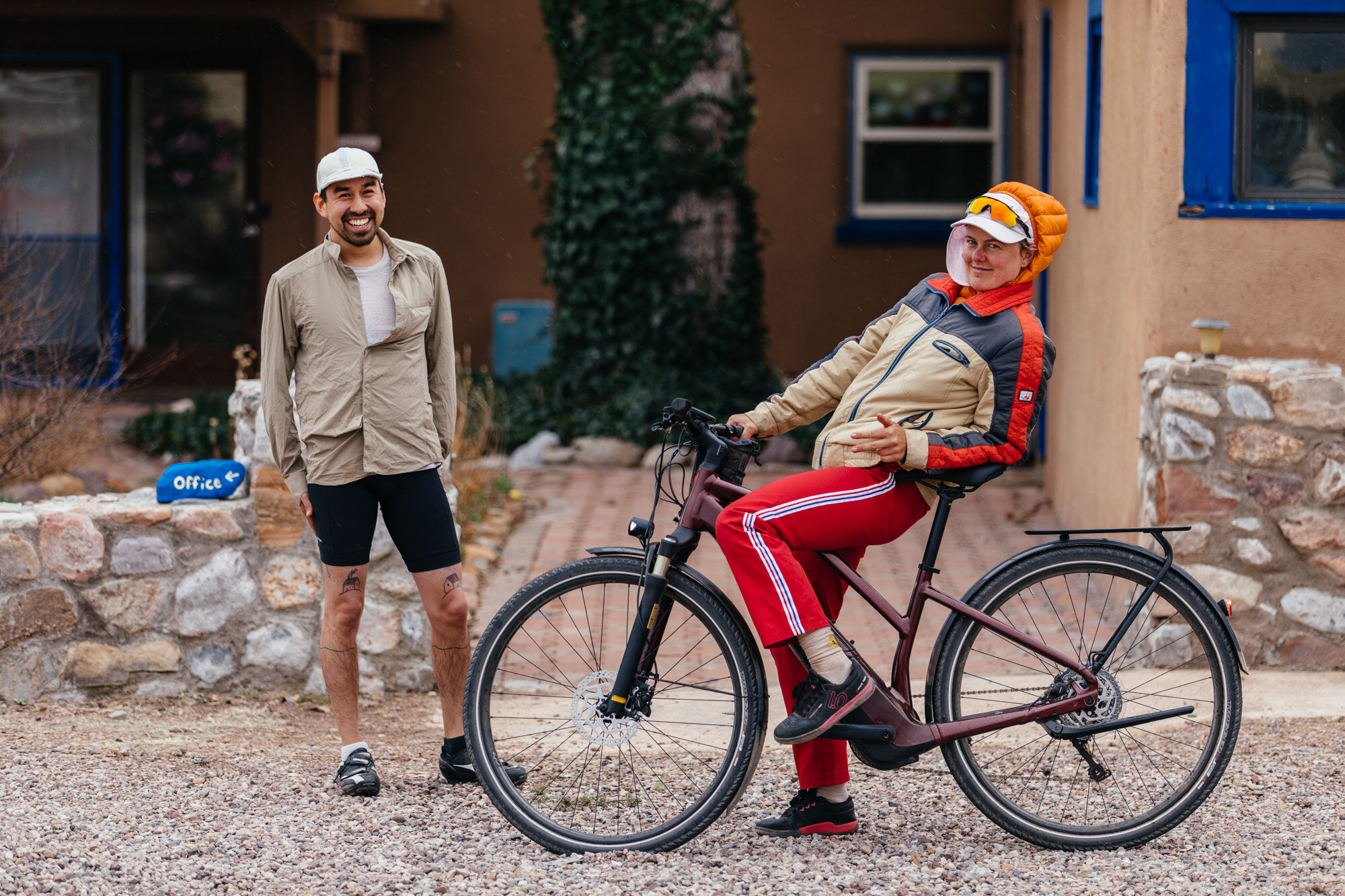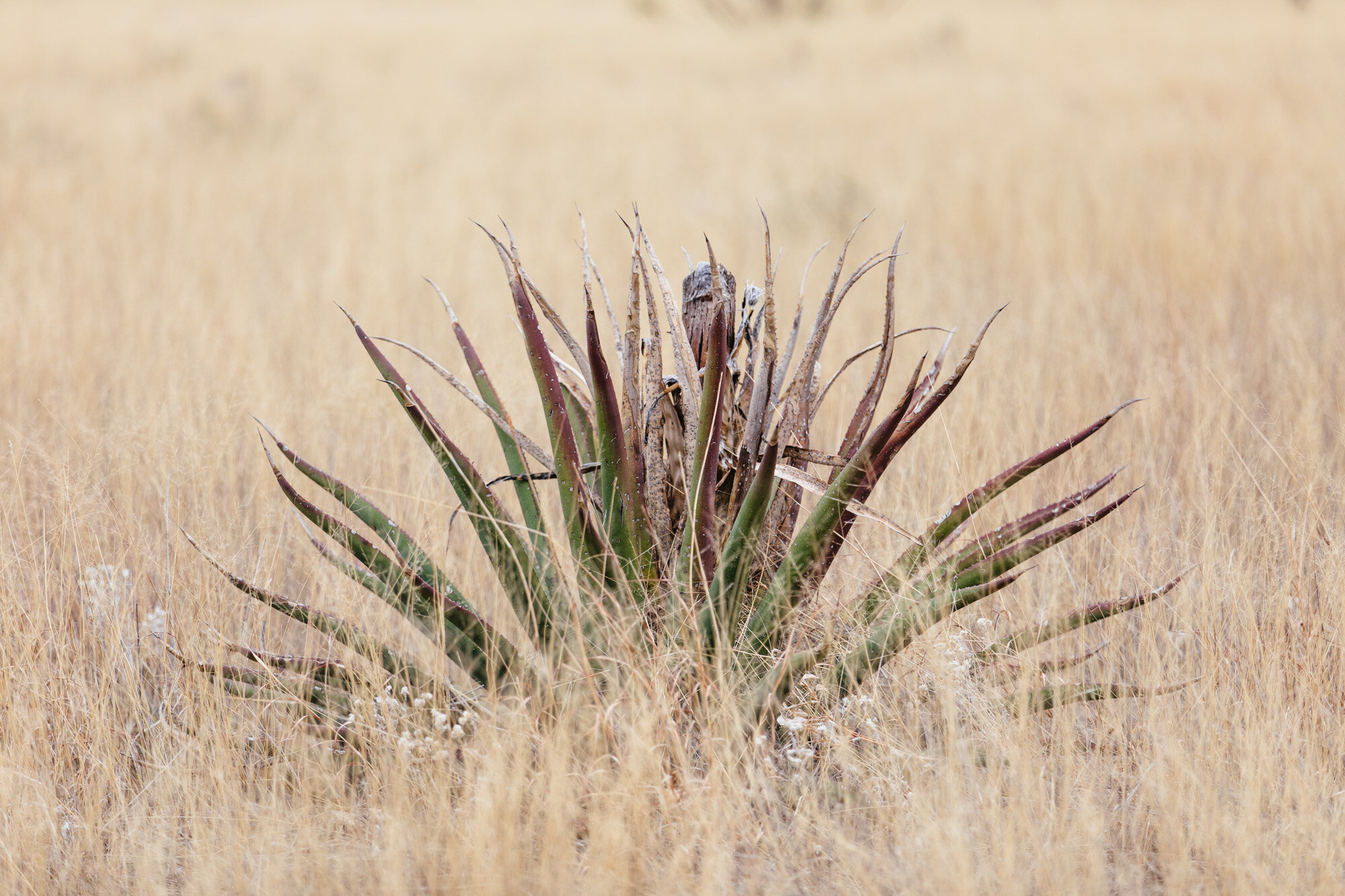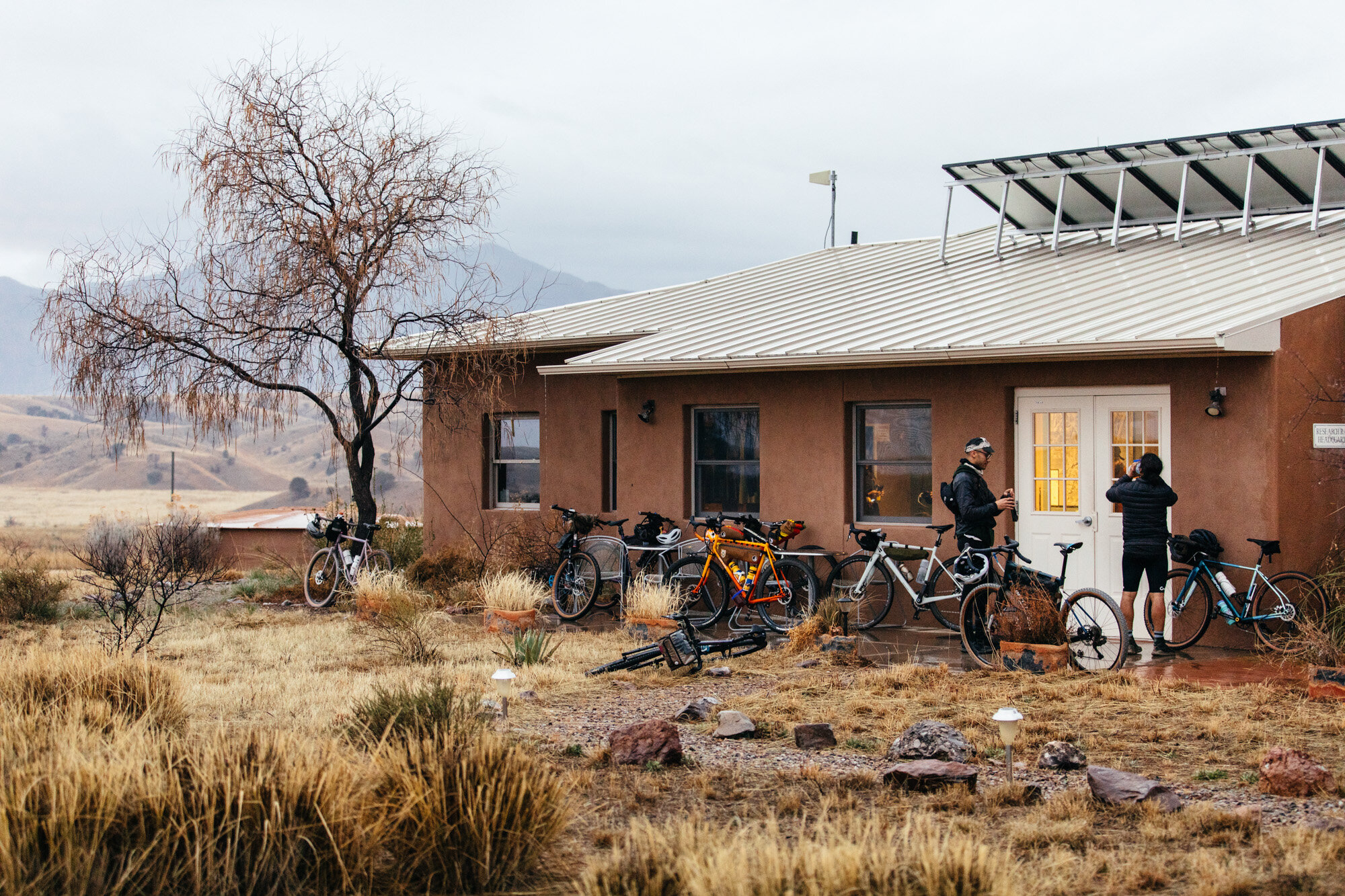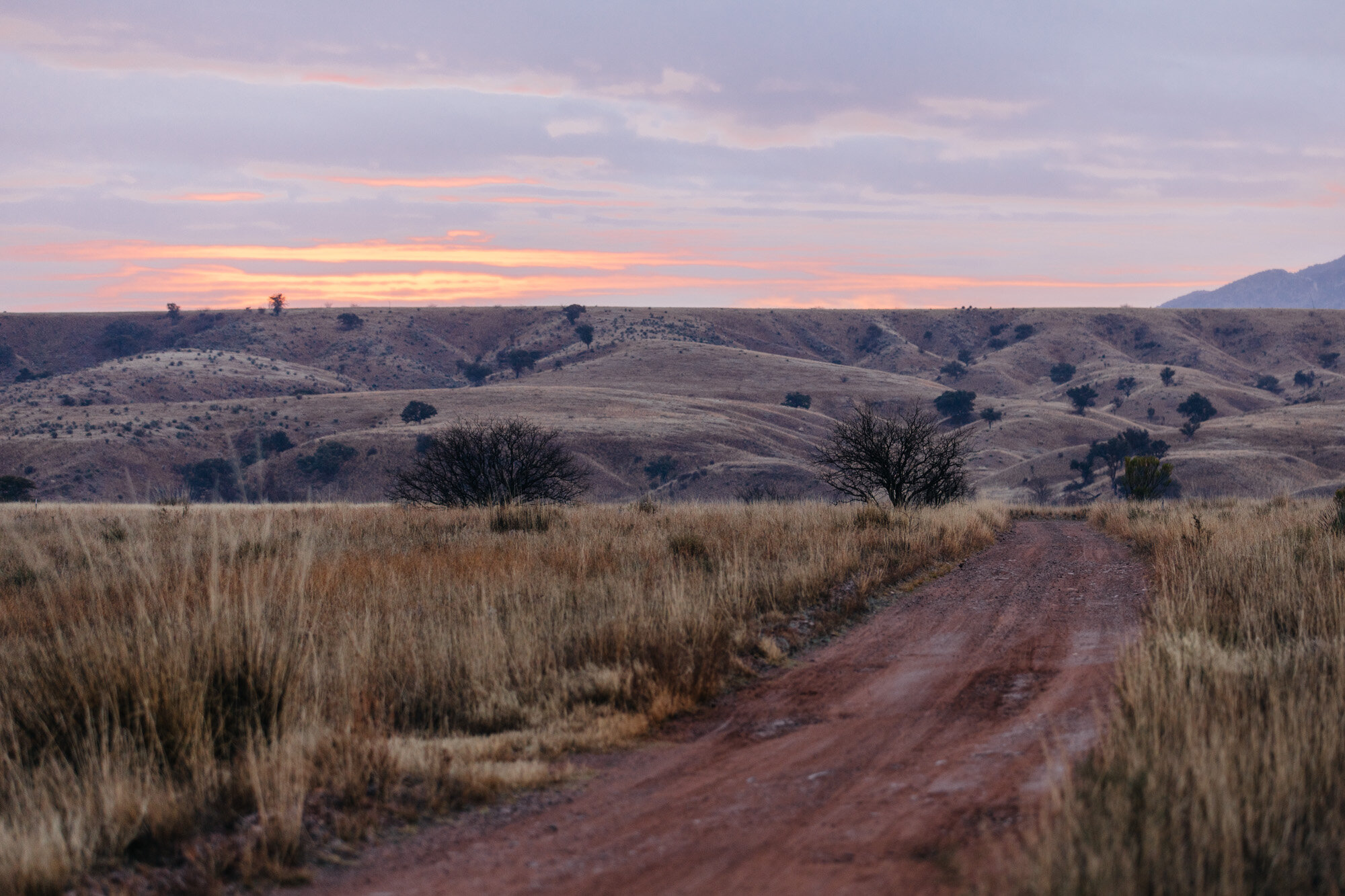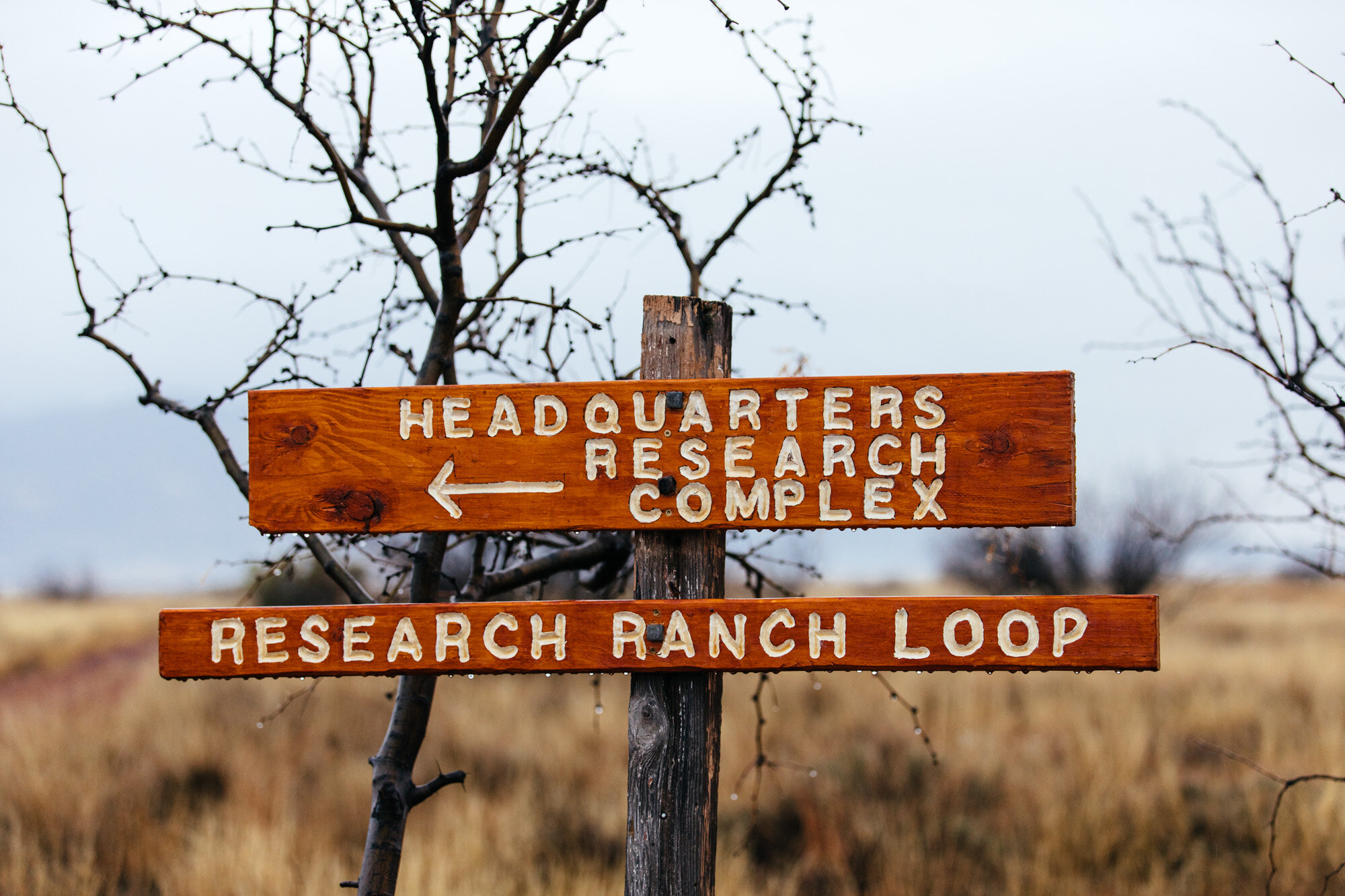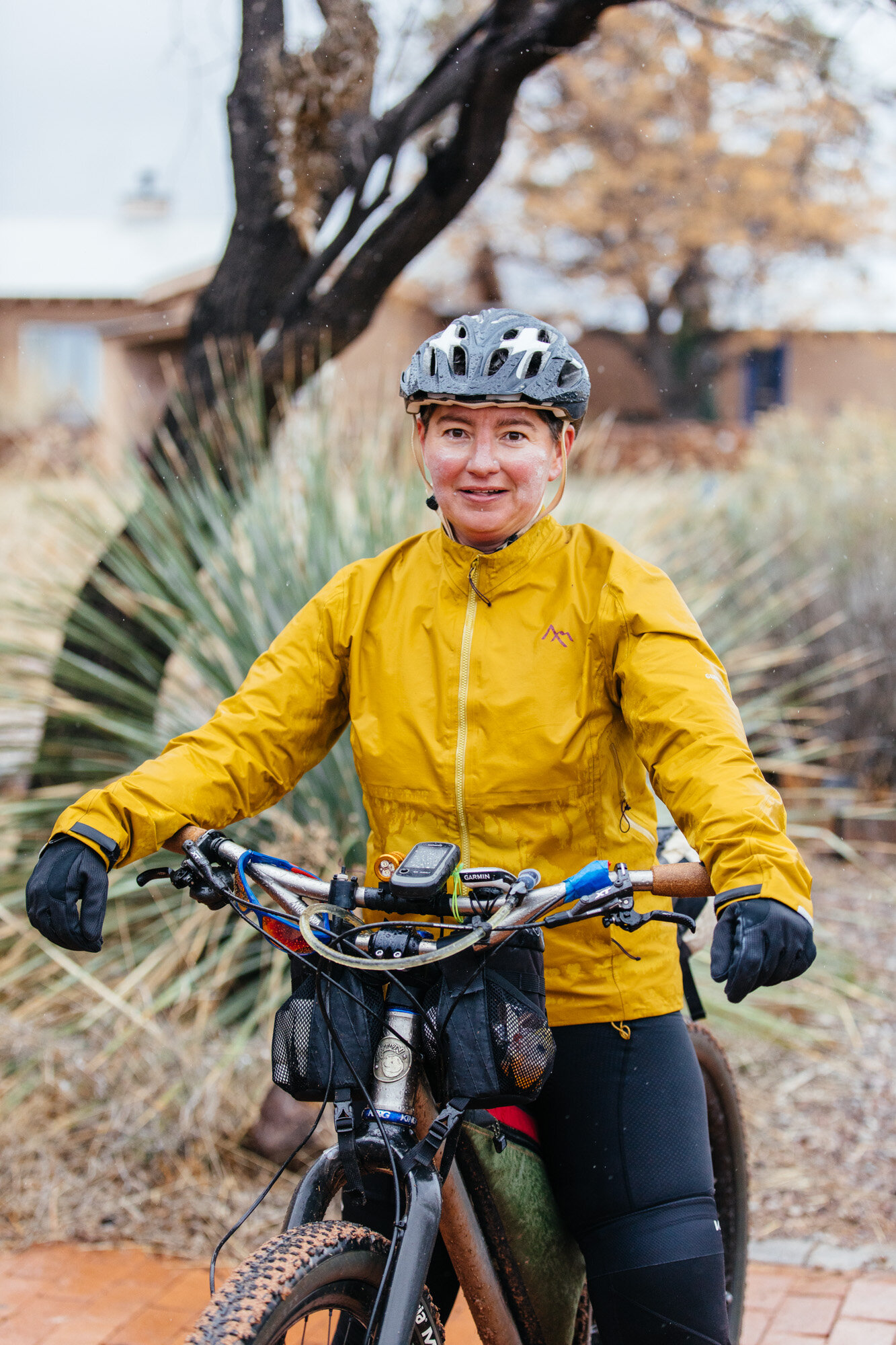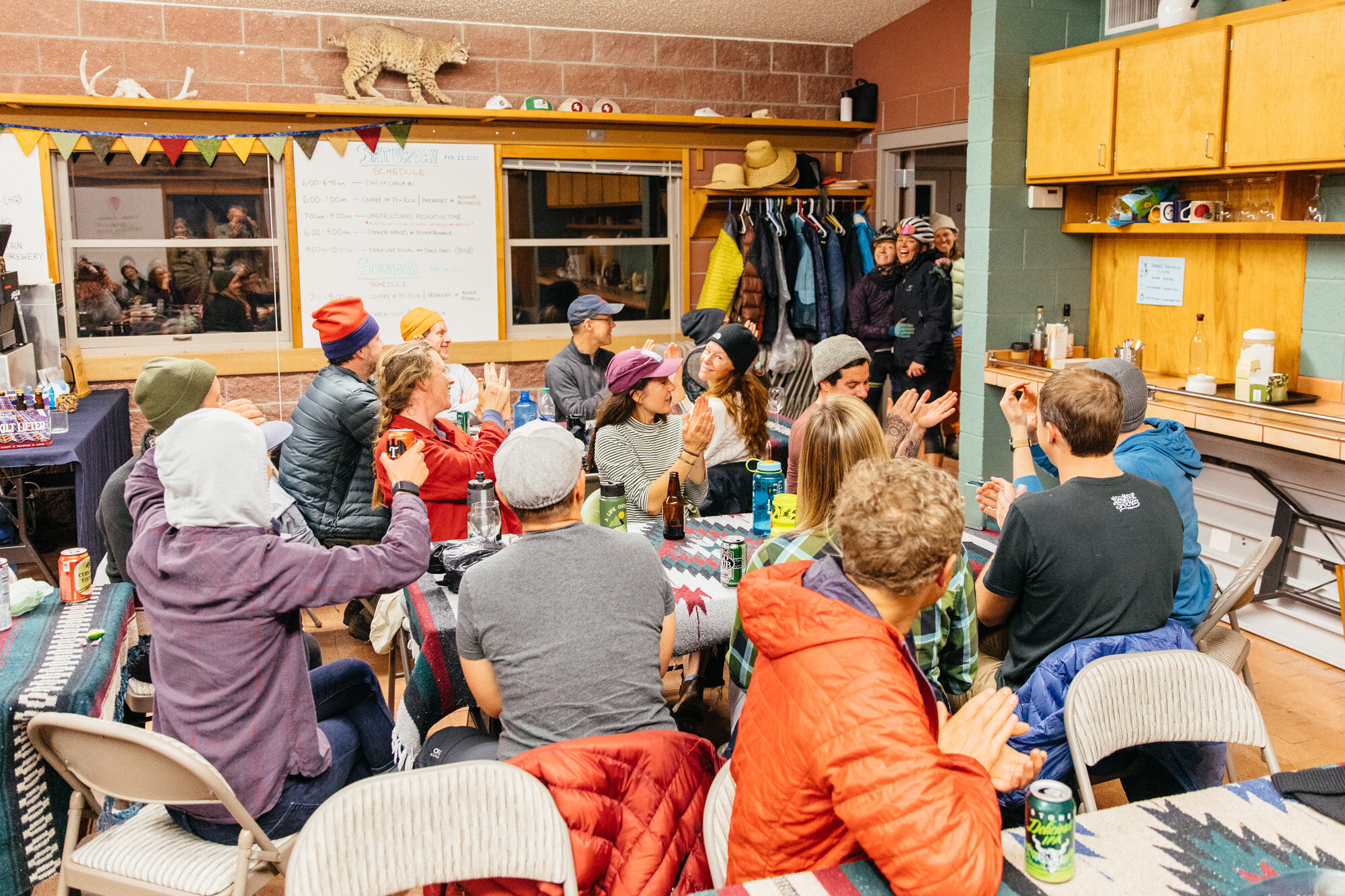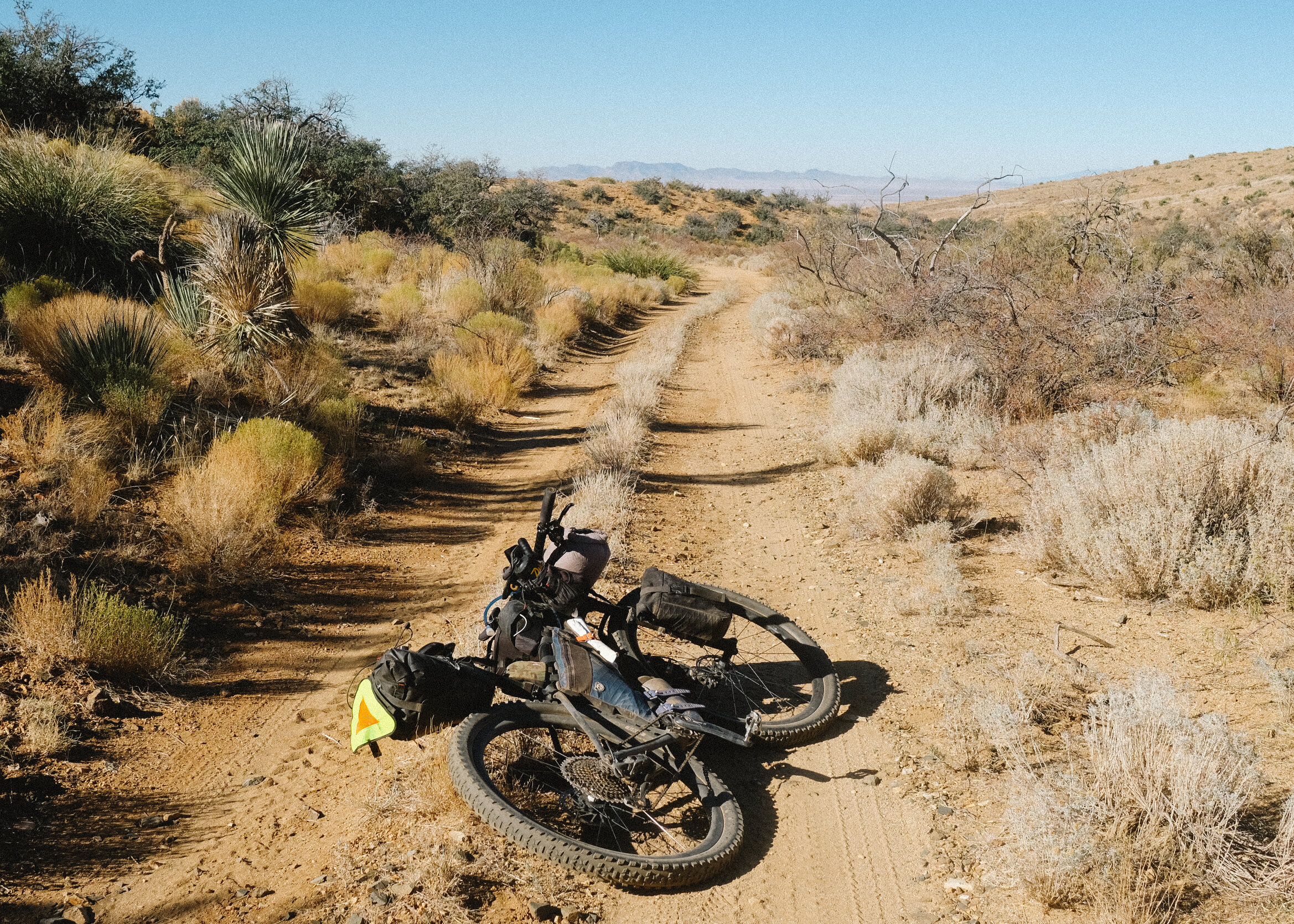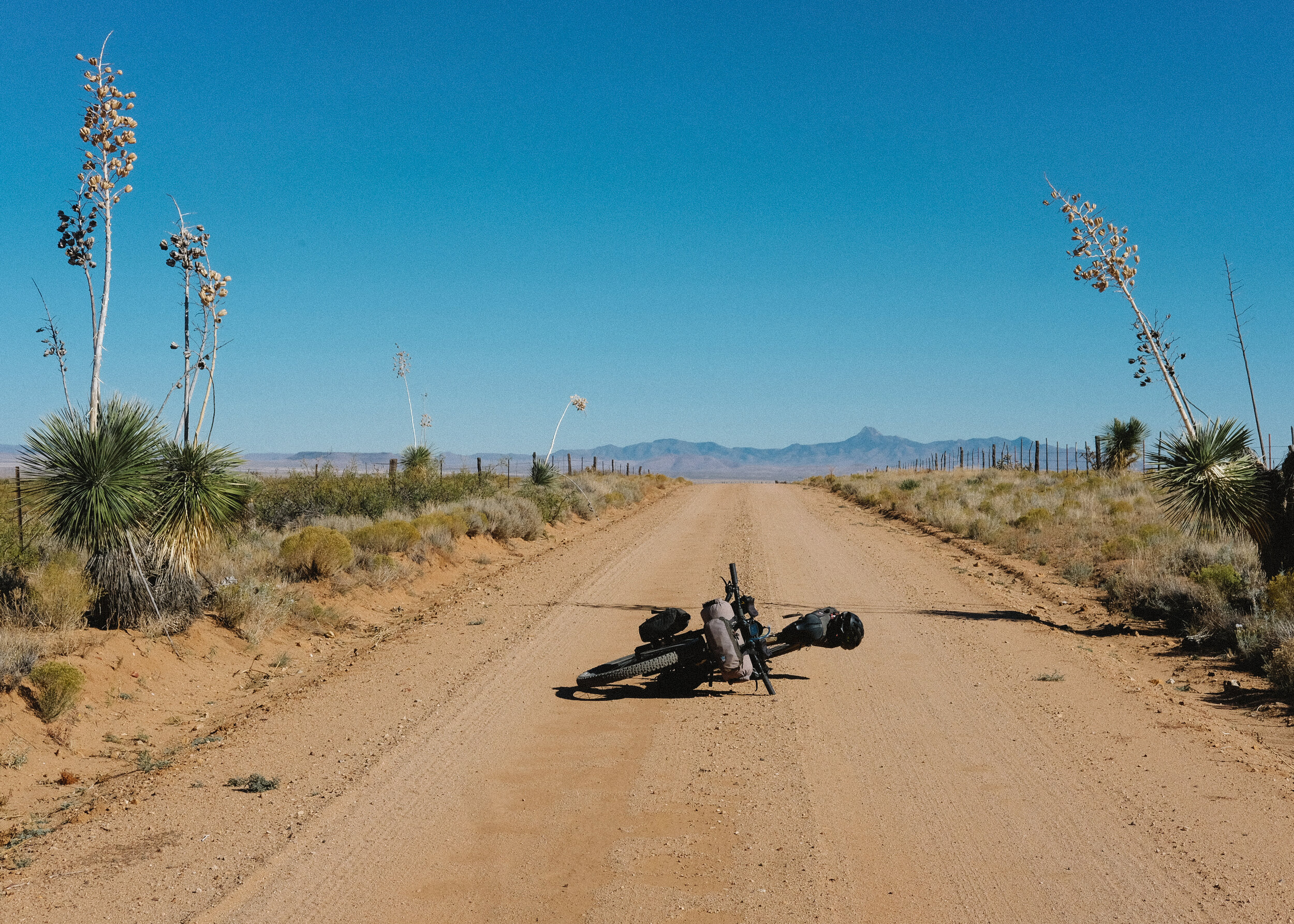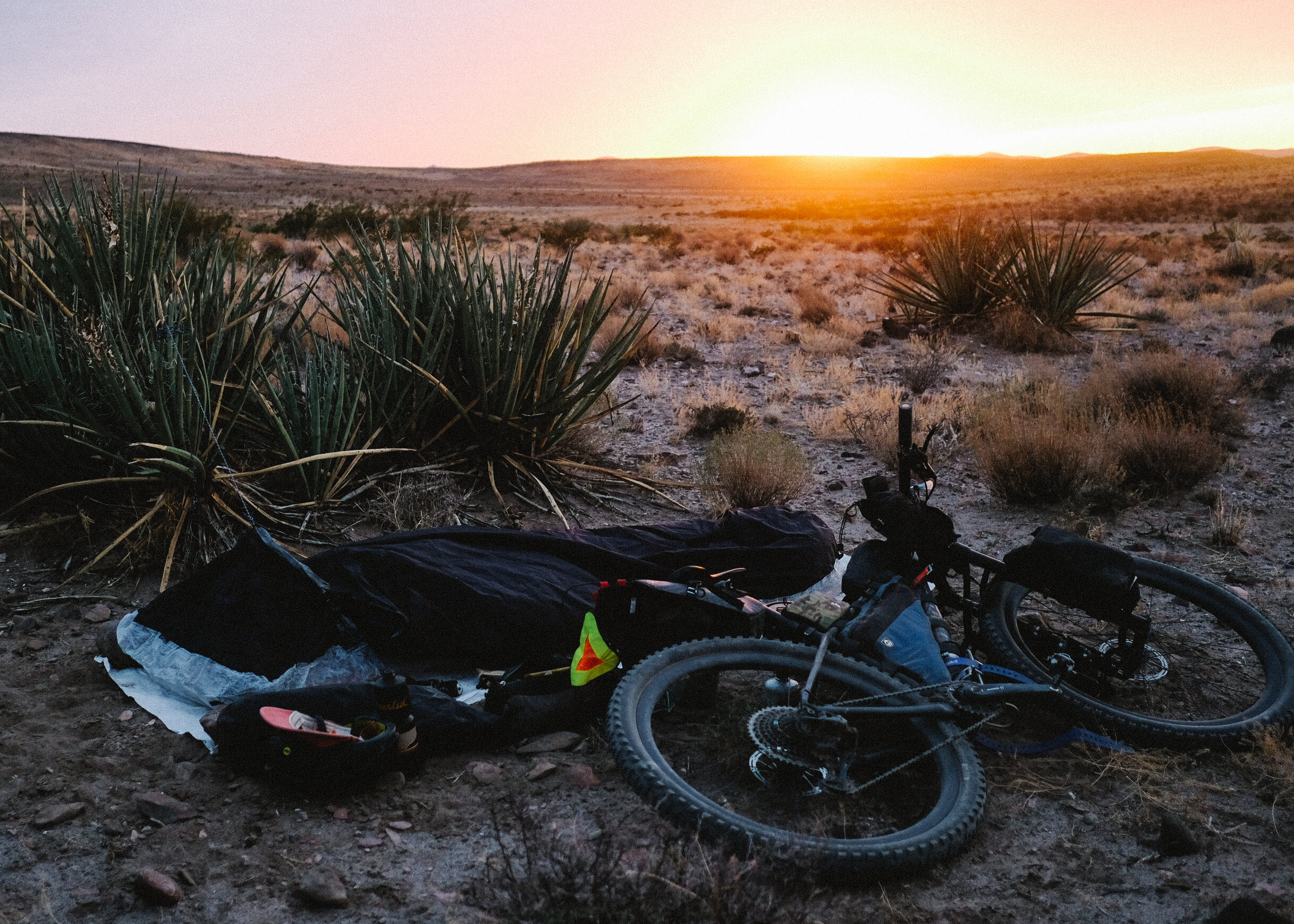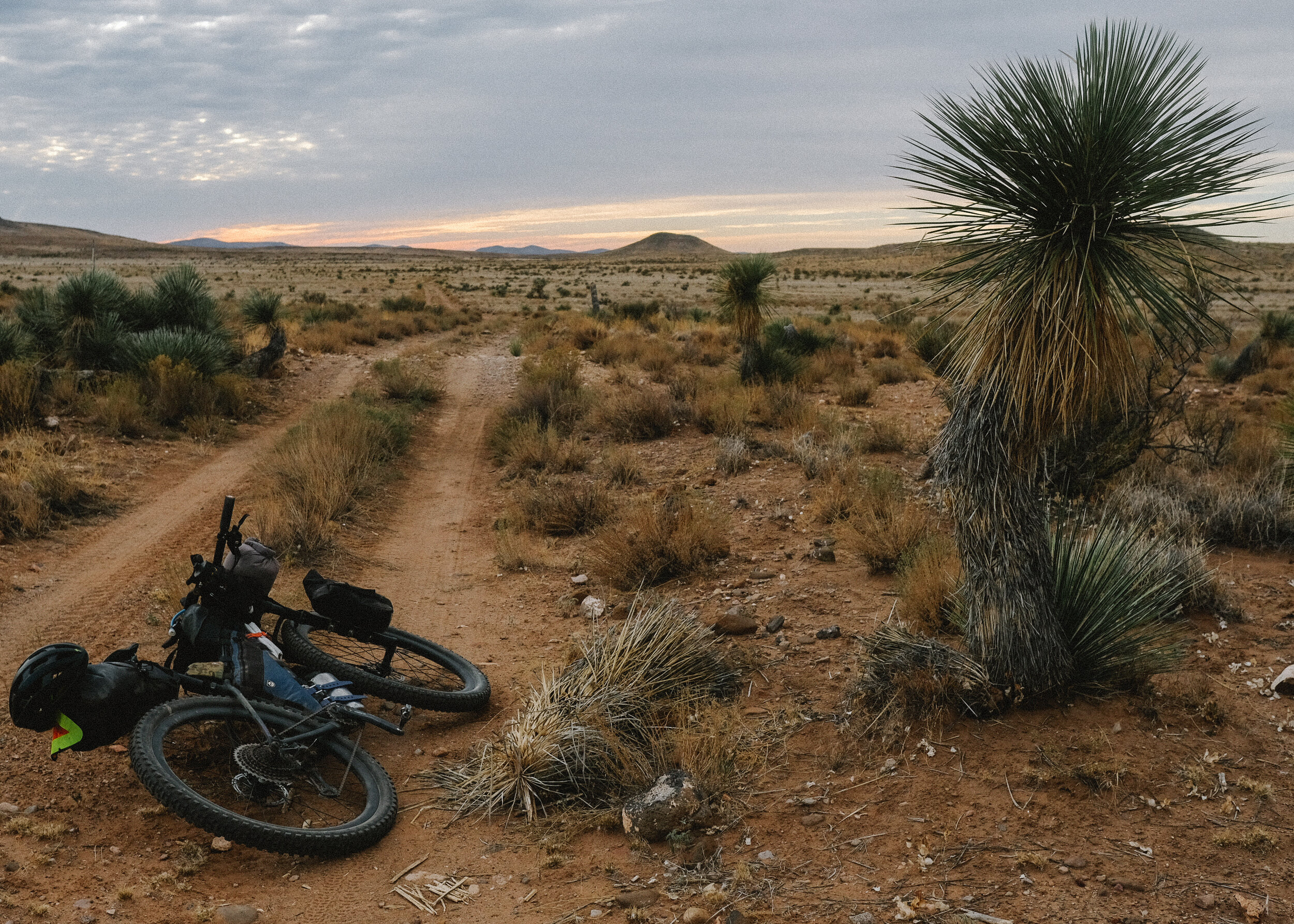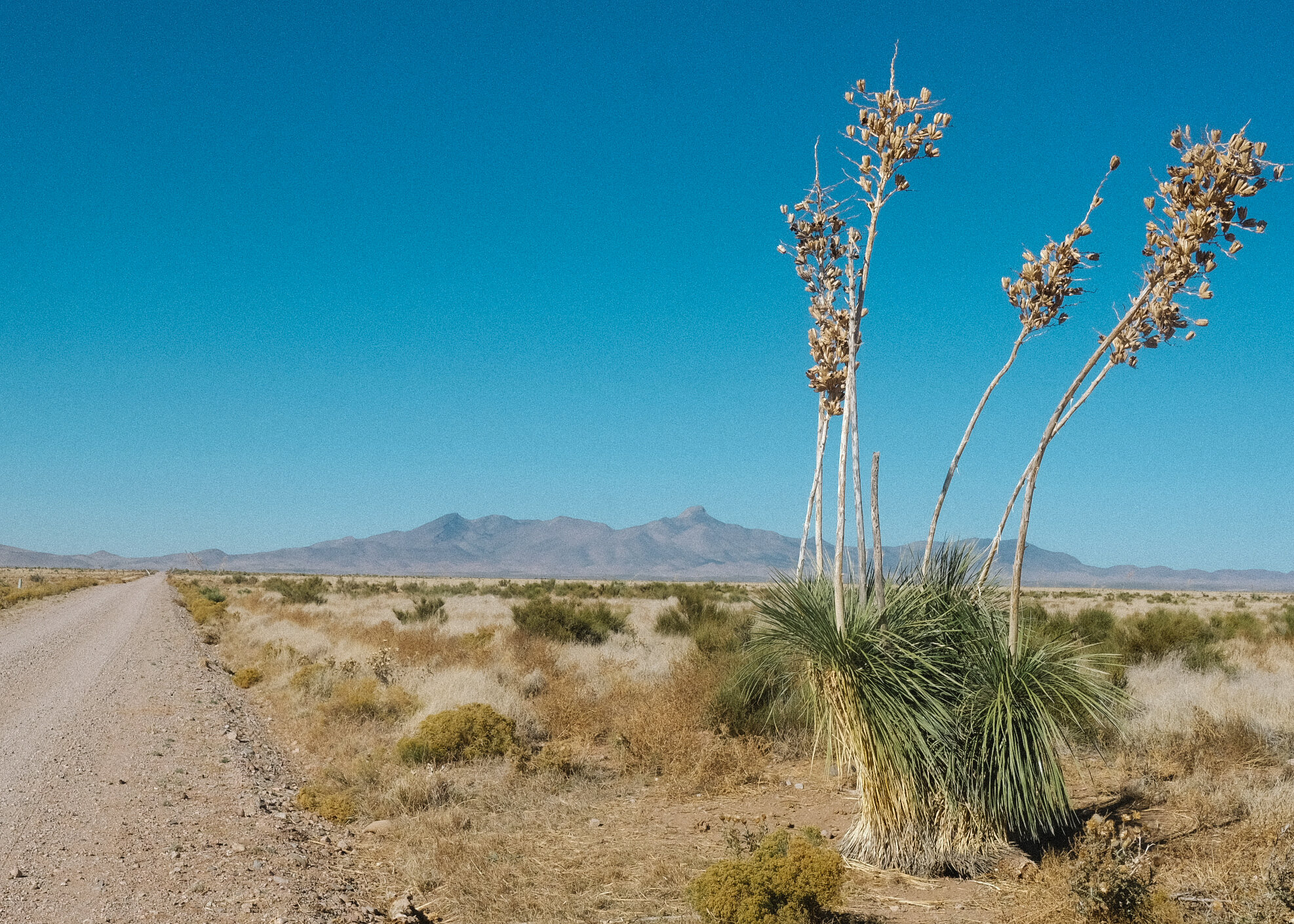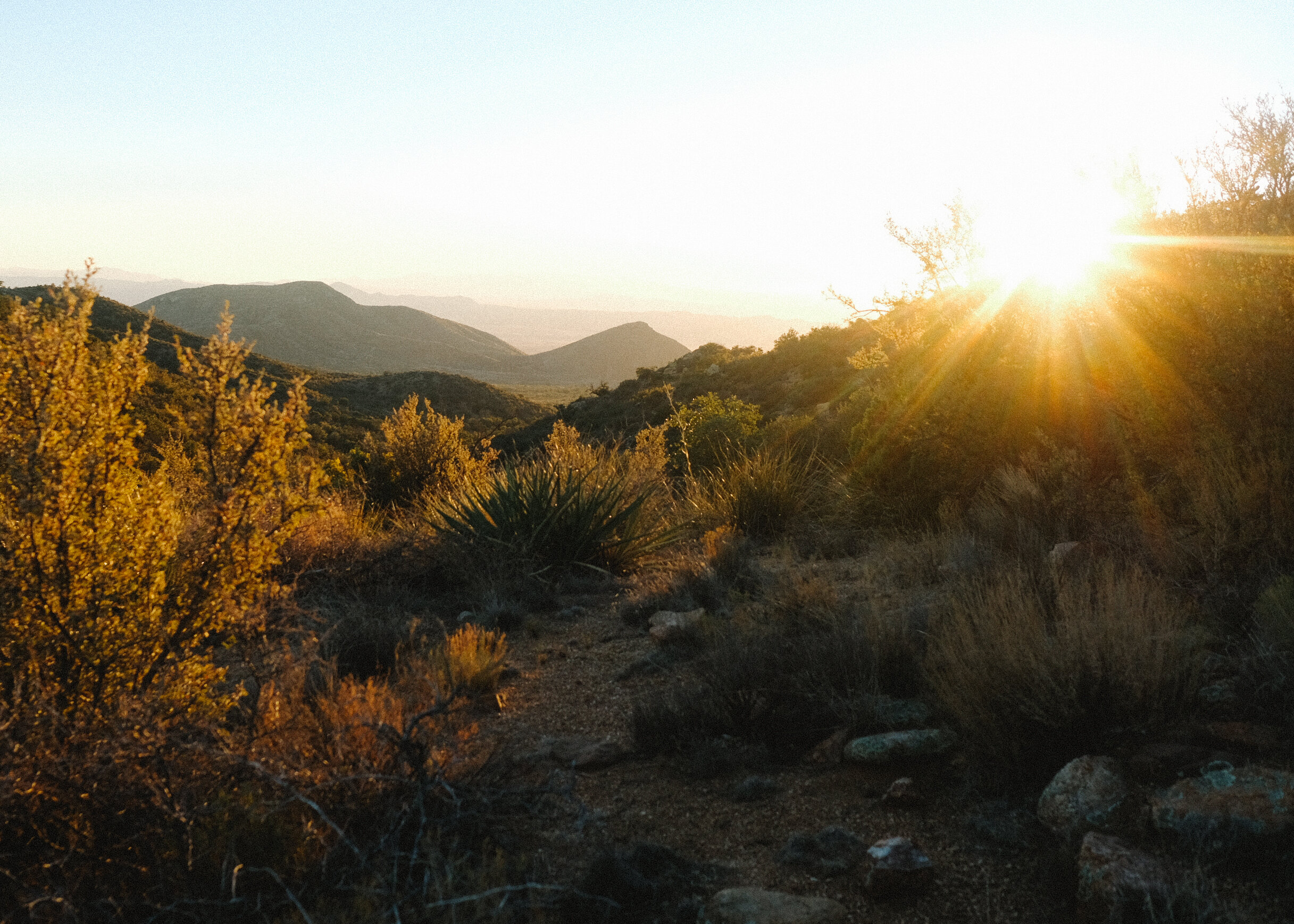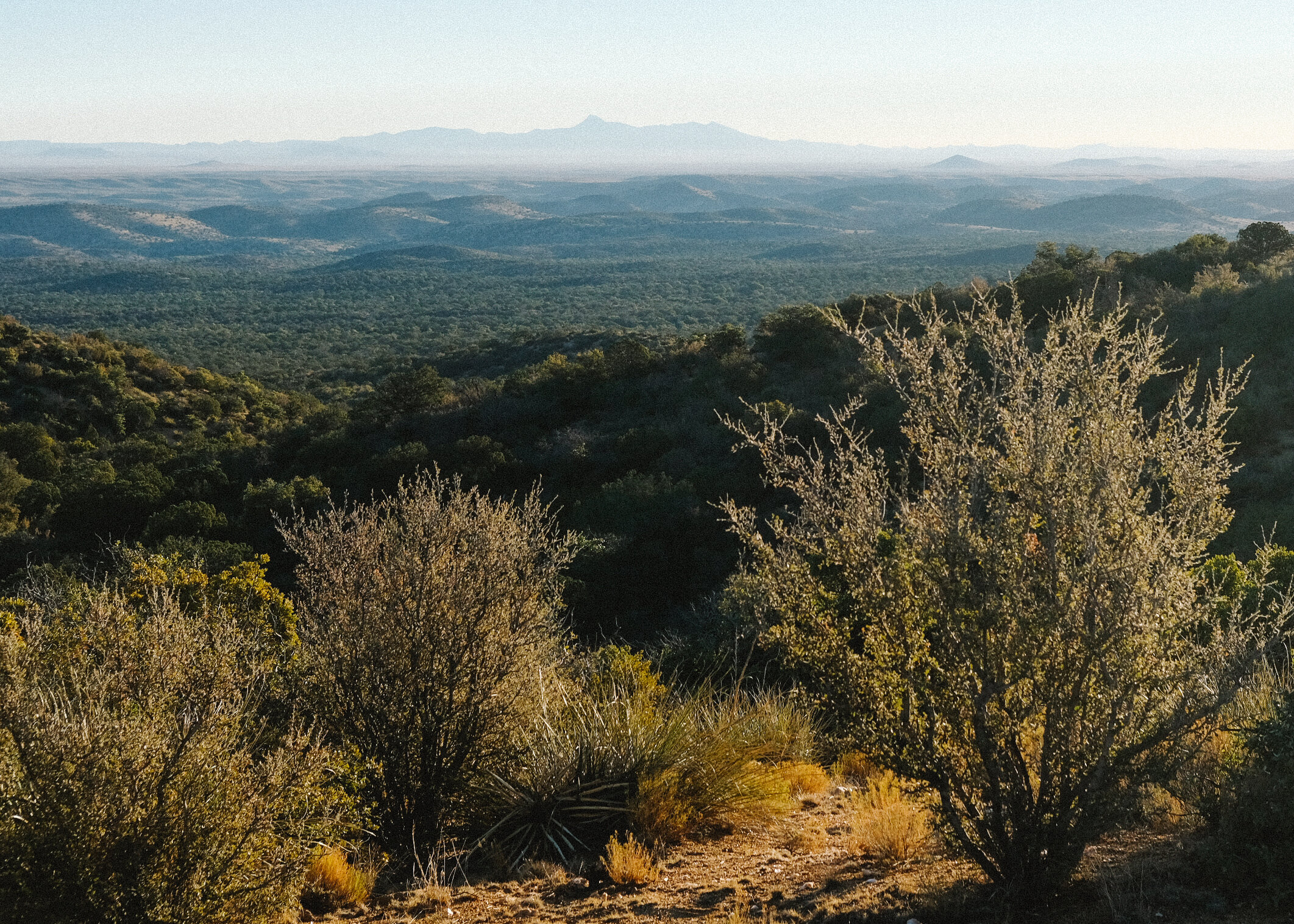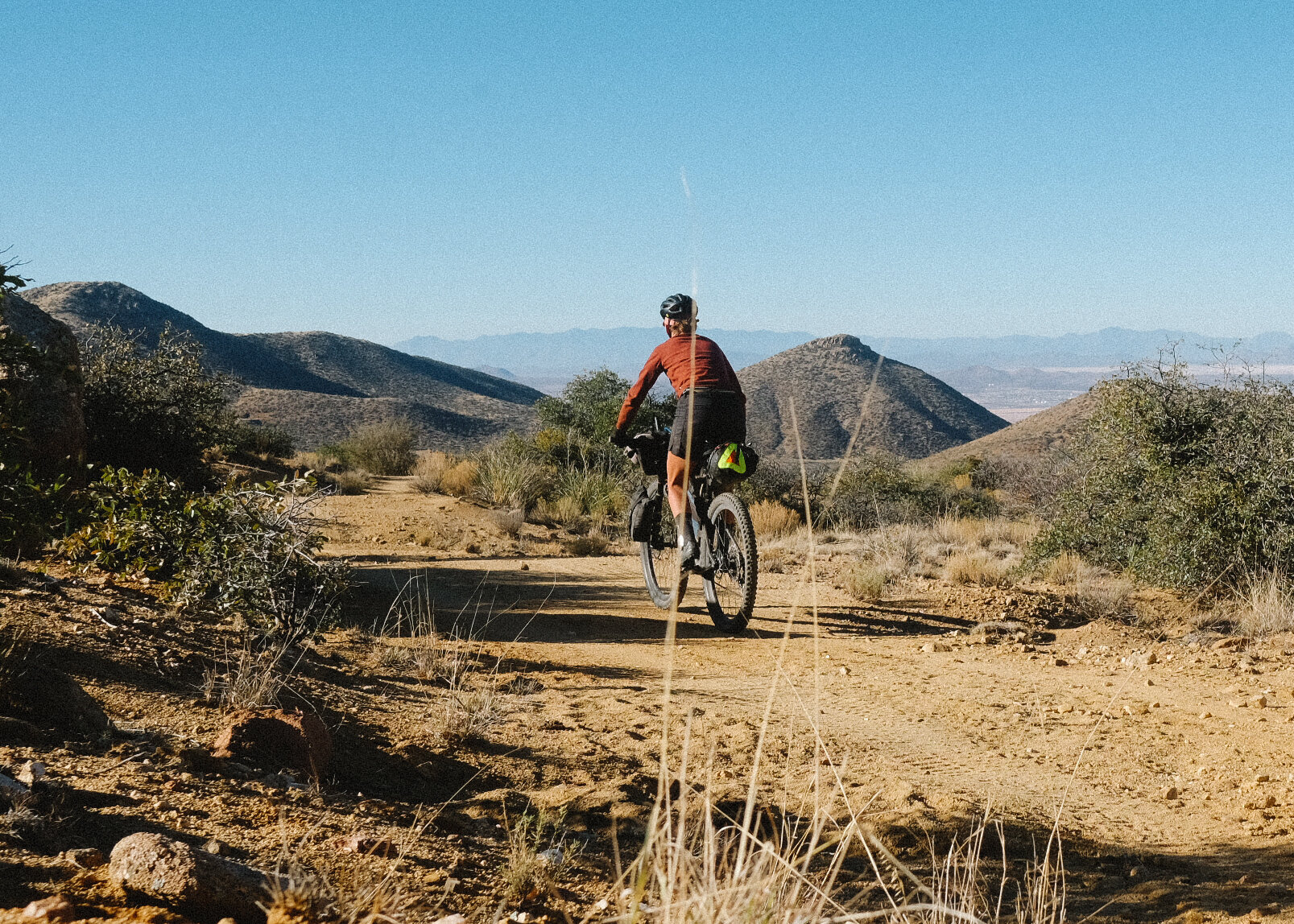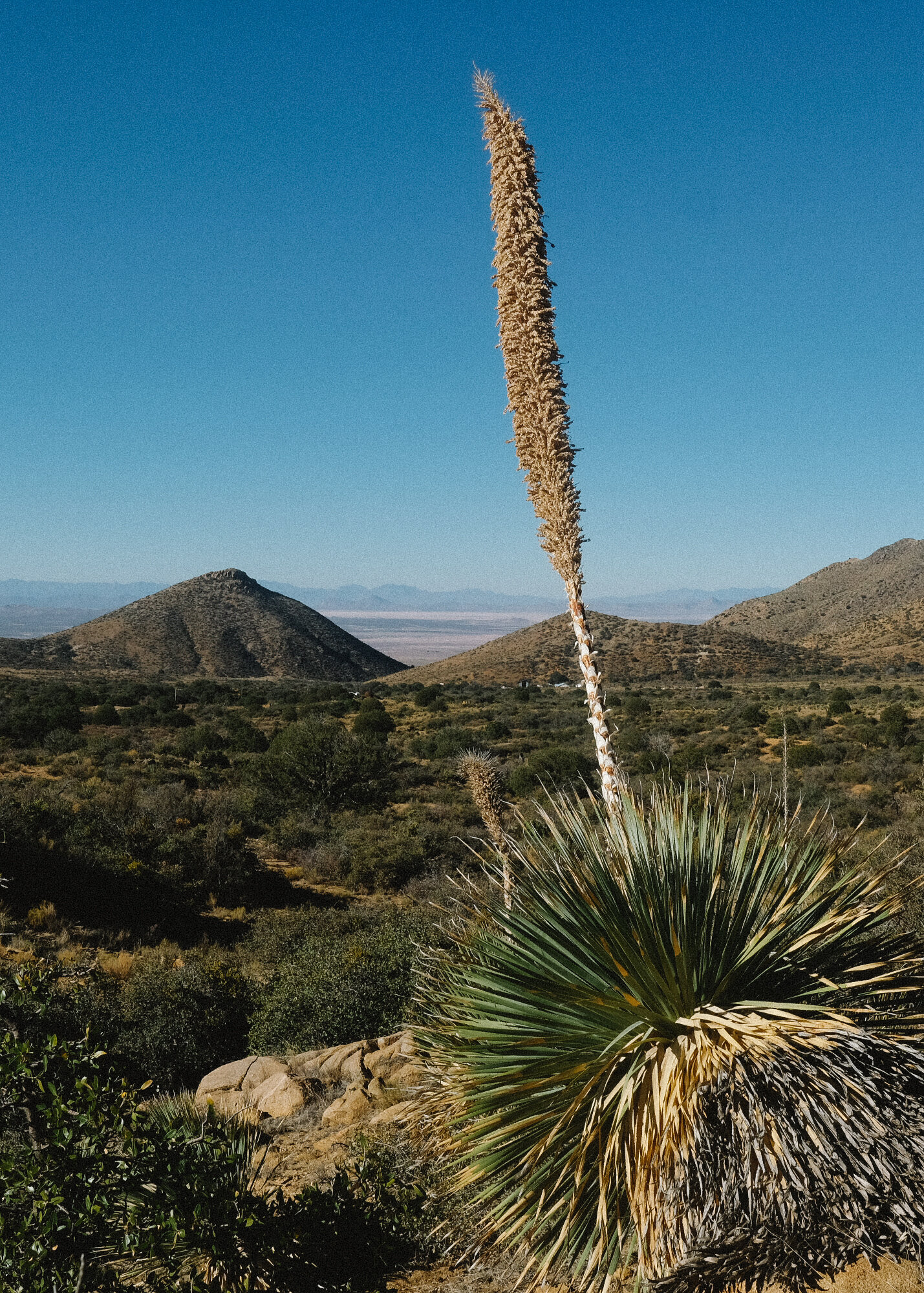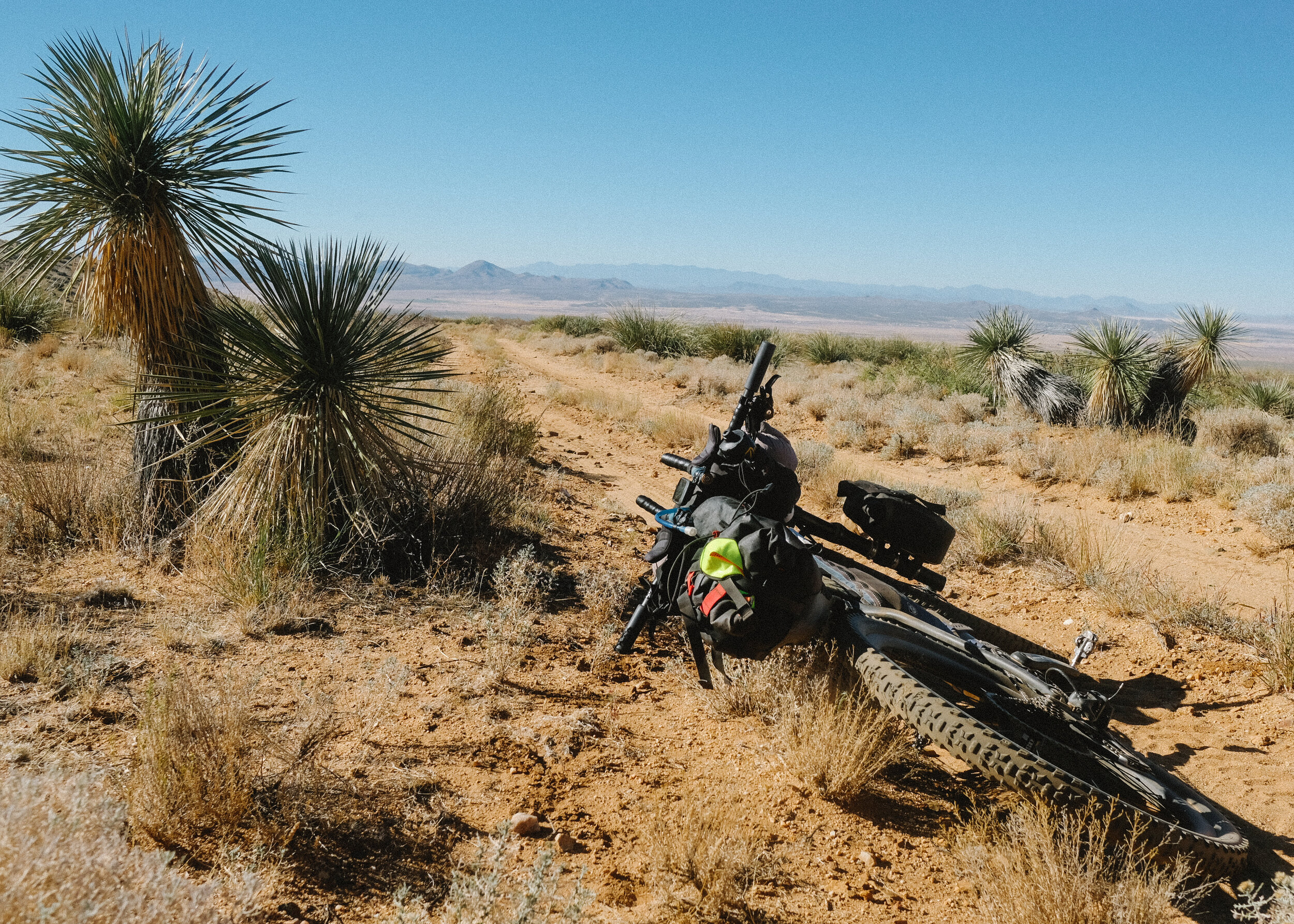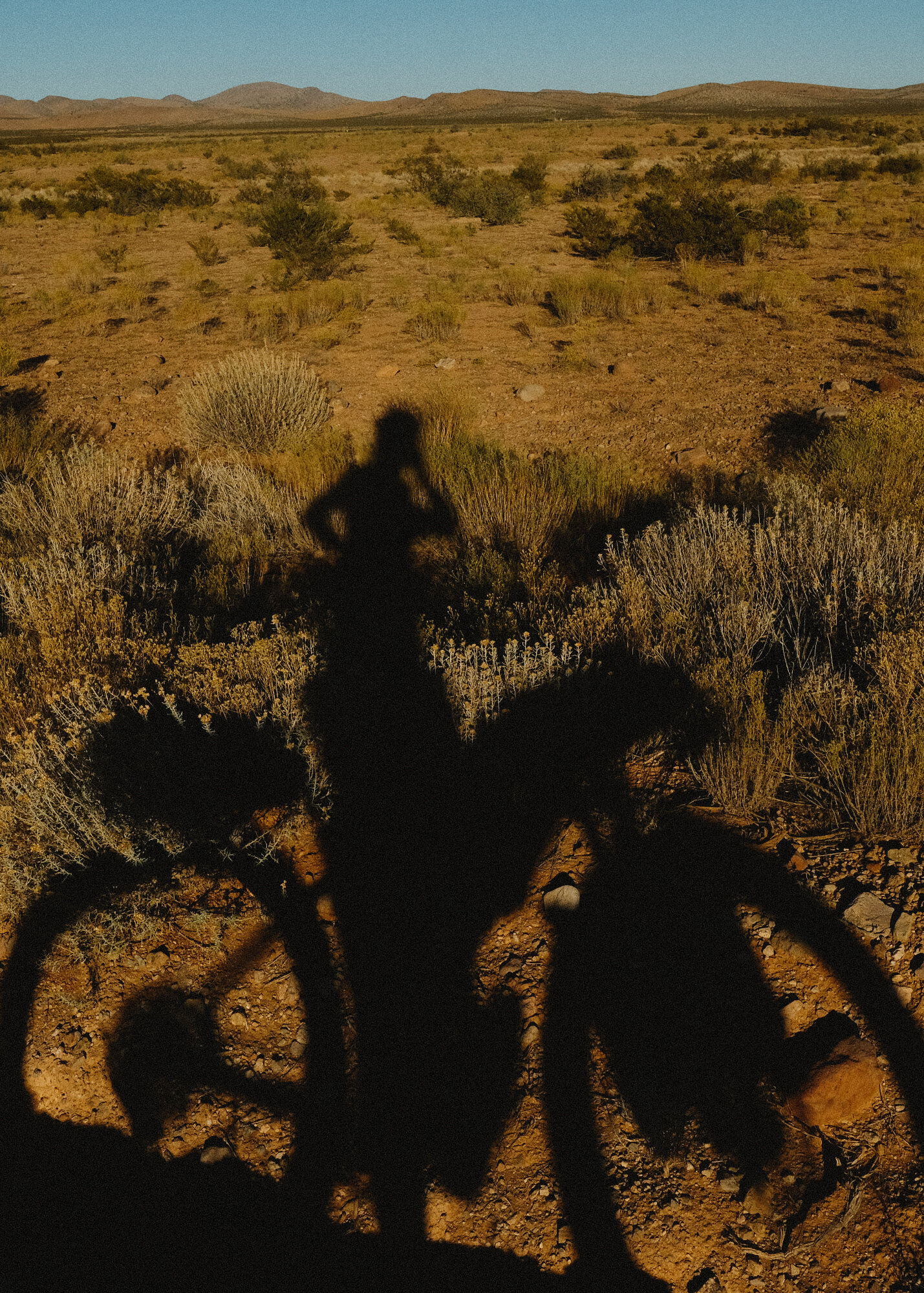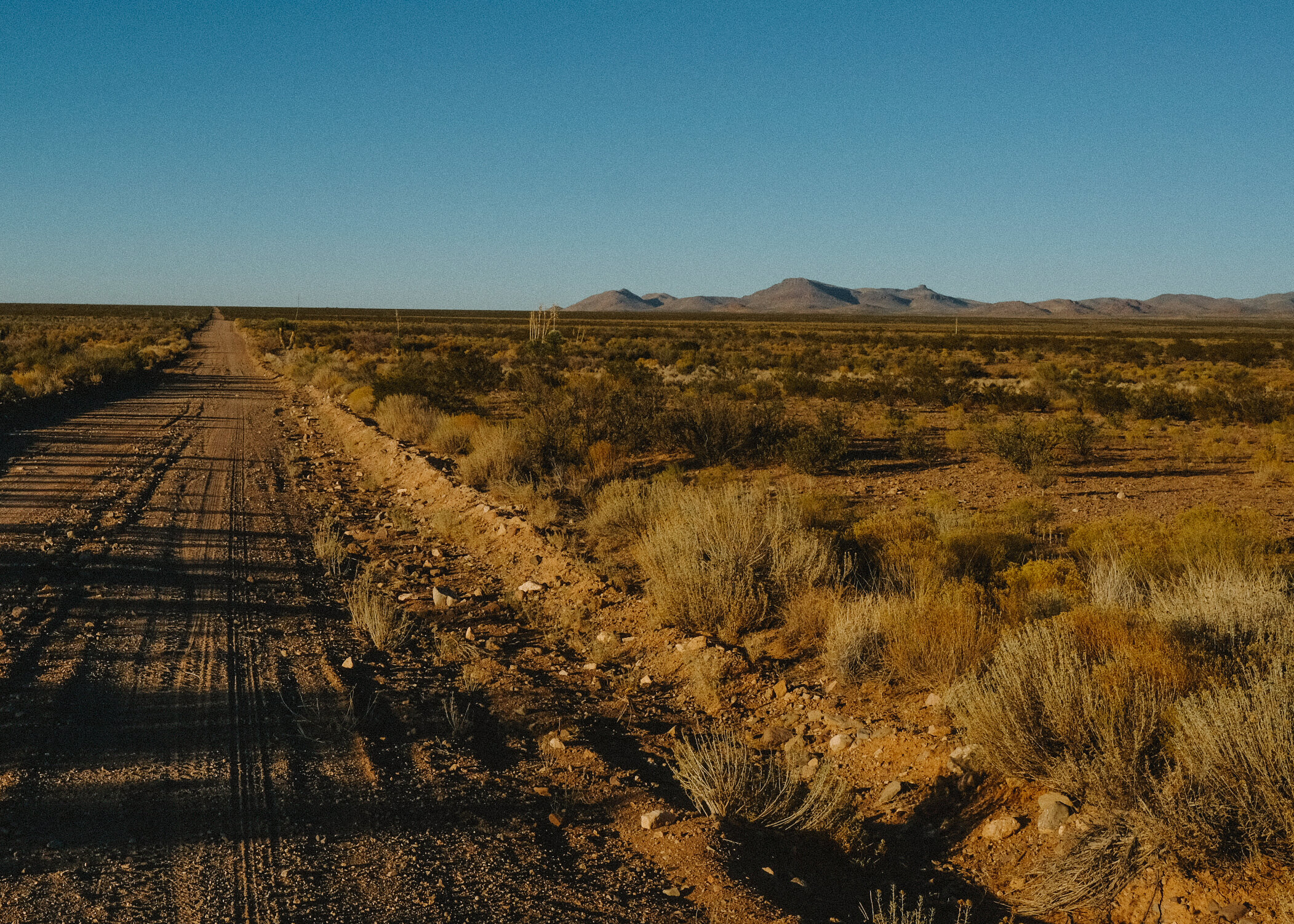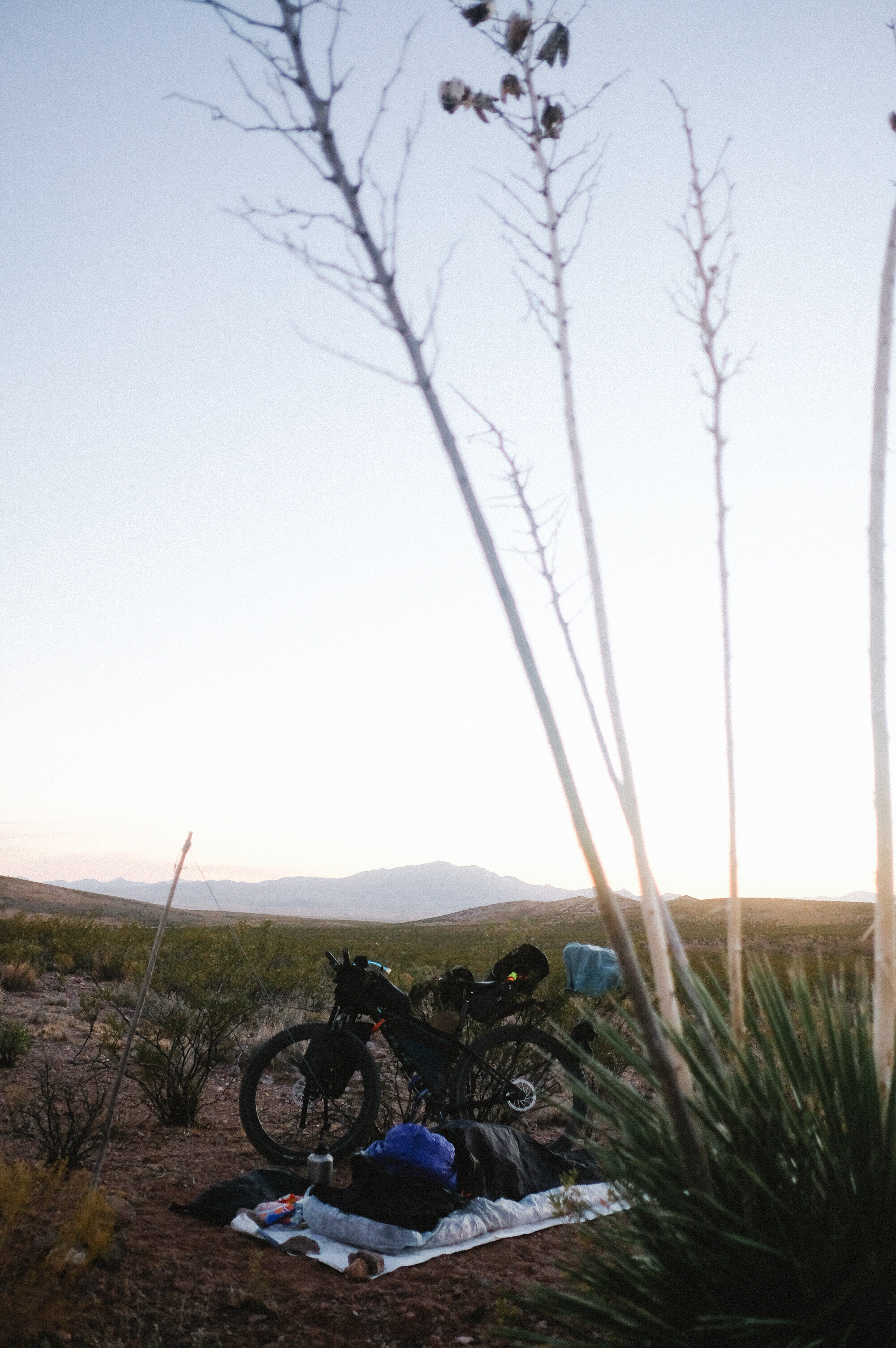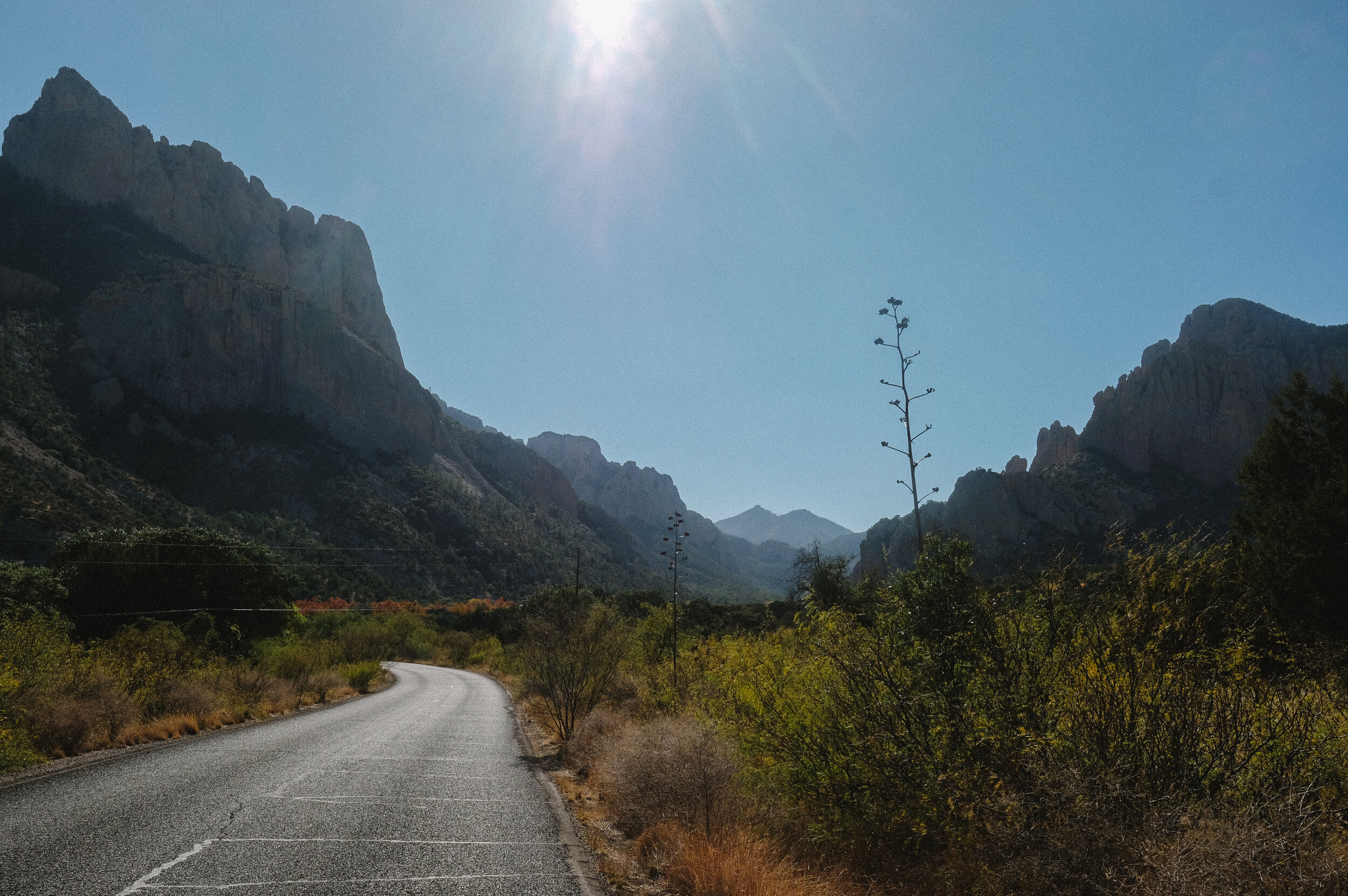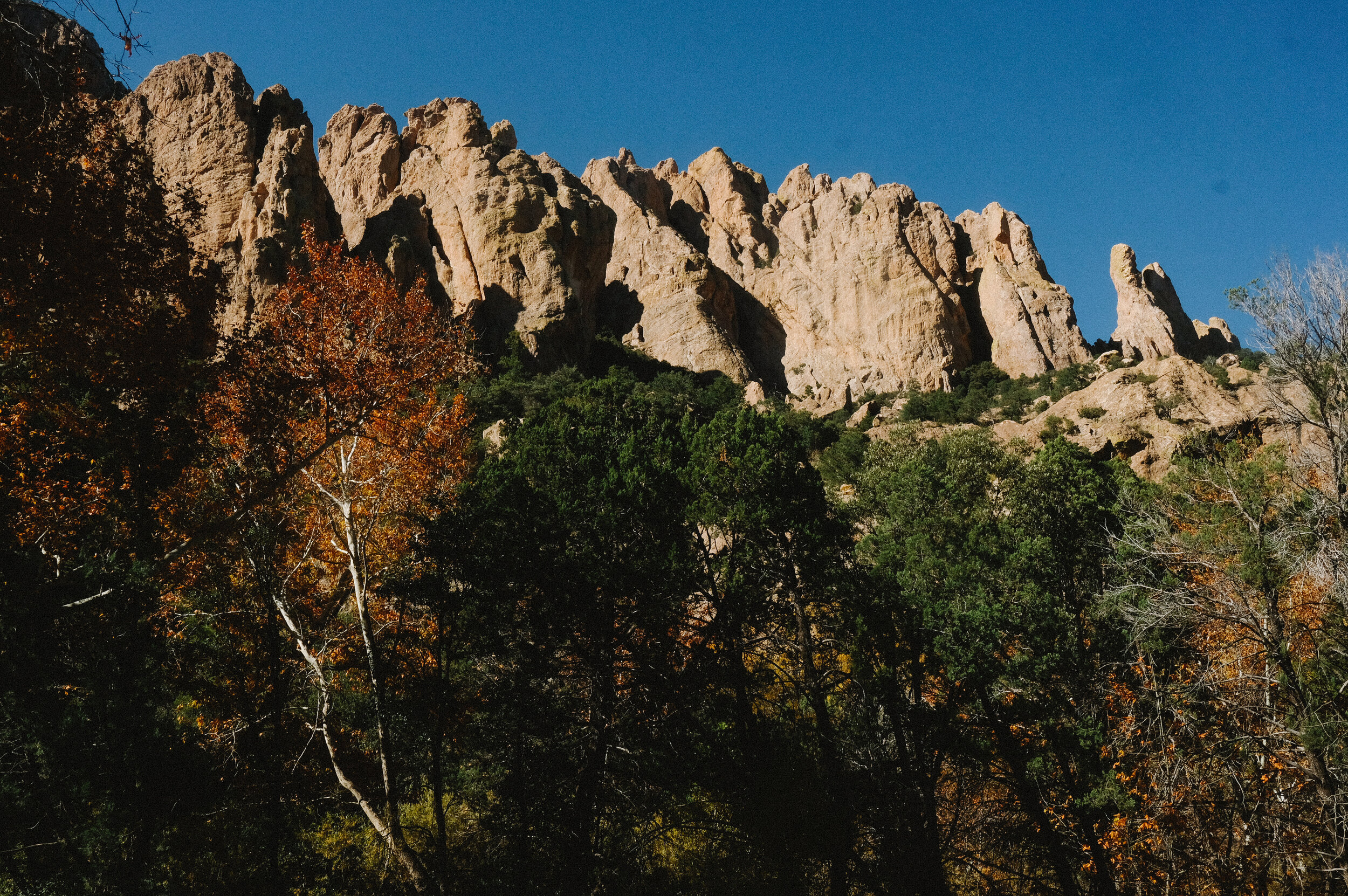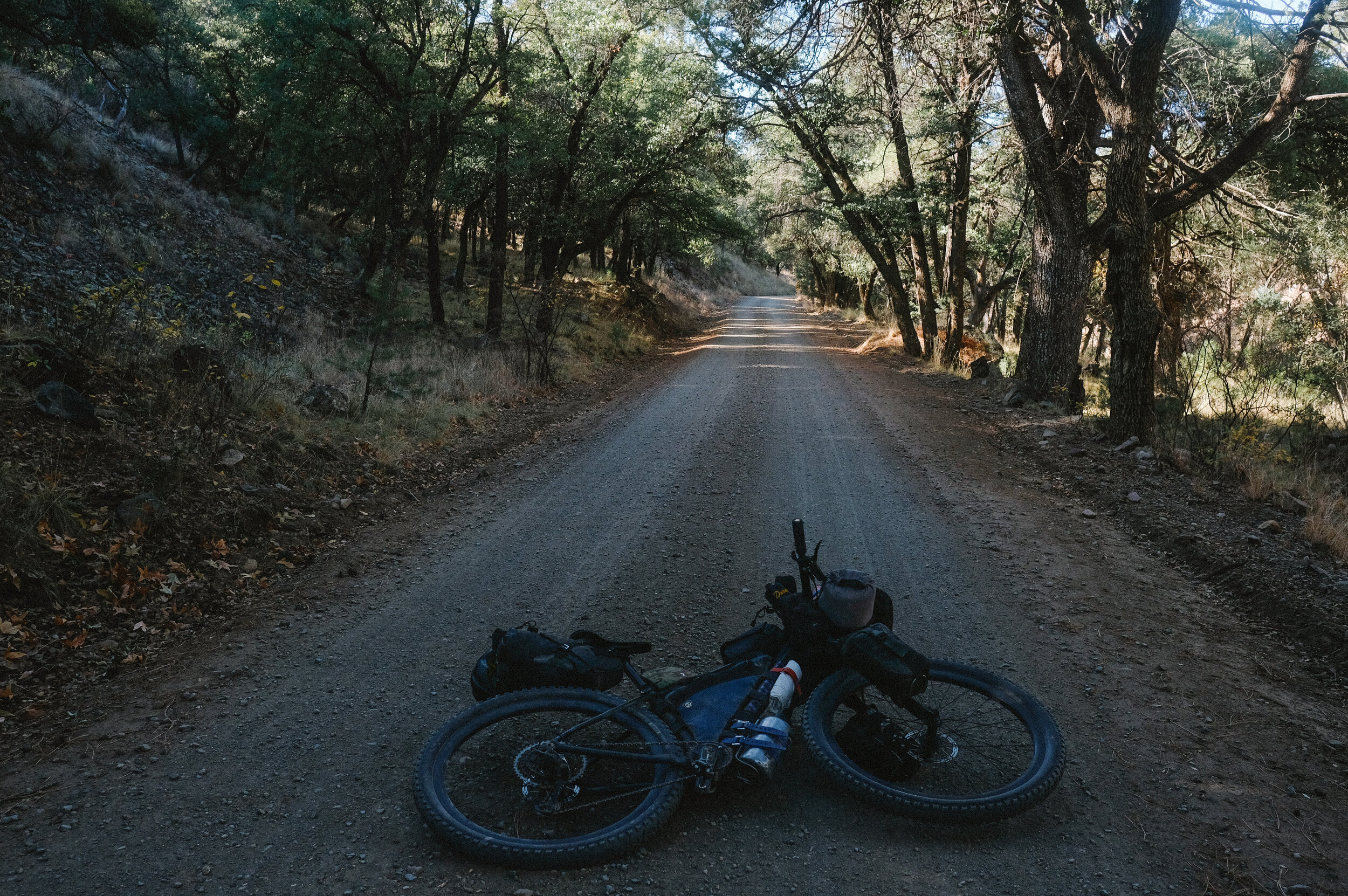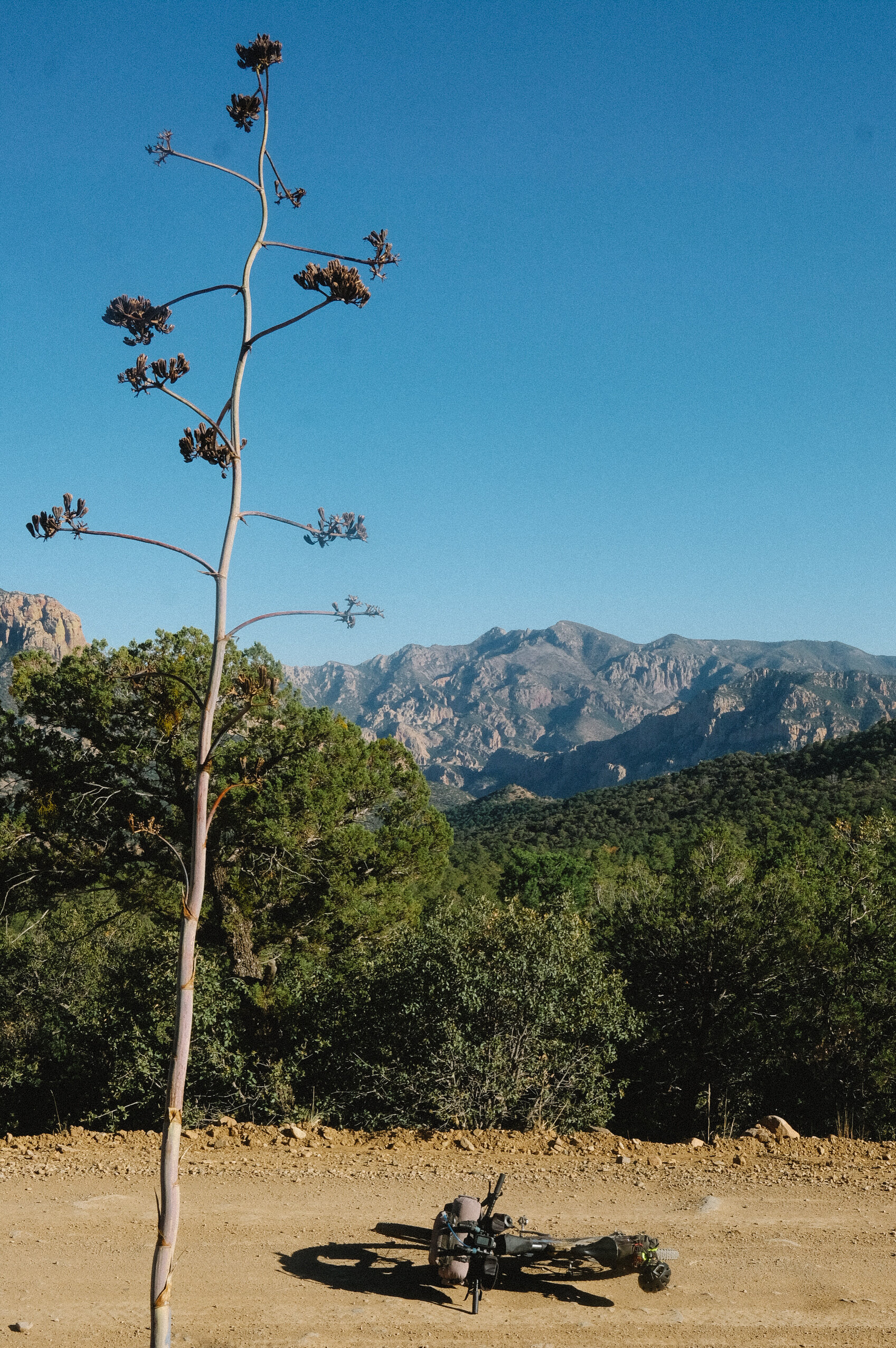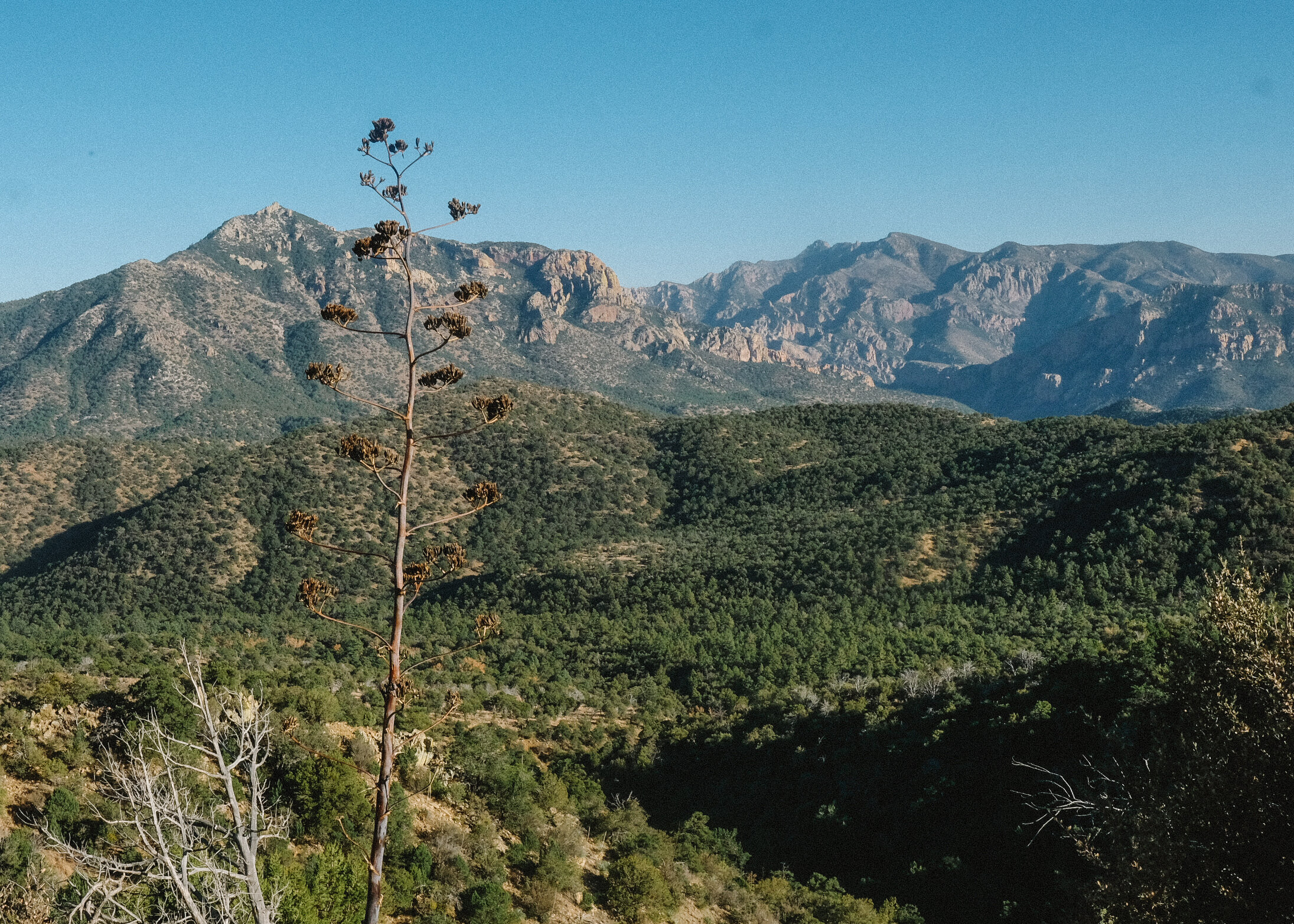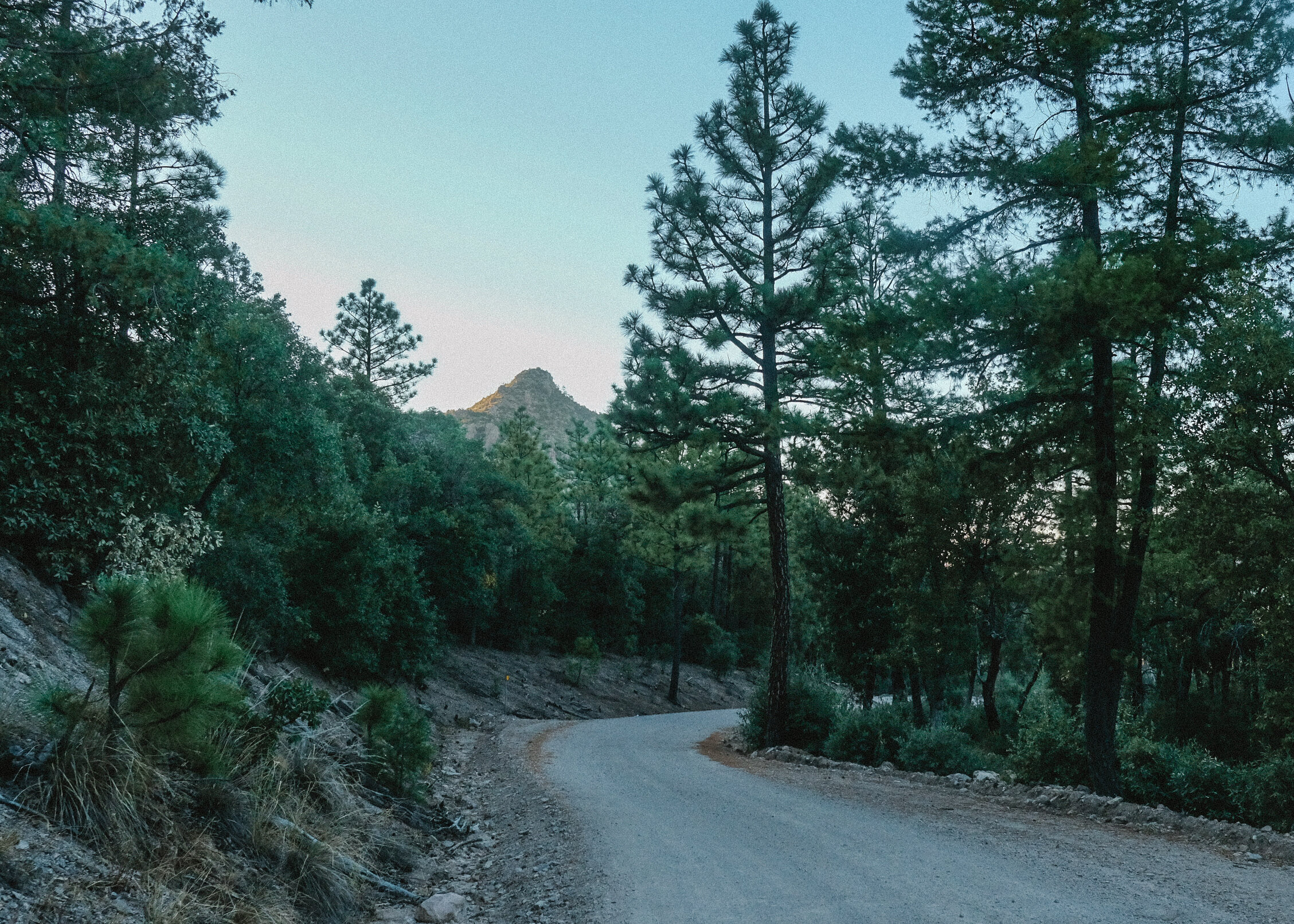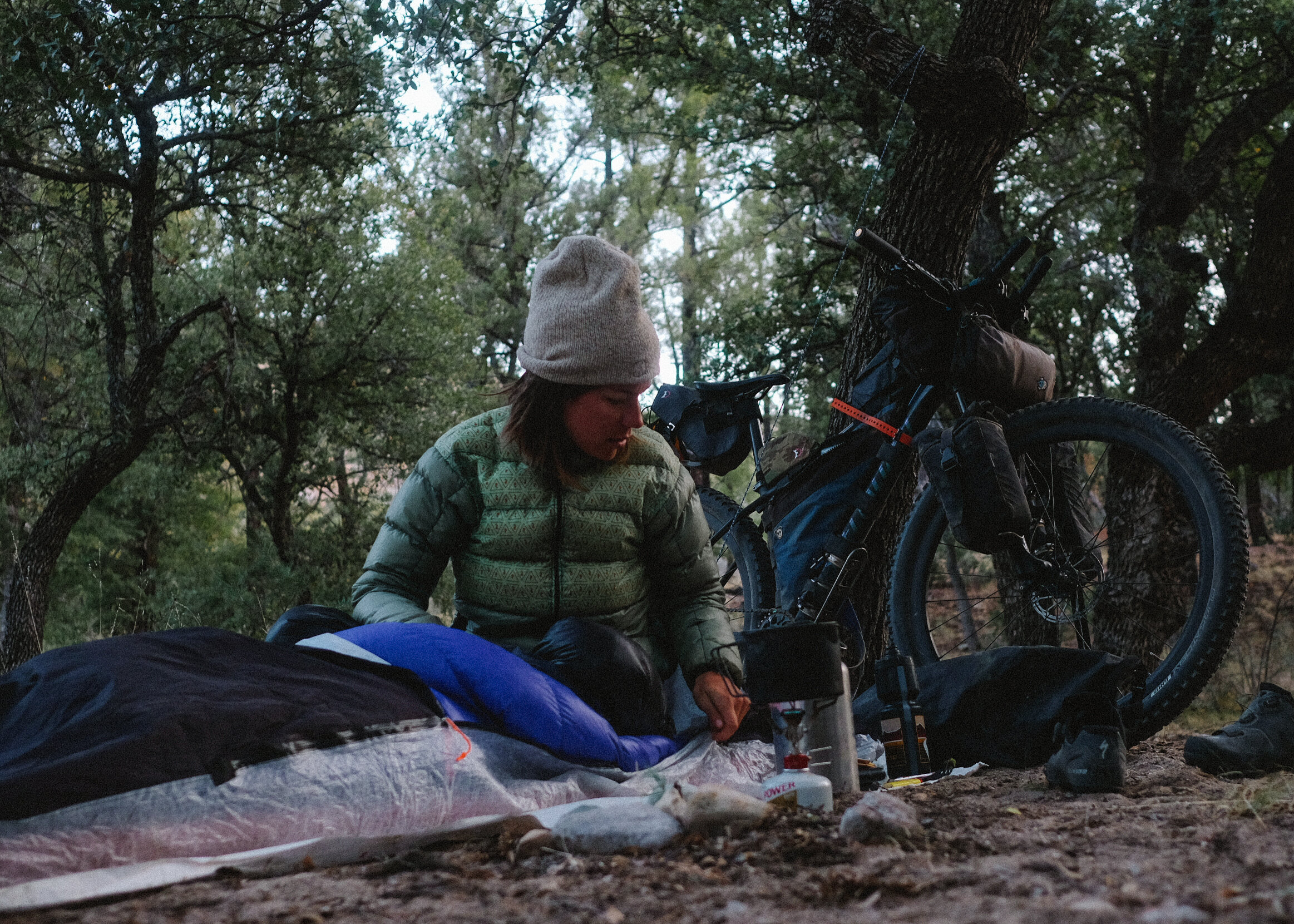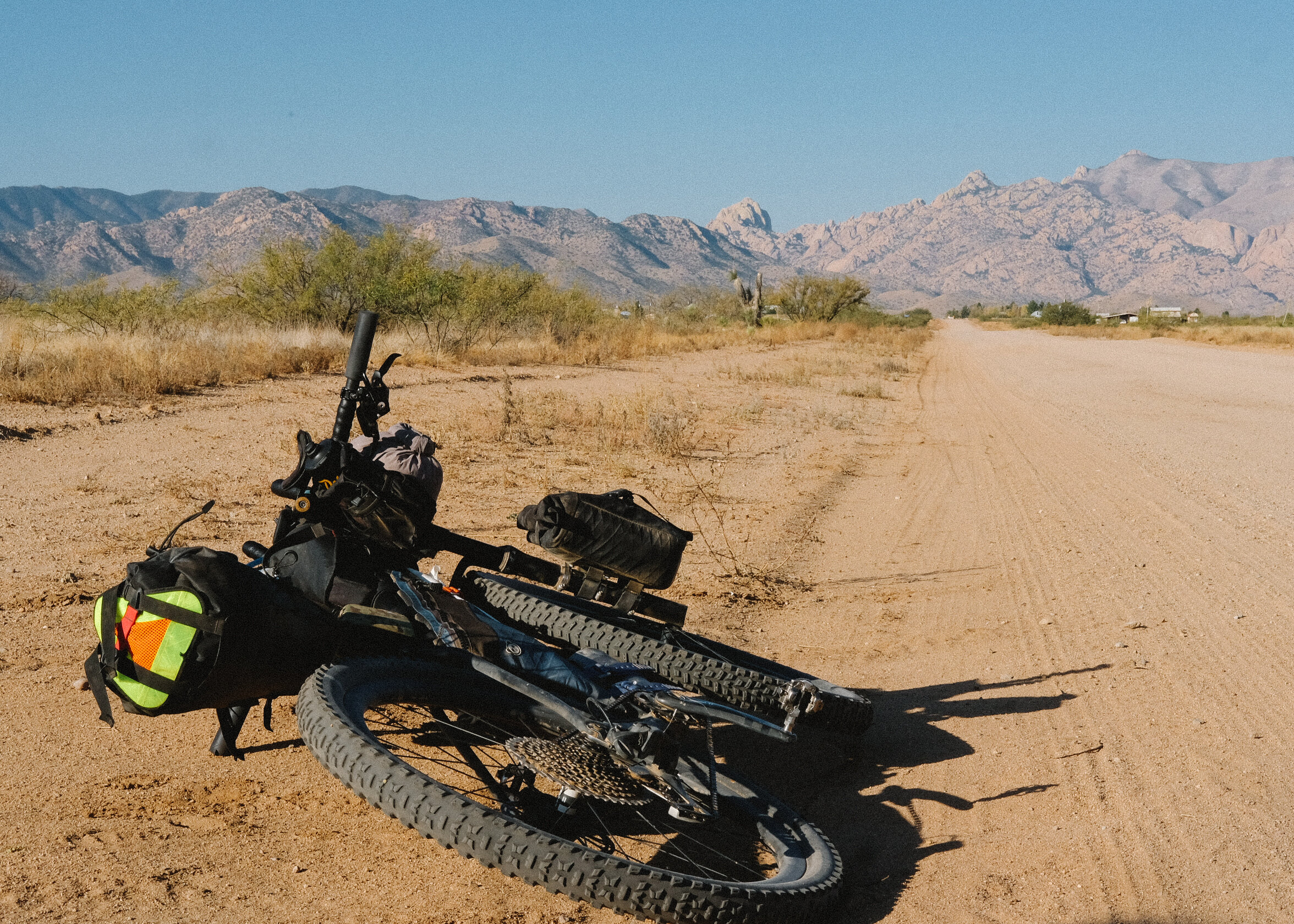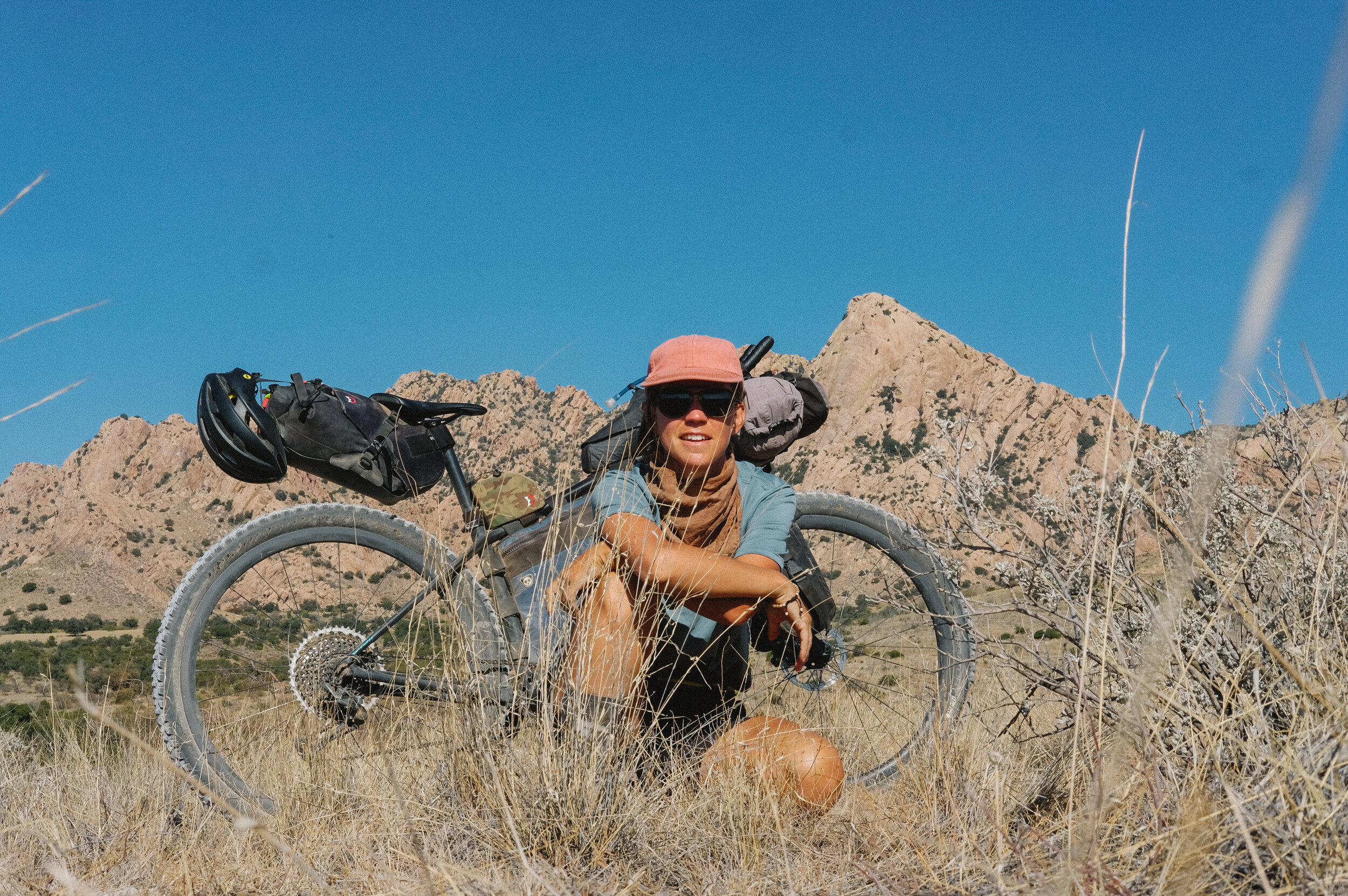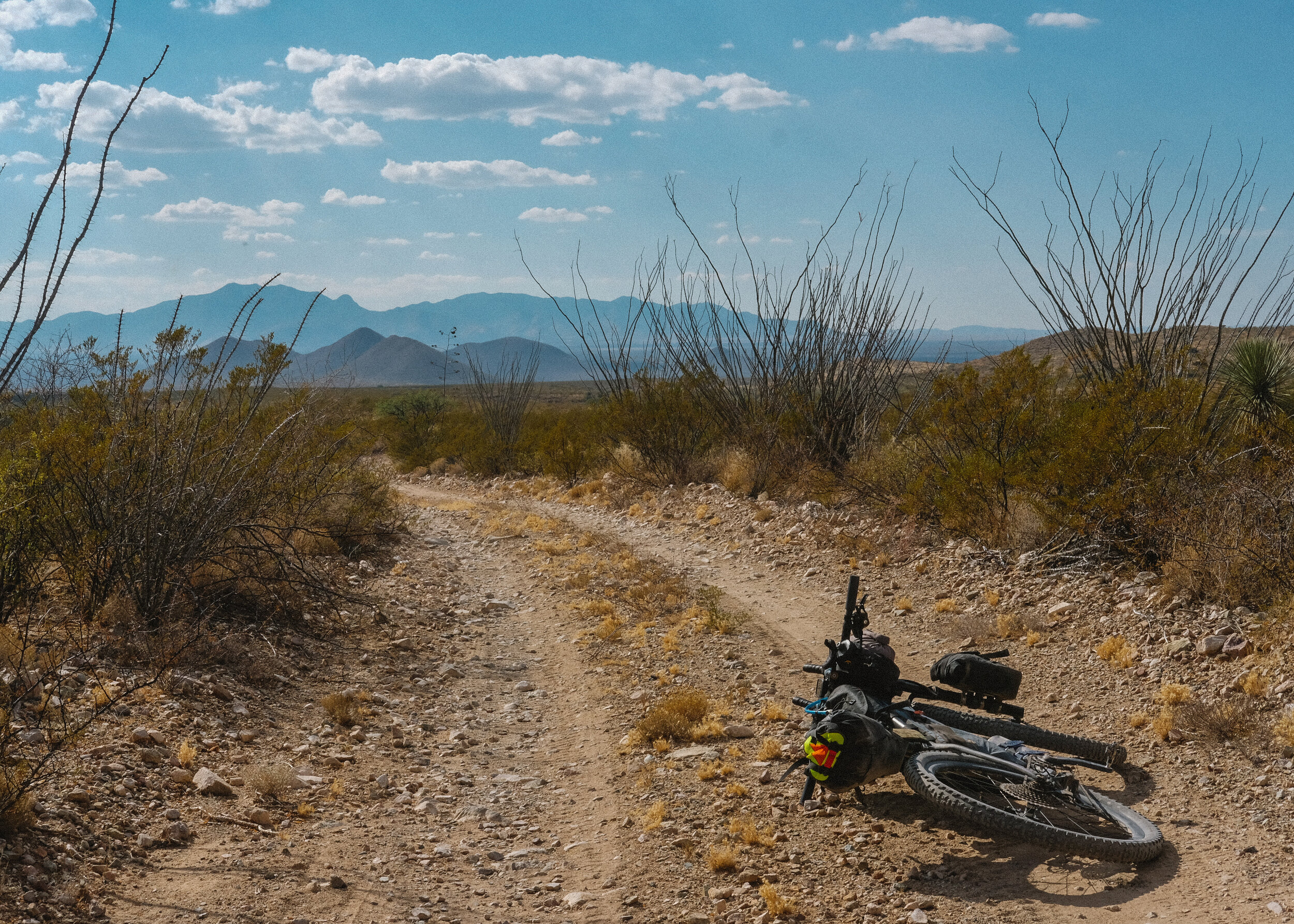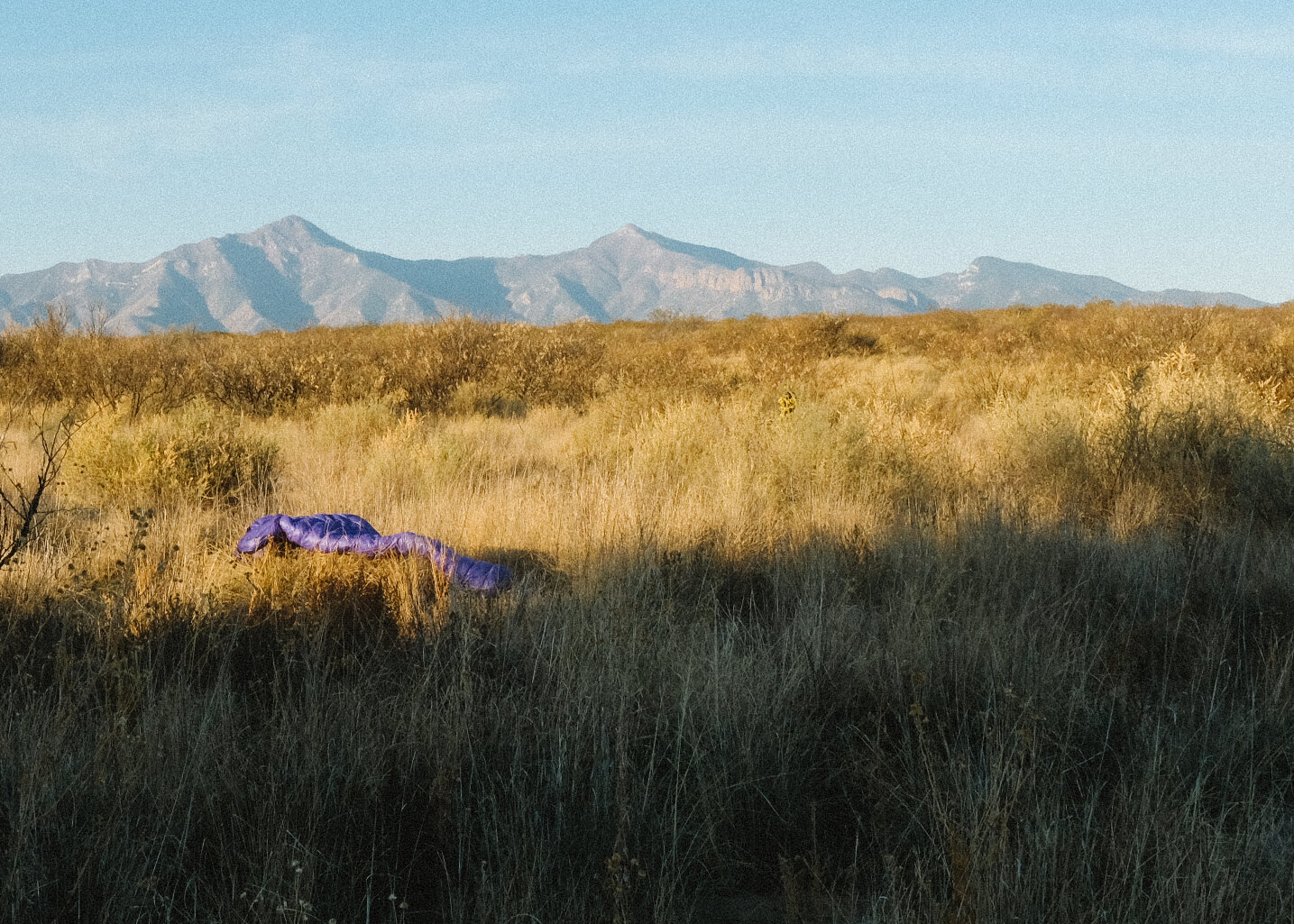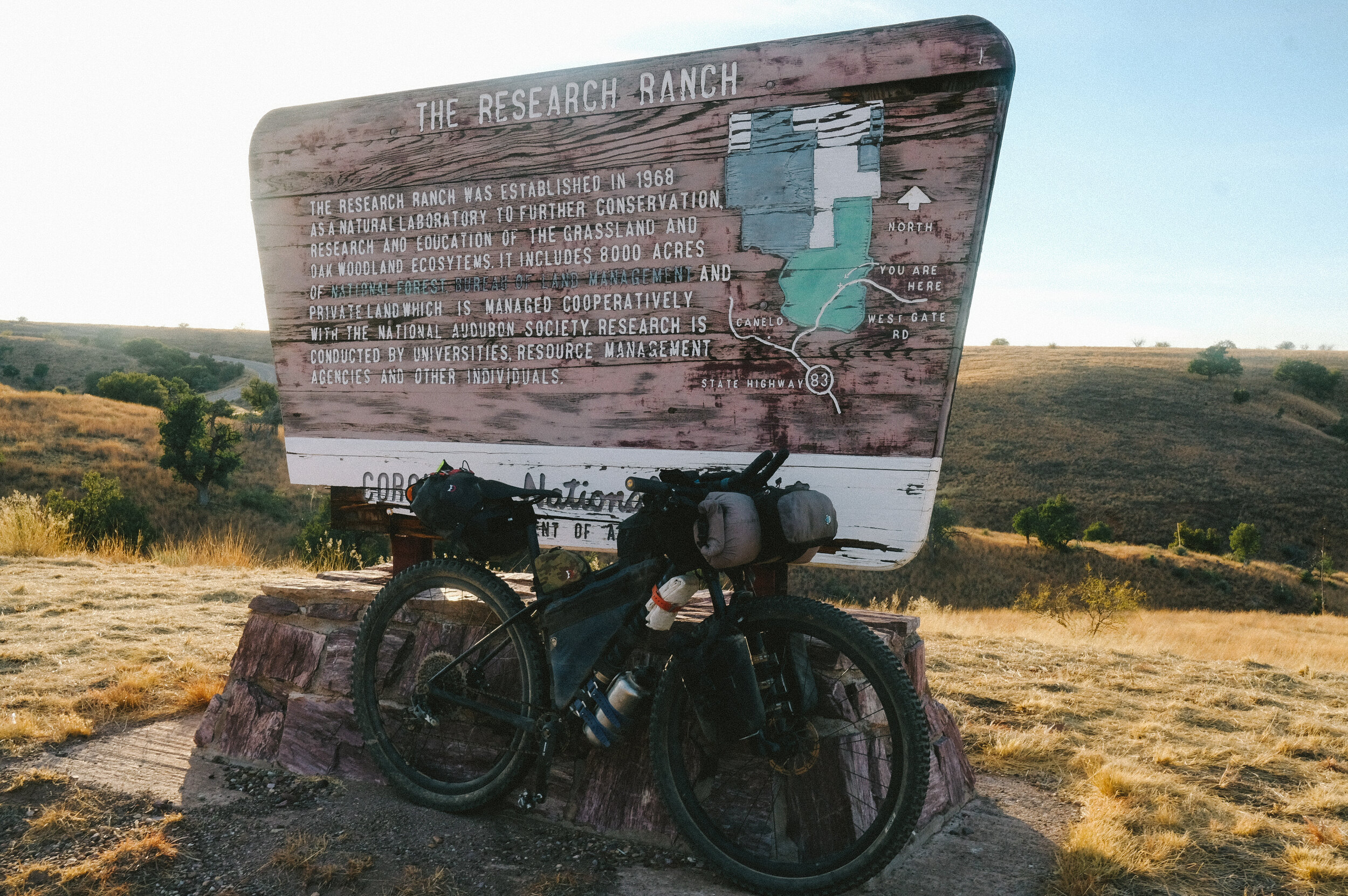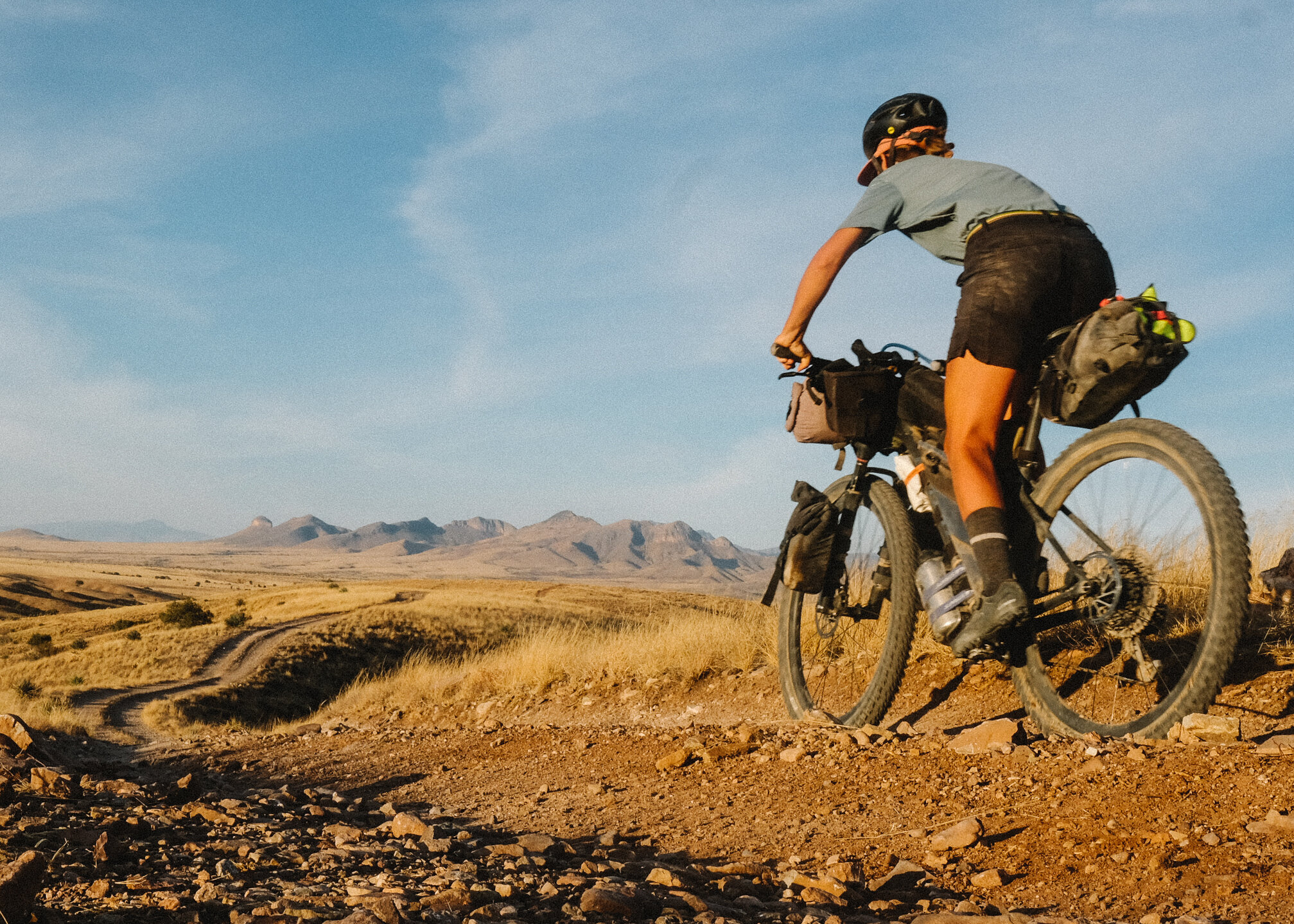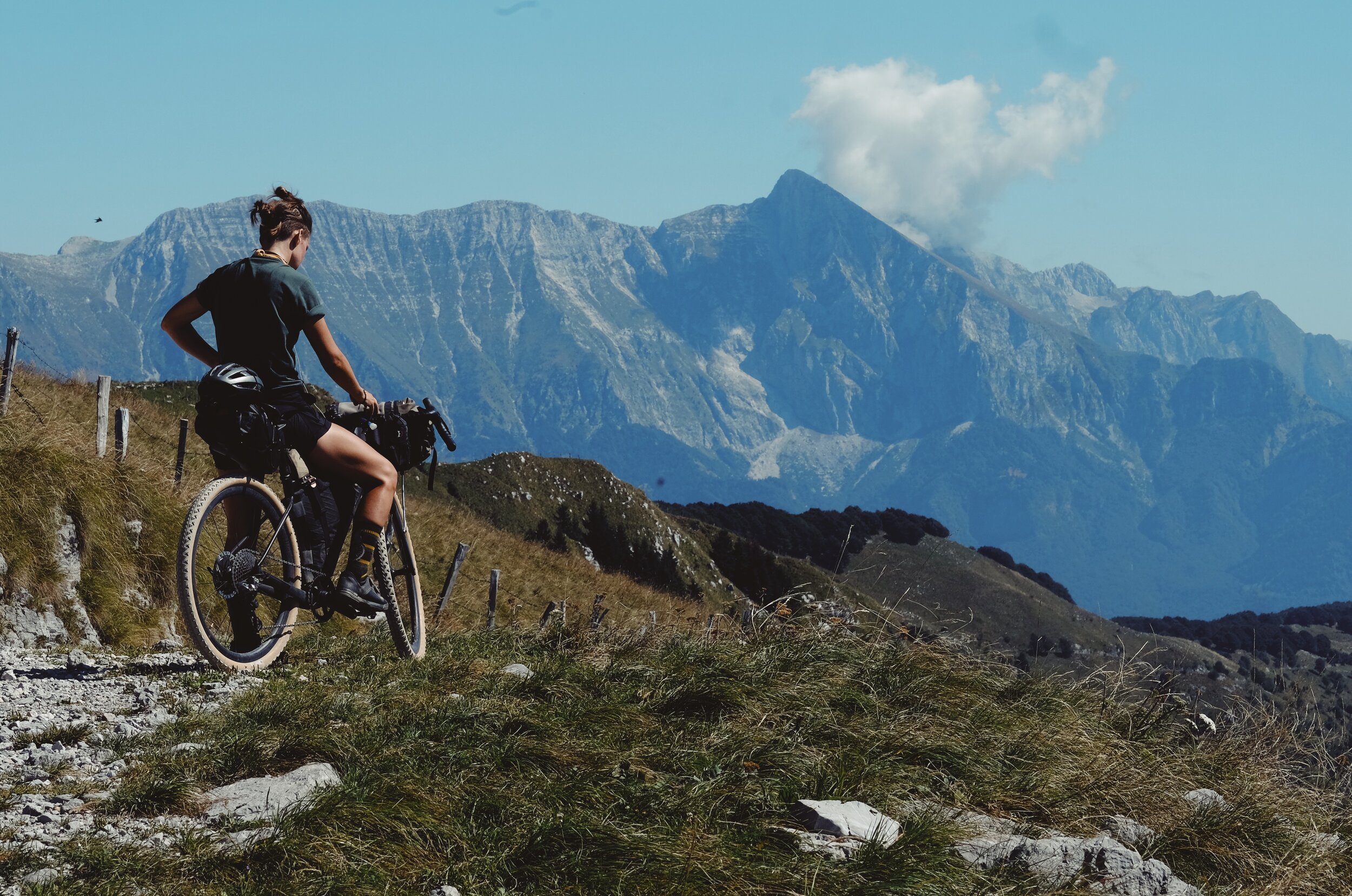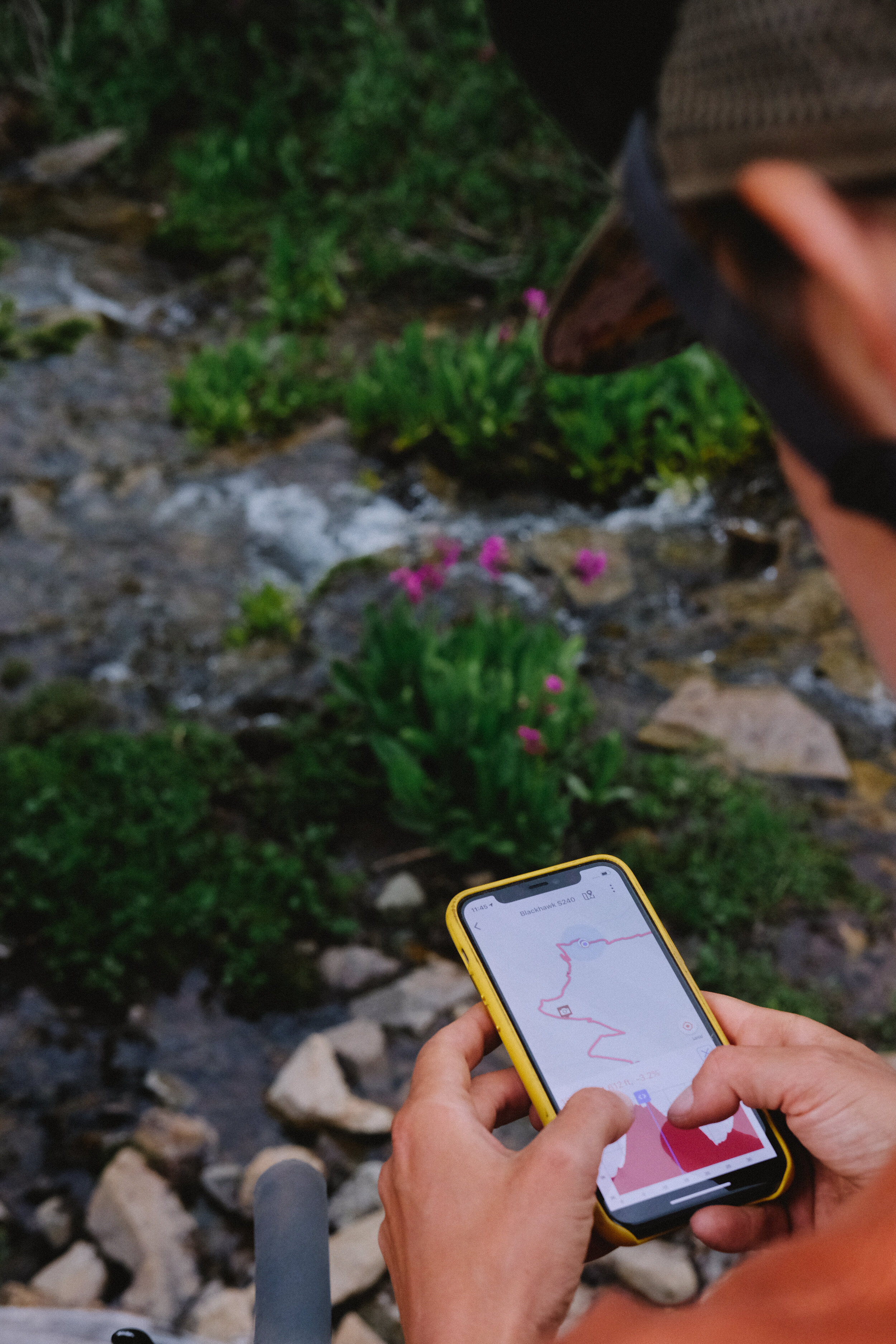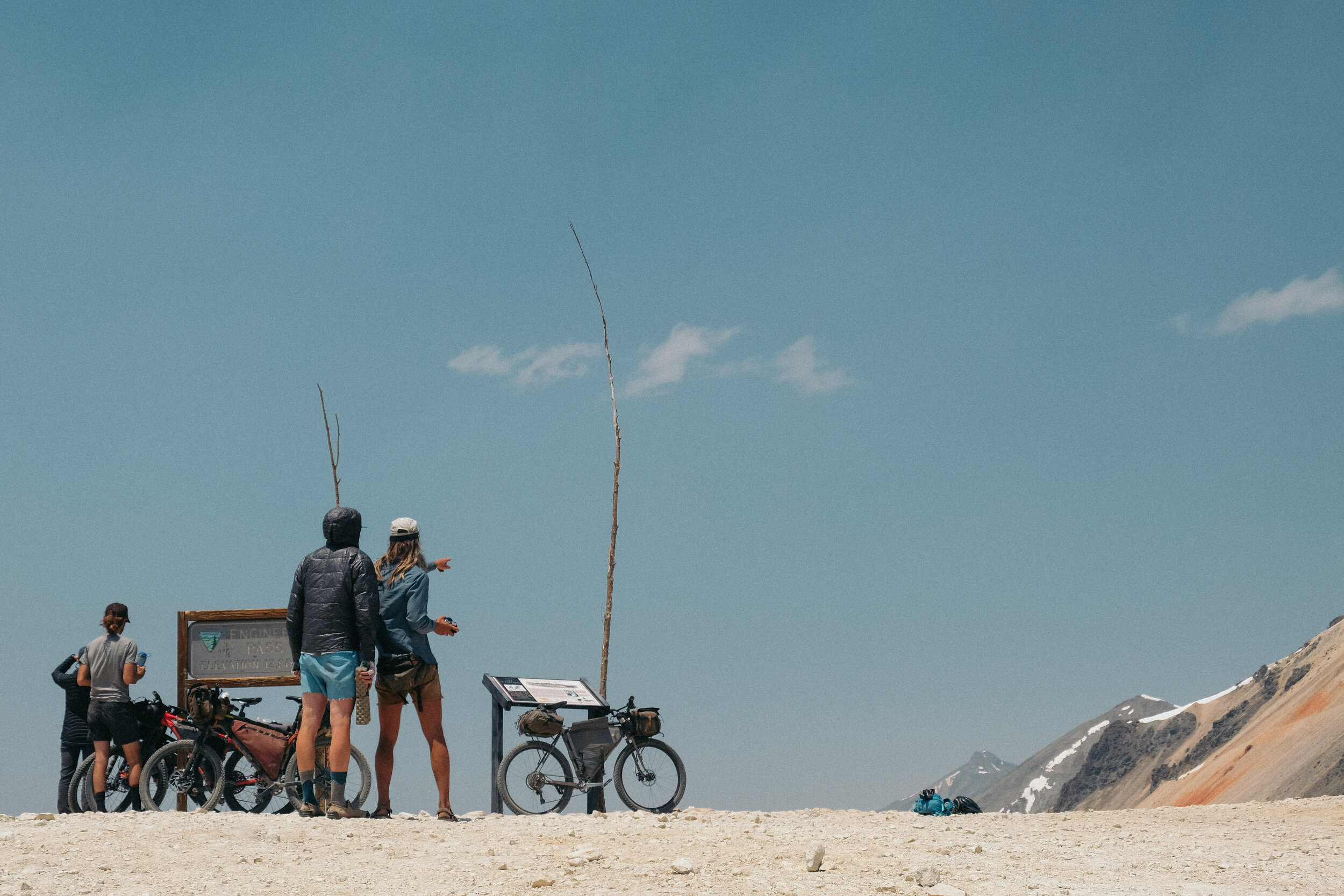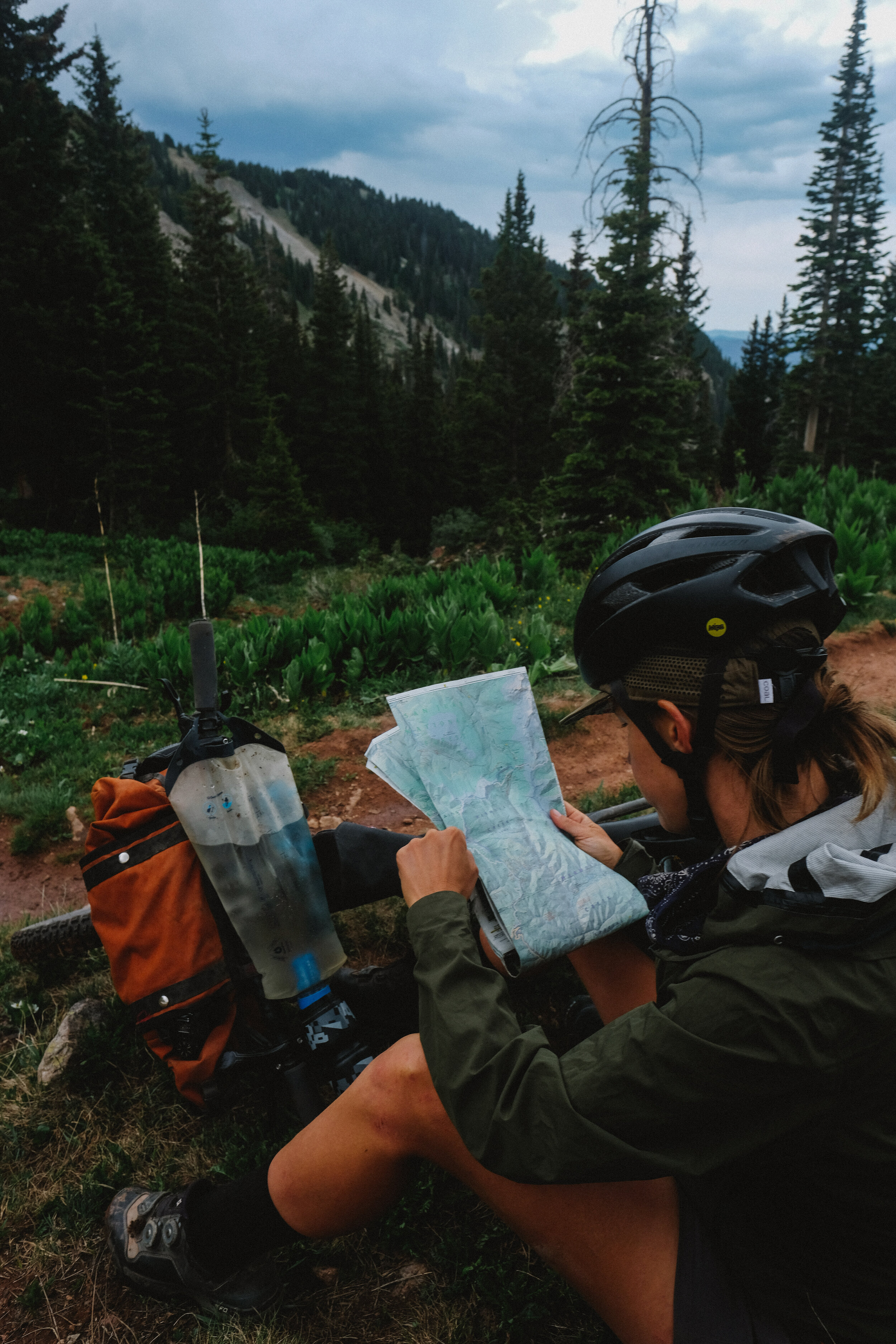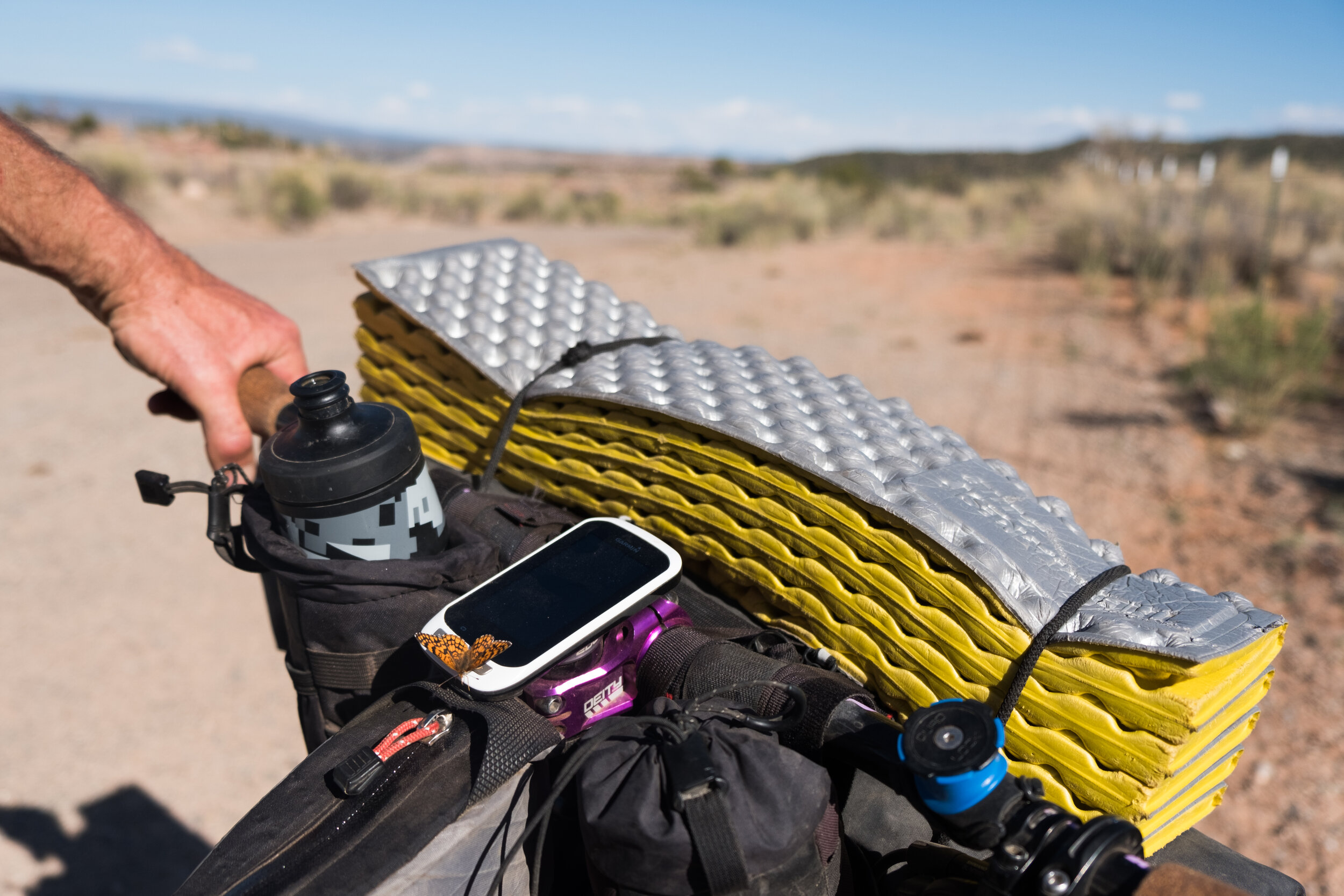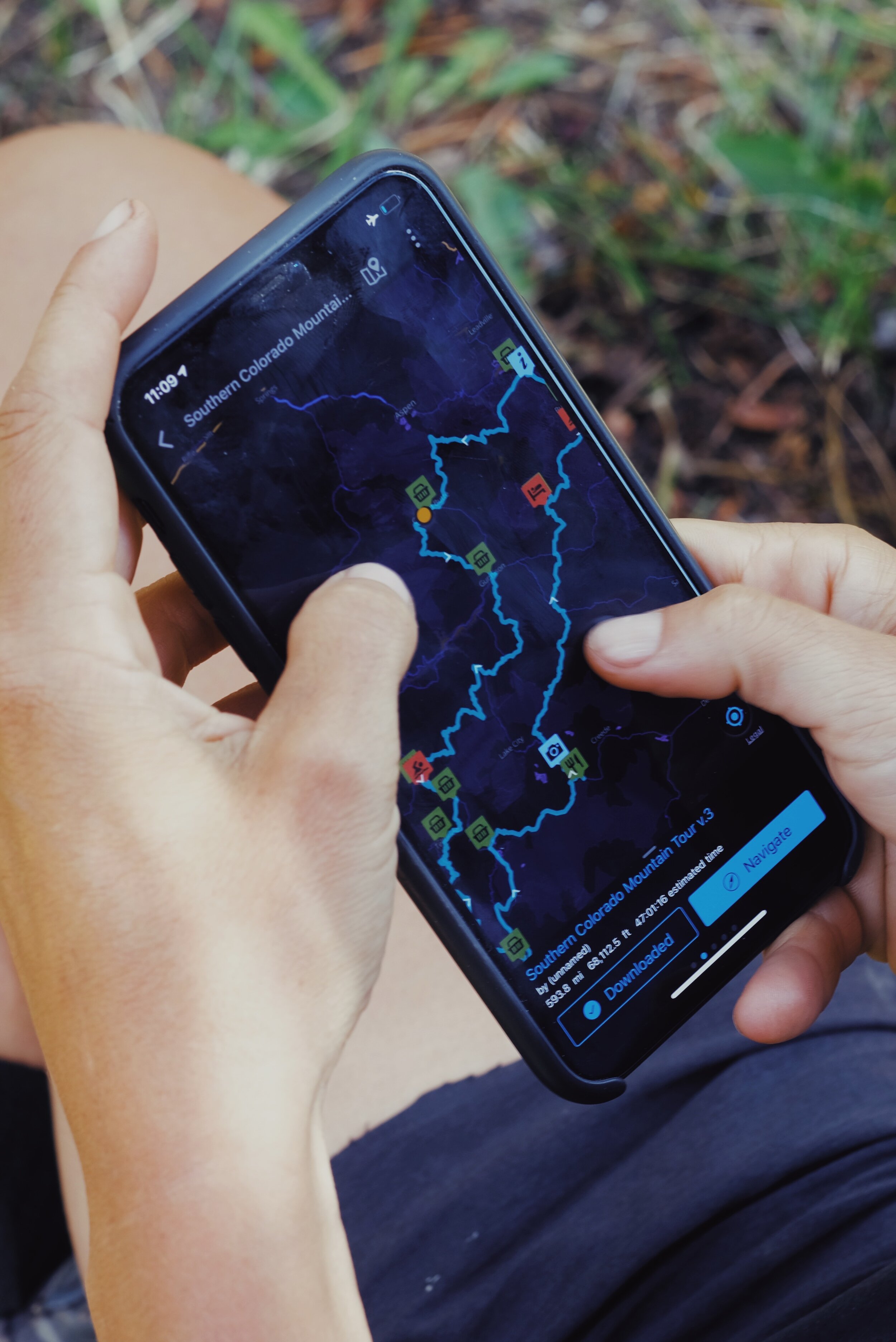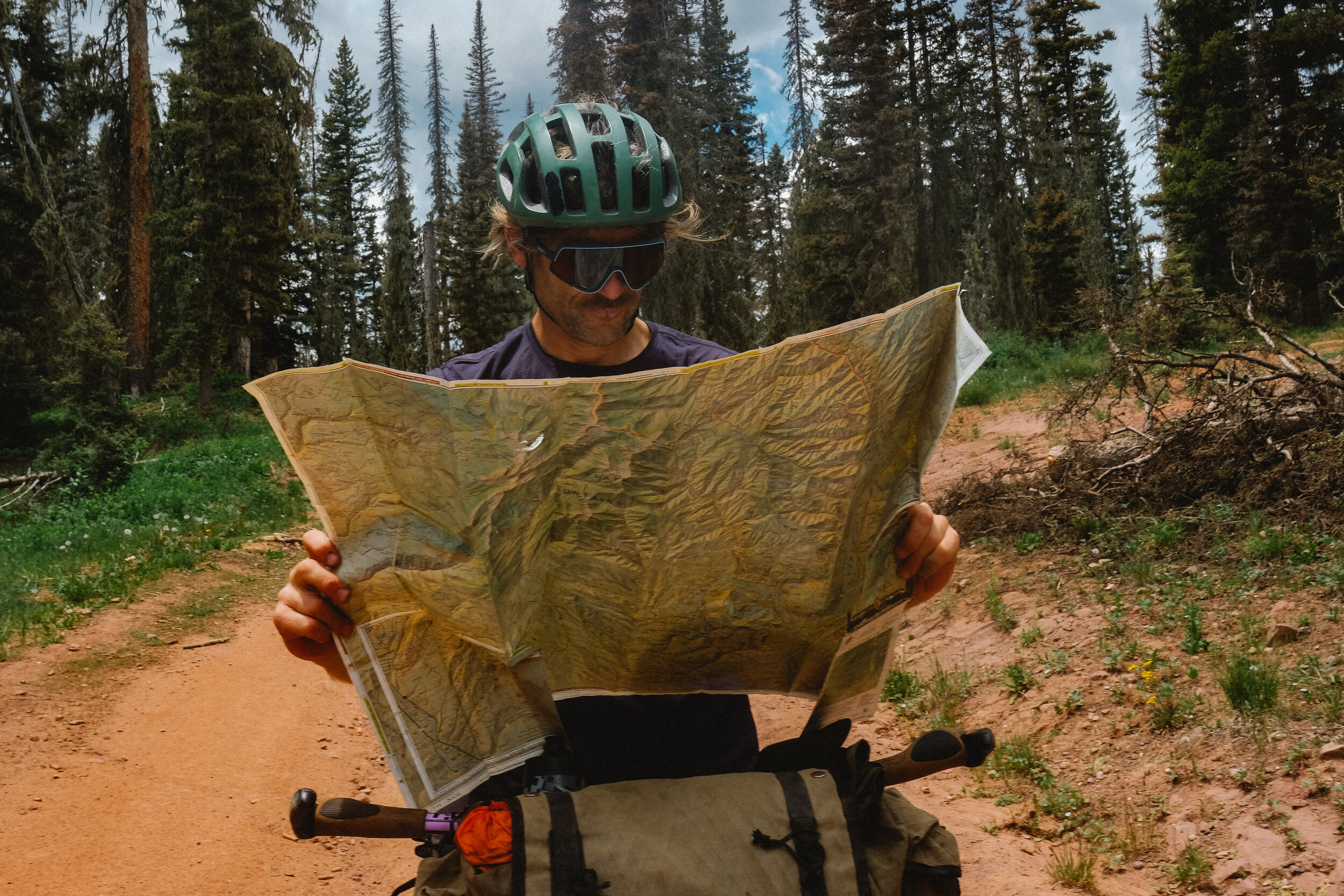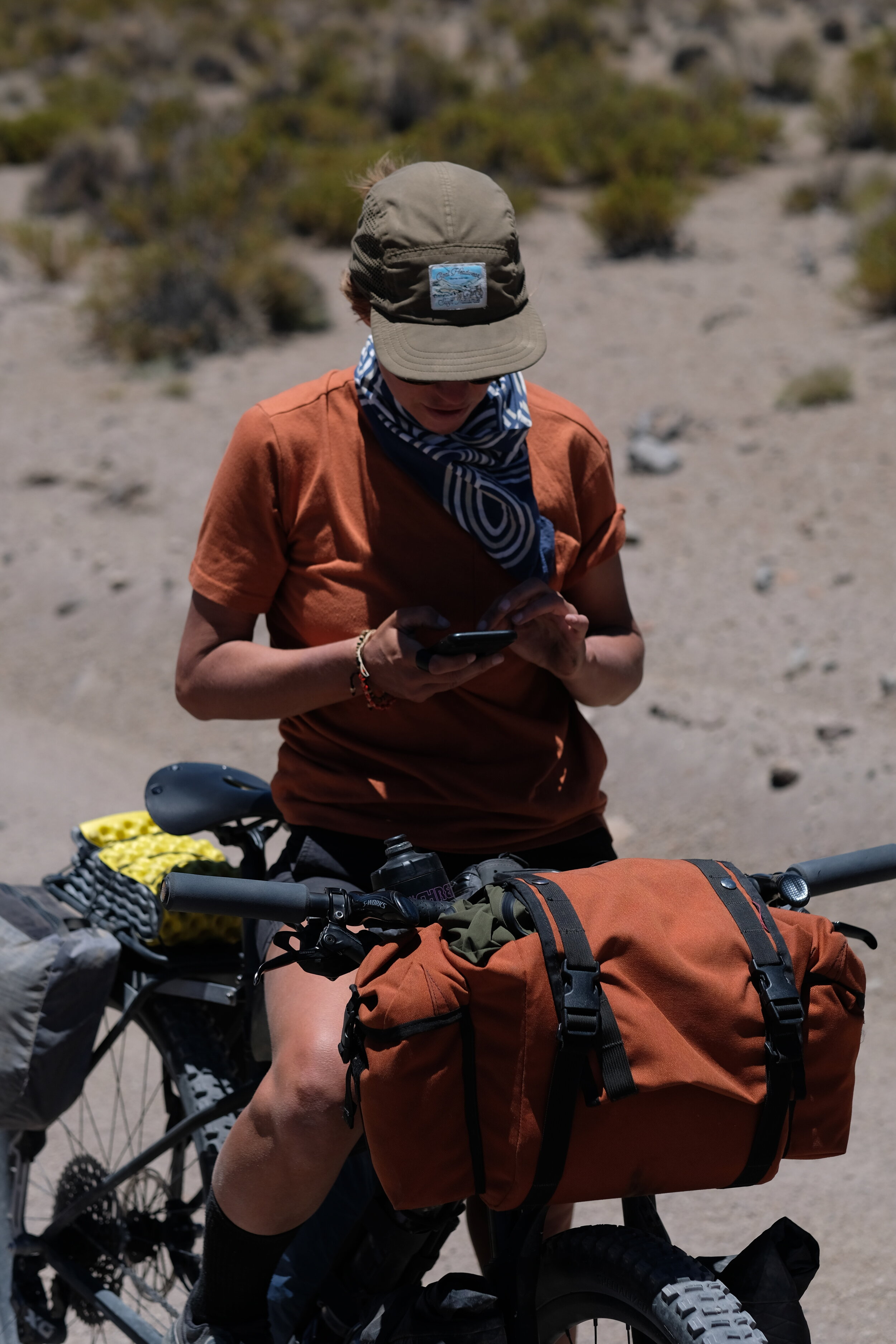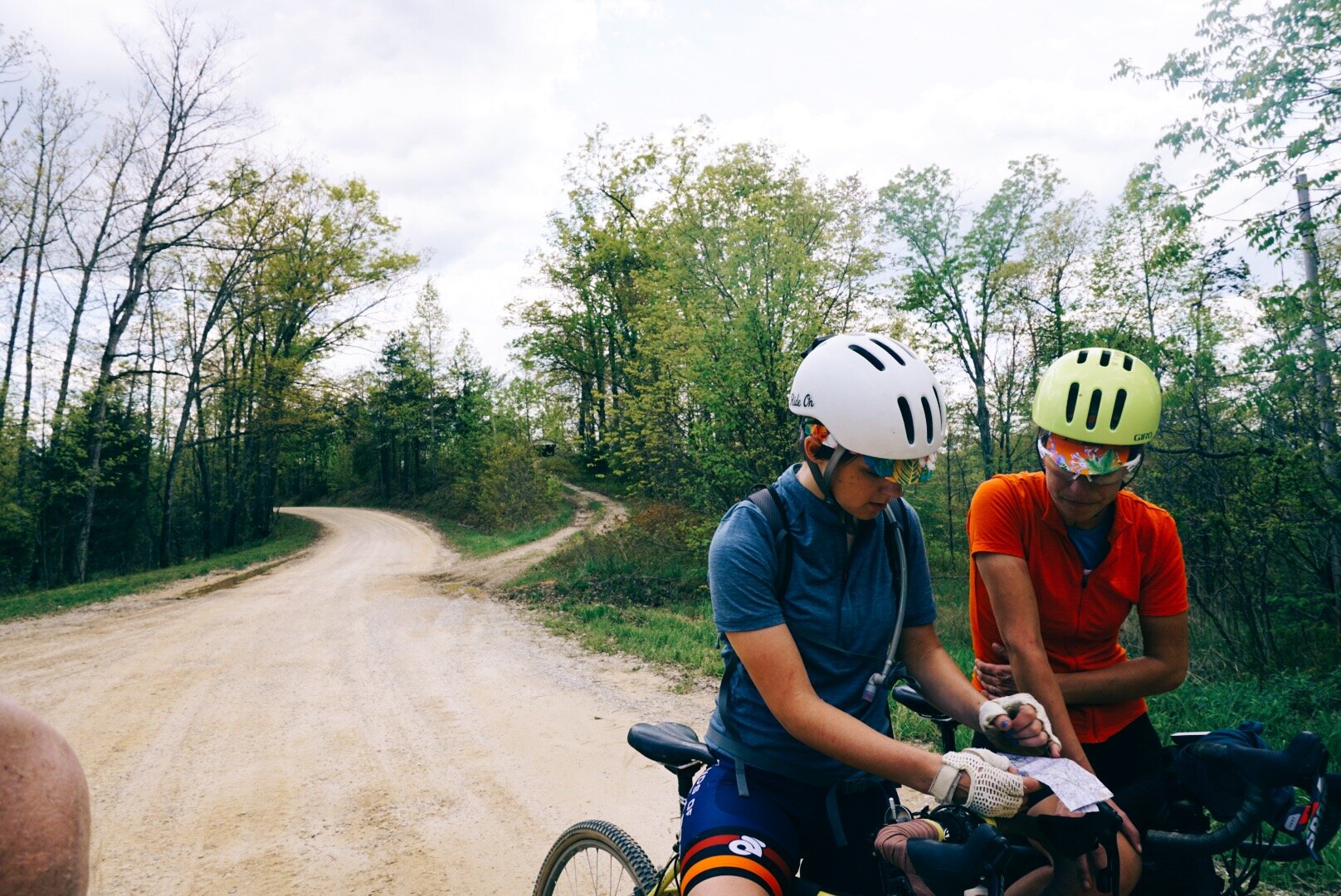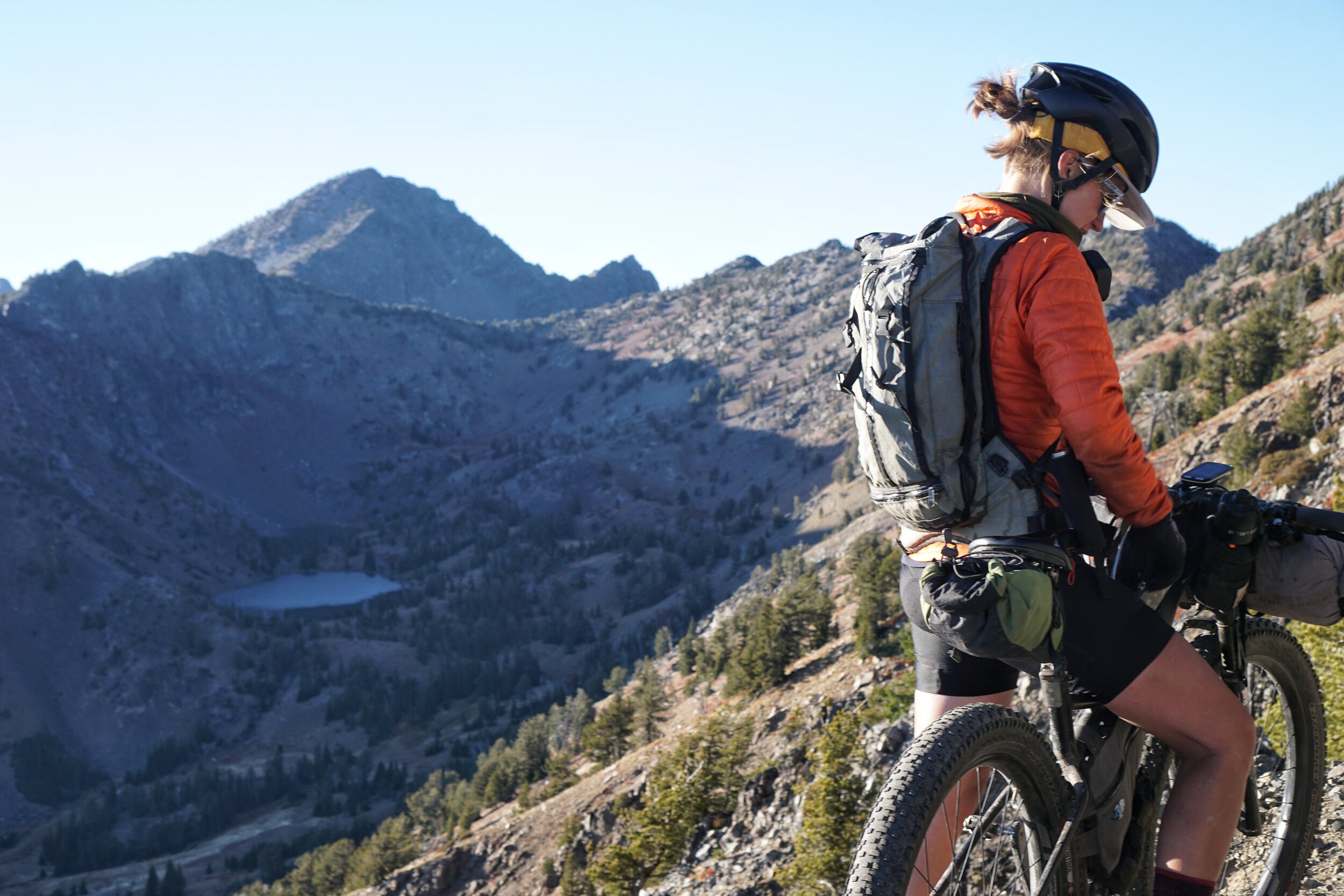If you are curious about how I planned my resupply points along the Great Divide Mountain Bike Route for the Tour Divide, look no further. Prior to the ride I spent hours cross referencing resupply resources for the GDMBR and importing them onto Ride with GPS, my go to navigation and routing platform. I also added some POI’s that I am particularly interested in such as summits, creek crossings, dispensaries, and laundromats. After using this map throughout my ride I have got to say that it is pretty darn accurate but keep in mind that water levels could change every/.throughout the year of course and some businesses may change their opening hours. The video above outlines how I researched the POI’s and plan my resupplies along the route. I do this before every ride I go on. Now, with this process outlined, you can too! Lastly, I have divided the entire route into six different route segments making them a slightly more digestible file to view, download and upload. Check those out in my Great Divide Classic Collection.
Photo by Todd Gillman
How To Follow My Ride on the Tour Divide/Great Divide Classic
My race begins at noon MT on June 11. You can follow the race and where I stack up against the rest of the field (look for my initials, SS) at this link: http://trackleaders.com/tourdivide21
If you would just like to follow my dot on a map, you can do so at share.garmin.com/sarahjswallow
Jorja Creighton will manage my Instagram account and provide entertaining content and updates that I send to her throughout the race. Follow along on at https://www.instagram.com/sarahjswallow/
To donate to my Gofundme campaign to increase accessible outdoor opportunities for teen and pre-teen girls, click here: https://charity.gofundme.com/o/en/campaign/sarah-swallow-tour-divide
If you would like to check out the route I am following click here: https://ridewithgps.com/routes/36276801
See you on the other side!
My 2021 Tour Divide / Great Divide Classic Detailed Packlist
In one week, I will be starting one of the most intimidating rides of my life. I would be riding the Tour Divide Mountain Bike Race in any other year, but because Canada is closed due to Covid, this year's event is called the Great Divide Classic. It's essentially the same, less than 250-miles of riding along the Canadian Rockies and follows the Great Divide Mountain Bike Route by Adventure Cycling Association. All totaled, I am looking down the road at a 2,500-mile ride with 150,800 ft of elevation gain from the border with Canada to the border with Mexico along the Continental Divide on dirt roads, single-track, and pavement.
My Philosophy
My bikepacking set-up 2018-2020. Photo by Jorja Creighton.
Preparing my equipment for such a journey has felt like learning how to bikepack all over again. Why is that? I believe that it is because when I am touring and only riding 35-50 miles per day, it doesn't quite matter if I bring my sandals, a super deluxe tent palace, town clothes, swimsuit, snorkel/mask, a 5-star cooking set-up, etc. (you get the idea). When there are anywhere between 10-14 hours of daylight, and I am going only 35-50 miles, I have all day to go as slow as I want to get to where I am going.
In contrast, the Tour Divide or the Great Divide Classic (whatever we want to call it) is a race. Just to be considered still in the race, I must maintain over 95-miles per day every day. My goal is to ride 100-miles per day and finish the route before I need to abandon the ride, which, at a minimum, will require that I ride 85-miles per day every day. So, for the first time in seven years, and when I started bike-touring, I have had to re-evaluate every little gear decision I make to feel like I can ride that amount of distance loaded with everything I need day after day. If I pack too much, my bike will be cumbersome to ride, hard to pedal up mountains, and pretty uncomfortable. If I pack too little, I could be equally miserable. I could not be prepared enough for the elements; rain, hail, cold nights, hiking through snow. I could be sleep-deprived and find the experience unbearable, leading me to abandon the course due to not having fun or being unhappy.
My gear and bike set-up for the Tour Divide/Great Divide Classic is my interpretation of a healthy balance between an efficient race set-up and a comfortable home on wheels for about a month. I believe that this set-up is light enough for me to travel the distances I want to travel while still feeling like a human. I'd go so far as to call this a luxurious race set-up. After all, I am a lifestyle athlete for a reason, not a racer. Only time will tell if these decisions, speculations, interpretations, and financial investments pan out to my benefit.
Itemized below is a detailed breakdown of my bike set-up for the Tour Divide/Great Divide Classic in 2021. The race begins on June 11. You can follow the race on http://trackleaders.com/tourdivide21. If you find this breakdown of value please consider donating to my Gofundme campaign to increase accessible outdoor opportunities to teen and pre-teen girls through The Cairn Project. Any amount donated gets me closer to reaching my fundraising goal of $8,000. Click here to donate.
Bike Specifications
This is my bike for the Tour Divide 2021
I am riding a Specialized Epic Hardtail Pro mountain bike with the stock Rockshox SID 100mm travel fork and 29" Roval Control Carbon wheels. The front wheel is laced to a SON Dynamo hub which fuels my Sinewave Cycles Beacon headlight. With the help of many friends and mechanics, I have modified this bike with Enve 48mm Gravel drop bars and Specialized aero bars. I also converted the drivetrain to a SRAM AXS electronic shifting system, which I find incredibly reliable and efficient but requires that I swap out and charge a small battery every 400-miles or so. The gear ratio I am running is an 11 x 50 tooth cassette with a 34 tooth front chainring. I may spin out on some faster pavement sections, but my knees will be happy on the climbs. The tires I have chosen for this ride are Specialized Ground Control tires which may be on the nobbier side compared to most, but it's a tire I have run for many years and I trust on all terrain.
I am using a Brooks Cambium C17 saddle; a zero offset seat post, and a 60mm, -20 degree stem, to accommodate my bike fit.
Bag Overview
My front bag system is made by Porcelain Rocket. It includes a minimal harness, a Dyneema stuff sack, and an outer pouch. I used this system on the TAT six years ago, and I have yet to find a better alternative. Inside the stuff sack, I keep my shelter and sleep system. Inside the outer pouch, I store my eating utensils, backstock of electrolytes, mushroom coffee, protein powder, THC and CBD edibles, and my water filter. I try to keep this bag filled with lighter stuff to avoid adding more weight to the handlebars.
I am using a custom frame bag by Rogue Panda Designs out of Flagstaff, Arizona, which includes an elastic zipper that allows me to stuff it to the gills and still be able to close it. In the large main pocket of my frame bag, I am carrying my tool kit, bear spray, and the majority of my food. In the frame bag's smaller side pocket, I store baby wipes, a clear pair of Ombraz sunglasses, and my wallet.
The seat bag I am using is a Gearjammer bag by the wonderful folks of Oveja Negra in Salida, Colorado. My Gearjammer stores my spare tube, toiletries, sleep clothes, a pair of shorts with a chamois, puffy jacket, and rain jacket. I have also added a bungee cord to the Gearjammer to hold my Thermarest pad.
My cockpit bags include a Mag Tank 2000 and Jerican by Revalate Designs (Anchorage, AK), an Eco-pack Snack Hole by Swift Industries (Seattle, WA), and a Chuckbucket by Oveja Negra. I store my multi-tool, headlight, sunscreen, and bug spray in the Jerrycan. Inside the Mag Tank 2000, I keep my point-and-shoot camera, phone, headphones, and additional snacks. The Chuckbucket holds my battery pack, electronic accessories, and a bug head net. There is room for more too. Lastly, the Eco-pack Snack Hole stores a 26 oz water bottle.
Holding my 64 oz Kleen Kanteen is a Manything Cage by King Cage (Durango, CO), mounted to my carbon down tube using King Cage universal support bolts.
The Nitty-Gritty Details
Tool Kit
Leyzne Micro Floor Drive
Blackburn Wayside Multi-Tool
Dynaplug with extra plugs
Wolf Tooth Pack Pliers with two 12-speed chain links
Leatherman Squirt
Silco Valve Extender
Pedro Tire Lever
2 x 2032 batteries (for my shifters)
Presta valve adapter
Finish Line Dry Lube (inside a wet-lube bottle)
Zip ties
4mm, 5mm, and 6mm spare bolts
Derailleur hanger
Superglue
Tire boot
Patches
Extra set of brake pads
Electronics
Garmin 1040 Plus
Garmin Inreach Mini
iPhone
15,000 mAmp Anker Battery Pack
Ricoh GRII Camera
Princeton Tech Headlight
Energizer 2 x USB wall port
SRAM Etap battery charger
Spare SRAM Etap Battery
2 x micro USB cables
camera cable
iPhone cable
Headphones
SD Card Reader for iPhone
Not pictured: Sinewave Cycles Beacon Headlight, Light and Motion Taillight
Toiletries
Buzz Away Bug Spray
Tom's Toothpaste
Tweezers
Ibuprofen
Benadryl
Dr. Banners Soap
Toothbrush
Chapstick
Dermotone Lip Protection
Aloe Up Sunscreen
Earplugs
Tea Tree Oil
Floss
Spare Hair Tie
Honest Wipes
Bandaids
Not pictured: Deva cup
Eating Utensils
Snow peak Spork
Opinel No. 7 Knife
Handkerchief
Can opener
Water
64oz Kleen Kanten
26oz Purist Waterbottle
3 Liter Kataden Befree Gravity Filter
Aquatablets
Sleep System
Mountain Laurel Designs FKT Bivy
Western Mountaineering Summerlite Sleeping Bag (32 degrees)
Klymit Inertia Ozone Sleeping Pad
Thermarest Z-Rest
Western Mountaineering Flash Down Booties
Bug head net
Clothing
Ombraz Dolomite Sunglasses
Ombraz Classic Clear Blue-blocker Glasses
Rapha Merino T-Shirt
Rapha Randonne Shorts
Ridge Merino Briefs
Branwyn Merino Bra
Bandana
Randy Joe Fab Linen Cap
Merino leggings
Merino long-sleeve shirt
Topo Designs Wool Hat
Rapha Women's Classic Shorts
Rapha Explore Hooded Goretex Rain Jacket
Rapha Explore Down Jacket
Showers Pass Rain Pants
Showers Pass Merino Socks
Showers Pass Merino Gloves
Specialized Prevail II Helmet
Not Pictured: Specialized Rime 2.0 Mountain Bike Shoes
Backstock
Four Sigmatic Protein Powder
Four Sigmatic Coffee Latte Mix
Ultima Electrolyte Powder
Ripple 1:1 CDB/THC Powder
Wanna THC Gummies
RonsBikes Puff Pouch
2021 Tour Divide Packlist Video
Update: My Gofundme Campagin for the Cairn Project
Thanks to so many of your generous donations, I am just $500 short of my goal of $5,000 to increase accessible outdoor opportunities for teen and pre-teen girls through The Cairn Project, and I haven't even started the ride yet! The support and tributes to the women in your life fill my soul with gratitude and inspiration—what an incredible way to kick off my journey next week.
I'd love to keep this momentum up, so I am increasing my goal to $8,000. $8,000 will fund nearly two grants for two different outdoor programs for young women and girls. If you have the means, please consider donating any amount to this effort. Click here to donate. Thank you!
To learn more about why I am fundraising for increased outdoor access for young women and girls, I invite you to read my personal story, How Finding what I Loved to do Outdoors Changed my Life Trajectory.
How I Am Preparing for The Tour Divide
I committed to doing the Tour Divide on March 7, 2021. Before my decision, it was in the back of my mind to consider because my friend, Arya, had committed to doing it. With Covid still in the air, my perspective of traveling in poorer countries in flux, and Adam, my primary adventure companion in school full-time, it finally seemed like an optimal time to take on the Tour Divide. As I write this, I am wrapping up only my fourth week of focused physical and mental preparation. I spent the first month converting my bike, figuring out most of my gear choices, wrapping up projects at the Ranch, saying goodbye to my Arizona friends, moving back to Durango, and taking a week-long Wilderness First Responders course. As I look back to my free-as-a-bird lifestyle down at the Research Ranch this winter, my only regret is that I had not used more of my time there to start this whole preparation process then. But I don't regret having had the time to replenish myself, for, without it, I likely would not have had the capacity to consider taking on such a significant challenge.
The Tour Divide will likely start at the U.S. Canada border this year in Roseville, Montana, which means instead of being a 2,667-mile course with 152,000 ft of climbing, the route I'll be riding will be 2,400-miles with 133,000 ft of climbing. Having done the Canada section of the Great Divide Mountain Bike Route (GDMBR) twice in the last five years, I like the idea of getting closer to places I have not yet ridden, sooner rather than later. Don't get me wrong. I am also counting every single mile and foot of elevation gain to help me finish before my allotted time frame of thirty-two days. I have created this specific allotment because that is the amount of time I feel like I can commit to this goal. I am registered for The Rift in Iceland on July 24, a 140-mile single-day gravel race. I will be traveling there with my sister, Margaret, the week before the race. It will be our first time getting to travel together, and I cannot wait. Thirty-two days allows me to have a week of recovery between wrapping up the Tour Divide and traveling to Iceland. It's not much time to recover and also train at an anaerobic level to be competitive at The Rift. While I would always like to do the best that I can and see where I end up, I am more motivated to do The Rift because the route looks so cool, and I might even get to see an active volcano (a first for me).
Let's get mathematical for a second. 2,400-miles with 133,000 ft over thirty-two days is an average of 75-miles per day and 4,200 ft of elevation gain on a loaded bicycle. That is a limit that feels very doable for me at this point in my preparation. I will be pushing myself toward finishing in twenty-four days, which means I'll need to average riding 100-miles and 5,550 ft of elevation gain per day on a loaded bicycle. This twenty-four-day goal feels a bit more intimidating and the reason why I do feel the need to "train" as much as my psyche typically resists such a construct.
My Suffering Is Nothing Special
My first training ride was almost my last and the end to this whole lofty Tour Divide idea. I had traveled out to Paradox Valley to mess around and micro-dose on mountain bikes in the desert with the legendary Max Cooper and his Colorado gang for two days. I had only been home in Durango for a total of 4-days since moving from Arizona and doing my WFR course. Still, I pushed through the desire to be a homebody to venture and spend time with these friends since the opportunities have been few, yet are always worth the while. I also thought that it would be a great idea to ride home solo from this hang as a good training ride for the Tour Divide, so that's what I did. As my buds hung at camp on our last day, I put my Stumpjumper on the bike rack and pulled down my Epic touring bike, packed it up with more than enough food for two days and enough water to get me to my water cash. I then rolled away from camp on my own to see if I could "handle it."
Twenty miles into my ride that day, I had reached the most significant question mark on my entire route. I was looking for some trail that would take me from the Paradox Valley in Bedrock up 2,000 ft to Davis Mesa. Max had heard of this trail. When I told him I planned to take it, he relayed a rancher story who took his cattle down the trail one cold winter day. The trial was iced over in some sections; 12-cows slipped over the exposed trail edge and landed on an isolated ledge. As Max told the story, there was no possible way to rescue the cows, and there they stayed and eventually starved and died. I don't know why this story didn't set off alarm bells for me; perhaps it's because I was putting a little too much faith in the new RidewithGPS heat map feature, which highlights ways cyclists (and possibly hikers?) have logged trips before. Someone has done it, which means I can probably do it too, I thought.
When I reached my cue to turn onto the trail, I did not see a track, I saw a ditch. "Perhaps the trail is a little further, and I didn't route to the right access point," I thought, so I carried on. I was definitely on a trail, but this was not a mountain bike-worthy single-track trail, as evident by the loose and abundant rocks askew. I carried on further, pushing my bike up-up-and-up. "This trail has got to get better eventually, and it won't last forever." Yet, the higher I got on the trail, the more I lifted my bike over-head and over boulders, the steeper and more exposed the path became. When I approached evidence of a rock slide across the trail, I realized I had gotten myself into a serious pickle.
I thought of the twelve cows and looked around. "Where could they (or I if it came to it) possibly land?" I had spent so much time coming this far on the trail, and my stubbornness persisted. I felt like I could see the top, and if I could get through this next series of sections safely, I could make it. So, I slowed things down, and I put on my helmet. I test walked across the slide to see if the footing was secure. It seemed to be. I drank some water and proceeded to remove all of the bags from my bike. I first took my bike across the slide with the extreme focus to not fumble my steps and then walked back to do the same with my bike bags. I continued this pattern for another half-mile and 800 ft of elevation gain until the trail finally leveled on top of the mesa.
That evening I proceeded to ride another 40 more miles into the dark to my water cache. When I reached my cache, I was so tired that I camped in the closest spot I could find secluded from the road. I then fell asleep three times while preparing my dinner and eventually woke around 1 a.m. to finish it up. In the morning, I realized that not only was this spot on a hill but cow and deer dung surrounded it. But, at the time, I was in high spirits for what I had accomplished the day prior. If only I could carry that energy through the 35-mph headwind forecasted as I climb to the Rocky Mountains that day. Not so. Within 3-hours of my ride, I was so physically uncomfortable, miserable, and exhausted that I texted Adam in tears. "Hey babe, I'm struggling out here. The headwinds uphill are killing me, and my body feels wrecked from yesterday. It's making me not want to do the Tour Divide." To which he offered to pick me up. I was still quite far away from our original meeting point and had no option to keep pedaling as far as I could so as to cut down the amount of time and distance Adam would have to travel, but I took him up on his offer, and we planned to meet in a few hours.
As we drove the final 30-miles of the ride, I could not and would not finish; I processed what had gone wrong in my failed first training ride and questioned whether or not I was even cut out to do a ride like the Tour Divide. Adam encouraged me not to make any drastic decisions for a few days and shared the meaning of a mantra which has stuck with me ever since. "My suffering is nothing special." On the Tour Divide, I won't be the only rider suffering in a headwind uphill. Also, when it comes to suffering, there are so many more people around the world actually and legitimately suffering, especially right now. What a privilege it is to be able to choose to suffer in such a small way.
Within a few days of being home again, I was invited on a small group tour in the Dolores Canyon with a crew of folks I had never met before. The Dolores Canyon Tour seemed like a fun opportunity for redemption from the Paradox Valley tour, so I agreed to go. Before the trip, I took my packed bike from my solo tour the week before and shed it down to the necessities. I got rid of the front panniers, used a lighter and smaller bag upfront, got rid of my cooking set-up, and only carried enough food for 2-days. I had been bothered by how heavy my bike was on the last tour, how much extra food I had brought, the extra water I had carried, and how much my bike bags felt like they dragged through the wind.
Riding with a fun motley crew of strangers through the dramatic red sandstone walls of the Dolores Canyon and diving in its deep swimming holes reminded me of my love for living on the bike. I felt strength and rhythm in my body and legs again. I was satisfied by how comfortable my more minimal set-up was. This trip was also a reminder that my "failed" Paradox Tour was merely an essential step in my preparation for the Tour Divide. It was simply an uncomfortable moment in time, like those bound to occur on tour, which will inevitably pass into times like the Dolores Canyon Tour.
Training Philosophy
I came away from the Dolores Canyon tour with a renewed focus on my original goal. But, 100-miles per day every day for twenty-four days is still quite a challenge, and I needed to figure out how to prepare my body for that to avoid the level of discomfort I felt on the Paradox Tour. To keep these anxieties at bay, I have done two major things: I scheduled a bike fit, and with Adam's coaching, constructed a basic daily training plan that seems attainable for how much time I have. The bicycle fit ensures I am in a position that will limit my chances of injury while also being comfortable and optimal to ride all day, every day. The loose training plan primarily serves as a guide keeping me accountable for riding five days a week. I've been taking two days off each week. I typically spend my weekends which are supposed to be my "big rides," touring loaded. During the week, I have one day of mashing on my road bike in a hard gear or going for a strenuous mountain bike ride. I have another day of climbing on my touring bike on one of the long gravel climbs in the area and another day of long-slow-distance (LSD) on whatever bike feels good. I do core and kettlebell workouts twice a week, yoga twice a week, and a little stretching throughout the week. My fundamental goal here is to get my body used to riding every day and strong enough to be as comfortable as I can be until I have settled into my touring fitness. I've been pretty amazed by how much time and energy this level of training takes up. Often, I have been too tired to do much else in the day. I can't tell if it's my body adapting to all the exercise or if it's my body reacting to lower doses of caffeine since I recently stopped drinking coffee for the first time since high school.
Variety is Key
Variety and riding with friends is the key to my motivation. For example, I have ridden my touring bike, full-suspension mountain bike, gravel bike, road bike, and even my e-bike on all sorts of rides for training. I also schedule and say yes to ride dates any chance I get. As a result, I build more connections, have fun, and stay accountable to and through this goal.
As I write this, I am starting to switch gears. My body seems to be adapting, and I am beginning to have more energy again. In these last few weeks, I will be focusing more on the mental aspect and getting myself in the best place I can be before I leave. This mental piece looks like wrapping up loose ends for work, i.e., applying for event permits, creating content for Jorja (who is taking over my social media account for this journey), writing blog posts, and communicating with my sponsors. It also means spending quality time with my sweetie, seeing our therapist, working with my life coach, going to my naturopath, and my dentist. Lastly, I still have some studying to do on the route and its resupplies.
It Takes A Village
It has taken a village to get me ready for the Tour Divide, and I do this for a living. The majority of people who will be riding the Tour Divide are average (and privileged) folks who have full-time jobs and even families. I already admire their determination and courage to take on such a committing challenge and cannot wait to meet some of the fellow riders out on course.
How Finding What I Love To Do Outdoors Changed My Life Trajectory
My earliest memory of my love for the outdoors happened on a trip to Kings Canyon when I was 7-years old. My parents packed the van with their six kids and drove the winding road up to the National Park. Along each curve, one kid after the other grew car sick and dropped like a fly. This car-sickness was not uncommon for our bunch, but I was proud to have made it to the top without losing my lunch. At least, until that night when the sudden urge awoke me. I left our family-sized tent, did my business outside, and went back to bed. When I woke the following day, my left eye had swelled shut from a mysterious insect bite. After a quick check-up with the park ranger, my parents handed me a pair of sunglasses and marched all six of us (ranging in age from ten years old to one year old) on an 18-mile hike up the Roaring River. The memories from this trip that stayed with me through my youth and young adulthood were not so much the car sickness and the allergic reaction. They were the smell of the pine forests, the cool crisp air in my lungs, campfire smoke, massive pine cones, and the sound, force, and mist from the whitewater river.
A year after this trip, my family moved to Maineville, Ohio, for my Dad's job. Maineville, at the time, was a small township located in the countryside outside of the suburbs of Cincinnati. We moved to a bigger house on 8-acres of flat and forested land. Surrounding us were fields of corn and soybeans, ash forests, and mossy creeks flowing to the polluted Little Miami River. The first year we lived in Ohio was the first memory I recall struggling with my mental health. I had moved from a cul-de-sac surrounded by my best friends with no limits of outdoor space to explore and play to feeling alone in a hot and humid place that I had very little interest in. Don't get me wrong; I was highly privileged. I was fortunate to grow up in a big family with loving parents. I went from being homeschooled to going to private catholic school starting in the 5th grade, and I got to play team sports such as basketball, volleyball, and eventually field hockey. Despite this privilege and frustratingly so, I still found myself struggling to belong and to have the desire or focus on imagining, let alone pursuing any goals. Life seemed pretty clear at that age. Go to school, get a degree, get a job, find a husband, have some kids, and maybe continue to work. I couldn't say I was too excited about what I perceived as my only option, and as a result, I started to look for thrills in alternative ways.
When I was a freshman in high school, I was suspended from school for leaving a mixer (a co-ed dance) to drink beer between the field hockey field and the nunnery with some new friends. Having learned what we had done, the vice principal prescribed an in-school suspension where I was to sit in silence and do my homework in a 100 square foot office with one of the schools' nuns throughout each school day for one week. The office had clear windows facing the school hallway, so my punishment was on display for the entire school to see. I was also required to see a psychologist as part of the discipline by the school to ensure I did not have any addictions. I was grounded from seeing friends for a month. I recall hearing about the whispers of my behavior from the community at my parent's church. I felt their judgment as I approached to take communion on Sundays. From this moment, I was labeled the trouble-maker in my class, even though this was the most severe altercation I had while at school. If a backpack wound up missing at school, I was called to the vice principal's office to see if I had stolen it (I had not).
This label lived with me throughout high school, and I took it on as my identity. By doing so, I had resolved that that was who I was. Someone who wasn't cut out for school, who partied hard, had promiscuous sex and wasn't afraid to try most drugs I was offered. My idea of what my future could hold had merged from a degree, job, husband, and kids to early pregnancy, jail, or worse. It makes me sad to think about how little I cared for myself during this time in my life, but I am also so grateful that I found a way to turn things around by finding what I loved to do outdoors.
When I graduated from high school, I could no longer lean on field hockey to help me stay in shape. I knew I liked to exercise, but I had always resented the pain, discomfort, and monotony of running. My Dad had been a runner his entire life, having completed over 20 marathons throughout our childhood. His knees, however, eventually stopped serving him, and so he found a new activity. He had chosen cycling just a couple of years before I graduated from high school, and my Mom had picked it up a bit too. So, one day I rode my Mom's Lemond road bike on a road ride with my Dad. I loved how low impact cycling was on my body, how I could see new places, and how it was a great excuse to ride to ice cream with my Dad. For a hardened high schooler, it seems so innocent looking back.
Eventually, I started venturing out on my own to new places, and it was then where I found places that sparked my childhood memories for my love of the outdoors. I found pine forests, rushing rivers, campfire smoke, and pine cones within two hours of my home in Ohio. Once I saw these places, I kept going back. Then, I would go a little further: in Ohio, Indiana, West Virginia, and Kentucky, Tennessee, Virginia, Pennsylvania, and North Carolina.
Over these years, my love for cycling coincided with my realization that I love to work with bicycles as well. I worked a part-time job at the Loveland Bike and Skate Rental since I was 12-years old for 8-years. I decided to work at bike shops and eventually managed those shops. I started becoming more focused and driven to graduate from school and did so with honors (for the first time in my life) and a bachelor's degree in history. When I graduated from college, I decided to follow what I knew I loved to do and opened my bike shop, Swallow Bicycle Works. After five years of operating SBW, I signed my first contract with Specialized Bicycles and rode my bicycle across the country on dirt roads following the Trans America Trail (TAT). The rest, at least for this story at this time, is history.
I share this story because I want to illustrate how finding what I love to do outdoors literally changed my trajectory in life and why I am choosing to fundraise $5,000 for The Cairn Project to increase accessible outdoor opportunities for young girls. If I had been able to learn that the outdoors was a place that could provide me the sense of purpose, inspiration, freedom, and adventure I had been seeking as a youth, I probably could have saved myself, my parents, and teachers a whole lot of trouble. I am fundraising for The Cairn Project because I believe they make a difference in the worlds of young girls who are less privileged than I was, where opportunities and chances to be outdoors are few. If you can, please support this goal by donating to The Cairn Project. $5,000 will fund an entire grant to an outdoor organization that helps get more girls outdoors. To donate, click here. Thank you!
Tour Divide Preparation Video: Why, Expectations, and Q & A
I have teamed up with my friend Jorja Creighton of Jambz Distribution to bring you some fresh new content from my Tour Divide journey. In this video I share a little bit about myself and answer some questions about my expectations and preparation for the TDR. A lot of the work Jorja will be doing will be shared via my Instagram account, especially while I am doing the ride, but we’ll have one more video to share about my gear and set-up before I leave. Stay tuned!
The Tour Divide and The Cairn Project
On June 11, 2021, I will line up on the Tour Divide's unofficial start line for, according to the race’s website, is the “longest – arguably most challenging – self-supported mountain bike time trial on the planet”. The race follows Adventure Cycling's Great Divide Mountain Bike Route, which stretches 2,745-miles of dirt roads and single-track from Banff, Alberta, to Antelope Wells, New Mexico, over 200,000 ft of elevation gain through the Rocky Mountains. This endeavor will be by far the most challenging I have ever embarked on, and I do not take it lightly.
📍The Great Divide Mountain Bike Route travels through the unceded ancestral territory of the following Indigenous nations: Blackfoot, Stoney, Tsuut’tina, Ktunaxa, Salish Kootenai (Flathead), Sashone-Bannock, Eastern Shoshone, Cheyenne, Apsáalooke (Crow), Núu-agha-tʉvʉ-pʉ̱ (Ute), Jicarilla Apache, Pueblos, Diné Bikéyah, Shiwinna (Zuni), Chiricahua Apache, and Janos.
As a young person, I grew up with a limited view of what I could do in life. I thought I had two choices: get married, have kids, or get married, have kids, and have an office job. While there is absolutely nothing wrong with going these routes, it wasn't a direction that excited me at a young age. As a result of this mindset, I struggled with motivation during my youth. I was a hard worker, but I was not satisfied, and I was frustrated by it. It wasn't until I found an activity that I loved to do outdoors that I started feeling more confident and passionate. Since then, I have learned to trust myself and forge my destiny by creating a life where I can do what I love to do.
For this challenge, I am teaming up with The Cairn Project to fundraise $5,000 to provide outdoor opportunities for more young women and girls. I have had the incredible privilege and opportunity to make my passion for adventure cycling as my work. I want to help create accessible pathways for more young women and girls to pursue a similar lifestyle, adventure goal, or profession. I never knew this life of mine was possible or even an option. If young women and girls could feel inspired by what I do and see that they could do it too, or to get exposed to what they love to do outdoors at an early age, I think it could make a positive impact on their lives, and the lives of others around them.
Over the next few months, I'll be fundraising for The Cairn Project by sharing my story as a young girl and how I found purpose in life through riding my bicycle as I prep my mind, body, and equipment for one of the most significant endeavors of my life.
In the meantime, you may be curious to know how someone who has sworn off bikepacking races for the past six years has landed on this ambitious goal. Numerous factors have influenced my decision.
Like so many others, riding the entirety of the Great Divide Mountain Bike Route has always been on my bucket list since I watched the Ride The Divide film in a movie theater in Cincinnati, Ohio in 2010. At the time, I recall thinking that I could never do something like that. Then, five years later, I rode my bicycle 5,000 miles in three months from East to West across the U.S. following the dirt roads of the Trans America Trail (TAT), a dual-sport motorcycle route. The TAT was my fourth bike-tour.
"So why race it? Why not just tour it?" asked Jon, a fellow bikepacker camping at the Appleton-Whittell Research Ranch during his ride on the Sky Islands East Loop. I always imagined doing a slow tour on the GDMBR with my parents or a sibling who wanted to make a cross-country trip; because of all of the support and infrastructure, it seems like the most accessible off-pavement route to tour on. Until one or all of them are ready for such an endeavor, my interest in touring and moving slowly through a landscape for over a month lies in places that are new-to-me in every sense; terrain, culture, and food. I love that type of stimulation and challenge from bike tours.
I am approaching the Tour Divide as a solo challenge for myself. Adam, my number one adventure partner, will be tied up in grad school for the next year, which means I’ll be doing a lot more of the bike tours that fuel my soul on my own for a little while. My friend, Arya, planted the seed by committing to do the Tour Divide this year. I haven't seen her in over a year. While we both intend to travel at our own paces, just knowing she is out there gives me a tremendous sense of comfort and motivation.
After six years of touring and experience, I want to see if I still have a challenge like this in me. I think I do. The challenge is to finish in under 32 days which is all the time I have to spare before I fly to Iceland for the Rift Gravel Race. My goal is to have fun and to stay healthy while doing it. 2,745 miles in 32 days still requires averaging 86 miles per day of riding. Part of me hopes to do this a bit faster than that, but I'm keeping expectations low because I have no idea how my mind and body will react when faced with such a highly rigid daily expectation. I could see myself losing motivation, needing to slow down to enjoy my surroundings a bit, and possibly not finish the whole route. Or, I could settle into a good rhythm, find that sweet blissful spot of pedaling all-day every-day and end up riding more miles than I think I can do right now. Of course, I hope for the latter situation and am doing everything I can to prepare myself to be in the best possible shape before I start.
I'm not going to lie. Telling people I am doing this has been terrifying, but it is also holding me accountable to this goal. It's nothing new for me to feel questioned, doubted, overly ambitious, or "crazy" for believing I can do something like the Tour Divide. I realize that these feelings are more my internal saboteur and that learning how to work through those voices is one of the first challenges of this entire endeavor.
I am excited to share my experience preparing for the Tour Divide over the next couple of months. Please help me kick off this daunting journey to the start line by donating any amount to my GoFundMe campaign through The Cairn Project. Thank you so much!
COVID plan: I will be getting my jab in Durango on Friday, 4/9. I hope that due to the improved COVID situation in the United States, the border with Canada will open before the event starts (it is currently closed through April 21, 2021). If the border does not open, and the Tour Divide's grand departure does not happen, I intend to do the ride, at the same time, with the same goals, starting from Eureka, Montana.
Goodbye Arizona
The temperatures are getting warmer down here in southern Arizona. The leaves on the cottonwood trees were yellow when I arrived in November, dropped their leaves in December, and have now grown back green and lush. There are shoots of green grass sprouting up everywhere. New-to-us bird species pass through the yard, such as hummingbirds, Little egrets, and Vermilion flycatchers. The Morning dove's songs are constant, an indicator of warmth. Western rattlesnakes are emerging from their holes to bathe in the sun. The pollen is off the charts, flowers are blooming on the cacti, and I am allergic to everything. It's time for me to say goodbye to this place until next winter and return to Durango, Colorado.
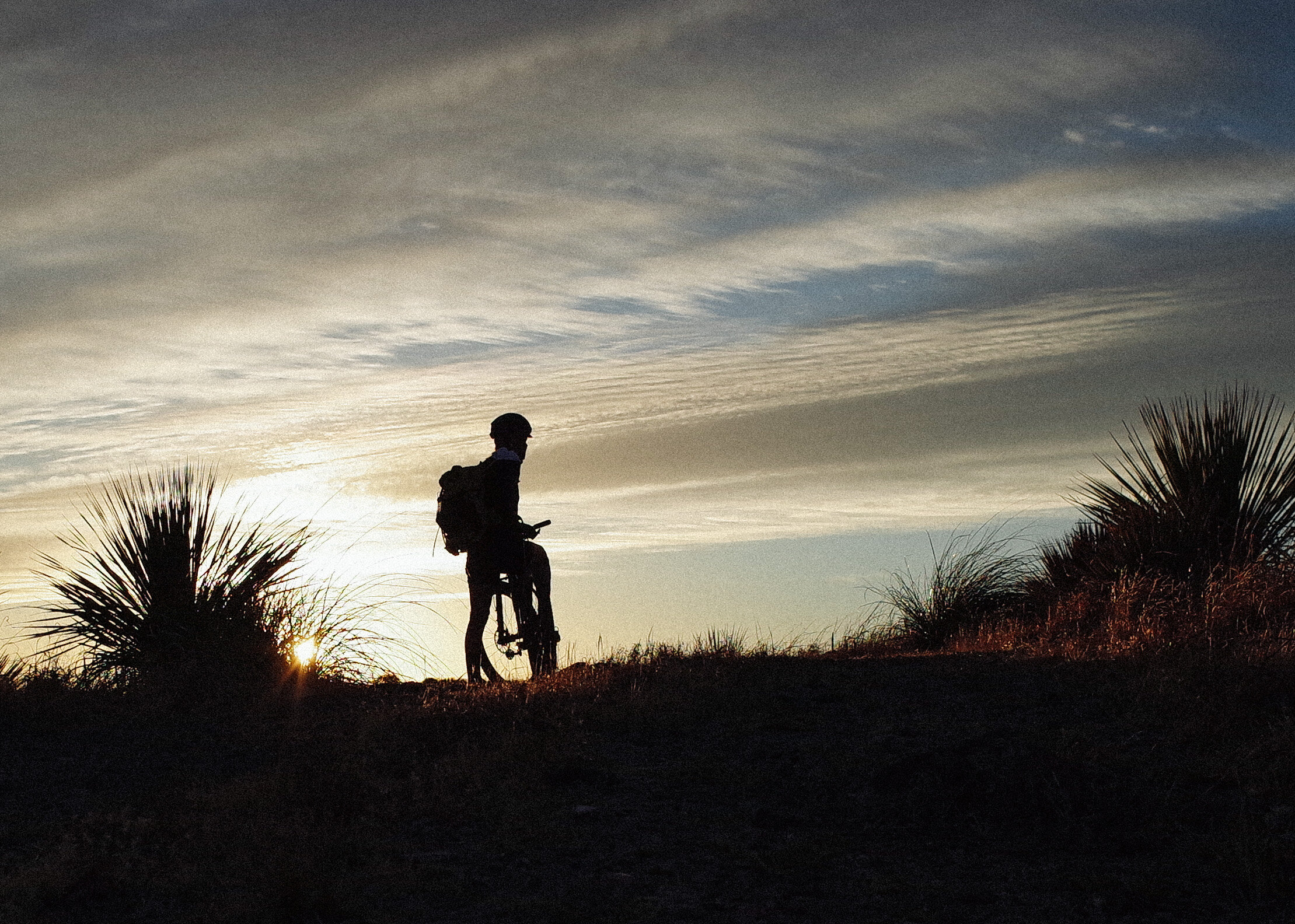
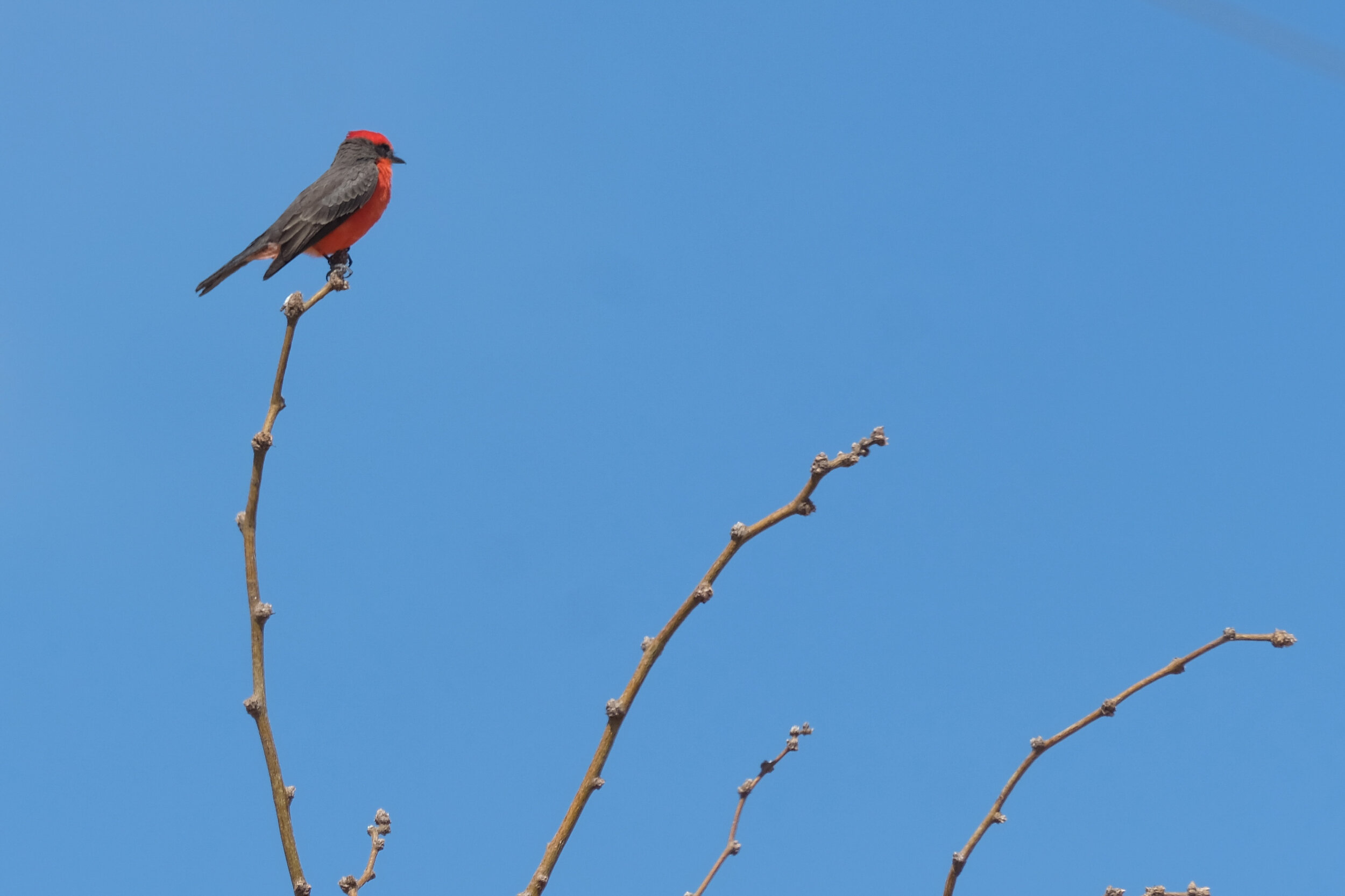

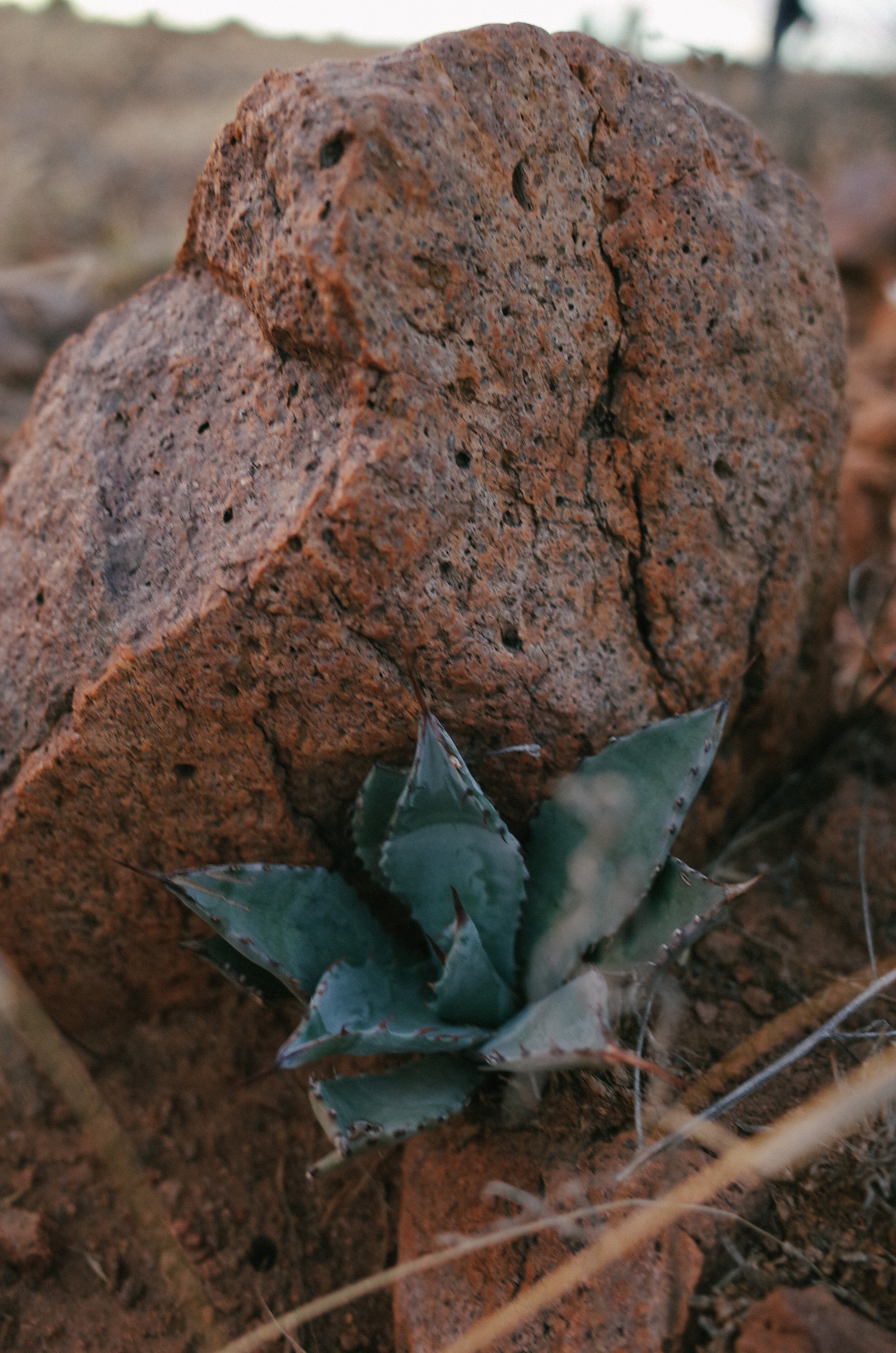

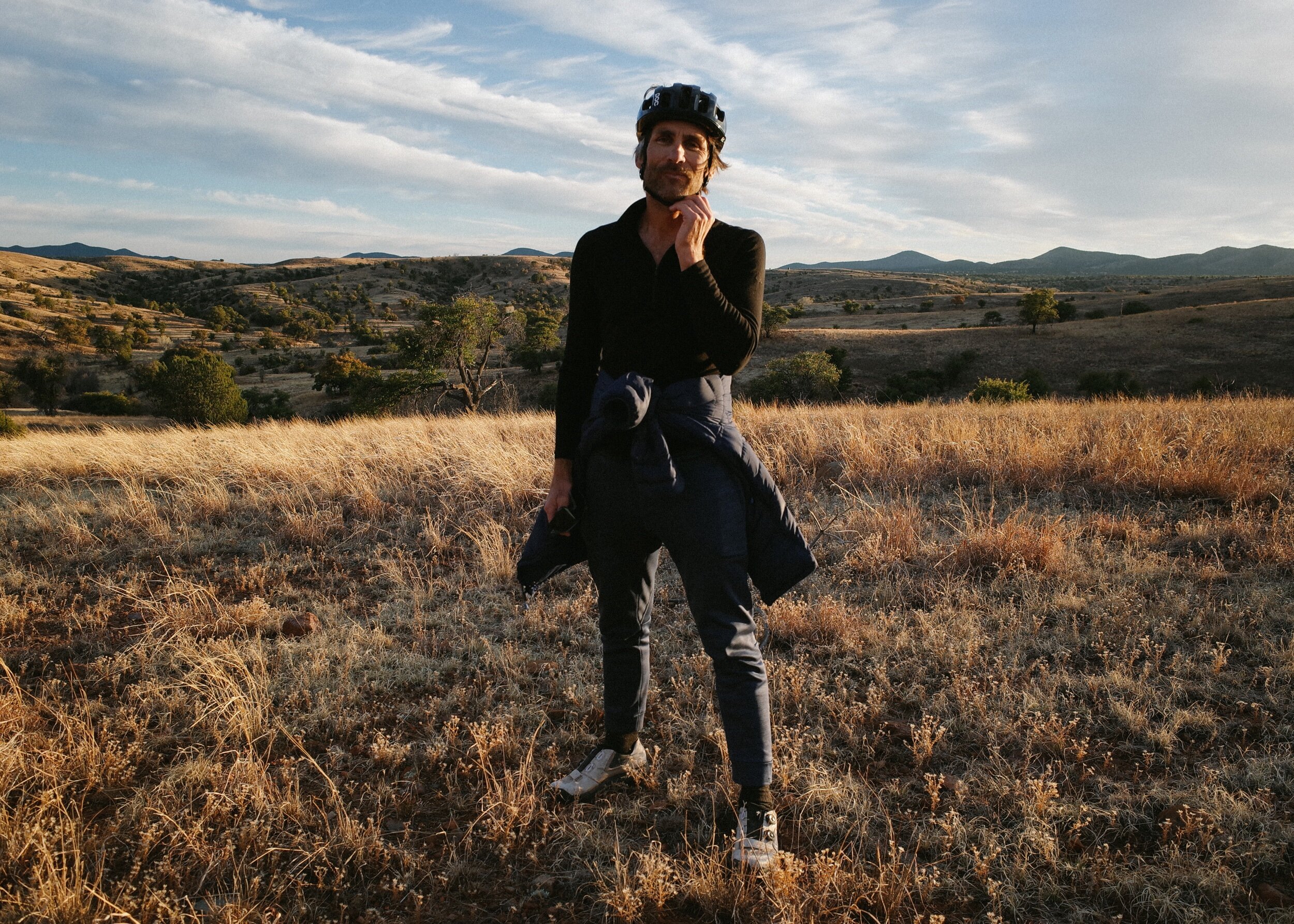
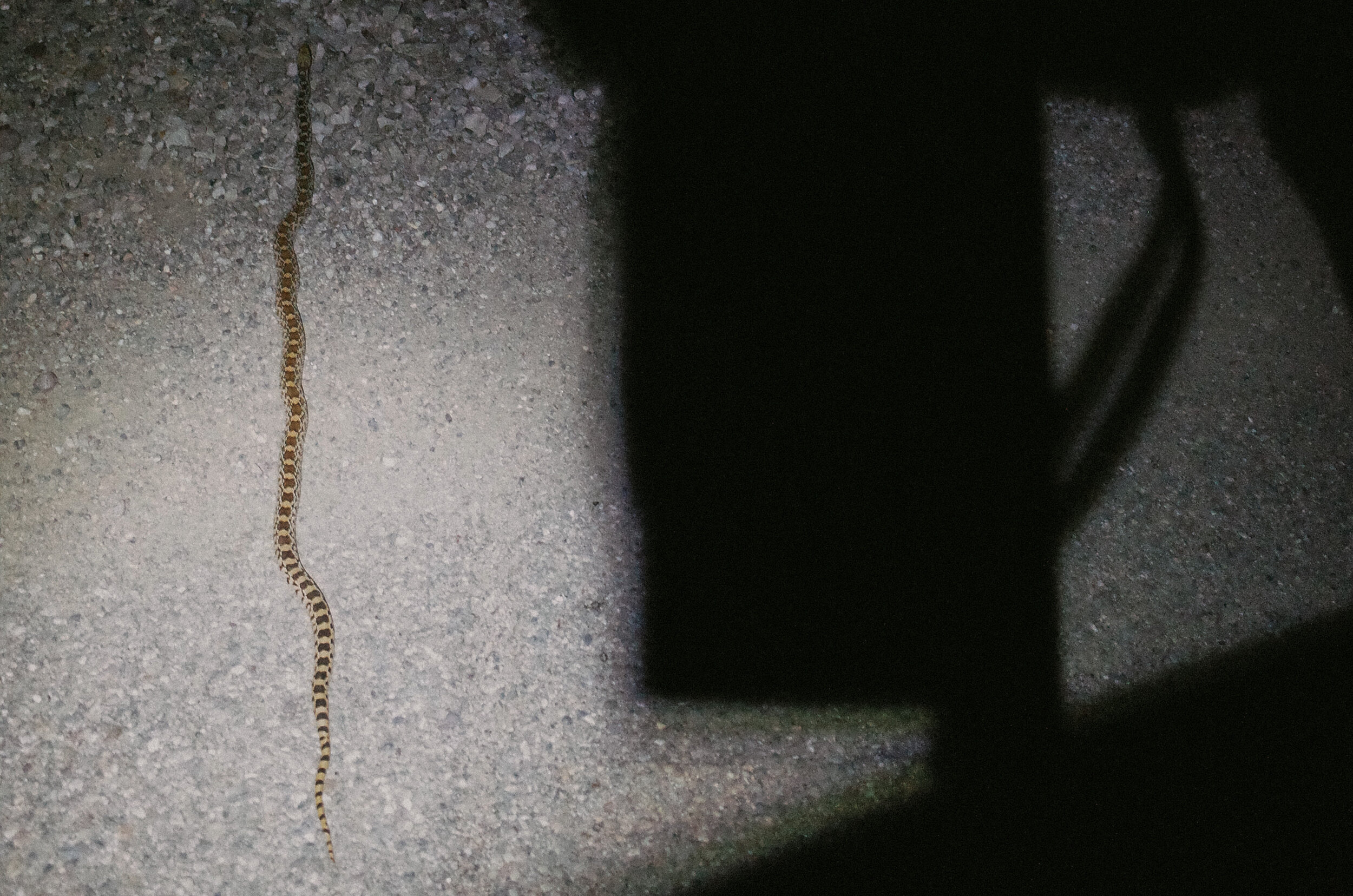
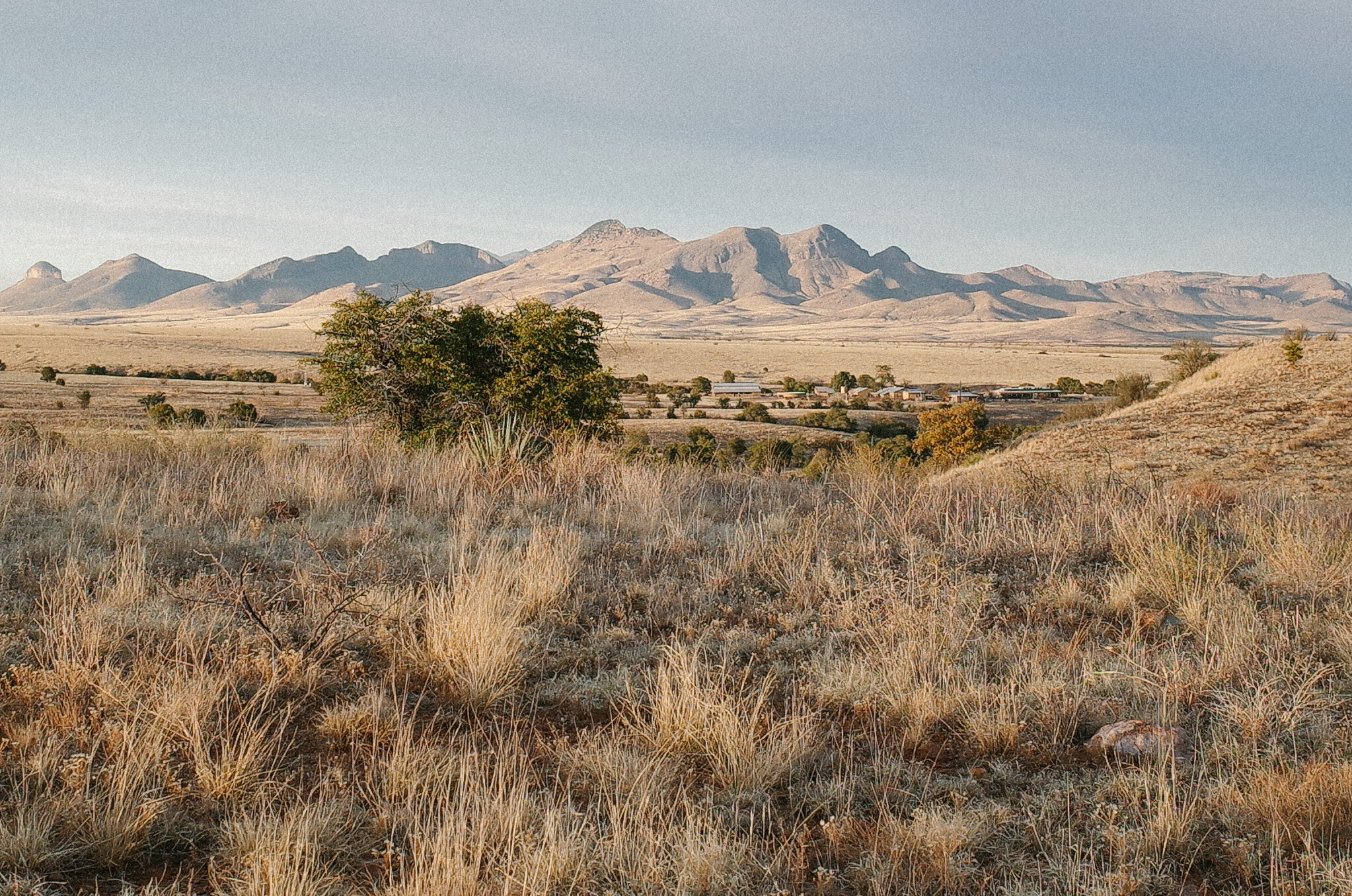
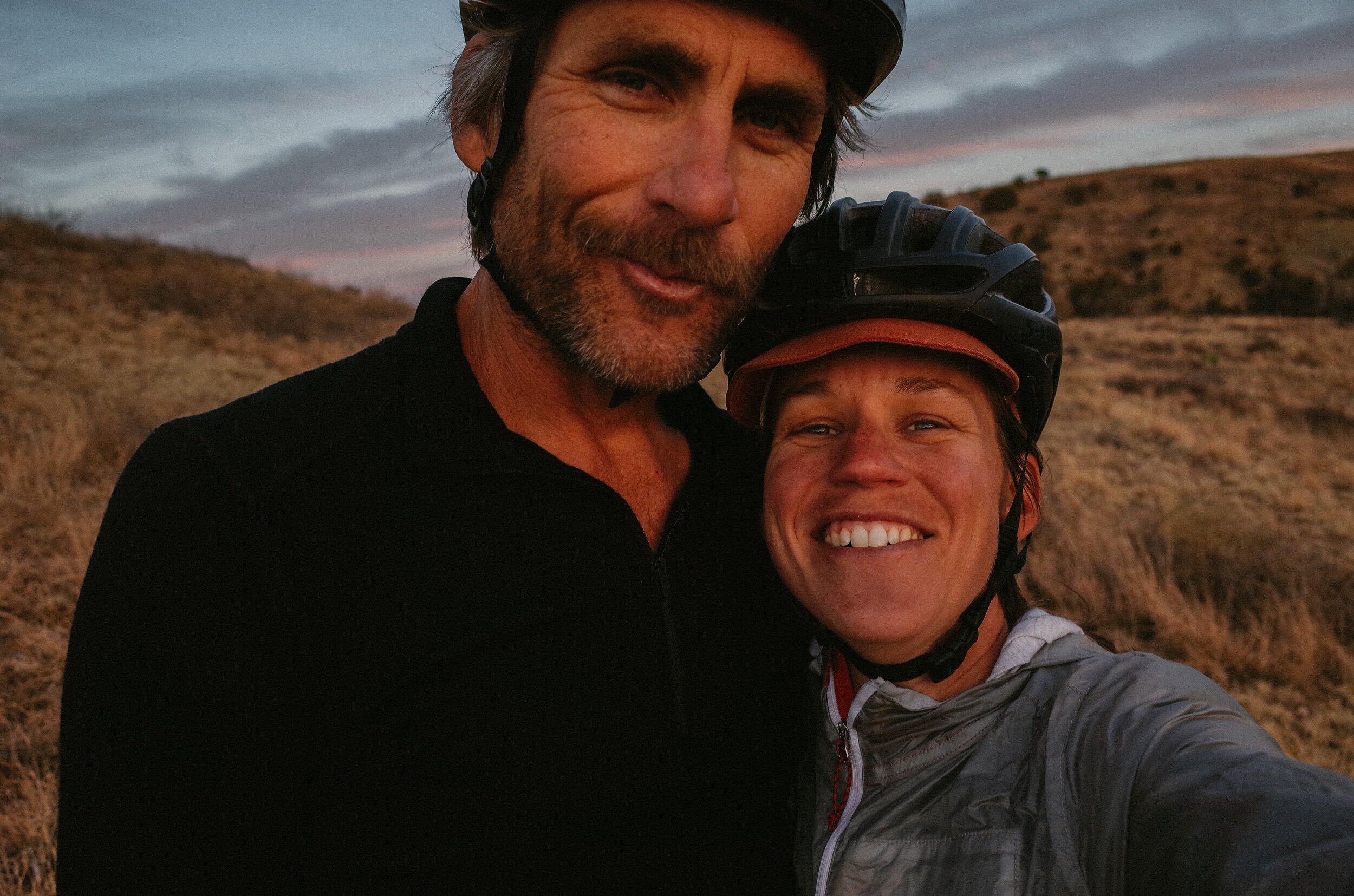
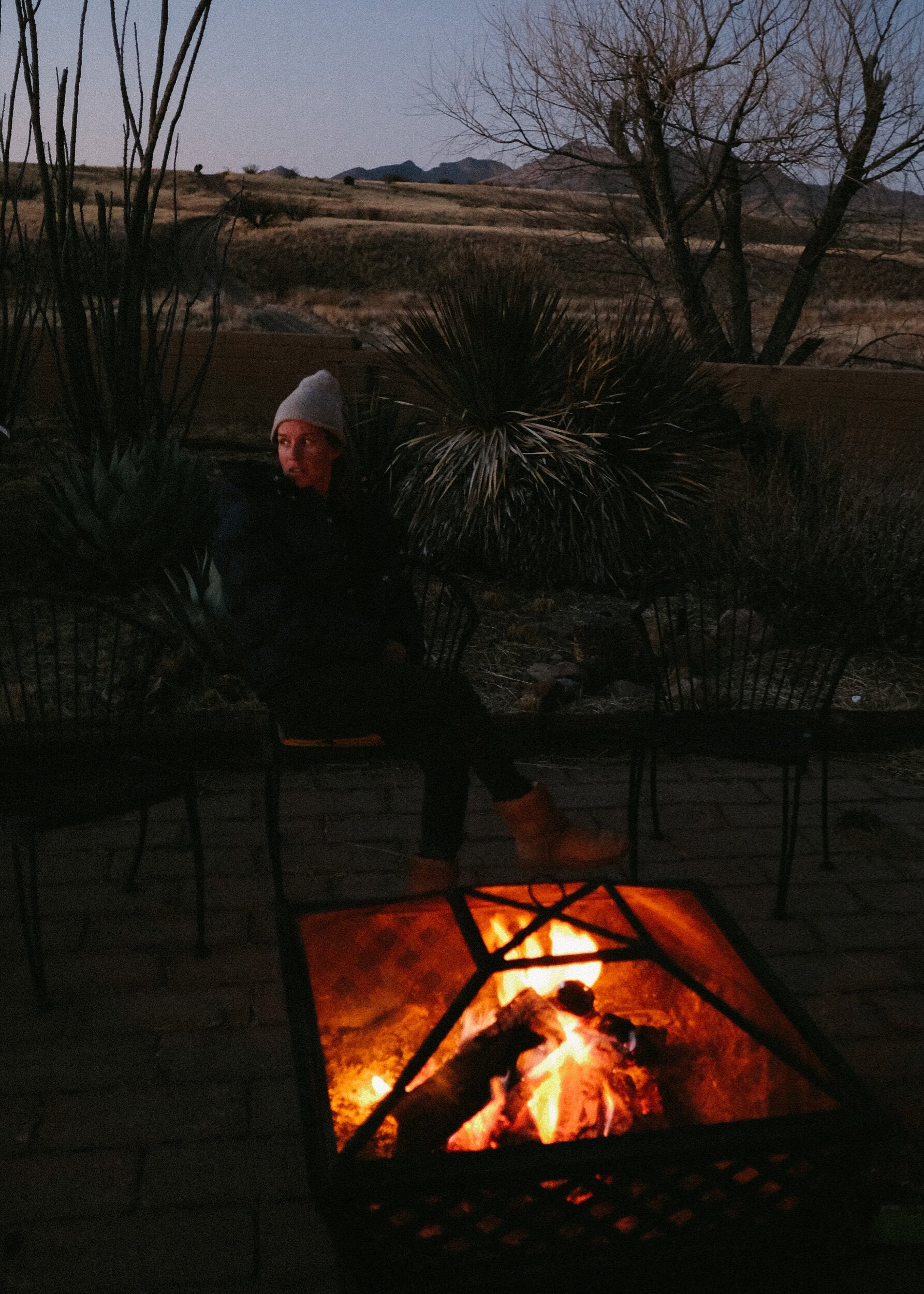

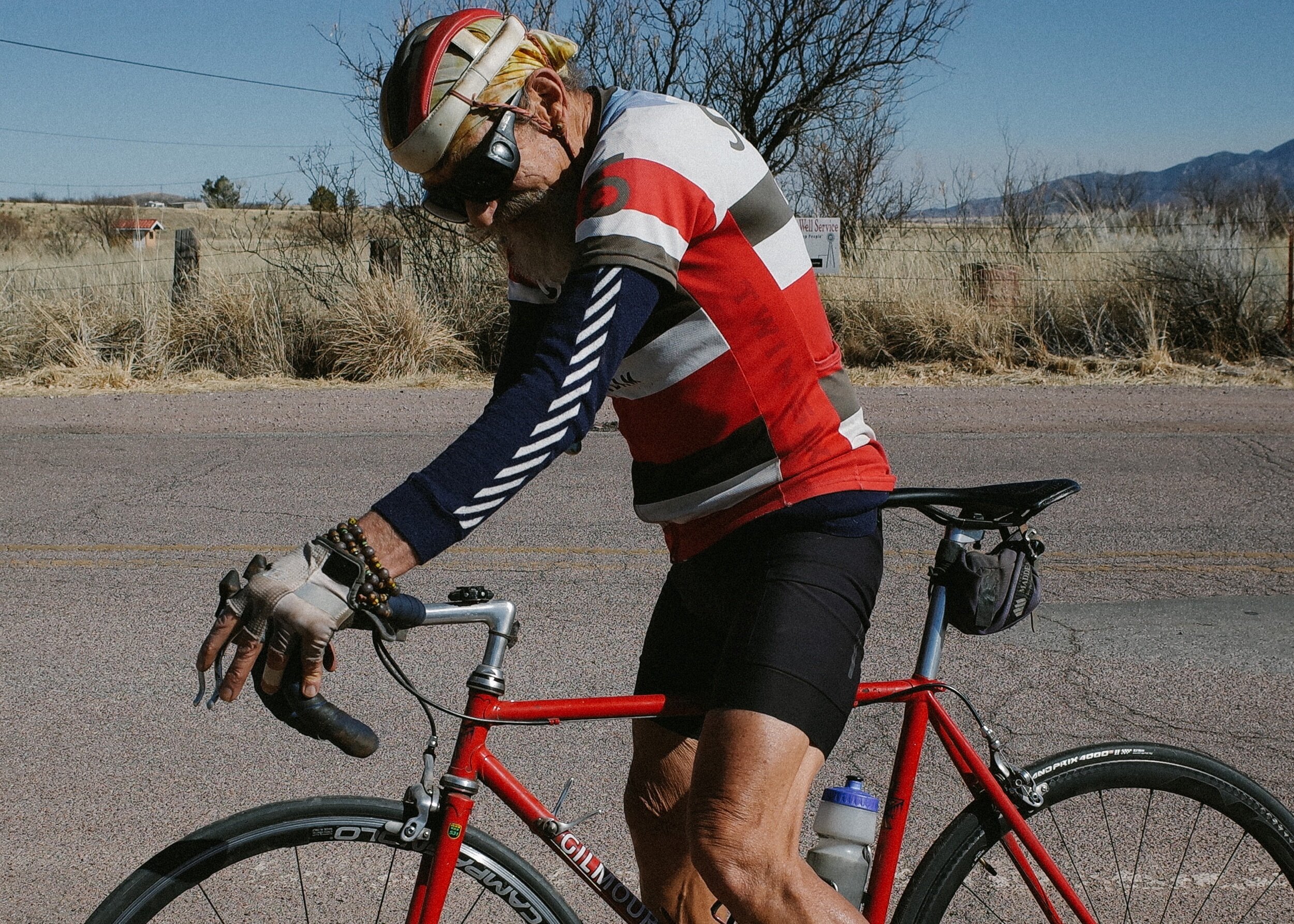
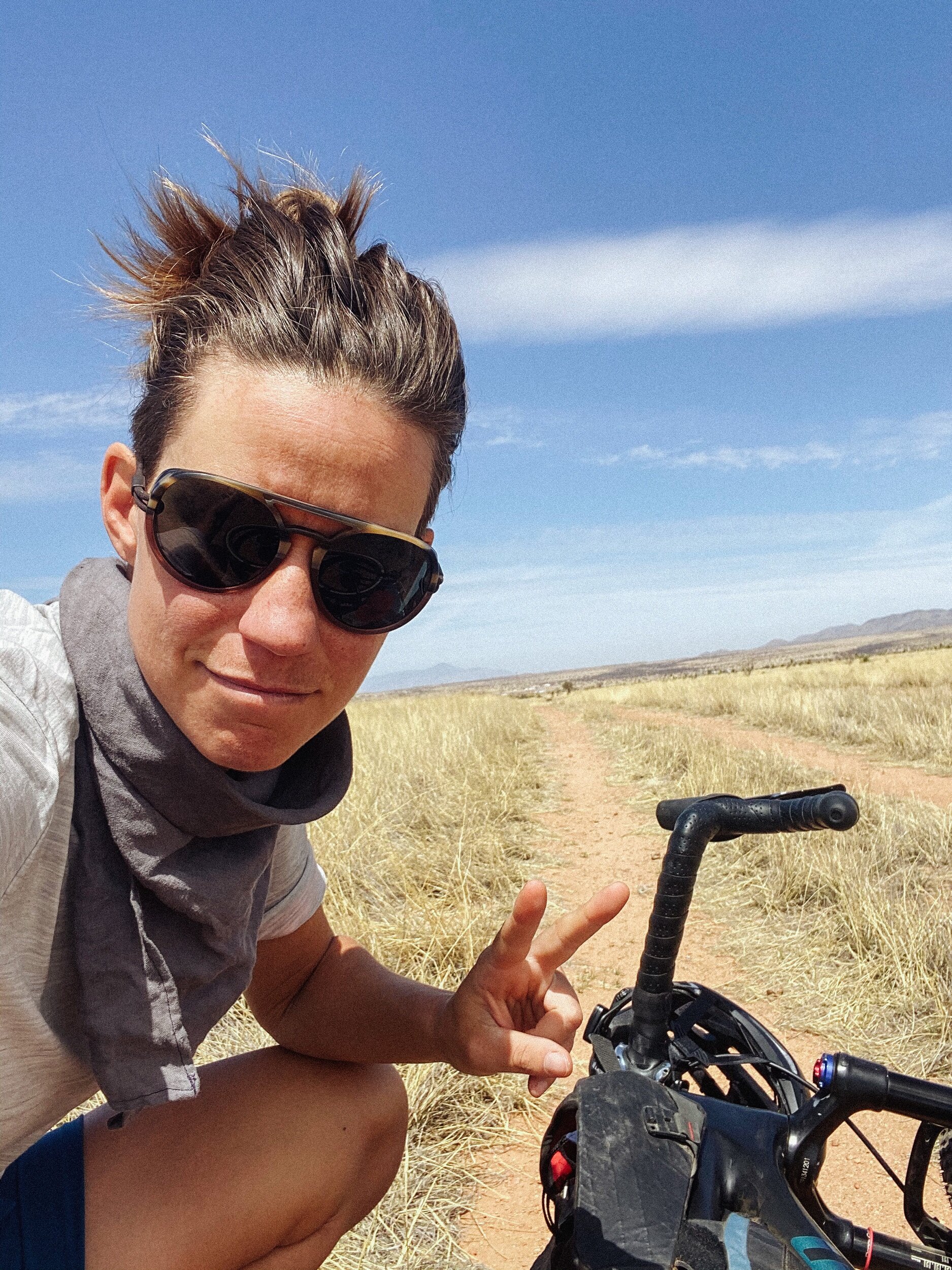
As I write this post, we are packing up our belongings and saying our goodbyes. Goodbye to the view of the Mustang Mountains from the dining room table. Goodbye to our feathered, furred, and scaled neighbors who provided constant entertainment and curiosity. Goodbye to the long exploratory day rides with friends and the afternoon bike rides around the ranch bathed in golden light. Goodbye to the Sonoita characters, to Cristina, Ben, Suzanne, and all the bicycling visitors who shared a conversation and a beer over sunset at the ranch.
With Covid cases on a significant decline in the region, visitors could return to the ranch over the last couple of months. My parents came and so did some close friends. Many of the visitors were bikepackers passing through along the Sky Islands Odyssey routes. Due to having so many separate lodging buildings, camping options, and outdoor conversing spaces, the ranch provided an opportunity to meet new people and to spend time with loved ones in a safe way outdoors. I appreciate these interactions more than I ever did before Covid.
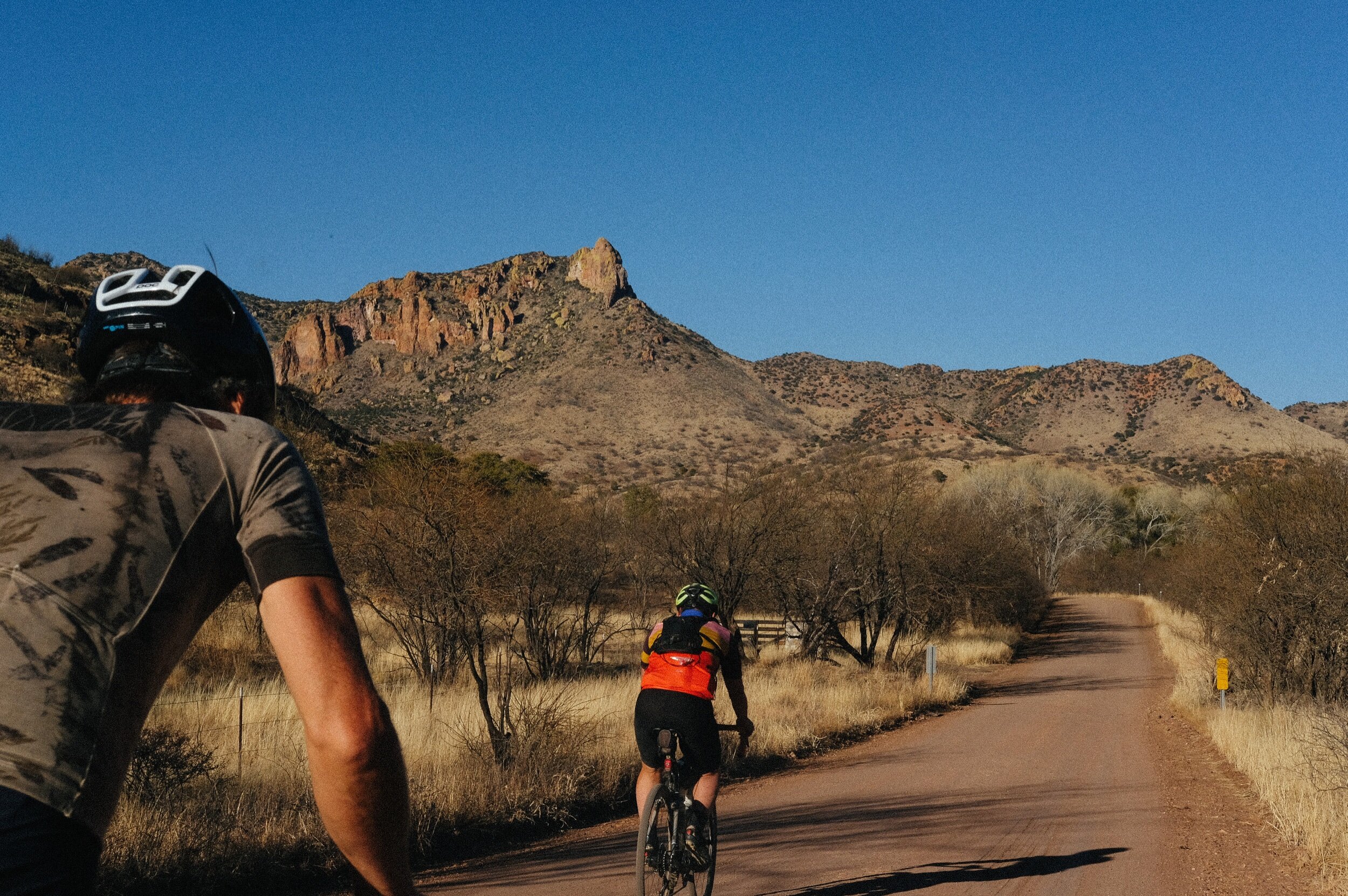
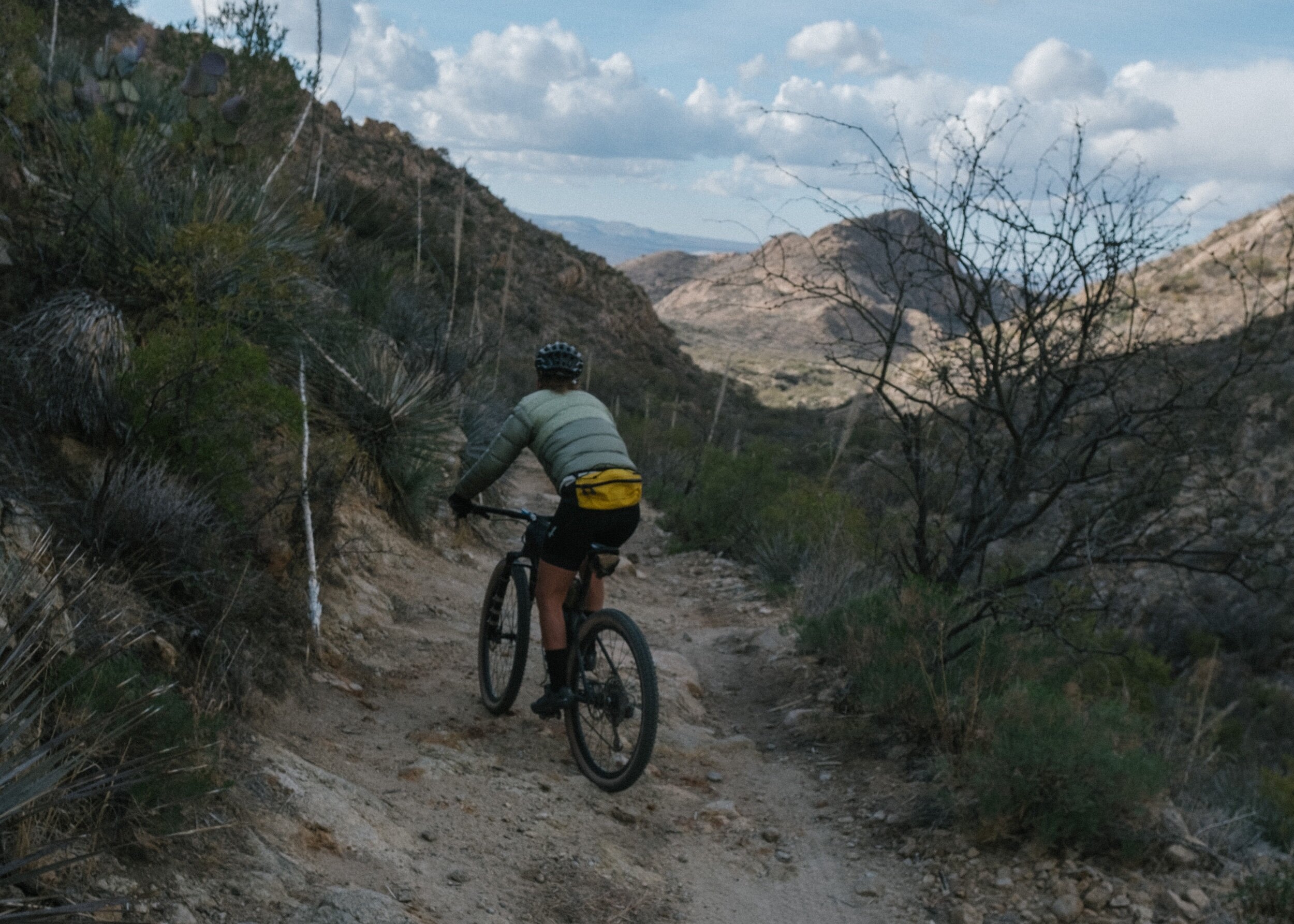
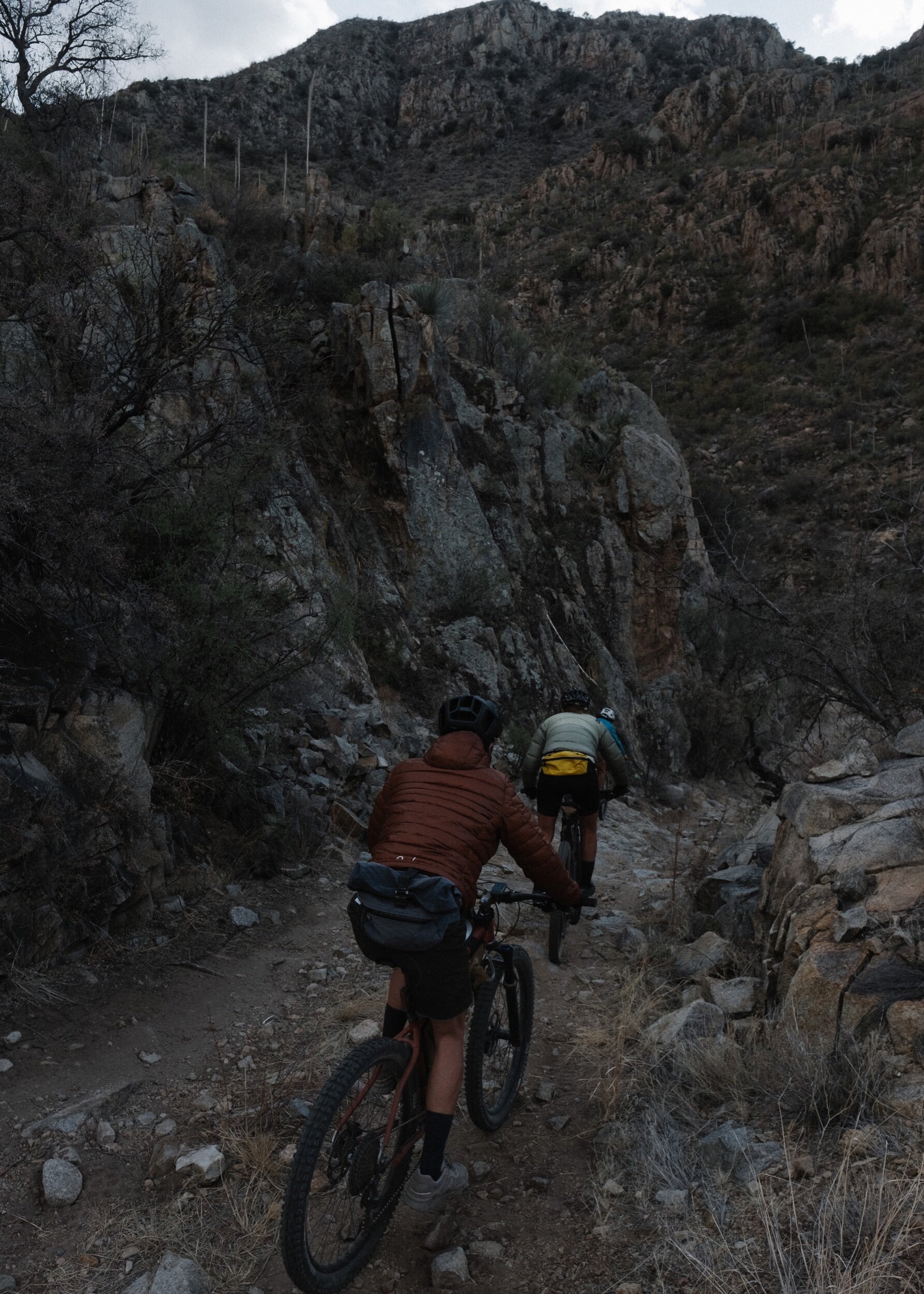
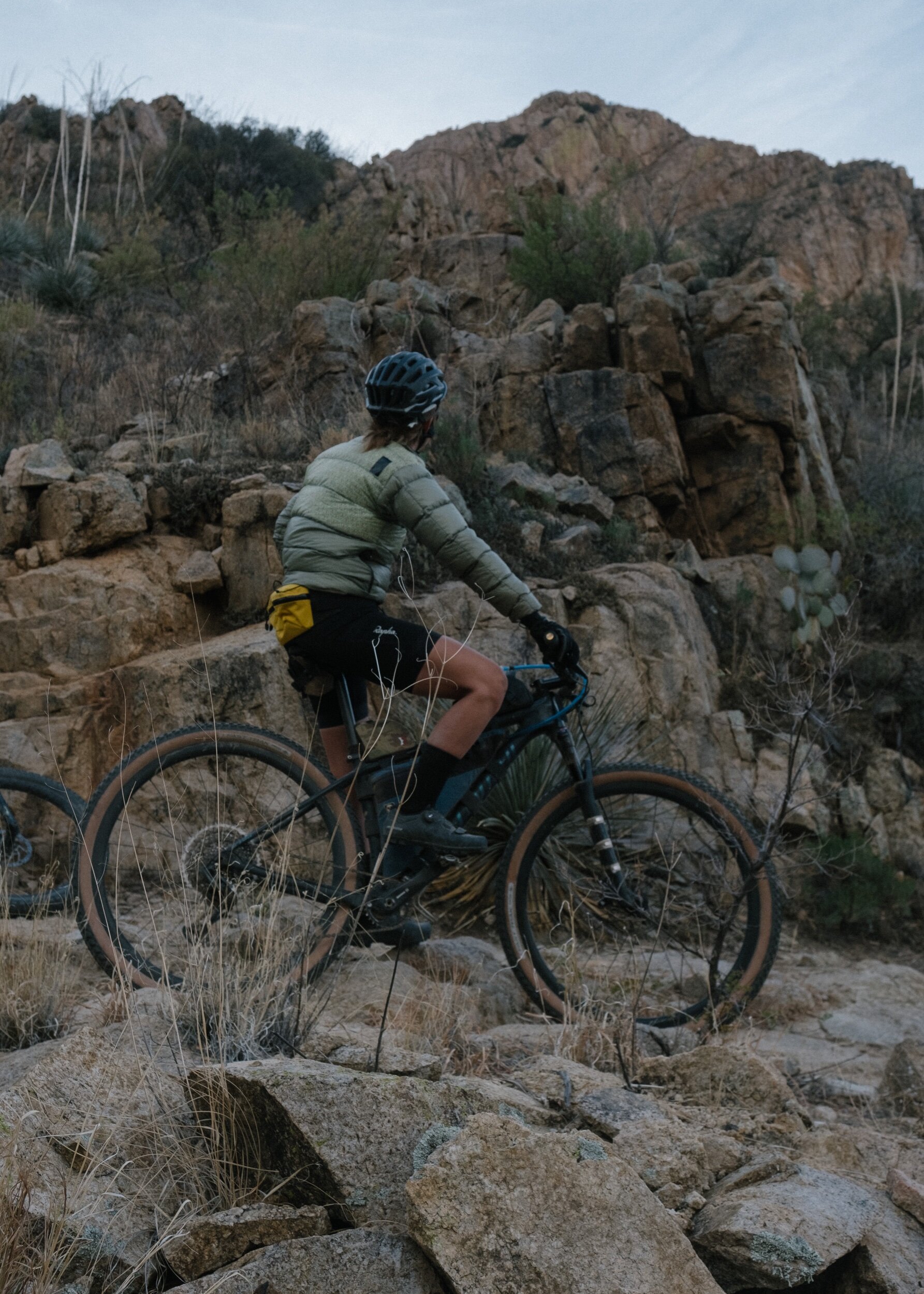
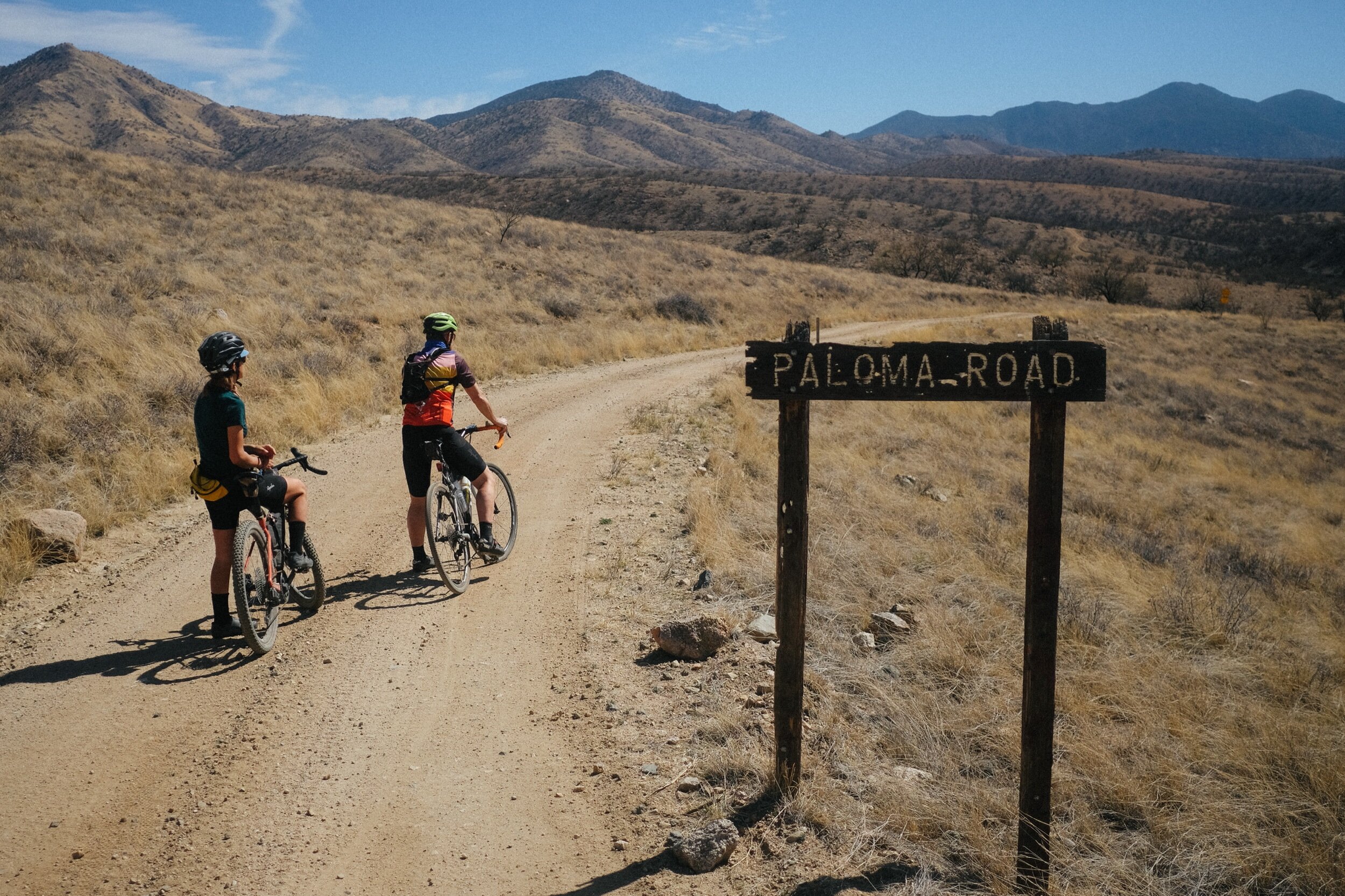
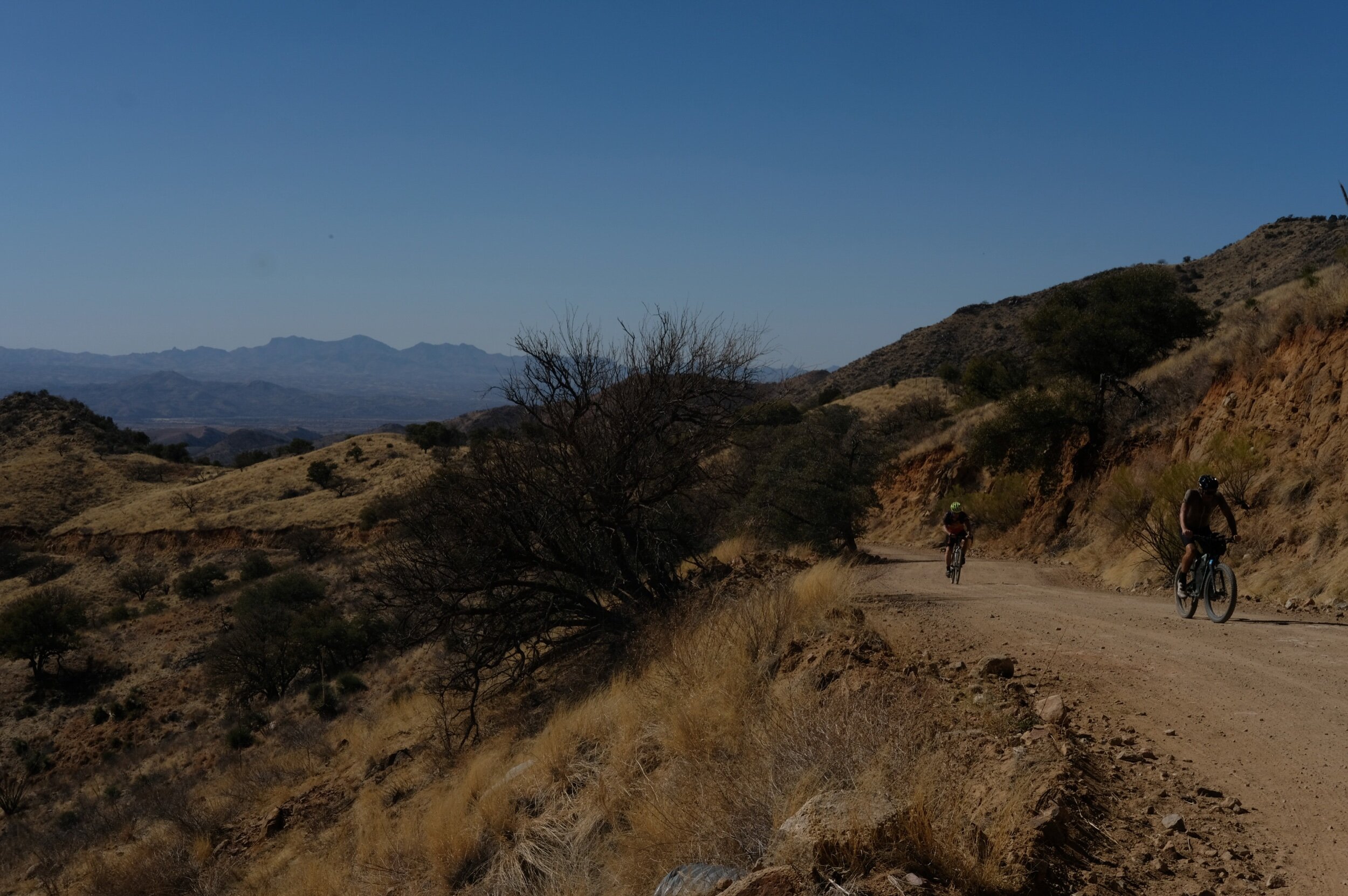

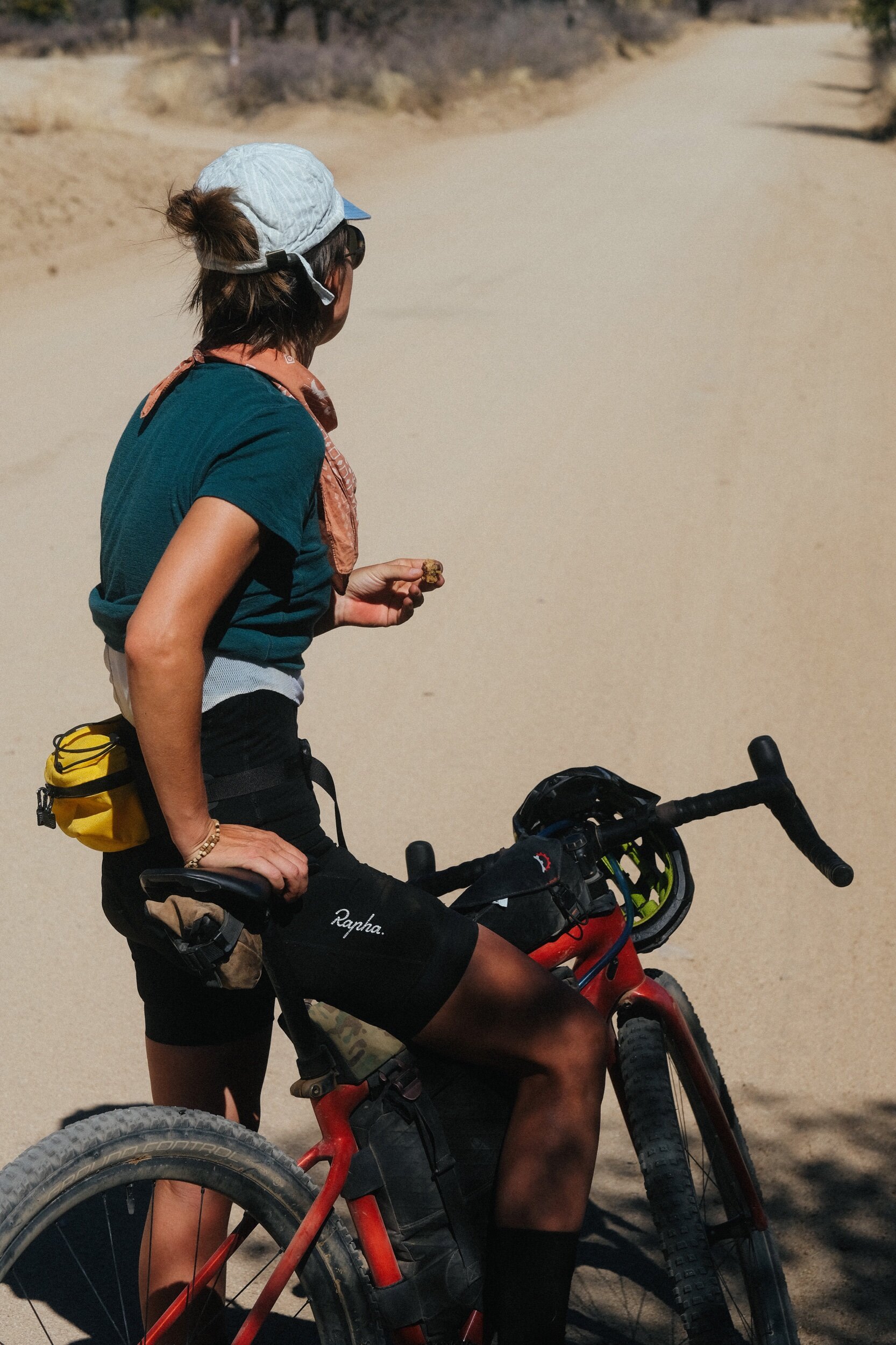
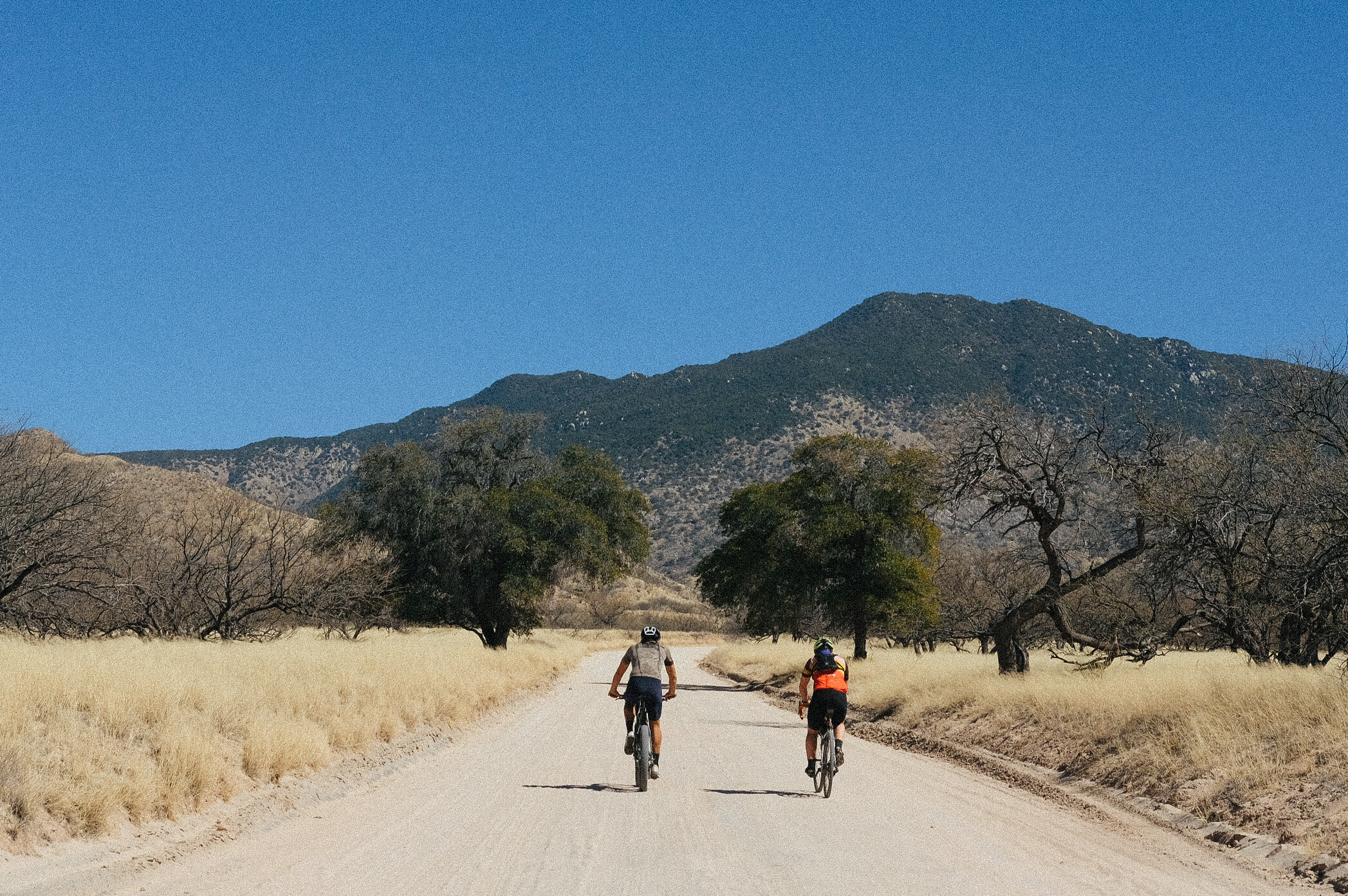
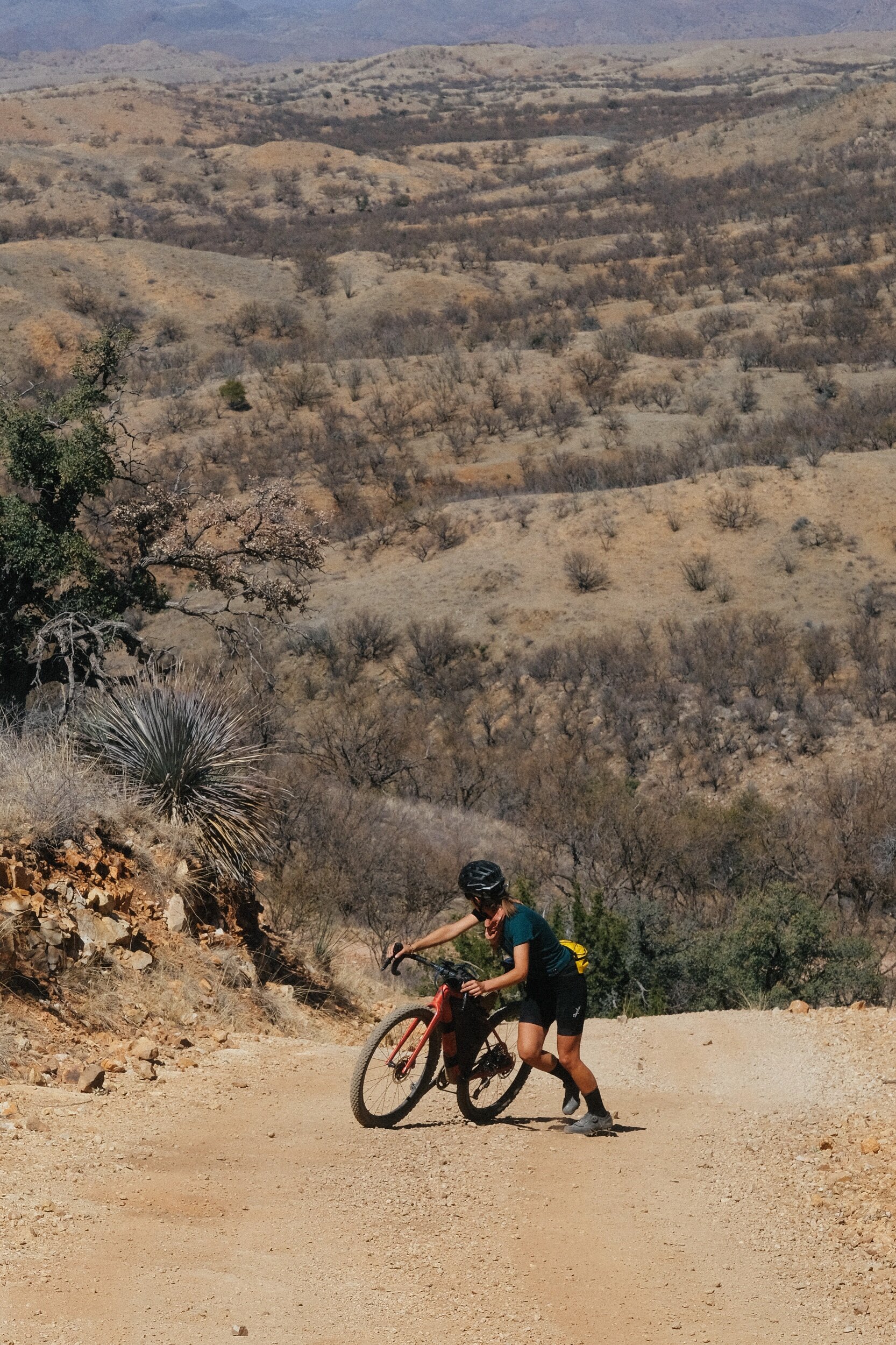





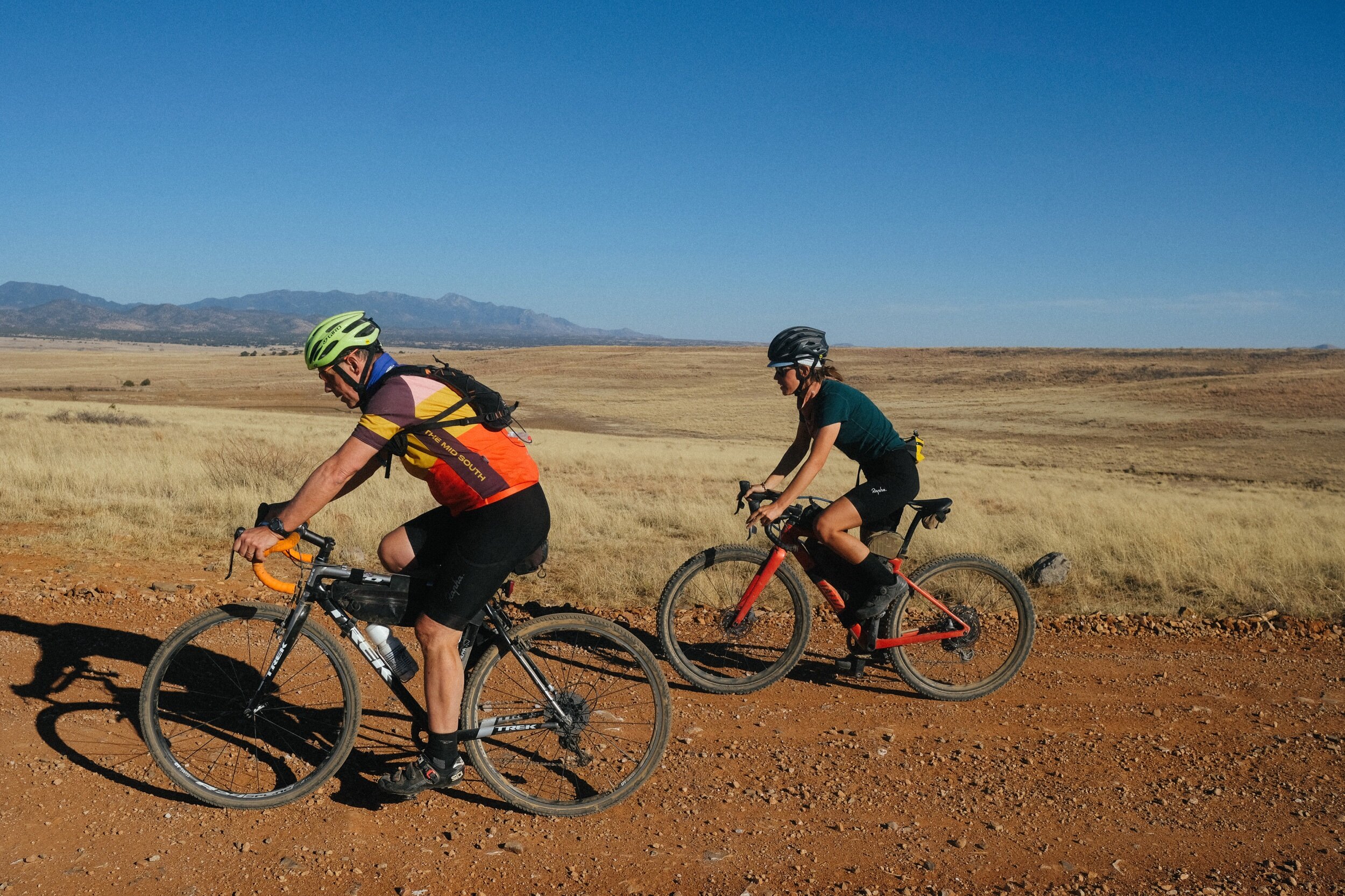


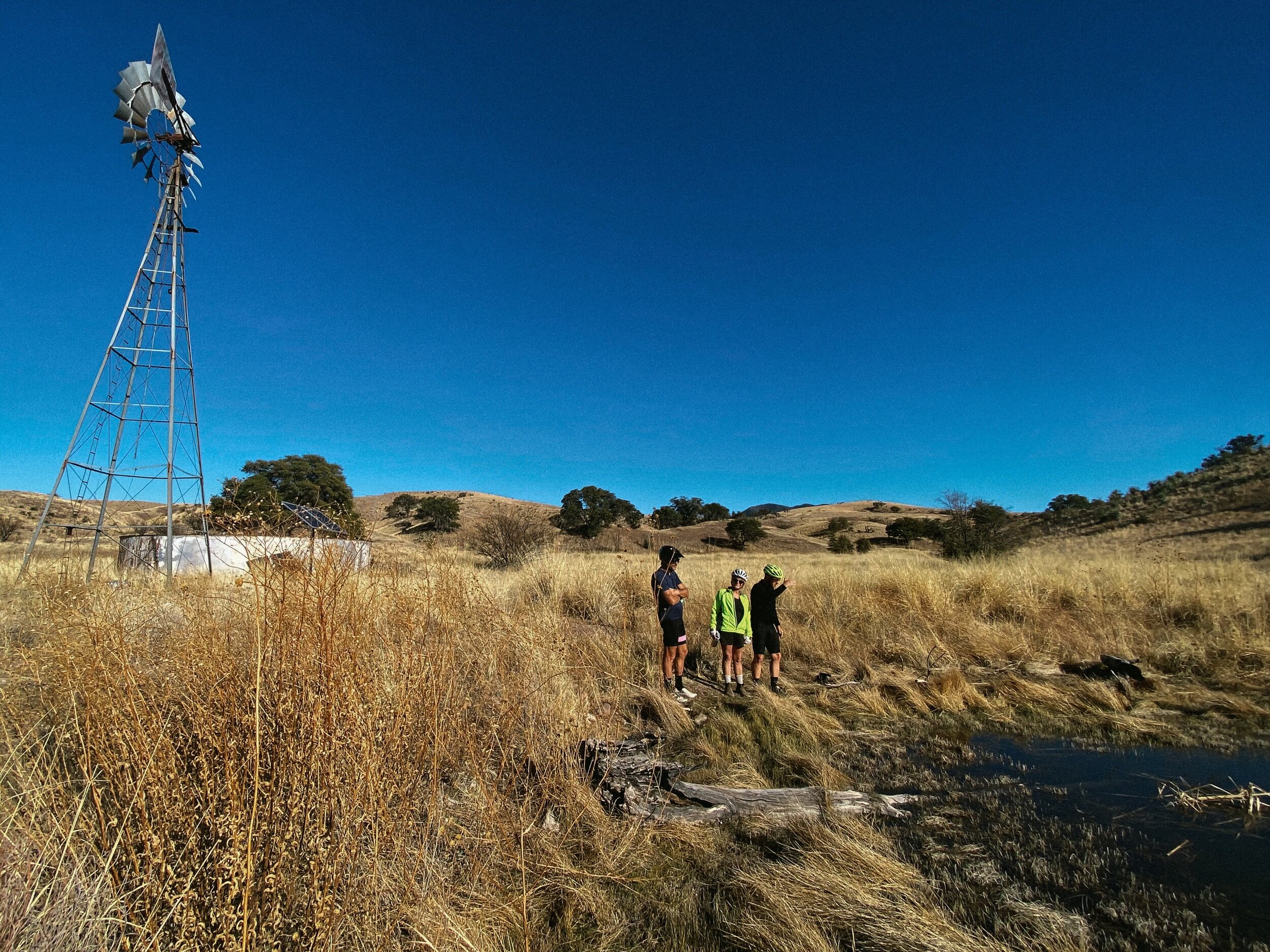
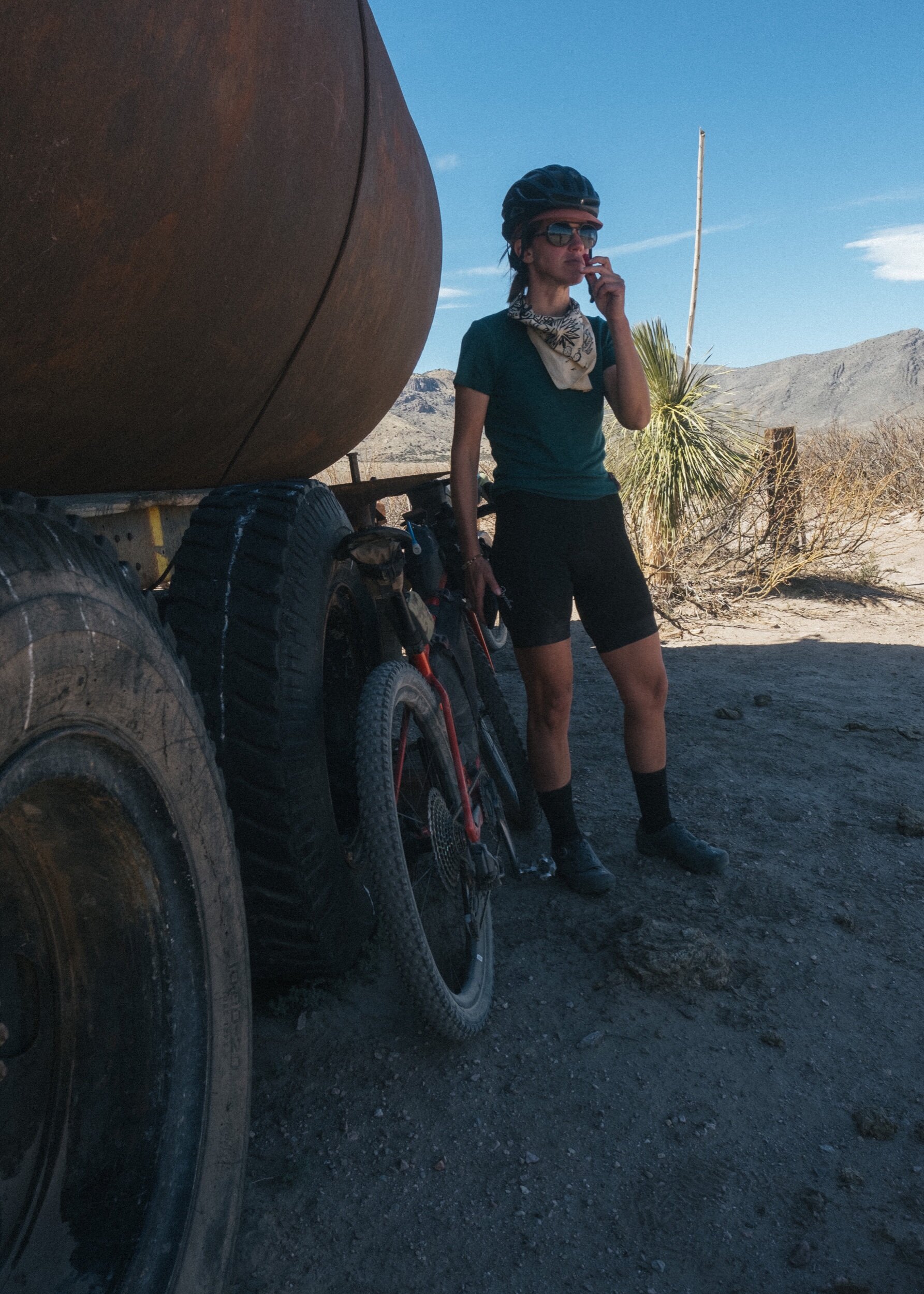
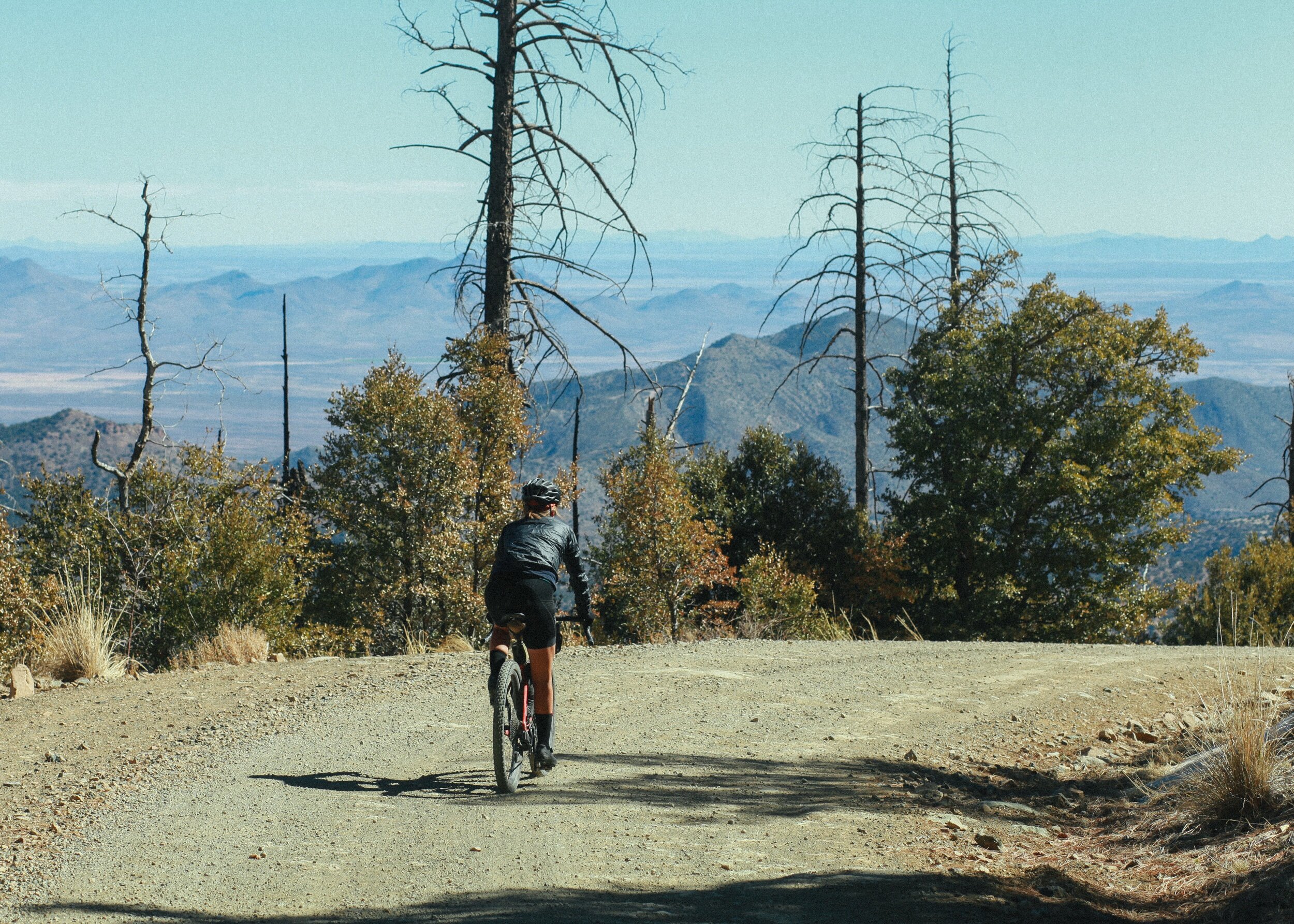
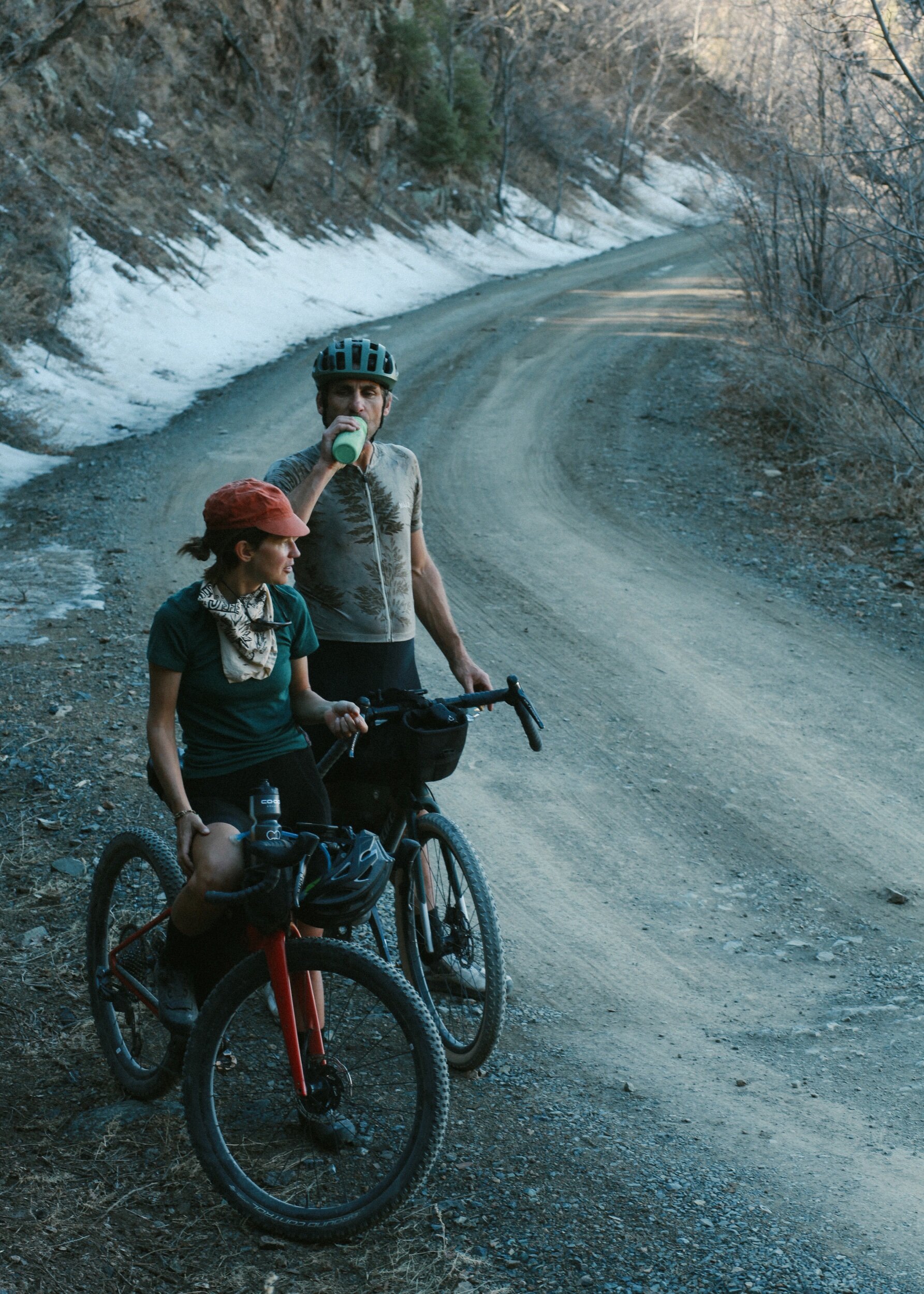
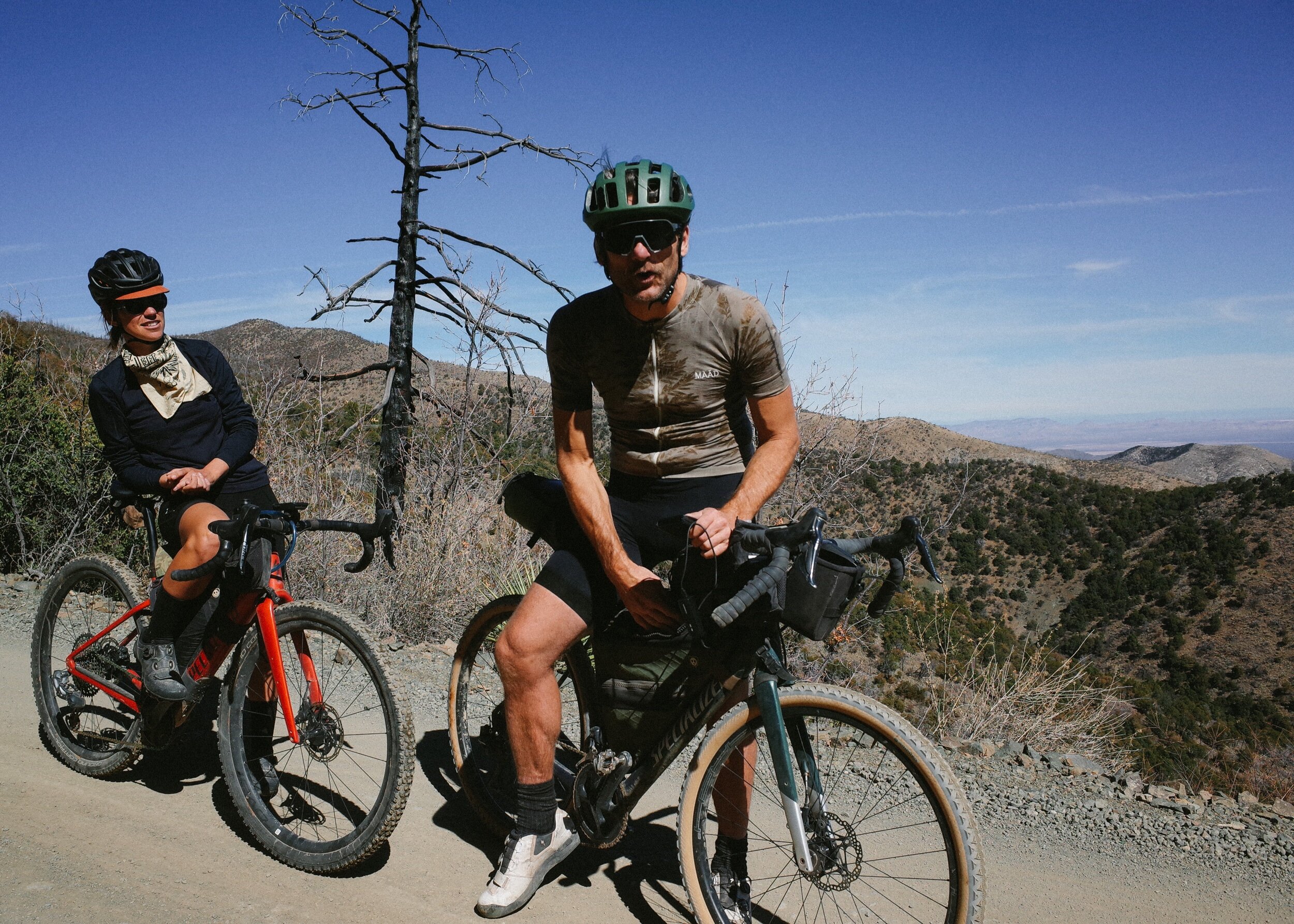
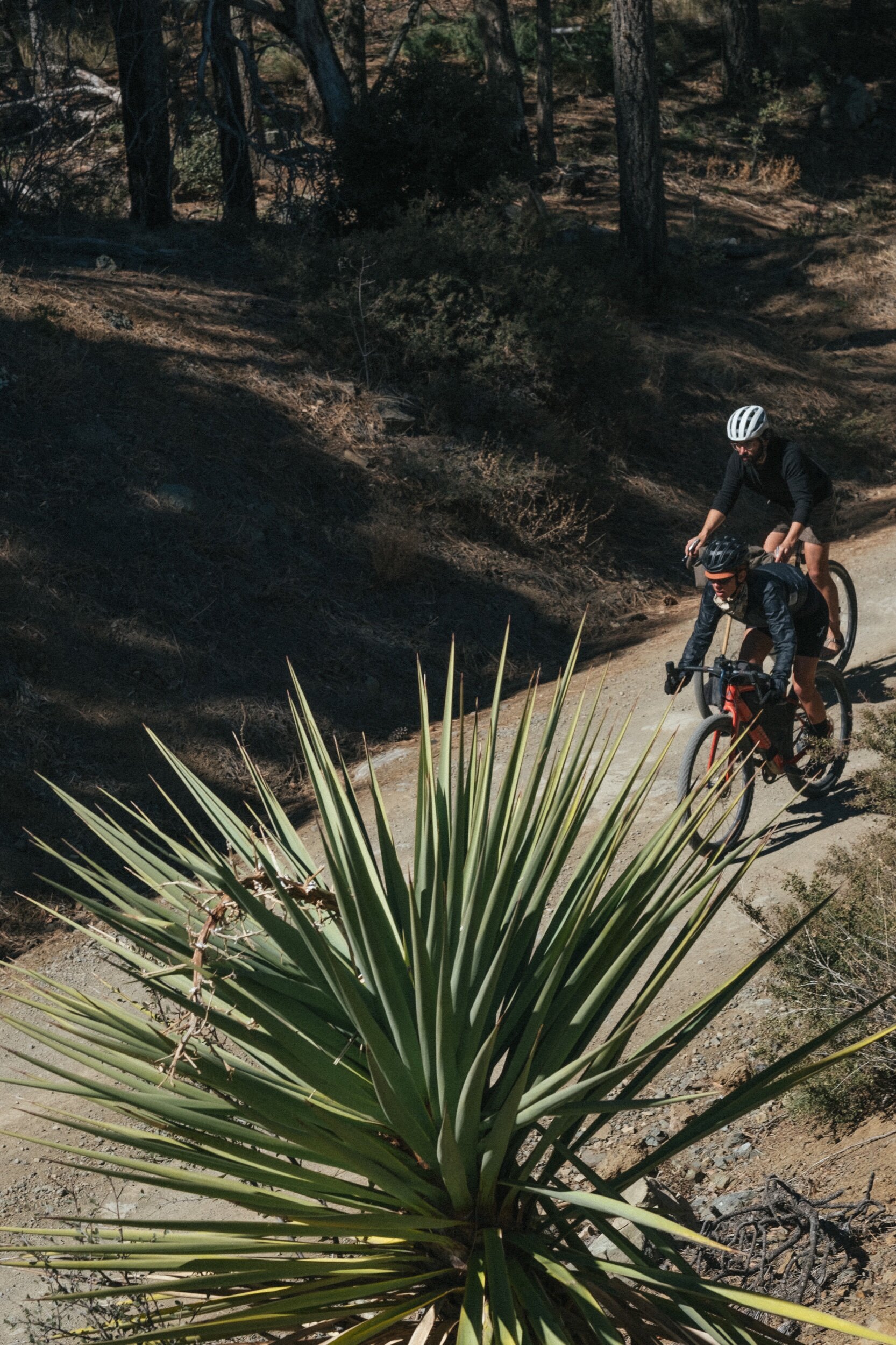
At the Appleton-Whittell Research Ranch, we have laid a solid foundation for the future of more cycling infrastructure and opportunities at the ranch, so stay tuned. Incorporating bicycles into the daily operations and outreach of a non-profit wildlife sanctuary that used to be closed to the public before 2018 is a slow process but certainly one of the most exciting ones to me. I'm looking forward to returning in November to pick this work back up and to share this place with more of you.

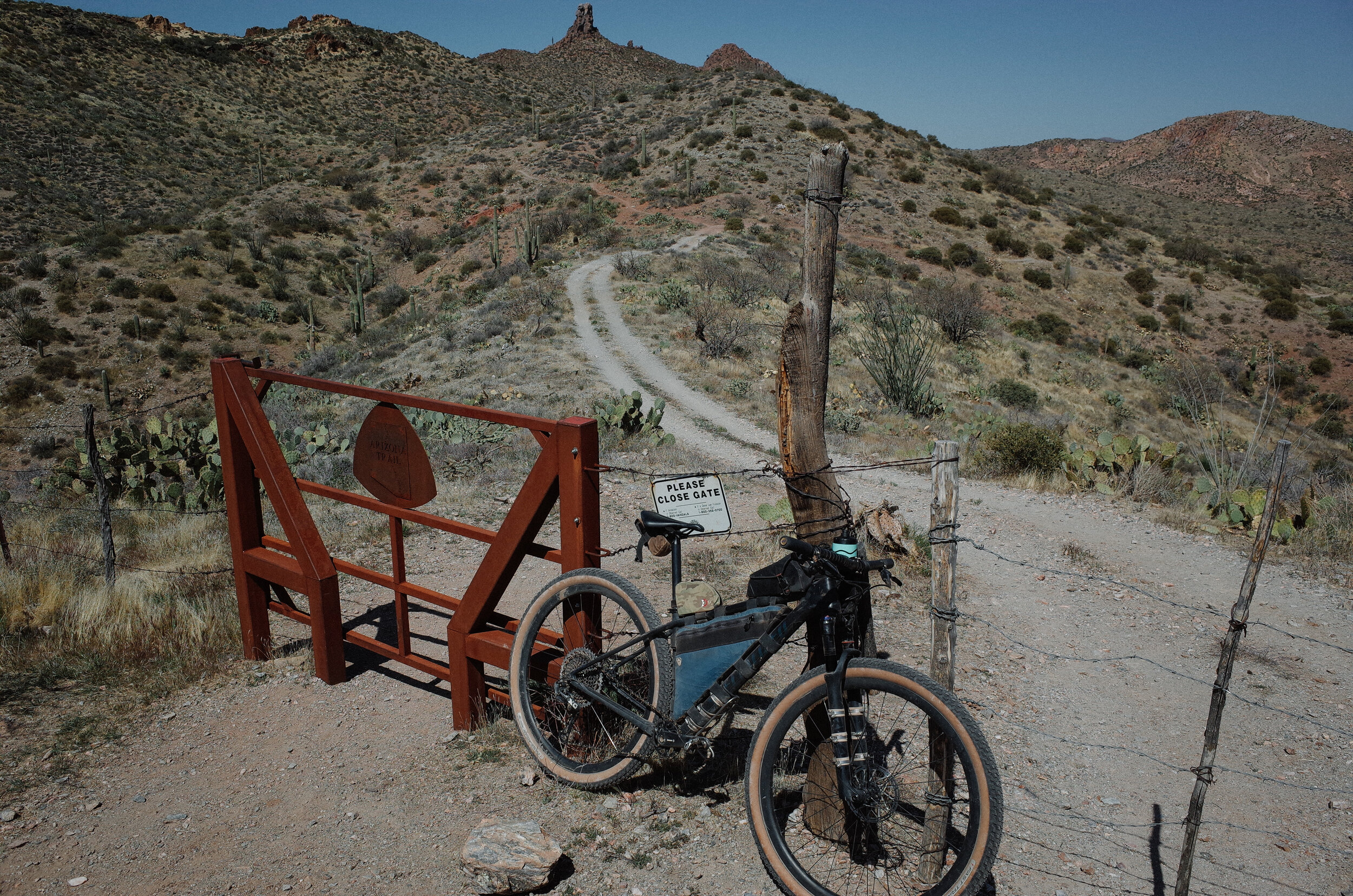
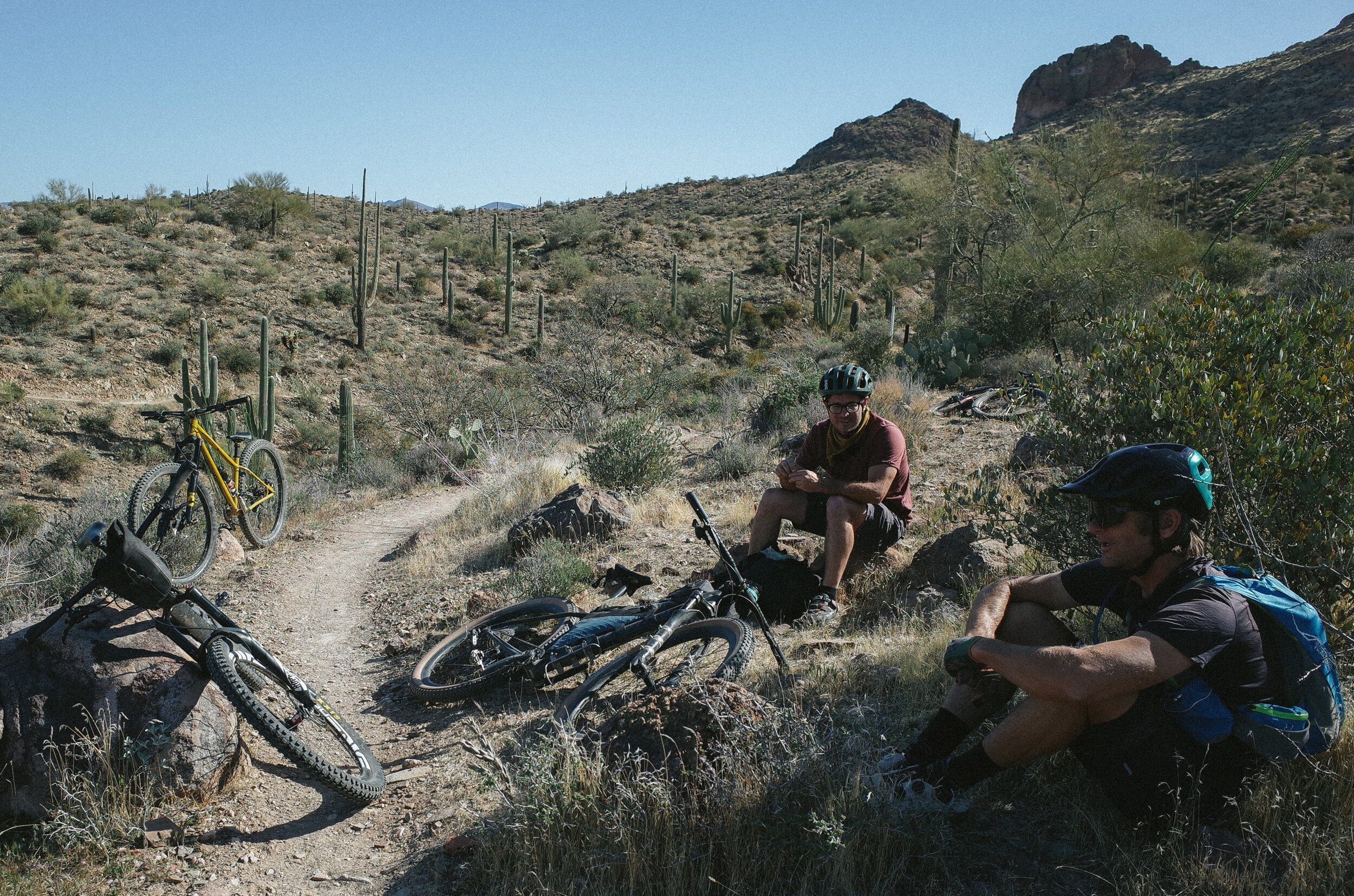
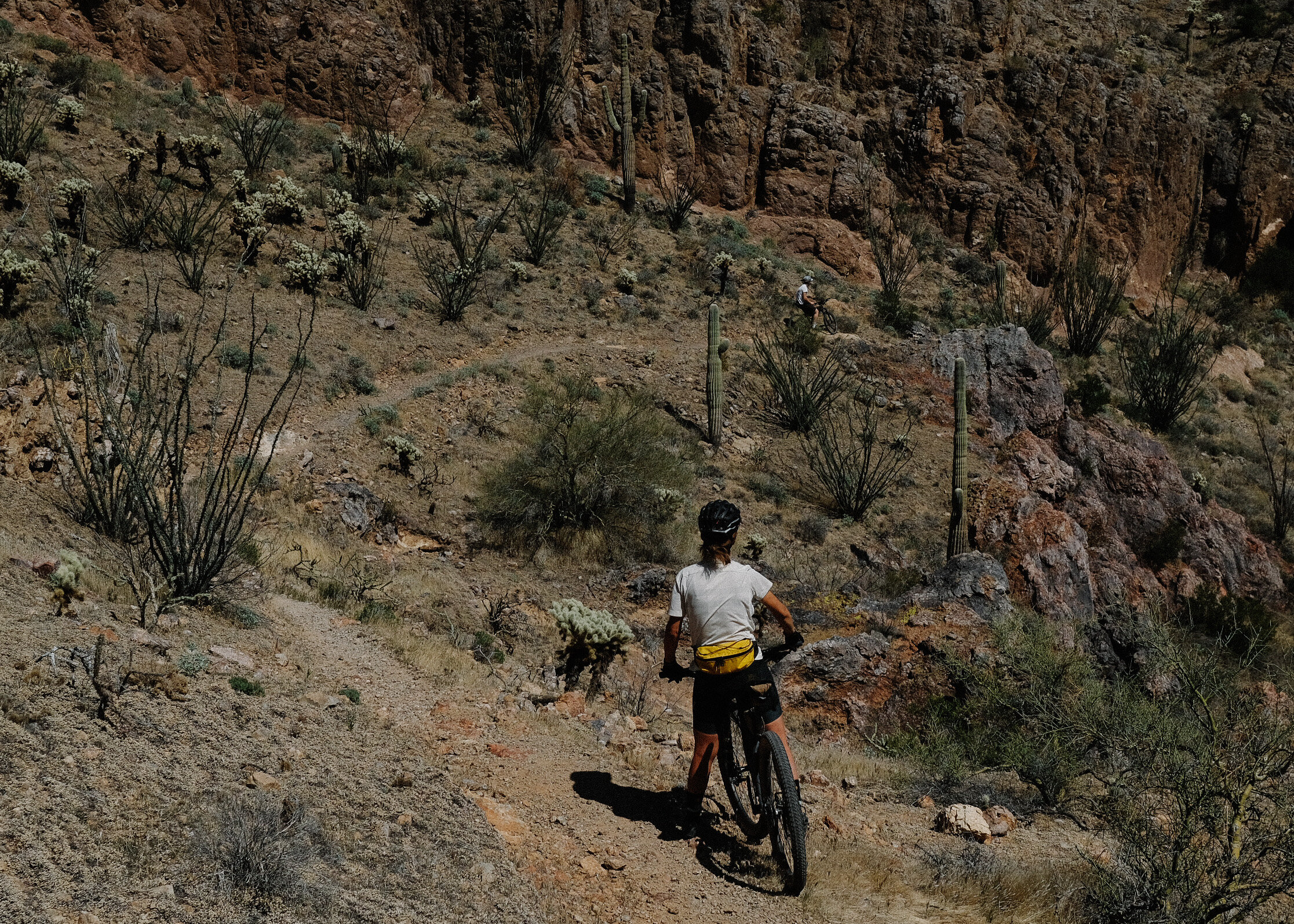

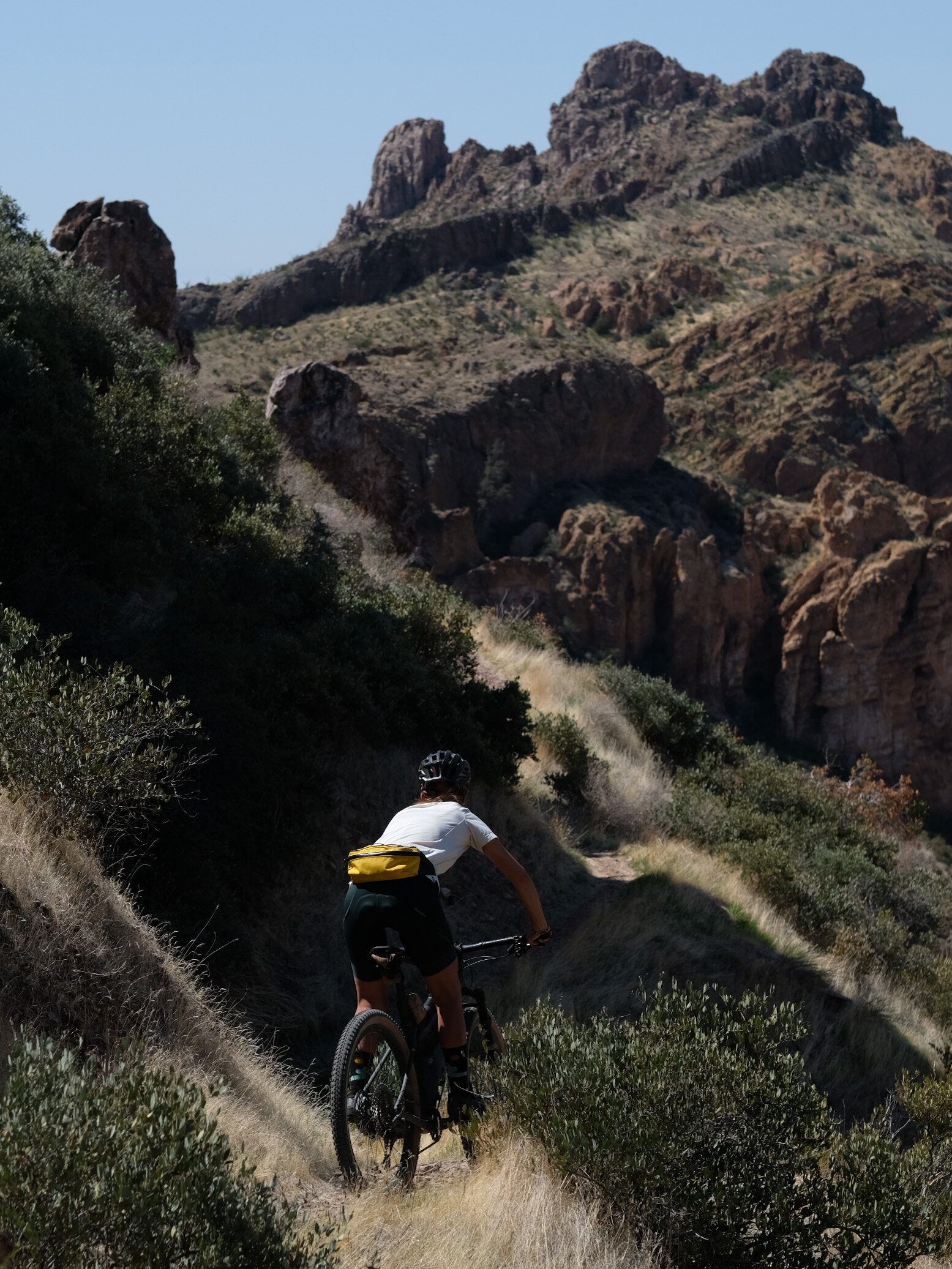
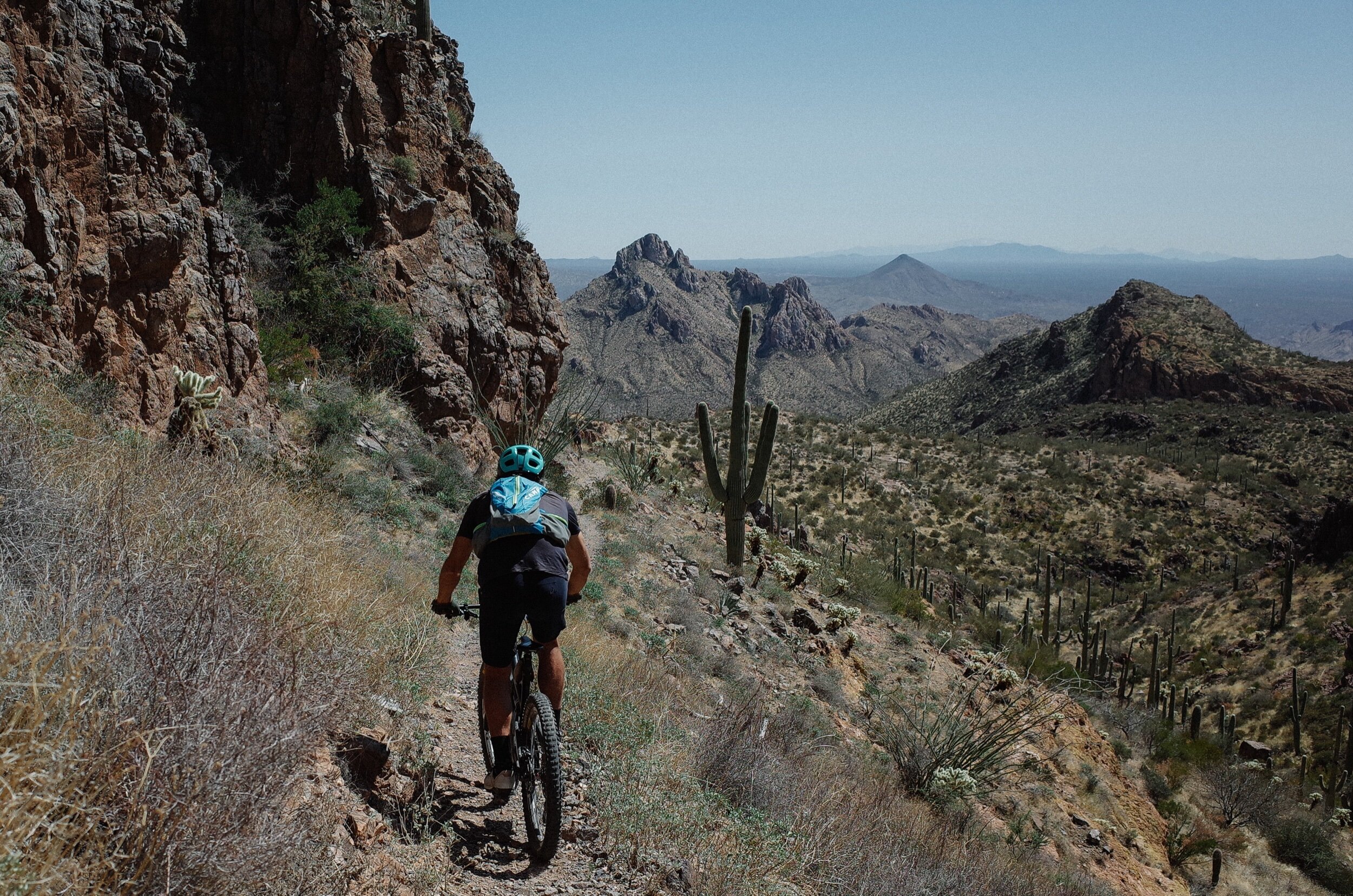
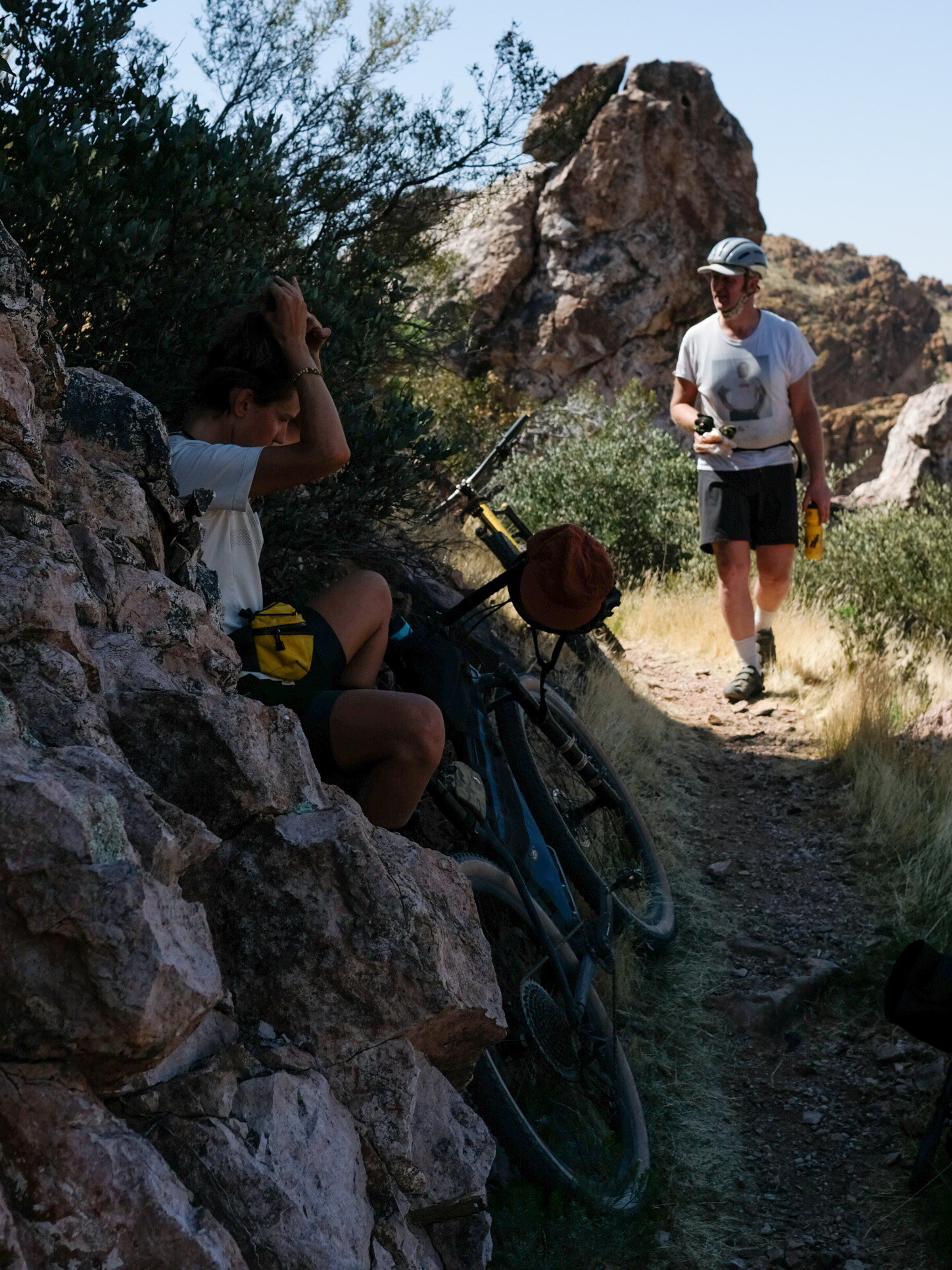
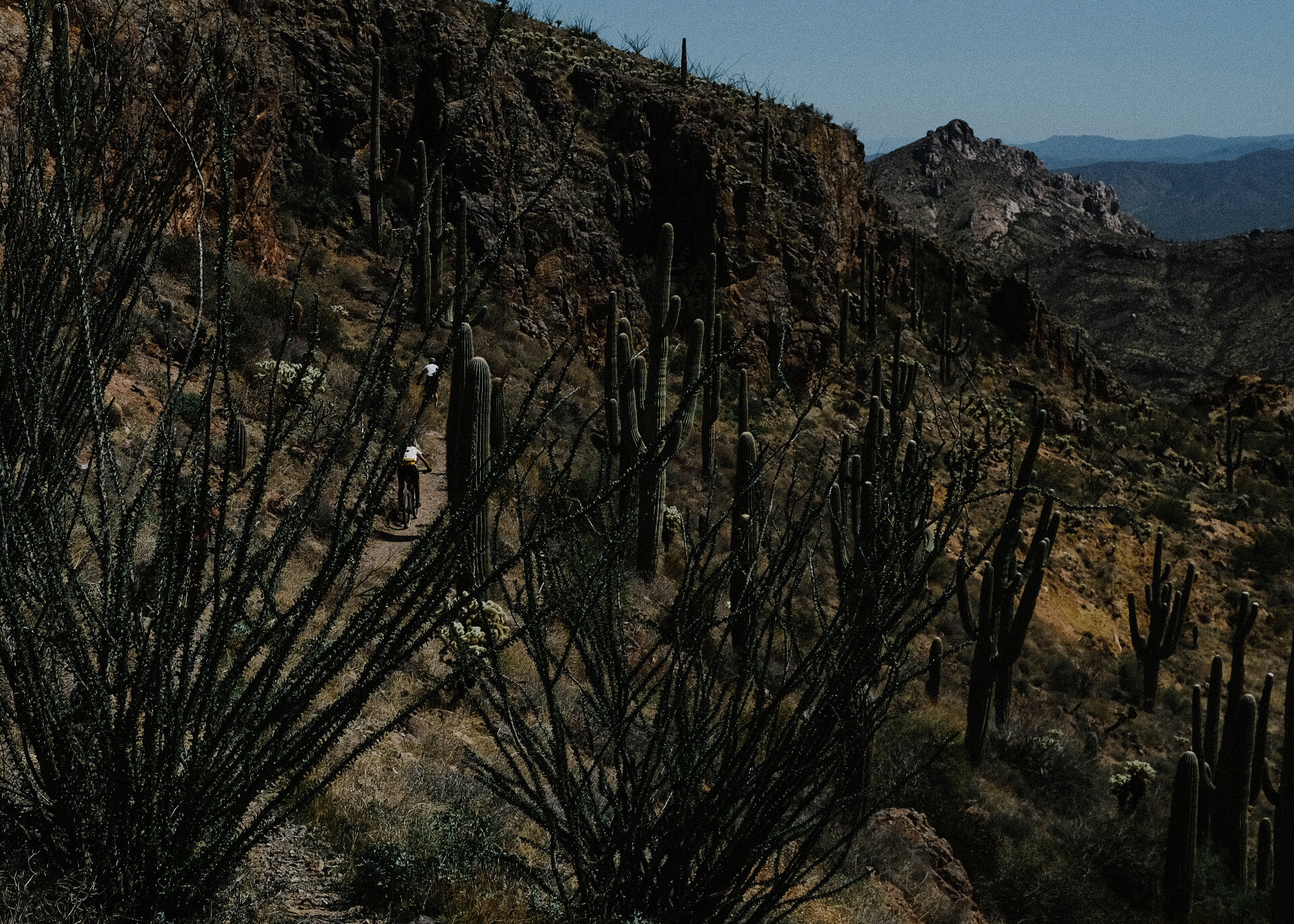

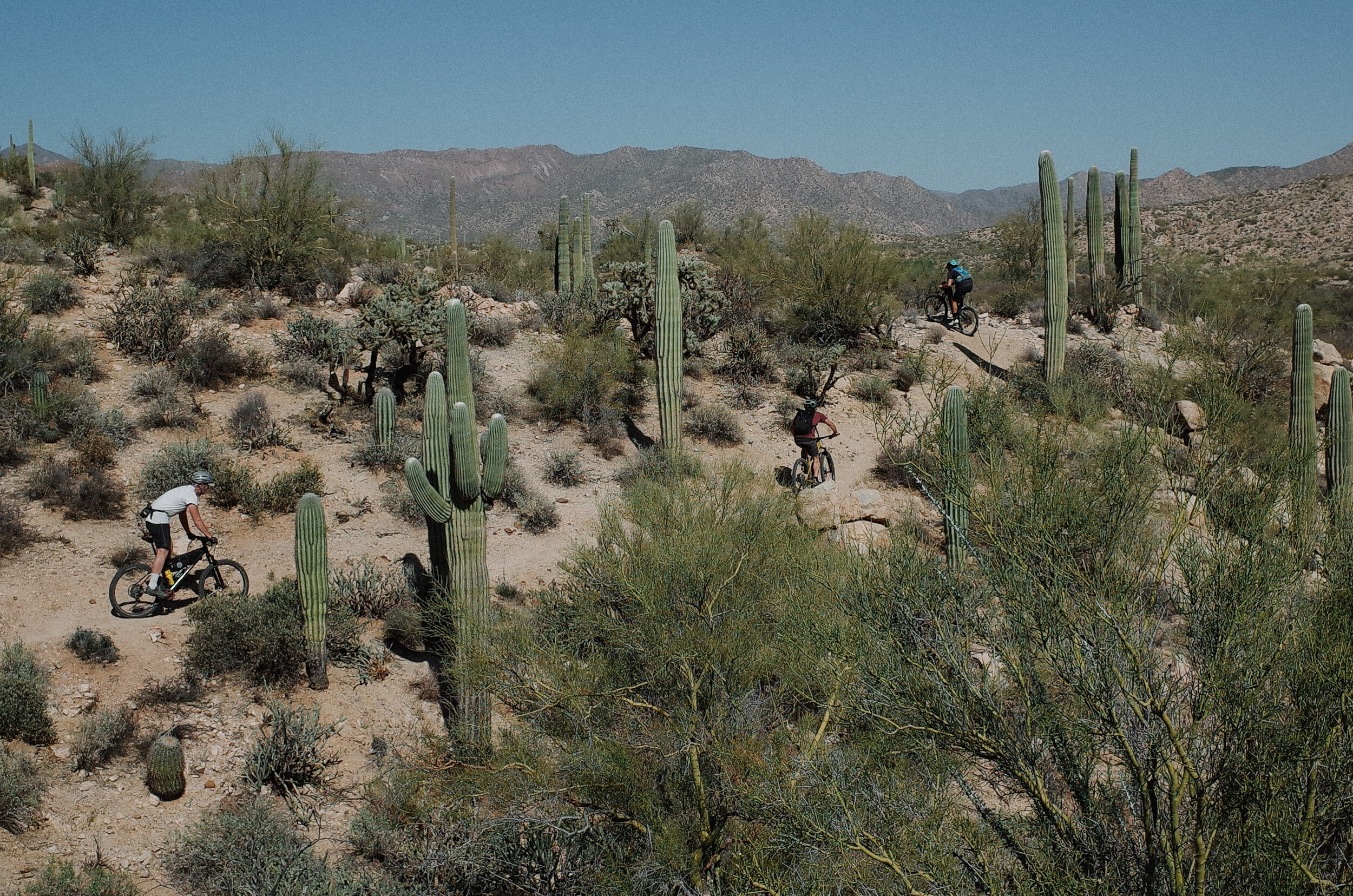

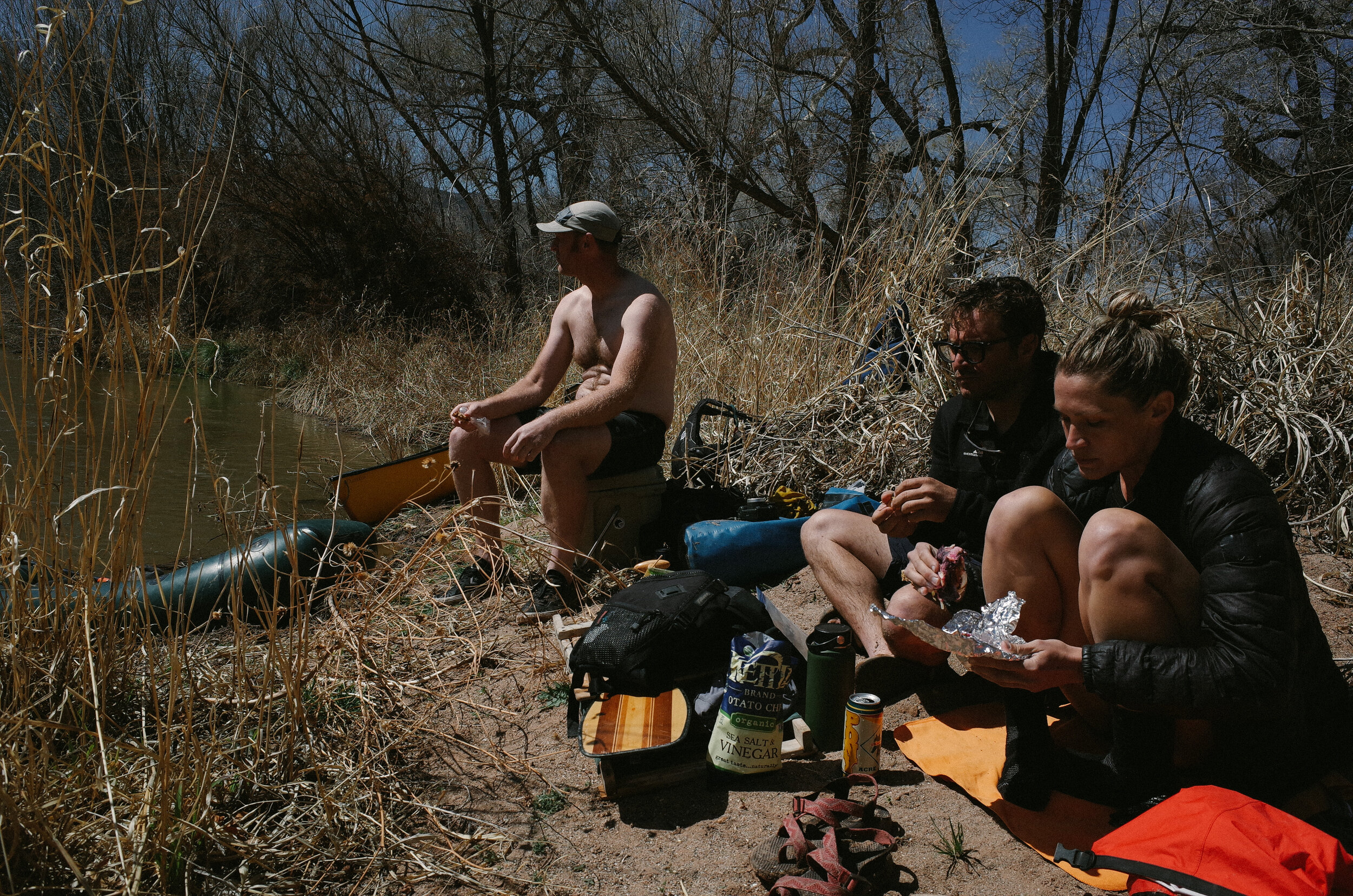
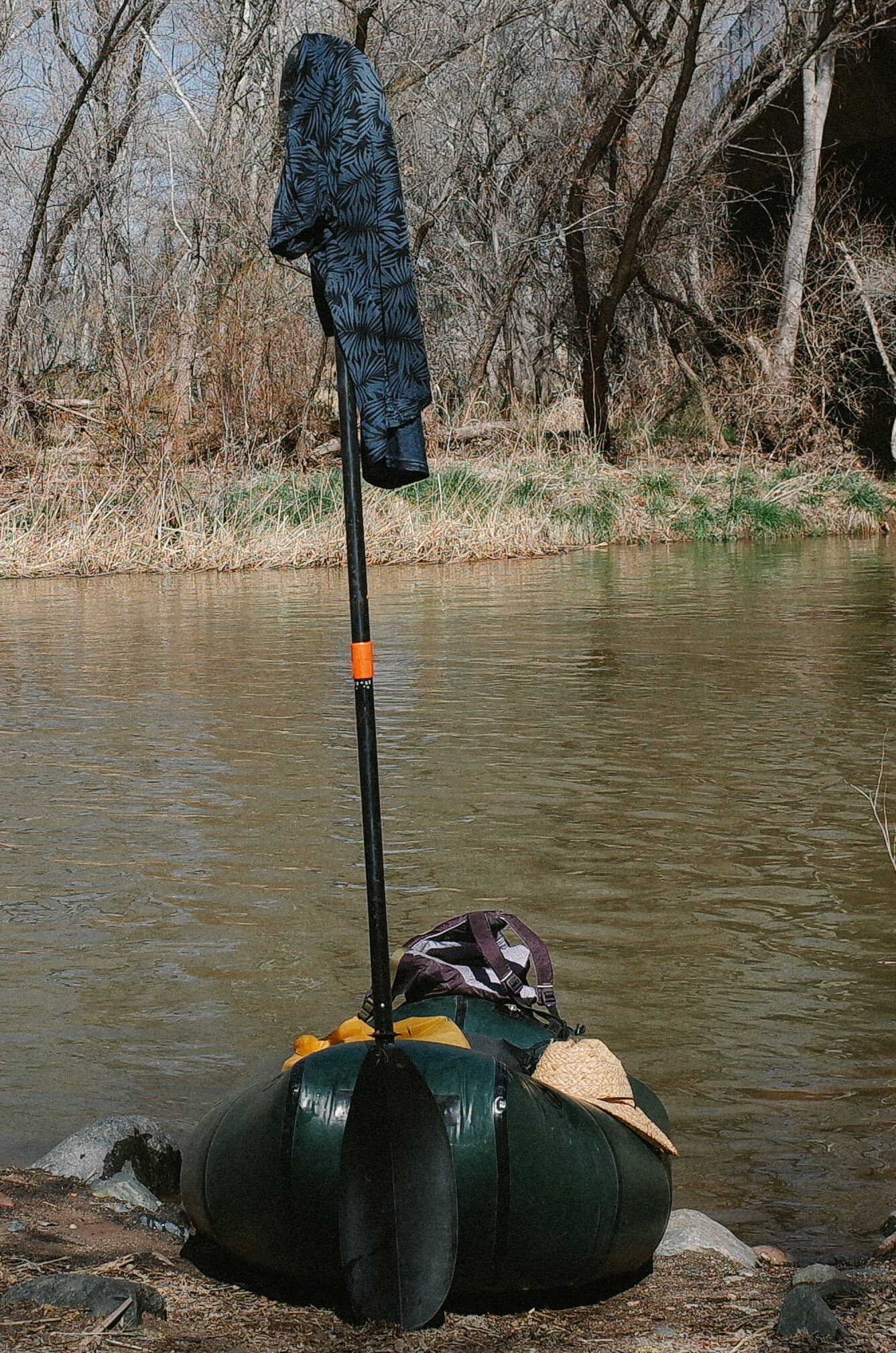

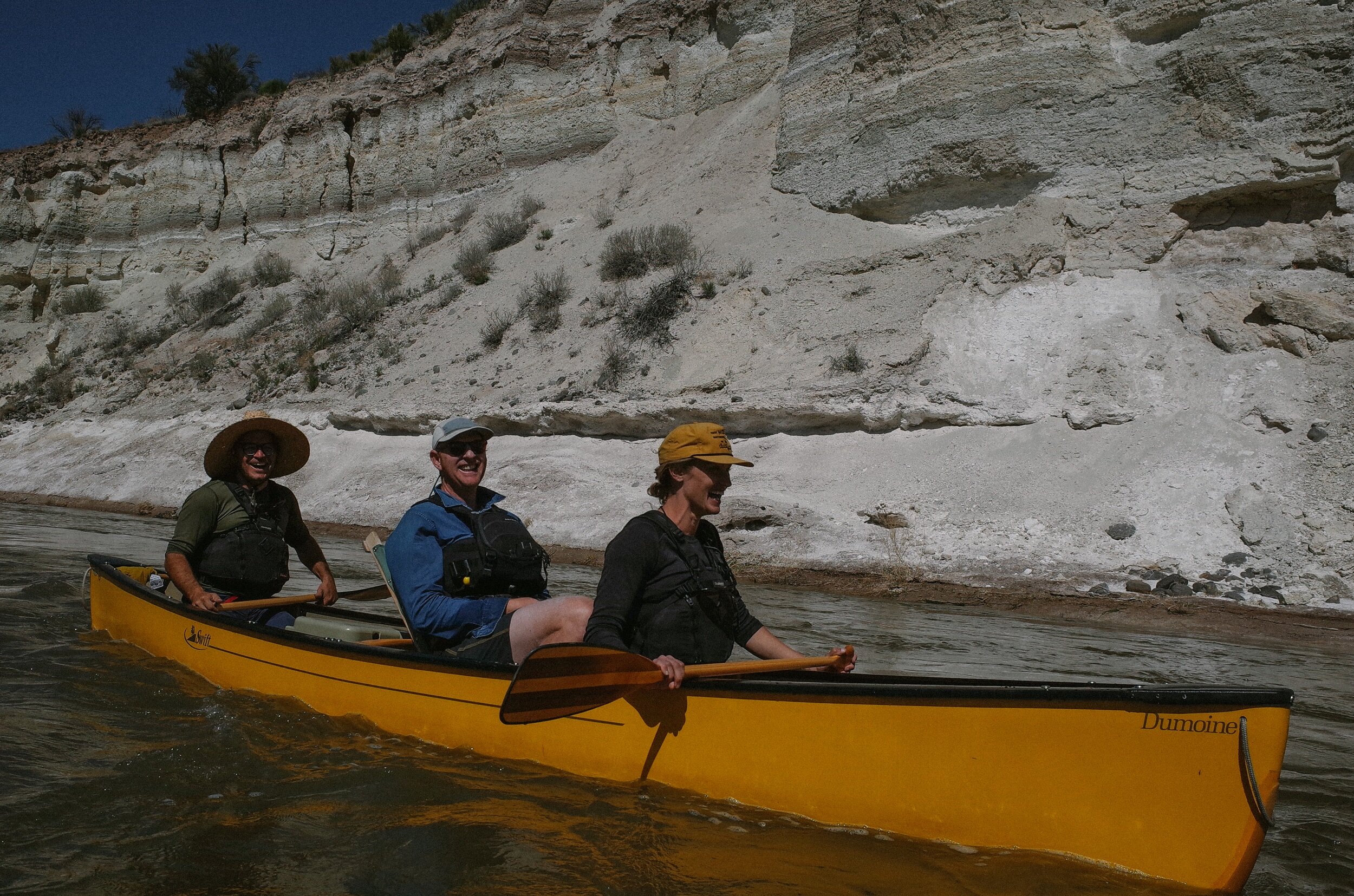
Over the last few weeks as we have been cramming in last-minute experiences for ourselves by venturing off the ranch to do some new-to-us rides in different parts of Arizona. One of the days, Hubert, Sean, Adam, and I tackled a single-day ride on the Arizona Trail from Picket-Post Mountain to Kelvin, a 36-mile ride on 100% single track with over 3,500 of climbing (and we were riding it in the downhill direction!). This ride follows an incredible and remote section of the Arizona Trail and one of the few consistently rideable single-track sections of the entire trail system. It was so cool to see the number of people from all over the world, thru-hiking and bikepacking this section. The Arizona Trail is truly a gift to Arizona and the world! Our ride's biggest challenge was that we just so happened to time our ride with the first major heatwave of Spring with temperatures reaching into the low 90's. Even with nearly 4 liters of water per person, the tole of a big day on challenging terrain and sun exposure resulted in chaos by the end of the ride. We all ran out of water with 5 miles to go, Adam abandoned the final climb of the route by bailing to the railroad tracks, and Hubert and Sean ended the ride with a medium case of heat exhaustion. We were lucky that their conditions improved eventually, and we did not have to call in support. This was a humble reminder that the heat in Arizona is no joke, to only stop in the shade for breaks, drink plenty of water with electrolytes, and cover up as much as possible. After some time to recover, we cooled ourselves down by floating the swollen Verde River the following day.



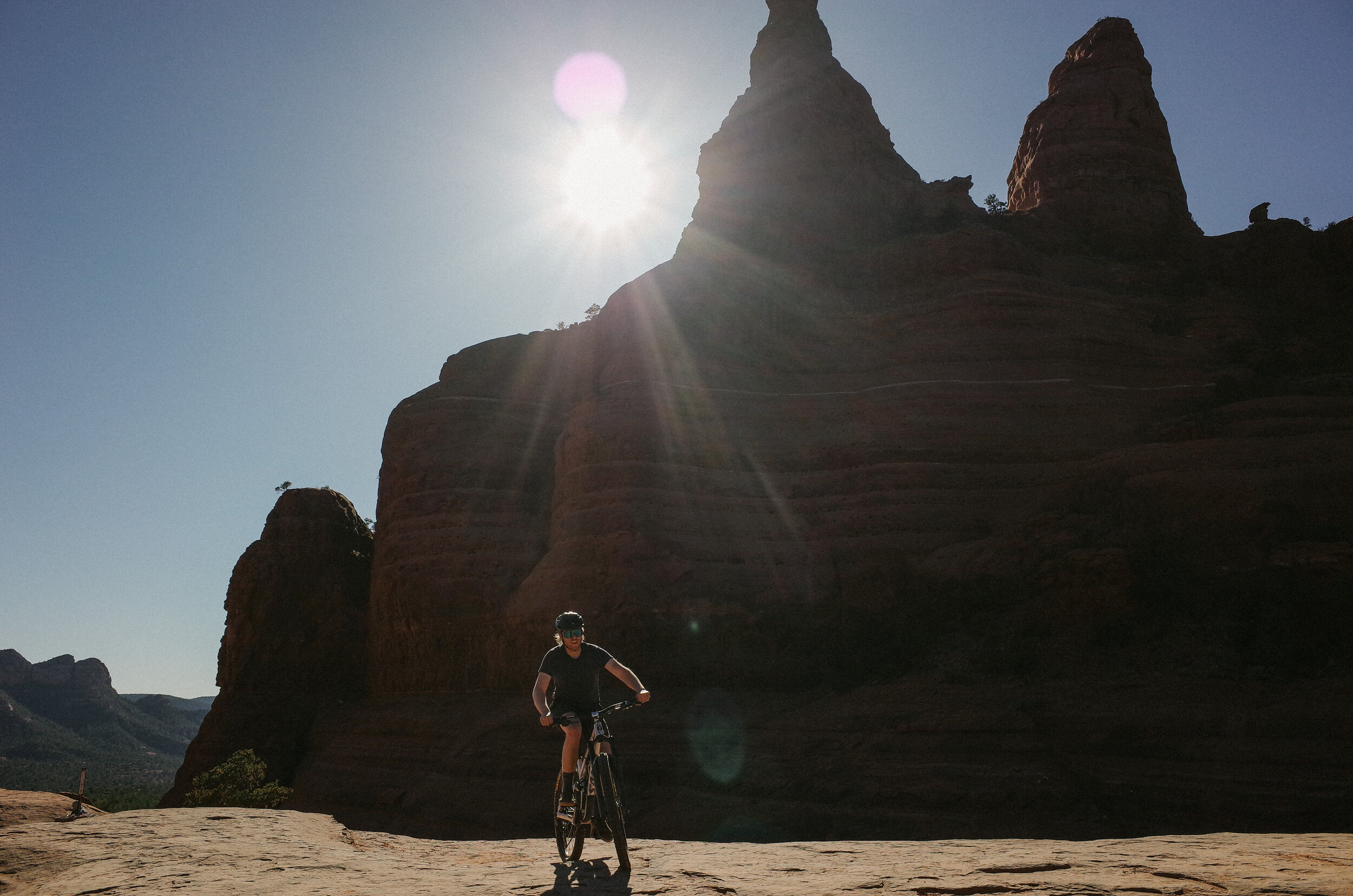

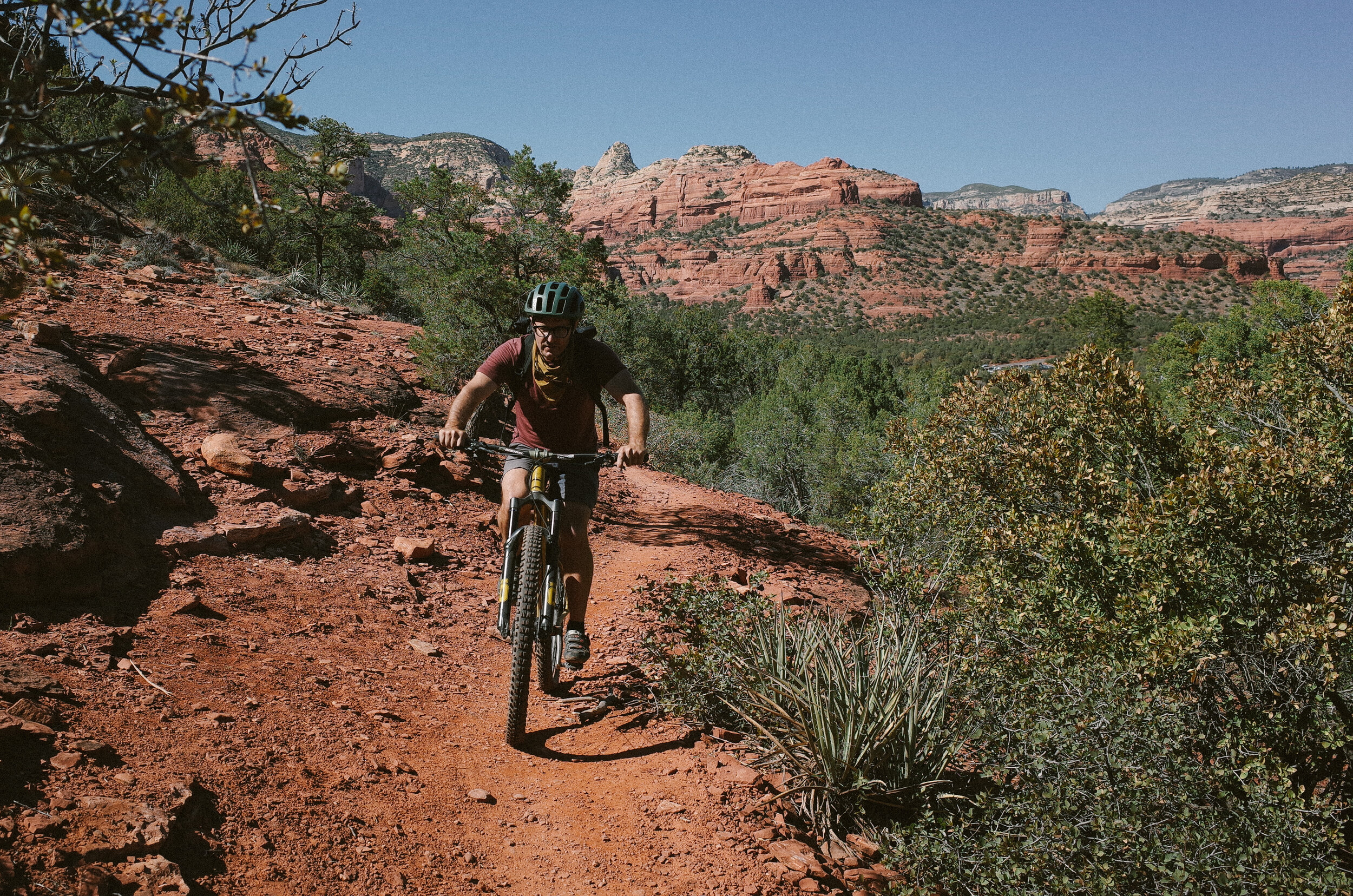
We also visited Sedona for some more mountain biking, which was my first time being there. Wow, is that place stunning and swarming with people. The single-track was incredibly fun and the perfect amount of pucker for my developing mountain bike skills. The crowds of people made me feel like I was in some weird natural amusement park. The landscape of red sandstone bluffs, cliffs, and slick rock immersed in evergreen cedar and pine forests, dotted with prickly pear and agave, was something out of a Jurassic Park or Star Wars movie set with tourism helicopters flying overhead. I didn't have the time to help plan these trips. Instead, our crew relied on the incredibly informative and hilarious graphic guides by the one and only Cosmic Ray and his Arizona guide book, Fat Tire Tales and Trails: Arizona Mountain Bike Trail Guide (New Mighty Moto Locals Only 23rd Edition). Cosmic Ray just recently passed away, and while I never had the chance to meet him, our crew honored him by staying true to his recommendations for route choice and flow direction. We were sure to quote all the salad bars we found ourselves in, too (according to the "G-narly G-lossary of Arcane Trail Jargon" in Ray's Book, salad bar means turfing it into the shrubbery. "The shmorgy of shred").
While the last few weeks have been hectic, I'm savoring these final moments and looking forward to slowing down a bit in Durango. I didn't get to see everyone and do everything I wanted to during my stay in Arizona. Still, I am incredibly grateful for the opportunity to spend time here, especially during such a challenging year. I am confident that the winter of 2021 and 2022 will bring more opportunities to be together, to share a ride, a sunset, and a conversation.
I'll be changing my focus back in Durango. I will be assistant coaching for Devo Exploras, a 6-8th grade all-girls bikepacking group, and fundraising through The Cairn Project to create more opportunities for young women and girls to get outdoors. All the while I will be preparing my mind, body, and equipment for the Tour Divide Mountain Bike Race in June.
While I will miss the beauty and the solitude of southern Arizona, I am looking forward to being back in Durango, having fewer splinters daily, taking baths, being around trees, floating down the Animas River and not driving an hour and a half to the grocery store for a while. Thanks as always for reading my ramblings. On to the next chapter!
E-Bikes: My Initial Impressions
I got an e-bike. It's true. Why not? Some of you may be concerned, saying to yourself, "What is the world coming to? What has the impact of isolation done to Sarah Swallow?"
The Controversy
E-bikes, also known as pedal-assist bikes, are certainly controversial within purist cycling circles. From what I understand from the conversations I have had with people on different sides of the debate, is this: some people feel like e-bikes are equivalent to motorbikes, and if you allow e-bikes access to non-motorized trails, it could lead to more motorbike access on those trails. Others feel like e-bikes on mountain bike trails create dangerous situations because e-bikes can travel at a higher rate of speed and can more easily cause collisions between cyclists. Another segment feel that e-bikes degrade the wild experience of traveling through the backcountry, exclusive to people who can get there under one hundred percent human power. Others fear e-bikes could create the racer-joe-on-a-bike-trail experience that we've all had, where we will be enjoying a slow pedal, a deep conversation, and the surrounding beauty to the cry of "on your left!" and a swooshing sensation that you can hear and feel. The shock sends your hands momentarily off the handlebars and your bike into the ditch. That's what some people think e-bikes will do to their peaceful experience in the backcountry.
Much of this debate is explicitly related to e-mountain bike access in the backcountry, where I am about to share my experience riding an e-gravel bike. Regardless, my experience riding my e-bike has led me to an initial opinion about the arguments I outlined above. I find e-bikes closer to real bikes than motorbikes by a long shot, but I cannot yet speak to what we should do for access on non-motorized trails. I don't want to open the door to more gas-powered motorbikes damaging trails, but I am confident that there are solutions to opening trails to e-bikes and not motorbikes. I think e-bikes have the same level of impact as regular bikes on trails. I also believe that the chances of getting spooked from a one hundred percent human-powered racer-joe-on-a-bike-trail and a sixty percent human-powered, pedal-assisted racer-joe-on-a-bike-trail are equal. I don't think it is fair to use most of these concerns as evidence for excluding entire populations of people access to the backcountry. I find these arguments problematic for our mission to promote inclusivity, accessibility, and relatability to beautiful natural landscapes, which in turn, has immense potential to create more advocates to conserve these spaces.
While I am here, I'd also like to acknowledge that e-bikes currently are still quite expensive, limiting accessibility to anyone who can afford $2,800 to $15,000 from Specialized Bicycles. Still, there are many other options and price points out there. I expect that in the years to come, these bikes will only become more affordable.
I imagine I will be leaning into the nuances of accessibility a bit more in the coming years as I spend more time at the Appleton-Whittell Research Ranch, a place that feels very much like a wilderness area to me. The AWRR reduces human impact as much as possible so that researchers can study the effects on the habitat. Still, at the same time, the ranch also needs to increase engagement, accessibility, and appreciation amongst the public to sustain and share their work.
I have found myself in the camp of always being e-bike-curious. I suppose the fear of the stigma of getting hooked on electric-assisted bicycles, which would lead to an abandonment of the mechanical genius that is a strictly human-powered bicycle, and falling into retirement, or the idea of giving up has held me back from committing to ride one. I imagine that some of my analog cycling friends rolling their eyes in disgust at my desire to ride and even write about e-bikes. I value and appreciate the aesthetics of their classic custom bike builds, colorful and artistic components and frame designs. I have even owned my fair share of beautiful custom bicycles. But since I have moved away from bike shops and no longer have access to the tools, space, wholesale pricing, and expertise that I used to have, my priorities have shifted. These days, I don't feel like I have the money, time, or creative energy to create custom bike builds. That's not where my energy lies at this point in my life. I'd rather be designing a route, riding that route, writing, reading, or just scheming for future projects. I blame it on the fact I am a millennial. I didn't grow up with knowledge of or experience with "classic" bicycles. I like fashion and cool bike style and do what I can with what I have because it makes my bike feel like an extension of my personality. Don't get me wrong, the fact that I have been sponsored by Specialized Bicycles for the past six years and have signed on with them for the seventh year no doubt influences my perspective here. They have been generously fueling my passion for riding with bikes that are reliable, comfortable, and light enough to inspire me to want to climb over 17,000 ft passes in the Andes loaded with around thirty pounds of gear, food, and water.
How I Became E-Bike Curious
My e-bike curiosity significantly increased in 2020 and started after I got my first taste of e-bike life at Ruta del Jefe (RDJ) at the AWRR last February. There are two different lodging and research compounds at the ranch; the lower east side compound includes the Swinging H ranch house (where I am currently living), the bunkhouse, the casita, and the lab. This lower zone is where bikepackers who are riding the Sky Islands Odyssey route camp. A mile up the road to the west are the headquarters, the director’s and conservation program manager’s residences, the barn, and additional camping space. I host the festivities for Ruta del Jefe up here by the headquarters. For last year's RDJ, my Mom brought her new e-bike, a Specialized Turbo Vado, to go on gravel rides with my Dad, who is always training for some ultra-endurance gravel event. She can keep up and even ride ahead while he can do his training ride, and they both get to spend an excellent time together on bicycles.
In the mornings at RDJ, my Mom would ride her Vado from the Swinging H up to the headquarters to help volunteer. Once her Vado was there, I would wisp it away to get around the ranch quickly to-and-from various places a mile or two apart to do the random tasks required to put on such an event. These were some of my favorite moments from the event because they were a burst of fun personal time, a much-needed break from the intense focus I had managing operations, and they helped sustain my energy throughout the weekend’s festivities.
Then, there was the inaugural RDJ scorcher race. A scorcher race is a mix between a cyclocross race and a fixed gear criterium completed on a fixed gear gravel bike. As far as I know, Ron, aka Ultraromance, aka my friend Benedict Wheeler created this super ultra-niche with enabling from friends and frame builders, Adam Sklar and Hubert d'Autremont. Not very many people own fixed gear gravel bikes, so scorcher races are open to all bikes and riders who would like to race a four-mile undulating gravel loop two times in a row at full gas.
As I recall, ten ambitious souls lined up at the start line for the RDJ 2020 inaugural scorcher race but the finale between Benedict, Adam (both on official scorcher bikes), and Jorja (on my Mom's Vado e-bike) was most memorable. With less than a mile to go, the three were riding neck and neck, seeing triple, and tasting blood; then, Adam dropped off the back leaving the glory to be decided between Benedict and Jorja. It was wheel to wheel as the final two rounded the corner to the finish line. Before anyone could believe what they were seeing, Benedict (in his true character) grabbed Jorja's handlebars. Simultaniously, he pushed her back as he propelled himself forward over his bars and slid head-first through the gravel and across the finish line. I was dumbfounded at the fact that the person tasked with feeding seventy-plus people in thirty minutes was covered in blood, gravel, and sweat for the sake of his vanity. But alas, it was a truly memorable finish, shenanigans of which will live on through campfire stories for years to come.
As I watched Jorja ride the e-bike during that scorcher race, I couldn't help but think how fun that looked. In the year since, I welcomed every conversation about e-bikes I could with people; some of them were inspiring, fun conversations with a lot of giggling, and some were heated debates. Throughout it all, the tales of the benefits of equalizing the pace of cycling for partners, the ease of running car-less errands, and generally how much fun e-bikes sounded appealed to me. When I moved to the AWRR for the winter and started to grasp how remote and isolated it was from the nearest town with services, I seriously started thinking of getting an e-bike for myself. I only had to mention that I was e-bike curious for Specialized to have a Turbo Creo SL Expert EVO (an e-gravel bike/e-diverge with 250 watts) at my door the next week.
Three E-Bike Rides
Since I received the Creo SL, I have taken it on a handful of rides. In particular, three rides stand out for my initial impressions of e-bikes and the potential I see for my specific uses. I must say, when a bike inspires me to think of riding creatively on new types of rides for different purposes, I feel like that's the sign of a good bike. The Creo SL is creating a refreshing level of fun and joy in my life, sensations that have felt a little muted this year due to the pandemic, social isolation, and the state of societal and political affairs.
The first ride I took the Creo SL on was a thirty mile round trip ride that was thirty percent dirt and seventy percent paved to get cash from the closest ATM in Sonoita to pay the guy who was delivering firewood in two hours. I finished a meeting, quickly pulled on some skivvies, filled up a water bottle, and dashed out the door. I put the e-bike on full throttle (3 out of 3) mode and pedaled as fast and as hard as I could. The speed was thrilling and addicting, and I settled into a pedaling pace shifting between the hardest three gears for the rest of the ride. Head down, hands in drops; I was riding at an anaerobic threshold compared to the speed I ride in the first thirty miles of a gravel race. The thing about e-bikes, at least in terms of my e-bike, is that they are pedal assisted, so it only will go as fast as you push it to go through pedaling and momentum. Stopping either of those two things causes the bike to throttle down, and its full weight to be felt as if you are climbing a hill in too hard of a gear. That's why once I got it revved up, it felt like it was best to keep it that way, and it became a fun game and good work out. I finished the ride (including stops at the ATM, opening and closing the ranch gate twice, and taking a picture) in one hour and twenty-six minutes. That's about a twenty mph average, including stops, which I think is a testament to the fact it is merely an assist, not a motorcycle. I came away from this ride feeling like I had gotten a perfect anaerobic workout while also accomplishing an errand relatively quickly without having to drive a car. My core was tired as it always is, but my legs were not throbbing as they would have been if I had made the same effort on my Diverge. I also had more battery remaining than I expected and wished I had just left it on full mode, rather than lowering it to 2 out of 3 mode halfway through the ride, but I was too scared to have to ride a dead, heavy e-bike on some of the hills leading to the ranch.
The second ride was a quick school break ride with my partner, Adam, or the "Lorde," as some know him. Adam has been using his time during COVID to earn his master's degree in social work to pursue a lifelong journey of mental wellness for himself and others by becoming a clinical therapist. Getting a master's degree and doing personal work, learning, and unlearning the habits required to meet one’s basic needs and enhance social functioning, self-determination, collective responsibility, and society's overall well-being is no easy task. To help, we have restructured our lifestyle to accommodate a fixed schedule for the first time in our relationship. This new schedule of classes on Monday, Wednesday, Friday, and Saturday has significantly diminished the distance we can travel, time spent bike touring, and on rides together in general. This adjustment just so happens to complement the need to limit our travel and activities due to COVID anyway.
These days, Adam doesn't always have the time to go out on my all-day-long exploration rides. He needs short and efficient study break rides so he can get his nose back in the books as soon as possible. Usually, I shy away from these short study break rides because Adam is quite strong and fast, and for me to tag along would mean I'd sign myself up for a torture fest, one in which I'd quickly lose the desire to try and keep up for. However, the last time he wanted to get out for a quick ride, I tagged along with the e-bike. Each of our competitive sides quickly came out to play, first by talking a little smack, then came the mental manipulation games and a false start on a climb, and then came the race. It didn't take me long to prove to Adam (someone I have had fierce debates over e-bikes) that I could out-pedal him. He could keep up in some places for a short time, but overall, that was it. With this confidence, I settled into a parallel ride where Adam pedaled consistently hard, I could stop to take pictures, pedal hard to catch up, pull him or ride with him for a bit, and finally pedal off the front and stop again to check something else out. This ride was enjoyable, served both of our needs, and equalized the ride's overall pace. I wasn't frustrated with him going too fast, I wasn't exacerbated by how hard I had to keep up, and I didn't have any guilt for stopping. I could jump into anything I wanted to do on the ride while also sharing a ride with him. On the other hand, Adam gets my company on a short and fast workout and is pushed to limits that equal the Durango Tuesday Night Worlds group ride.
The third ride I took my e-bike on was one part scouting mission, one part errand, and all parts adventure. I decided to go for a ride that had been on my list to scout for a while. I wanted to ride the old railroad grade through the adjacent Babacomari Ranch, which I have gained permitted access to by living here. I planned to follow the dirt railroad to Huachuca City and then take pavement to and through Fort Huachuca to renew my residents' pass to gain access through the base which is slightly a shorter drive to the full services of Sierra Vista from AWRR. Ultimately this errand would save me close to two hours of driving.
The first part of the ride, the scouting part, was an enjoyable spin where I took in the beauty of my surroundings, enjoying the fresh cool damp air, and the grippy dirt from the rain we had received the day before. I had the pedal-assist set to 2 out of 3, which felt like it perfectly matched the amount of effort I wanted to put in. Once I got to the pavement and the busy four-lane road leading to Fort Huachuca, I put the bike in 3 out of 3 mode and turned on the hammer. I rarely will subject myself to roads like these because I feel like they significantly increase my chances of being hit by a car. I was reminded of this when a red truck with four muffler pipes sticking out in different directions pulled into the shoulder I was riding in, laid on the horn, and passed closely at high speed. This experience only made me pedal harder, and I was grateful for the assistance that shortened my time on that road. When I finally reached the Fort, storm clouds loomed overhead. It looked like I would get stuck in some rain without a rain jacket. Having not seen rain in over two months (aside from the previous day), I had only brought my wind jacket. As soon as I got my permit for the Fort, I hopped back on my bike to try to beat the rain. I had 15 miles of rolling hills to go, and I had only a quarter of power left. I rode on 2 out of 3 mode until the final power light quickly went red, at which point, for the first time, I rode in one 1 out 3 mode. I could feel the bike's weight more; the hills and the effort to climb them felt as hard as a regular bike. However, there was still the looming fear that I would have to pedal a dead heavy e-bike on the steep rocky miles leading to the ranch, which motivated me to pedal harder to not to waste any remaining battery life. Finally, having gotten only a little wet and cold, I reached the ranch road, still with one red bar of power left, and pedaled my way home. I was exhausted from the unexpected challenge that the e-bike had created for me through inspiring a false sense of confidence, distance, and capability. This time, my legs hurt, my body was sore, and I even required a mid-day nap the following day.
My Impressions
In essence, I am a fan of e-bikes, pedal-assist bikes; whatever you want to call them. I certainly would love a longer battery life and wider tires, but I'm sure that's all coming in the near future. I don't see myself ever riding an e-bike on group rides with friends who are not riding e-bikes, but I am interested in going for e-bike group rides. For the most part, I see it as a tool for more solo scouting rides, commutes for errands, or quick-school-break-rides with Adam. Living in a place that has four miles of gravel each way to get on and off the ranch, I am more inclined to ride more frequently off the ranch to explore the surrounding areas on my own with the Creo SL. It promotes quick, low-impact mental health breaks, solo physical workouts, and tilts the scale in my favor on short, fast rides with my partner. The result is that I am riding more, driving less, seeing more places in a shorter time, getting stronger (through riding more frequently), and having a ton of fun.
Living On The Research Ranch
It's been over two months since Adam and I moved down to live at the 8,000 acre Appleton-Whittell Research Ranch (AWRR) 100 miles south of Tucson in Elgin, Arizona for the winter. For an introduction to the research ranch and what I am doing here, feel free to read my previous story about living at the AWRR.
On a bike tour the extent to which I typically go without seeing another person rarely exceeds three days. Scatter back-to-back three-day periods across three months, and you can get a good idea of how isolating it felt to ride the Trans America Dirt Road Trail, also known as the TAT. The 5,000-mile tour of the TAT back in 2015 was the most isolating experience I have had, until recently. Living on the AWRR during a pandemic has been an unexpected level of isolation I have ever known. This adjustment dominated what feels like the whole month of December. During this time Adam and I worked on getting the Swinging H ranch house, which is over one hundred years old, cleaned and fixed up into a more livable space for our five month stay. Because no one has lived in the Swinging H consistently for over twenty years, this project included getting it set up with hot water, internet, safe electricity, wood for heating, fewer cobwebs, less dust, and deterring mice and woodpeckers. We did all of this with the constant help and support of the ranch director and staff, Cristina, Ben, and Suzanne.
Contributing to the isolation of the research ranch's geographic location being 45 minutes from the closest grocery store and closed to visitors due to high Covid transmission rates in Santa Cruz County, is that there is minimal internet access. The only type of internet available at the research ranch is satellite internet, which requires sending radio signals to a satellite in space, which then beams the internet to the dish attached to the house. Most people have fiber or cable internet, which is typically instant and unlimited. Satellite internet is the new thing for folks who live in remote locations where cable and fiber is too expensive or impossible to install. For reasons beyond my understanding, satellite internet is limited to 100 Gb per month and delayed. Apparently, Elon Musk is working to improve the landscape for the future of satellite internet, but I am skeptical. Since moving here, Adam and I have taken a scrupulous approach to our data usage. We have cut out anything unnecessary to preserve what we have for video calls with friends and family, meetings, ten hours of zoom school per week, homework, and photo uploads.
Do you know what uses up a lot of unnecessary internet data? Instagram, Tiktok, and Netflix. I have largely stopped using these platforms during my stay here. I say largely because I will typically sneak a peek at the Tiktok videos my sisters send me. I'll also occasionally check my messages on Instagram via my web browser on my phone. Instagram is terrible to use through the web browser, but I use it because having the app is too easy and can quickly become an unconscious habit. As a recovering addict, I do not want to make it any easier to score my fix.
Overall, this detox feels like what I have needed for a long time. Whenever I feel lonely, I remind myself that Covid is mainly responsible for this, considering that the ranch would be open to regular bikepacking visitors riding the Sky Island Odyssey routes. I would also typically be preparing for Ruta del Jefe at the end of February, inevitably hosting a few gravel camps, as well as socializing with locals, fellow snowbirds, and whoever was in town visiting for the week. While I am certainly missing my friends this winter, in this social and streaming void, I have been embracing the space, time, curiosity, and interests that living on a research ranch inspires. Over the last couple of months I have had more time to ride, read, write, and cook; so much cooking, in fact, that I earned the nickname "Chef Fireball."
I have been riding my bike on and off the ranch, test riding zones I overlooked in the past. I am finding so much more than I anticipated and using this new information to update my current route offerings in the area and to develop some new ones. Despite its large and diverse road network, routing in this part of the world has never been easy due to nearly every base map being incorrect or outdated. I suppose the challenge is what makes it so fun and why I enjoy exploring down here so much.
I also have been reading about all the facets of the research ranch to inform my writing for some relatable and digestible educational signs and brochures for the average visitor. Thanks to contributions from former ranch directors Carl and Jane Bock and the University of Arizona Press, there is an abundance of literature written about the AWRR and the surrounding area. This library has provided me with an education of the history of the research ranch and livestock grazing in the Southwest; semi-arid grassland habitats; archeology of southeastern Arizona; and the endangered Chiricahua Leopard Frog. I am learning how humans have used land throughout history to our benefit and coming to terms with the impact that use has had on the land. Living on the research ranch, a semi-arid grassland not grazed by livestock in over fifty years, I can make these connections in a more personal way and see the positive effects of limiting human use first-hand. It seems that we humans are the invasive species spreading, choking out, and taking over native habitats for our greedy benefit.
Grasslands vs. Livestock Grazing
My time here has turned me into a grasslands snob, which is a blessing and a curse. When I ride off the ranch, I can't help but turn my nose up at some of the surrounding grasslands for how short and overgrazed they look or how many of them have been reduced to dirt and replaced with hoof prints and cow patties. This experience, coupled with my new knowledge, has led to an aha moment in understanding how detrimental the livestock grazing industry has been to the environment by eradicating biodiversity and beauty from natural landscapes and viable habitats for endangered species, specifically throughout the Southwest and Intermountain West. This information compounded with the knowledge that methane from the livestock industry contributes to 14.5 percent of the global greenhouse gas emissions has led me to cut meat out of my diet again. This time, however, not eating meat has been easier than it ever has been in the past.
The Christmas Bird Count
A highlight of the last couple of months was participating in the annual Christmas Bird Count, or CBC, where I spent an entire day moving slowly through the habitat within one or two miles of the Swinging H ranch house and recorded each bird species seen and their amount. Administered by the National Audubon Society, the CBC is a census of birds in the Western Hemisphere performed by volunteers. The count results provide population data for use in research and conservation biology but it also just so happens to be a fun recreational activity. I credit Aaron Van Geem, a friend and wildlife technician who joined us for the count, for making my first CBC an impactful and memorable experience. Aaron is trained and certified to track most animals in the western U.S. for conservation agencies and has worked specifically with jaguars, pygmy rabbits, bobcats, and Mexican spotted owls. What a job! While I have a good sense for spotting critters and Adam can identify different types of birds, Aaron was able to identify each specific species, including their gender and age. As a team of three, we allowed ourselves to fully geek out on birds from sunrise to sunset, at the end of which we were all thoroughly exhausted. This experience provided me with a greater appreciation of the biodiversity in this place where I get to live and cemented the species who also call it home into my memory.
Swinging H Ranch House
A few facts about the Swinging H ranch house; it was part of a separate ranch acquired by the Appleton family when they formed the Elgin Hereford Cattle Ranch over 20 years before selling their cattle to dedicate their land to be a research station in 1967. As we call it, the “H” is part of a lower compound of buildings on the research ranch about a mile from the headquarters, directors and conservation managers' residences and the barn. The area around the H includes a bunkhouse, casita, and a lab. It's nestled lower than most places on the ranch in O'Donnell Canyon at 4,700 ft, surrounded by rolling hills of grasslands and the occasional oak or sycamore tree. We heat this old house by schlepping thirty-to-forty-pounds of oak and mesquite into the house twice per day, splinters and all. The living room window inside the H offers a distractingly good view of the Mustang Mountains. The backyard, creatively landscaped with ocotillo, sotol, agave, prickly pair and blooming yucca, serves as a playscape for many neighborly birds: the Rufous and White-crowned sparrow, Canyon towhee, Lesser goldfinch, Curved-billed thrasher, Pyrrhuloxia, Loggerhead shrike, Roadrunner, and even an occasional visit from the local American Kestrel.
Wind
The weather of a semi-arid high grassland plain in the winter is a lot like living in Ohio in the sense that you can experience a 70-degree sunny day, 3" inches of snow and a tornado all in one week. A tornado is an exaggeration for southern Arizona, but the sentiment is the same when there are days where the near-constant winds increase 30-40 mph speeds. These days, the wind creates an eerie, unsettling howl through each gab of this old house. I typically hunker down inside, taking refuge from the intense conditions outside, and watch as the grasses blow as if they were waves in a stormy sea. Sometimes, I will venture out into the wind to get a break from the house and I am usually pleasantly surprised by how fine it is to ride through, primarily because of the massive tailwind for half the ride.
Time
Time feels like it is simultaneously flying by and not moving here. Part of me is overwhelmed by February already being here, and part of me feels like I have lived here for over a year. It is not uncommon for me to wear the same pair of wool-leggings for five-days straight. I am cherishing these moments with the expectation of a busy February with the ranch gradually opening back up to bikepackers; a tour on the Sky Islands Odyssey full loop for a film project with REI and Ford Motor Company; visits from a small cohort of friends from Austin, Texas; and my parents driving in from Ohio. Note: Adam and I are scheduled to quarantine and be tested before and after each of these visits to combat the spread of Covid.
My time at the research ranch will be coming to an end in April. In the meantime, I still have much I would like to see, learn, and do during the rest of this winter and making a list for winters to come.
Here is a list of some of the great books I have been reading during this time:
Amann, Andrew W. Jr. Bezy, John V. Ratkevich, Ron W. Witkind, Max. Ice Age Mammals of the San Pedro River Valley. Arizona Geological Survey, Tucson
Bahre, Conrad J. 1977. Land-Use History of the Research Ranch, Elgin, Arizona. Journal of the Arizona Academy of Science.
Basso, Keith H. Wisdom Sits In Places: Landscape and Language Among The Western Apache.
Bock, Carl E. Bock, Jane H. The View From Bald Hill: Thirty Years in an Arizona Grassland
Bock, Carl E. Bock, Jane H. Sonoita Plain: View from a Southwestern Grassland.
Sayre, Nathan F. Ranching, Endangered Species, and Urbanization in the Southwest. 2005. The University of Arizona Press
A Getaway in the Chiricahua Mountains
Photos by Hubert d'Autremont. If you like handmade custom bicycle culture consider supporting Huberts work by purchasing a Rangefinder Book.
The Chiricahua sierra has been on my list of places to visit in Arizona since I started visiting this part of the world. In 2018, fresh off two and a half months of bike touring in Japan, New Zealand, and Australia, Adam and I attempted to ride back home to Durango from Tucson. Within four days we called it quits on Christmas Day when we got caught in a blizzard in the Chiricahuas. Our friends Benedict and Nam graciously came to the rescue, transporting us to the nearest hot spring and then to the nearest town so we could rent a car and finish the journey back home. It was one of the best Christmases to date.
I didn't return to the Chiricahua cordillera until recently when I attempted the same route. This time, I was riding in the opposite direction from Las Cruces, New Mexico, back to the Appleton-Whittell Research Ranch in Elgin, Arizona. After pedaling two hundred miles in anticipation, I learned what all the fuss was about as I slowly approached the east side of the mountain range where a citadel of stone columns, spires, and hoodoos rose from the forest. Contrasted with the bleak, flat, and exposed desert of the vast San Simon Valley that I had just pedaled across, the Chiricahuas offered dense shade and a respite for my sunburn. They were also beaming with life; white-tailed deer, turkeys, javelina, and even running water after one of the driest monsoon seasons on record.
The Chiricahua Mountains’ namesake comes from the Indigenous People to the land. The Chiricahua Peoples battled to defend their territory from Spanish-Mexican settlers and armies for over two hundred years. However, after the Gadsden Purchase of 1854, they were ultimately and violently forced from their lands by the U.S. Army so that Euro-American settlers could colonize the West. The mountains themselves are located thirty-five-miles north of the southern border of the U.S. with Mexico, and on the eastern Arizona border with New Mexico. The main gravel road that travels across the range is seventeen miles long, split between a 2,700 ft climb and a 2,000 ft descent. This road is a rare high altitude gem through one of the largest of the Sky Islands of southern Arizona, reaching 8,000 ft (the highest peak in the Chiricahuas reaches 9,763 ft). A “sky Island” is one of many isolated mountain ranges in the Sonoran and Chihuahua deserts that produce multiple life zones with increased elevation. This phenomenon creates an island habitat for diverse flora and fauna surrounded by a desert sea.
As I pedaled the ten miles of winding and twisting gravel road to the top of the pass, I couldn't help but think back on what the jaguar experts who have spoken at Ruta del Jefe have said about this place. These experts believe that the Chiricahua Mountains are now the ideal habitat for American jaguars and Sonoran ocelots. Sure enough, in 2019, a rare spotting of a Sonoran ocelot was recorded by Conservation CATalyst, the same group who documented El Jefe, the famous American jaguar who lived in the Santa Rita Mountains. If you wonder what an ocelot looks like, understanding its name's origins should give you a good mental picture. The word "ocelot" comes from the Mexican Aztec word, tlalocelot, which means "field tiger." For more ocelot coolness, check out this remote action camera footage of Lil Jefe documented in the Chiricahua massif. Lil Jefe, named after his famous relative, has inspired hope for the future of conservation habitats for these extraordinary creatures, such as within the canyons of the Chiricahua from mining, urbanization, and deforestation. Lil Jefe also serves as a symbol to raise public awareness to protect his species from poaching and retaliatory killings from their perceived threat to livestock.
I wanted to be the last person on the mountain pass to increase my chances of having an unusual critter spotting. I pedaled slowly to capture the last sun on the range. My senses were heightened to the slightest rustle of leaves as I hoped to see something, anything. But I saw nothing until later that night at camp when the darkness and my heightened sensitivity turned to paranoia when I heard something(s) rustling in the grass around me. Was it a jaguar, a mountain lion, a black bear, or an ocelot? I could not see it. Having spilled my mac ‘n' cheese dinner on the ground beside my camp, I decided that whatever critter was looming in the shadows would now be even more interested in me. So, I buried my cheesy spilt meal, folded my sleeping pad, bag, and bivy into a taco, slung it over my shoulder, and rode down the road to a different camp spot. My thinking was that sleeping in a more established camping area would deter whatever critters the last site had produced or, at the very least, allow me to see them coming. Within an hour, I heard the same noise. I sat up quickly, my heart racing, shined my headlight in the direction of the noise and finally spotted the culprit of my fear—a skunk. I was only somewhat relieved, having heard recent stories of skunks who like to cuddle with campers inside their bivouacs, so I shined my light on the little ball of black and white fur until they strolled away.
After yet another sip of this wild-feeling place, I was determined to return to explore some of the few gravel roads I noticed while traveling on my short visits. The roads, scenery, camping options, and serenity seemed ideal for a little gravel getaway, to escape the grasslands for a shaded pause within the forests, and for Adam and I to connect with friends Hubert and Sean before the holidays. In preparation, I put a few cycling routes together while Adam added some hikes to a Ride with GPS collection, which gave us various options to choose from for a three-and-a-half-day base camp in the Chiricahua range
The trip started like any does when you meet your friends in a new faraway place. The fresh smells of pine and juniper complemented with cool, clean, crisp air inspired a sense of wonder and excitement for what would unfold in the following hours and days. We caught up with each other, picked our optimal camp spots and angles, prepped the bikes for the weekend ahead, and gathered a Yule log and tinder to keep us warm and in the holiday spirit when the sun would go down.
Over the next three days, we spent the first two riding gravel roads through the mountain and in its foothills to see where they would lead. These days started late, around noon, after we had slept in, thawed out our frozen water, sat by the fire, and had a heaping breakfast. By the time we would leave camp the temperatures would be perfect in the mid-60s, but would get chillier by the hour as the sun sank behind the mountain skyline. Driven by the beauty and curiosity for what lay around the next corner, we spent these days riding further than our initial plans, making up for our late starts by maximizing the dusk and enjoying the sunsets. We did this even though it required cold ears and fingers as we rode into temperatures dipping into the low and frigid forties. We would return to camp, use the spirit and momentum we had gained from our ride and get straight to work on getting the fire started, warming up, and feeding ourselves, to make the outdoors habitable and pleasant. We would talk by the fire and over-guess the time of evening until we resigned to the call of our warm sleeping bags and pillows. We peeled ourselves away, one-by-one for an early bedtime, leaving the last two standing to douse and bury whatever coals of the Yule log that remained.
I had planned an ambitious eighty mile circumnavigation of the Chiricahuas for the third day of our gravel getaway. However, our group felt that we could all use something less committing and more relaxing. After all, the holidays and our old priorities of using this time of year to "train" for the early season's gravel events like Ruta del Jefe and the Mid South felt a little pointless due to Covid, canceled events, and fewer friends visiting this year. The benefit of this decision is that I now have another reason to return to this magical place. As an alternative to the big ride, we opted for a nine mile round trip hike to Silver Peak. A nine mile hike compared to an eighty mile ride sounded like a piece of cake, so we approached our morning like all the others, casually sitting by the fire and shooting the breeze until noon when we set off to ride to the trailhead to start the hike.
I'm not much of a hiker to be honest, and I quickly fell off the back. I did what I could to manipulate the group to slow down to my pace by positioning myself toward the front of the line, engaging in deep conversation, stopping to look through my binoculars, and taking pictures. If you are a slow hiker like me, give this strategy a try sometime - it works. The trail meandered at a low grade. We continued to march slowly up through each of its different biomes, from the low desert cacti to scrub oak, pinyon, and juniper, to eventually ponderosa pines and douglas firs. All the while, we were surrounded by a wonderland of rock faces, pinnacles, towers, steeples, battlements, and obelisks; eroded from layers of ash caused by a volcanic eruption that occurred twenty seven million years ago.
At what felt like halfway through the hike, we took a snack break and checked our progress. To our shock, we saw that we still had 2,000 ft yet to climb. With daylight already dwindling, I knew we could not get to the top and make it down before total darkness, and of course, most of our group did not bring headlights, insulated jackets, or gloves. Despite all of this, no one seemed interested in turning around. I realized at that moment that this hike had just turned into a long, late, and cold adventure, one in which I was the weakest link. I sprang from my seat and started briskly hiking and jogging to the top as fast as I could while the guys continued at their natural conversational pace, just a switchback or two behind me.
Silver Peak was as glorious as its name. The viewpoint provided spanned far south into Mexico and across the broad San Simon Valley of New Mexico. These are views you can't get from the seat of your bicycle. After a short break to eat a late lunch and rest our tired feet, we started the trek/hike/tramp/trudge down the mountain. The short period of brisk hiking that I had done to reach the top had finally taken its toll as my quadriceps and hips tightened and atrophy set in, necessitating a long, slow, every-person-for-themselves tromp down the mountain. Just as darkness started creeping through the valley, we reached the trailhead, retrieved our bikes from the bushes, and then found ourselves in an awkward standoff with a pack of javelinas devouring a tasty and spiny prickly pear. After they moved along, we pedaled our way back to camp, thoroughly exhausted from a weekend well- lived. We spent our final night connecting beside a fire, a simple experience that we used to take for granted but now cherish as one of the few places it is safer to be together.
The Chiricahua chain offers a quiet escape. Located two and a half hours from Tucson, they will likely stay that way for a while. Still, like any special place like this, the serenity of them will inevitably come under threat in years to come as more people migrate from the big cities to find solace, clean air, and cooler temperatures in this ever-warming planet. When it is safe to do so, get out there and enjoy it for yourself, but please do what you can to help keep this place a viable habitat for all living things to coexist, thrive, and enjoy peacefully by leaving no trace and donating what you can.
Sarah Swallow's Logo by Mary Lytle
After years of back-and-forth and putting it on hold, Mary and I have finally landed on a symbol that represents the many different and ever-changing roles I play in my profession. Not only does this image represent me, but it also depicts connection; to the iconic Mustang Mountains that have inspired so many of my projects and collaborations, to making connections through linking roads for routes; to using those routes to connect me to self and my journey in life, and to making connections between people and places.
Sky Islands Odyssey East Loop Print Pre-Order
Mary has been illustrating my concepts for rides and landscapes for over ten years now. There have been some classics over the years, but I have to say that this illustration of the Sky Islands Odyssey East Loop is my favorite. Mary created this illustration last year, depicting the classic view of the Mustang Mountains from east mesa as bikepackers approach the Appleton-Whittell Research Ranch along the route. The image includes some of the iconic elements and wildlife you'll see, particularly around the ranch. When Cream Design and Print in Tucson, AZ, printed the design on some seafoam green t-shirts to be sold through the AWRR, they threw in a single print, which gave Mary's artwork a whole new life. I've meant to get some made and sharing them with you ever since, and I finally got around to putting the order in a few weeks ago. When we are simultaneously stuck in our houses on video calls and dreaming of the places we have been or want to go, a little inspiration and decoration can go a long way. This print provides both. These will be available and shipping the week of February 14th, but I am opening the pre-order for the limited quantity of prints now.
Humanitarian Crisis in the Borderlands
If you have attended Ruta del Jefe or read the Sky Islands Odyssey route guide, you know that not everything down in the borderlands where I live is about frolicking pronghorn in a beautiful grassland landscape. Beneath the surface is the reality that the U.S. immigration policy, Prevention Through Deterrence, deters migrant refugee traffic to more hostile terrain that is less suited for crossing and better suited for enforcement. As a result of this strategy, hundreds of undocumented migrants suffer or die from dehydration, starvation, and the extreme journey through the desert each year within the borderlands.
I am reminded of this reality daily while living on the AWRR throughout the constant drone traffic overhead and surrounding border patrol check points. The other day, however, I was riding around the ranch and came across a deserted backpack by one of the cienegas, which was a harsh reminder that even in five inches of snow and ice, refugees are still passing through the desert. No More Deaths, a humanitarian aid organization that provides water and food along migrant routes, just came out with a new report as the third installment of their series: Disappeared: How U.S. Border Enforcement Agencies are Fueling a Missing Person's Crisis. The report, Left to Die: Border Patrol, Search and Rescue, and the Crisis of Disappearance, written along with La Coalición de Derechos Humanos, finds that Border Patrol systematically ignores and mishandles search and rescue emergencies in the borderlands.
I encourage you to read the report, view this short video of the findings, and donate to No More Deaths for their essential work in bringing light to these issues.
The Appleton-Whittell Research Ranch
Photos by John Watson, Gritchelle Fallesgon, Ronnie Romance, Adam Gaubert, and Sarah Swallow
In the second half of 2020, I started making a concentrated effort to remove the things in my life that have been draining me and to move toward the things that inspire me. I ponder this because I pedal a fine line between making my passion feel like work and my work feeling like my passion (I am always striving for the latter). When I thought about the things that inspire me I thought of one place in particular; The Appleton-Whittell Research Ranch (AWRR) in southern Arizona.
The AWRR is an 8,000-acre conservation research station that is managed by the National Audubon Society. AWRR resides on the unceded ancestral lands of the Tohono O'odham, Yoemi, and Chiricahua Apache in what is now Elgin, Arizona. It is situated 60-miles south of Tucson, 20-miles north of the Mexico/US border, and an hour’s drive from the nearest grocery store. This land was used as a working cattle ranch for over 100 years until 1968 when the Appleton Family converted the land into a research facility to serve as a reference area and control site to evaluate large-scale land use, such as the impact of livestock grazing. At this time, grazing on the property stopped and as a result, the native grasslands and riparian marshlands were slowly restored. With their rehabilitation came a habitat for hundreds of species of birds, reptiles, amphibians, insects, and mammals. In the summer, when the grass is green and the water flows, the ranch hosts researchers who come to study the climate, soil, hydrology, and the various species that migrate to and from the ranch.
I stumbled upon AWRR back in the winter of 2017/2018 when I was developing the Sky Islands Odyssey Route Project. That winter I had visited southern Arizona on seven different occasions to test ride portions of the routes. The final segment to be sorted was a way from the San Raphael Valley and Canelo Pass to Las Ciennegas National Conservation Area while avoiding the higher trafficked paved roads and the residential areas surrounding the towns of Sonoita and Elgin. Without knowing that AWRR is closed to the public and gated at both ends, I had routed a promising connector through the ranch. Sure enough, when my friend Ron (Ultraromance) and I went to test the connector we came upon a gated fence with a private property sign. What was different about this sign was that there was a phone number printed on it. So with one bar of LTE, I dialed the number and Cristina Francois, who had taken over the ranch as the director only a couple of months prior, answered the phone. Cristina ended up driving to the gate to meet us. She was the most cheerful, welcoming, and pleasant person I have ever met on the other side of a locked and signed gate. At the time she seemed open to the idea of allowing cyclists to pass through the ranch, so we exchanged contact information, and a slow yet steady email chain of creating a system to allow cyclists on the ranch for the first time in its history began. After permission was granted for bikepacking access, Cristina and I started collaborating on hosting Ruta del Jefe and a couple of small cycling camps. Three years later, between bikepackers passing through during their ride on the Sky Islands Odyssey routes, Ruta del Jefe attendees, and groups of cyclists who have started to come for overnight stays and day rides from the ranch, AWRR has seen 600 cyclists earning them an income of $15,000. The ranch earned more revenue from cyclists in the month of February 2020, than they typically do throughout their entire research season. During an otherwise slow winter season at the ranch, cyclists have added a new source of energy, exposure, and income to the ranch at the intersection of conservation and recreation. While a lot of those funds are needed for maintaining the facilities, the AWRR would like to invest those funds in making the ranch more accommodating to cyclists in the forms of educational signage, trails, maps, and scholarships.
To me, AWRR is one of the most magical places I have been to. There is no cell signal, limited wifi and its remote location and limited distractions force one to be immersed in books, binoculars, wood fires, nature, its elements, and all-around views. I love the feathery yellow grasses that are as tall as I am, the majestic view of the Mustang mountains; the orange dirt of the rocky double track roads that wind and roll throughout the property; the dry yellow leaves of the large cottonwoods that blow in the wind and sound like water flowing in a stream; and how, at sunset, the grass turns to gold, the mountains turn purple, and the sky transitions from shades of cotton candy to the east and fire and brimstone to the west. There are the old ranch houses; filled with their own quirks, creeks, lizards, and libraries of books about the surrounding region; and then there are the people who run and live on the ranch; Cristina, Suzanne, and Ben who are some of the warmest, most generous, and humorous folks I have ever had the pleasure to collaborate with. Out of all the places I have traveled to, the AWRR has been the one place that keeps my attention, inspiration, and my intrigue high any time I am here or away.
So naturally, when I thought about moving towards the things that inspired me, I thought about this place. I emailed Cristina and proposed that maybe in the fall of 2021 I could come down and live at the ranch to develop more cycling and educational opportunities and she responded, ‘why wait until 2021?’ So now I am here, Adam along, for the duration of the winter and some of the spring. Due to the extremely high cases of Covid in the area, hosting bikepackers, events and cycling groups have been put on hold. In the meantime, I’ll be here getting to know all the nooks and crannies of the ranch and the surrounding region to assist in the ranch’s vision to accommodate cyclists with their conservation work through signs, maps, trails, signage, and scholarships. My first project is to create a cycling map to make the riding more accessible and educational to the pedaling, researching, and bird-watching visitors of the AWRR. The second is to assist in the development of a connected trail system on the ranch property. If you are interested in volunteering for any of this if/when Covid cases go down to safe levels, please get in touch (sarahjean.swallow@gmail.com).
This opportunity is a dream come true for me and I can’t wait to share with y’all some more stories about what I learn and do here at AWRR this winter.
A list of some of the critters Adam and I have been identifying from the Swinging H ranch house:
Acorn Woodpecker - we have a love-hate relationship with them. This is mostly because, on one hand, their plumage is vibrant and glossy; and their features are distinct. On the other hand, in such a remote quiet place, they make the sound of someone knocking on the door when they drill holes in the side of the house to store solitary birdseed. I am constantly jumping out of my seat or bed to answer the door until I realize it is just my neighbor, the woodpecker.
Pyrrhuloxia - the rockstars of the backyard.
Madrean Alligator Lizard - found this one inside the house, they scared the shit out of me.
Curved-billed Thrasher - a desert bird.
Javelina - There is a group of around five that we keep seeing with one cute little baby.
Coues’ White-tail deer - these are like the miniature horse of the deer world. They are very small and have a bushy white tail which can make them look like giant rabbits sometimes.
Pronghorn Antelope - North America’s fastest land animal. I don’t spot these from where I am staying but I have seen them on the boundaries of the ranch. I get very excited when I see pronghorn. They blend into the landscapes so well it creates an extra challenge to spot them.
Growing Pains and a Healing Journey
The Bears Ears Story
Last month, I shared an article that I wrote about Bears Ears National Monument on bikepacking.com. The piece was a call to action to vote because Bears Ears and places like it depend on our engagement. The story was also about how the bicycle serves as a tool for me to connect and relate with the land, and to understand why it is worth protecting. Particularly in this piece, I was relating to the significance of the land within Bears Ears National Moment to Indigenous Peoples and how their heritage needed to be protected.
In doing so, I co-opted the historic narrative of Bears Ears and contributed to the cultural erasure of Indigenous Peoples. This is not my story tell. As a white person I will never understand the breadth, complexity, and nuance of the historic erasure and all of the other issues Indigenous people face. Nor will I understand the significance and meaning of this land to each of the different tribes in the region, let alone the individuals within those groups.
Protecting Bears Ears is also not my fight to lead. My connection to Bears Ears is through living 2-hours away, riding there, writing U.S. representatives, donating to Bears Ears Intertribal Coalition, and the various other groups who are working to protect Bears Ears since I moved to Durango, Colorado in 2017. These actions are just scratching the surface in the fight that Indigenous Peoples been in for centuries.
Going to Bears Ears during the pandemic was counter-productive to the mission of the trip. When I shared this piece, I failed to consider how insensitive and problematic traveling to Bears Ears National Monument during Covid-19 would be to readers. This is particularly so, since Bears Ears neighbors the Navajo Nation, whose population has been disproportionately affected by the virus.
Lastly, I realize that some in my community were shocked that I could make such a mistake-- considering my work with WTF Bikexplorers (WTF BX) and Ruta del Jefe (RDJ). This piece caused some people to question their involvement with me and the validity of the my work with WTF BX and organizing RDJ.
For the harm, disappointment, and confusion that I caused, I am deeply sorry.
While I have an undergraduate degree in history that focused on racism in America in the 20th century, as I look back, I am baffled that my education taught me little about the breadth of colonialism and oppression that Indigenous Peoples have faced and continue to face today. Only in recent years, have I been learning this history. This lack of education in my life is rooted in the settler perspective and speaks to the cultural erasure that they face everyday. I acknowledge that I still have more to learn from this experience and am committed to the lifelong process of personal growth and decolonizing the way I think, write, and travel in the future.
I have been willingly undergoing an accountability process to reconcile the harm that I caused my community. I have been meeting with and listening to the individuals who were directly harmed by my story, apologizing to them, and committing to change my behavior. I am grateful for these conversations, and for the time, energy, and courage of my BIPOC peers who have come forward to discuss this issue with me. While these conversations have been valuable, positive, and educational— it is not just up to them to keep me accountable. I, too, must hold myself accountable. One way that I can do that is to share this experience and what I have learned with you to promote healing and education in the community.
Below, I have included a list of books and articles, a podcast, and some accounts I follow that have been broadening my understanding of the importance of Indigenous sovereignty and how to be a better ally to the movement. In terms of my writing, at a fundamental level, I am re-evaluating what I choose to write about. To do that, I ask myself; what’s my motivation behind writing about certain issues and is there someone else that should tell this story? Before the Bears Ears story was published, I communicated to WTF BX leadership that, after four years, I will be stepping down from my leadership role in order to give space for new energy and growth for the organization and for myself. I have been working with new leadership to complete my transition by January 1, 2021.
I know a lot of folks have felt confused about this situation because my Bears Ears story was taken offline so quickly. Solely for transparency and so we can all learn from this experience, I am linking to my Bears Ears story here.
Please, feel free to reach out to me if you would like to have a conversation about this or have any resources to add to this list.
Accomplices Not Allies: Abolishing the Ally Industrial Complex: An Indigenous Perspective and Provocation - Indigenous Action Media
All My Relations Podcast
Davis, Lynne. {2010}. Alliances: Re/Envisioning Indigenous-Non-Indigenous Relationships. University of Toronto Press.
Dunbar-Ortiz, Roxanne. {2014}. An Indigenous Peoples’ History or the United States. Beacon Press.
Indigenous Women Hike (@indigenouswomenhike)
Kimmerer, Robin W. [2013]. Braiding Sweetgrass. Milkweed Editions.
Taylor, Dorceta E. {2016}. The Rise of the American Conservation Movement: Power, Privilege, and Environmental Protection. Duke University Press.
Renee Hutchins (@Renay.h)
2020, Social Media, and I
I grew up white middle-class. As a teenager I was stubborn, passionate, and angry. I just wanted to be left alone; to be free to do what I wanted. I pushed the boundaries of what was acceptable, tolerated, and what I could get away with. I pushed against authority so much, that I am lucky to not have been kicked out of school or in trouble with the law.
I learned to manage these retaliatory impulses when I started riding a bike to stay healthy and to get to know southwest Ohio. At the time, the bicycle exposed me to an alternative way of life, how I could earn a living, and what a good living could look like.
This year has created a social media environment that, for the first time in a long time, has me navigating my teenage angst again. This time, the authority in my life feels like it is being enforced by people on social media and I am struggling to find a balance between its addictive and sometimes oppressive nature, and the education, growth, and connection it can promote.
As I grasp this ever changing environment, I have been crashing along the way. I compare this to that period of time in your bike skills’ progression when you start to get comfortable in the new techniques you have gleaned from a summer of riding. Then, at the end of the season when you are feeling confident you crash your bike at high speed and nearly break your neck. This crash sets you back. It makes you reassess what you are doing, and why it’s worth doing (this literally happened to me a couple months ago - I’m fine).
This year has made me reconsider almost everything I have been doing. I went from having one of my best years to one of the worst. Don’t get me wrong, compared to so many other folks affected by the pandemic and economy through loss of work, closed businesses, evictions, illness, poverty, and death, I am so grateful that my challenges are merely growing pains. In some regard, we are all feeling similarly. Maybe it is because of the anxiety around social media, Covid-19 restrictions on travel, and significantly less amount of time traveling and riding our bikes this year — the things that inspire and fuel us. More than anything this year is forcing me to revaluate how I would like to use my platform in a more intentional way. So far this will include less time on Instagram and more time writing blog posts and dispatches. I don’t expect to get everything right all of the time but, I refuse to give up. Despite the pain of the lessons, or crashes, that come with the process of change and evolution, I know it will lead to something better with time.
A Bike Tour
I don’t think I’ve ever experienced the amount of anxiety that I had during the weeks between the Bears Ears story and the election. Both events brought 2020 to a head for me. Similar to closing my bike shop, Swallow Bicycle Works, and when I decided to leave my marriage. During both of those times, I embarked upon a really long bicycle tour to process my feelings; I rode the TAT when we closed the bike shop, and I rode from Durango to Kansas to help process the break-up from a 10-year relationship.
To be clear, the anxiety that was caused by the Bears Ears story did not stem from the feedback I had received from my BIPOC peers through the accountability process. As stated before, my experience with the accountability process has been positive and valuable. The anxiety that was triggered from it stemmed from my reaction to the piling-on of call-outs and criticisms from people online; people who do not know anything about me. From my reaction to the rumors and feelings of the unknown, my fate was in the hands of a force outside of my control. It was from my own shame of publicly messing-up and letting people I care about down. Again, it wasn’t that these things happened, it was that these things triggered my self-doubt and challenged my sense of self-worth, both of which I had been struggling with throughout the year.
I knew that my health and ability to grow from this experience was dependent on shutting out the noise, being with myself, and getting back to basics. The best way I know how to do this is to pedal my loaded bicycle through nature day-after-day and sleep on the ground beneath the stars. With the appropriate Covid-19 precautions and planning; and the support of partner, therapist, family, and close friends, I started a solo 400-mile ride through deserts and mountains. My ride would end at the Appleton-Whittell Research Ranch in Elgin, Arizona, and the beginning of a new chapter in my life’s journey.
On the morning of day three of my eight-day tour, I was video chatting with my Granny. The day before ended up being one of the hardest days I have ever had on the bike, and I told her all about it. A combination of remote and rugged terrain, riding into a 40 mph headwind for 10 hours, a dwindling supply of water, some unfortunate yet necessary bike-hurling, hopping over one-too-many barbed wire fences, and an impending accountability call that evening made my 60-mile bike ride feel more like a 200-miler. I was so busy surviving in a physical way that any thought of the mental storm I had been dealing with in the weeks prior was drowned out from surviving day two of my tour. I made it to my destination that night, after dark, but just in time for my call for the purpose of reconciliation, and reconcile we did. At the end of this day I felt the anxiety of the past weeks disintegrate.
That next morning Granny, a fellow traveler, asked me if I liked to travel solo. While at that moment, my answer was there are plusses and minuses of touring with people versus touring alone. Later on, her question made me realize that there was more to understand about how I felt because I had not toured by myself in nearly 5-years. The reason was that my last solo tour showed me truths about my life that I was not ready to accept at the time, and I ended up with mono. I feared what would be revealed if I toured alone again.
While on this journey, I was reminded that the truth is not something to be afraid of. My truth on this tour, the truth I needed to see, was that I am still a good person despite my mistakes and I am and will always be growing. I am resilient and comfortable with myself. I deserve my own compassion and I still have a voice to do good in the world.
Ruta Del Jefe 2021 Update
As of November 27, 2020, Santa Cruz County, Arizona has an infection rate of 1.36 which means cases are rapidly increasing. Due to the severe outbreak occurring in this region and the lack of local and state restrictions to limit the spread, Ruta del Jefe will be postponed until 2022. While I would love to create a bright light at the end of dark winter, I feel strongly that it is counterproductive to the mission of the event to to host the event during this time. Instead of hosting the RDJ this year, I am using the time to work on the structure of the event to bring you a more meaningful version of Ruta del Jefe in the future. In the meantime, I encourage you to learn more about the issues affecting the Southern Arizona borderlands by digging into some of the resources below. Please, also consider donating to one of the following organizations for the necessary work they do this holiday season; Indivisible Tohono, No More Deaths, Center of Biological Diversity, Save The Scenic Santa Ritas, The Arizona Trail Association, and the Appleton-Whittell Research Ranch.
I would like to host some small, informal, and safe ride meet-ups in the region if and when the cases go down to safer levels. So, if you are local or will already be in the region this winter, subscribe to my newsletter to get notified if/when that happens.
RUTA DEL JEFE RESOURCES
I am attaching this list of resources for those interested in learning more about Ruta Del Jefe, the Sky Islands Region, the environmental threats at play, and the humanitarian crisis.
Ruta Del Jefe Event
Ruta del Jefe Film - Gus Morton and Samantha Sauri
Madness and Mud: Ruta del Jefe 2020 - Tenzin Namdol
Racing the Ruta Del Jefe in the San Raphael Valley - John Watson
Raw Cycling Magazine: Interview with Sarah Swallow on Ruta Del Jefe
Sky Islands Odyssey Route Project
El Jefe
Grant, Richards. [2016, October]. The Return of the Great American Jaguar. Smithsonian Magazine.
Border Wall
Jordahl, Laiken. [2020, November]. A Year of Devastation in Arizona’s Wild Lands. The New York Times.
Moteil, Anya. [2017, Summer]. The Tohono O’odham and The Border Wall. American Indian Magazine.
Greenwald, Noah. Segee, Brian. Curry, Tierra. Bradley, Curt. [2017, May]. A Wall in the Wild: Disastrous Impacts of Trump’s Border Wall on Wildlife. Center for Biological Diversity.
Executive Order 13767: Border Security and Immigration Enforcement Improvements - The White House
Humanitarian Crisis
Border Patrol Strategic Plan 1994 and Beyond: National Strategy
Rubio-Goldsmith, Raquel. McCormick, Melissa. Martinez, Daniel. Duarte, Inez Magdalena [2007, February]. A Humanitarian Crisis at the Border: New Estimates of Deaths Among Unauthorized Immigrants Immigration Policy Center.
Rosemont Mine
Routing and Navigation: Tools for Confidence and Independence on the Bicycle
Originally published for Get Rad Be Radical for WTF Bikexplorers and Ride with GPS in 2020. Photos by Sarah Swallow, Adam Gaubert, and Tom Swallow.
I recently shared my tips and tricks for routing and navigation in the new Get Rad Be Radical Publication by WTF Bikexplorers. GRBR changes the way women, trans, femme, and non-binary people are depicted and represented in the bicycle adventure community. The publication creates a platform where everyone can see and experience what it means to be a FTWN-B person who shreds, featuring 20 contributor stories focused on themes discussed at the past WTF BK Summits from 2018-2019. I taught a widely attended Routing and Navigation Clinic at both summits and her piece Routing and Navigation: Tools for Confidence and Independence on the Bicycle is a summarization of the themes and strategies taught in my clinic. Order your copy of the Get Rad Be Radical Publication to read more educational and inspirational stories from the WTF BX community.
Some people have a carefree, adventurous spirit; they don’t care where they are going just so long as they are on two wheels. I am not one of these people. Throughout the 14-years I have been a cyclist, I have come to learn that I like having a plan and knowing where I am going. If you are anything like me, or if you have ever felt anxiety or stress from being dependent on someone else during a ride, or dropped from a group ride, this guide is for you. This guide will teach you the basics of routing and navigation, making a plan for your ride, what information to collect from that route so you can adequately prepare your body and equipment for the trip, and tips for how to effectively navigate in a group setting.
Reasons to Plan a Ride and Navigate with GPS
By not participating in routing and navigation, you are placing yourself in a position where you are dependent on other people. Traveling in remote places by bicycle is already a vulnerable undertaking. Adding dependency to the mix can be a source of anxiety and stress for you individually and for the group. By learning how to route and navigate you will not only eliminate this stress and anxiety, but you will gain a skill-set that will lead to confidence, independence, inspiration, and empowerment to take your adventures to new horizons.
Benefits of routing and navigating:
Know where you are, how far you have gone, and how much further you have to go.
Spend less time navigating and more time enjoying the ride.
Get to where you want to go.
Know what the statistics are for the ride: distance, elevation, terrain, and the estimated time it will take so you know how much food, water, and gear to pack.
Gain a greater appreciation for the places you travel through and confidence being in those places.
Improvising your plan will become easier to do.
Equipment For Routing and Navigation
There are many different ways of going about routing and navigation, but my goal is to provide you with options to do the job so you can find a method that works best for your budget and time. There are financial and time barriers to being able to route and navigate like equipment, membership costs, and time to both research routes and to learn how to use routing software and navigation equipment.
My preferred software for making routes is Ride with GPS (RWGPS) because it includes route-making features specifically designed for cyclists. RWGPS offers a free membership option that allows users to make routes via a web browser on a computer and download .gpx files. RWGPS is an excellent option for folks who already have a GPS device and access to a computer. If you don’t have these, then you can use your smartphone to make routes and navigate them in airplane mode with a basic membership of $6/month.
My preferred setup is to use all three - my laptop to make routes on RWGPS and for doing route research, a Garmin GPS device for navigation, and the RWGPS app on my smartphone as a backup form of navigation; to reference my POIs, and to view where I am along the route. While I choose to use all the tools listed below, not all are required. Choose the combination of equipment that works best for your time and budget. There are options for nearly every person.
Internet connection or cell reception
A membership with RWGPS ($6 - $10/month).
A smartphone ($200 + $$$$)
GPS Device (Garmin Edge Series $249 - $399, or Wahoo Elemnt Roam Series $229 - $379)
A handlebar mount for your smartphone or GPS device (SRAM, Barfly, K-Edge, or Quadlock $20-$100)
A laptop or desktop computer (free at a library to $$$$)
Basemaps for your GPS device (free to $20 per map)
Time and patience for route research and to learn the routing software and/or your GPS device.
The Difference Between Using an Established Route and Making Your Own
There are two different ways of routing. The first is following an established route that someone has already researched and tested. The second is making your route from scratch.
Using established routes is a good option for all cyclists because someone has already done the research and testing for the route, allowing you to spend less time researching a route and more time riding your bike. If you are new to bikepacking and want to try it out to see if you like it, use an established route. An established route is also a good option for when you travel to a country you have never been to before. It makes traveling by bike a little easier, so you are free to immerse yourself and fully enjoy the experience of getting to know a new culture and place.
Examples of established routes are the Great Divide Mountain Bike Route, Baja Divide, Western Wildlands Route, and the Sky Islands Odyssey.
It is handy to know how to make your route from scratch because established routes are not always available in a place you want to ride. Making your route can unlock the spirit of adventure by allowing you to get creative with the way you experience a new location. You can make a route custom to your preferences for surface, terrain, and distance that accommodates how much time you have available to ride. If you are a multi-activity type of person, you might want to design a ride that will take you to a trailhead for a hike or climb; a put-in for packrafting; or a remote beach for some snorkeling. Through the process of the research required to make your route, you will familiarize yourself with the region you are about to travel in. As you ride, you will feel the power of this knowledge through your confidence and your ability to quickly problem-solve, if necessary.
Making your own route can be challenging because it takes time to research and get familiar with the software. You are also bound to make some routing mistakes, which can result in putting yourself in a more complicated scenario than you intended or planned. When making your route it is essential to be flexible with your plans, willing to improvise, and even be OK with not completing the ride. The way we show up in these moments of routing and navigation challenge is what differentiates our experience from catastrophe to adventure.
How to Plan A Ride
Step 1: Decide where you want to ride using Google Maps, RWGPS, and/or paper maps. Your inspiration for a location can come from the contours on a map, movie settings, non-fiction and fictional stories, documentaries, and/or word-of-mouth recommendations. Public lands; National Forest, National Monuments, BLM as well as State Parks and Forests are all optimal places to make routes through.
Step 2: Start planning your route using Ride with GPS. Use the OSM cycle map, satellite map, and google street view option to find dirt roads. Be careful, some basemaps are not 100% accurate and do not always show where private property is. Use the satellite map to check that the roads you are using exist and if there are any gates or fences across your route. You can use a paper map to cross-check your route as well. For detailed instructions on how to make a route on the RWGPS website visit https://ridewithgps.com/help/planning.
Step 3: Add POIs to your route where there are opportunities to resupply food and water. You may also want to note any specific points of interest like a scenic vista, hot spring, or shortcut.
Step 4: Review the statistics of your route. Note the total distance of the ride, elevation, and distance between resupply points. Make sure that the route is do-able for the time you have. If it seems too hard, make adjustments or research your shortcut options.
Step 5: Name and save your route. I like to name my routes starting with the distance, then with the notable location the route travels through and where your route starts. For example 37 Las Cienegas Dirt Route from Sonoita.
Step 6: Upload your route to a GPS device. There are two options here; you can use the RWGPS app with a Basic membership to download the route on your phone so it is available offline, or you can download the .gpx. file on your computer and upload the file onto your GPS device. The uploading process for each GPS device brand is different so be sure to refer to it’s manual or online instructions.
Step 7: Check your device to ensure the route has been properly downloaded and installed before you leave for your ride.
Step 8: Install any basemaps needed on your GPS device. Open Street Map (http://garmin.openstreetmap.nl/) provides free detailed basemaps for most locations. For detailed steps on how to install basemaps on your GPS device, visit https://www.dcrainmaker.com/2013/05/download-garmin-705800810.html
Step 9: Start riding and navigating.
Tips for Navigating in Groups
Once you develop the skills to route and navigate for yourself, you have the opportunity to share your experience by leading group rides. In the ideal world, each person on a ride would share the responsibility of navigating - but this is rarely the case. There will always be someone in the group who does not have the route or a navigation device, so it is crucial to have a basic understanding of how to navigate in a group so everyone can feel comfortable and enjoy the ride. If you are the only one navigating in a group, it is important to share your knowledge and manage the expectations of the group through good communication. This task can also be a burden so encourage your friends to help. The tips below can be included in a 5-minute group meeting before the ride begins and will make the difference between chaos and teamwork.
In the days before the ride, share the route you have planned with everyone in your group.
Make sure your GPS device securely mounts to your handlebars and that your locationsets to ‘track up’.
Communicate the distance and elevation of the ride so that everyone in the group understands the task at hand and can collectively keep each other on schedule to complete the goal.
Make a game plan: What happens if the group splits up? Where is the meet-up location if people get separated? You can suggest to re-group at the last location everyone was together or re-grouping at a future location.
Note any areas along the route of concern, question, or any major challenges. For example; you routed a connection between two roads that might require a hike-a-bike, or there is a 10-mile climb midday with some grades that go over 16%.
Mention the mileage at which the high points and the low points occur so the group can collectively decide on where to camp or filter water.
Encourage those who are not navigating to ride behind those who are.
Use a buddy system to keep track of everyone in the group. Each person has a buddy who they are responsible for keeping track of. At each re-group ask if everyone sees their buddy.
Communicate when there is a turn coming up and regroup at each turn (not at each intersection).
Route planning and navigation can be incredible tools for making us as individuals more confident and independent on bike rides. It is my hope that this guide has empowered you to start making and leading your own rides to help connect our community through fun and safe riding spaces.
Terms
Route - A route is a plan for a ride that includes a path, an elevation profile, and points of interest.
Navigation - The process or activity of accurately ascertaining one’s position while planning and following a route.
Point of Interest (POI) - A specific point or location that someone may find useful or interesting.
Basemap - A virtual map or a .jpeg image of a specific style of the map your route that lays under your route . It could be a topo map, street map, satellite map, OSM cycling map, or a specific map you find on the web.
.gpx - The universal route file type used on most GPS devices. There are also .tcx. files (specific Garmin devices), and .kml. files (for Google maps/earth)
GPS - Global Positioning System, uses satellites to provide your longitude and latitude position on a basemap.
Paper Map Resources
Benchmark Maps - Detailed paper state atlas’s that show a variety of roads, including established dirt, 4 x 4 road, and some trails. Benchmark maps are also good references for campgrounds, rivers, springs, public lands, and other points of interest.
National Geographic Adventure Maps - Detailed foldable paper maps of specific regions or countries showing a variety of roads including established dirt roads, 4 x 4 trails, mountain bike trails, and hiking trails. National Geographic Adventure Maps can also show helpful points of interest like places to swim, snorkel, surf, hike, raft, and climb.
Web and App-based Resources
Ride with GPS - A web-based route making software and navigation application designed for cyclists, by cyclists. RWGPS allows its members to create detailed cycling routes on a computer, tablet, and smartphone and to download and navigate those routes offline in the backcountry. Membership: Basic $6 month for mobile navigation, Premium $10 month for advanced route making.
Gaia GPS is a smartphone application as well as a web software designed with hikers in mind but it works for cyclists too. Gaia allows users to view and download their GPS location against a variety of detailed base maps so they can be available offline. The app also allows users to upload .gpx files, make routes, and view your location on them. When used correctly, this application can replace the need to carry a paper map in the backcountry. Membership to Gaia GPS is $19.99 year for a standard membership, or $39.99 year for a premium membership with access to more basemaps and features.
Google Maps, Street View, and Earth used on the web can be great resources for researching what the terrain is like; if the roads are paved or dirt, if it is deserted or forested, and what the surrounding points of interest are. Google Maps and Earth can also be used to make routes but the process can be more challenging to use since it is car-centric. Membership for Google is free.
Avenza is the only smartphone application that allows you to purchase and download mobile versions of Benchmark Atlas Maps. The app will enable you to view your location on downloaded maps without a cell signal. The cost ranges from free to $8 per map.


